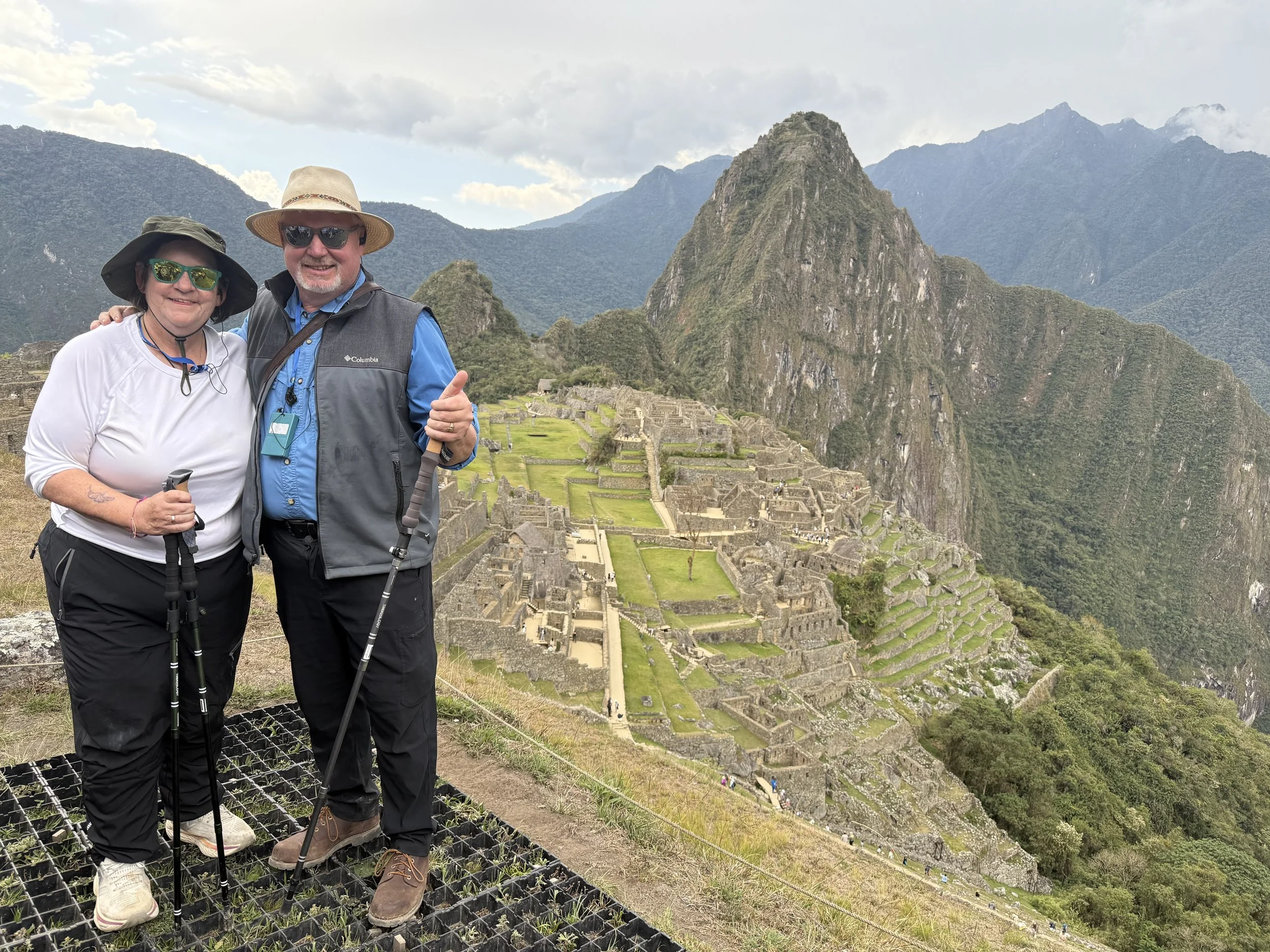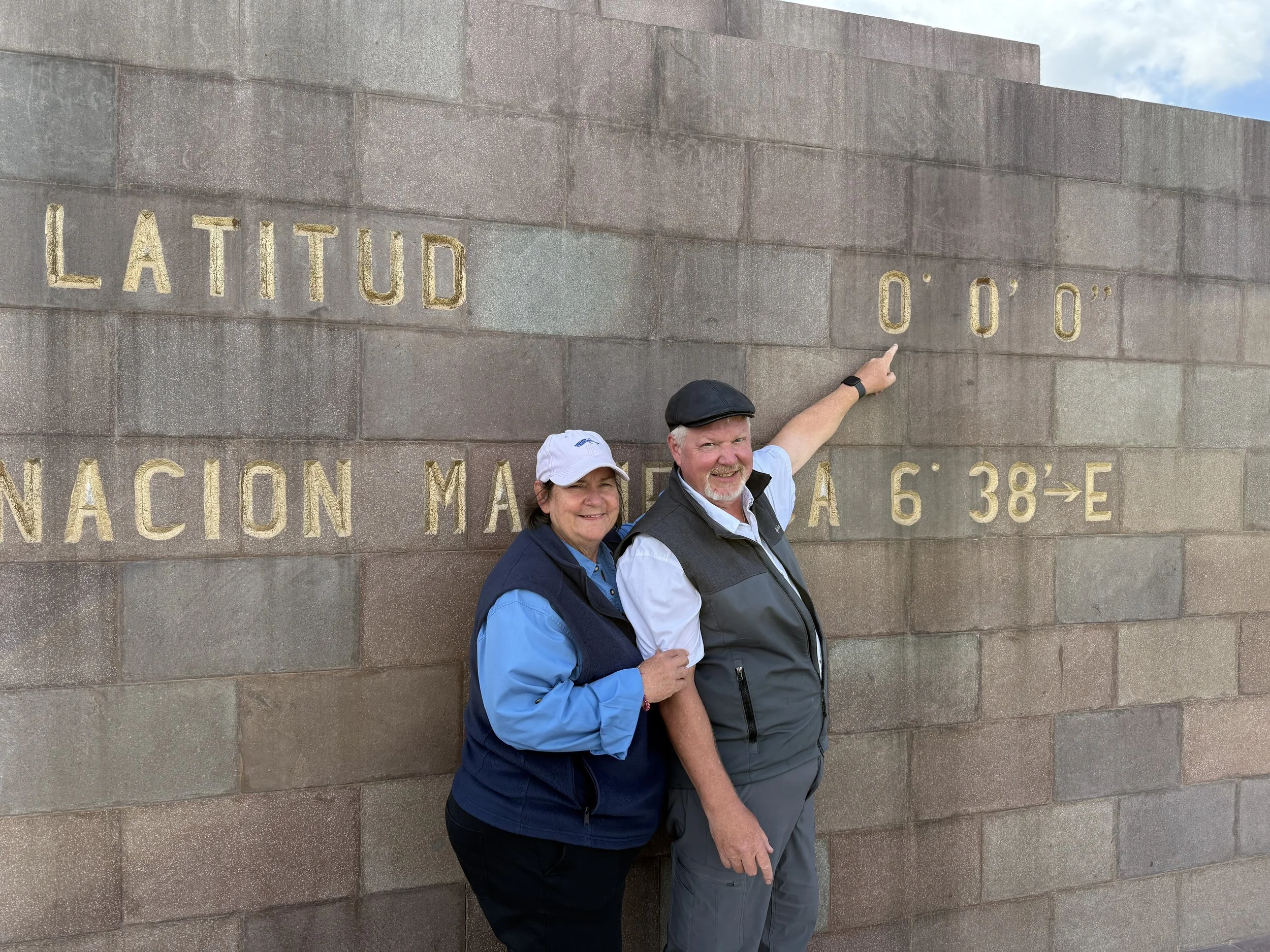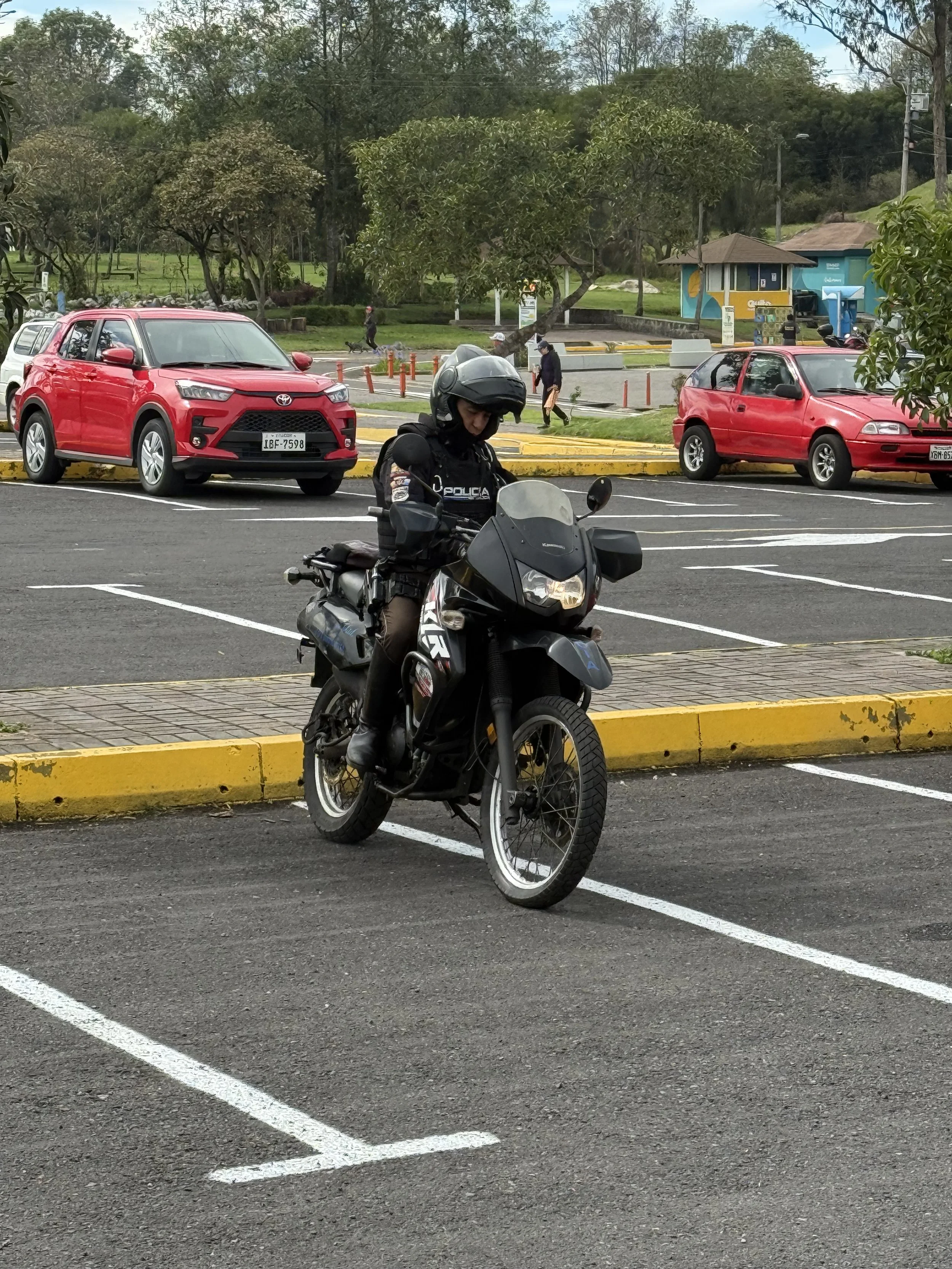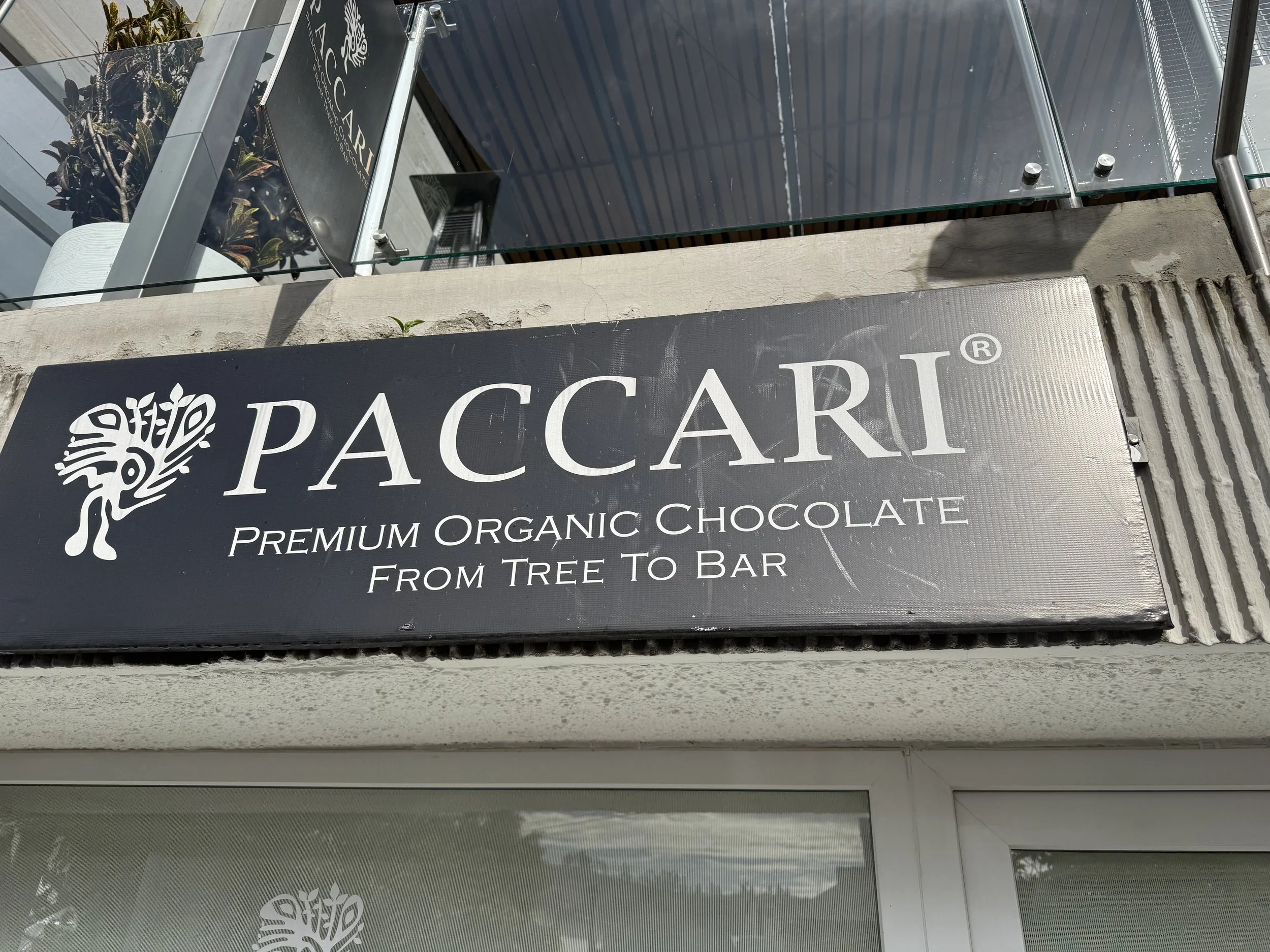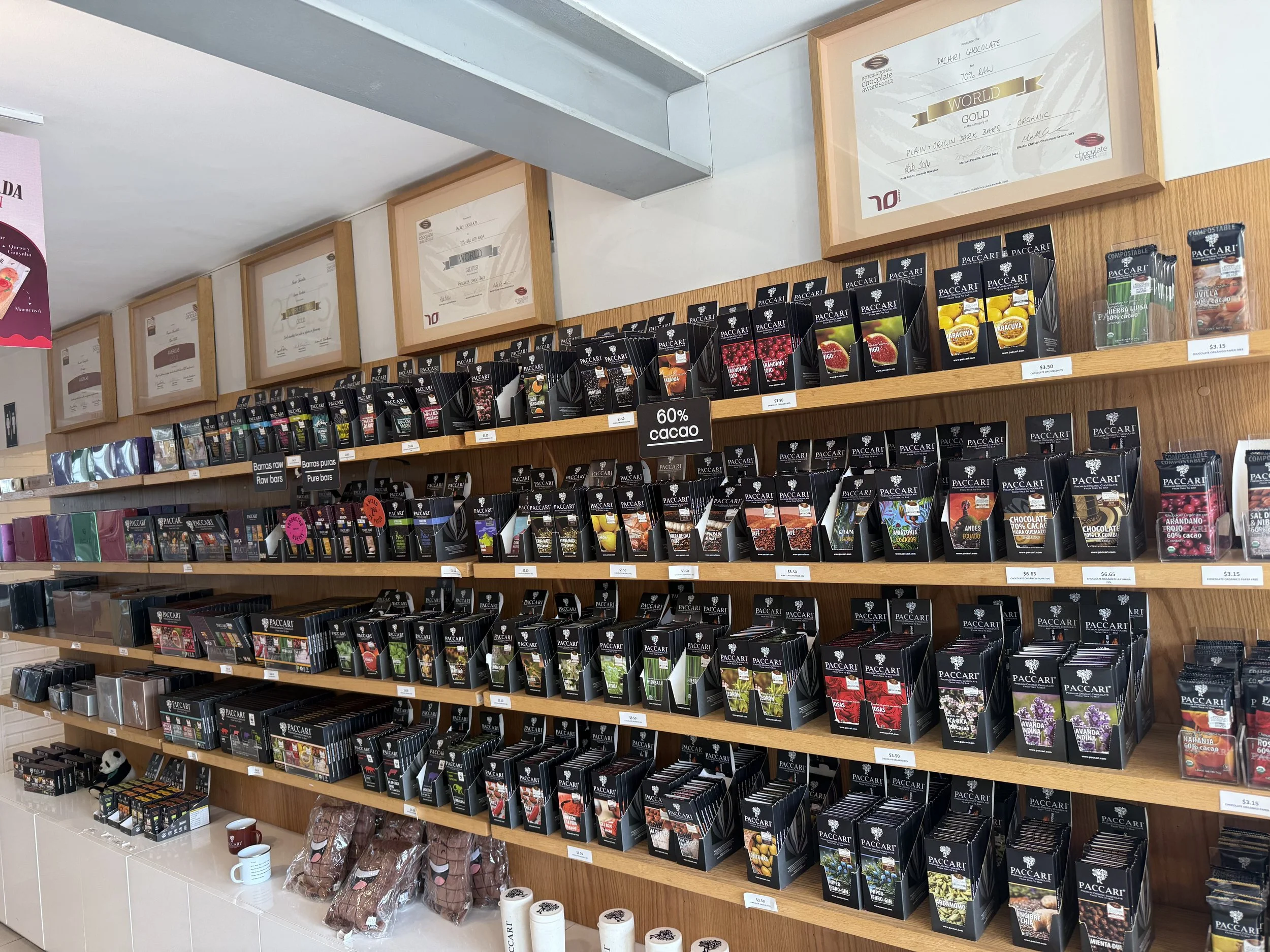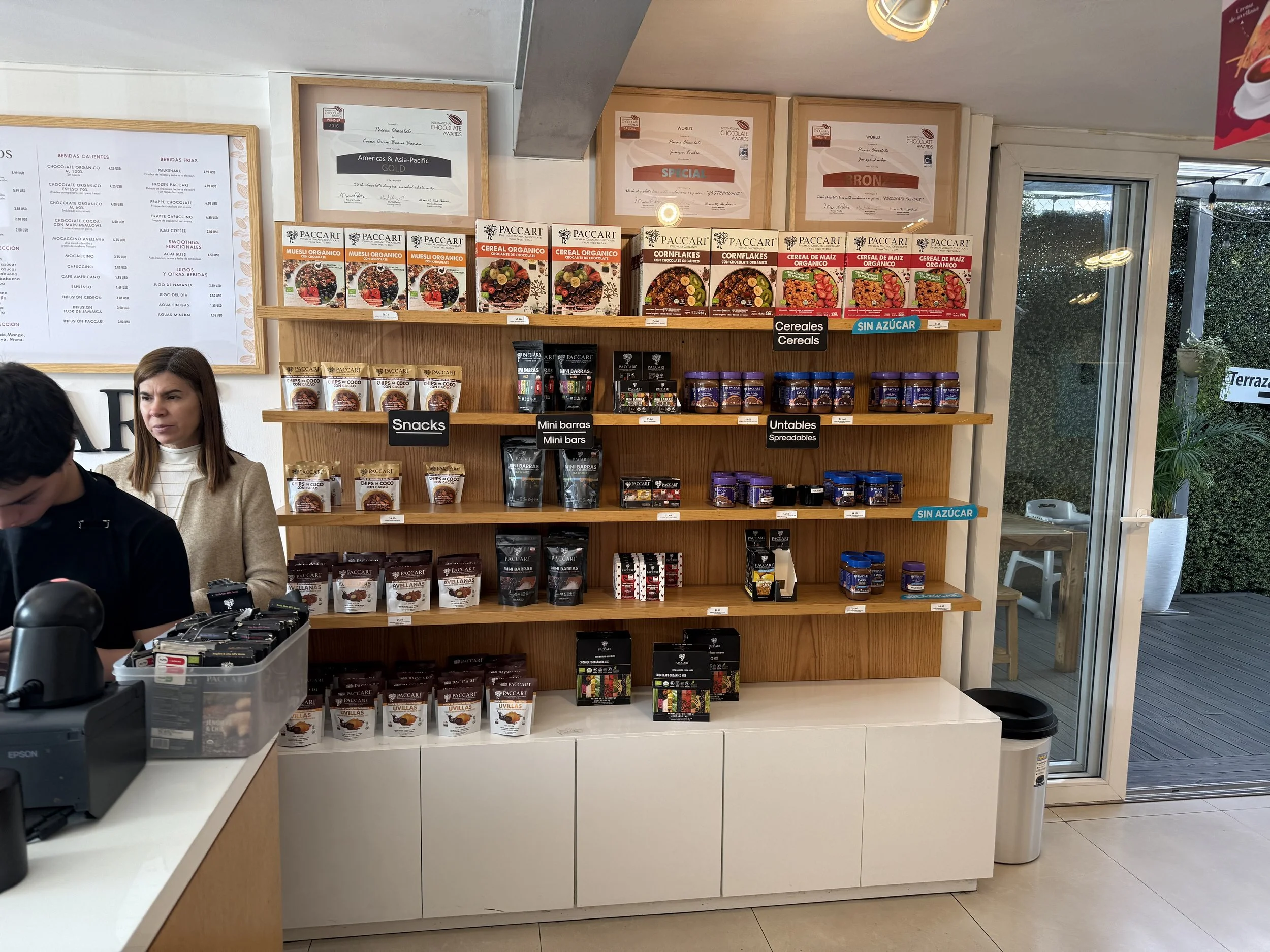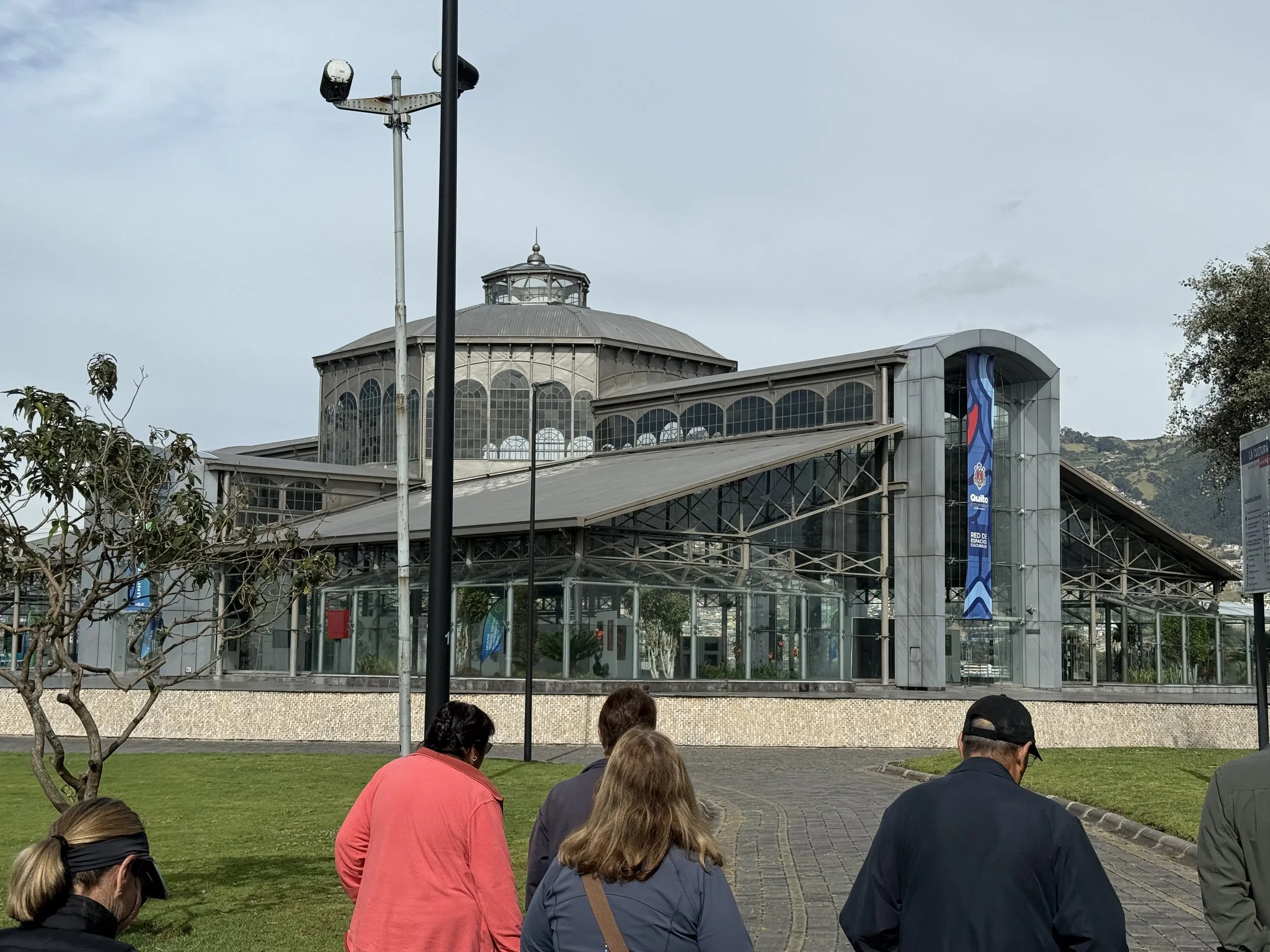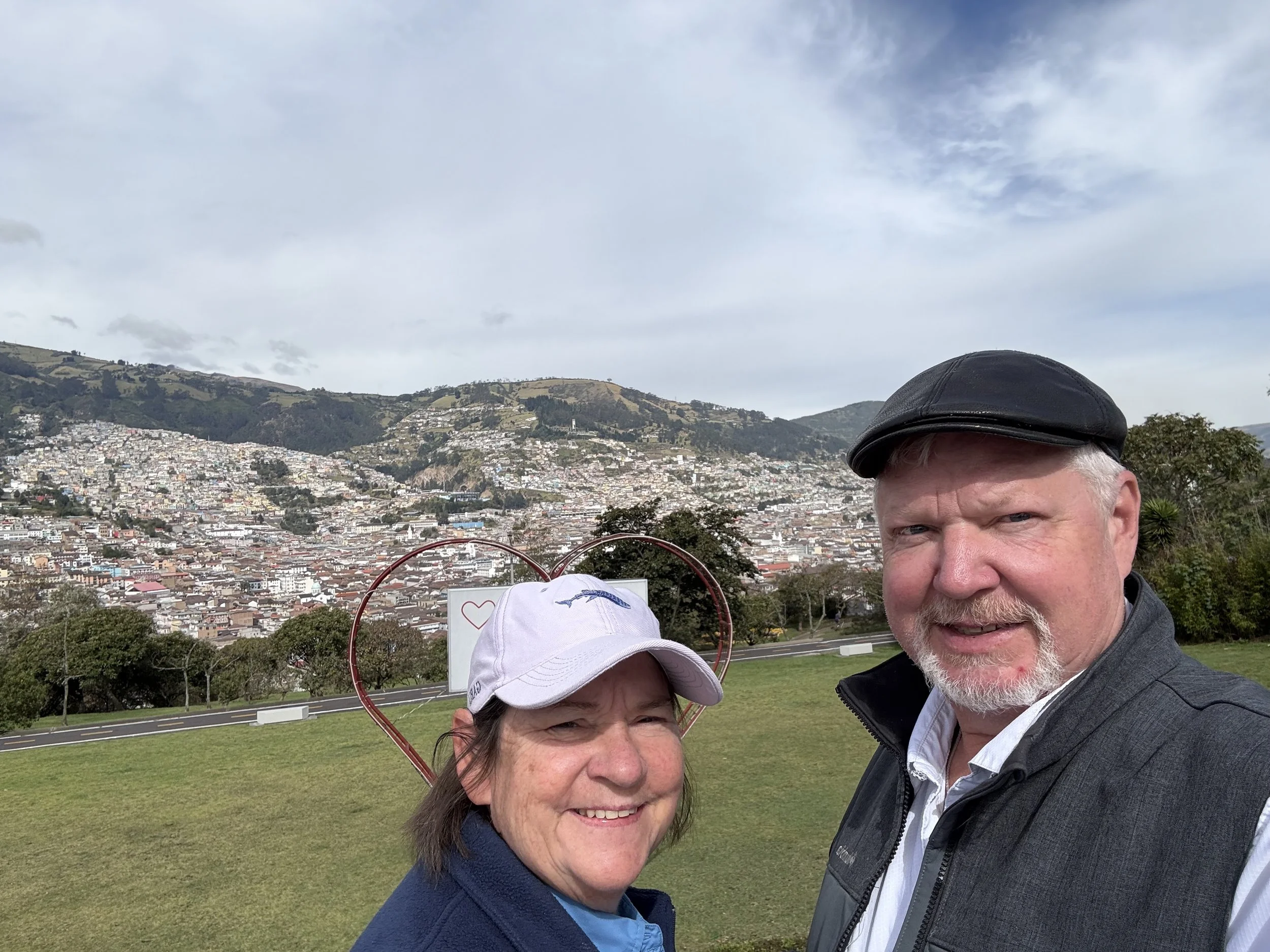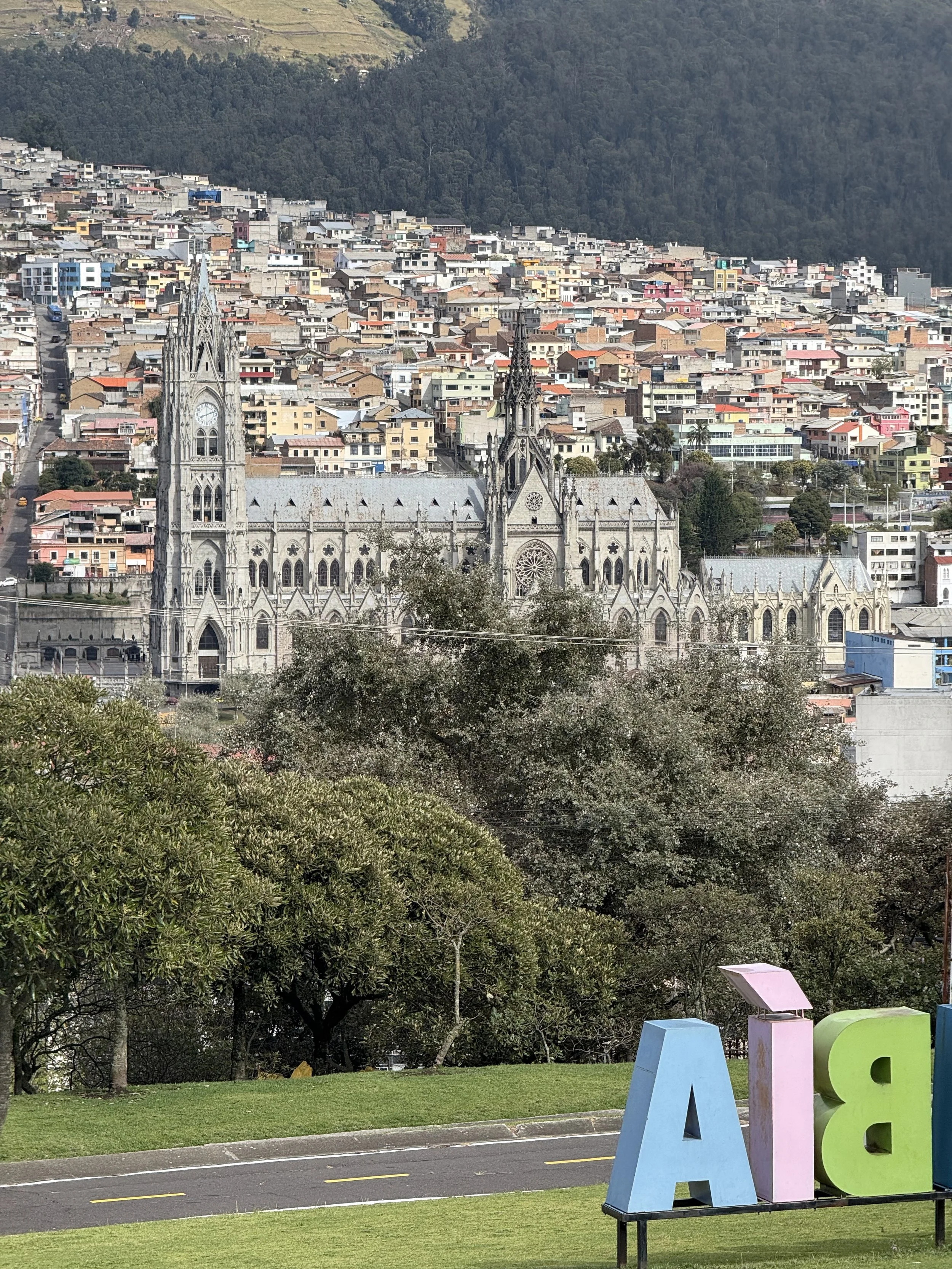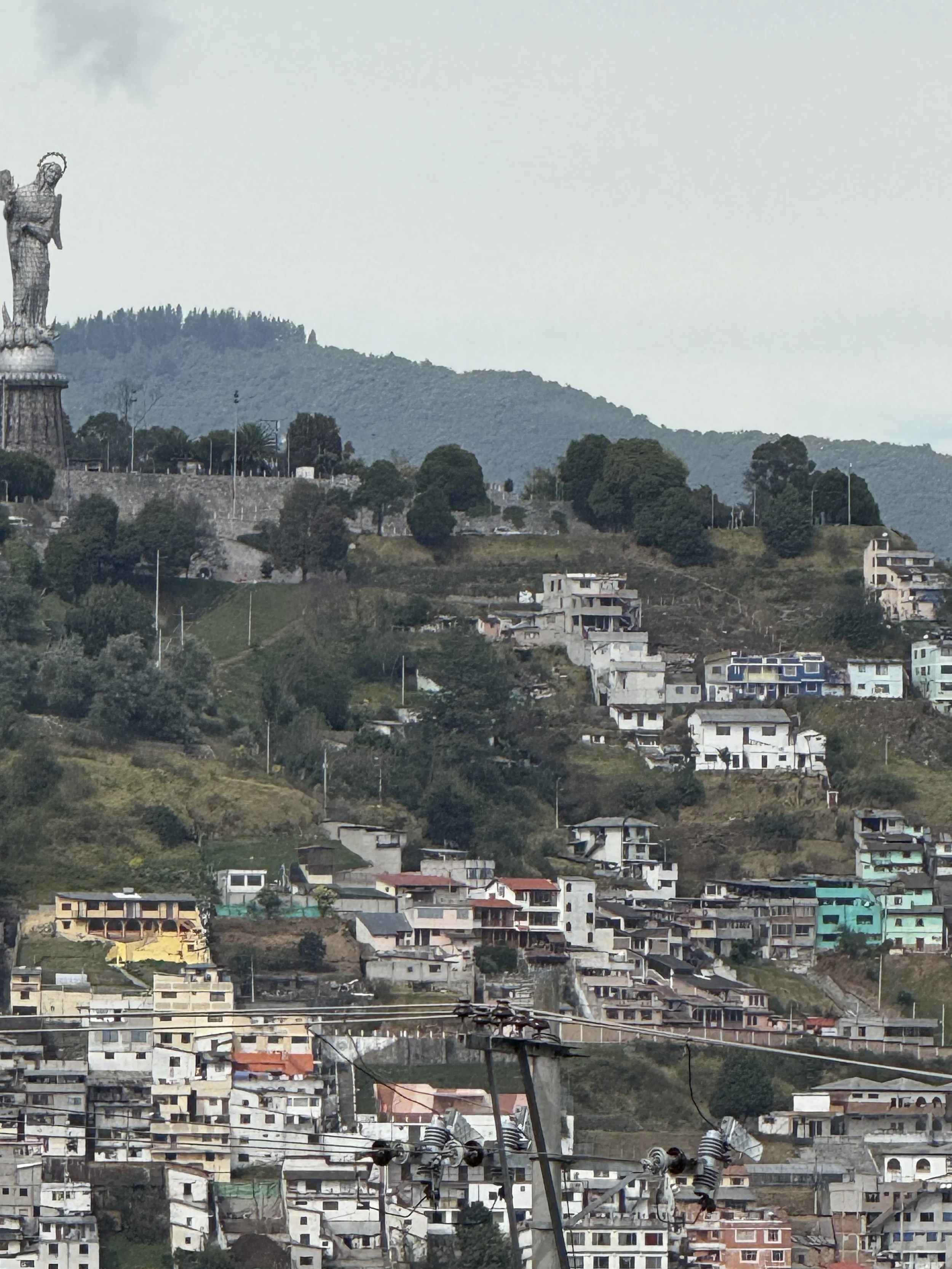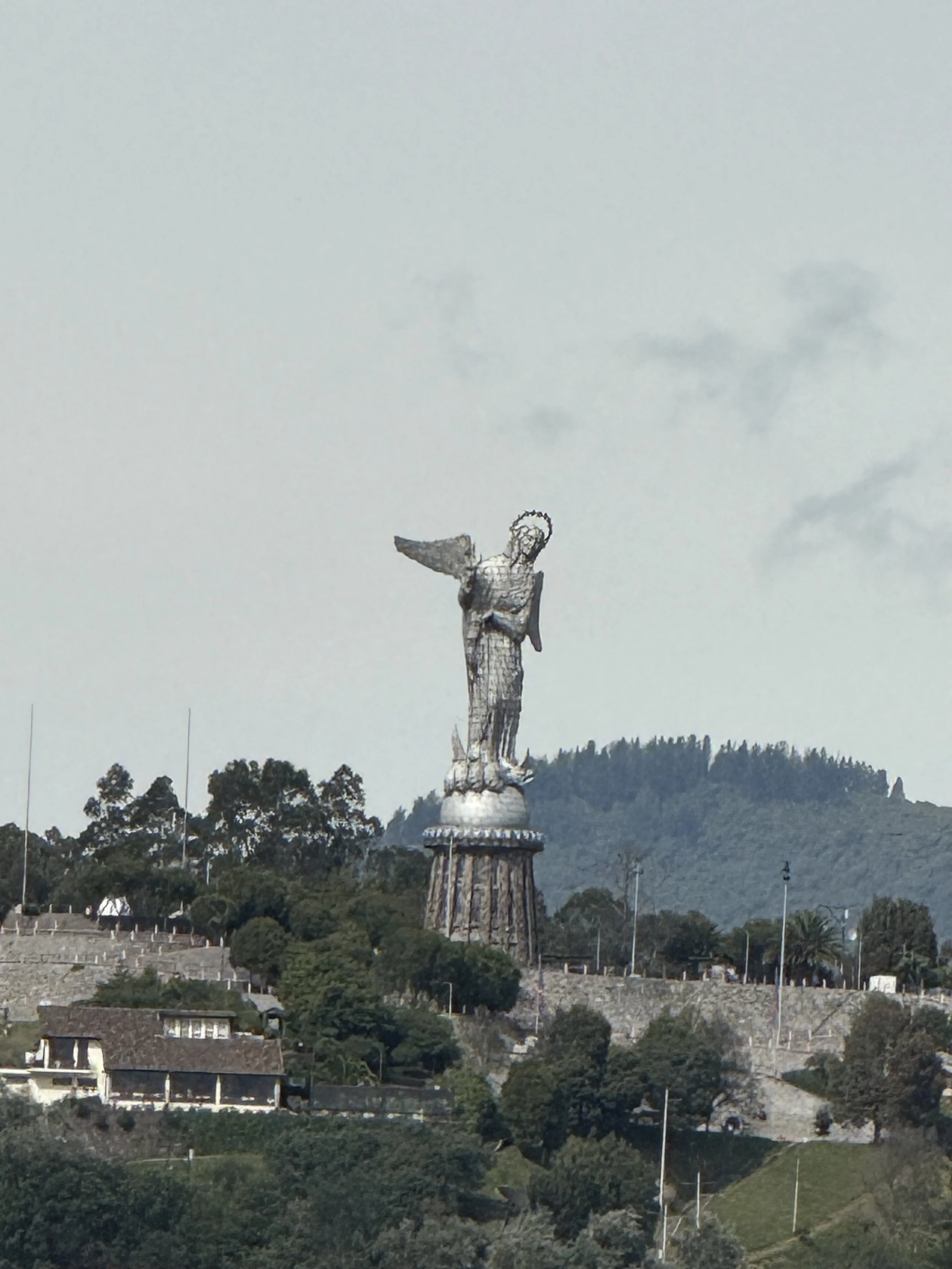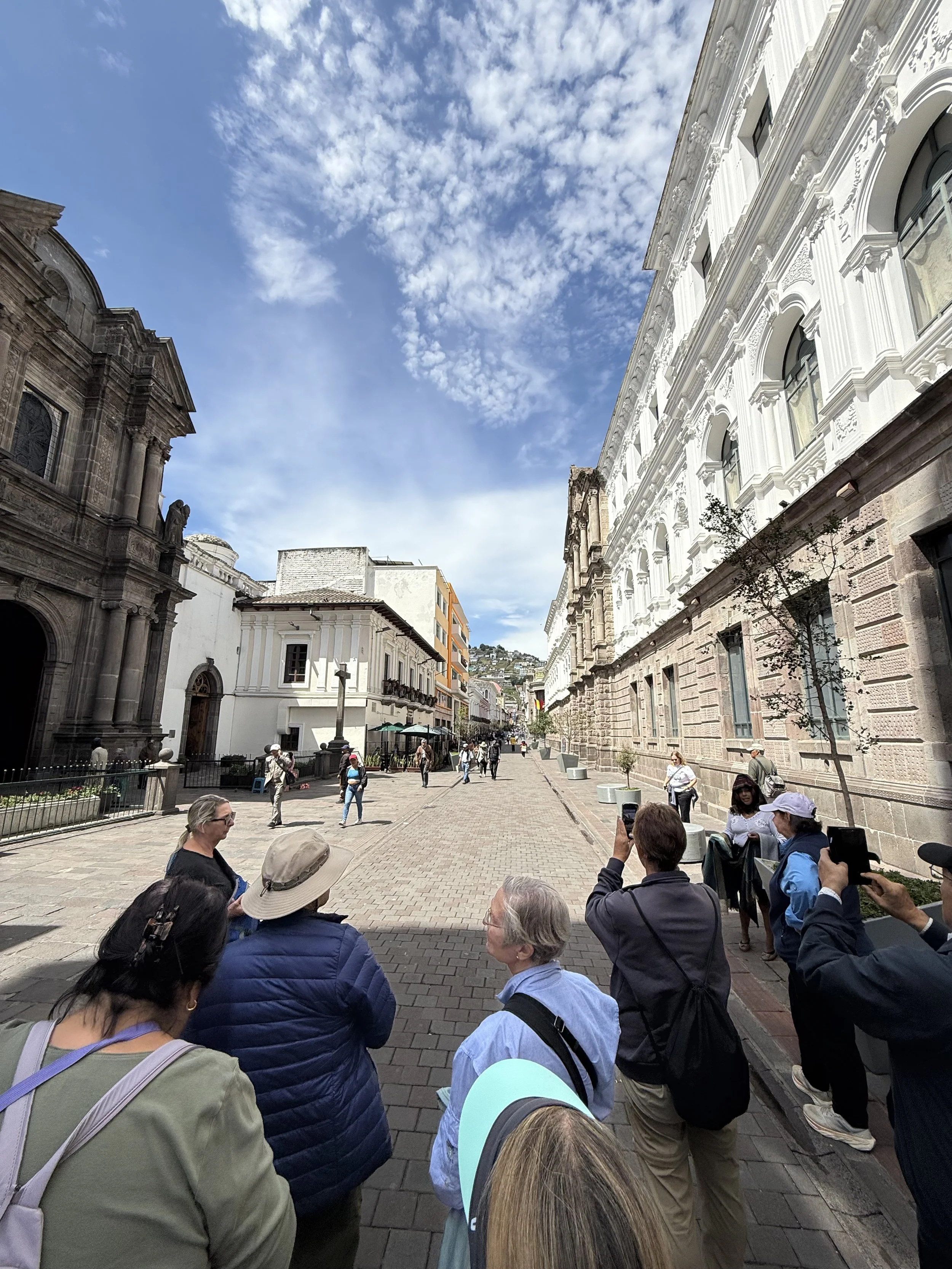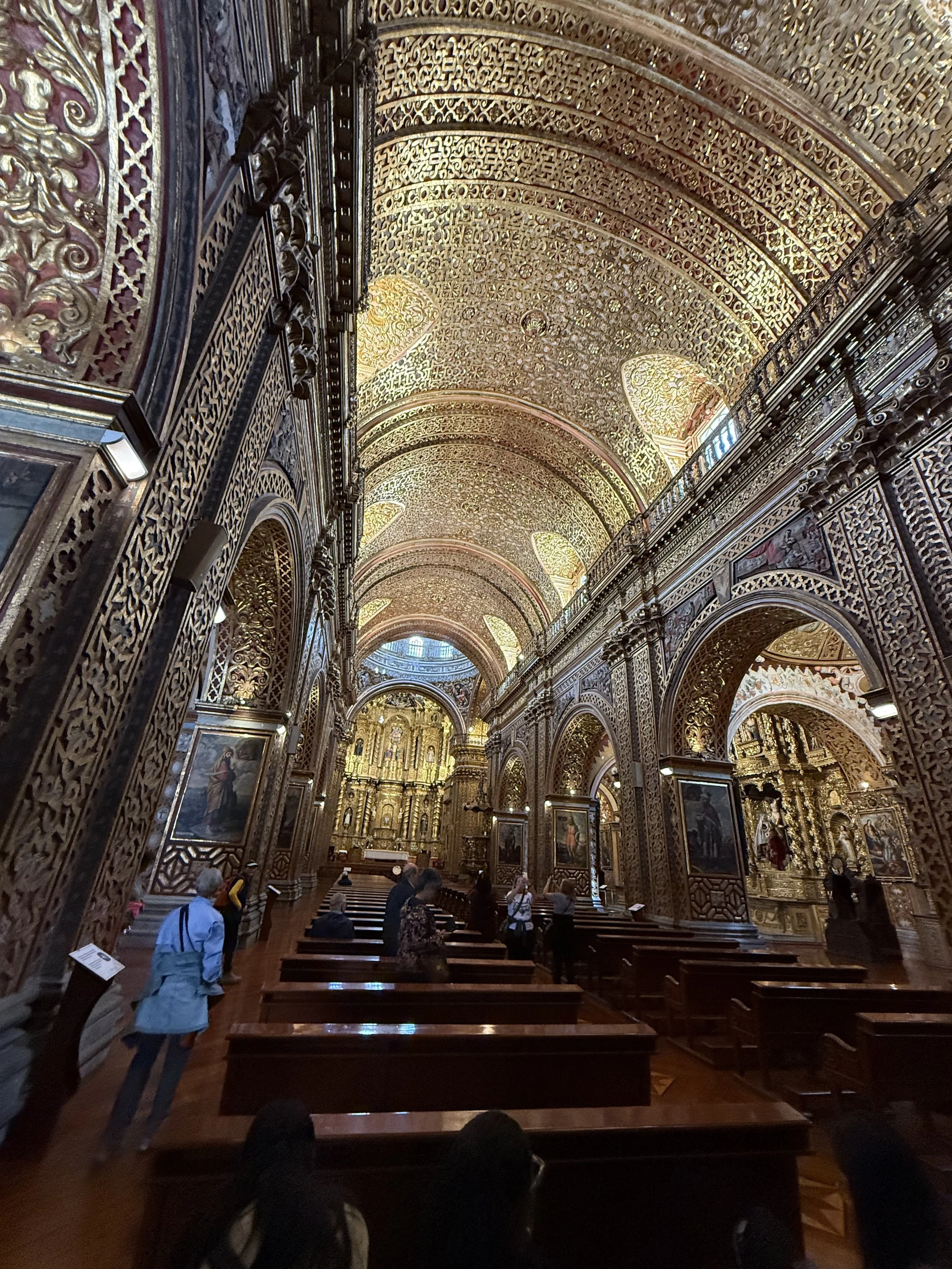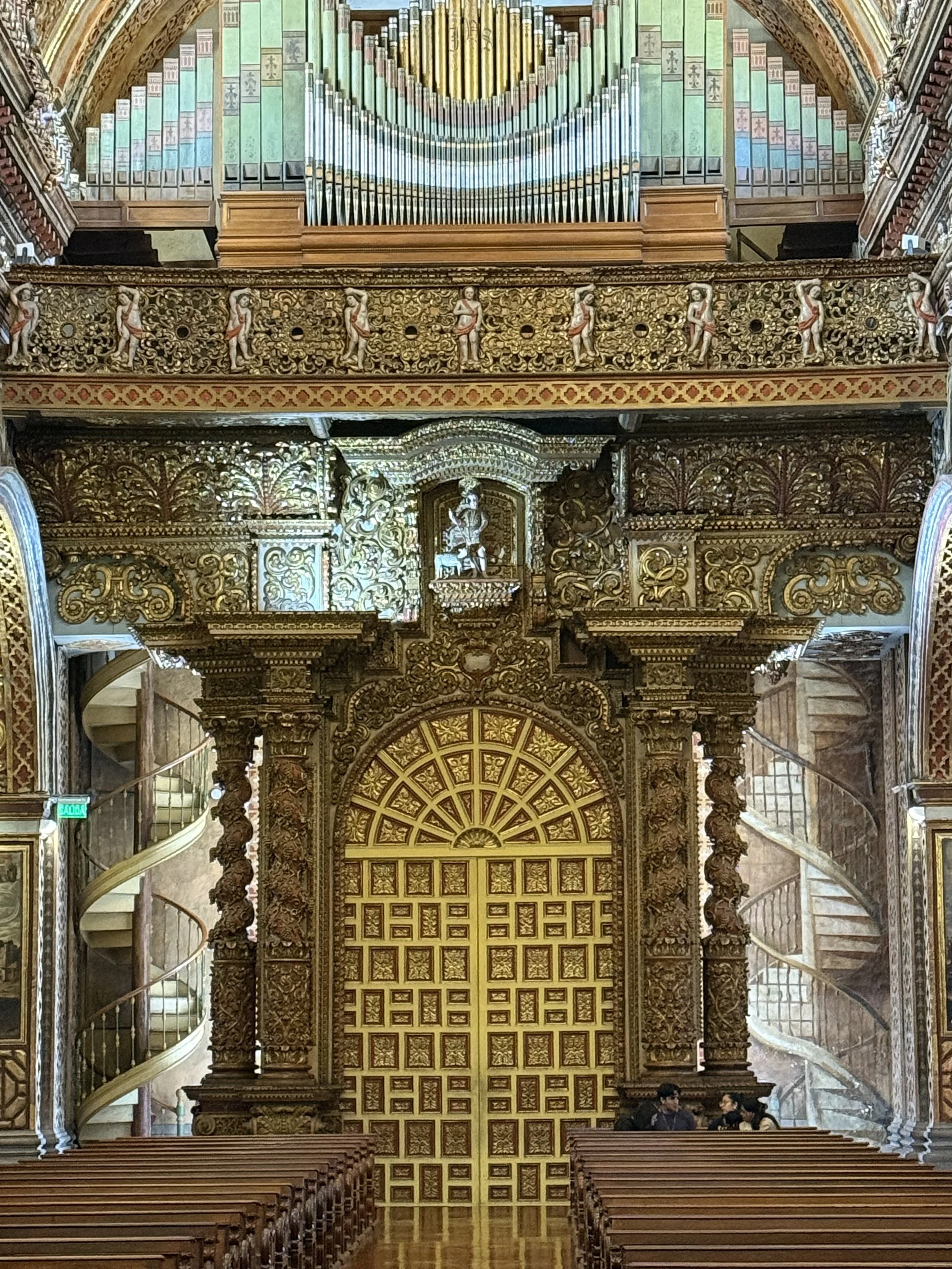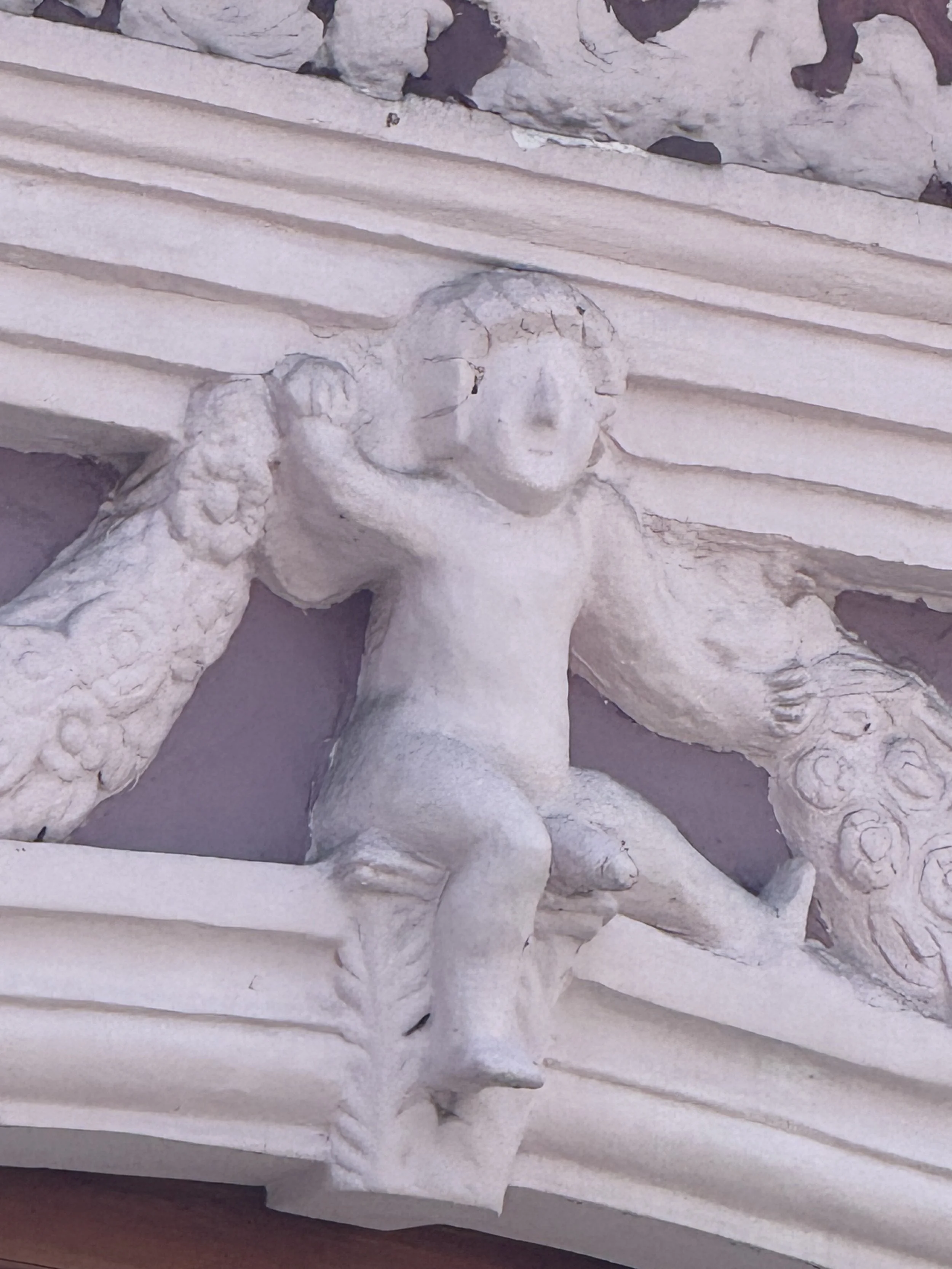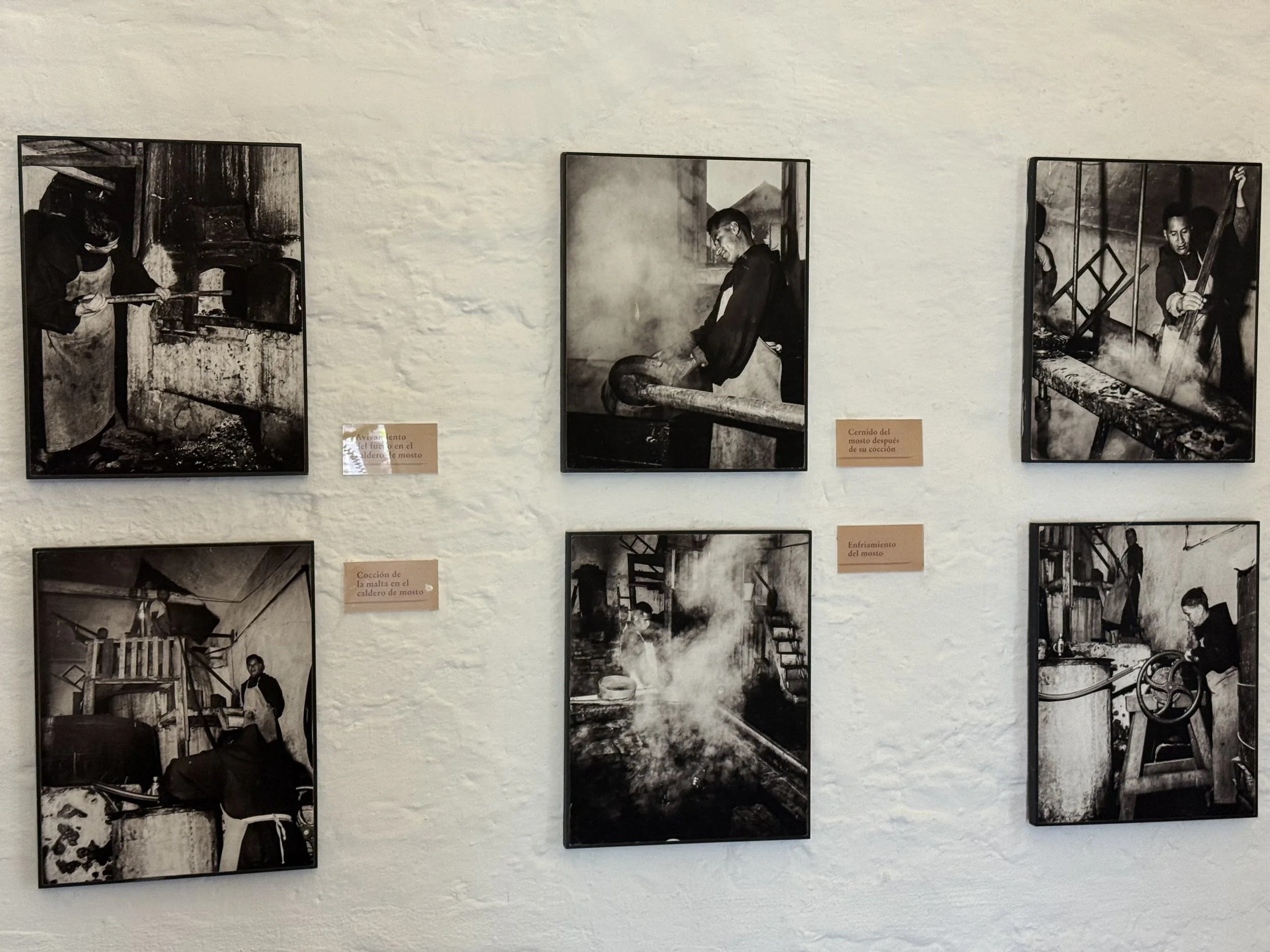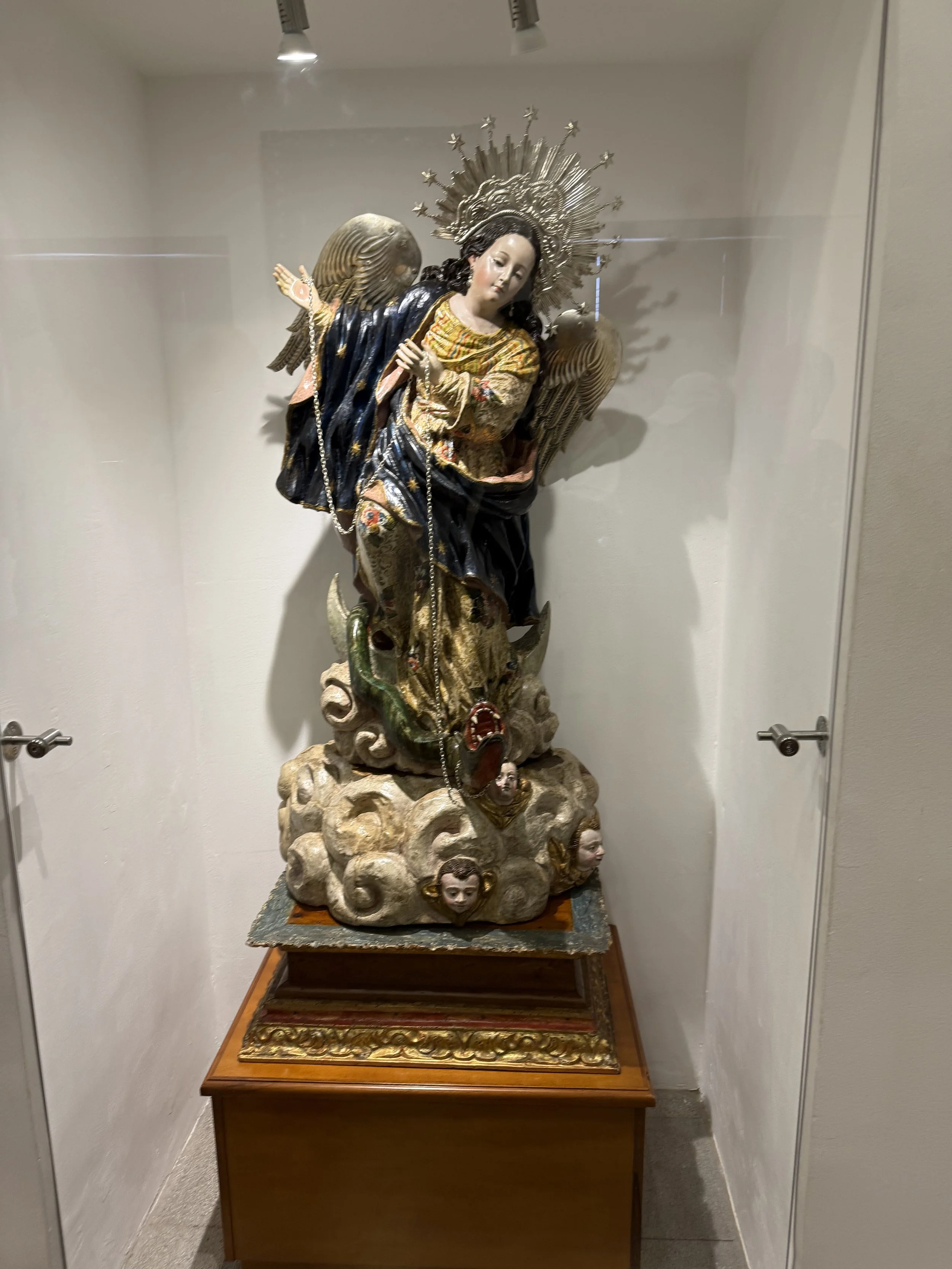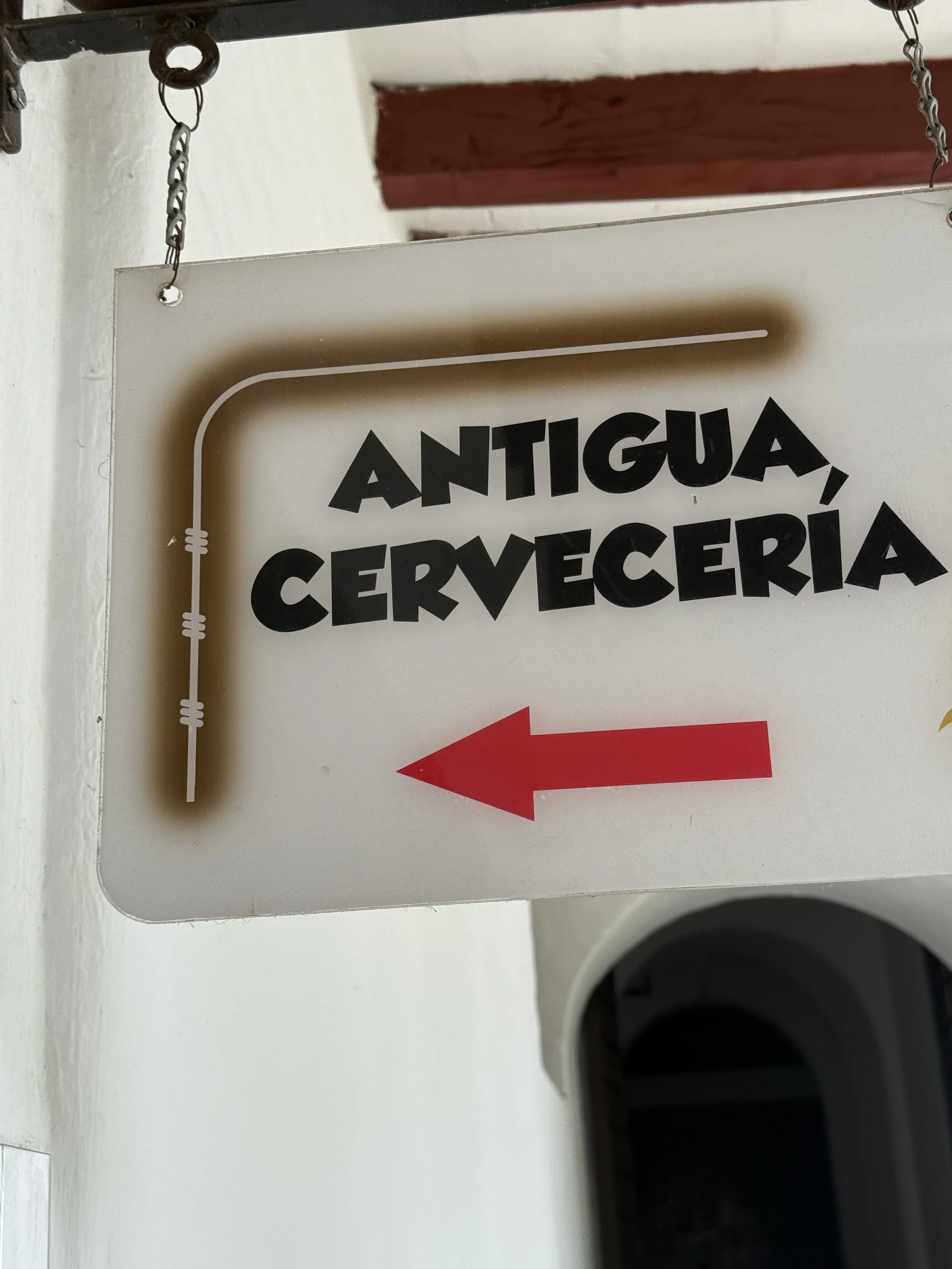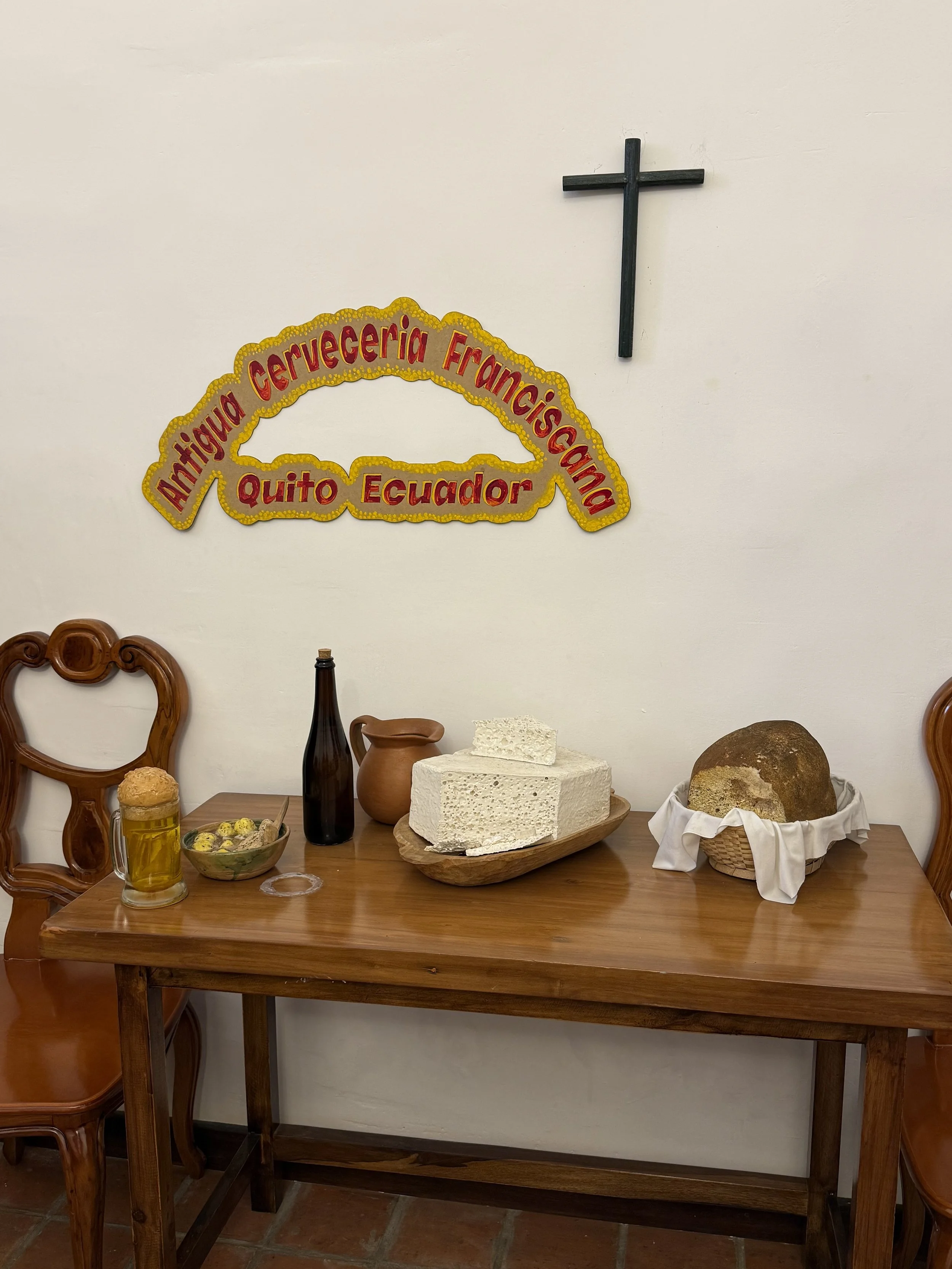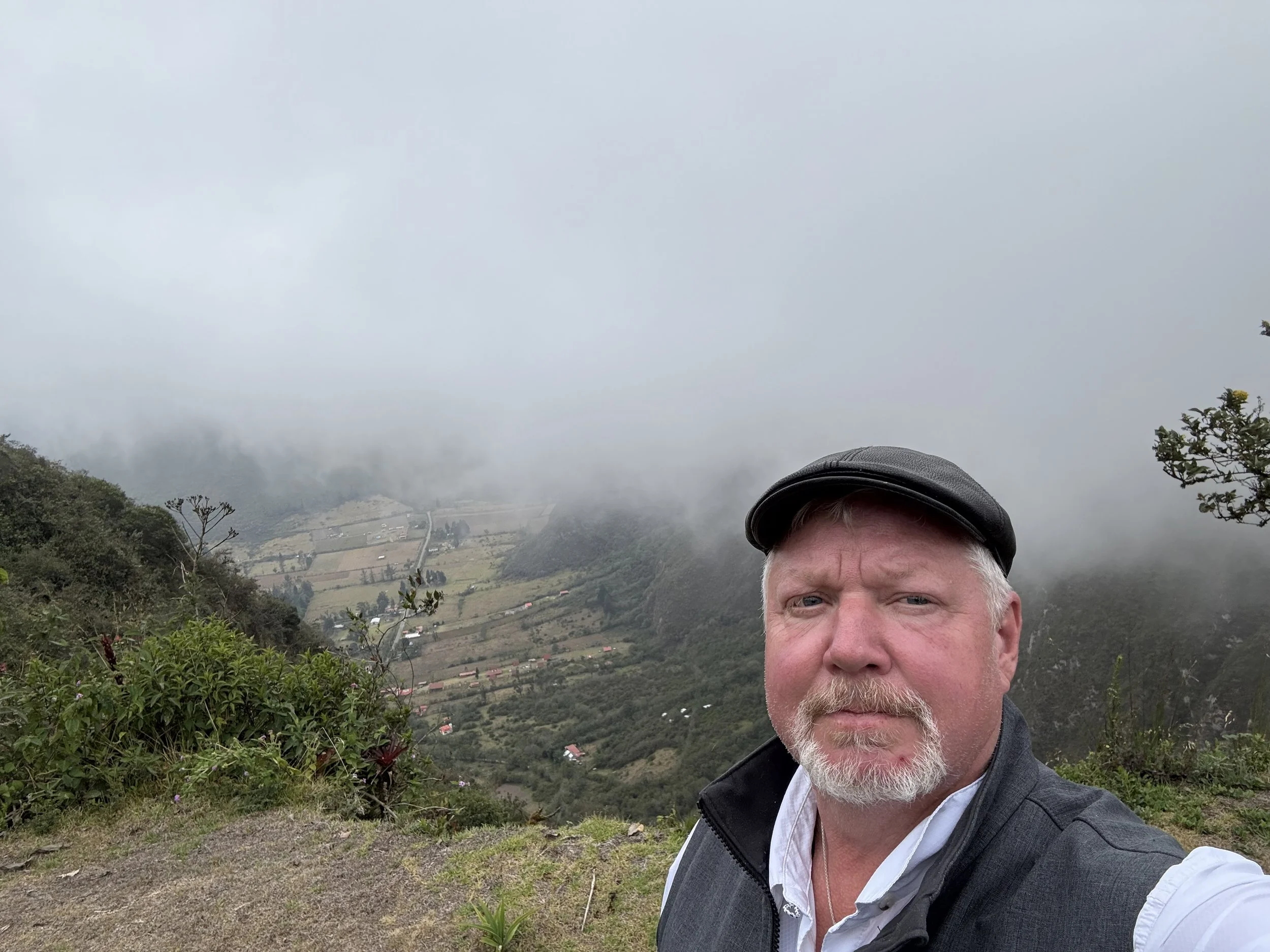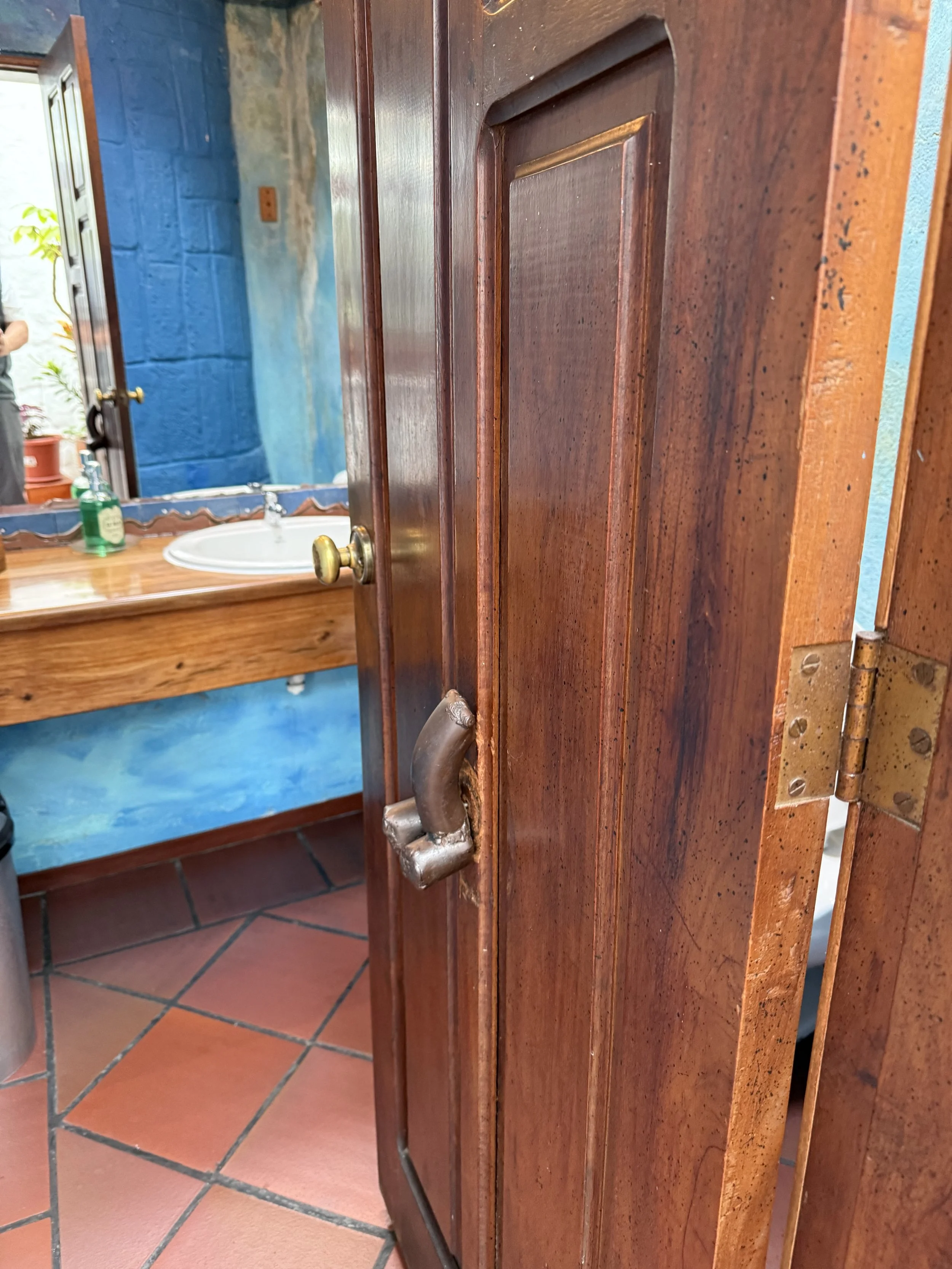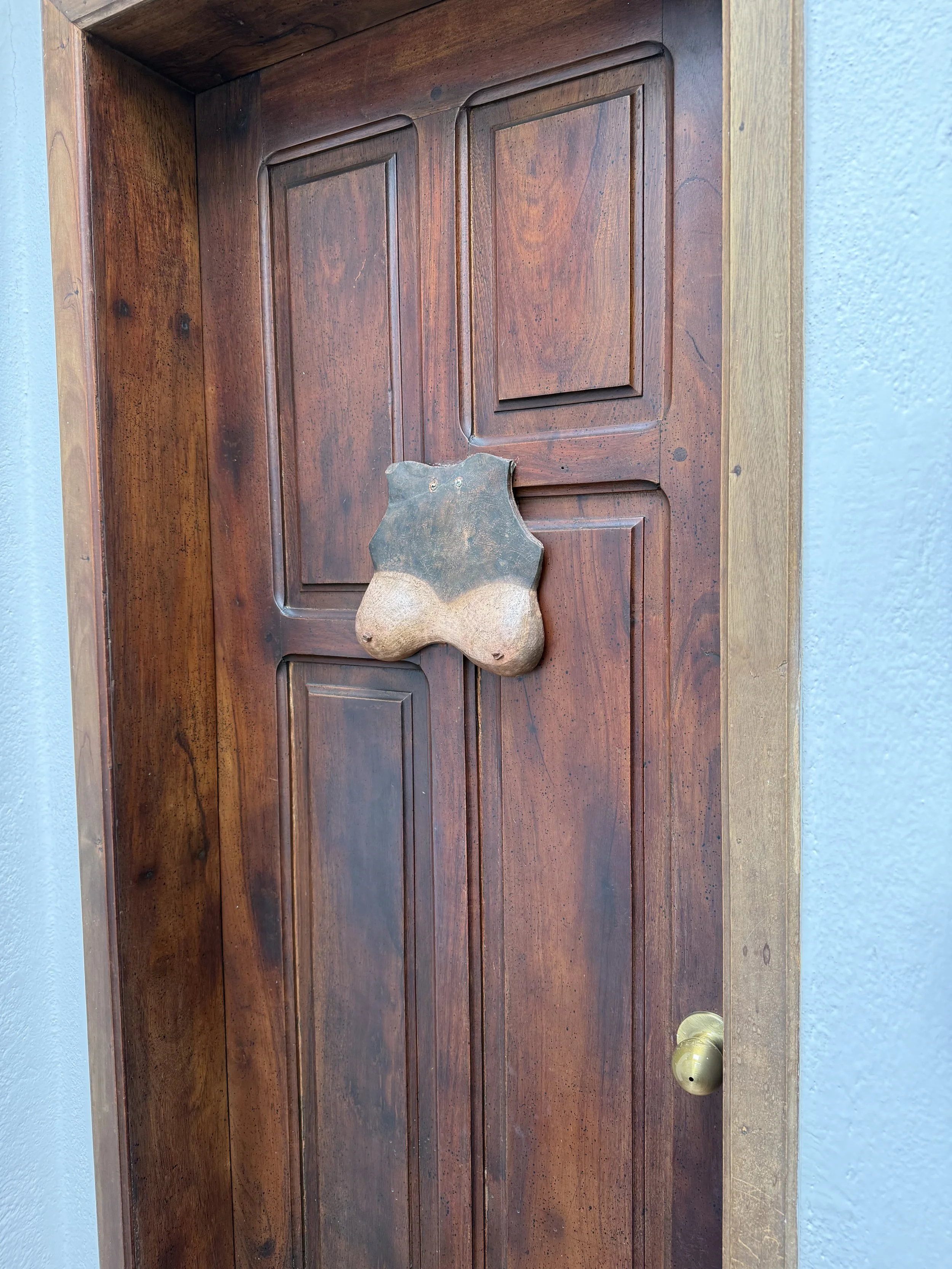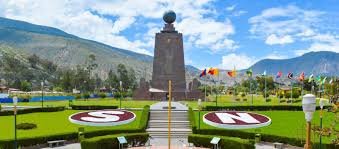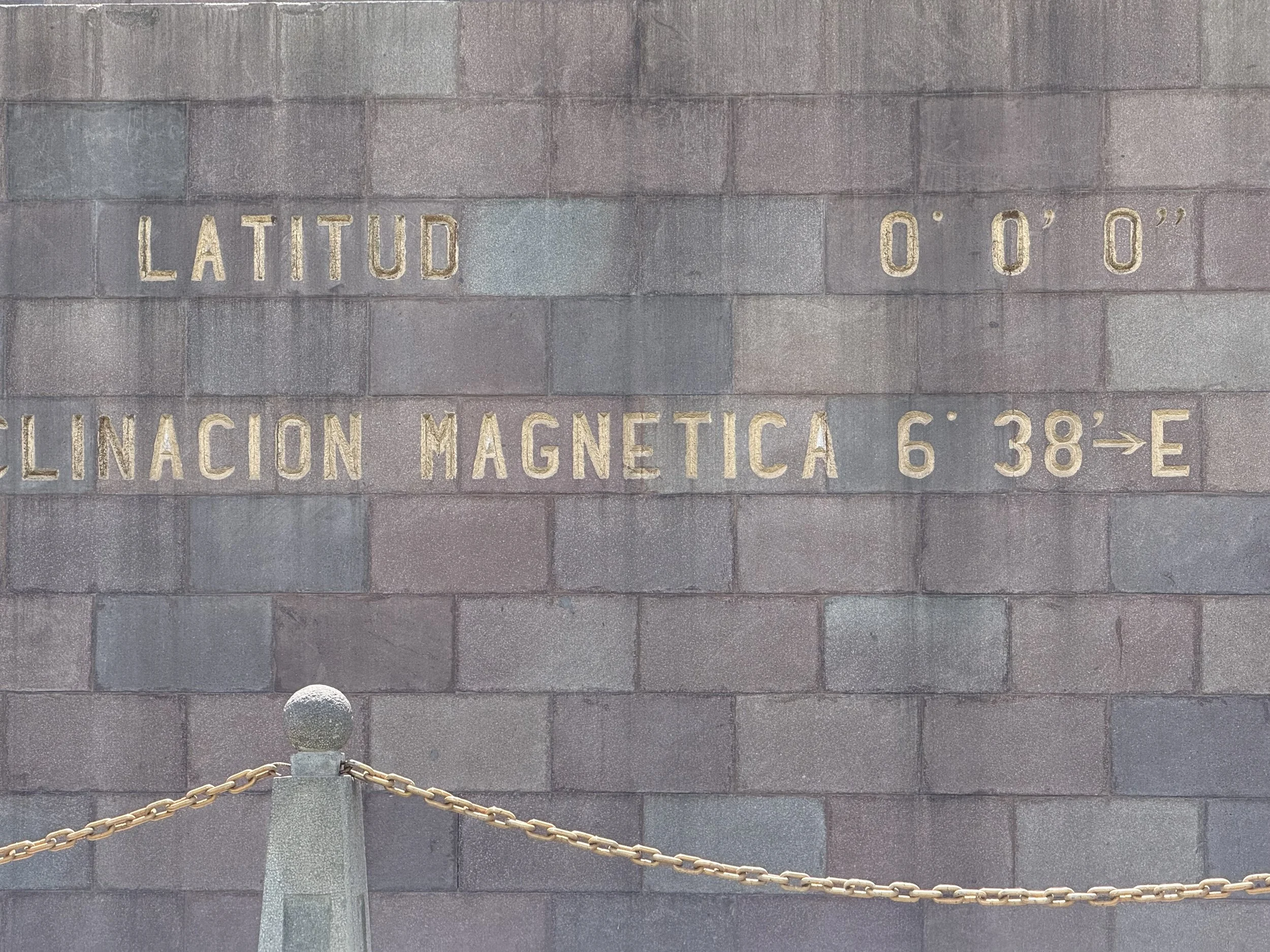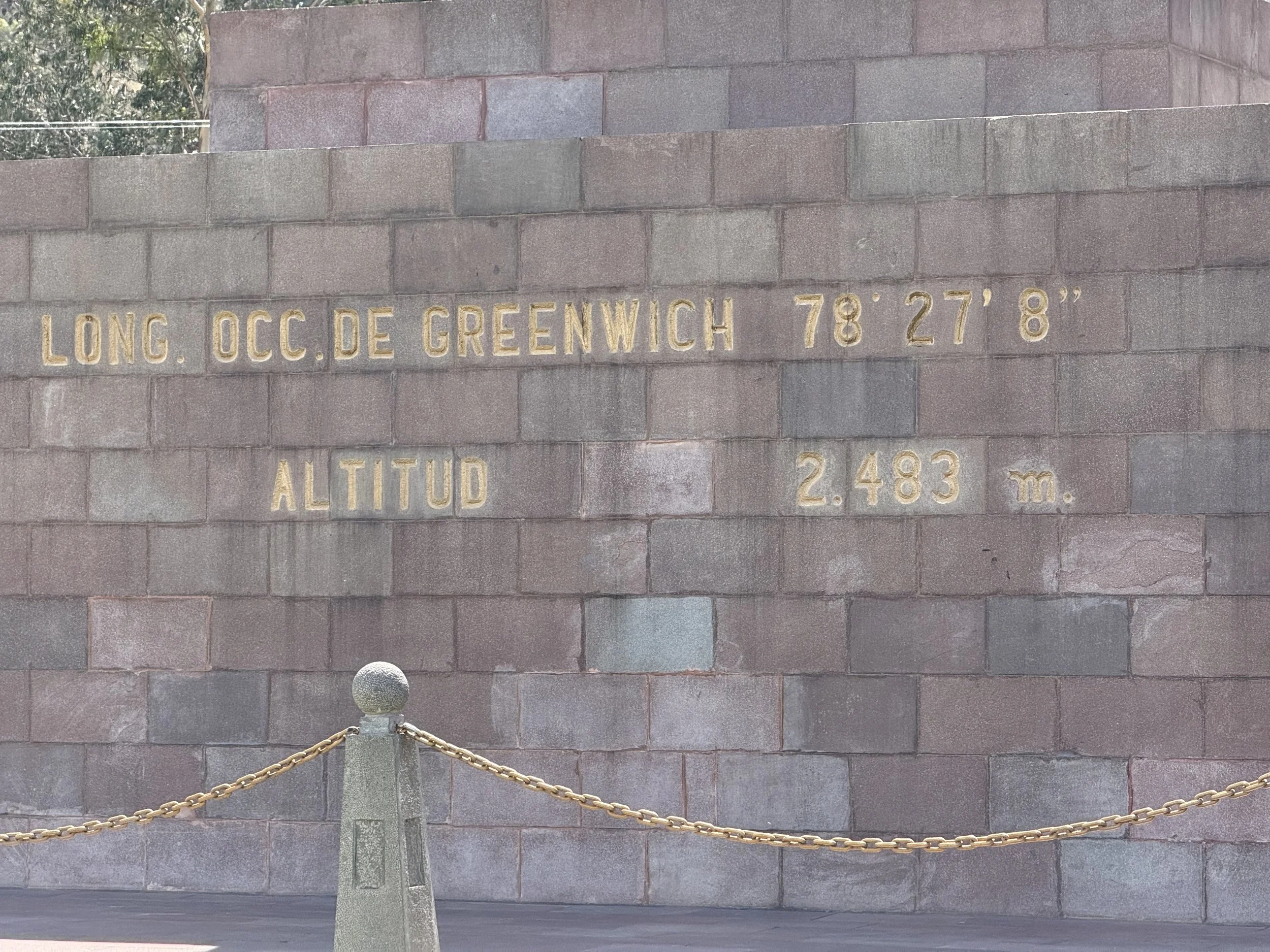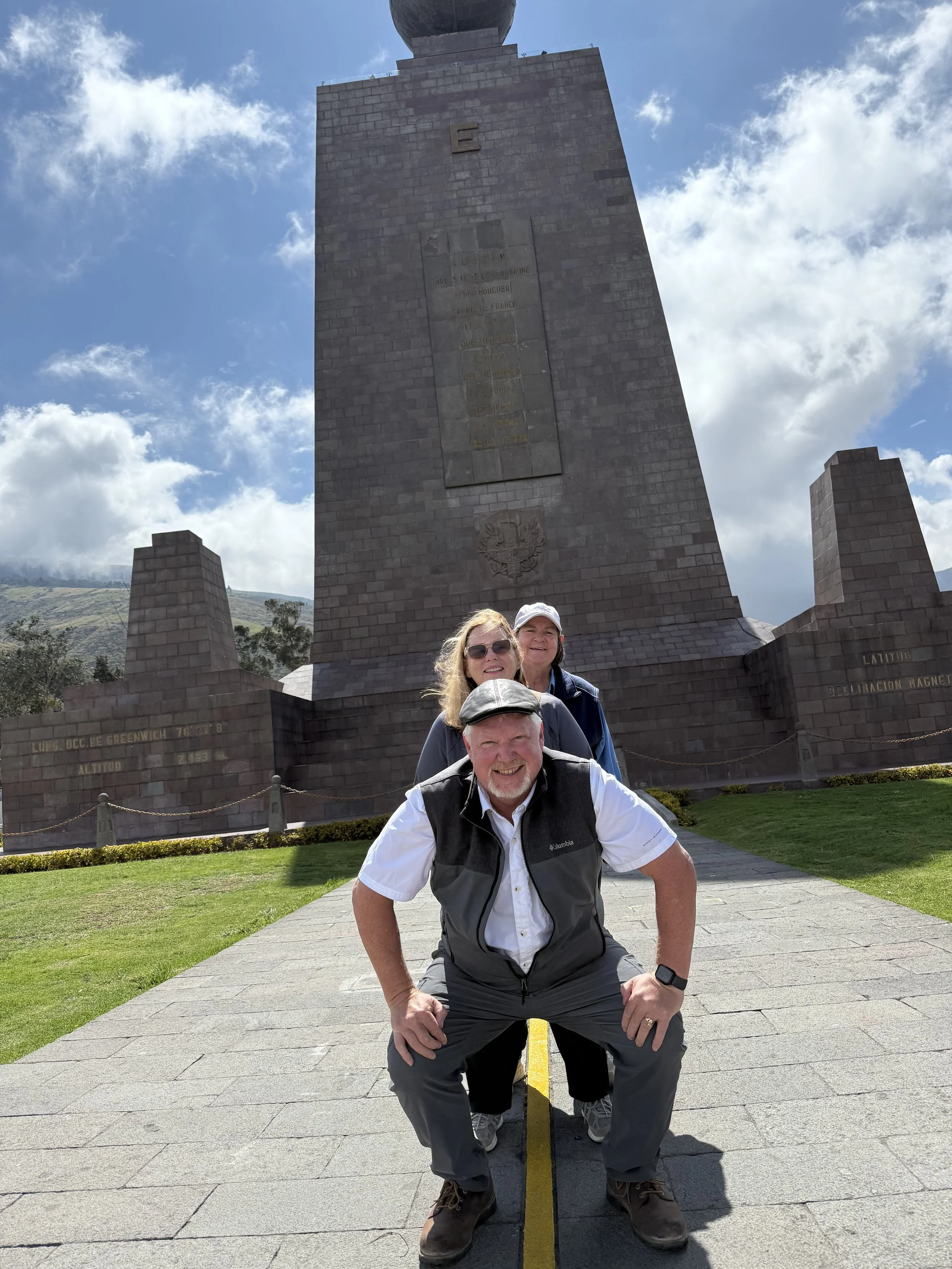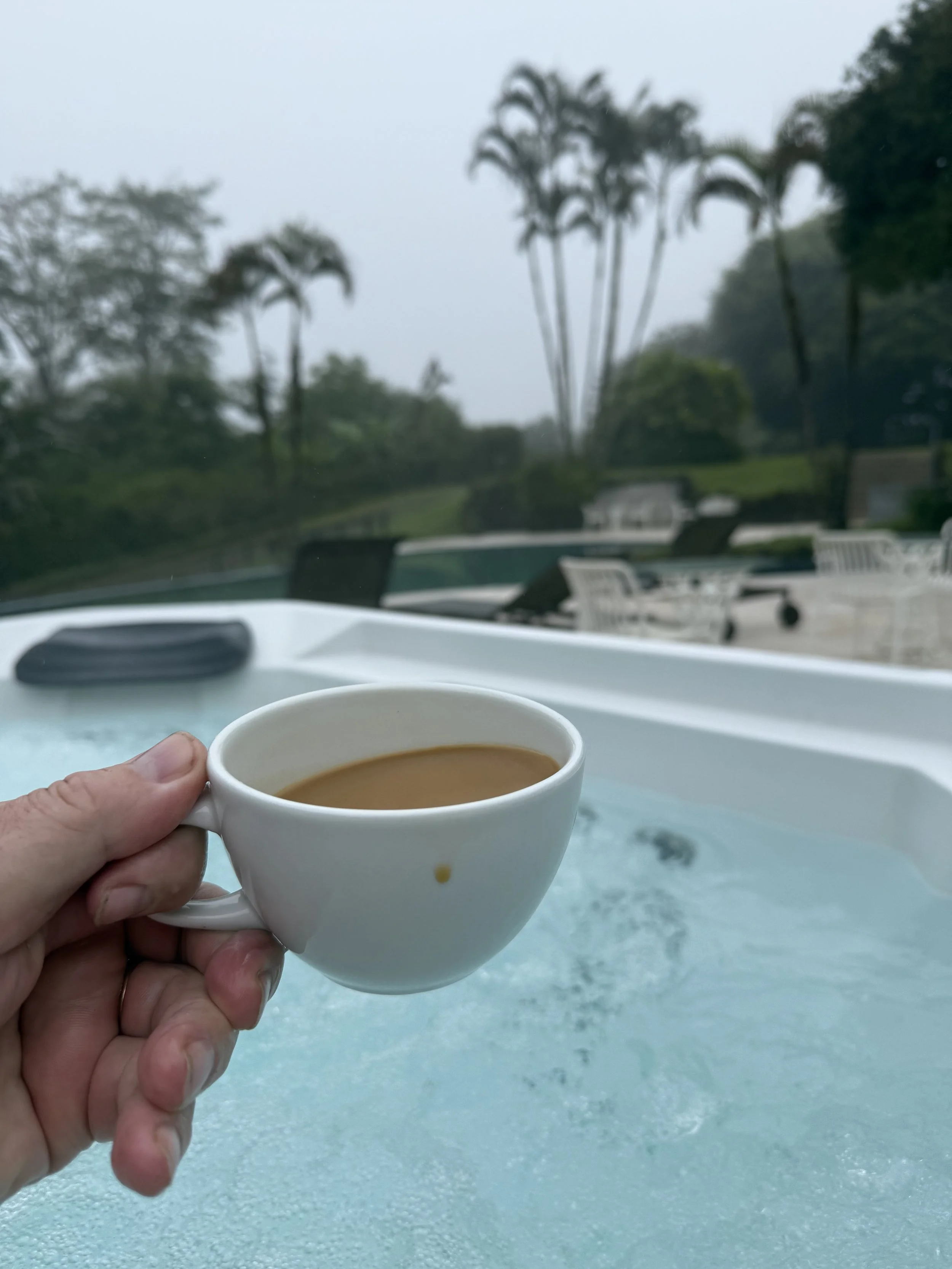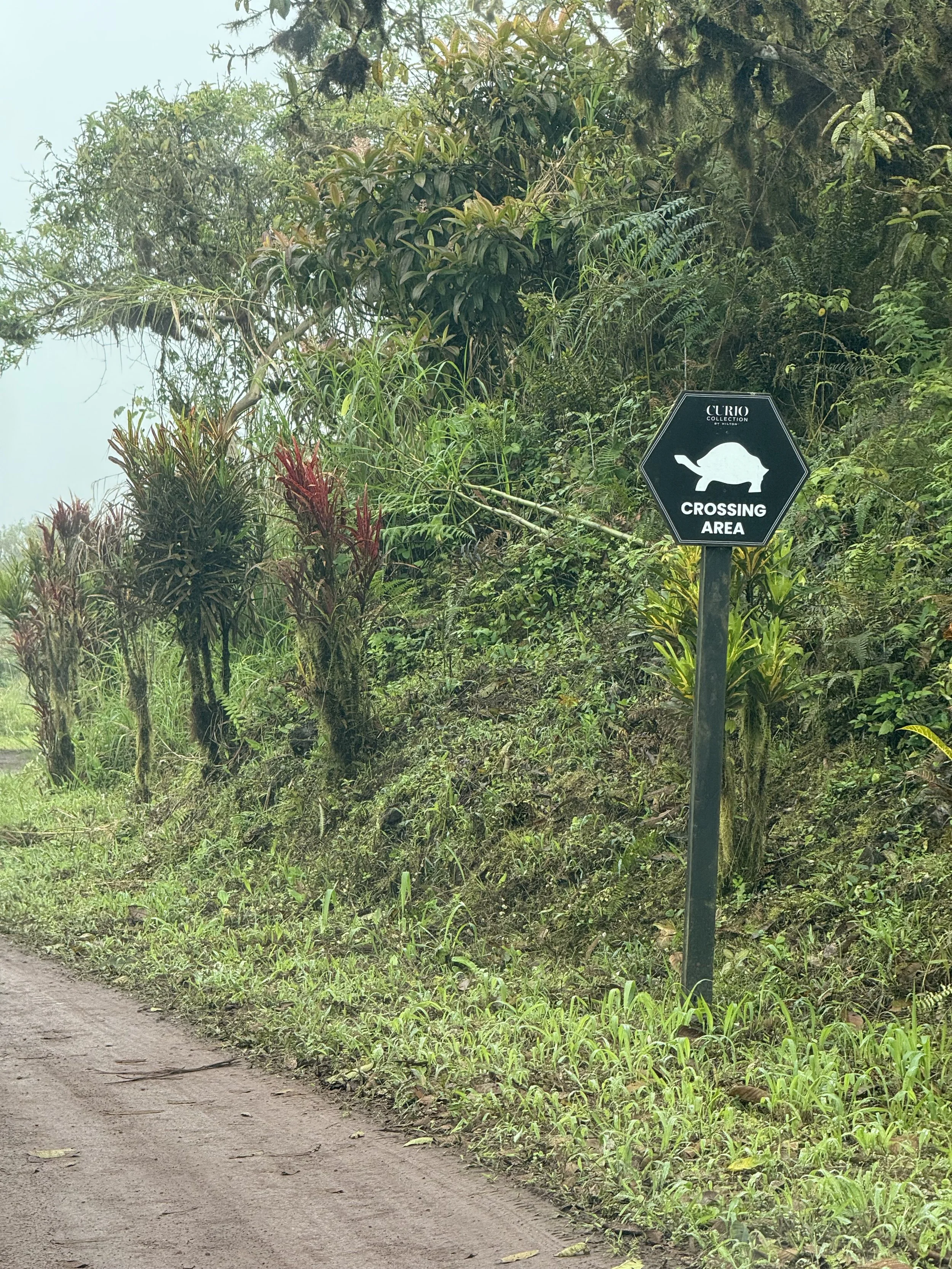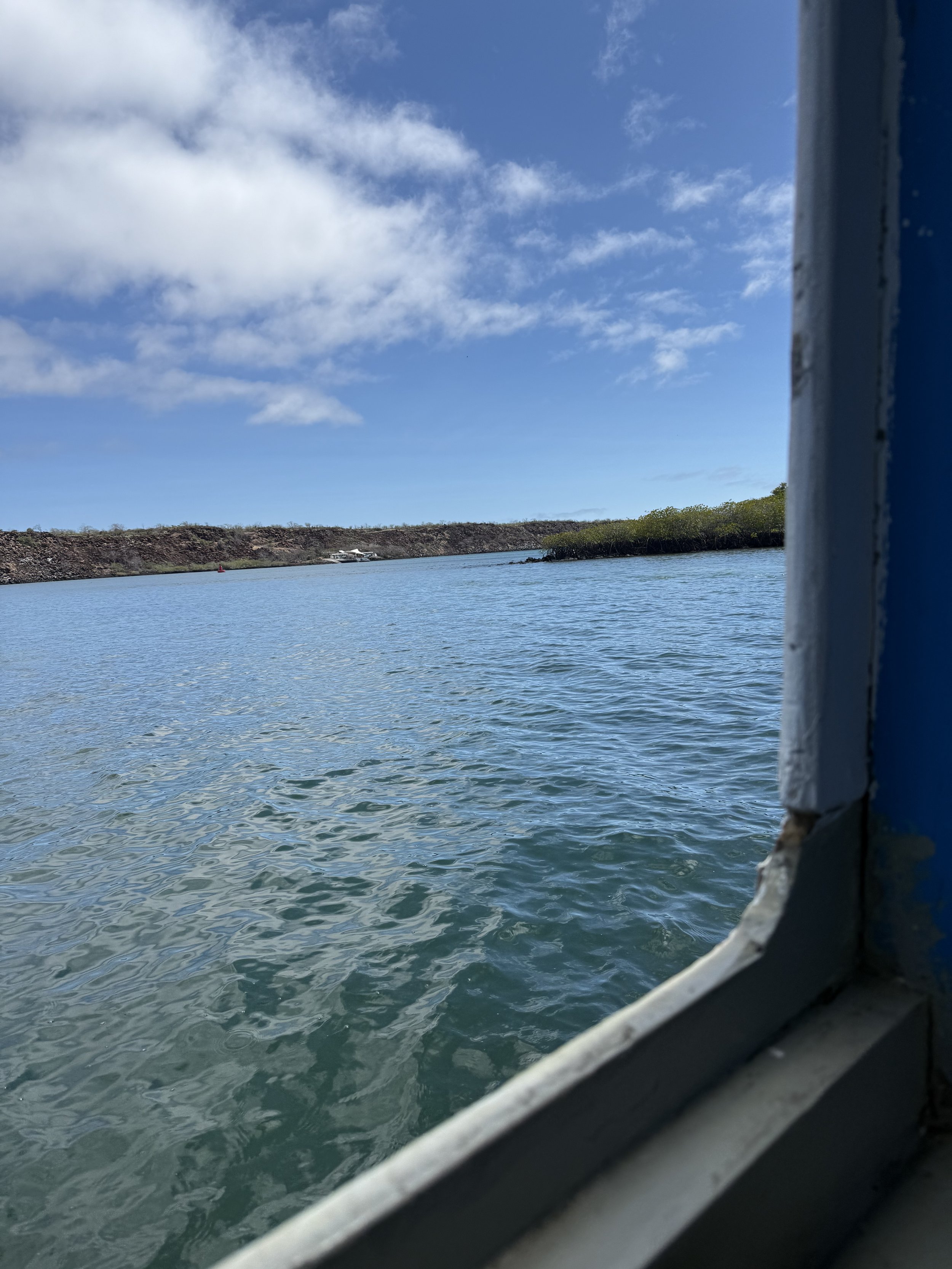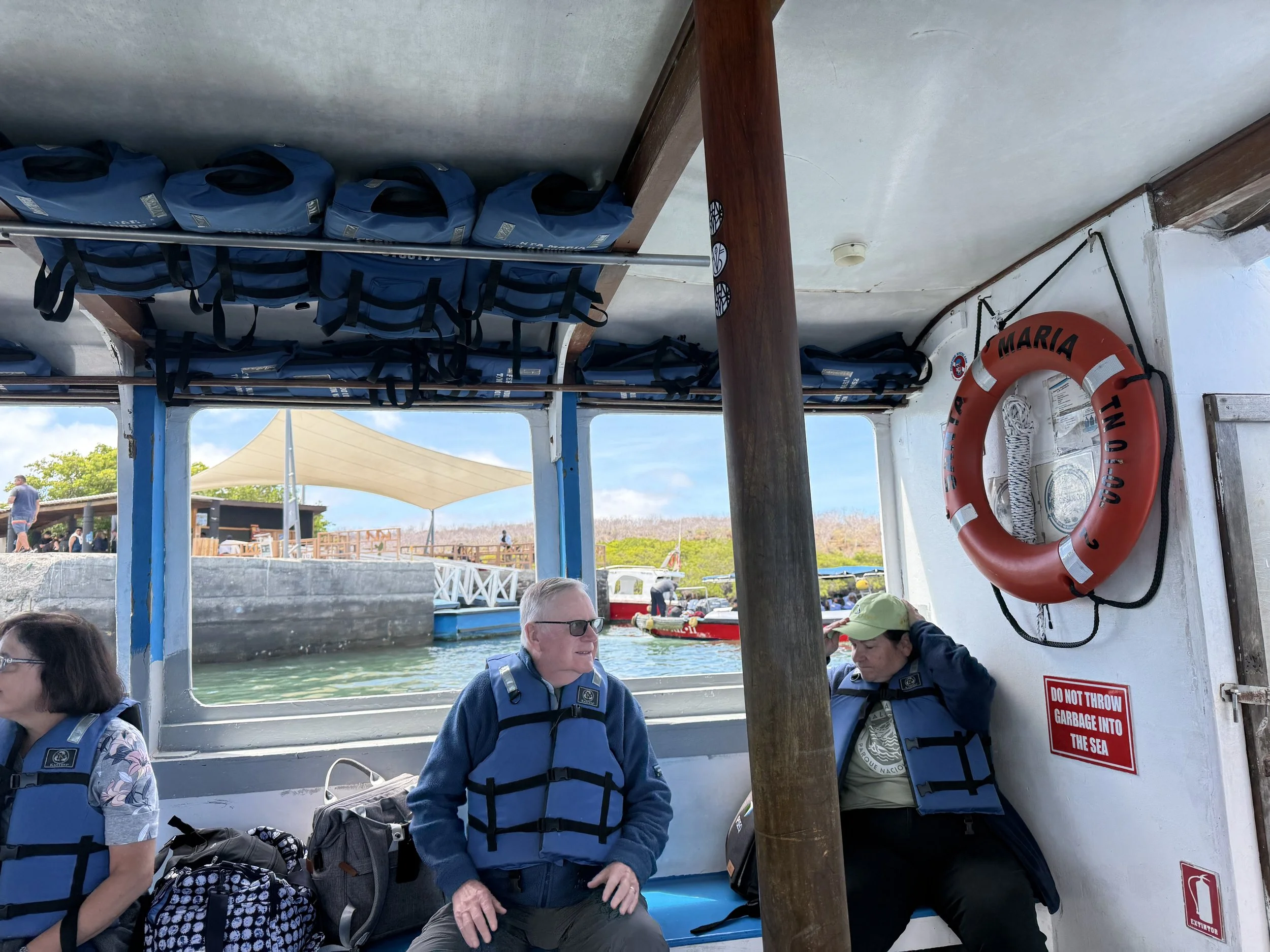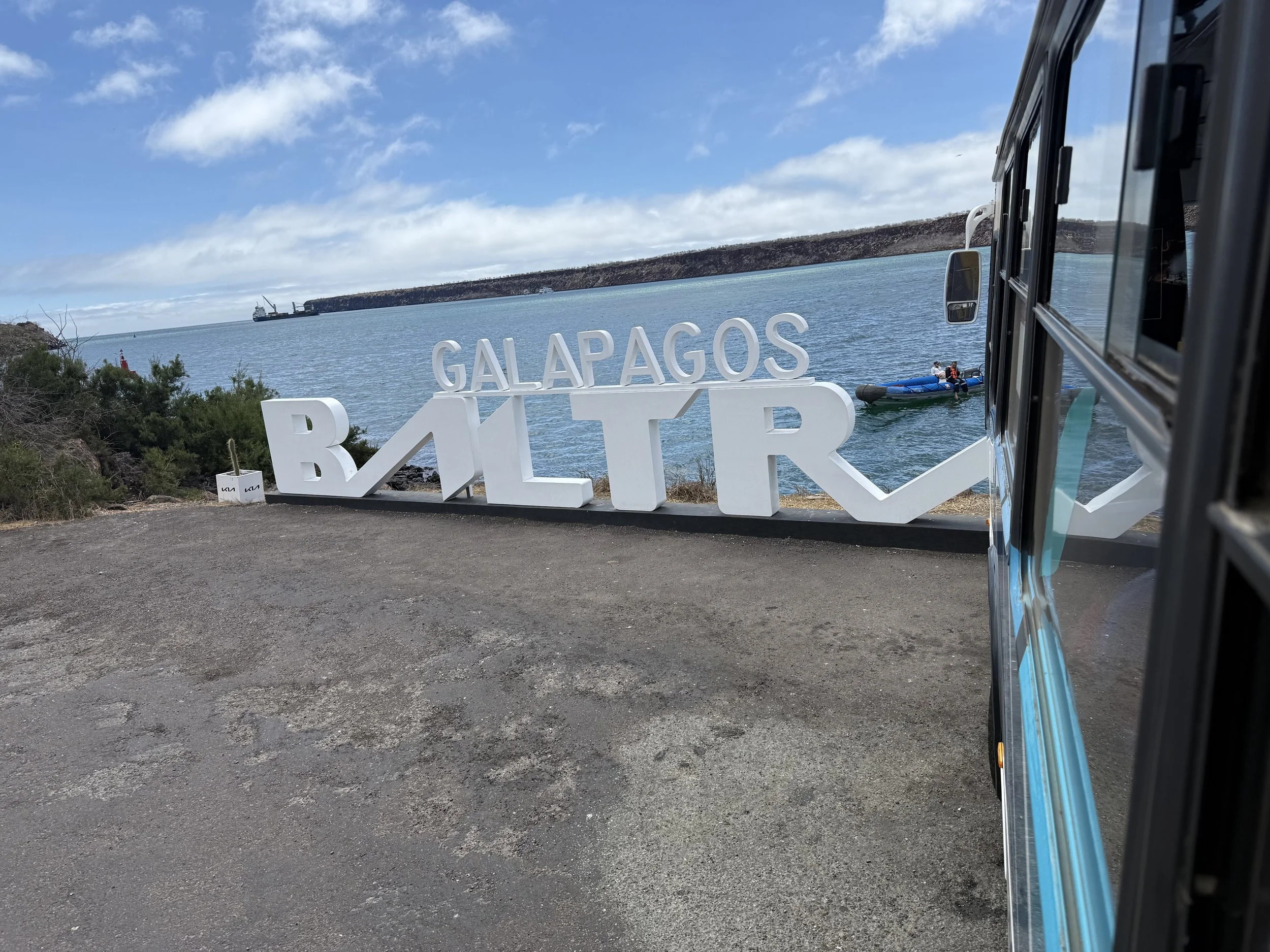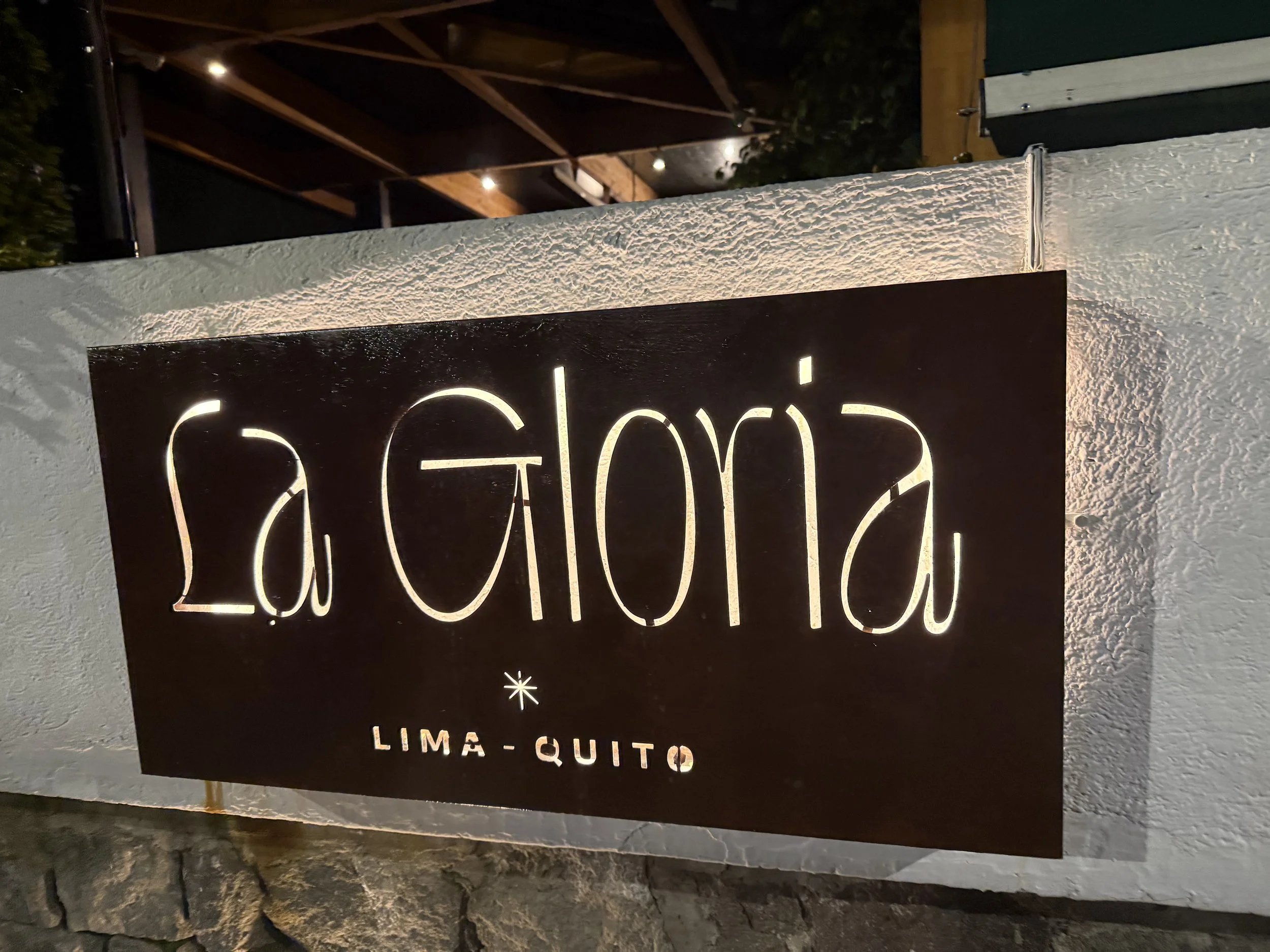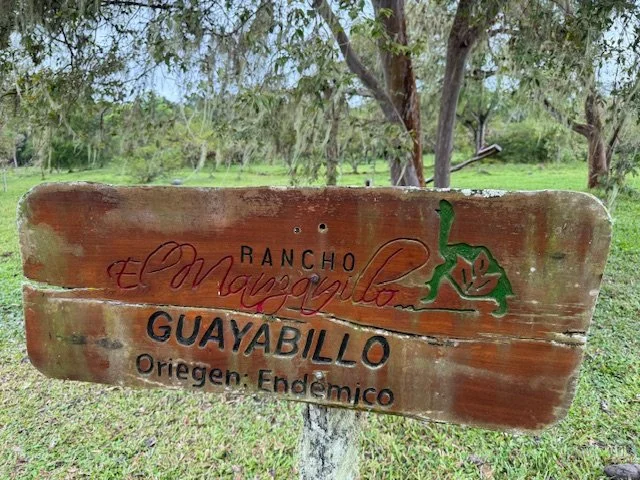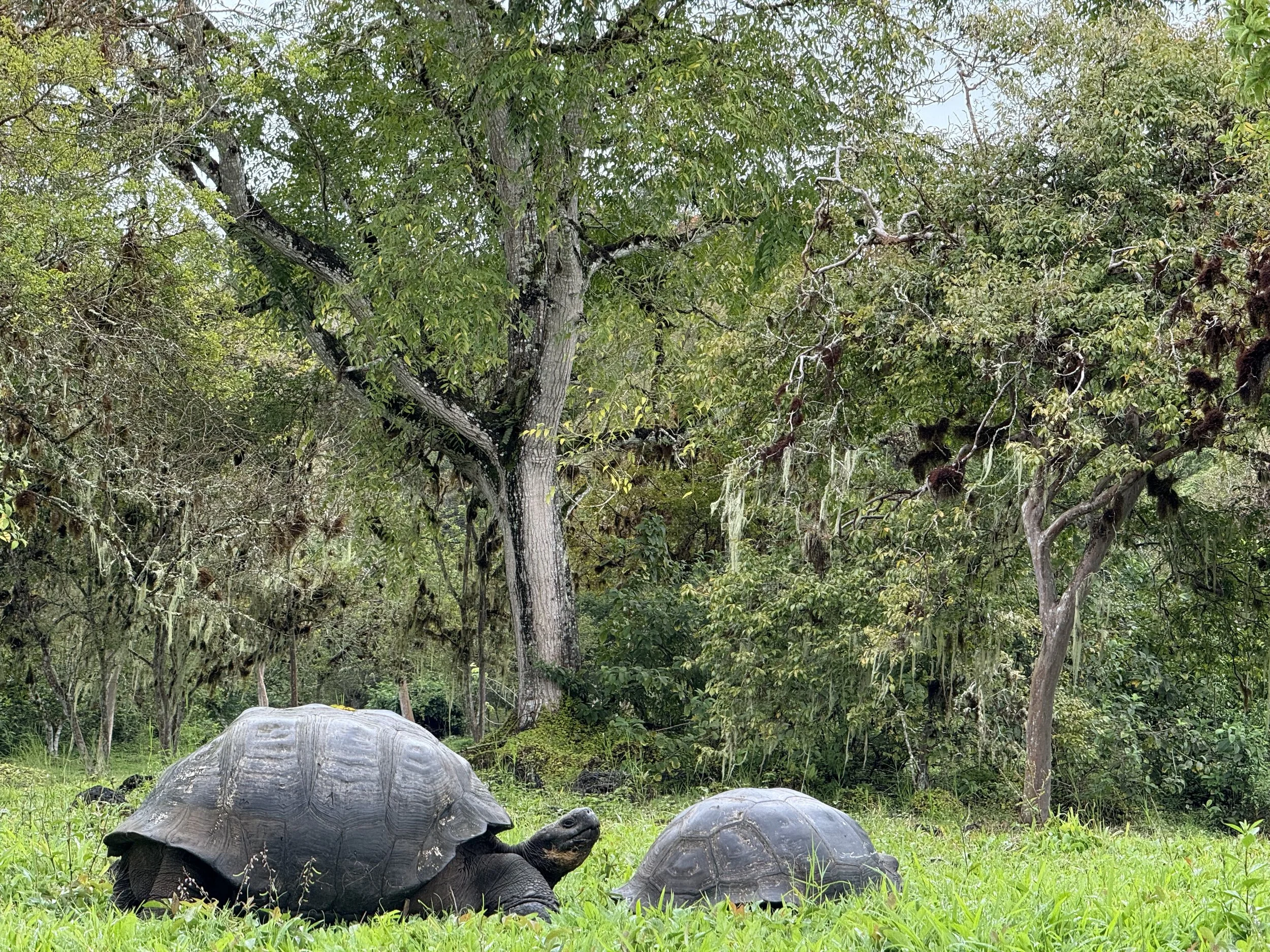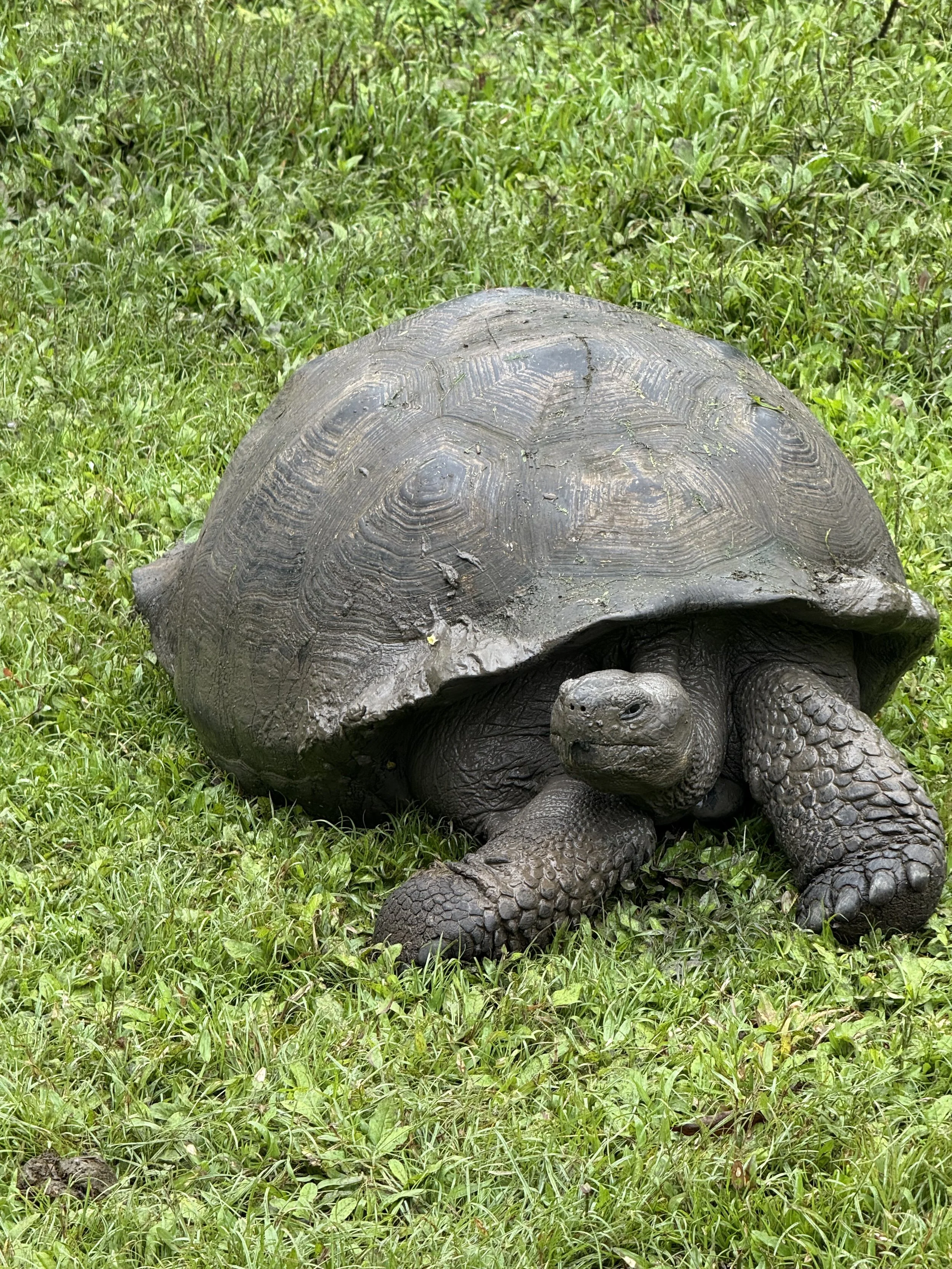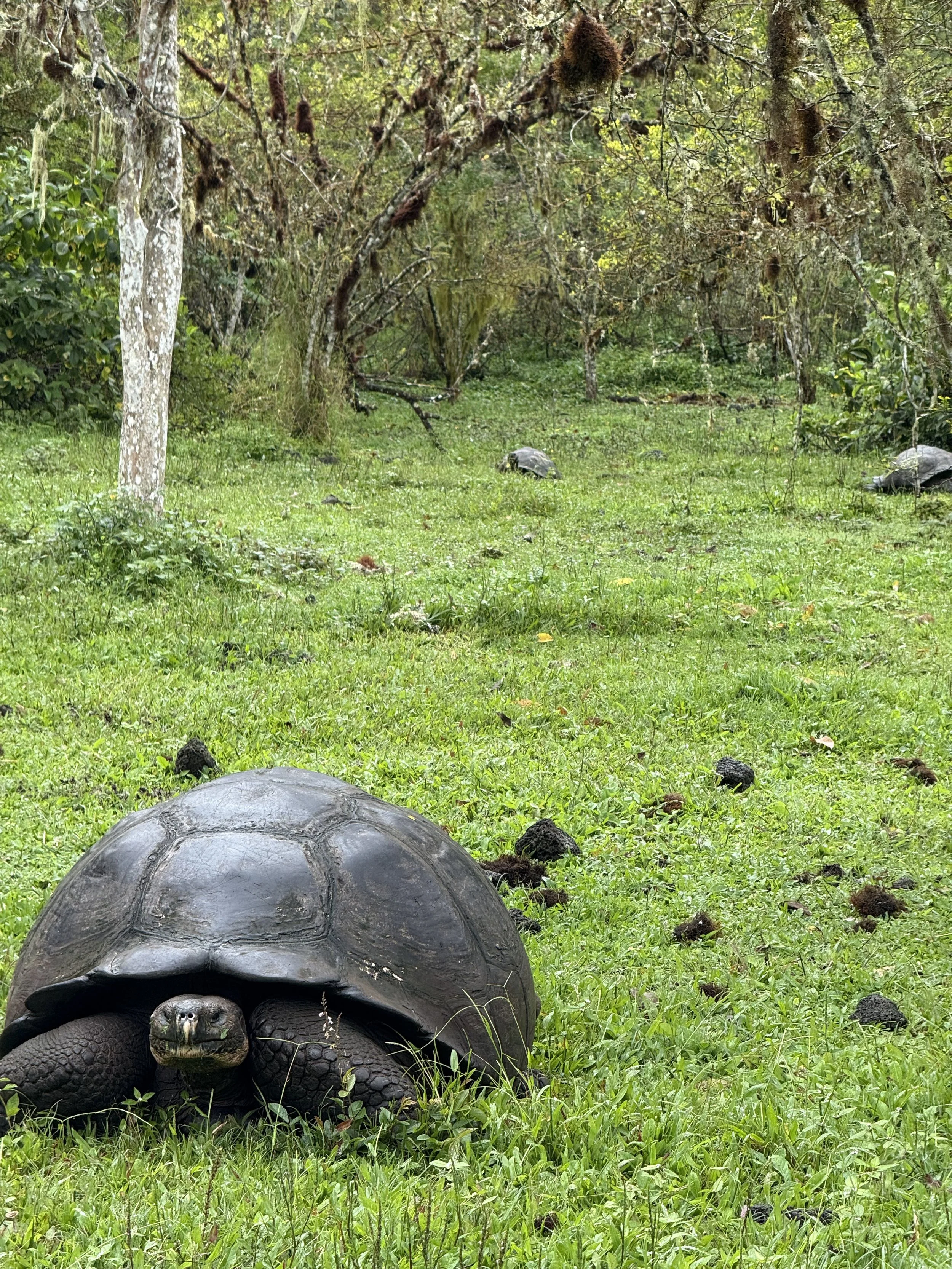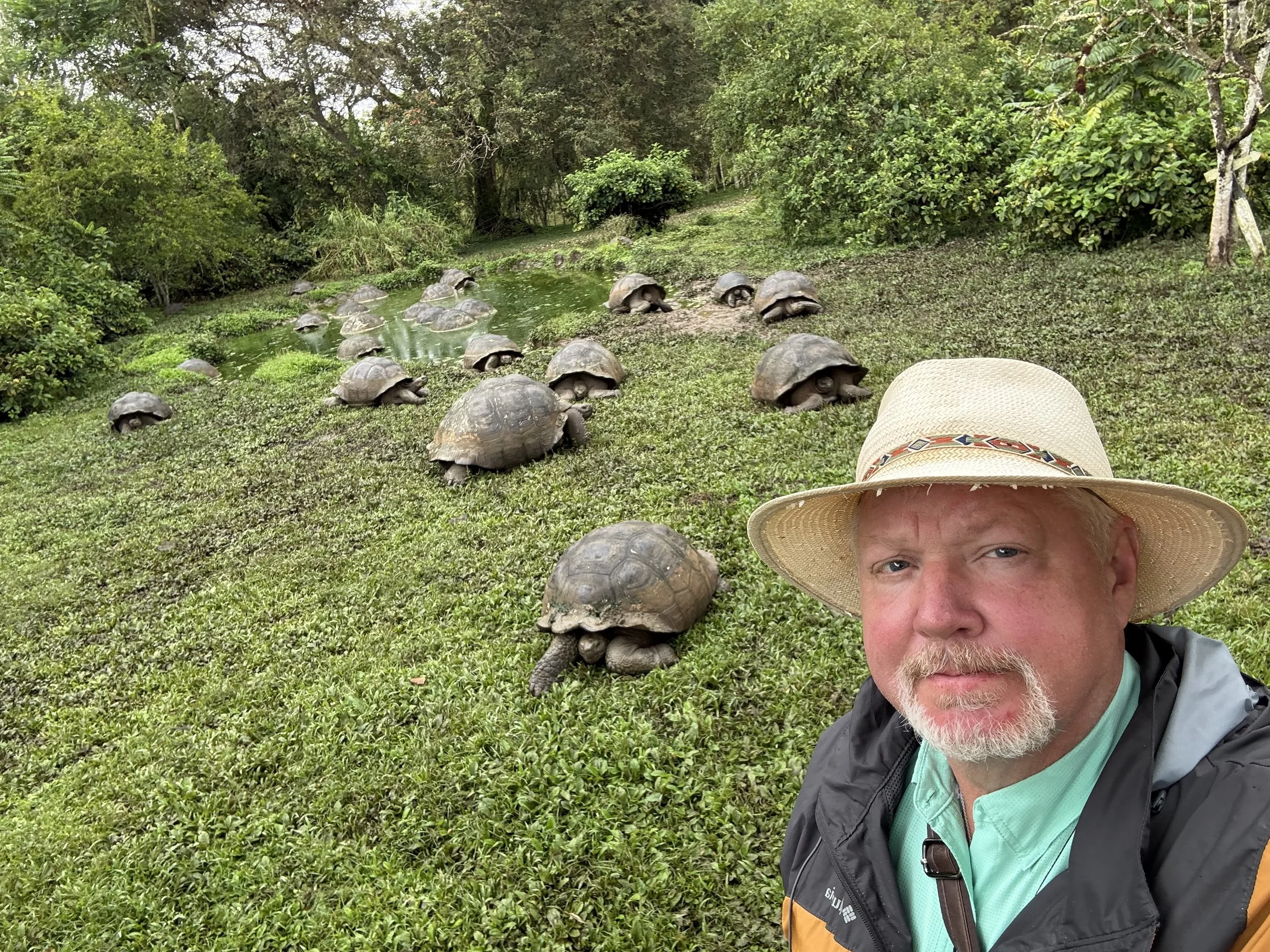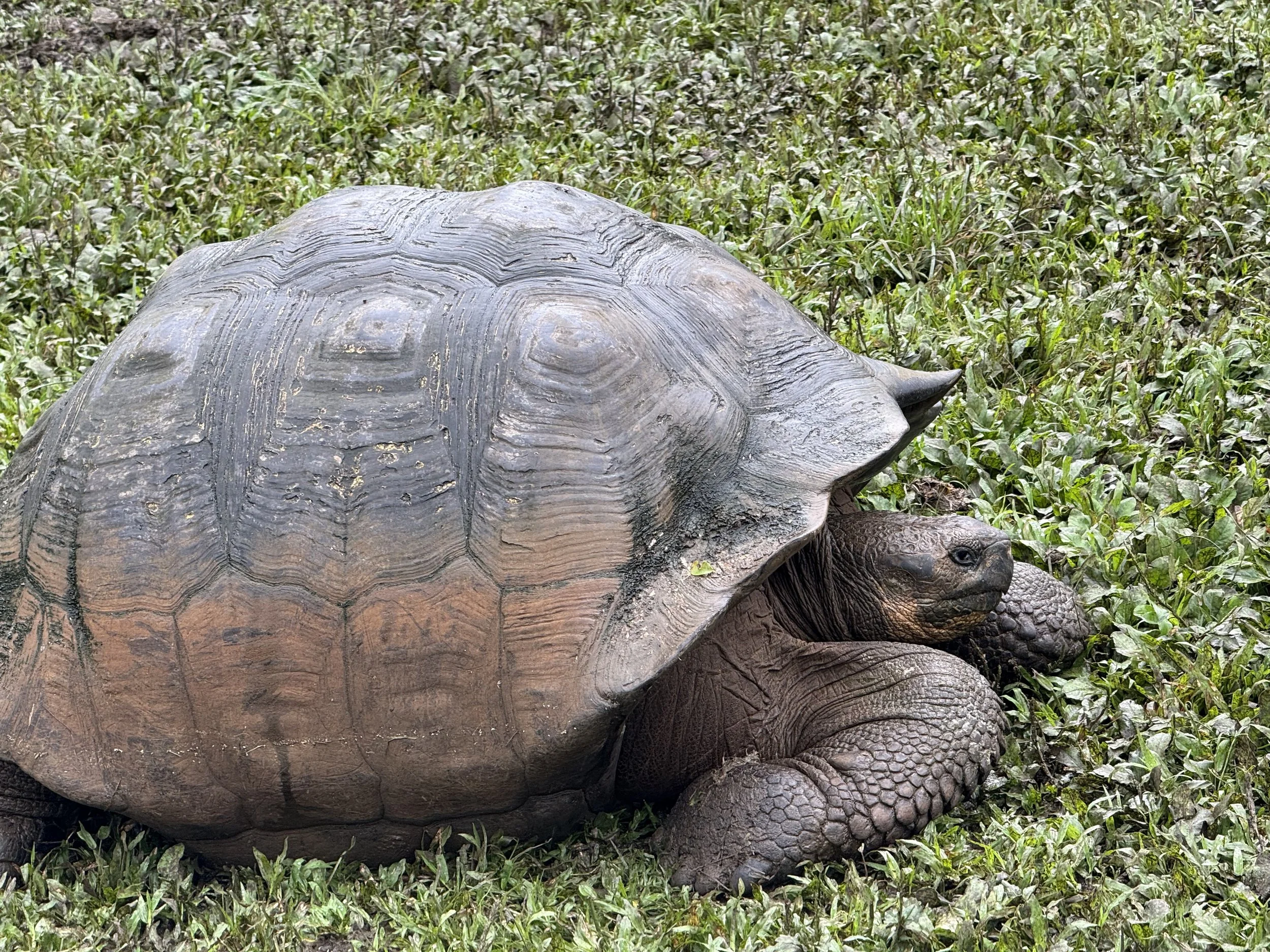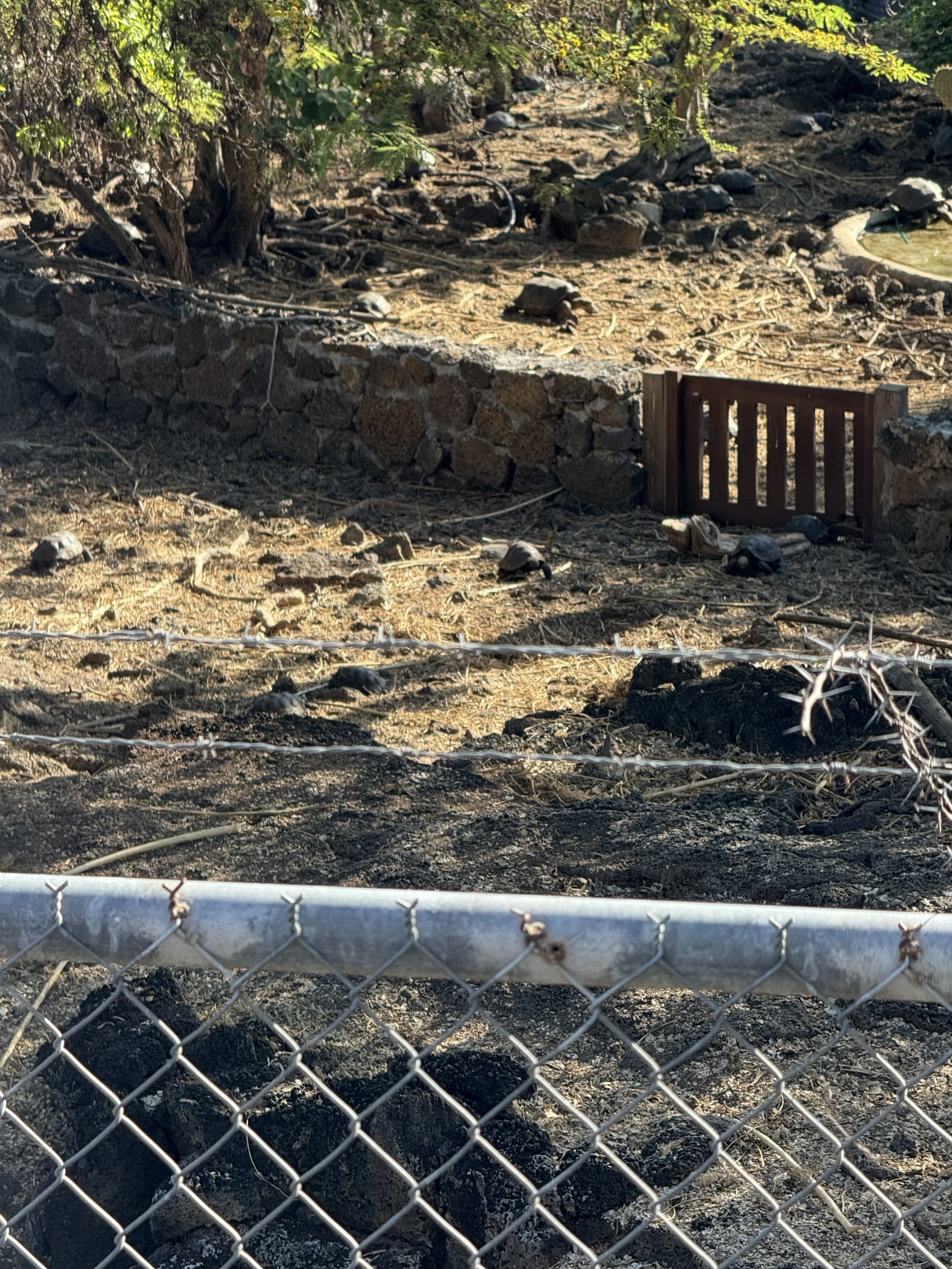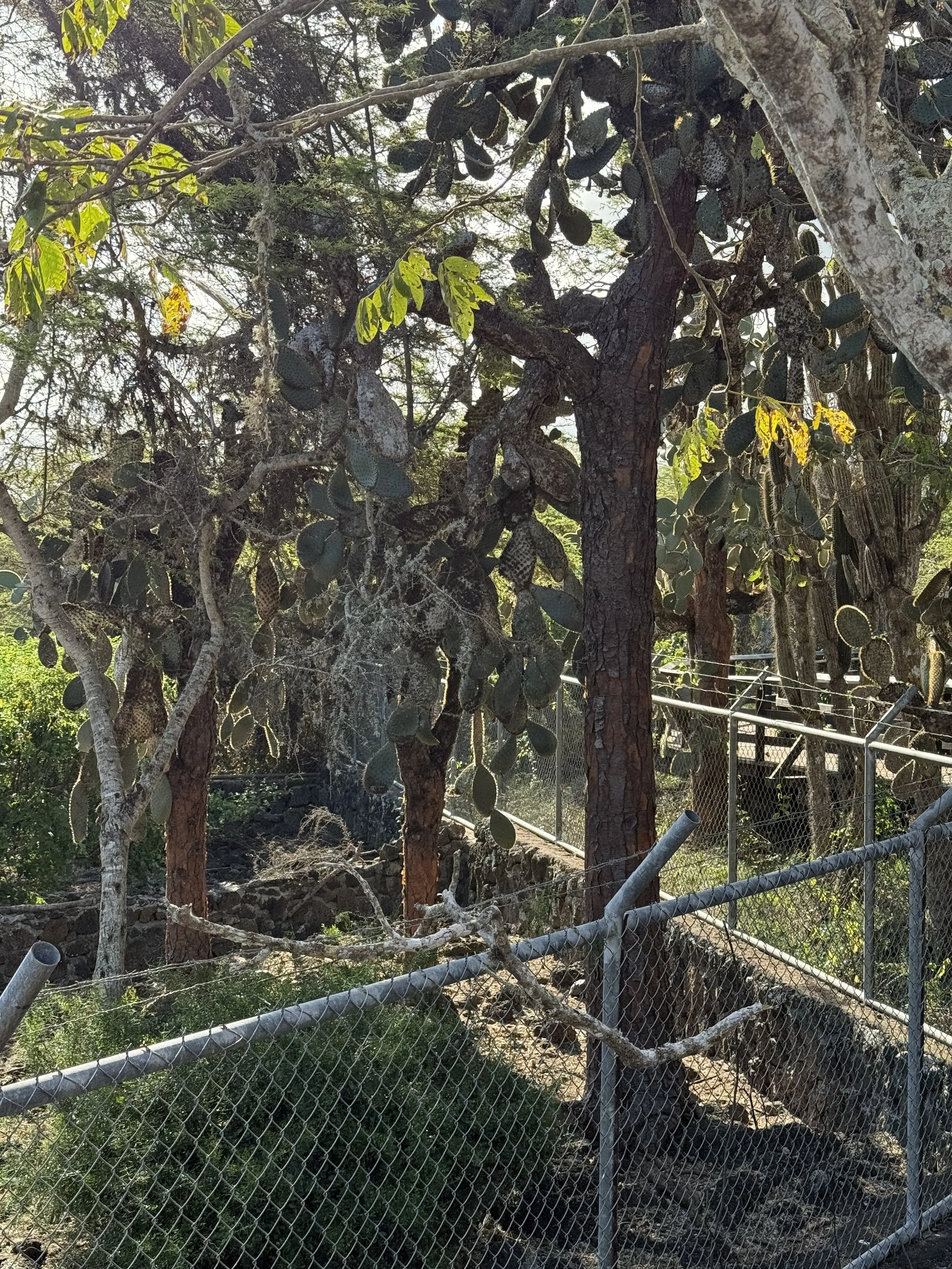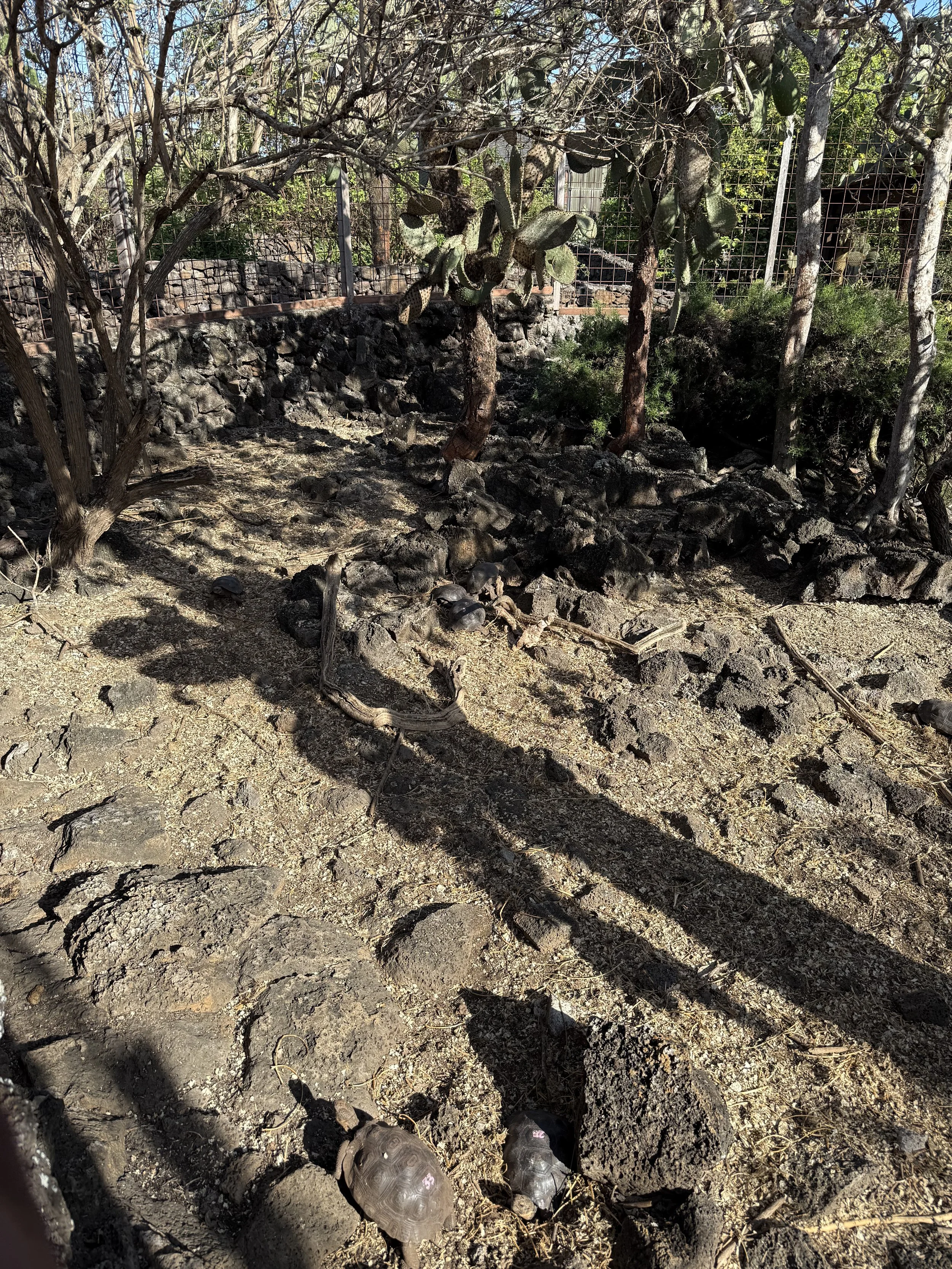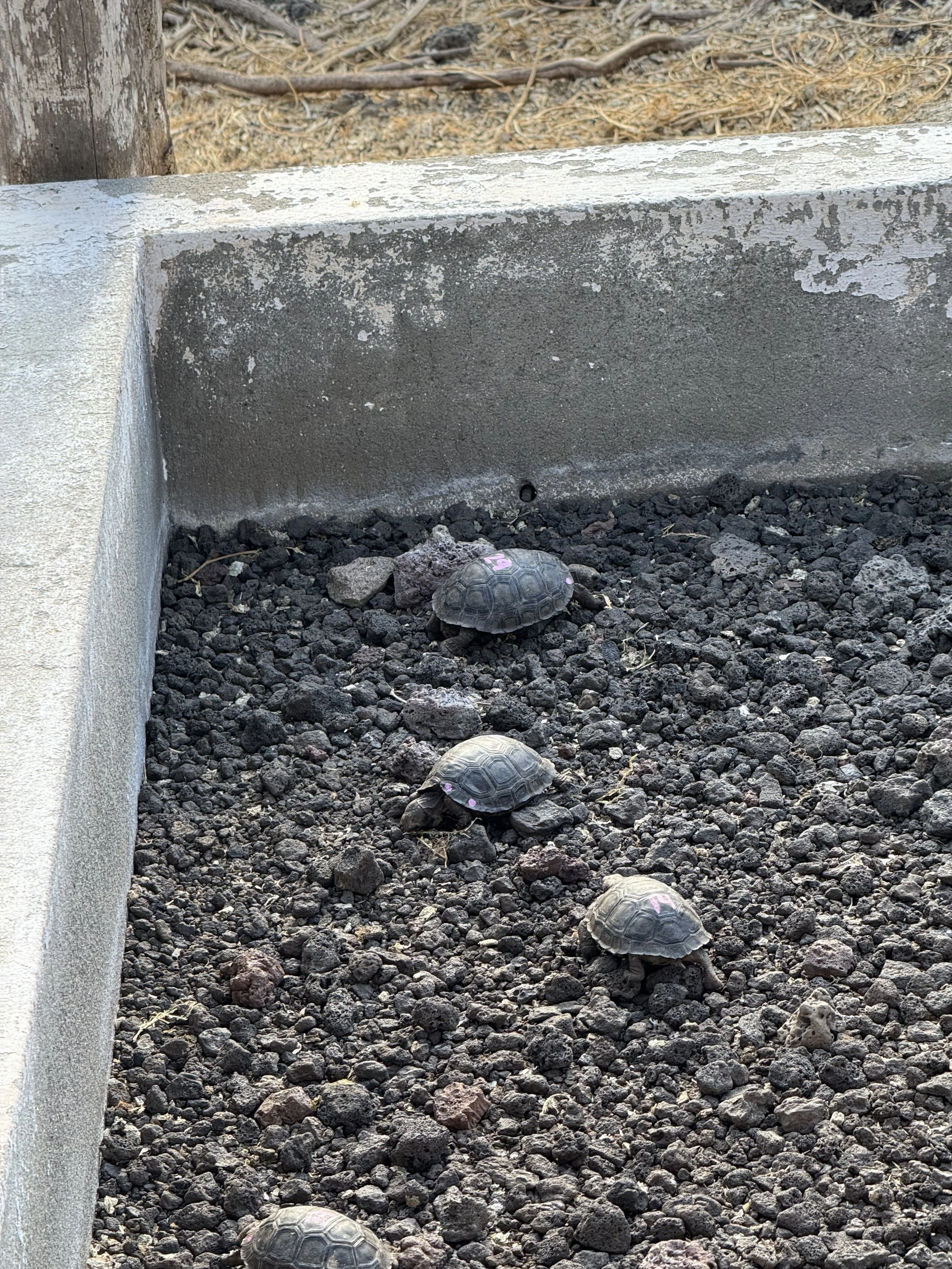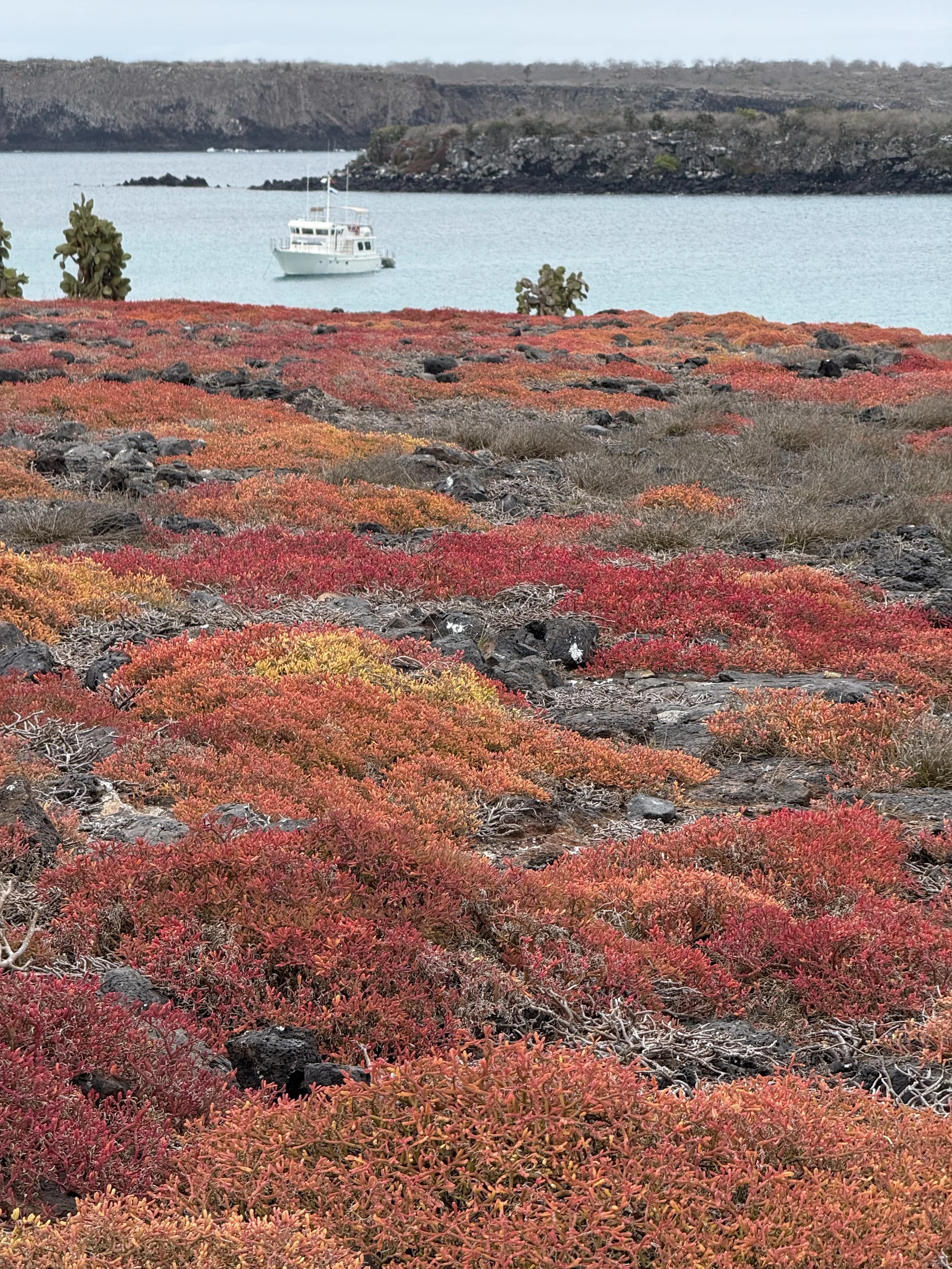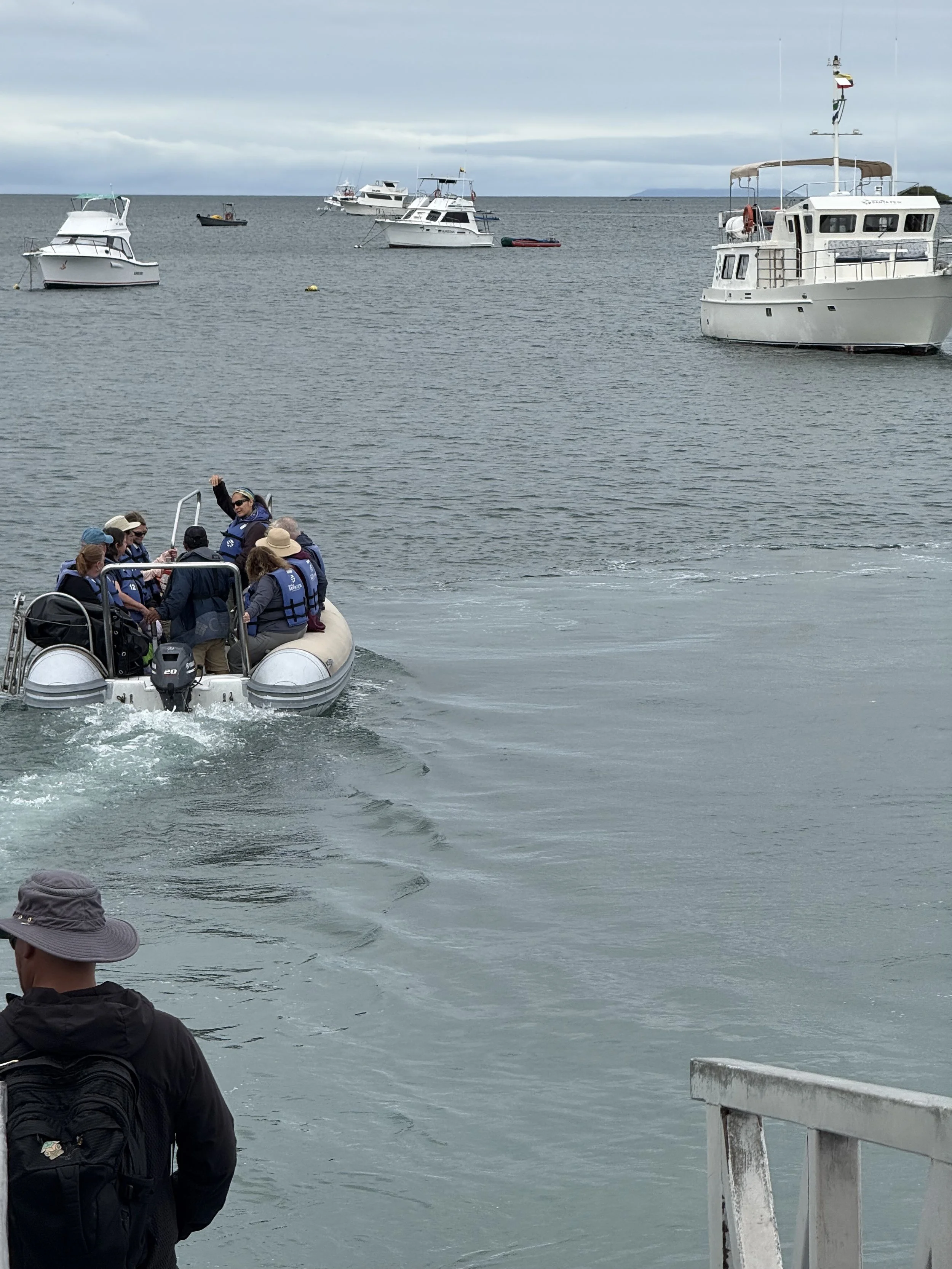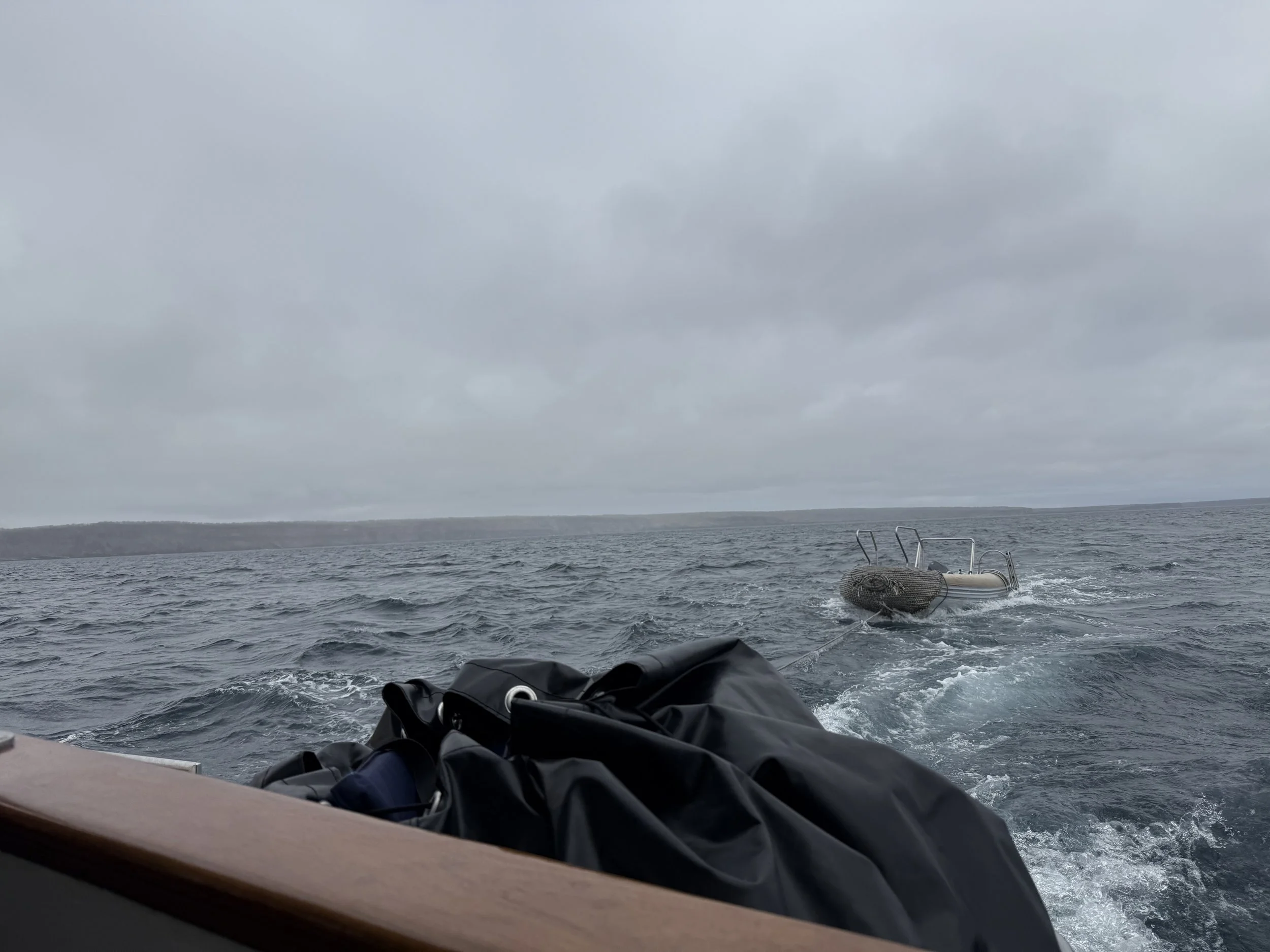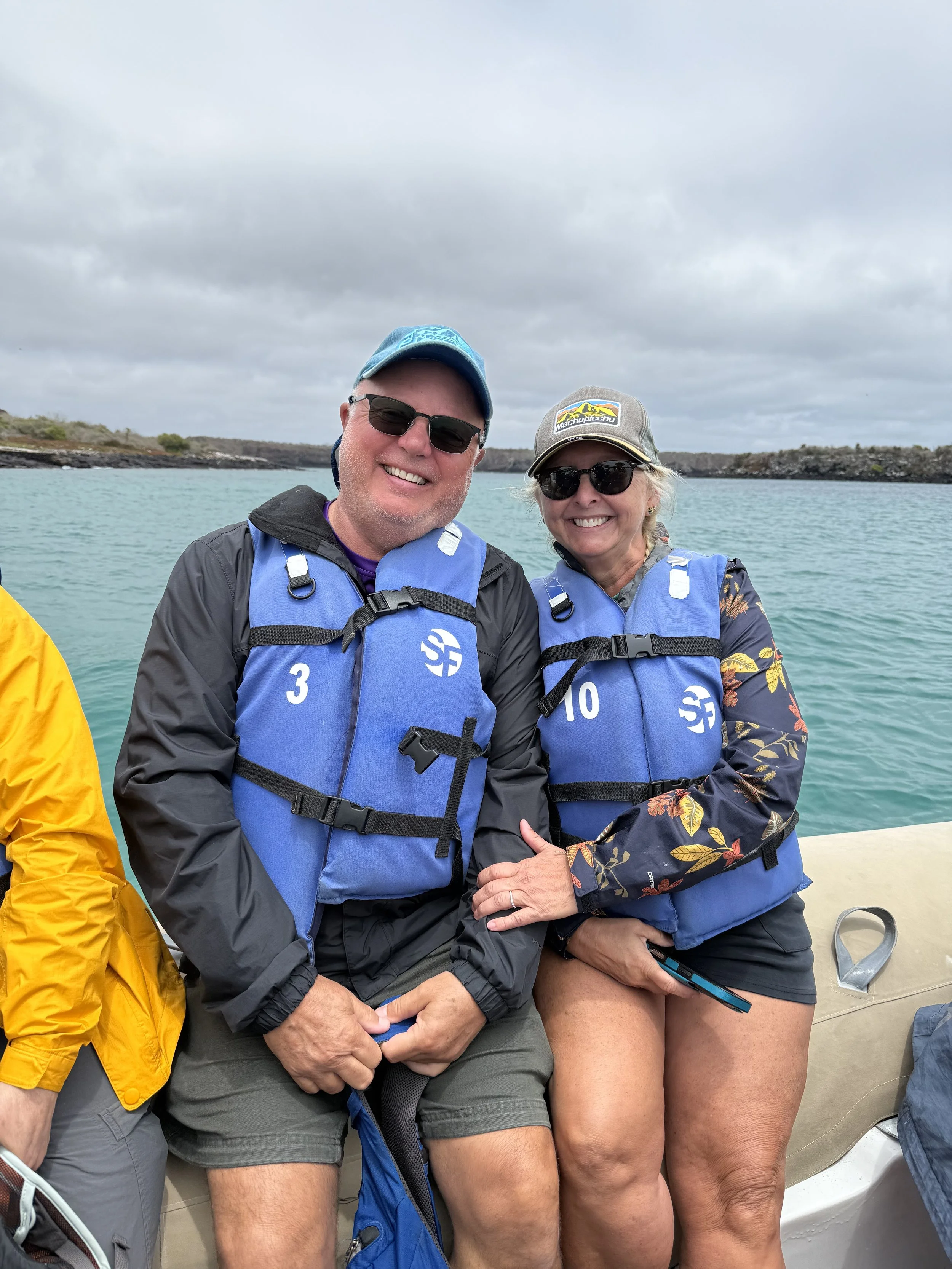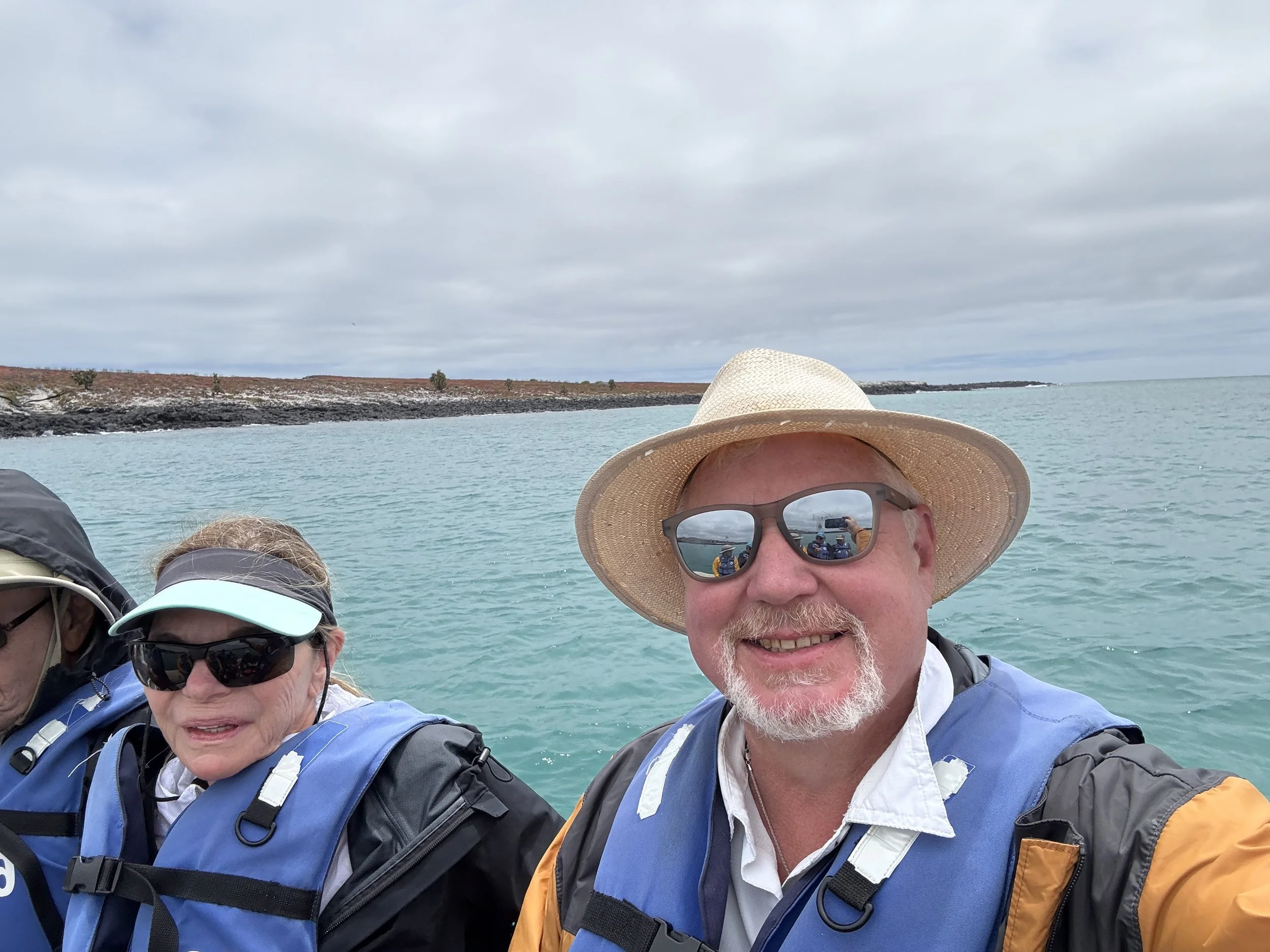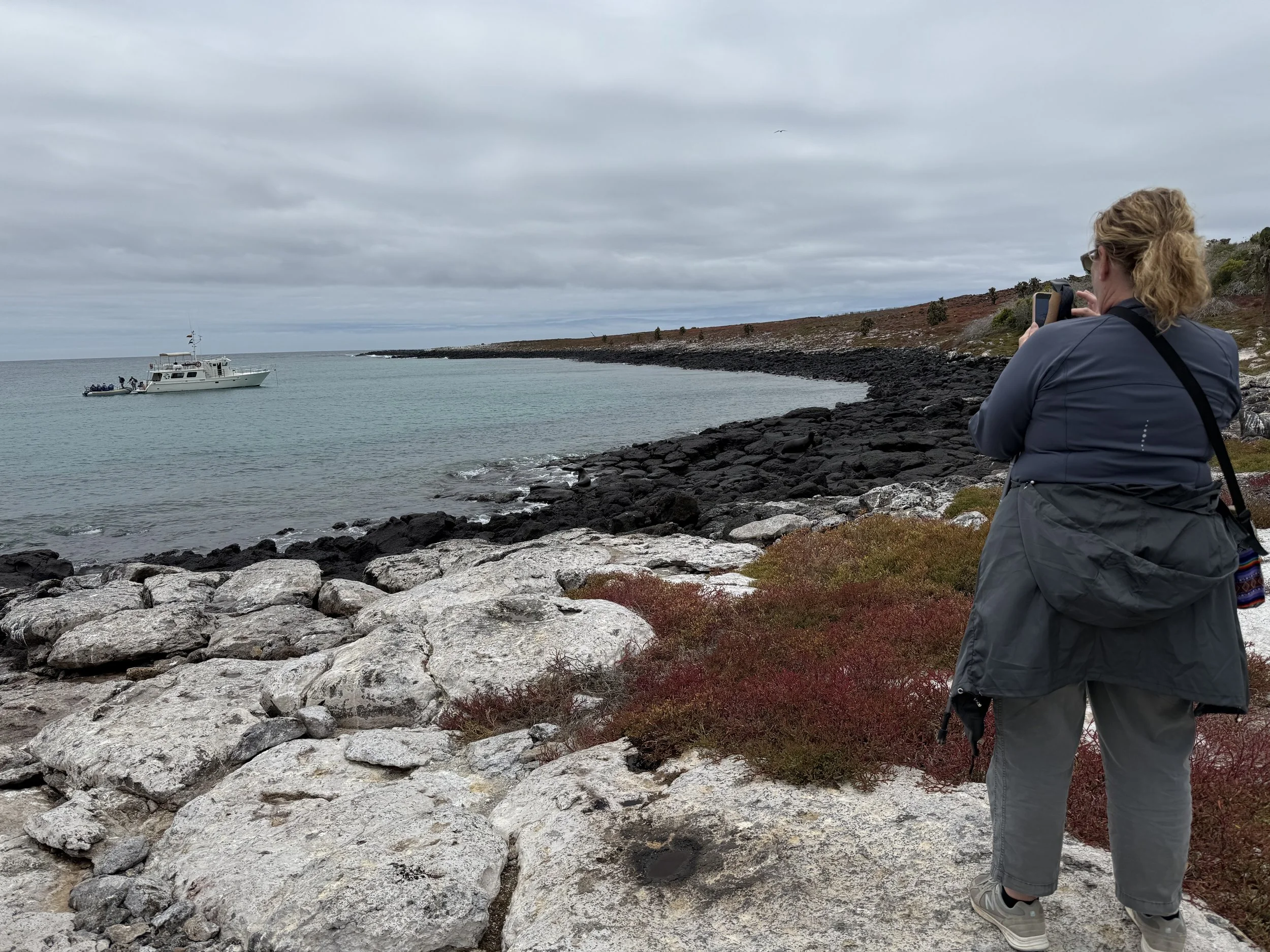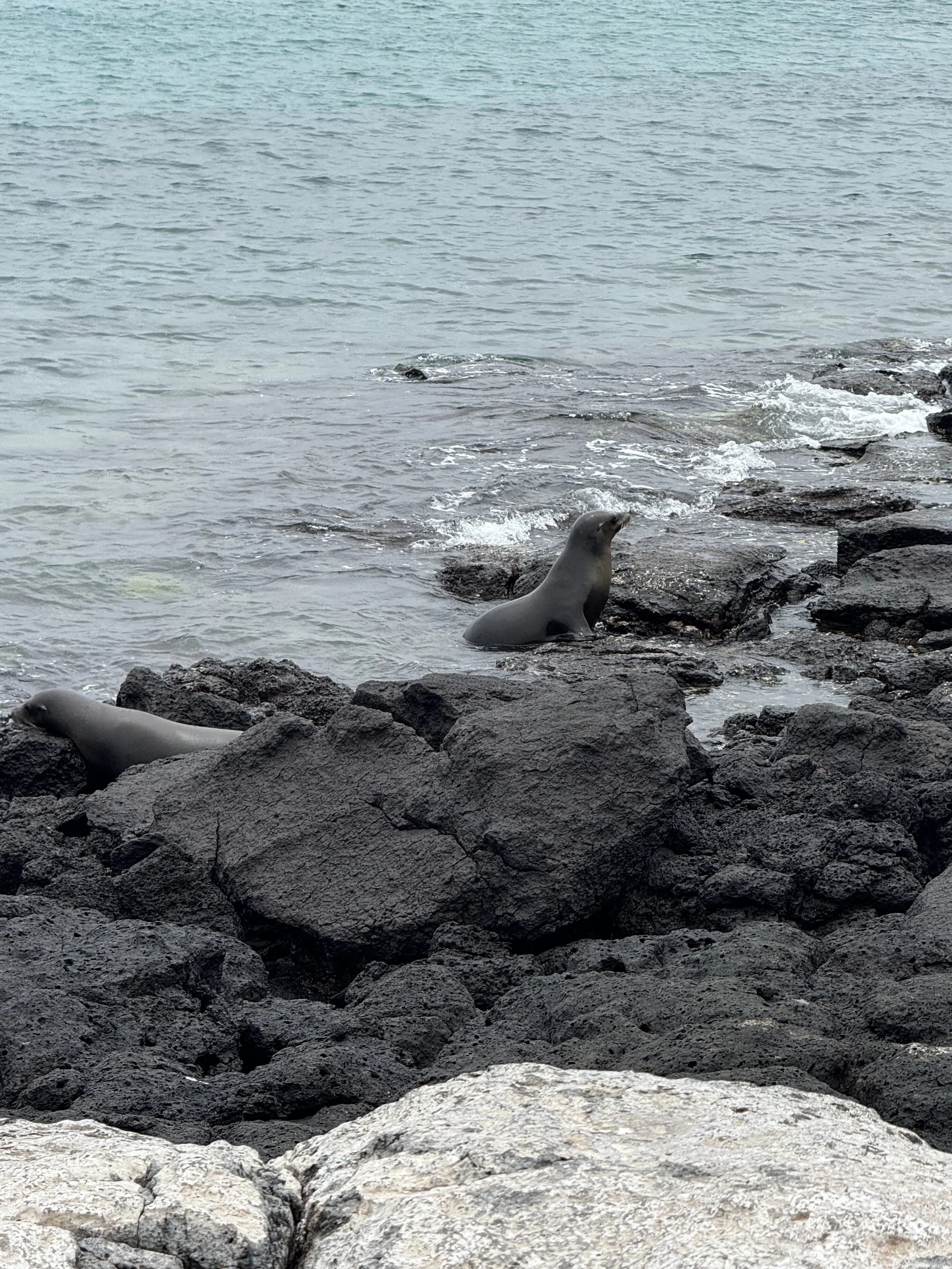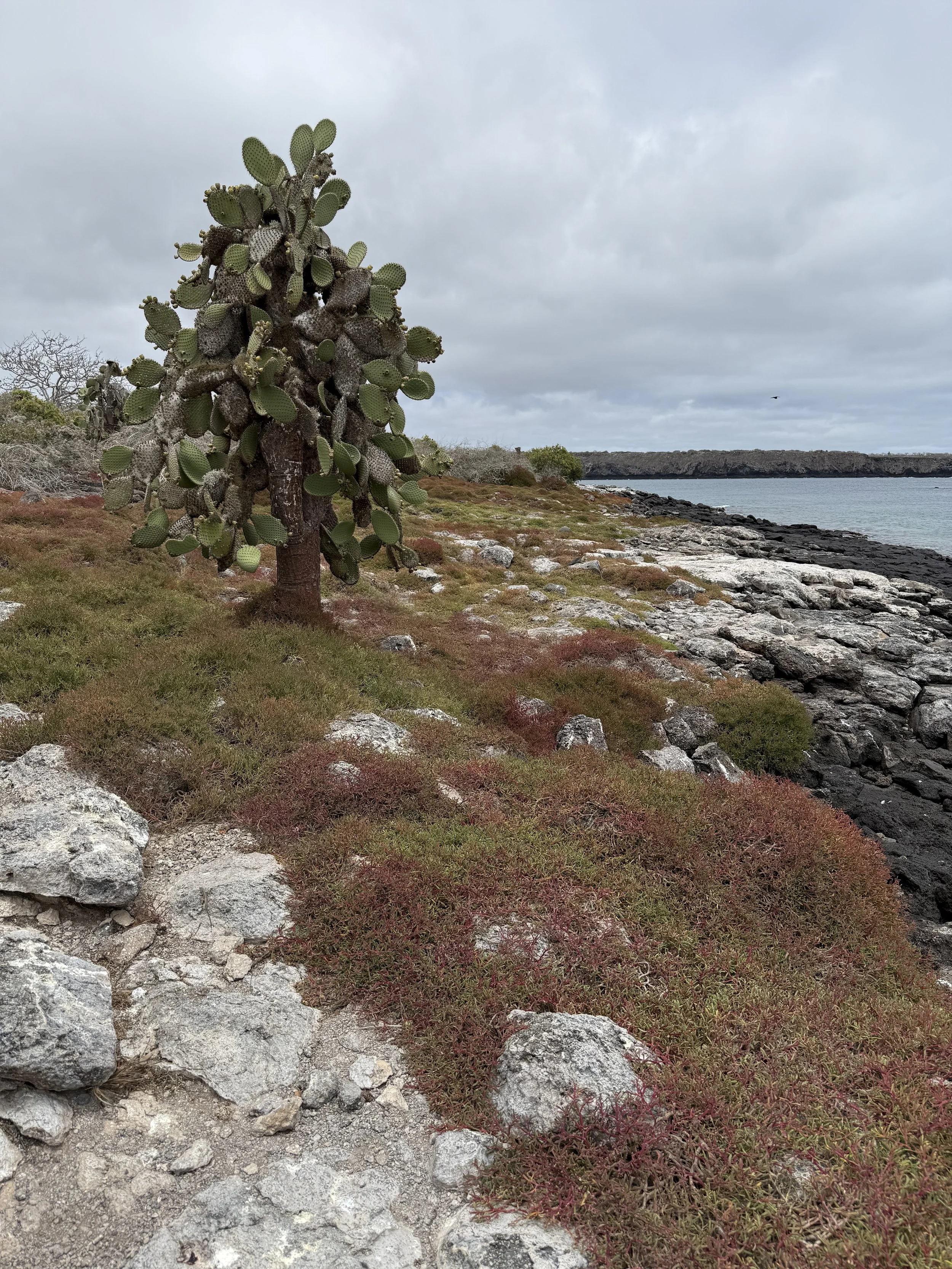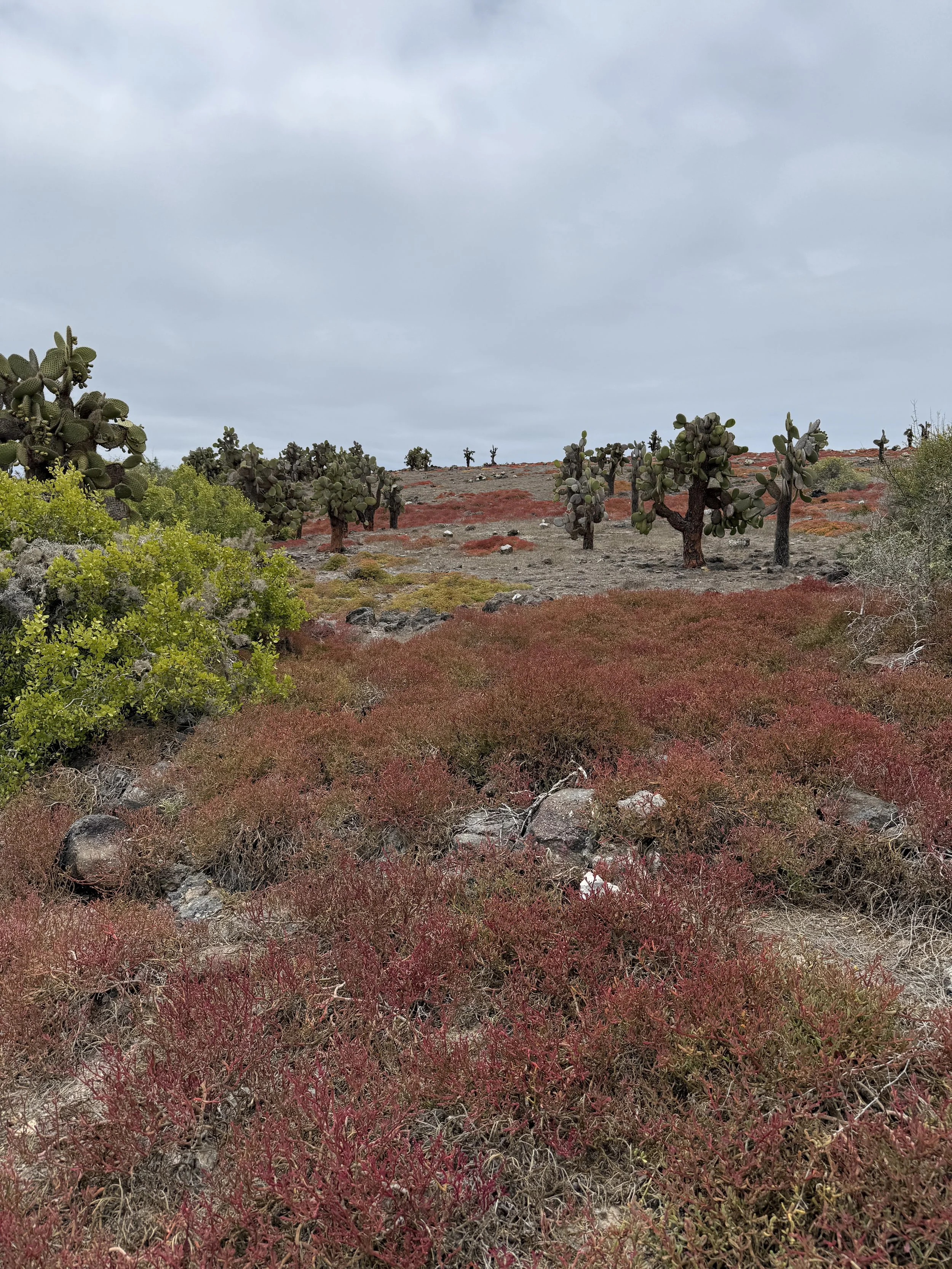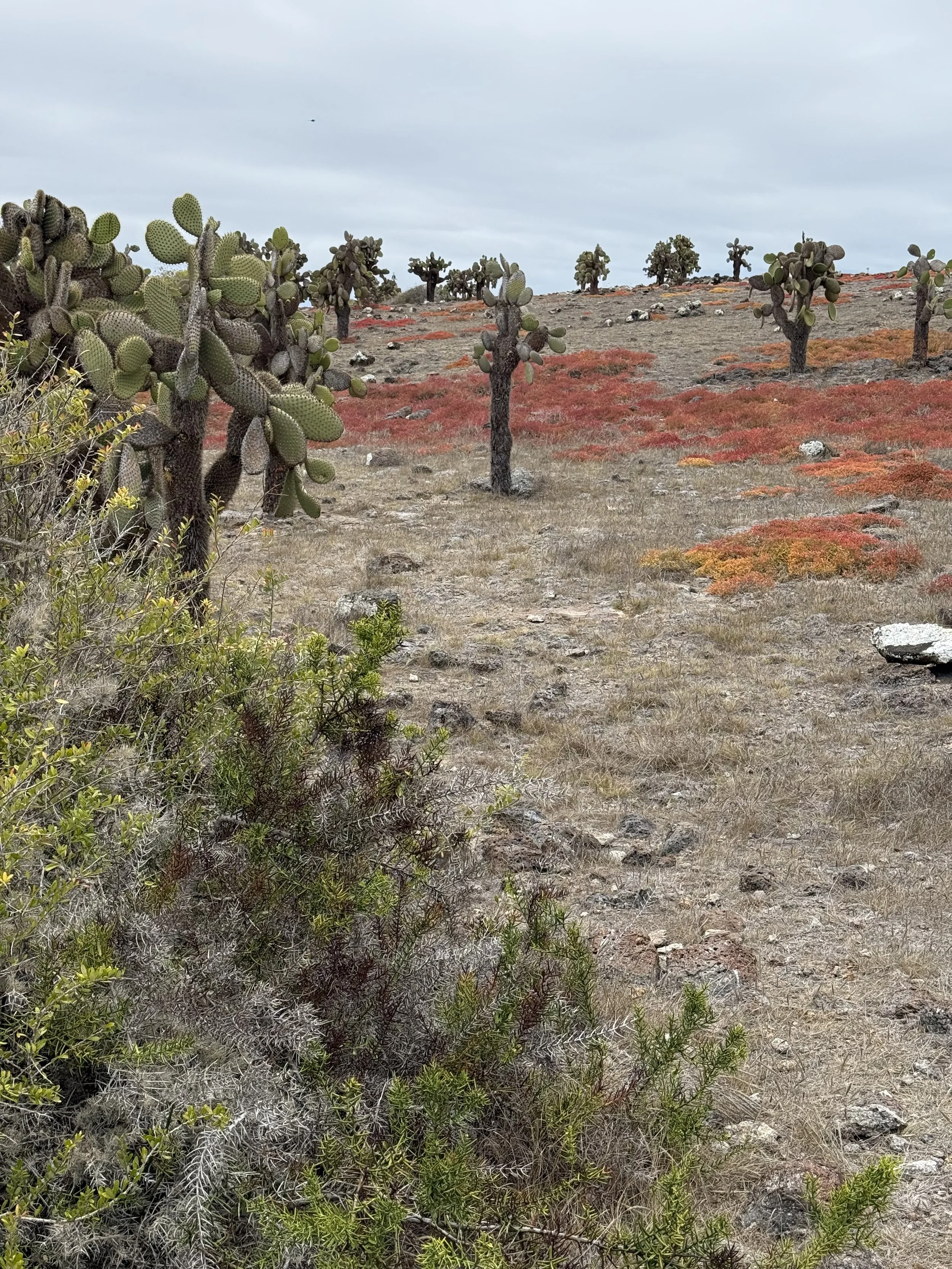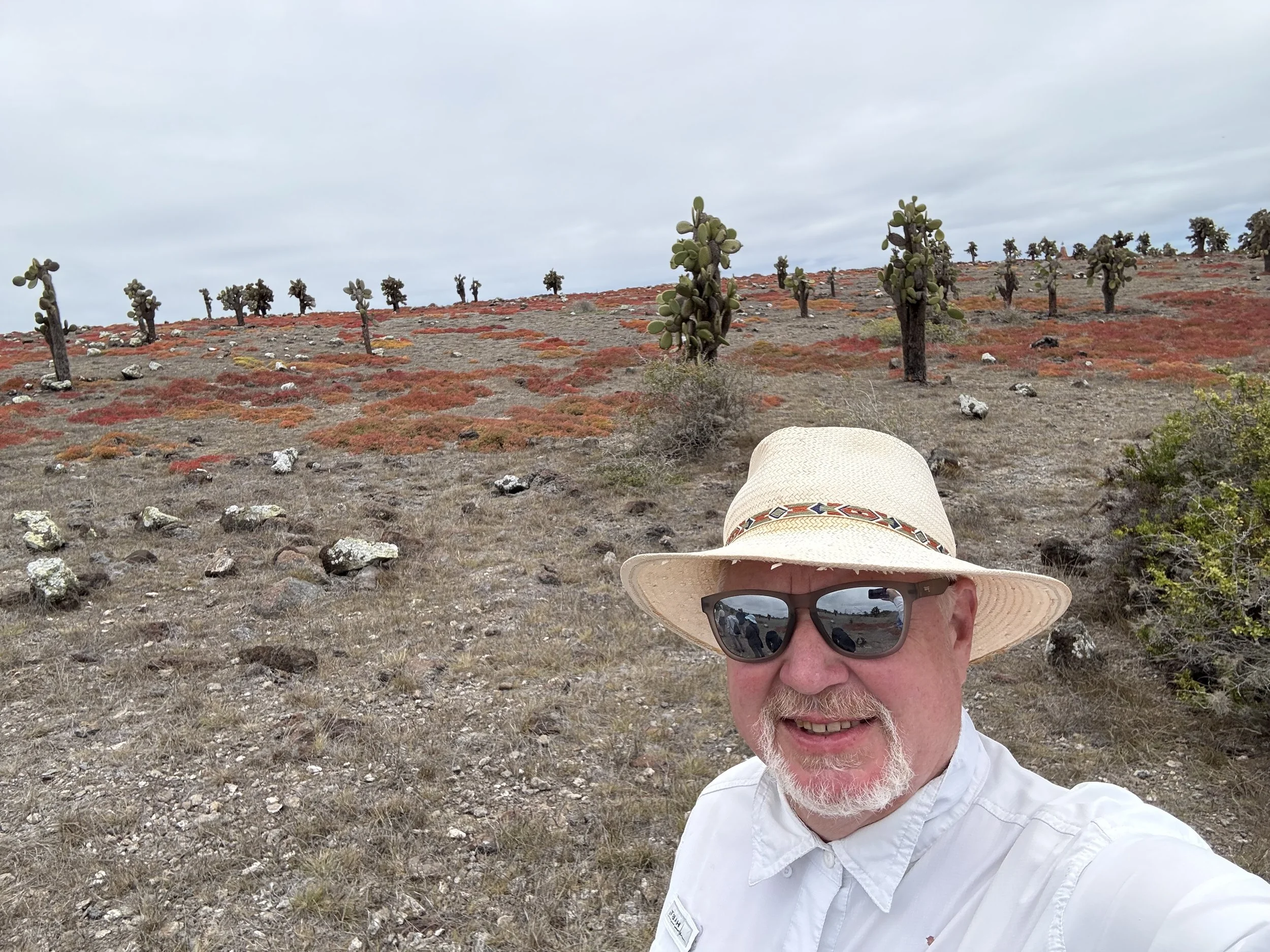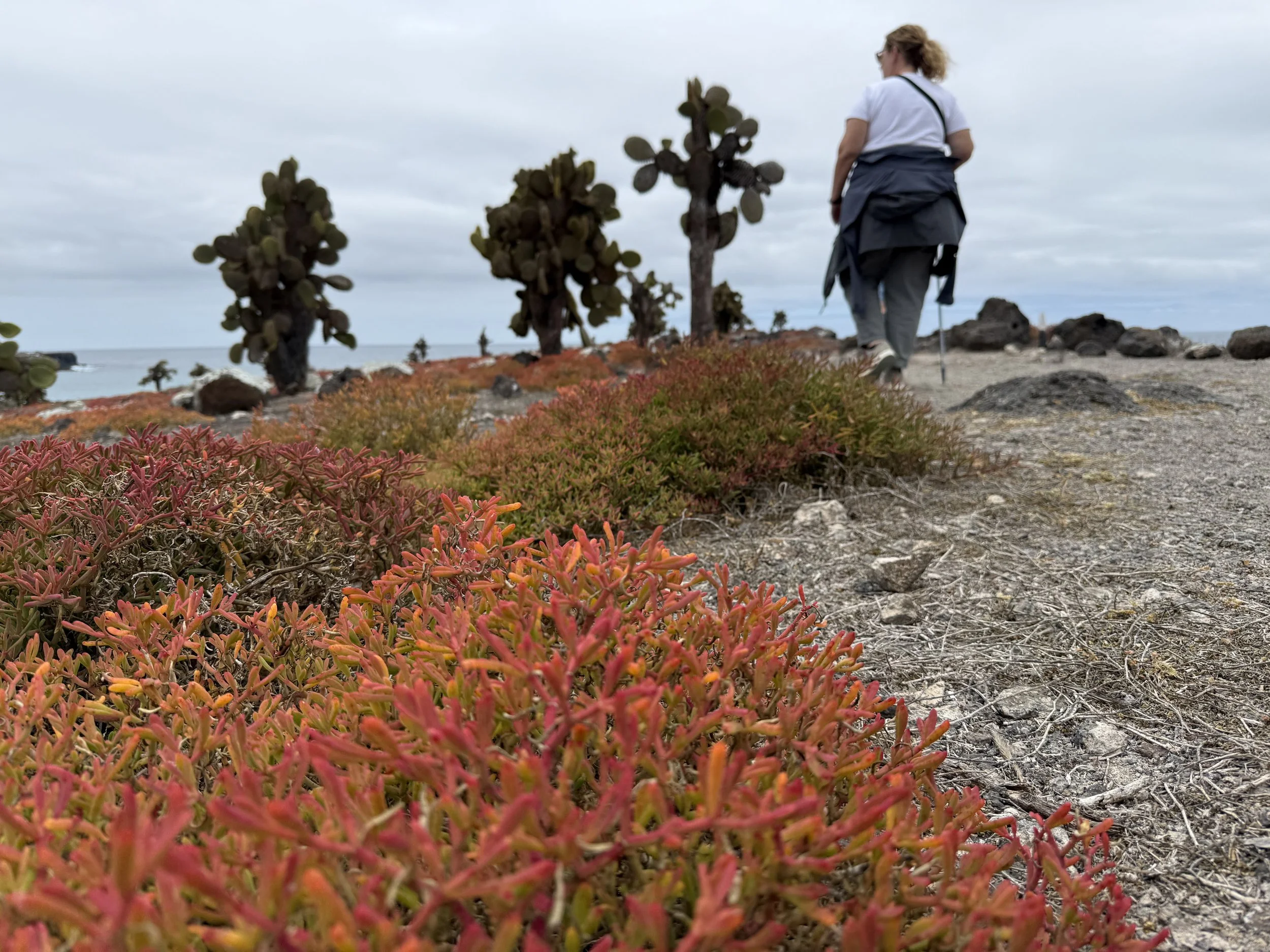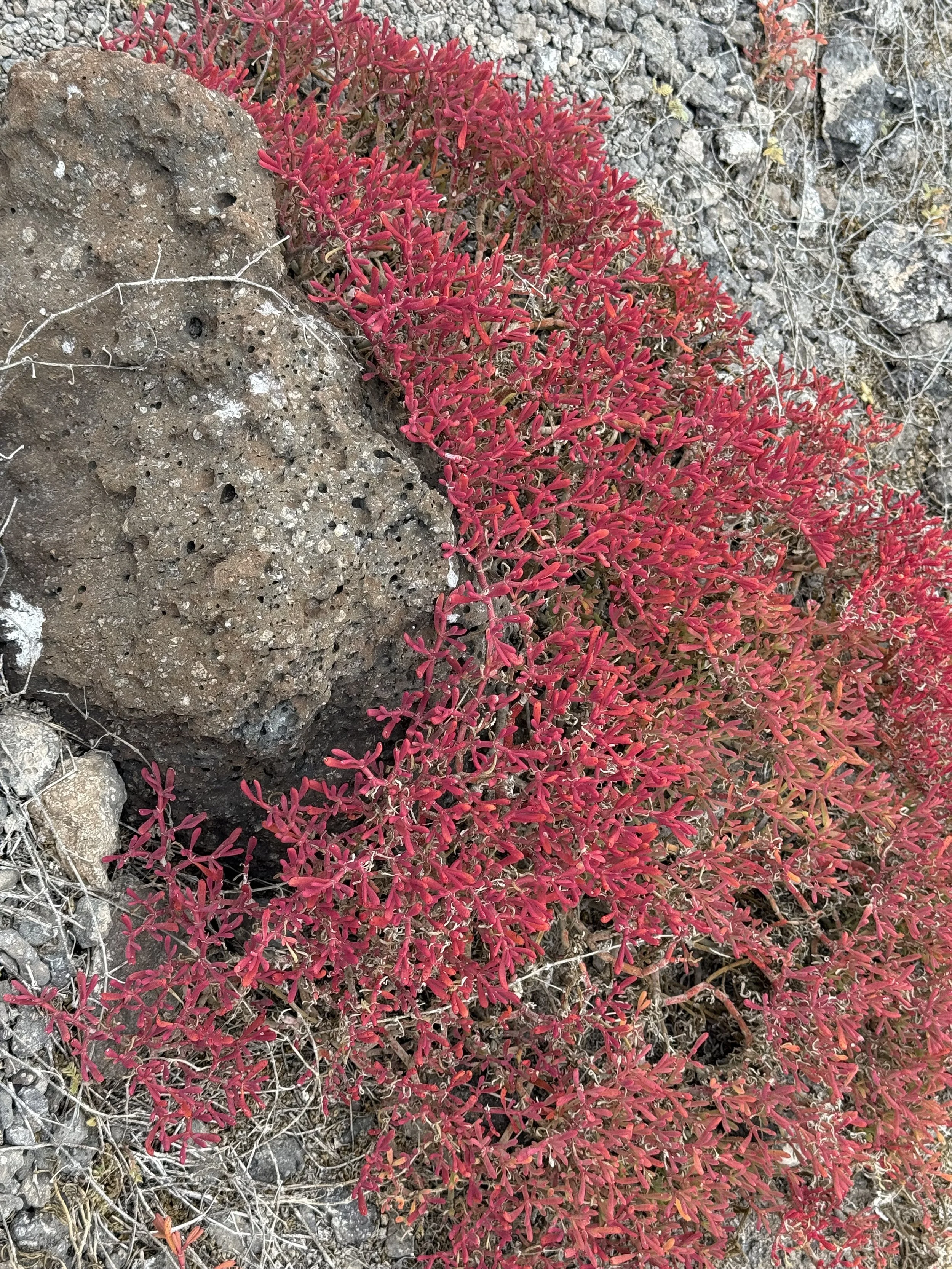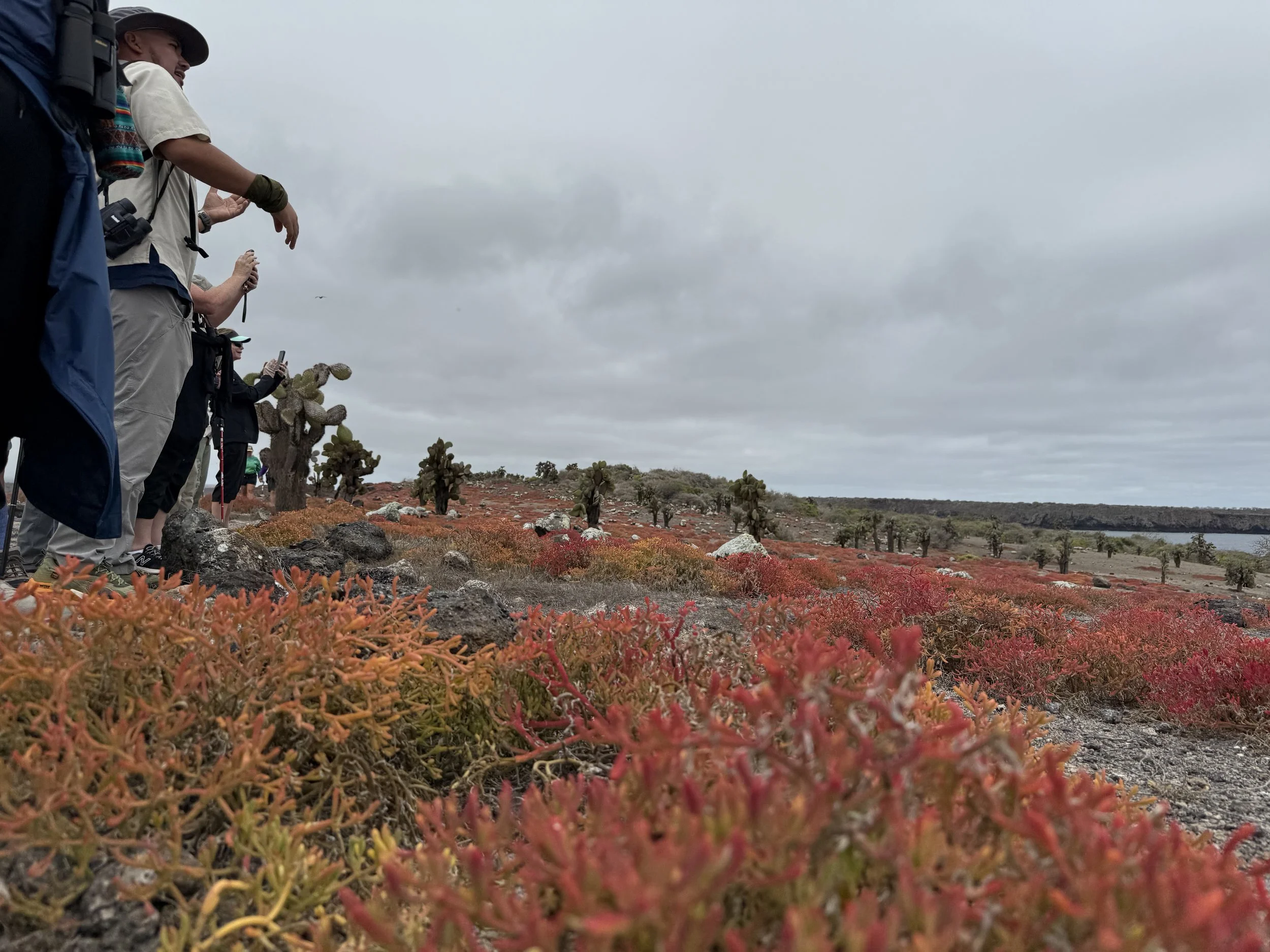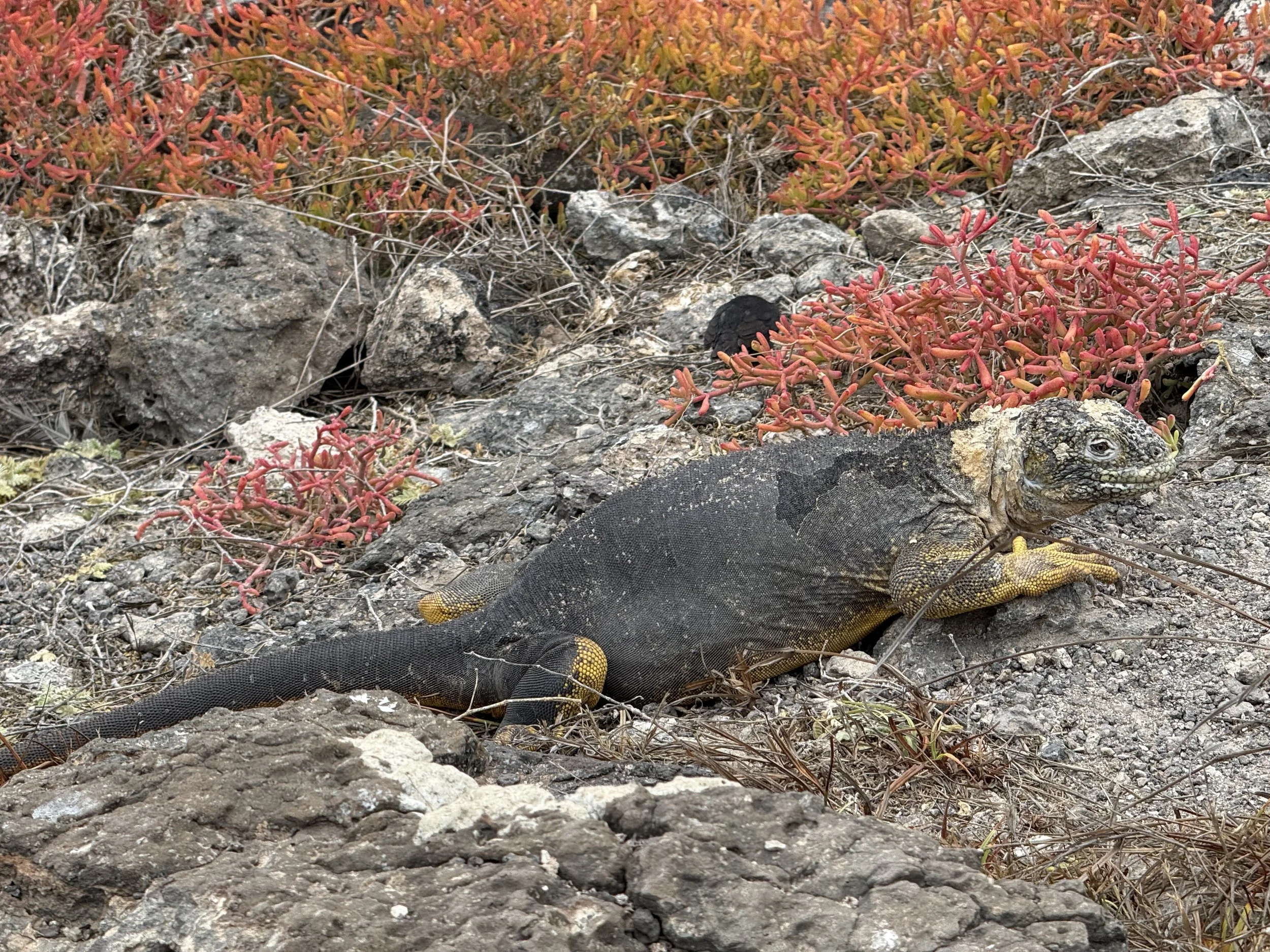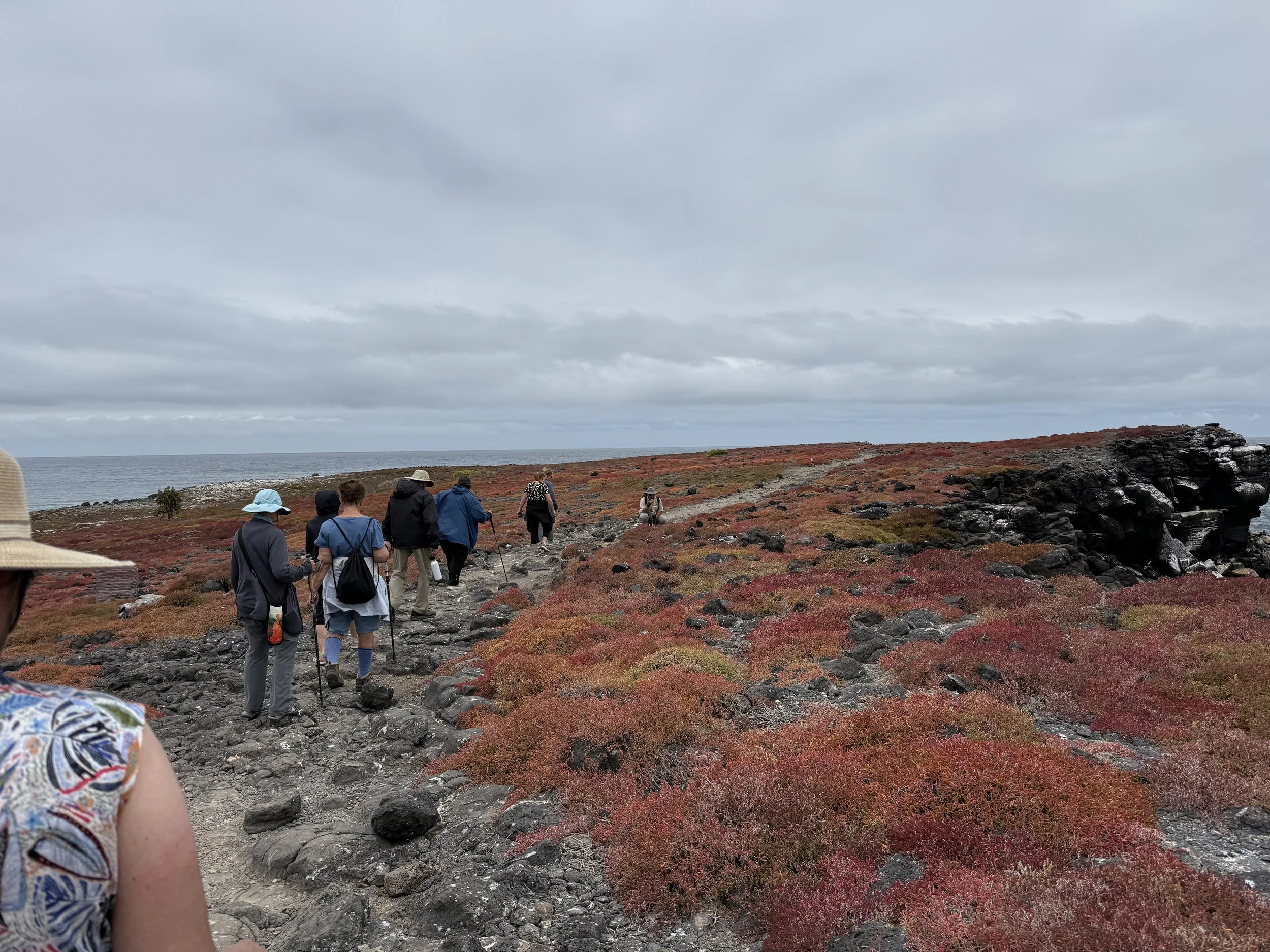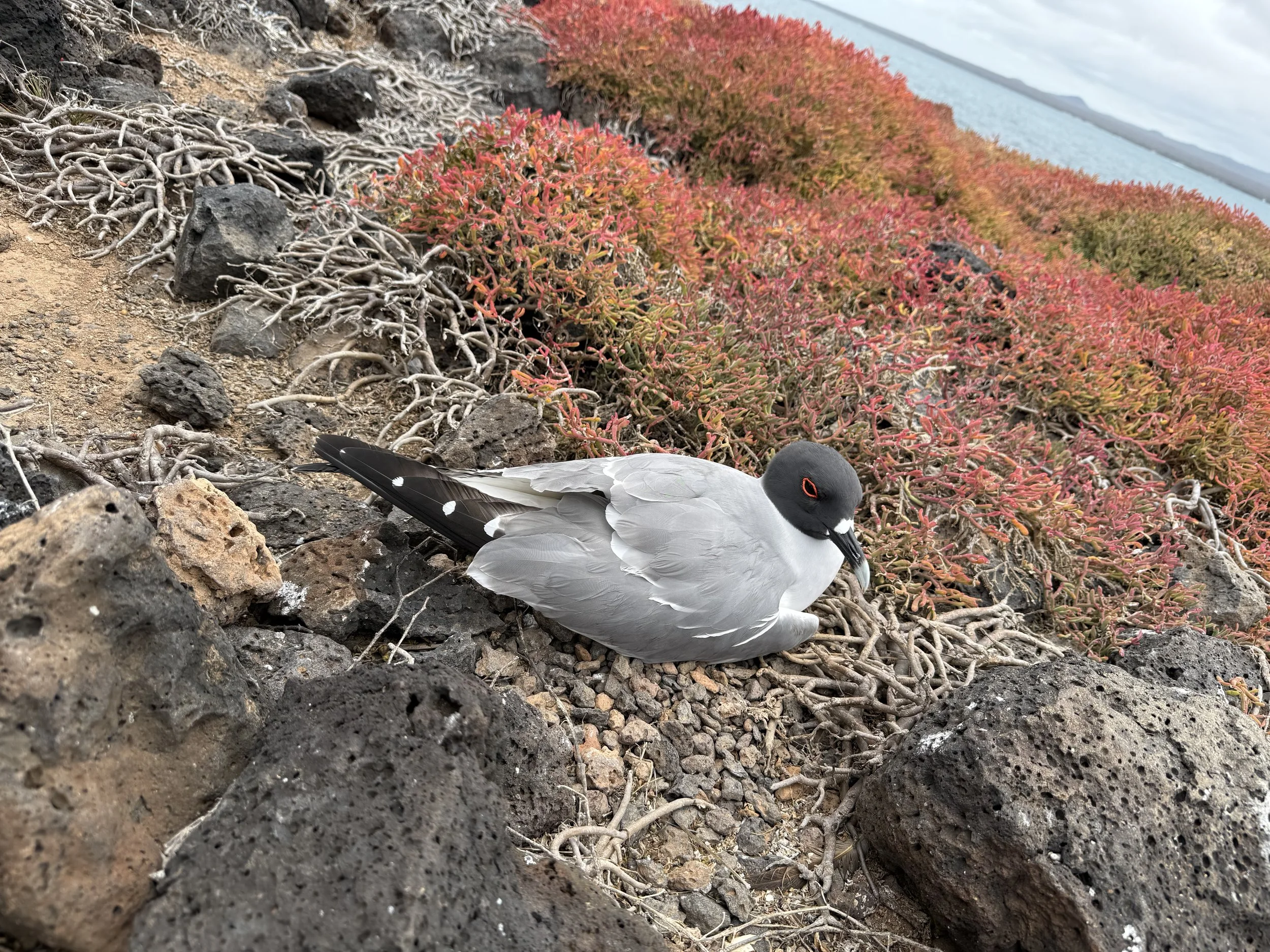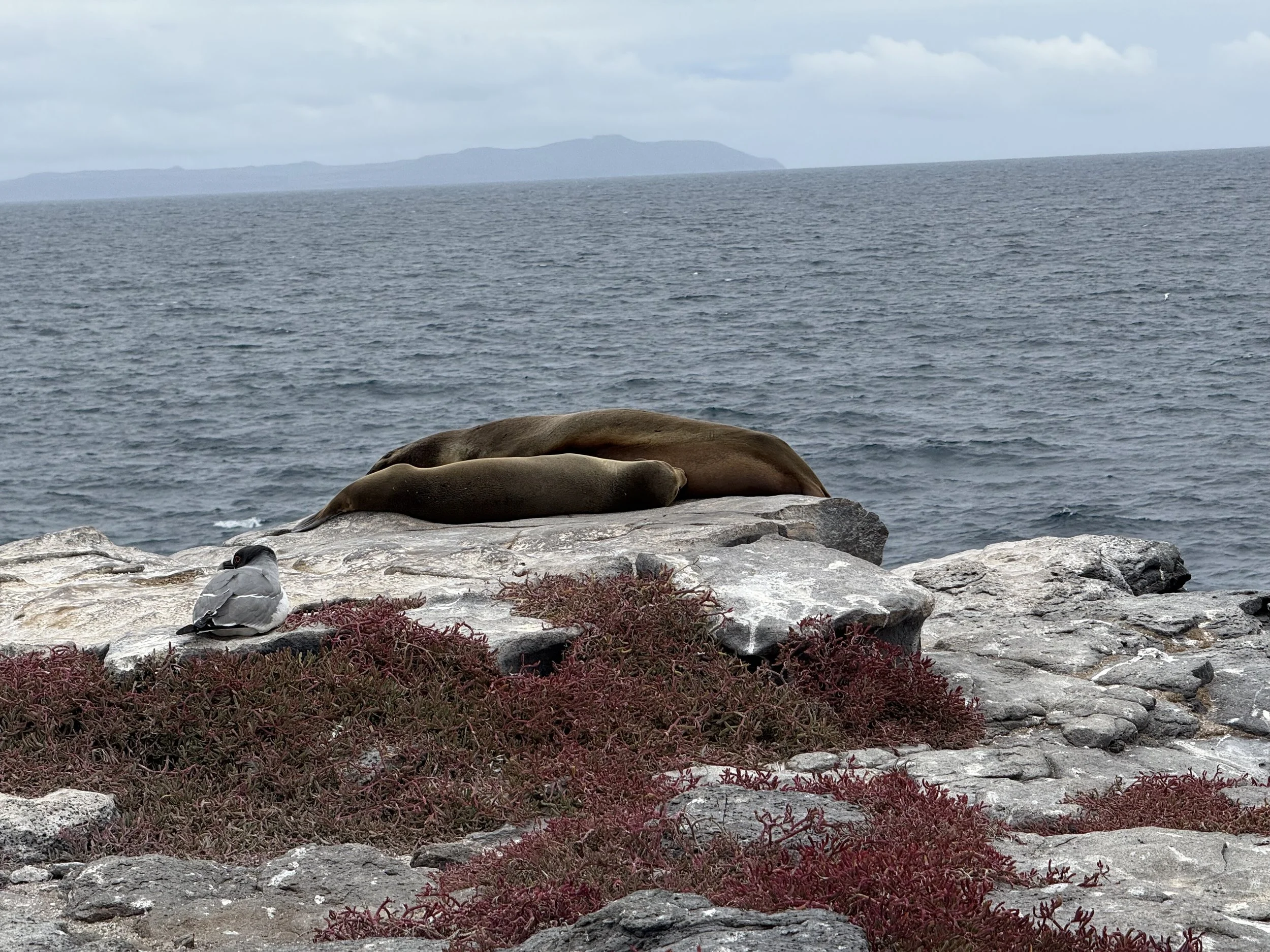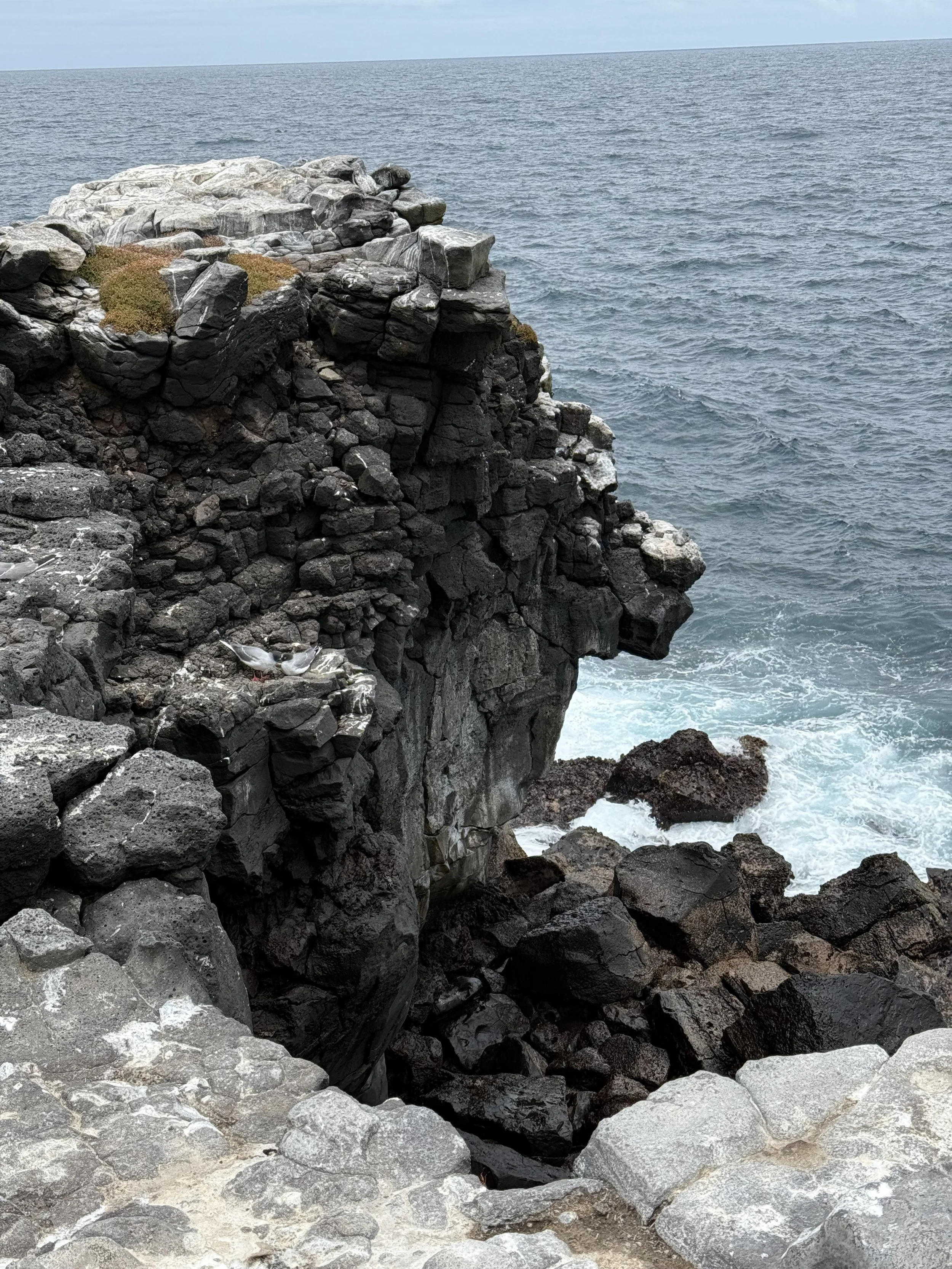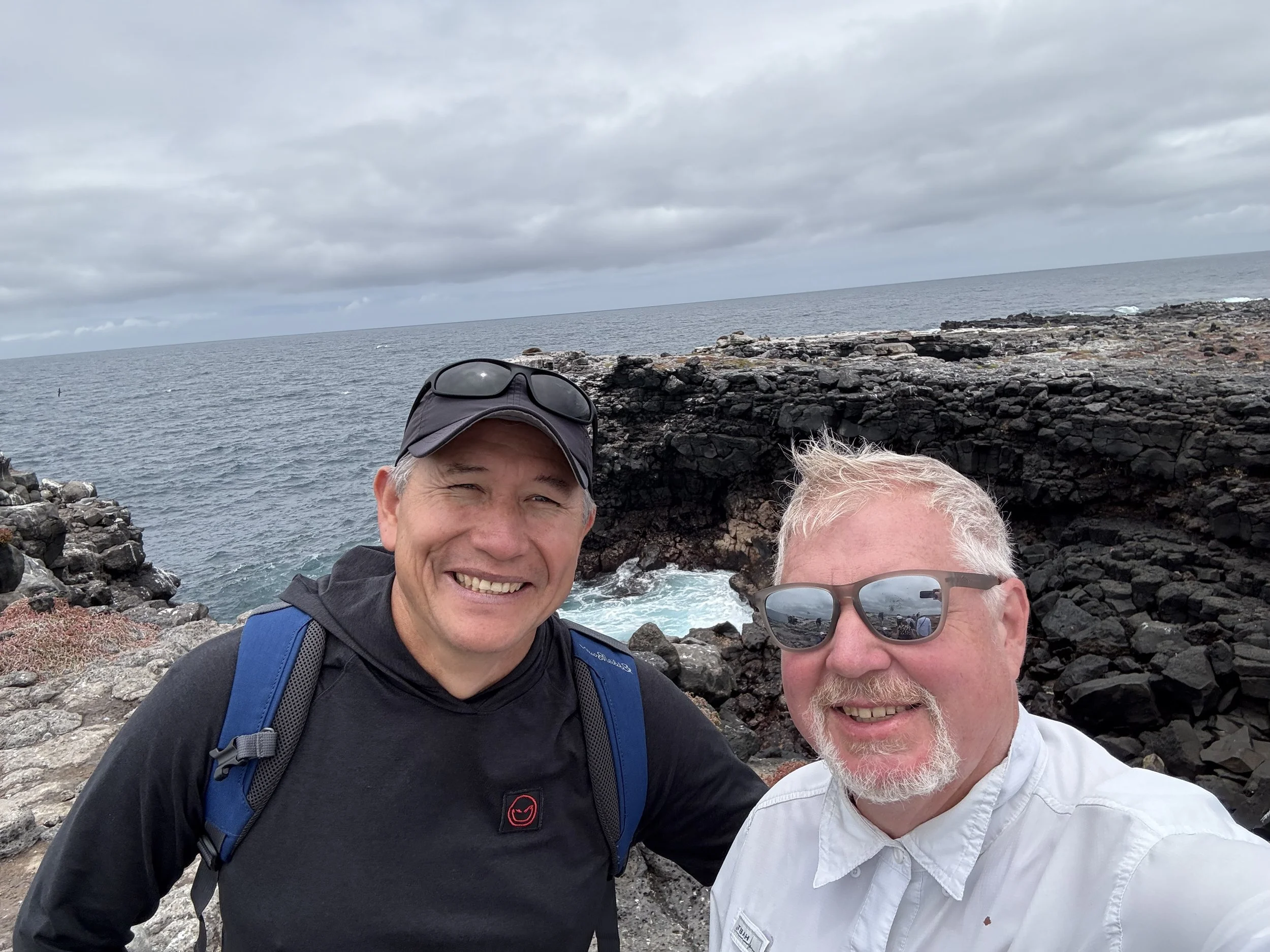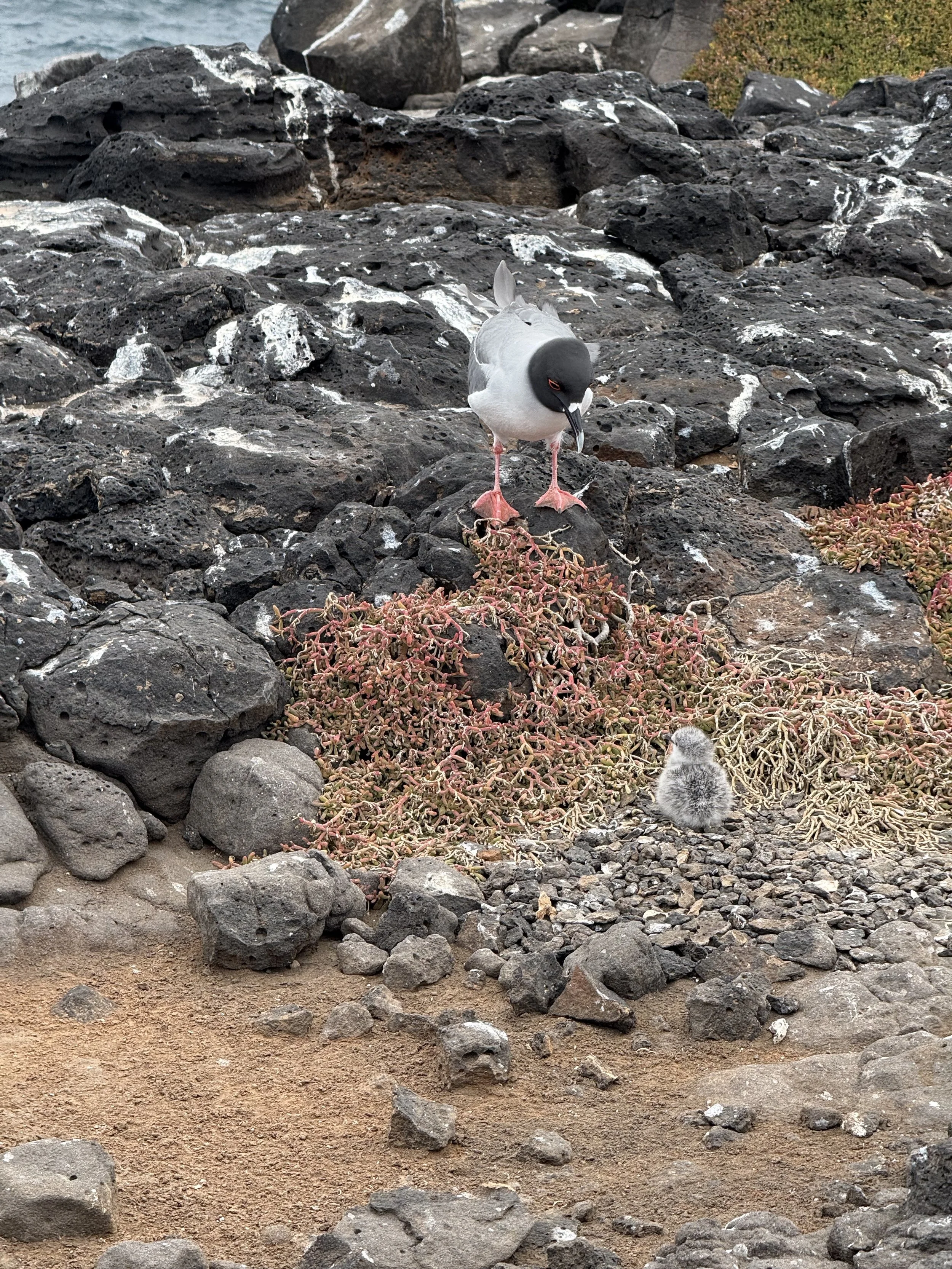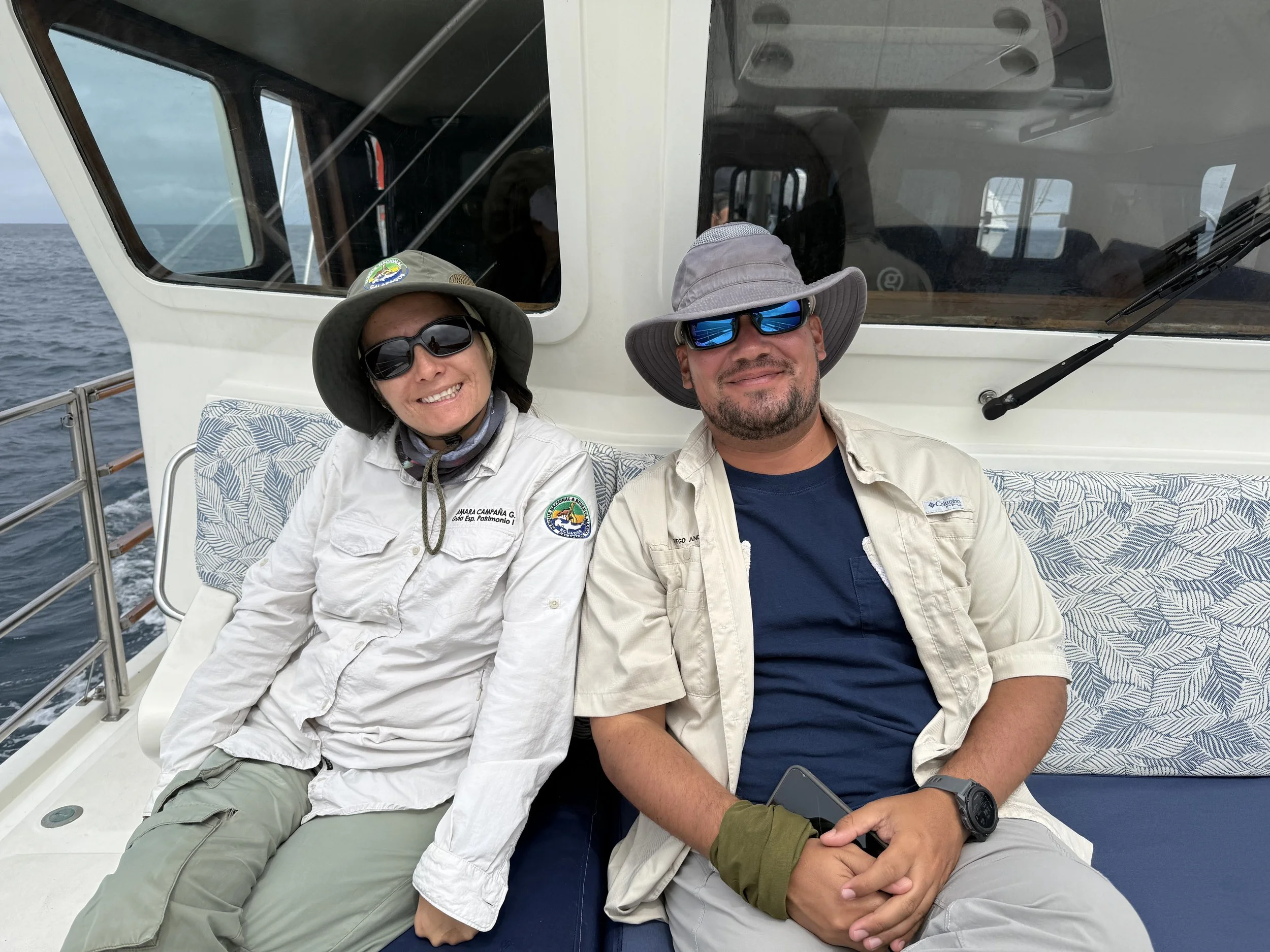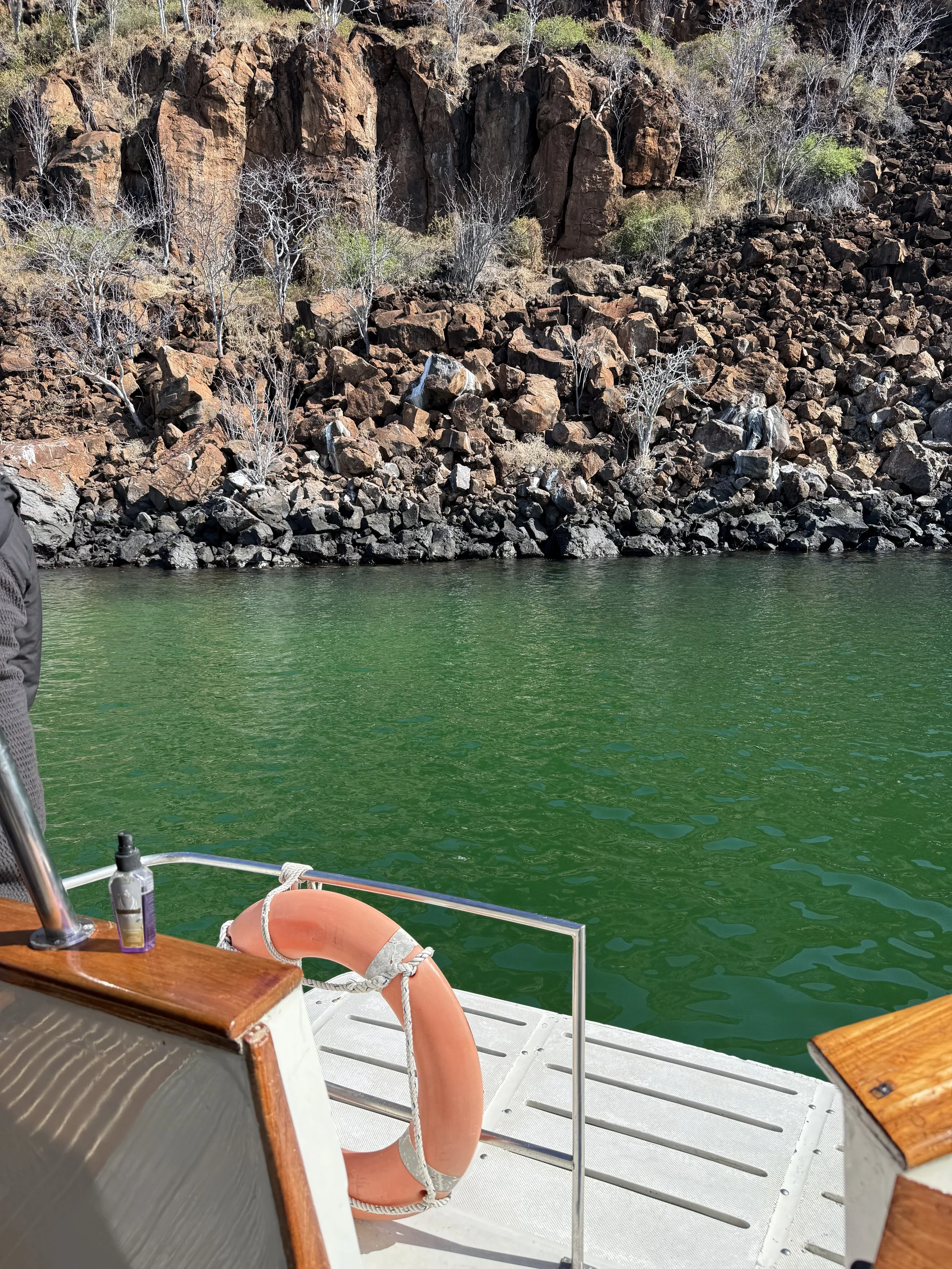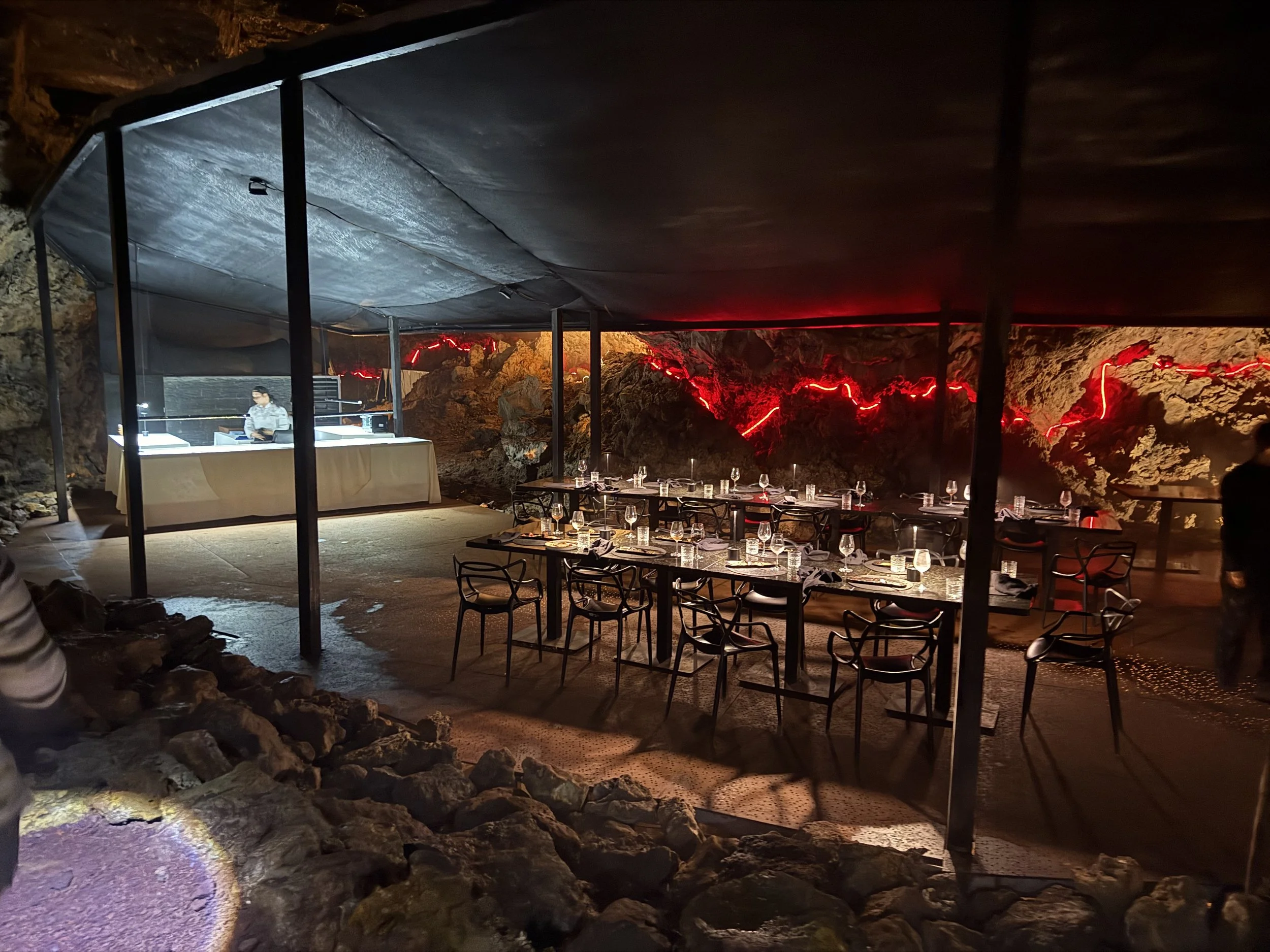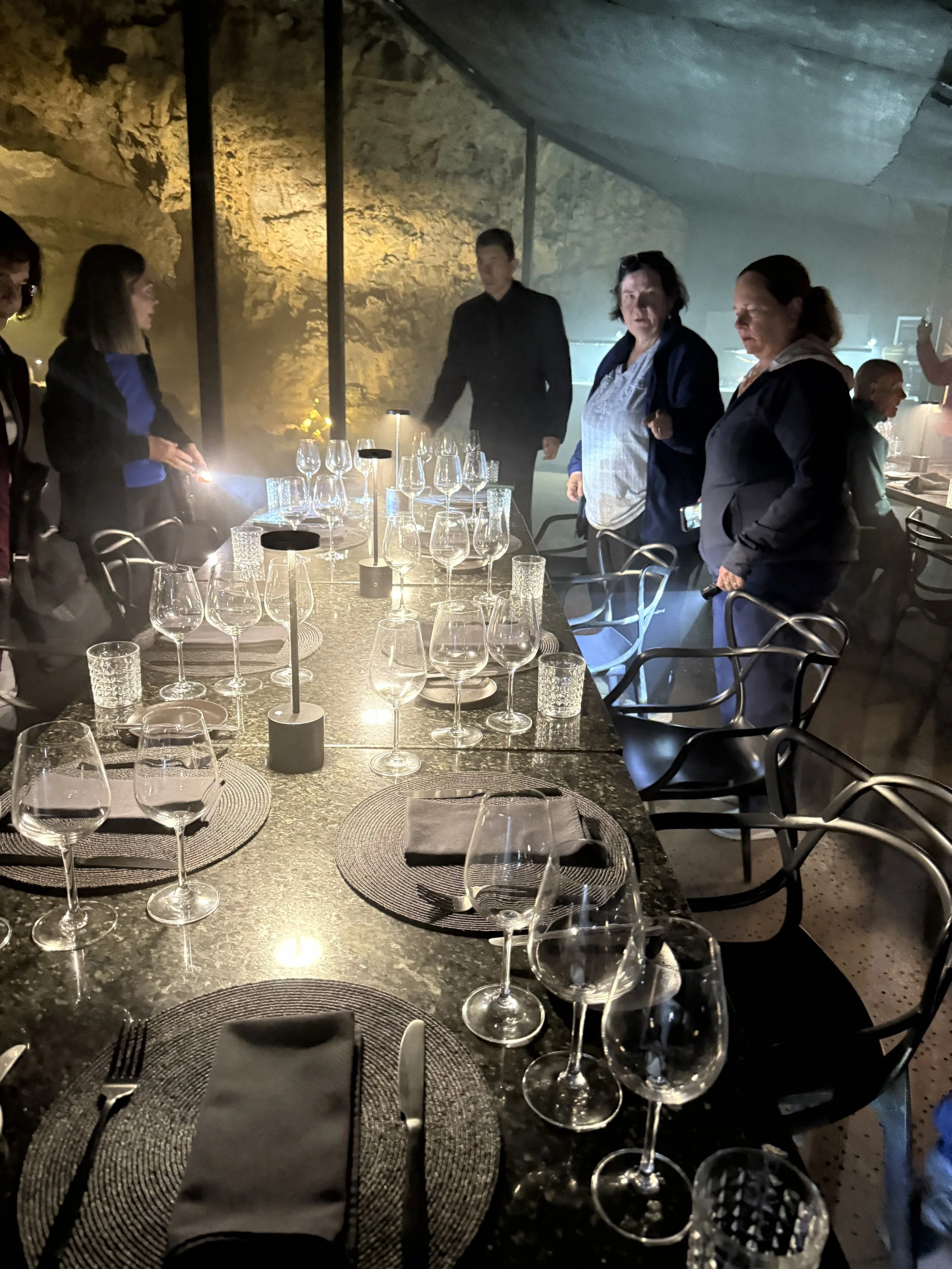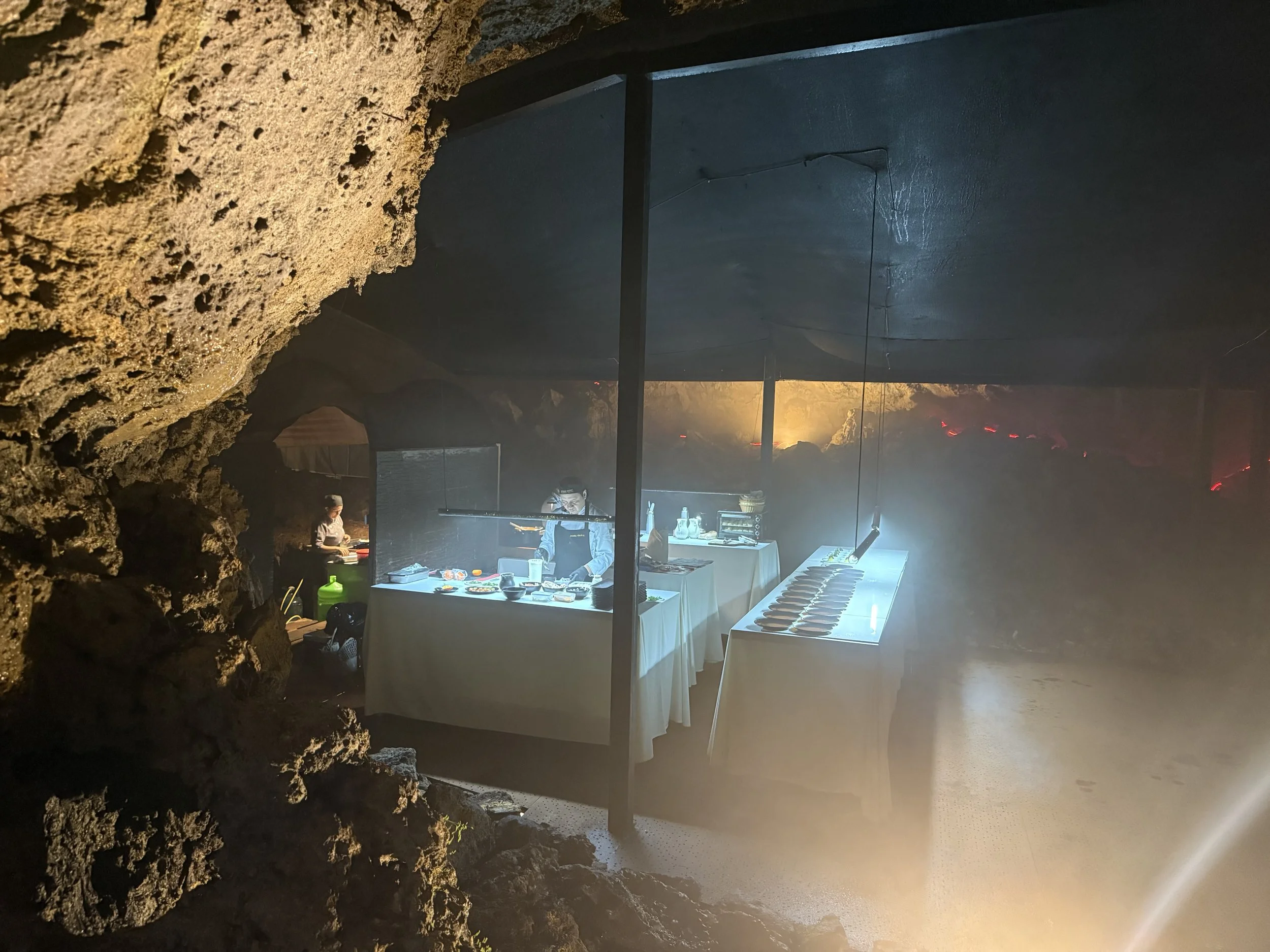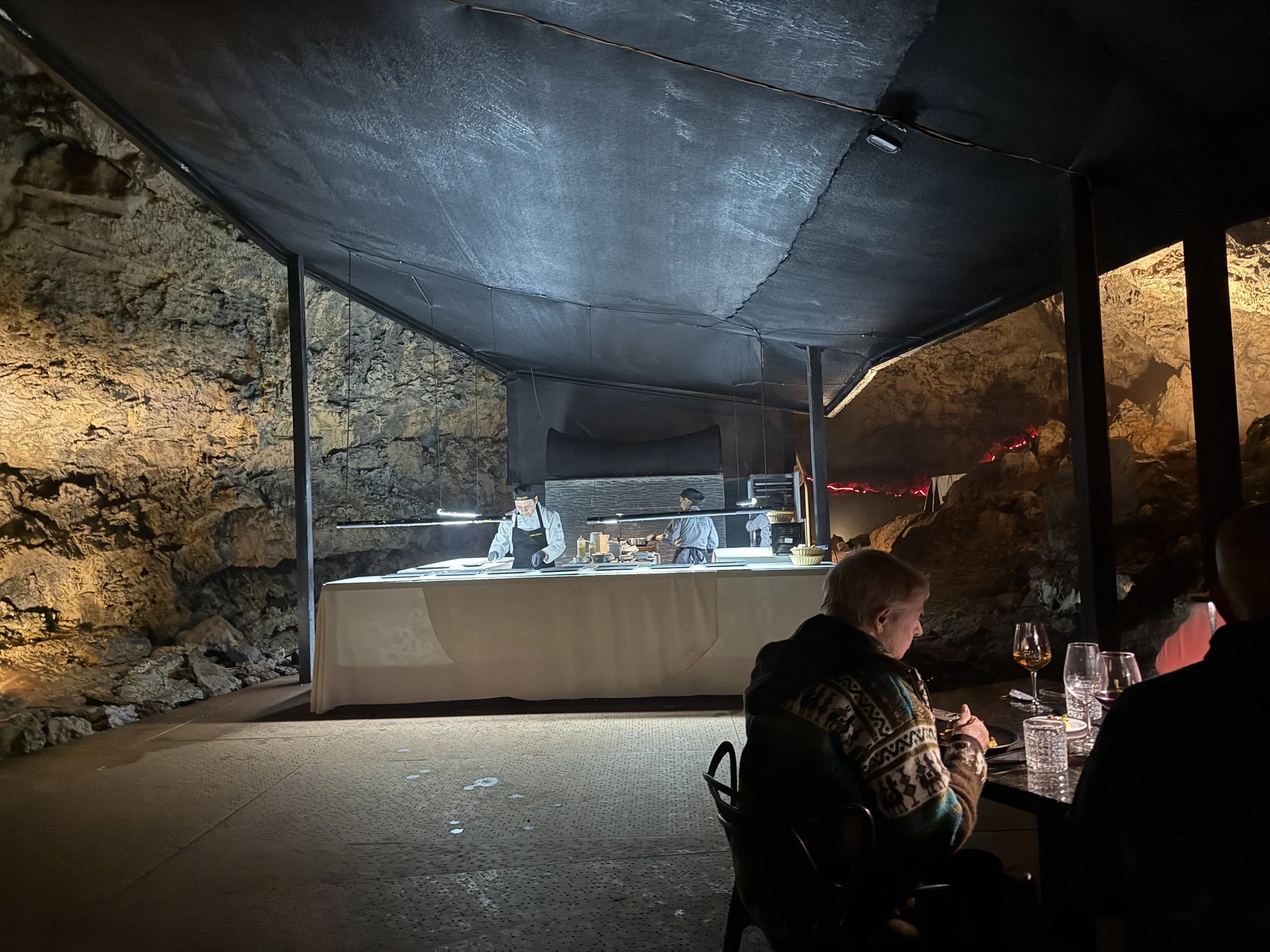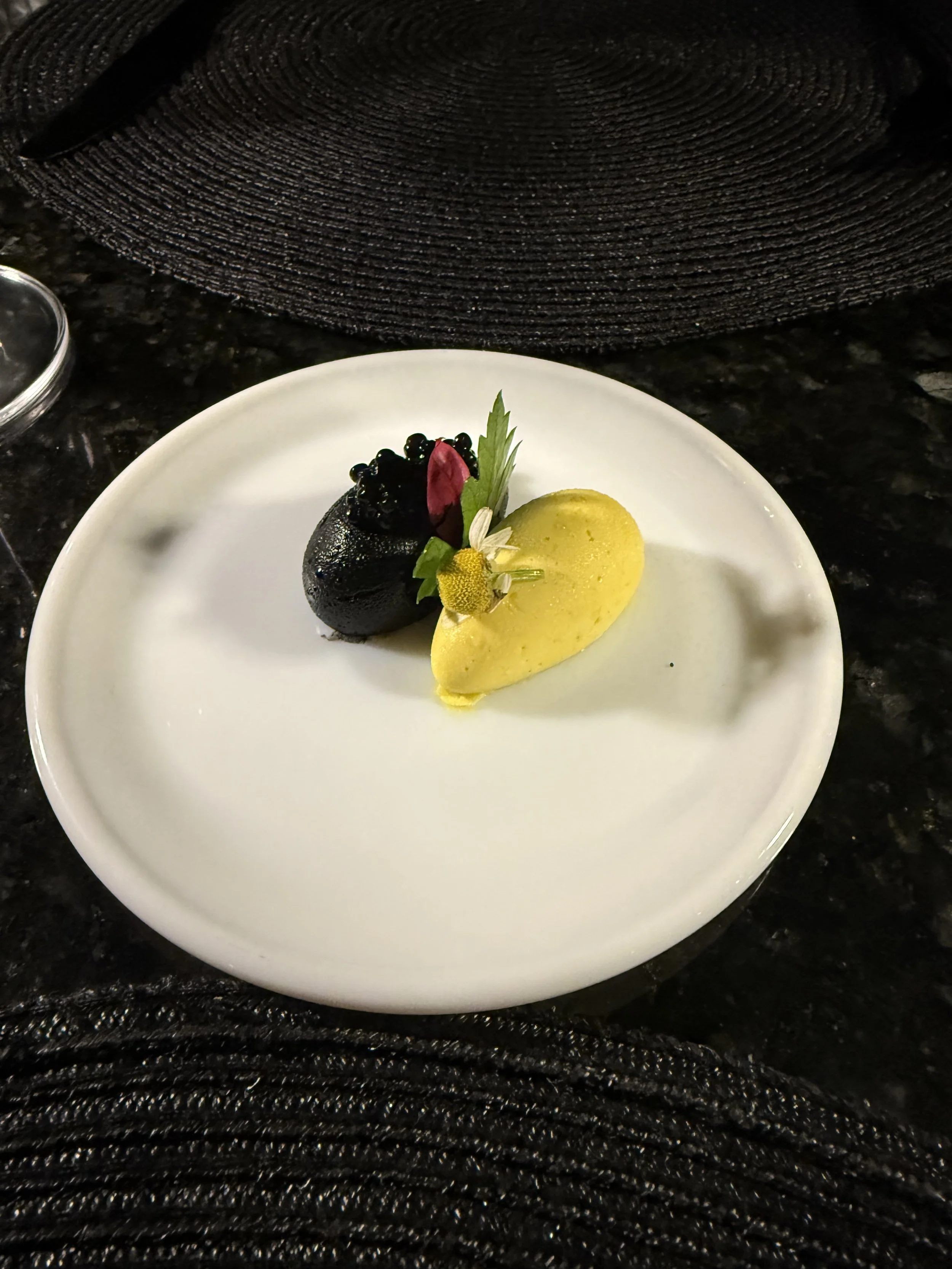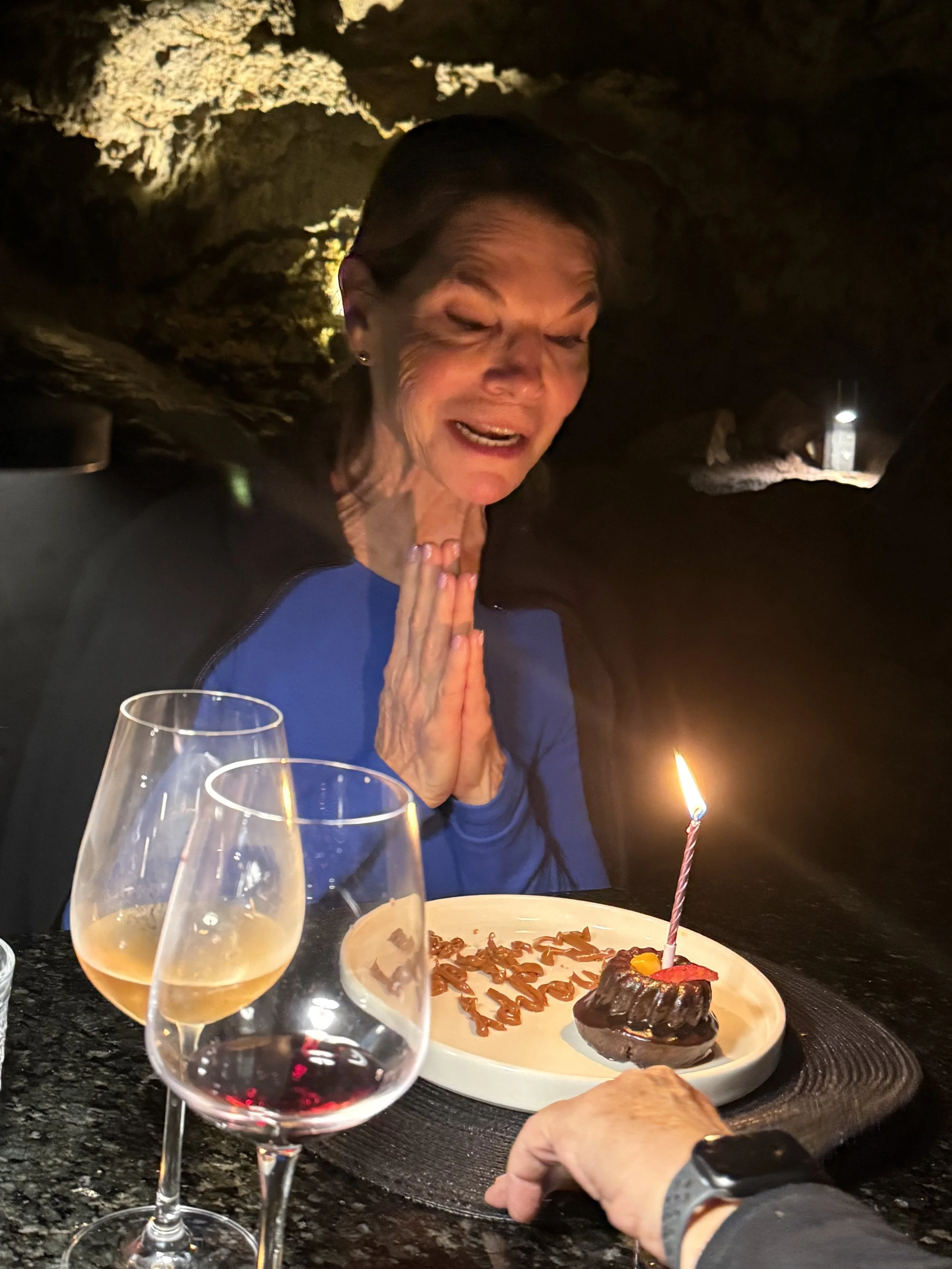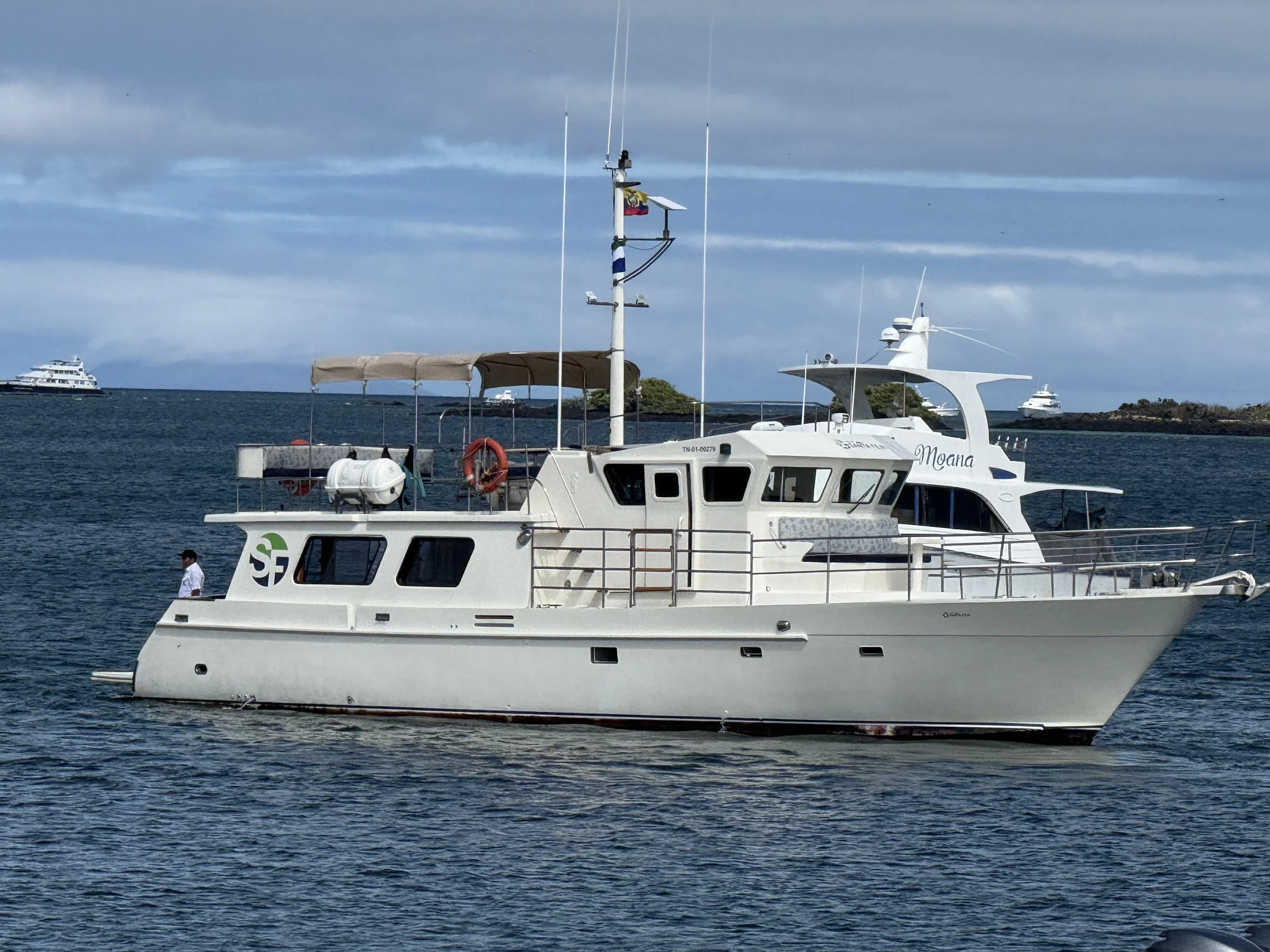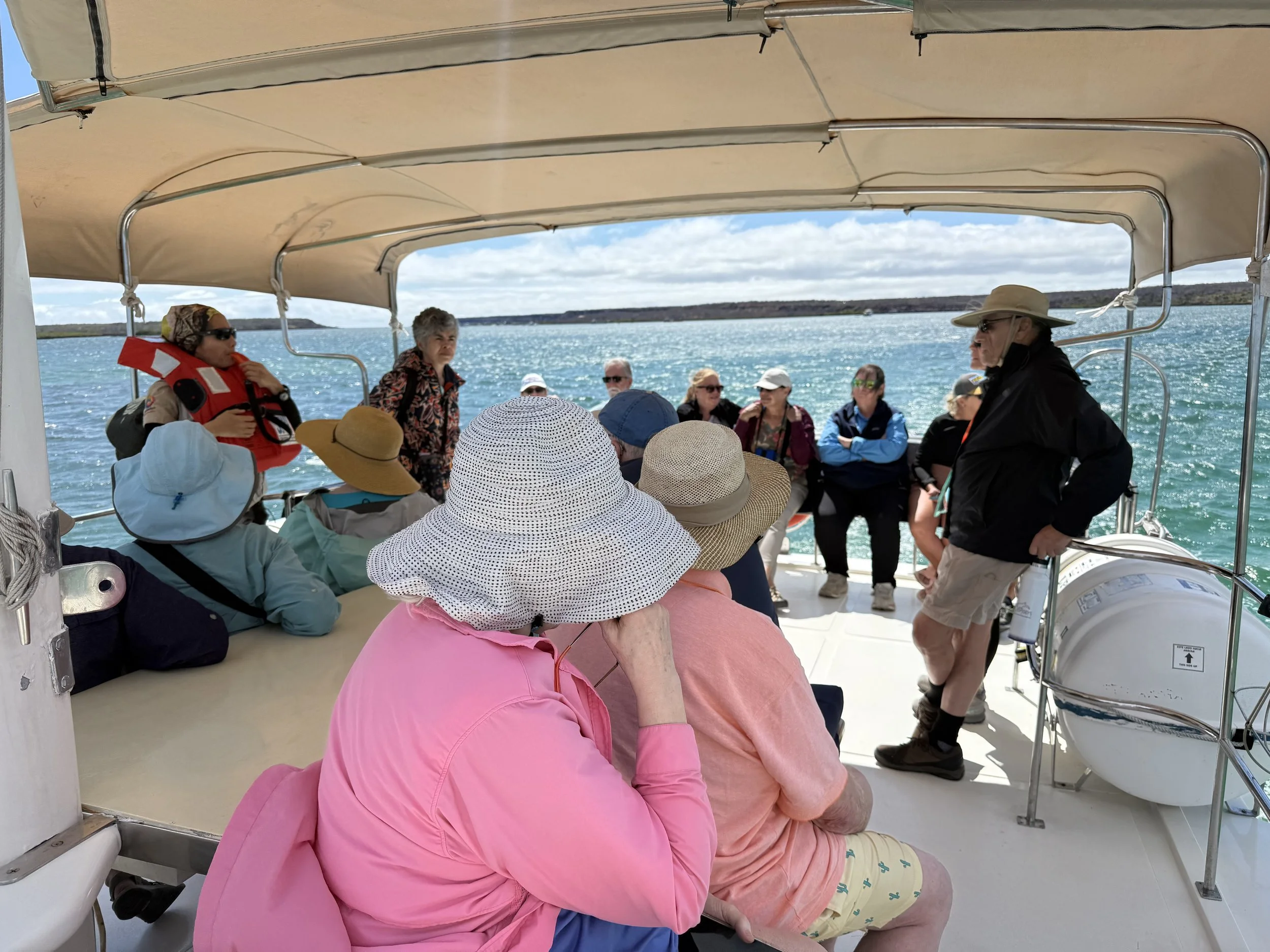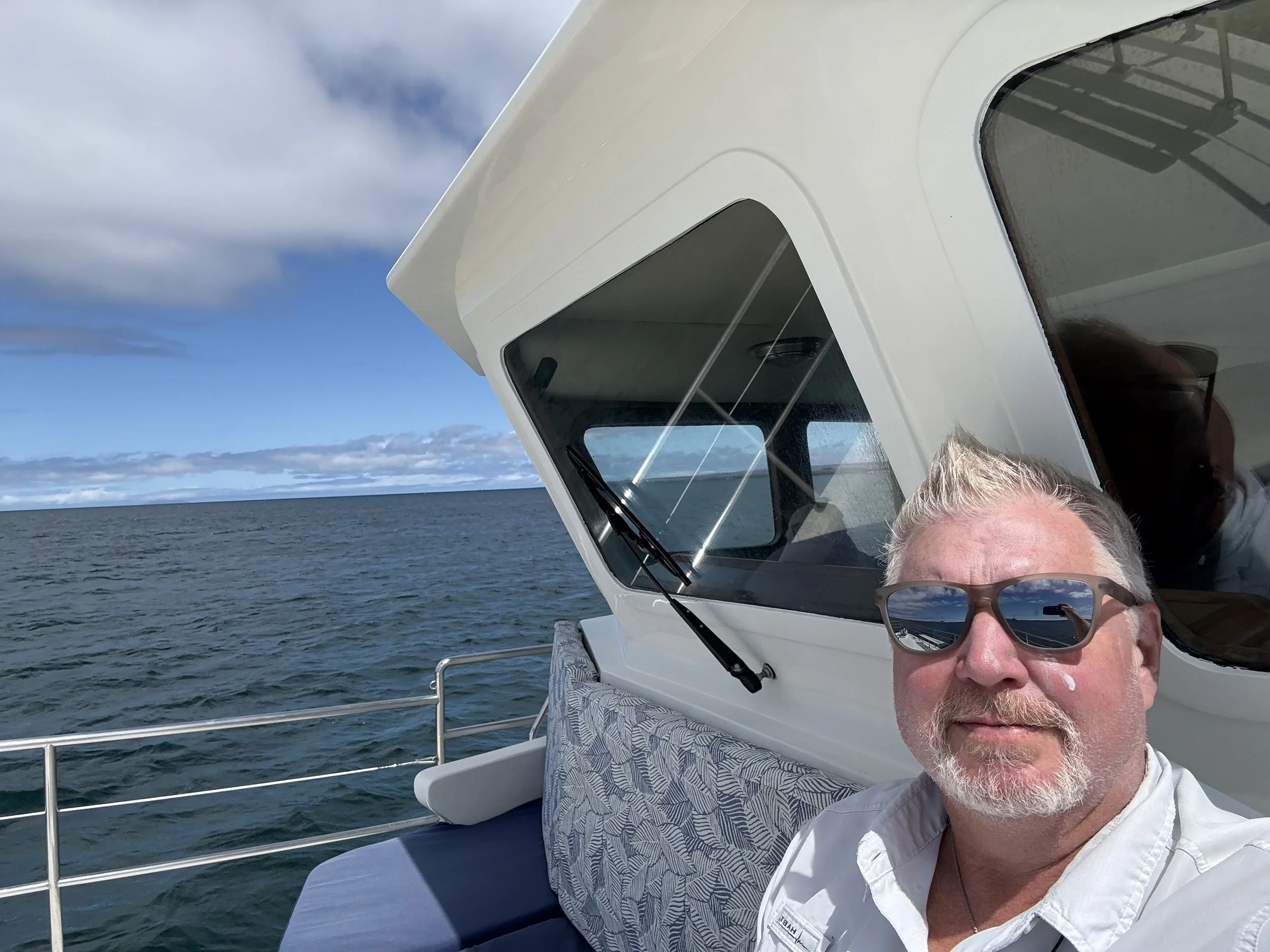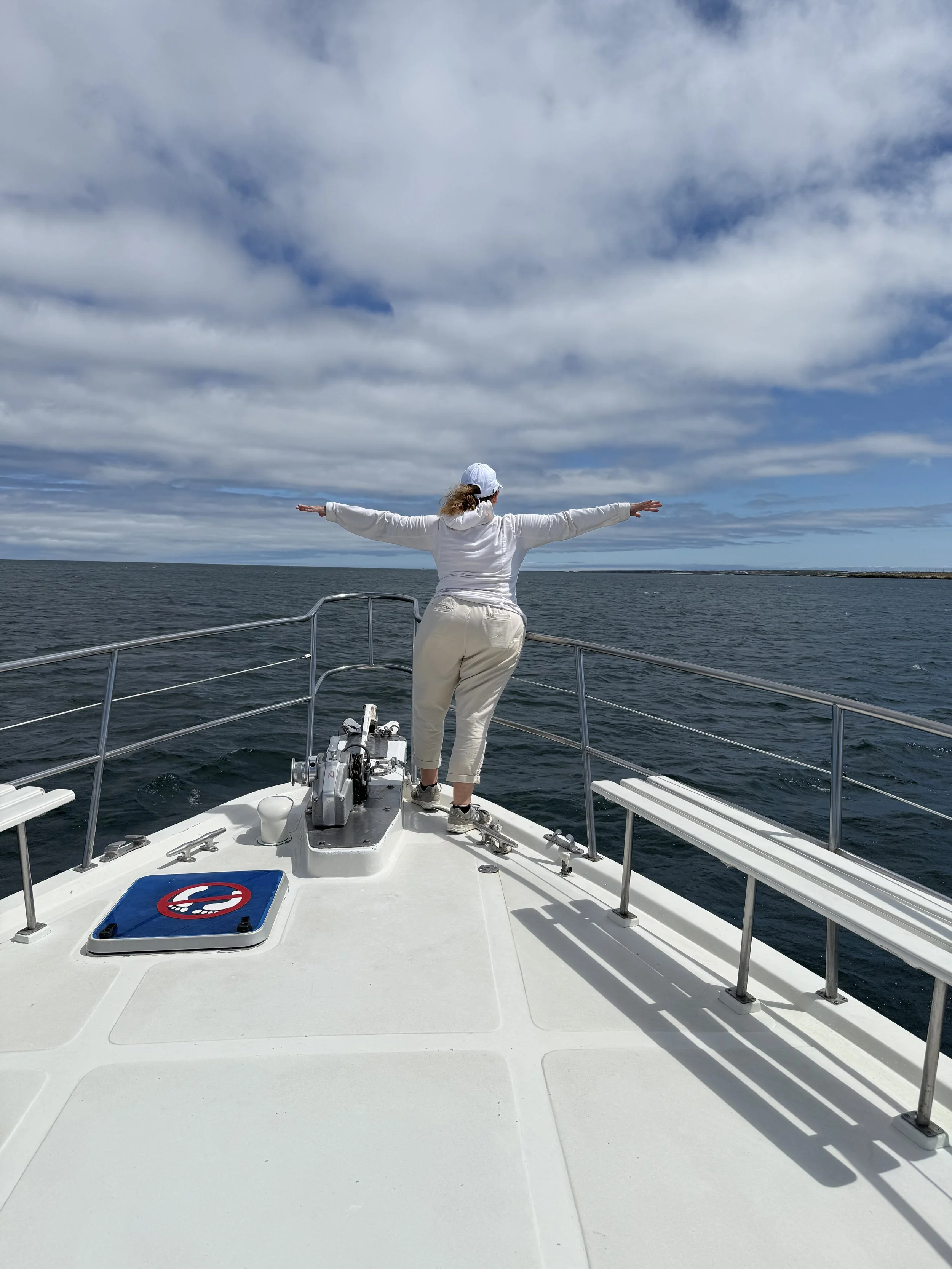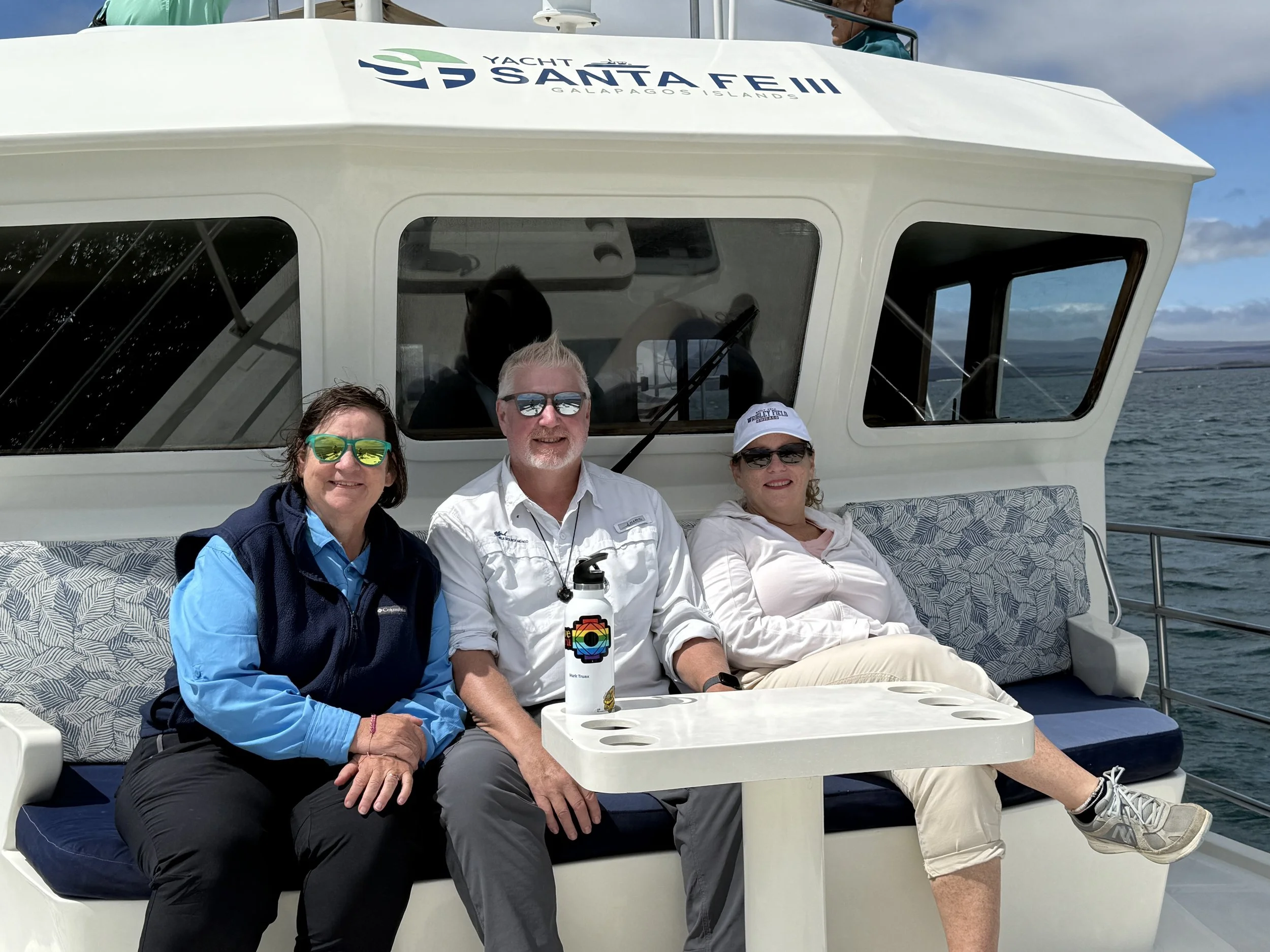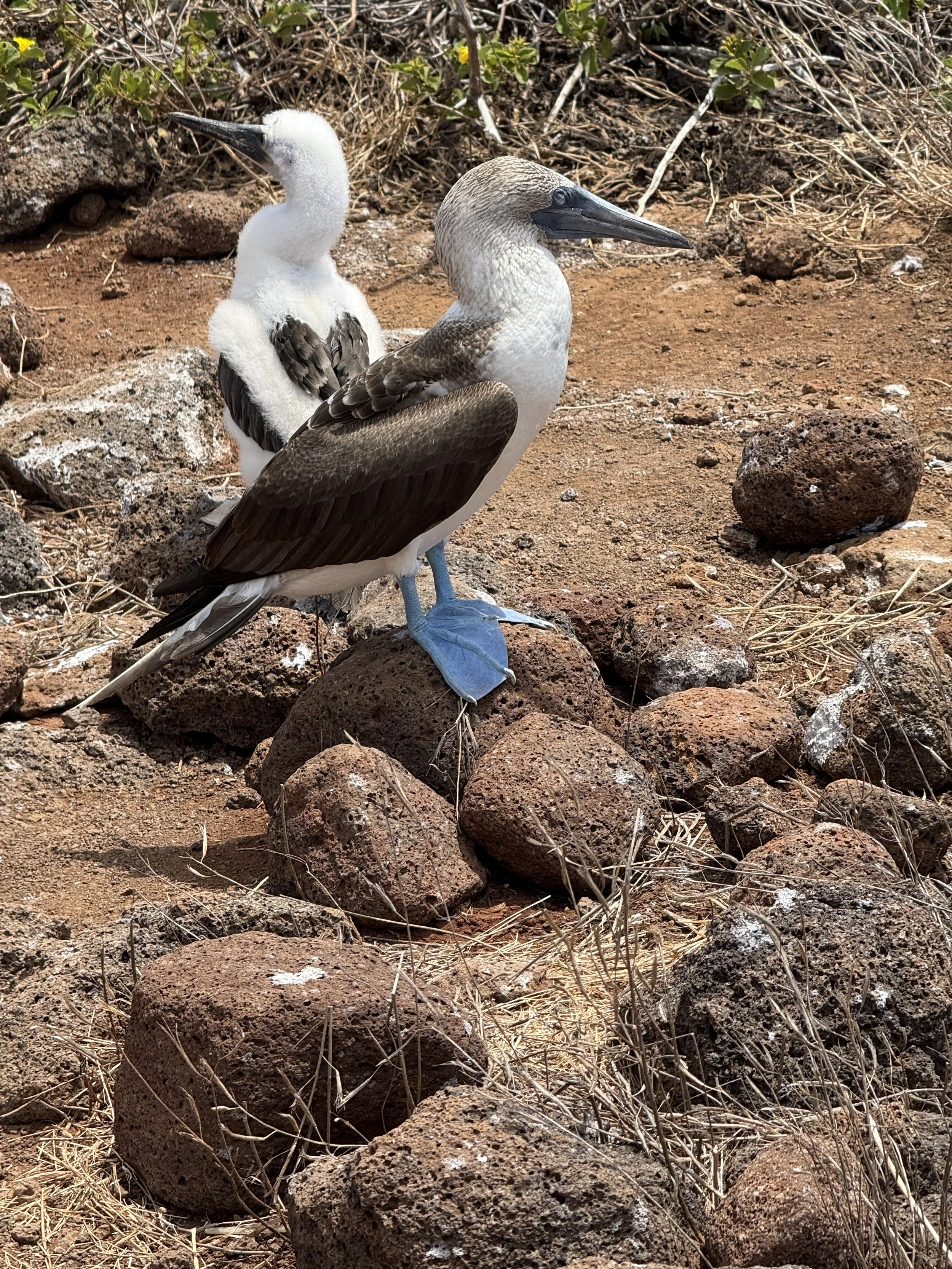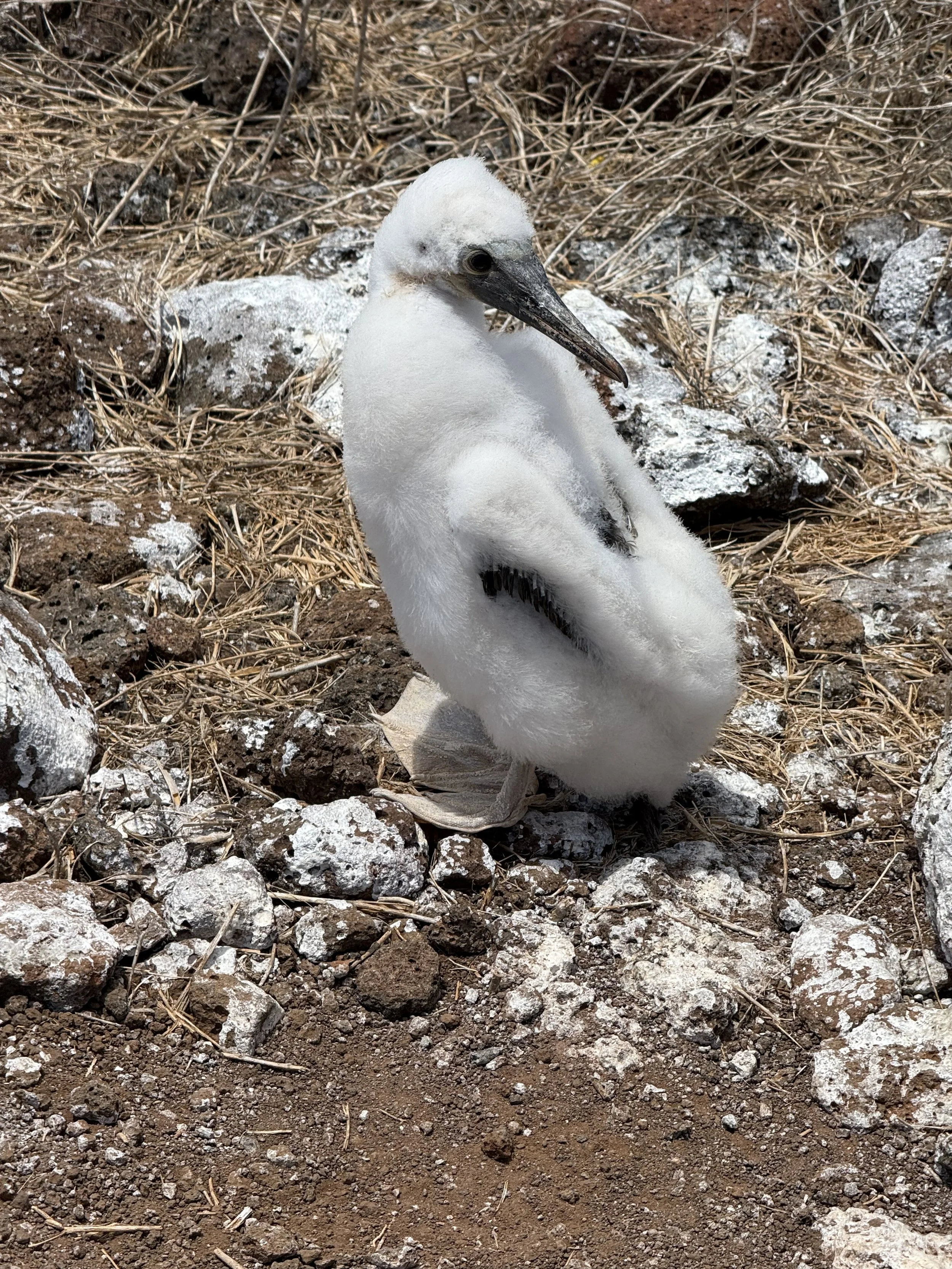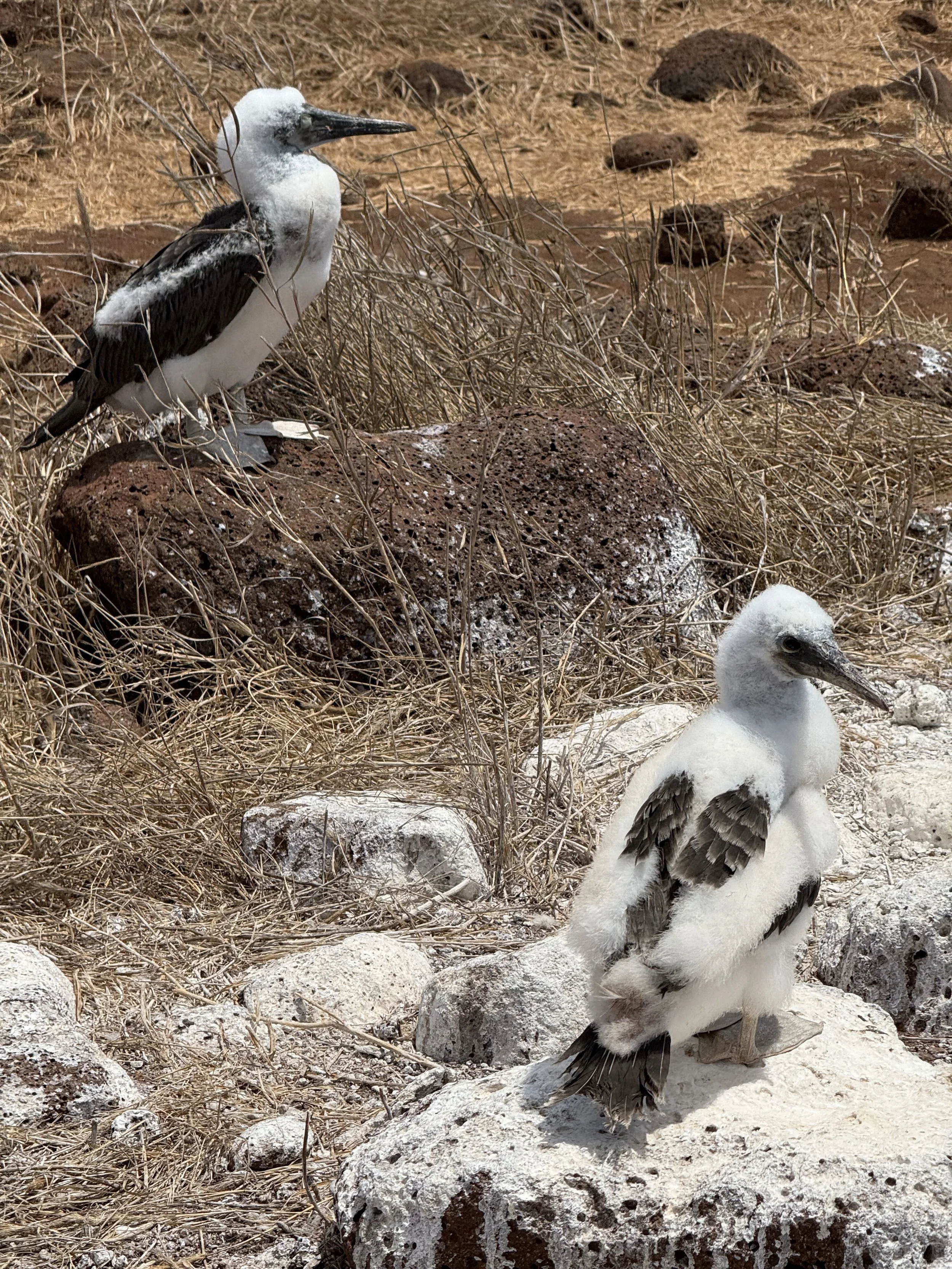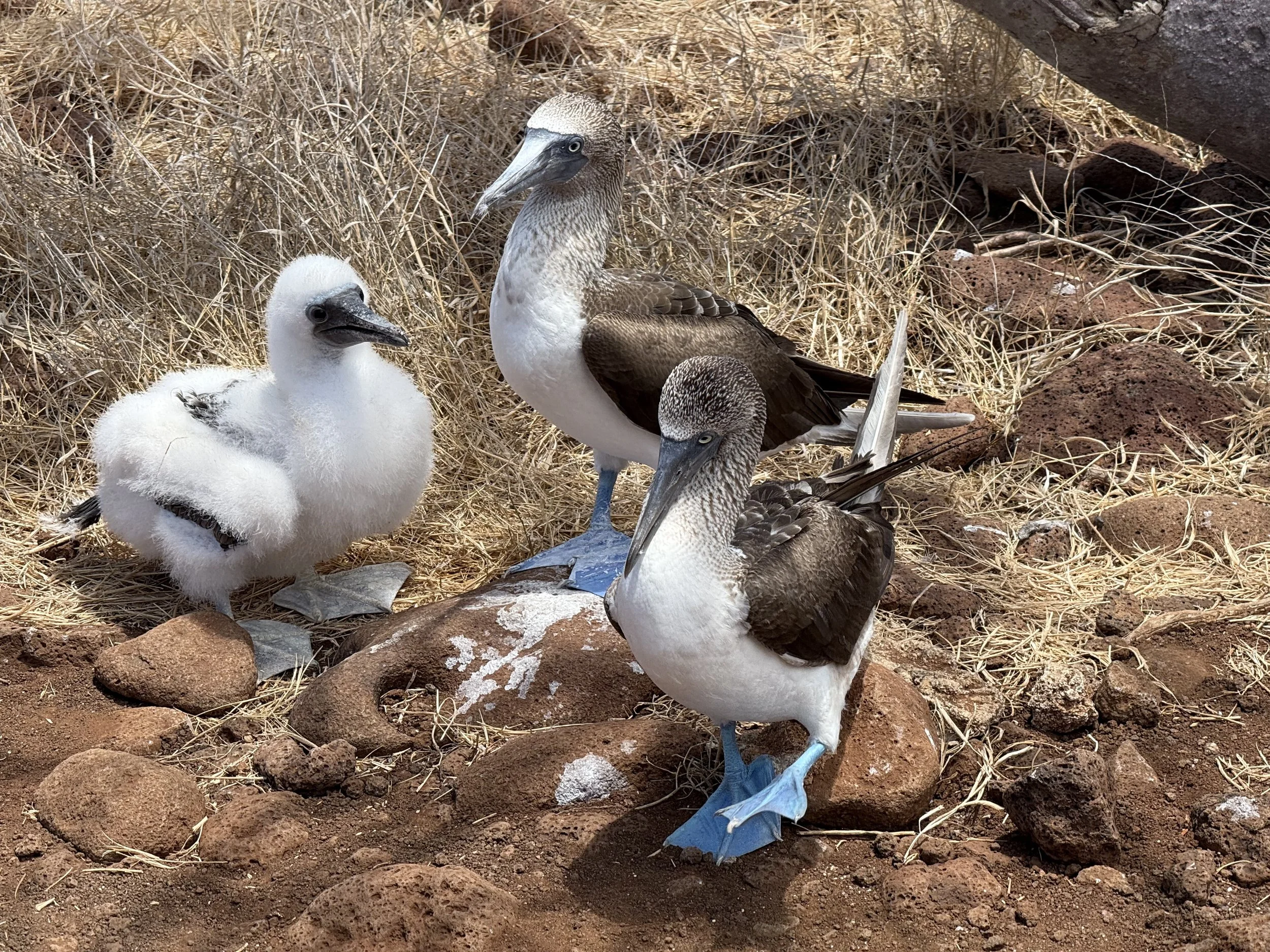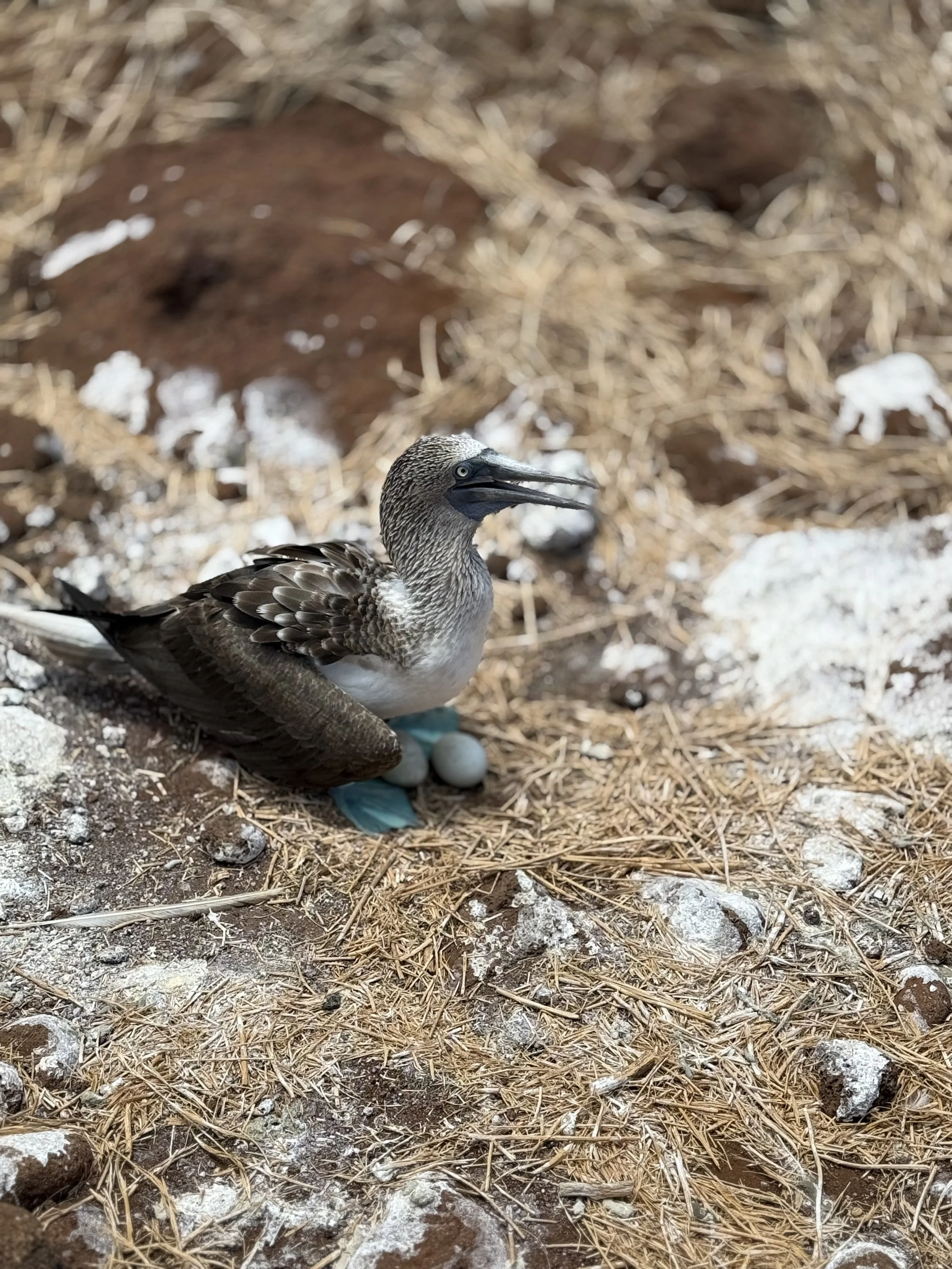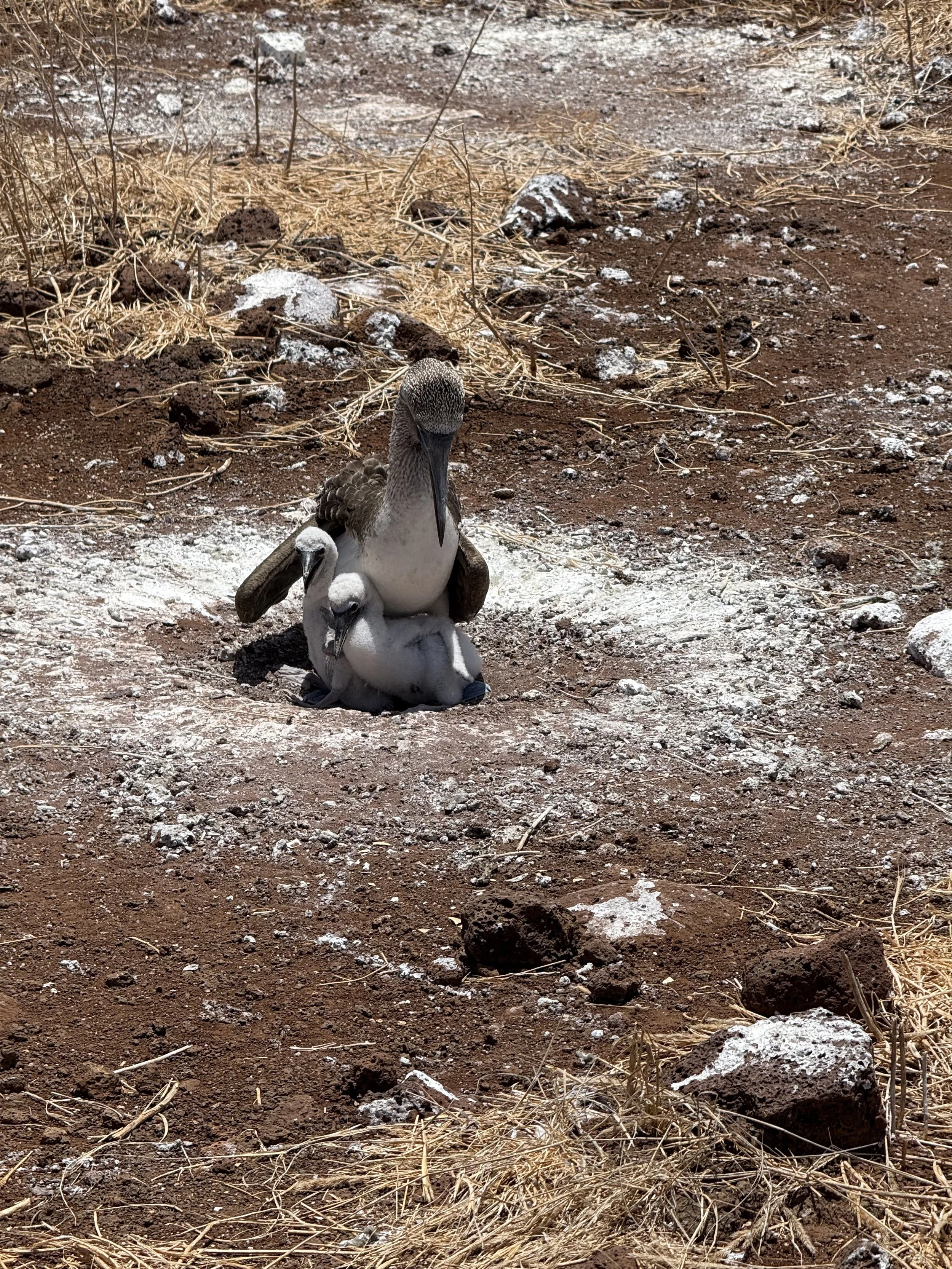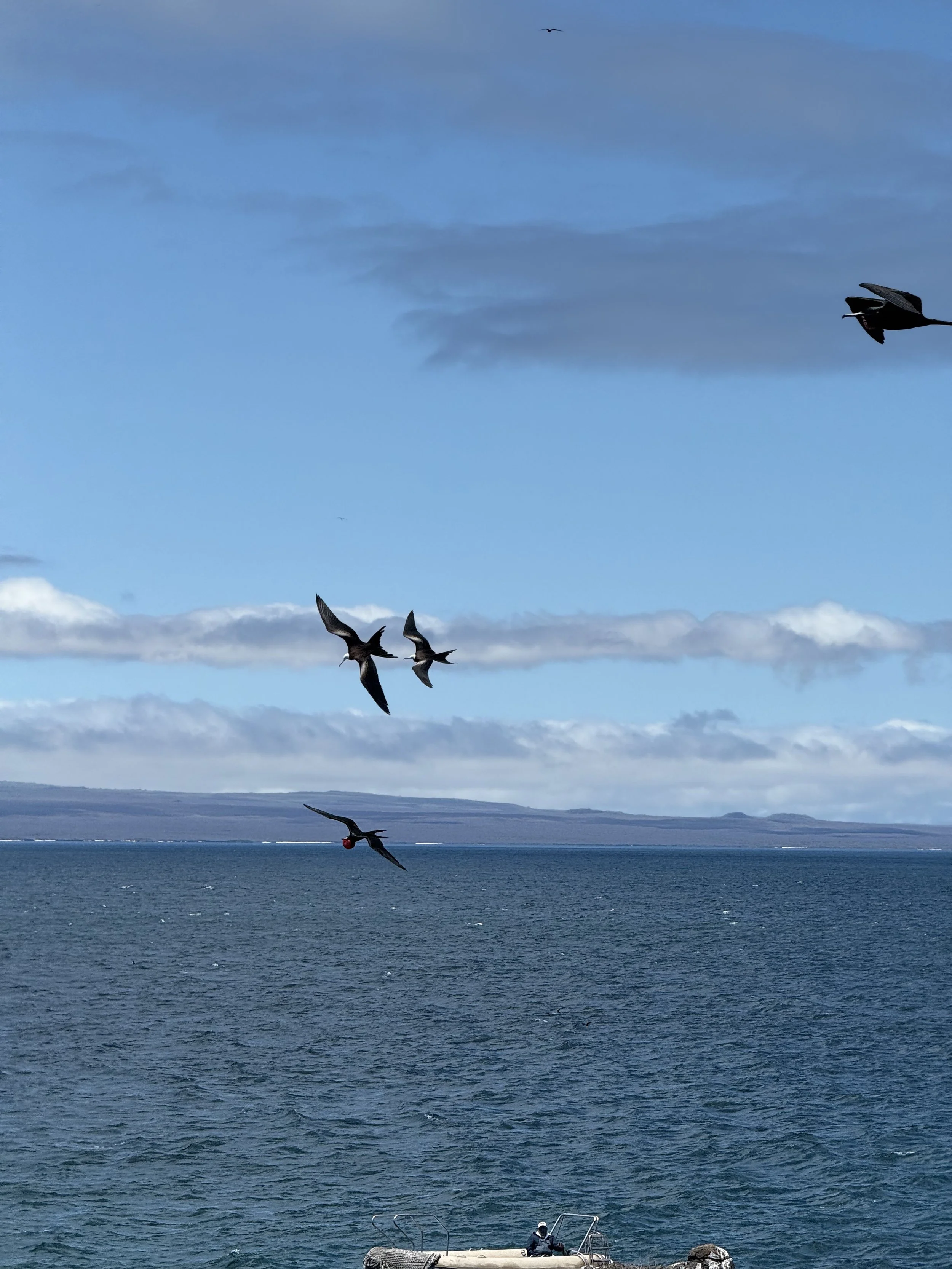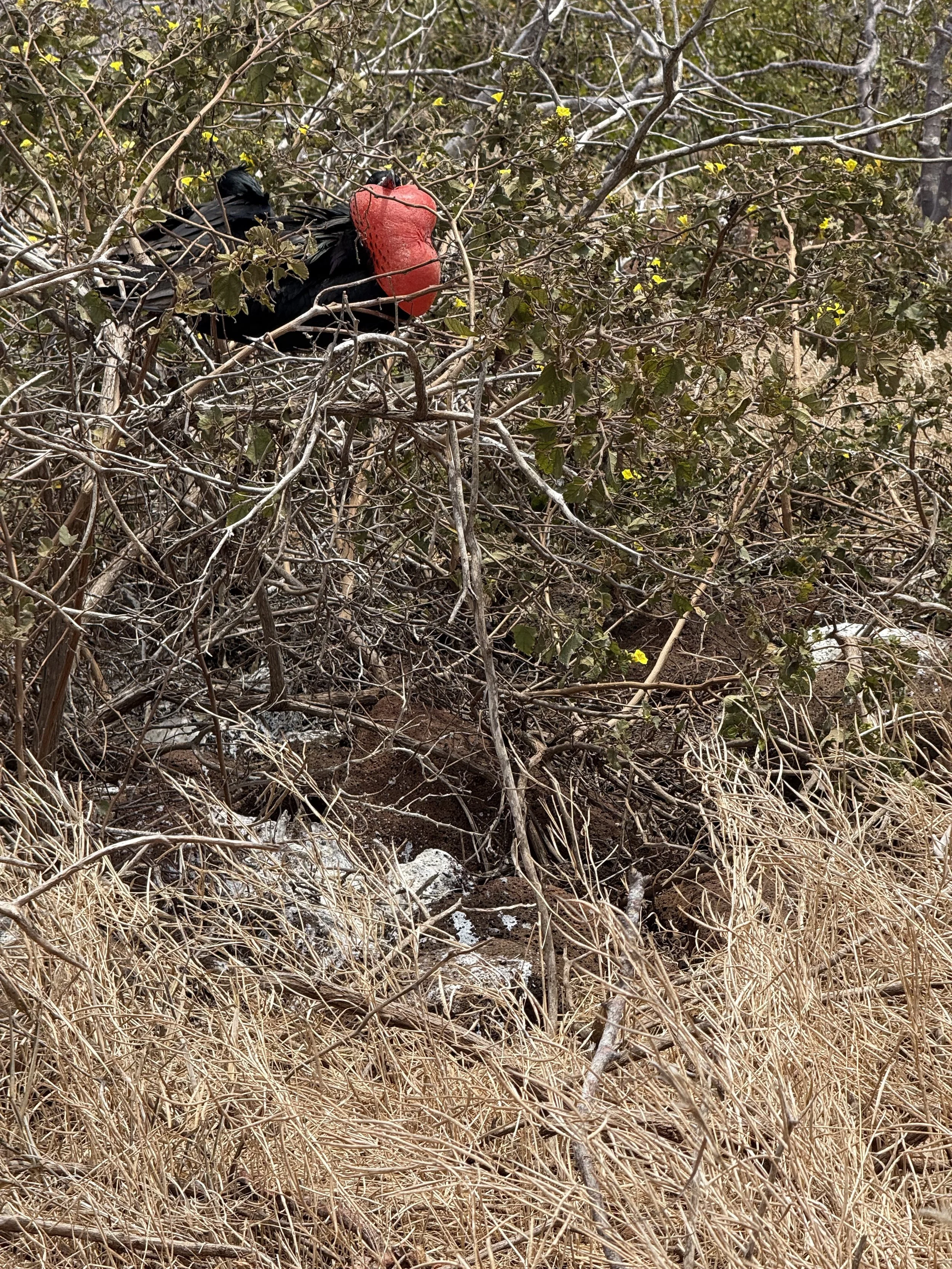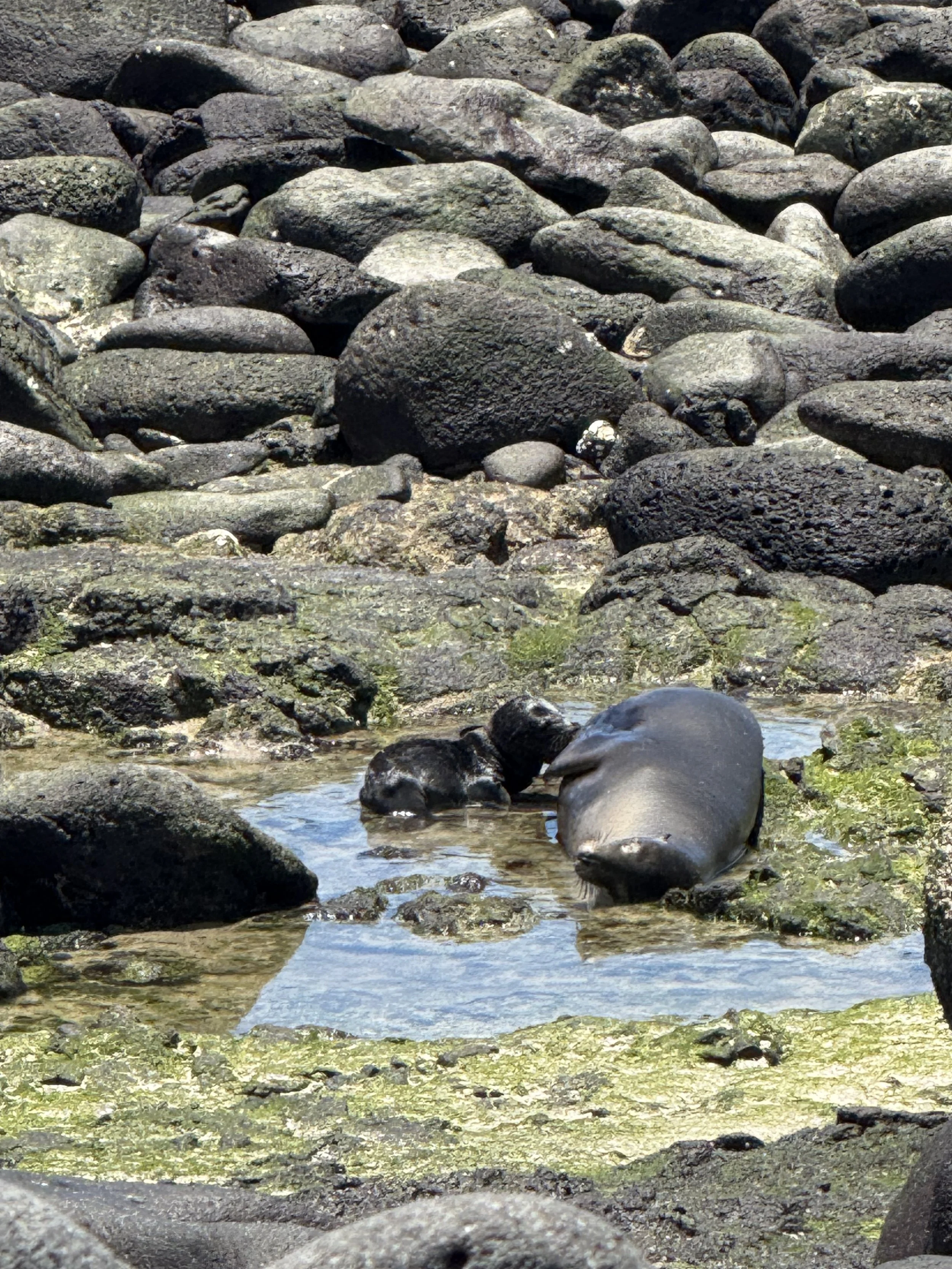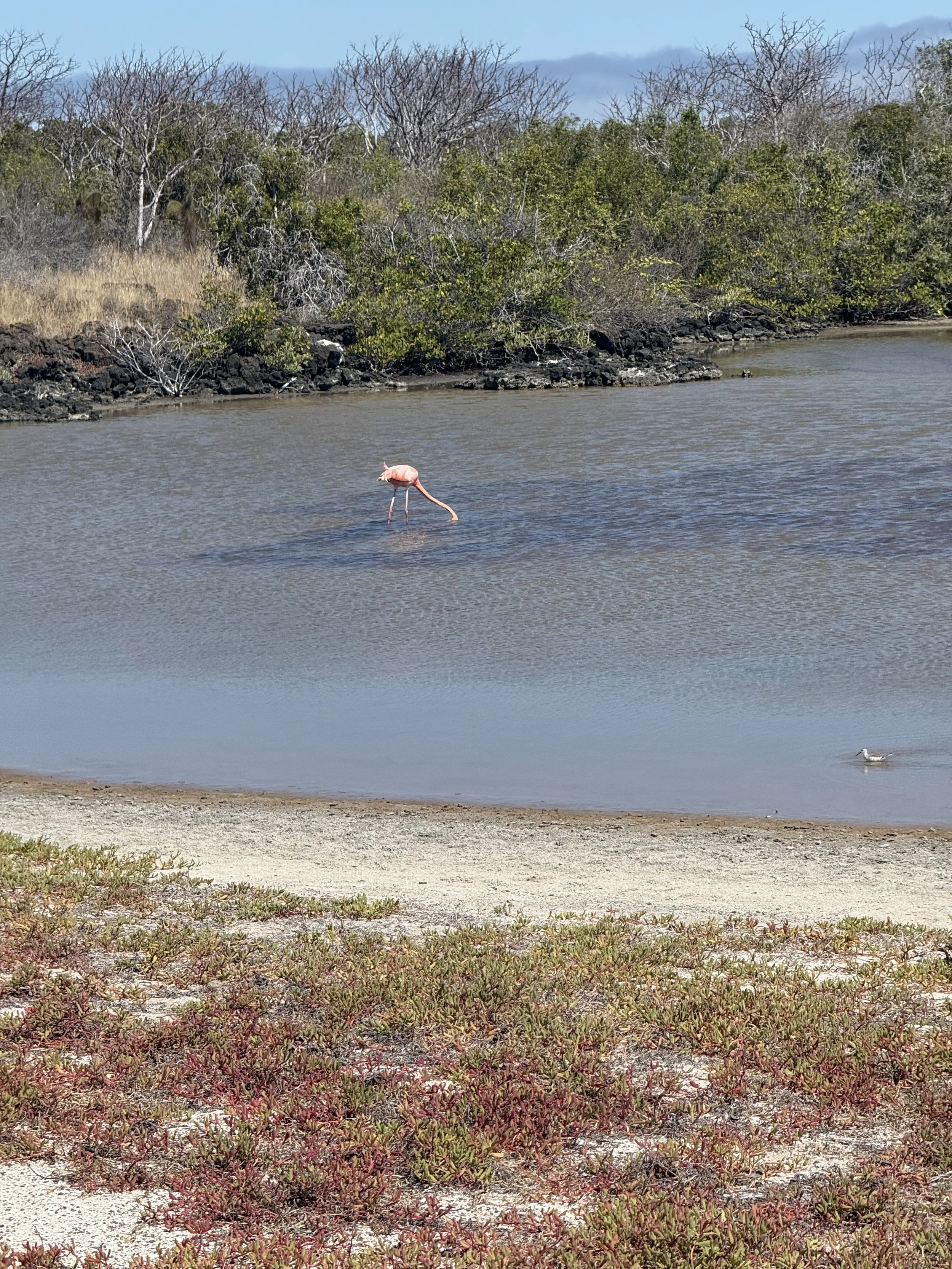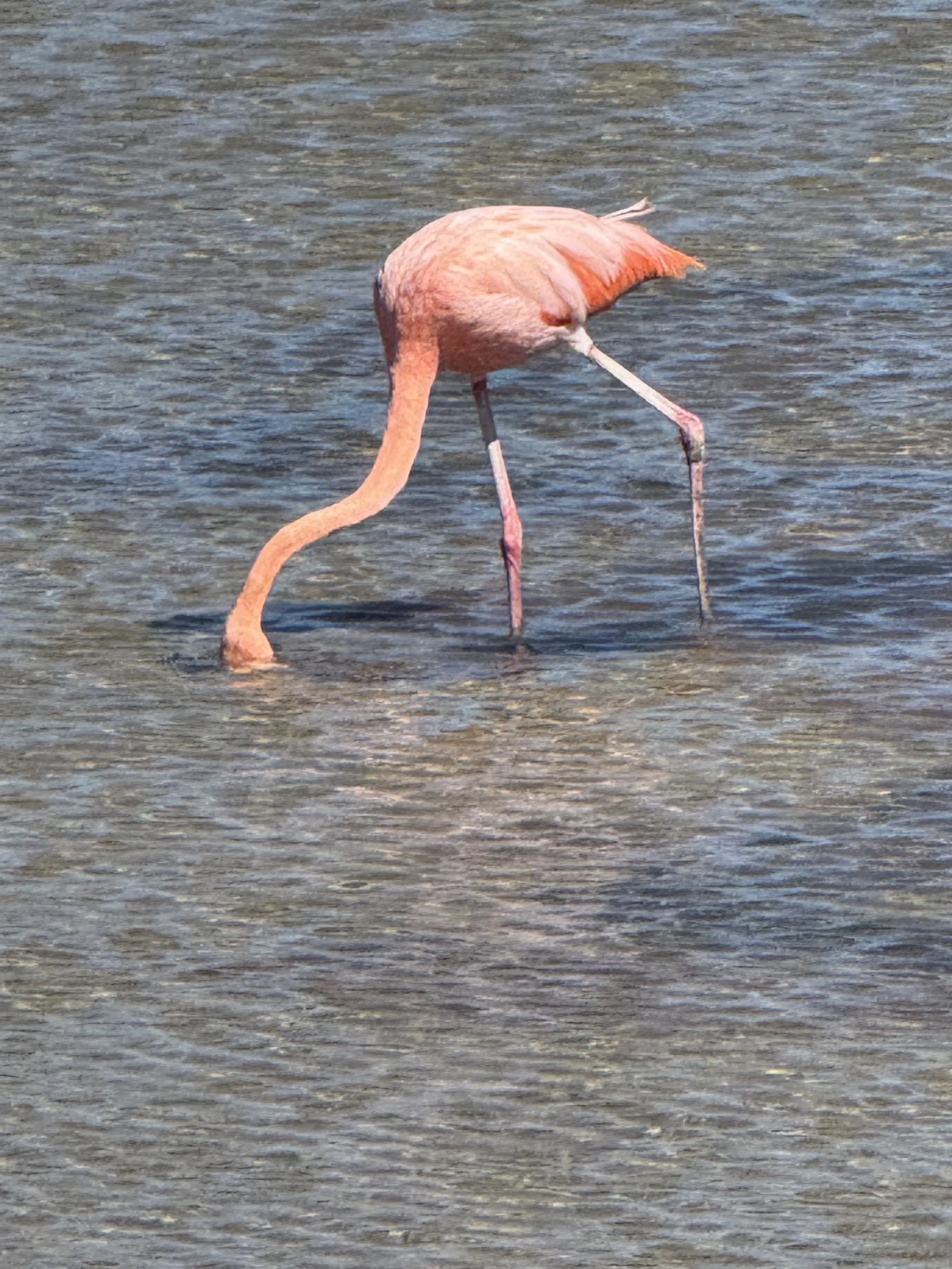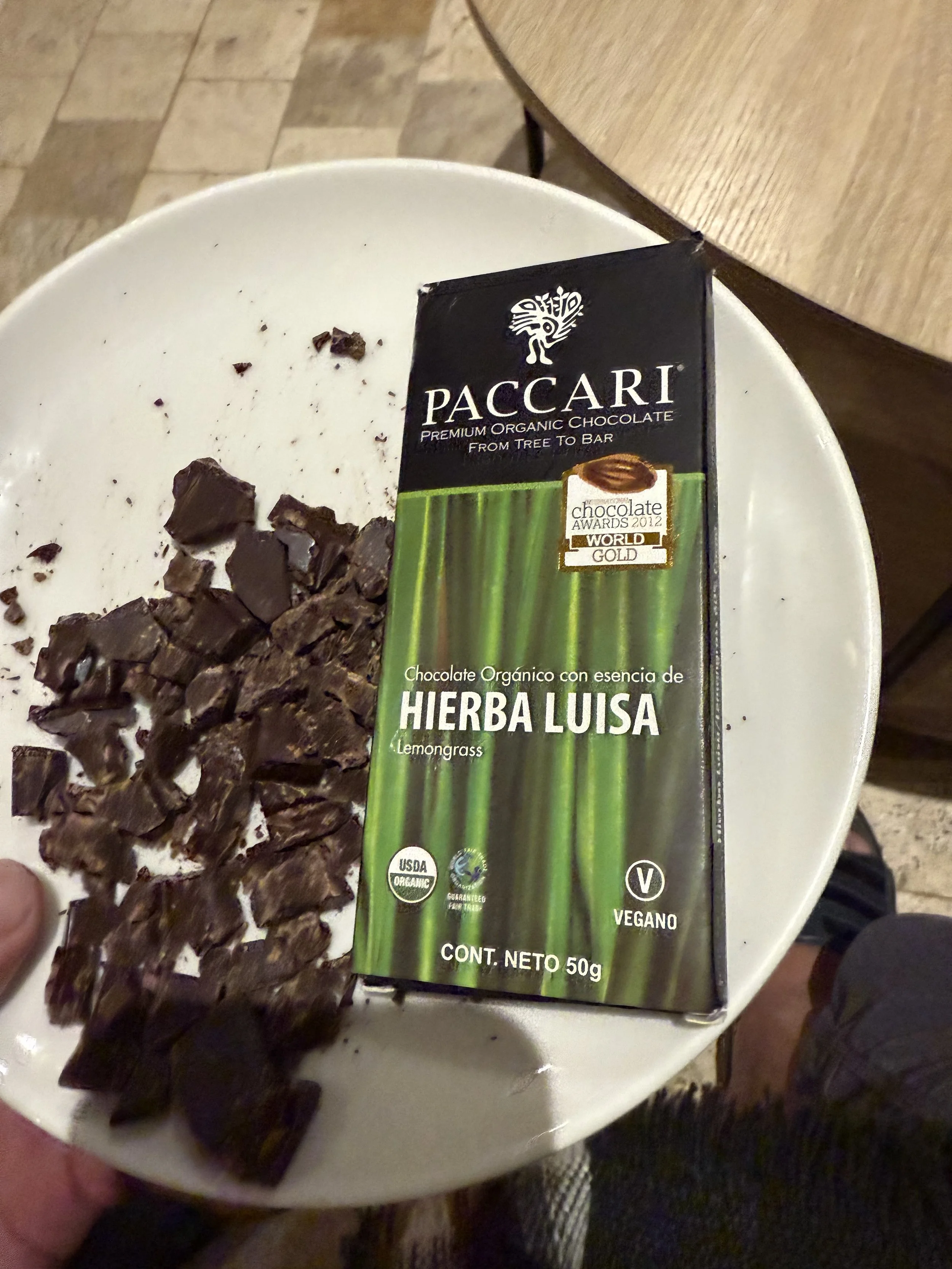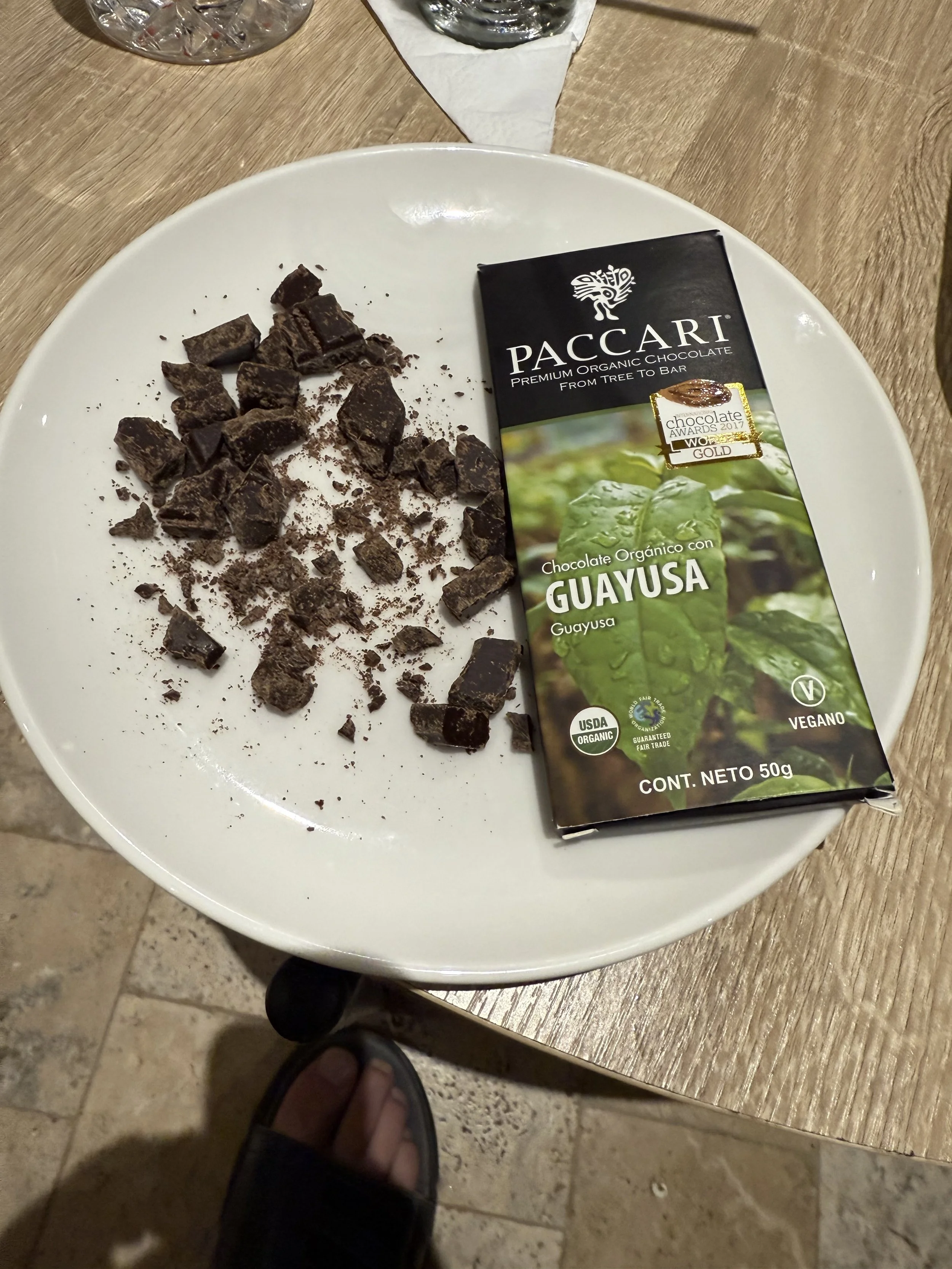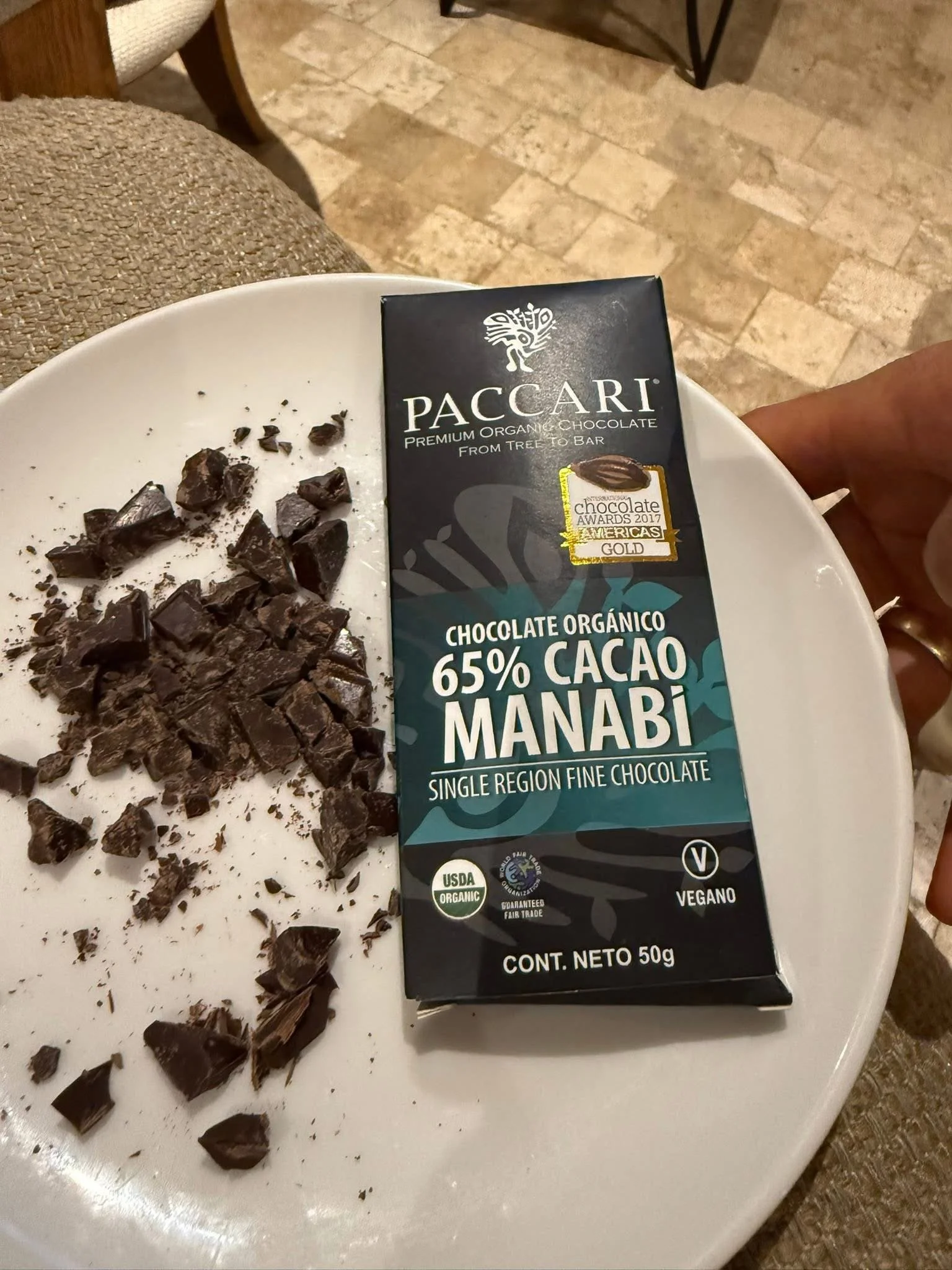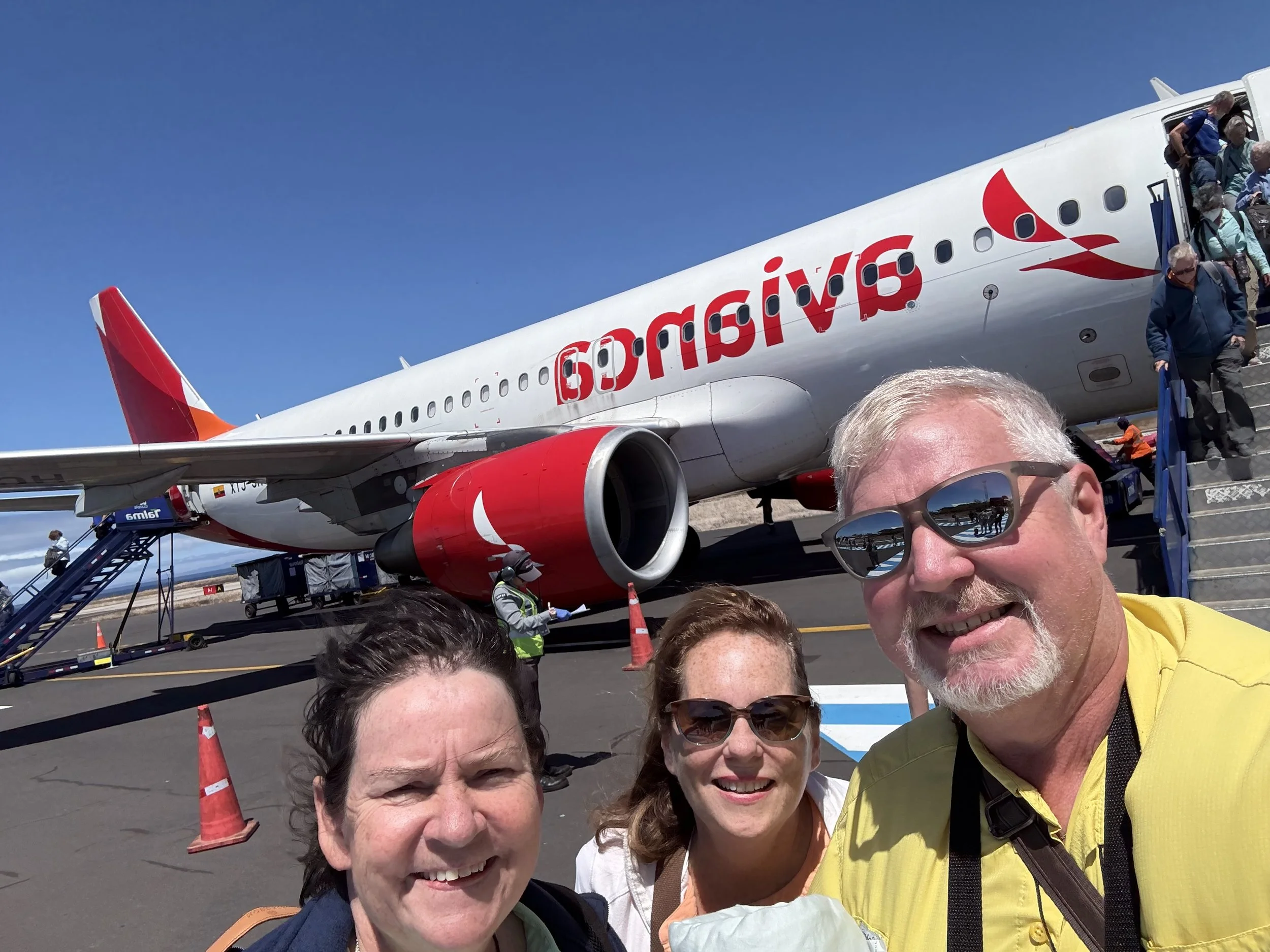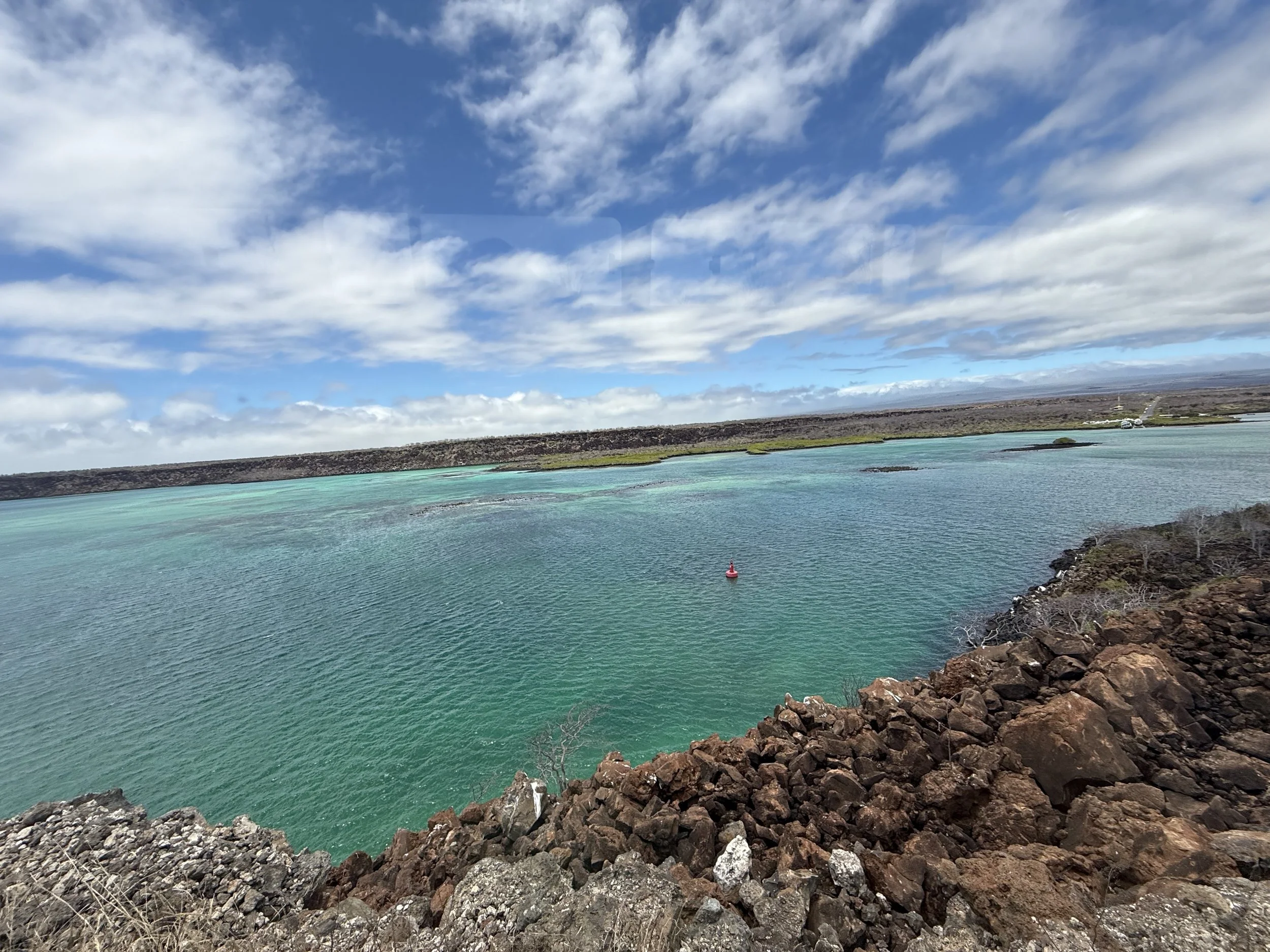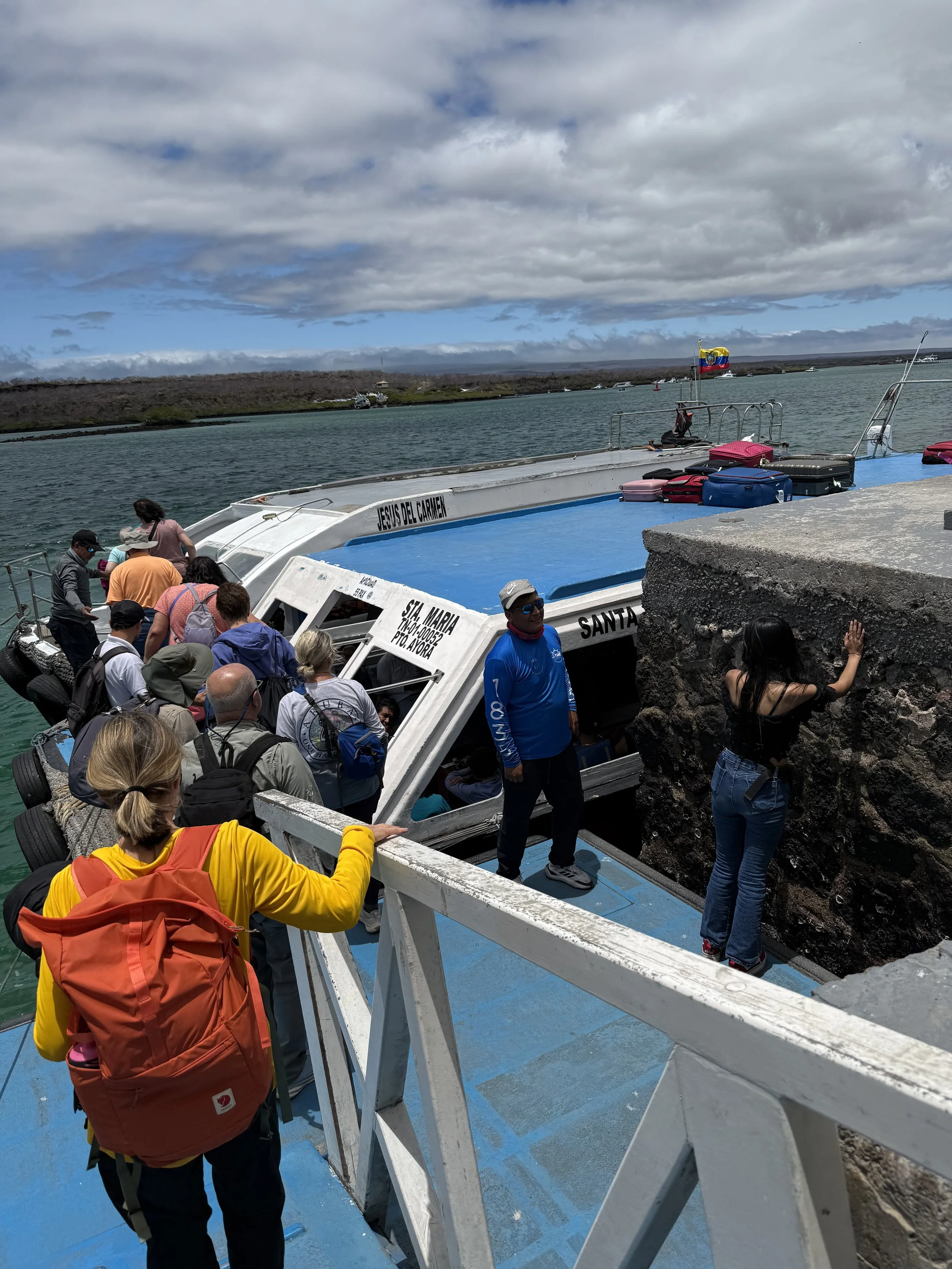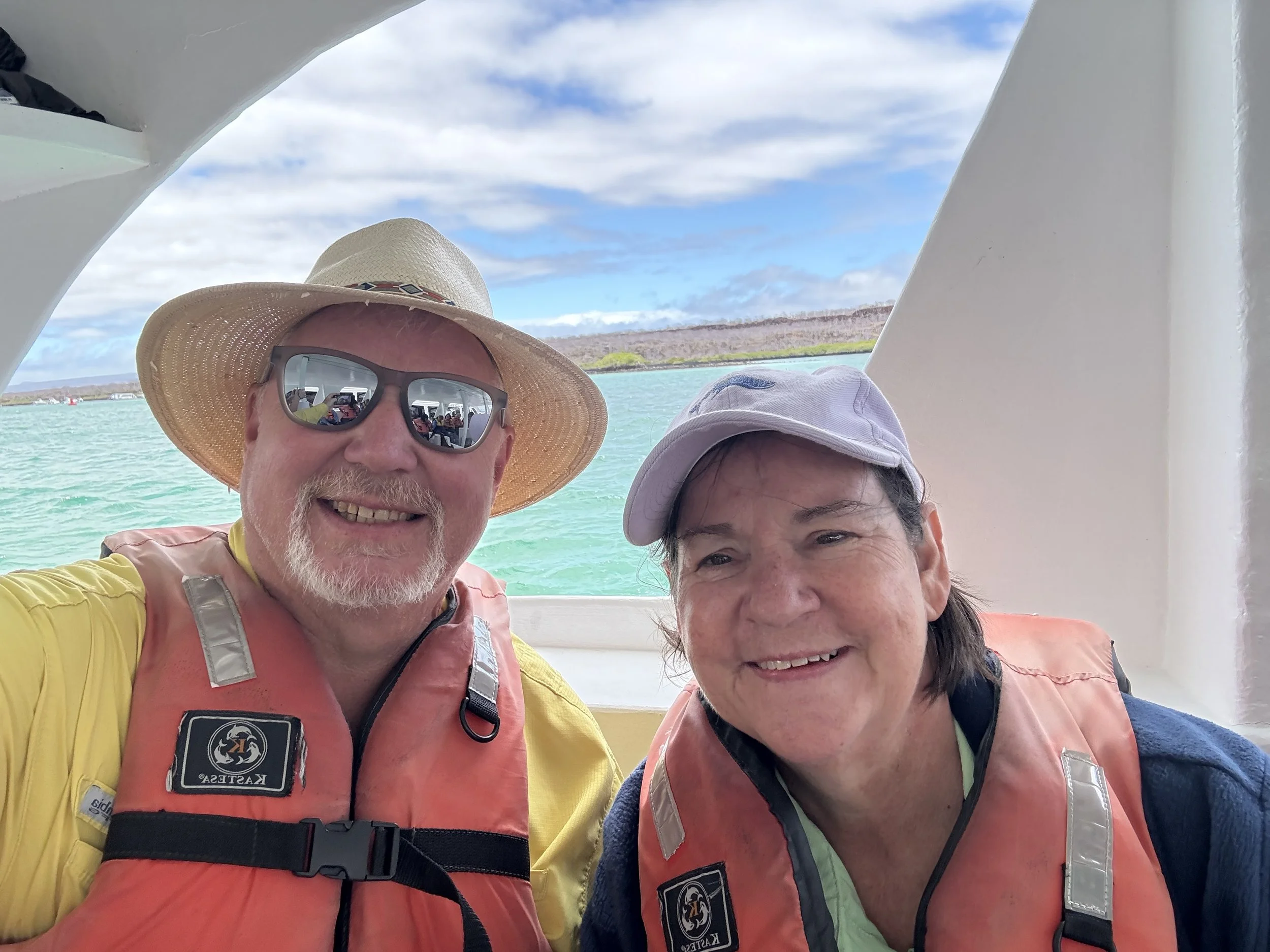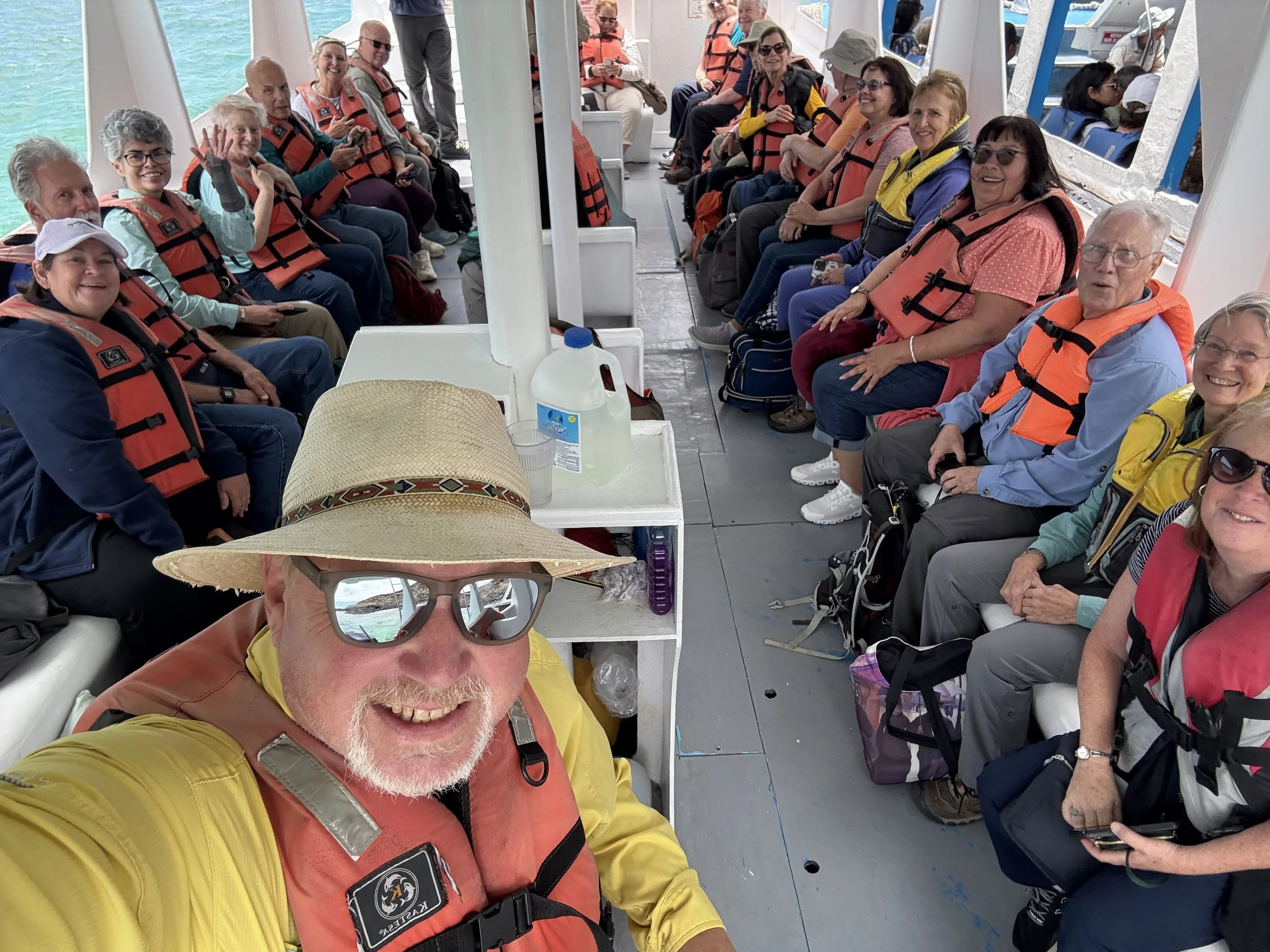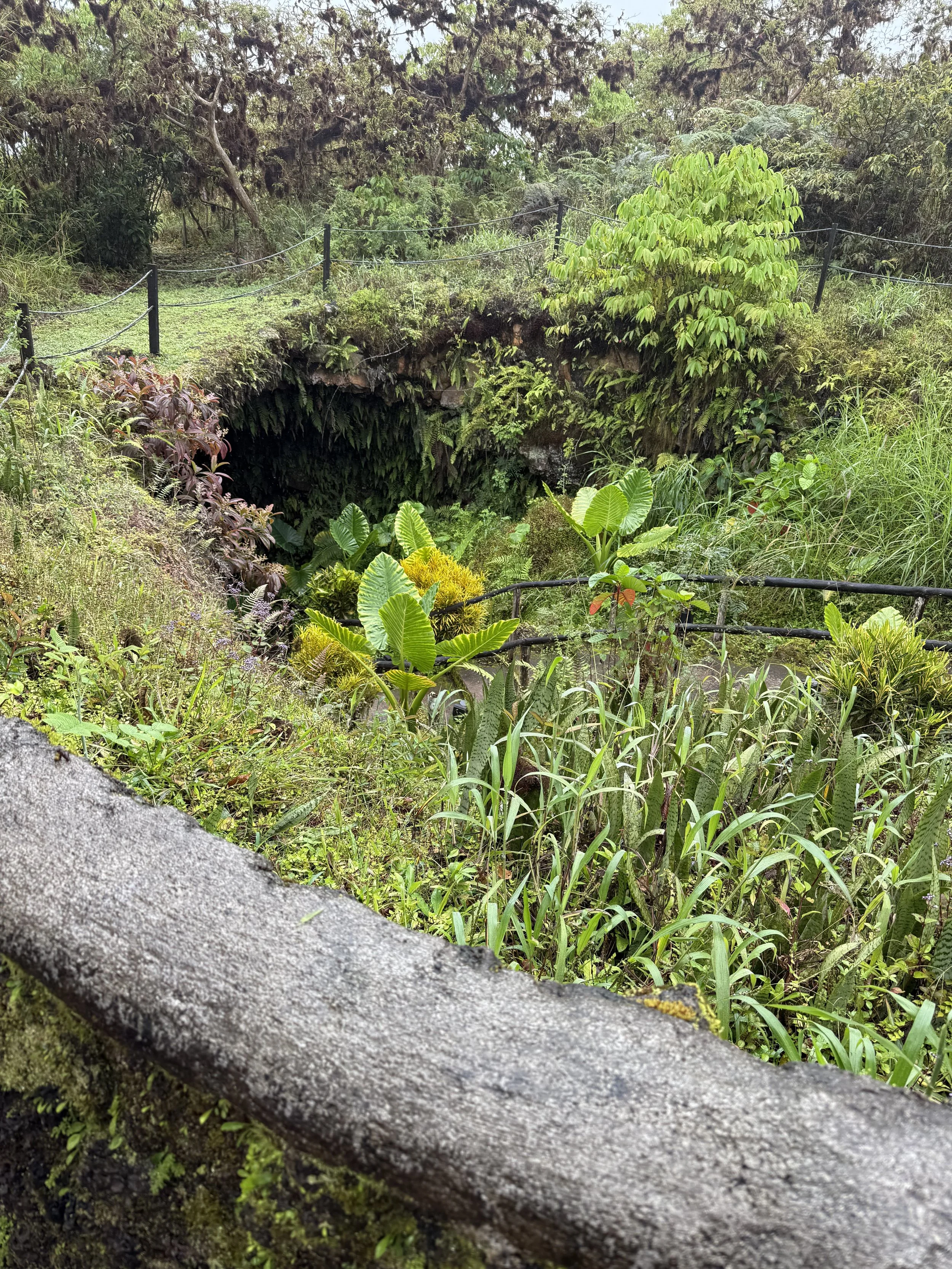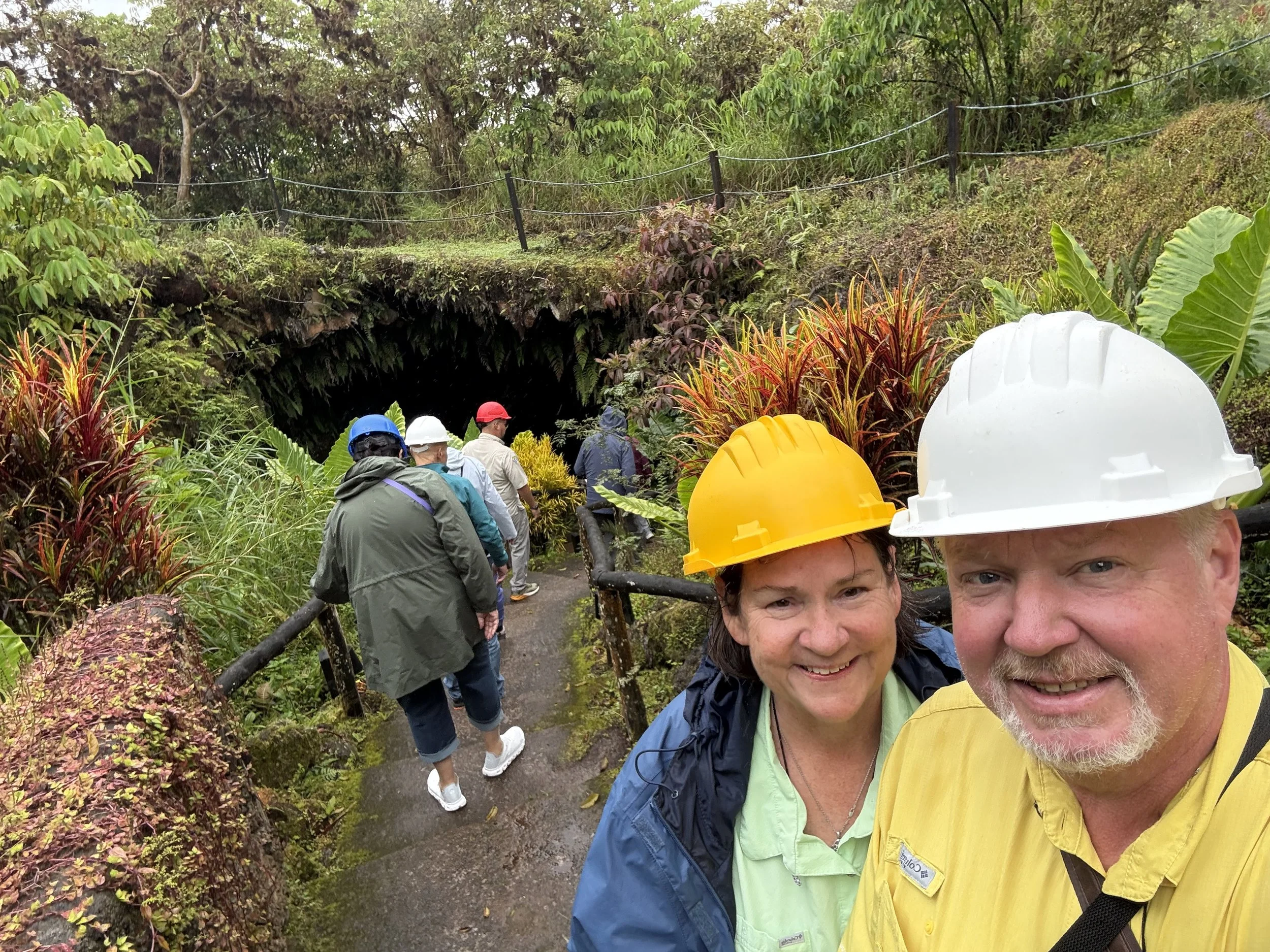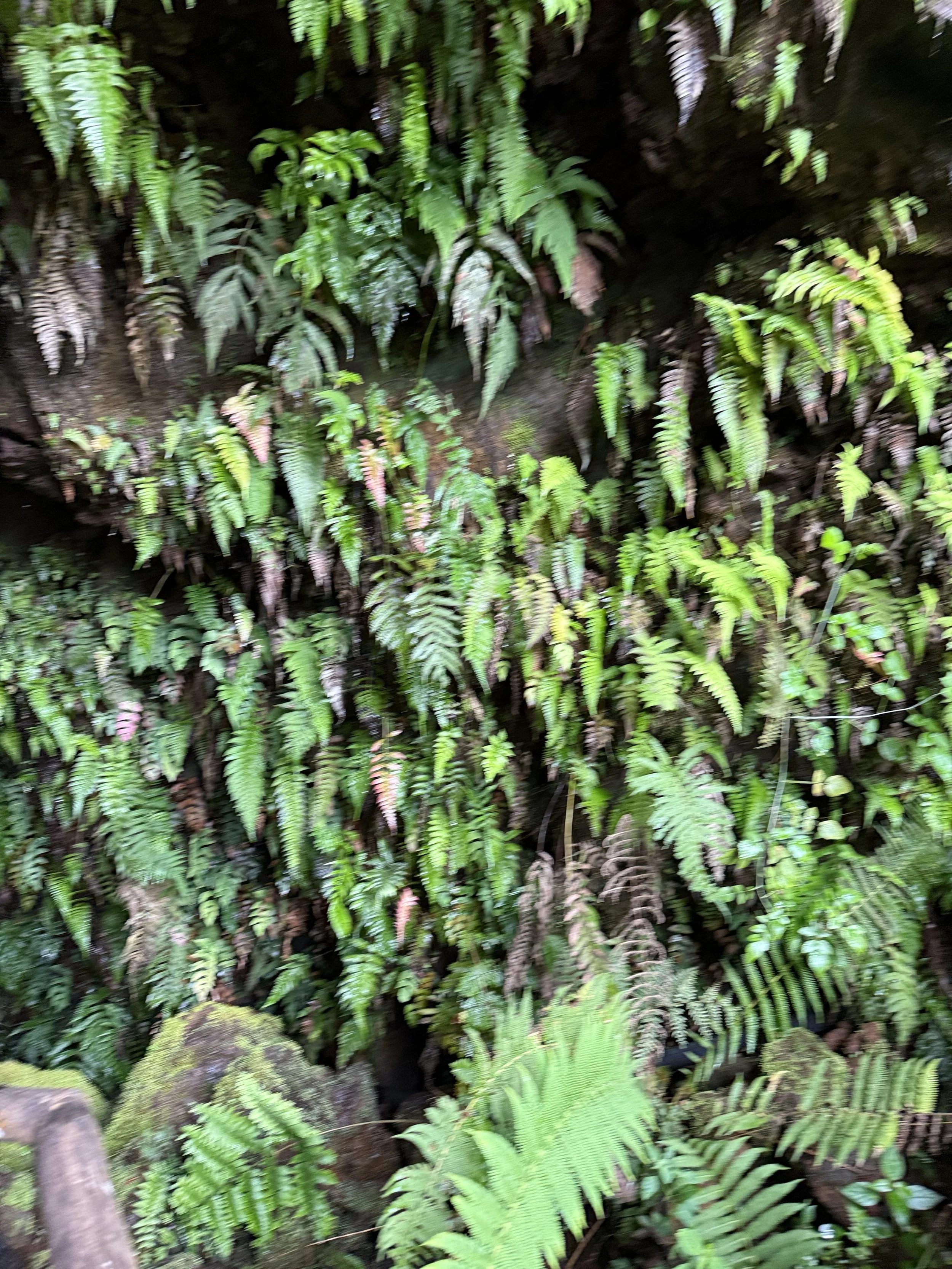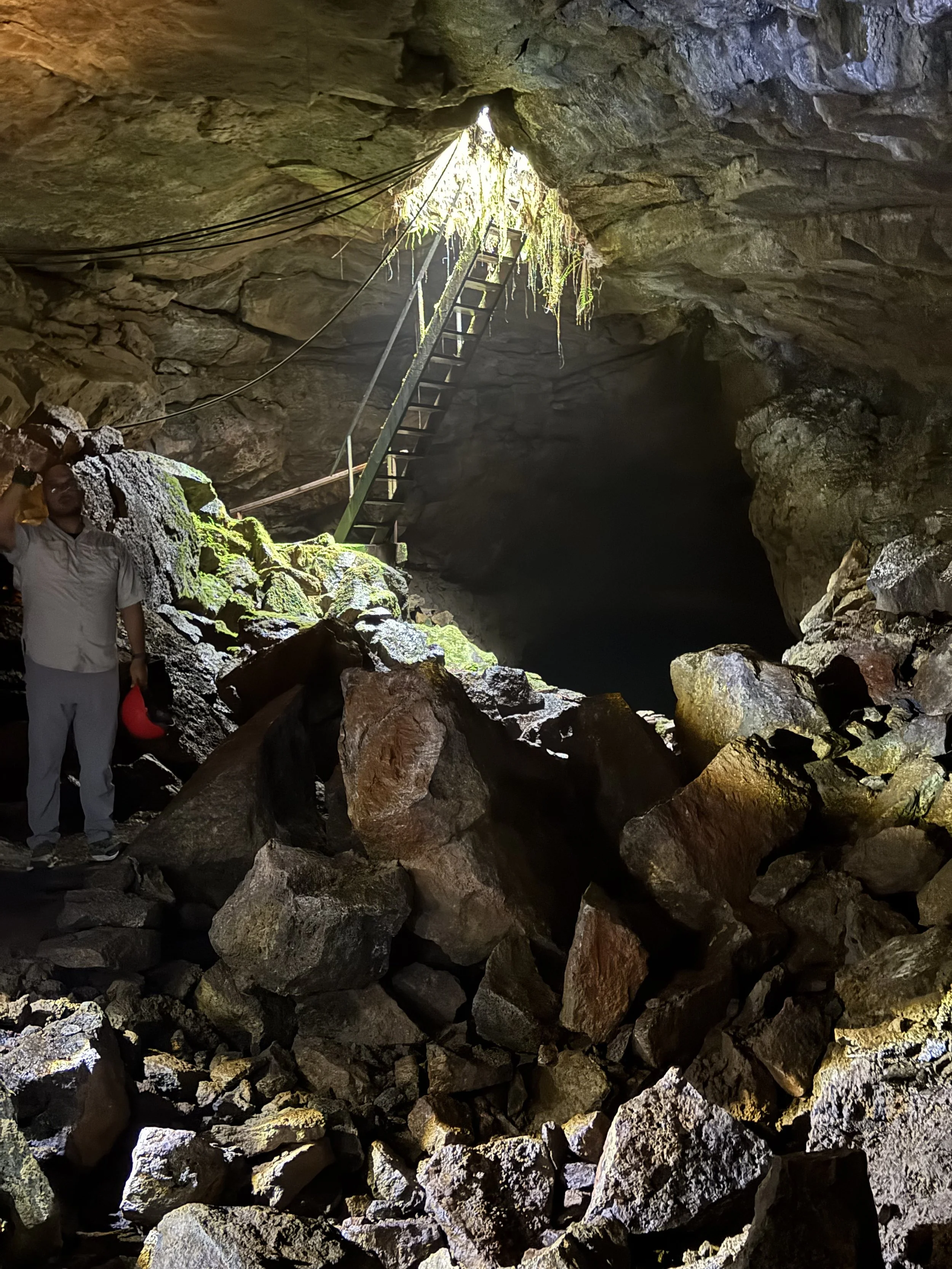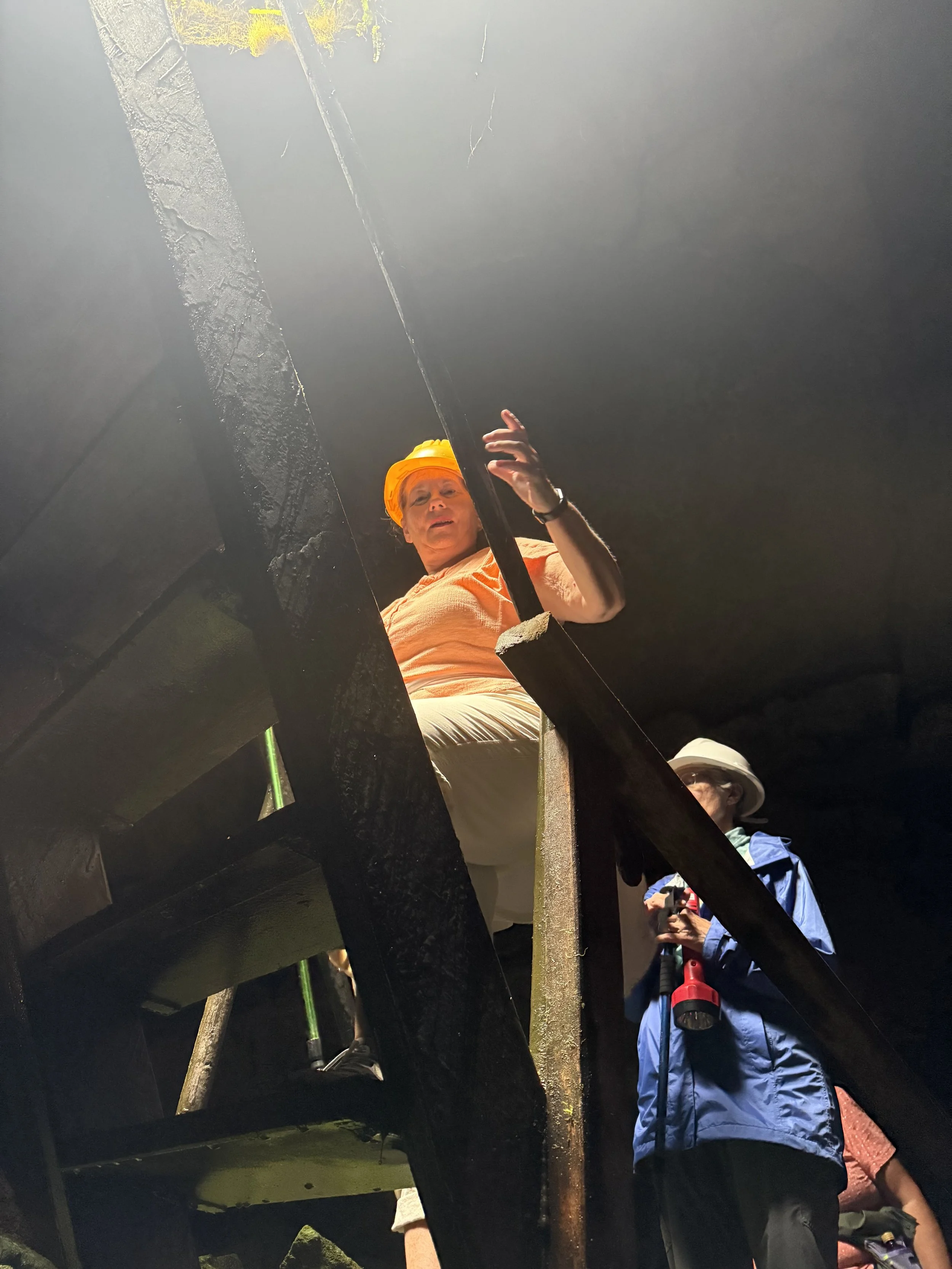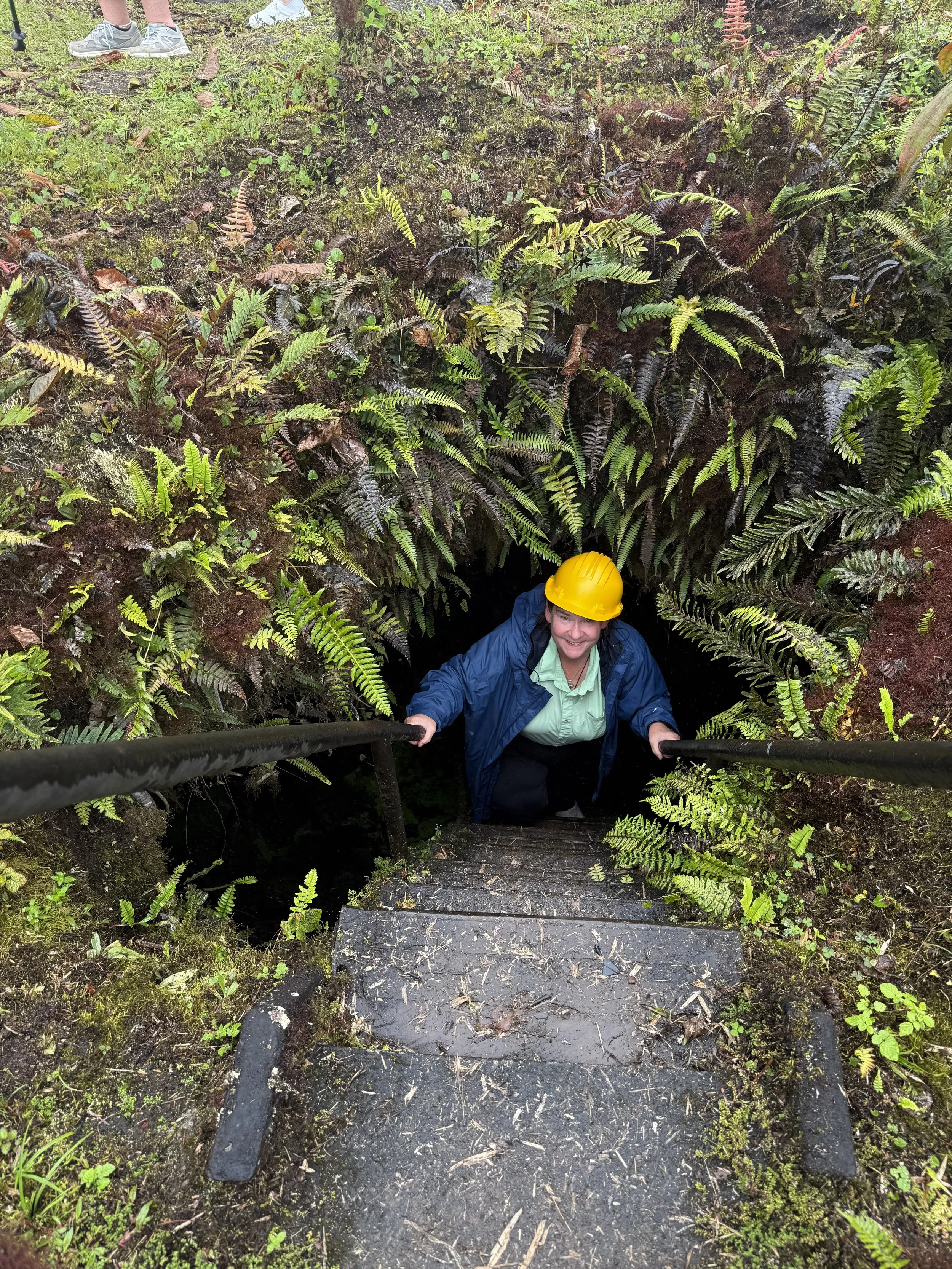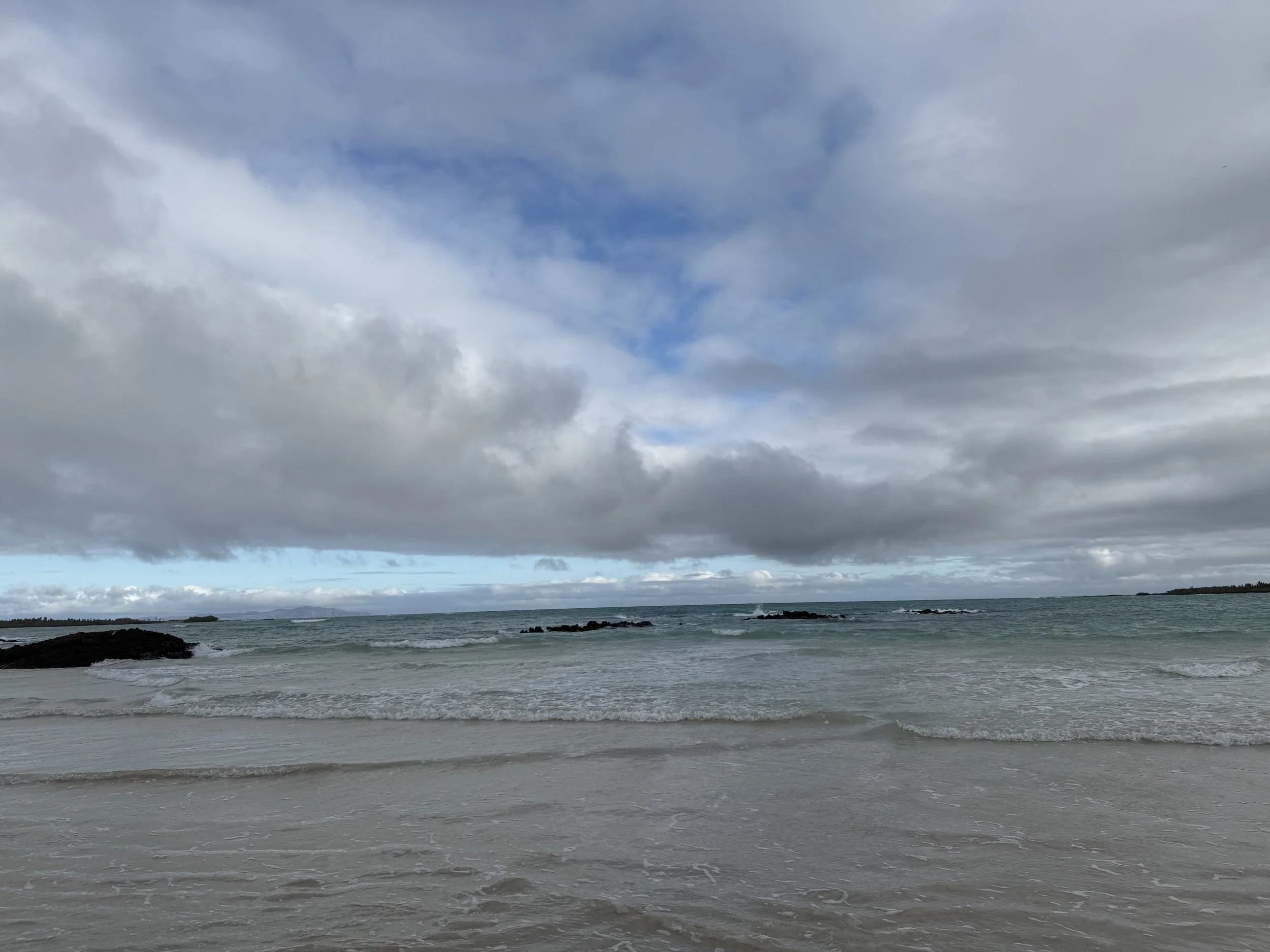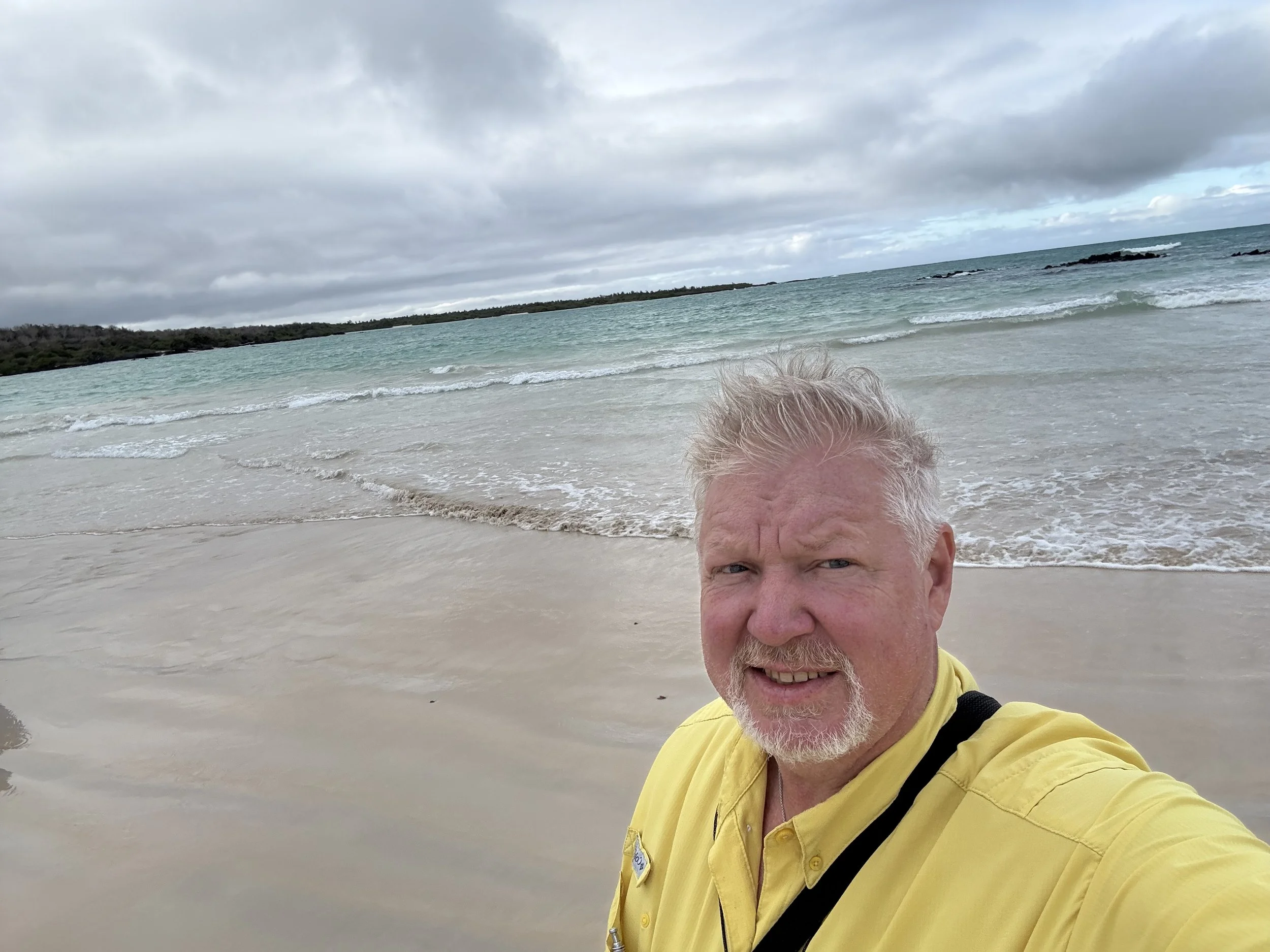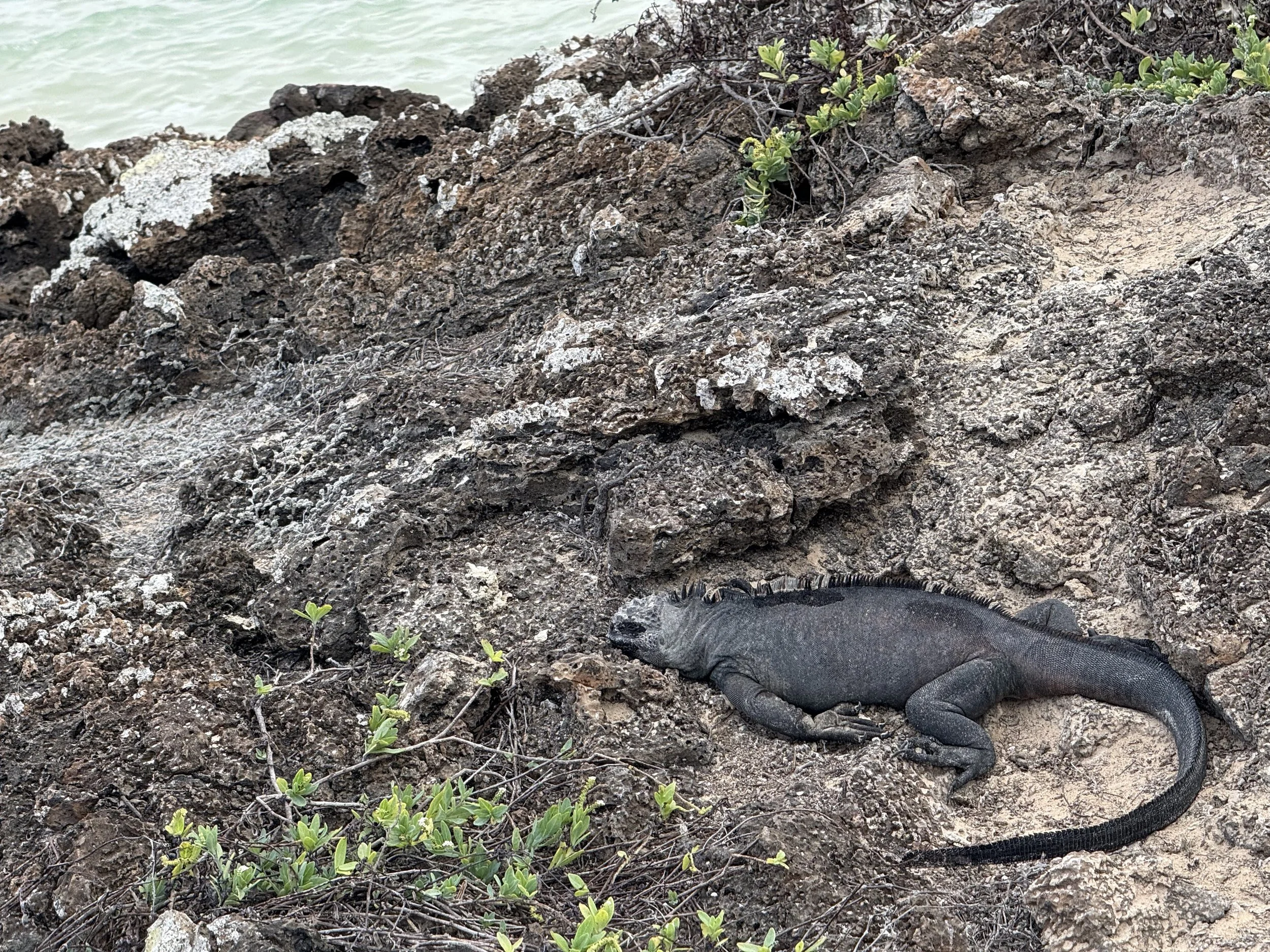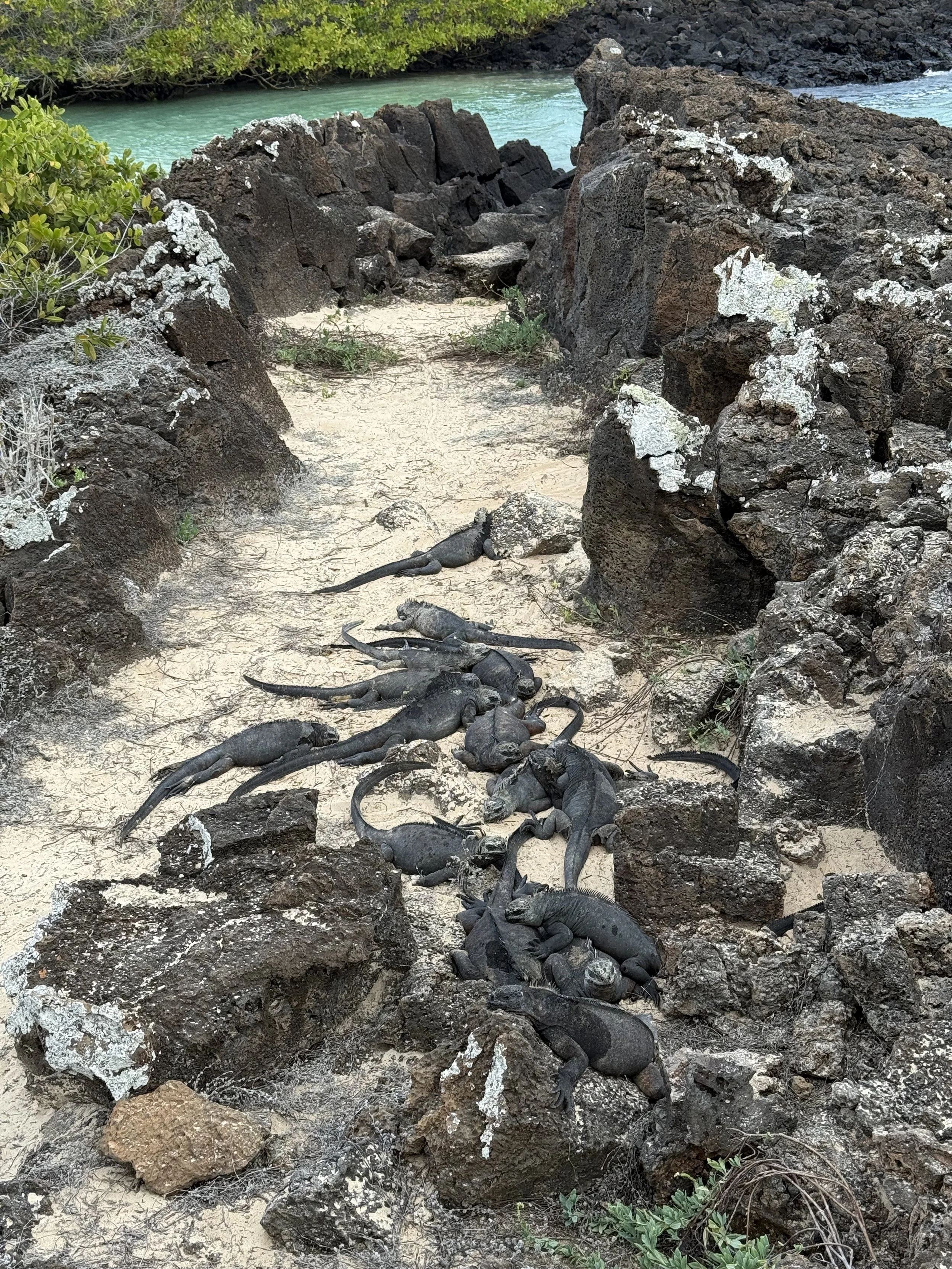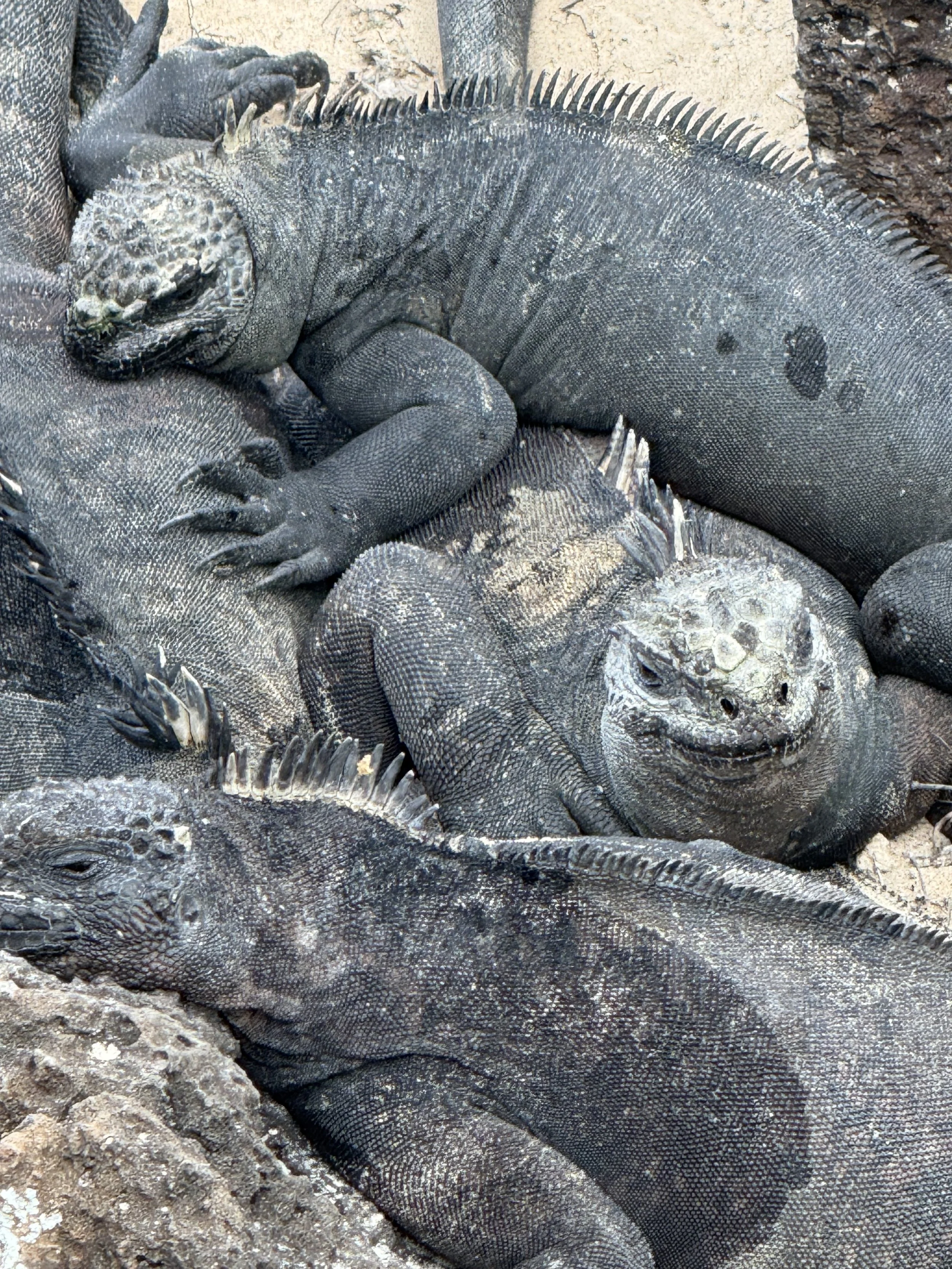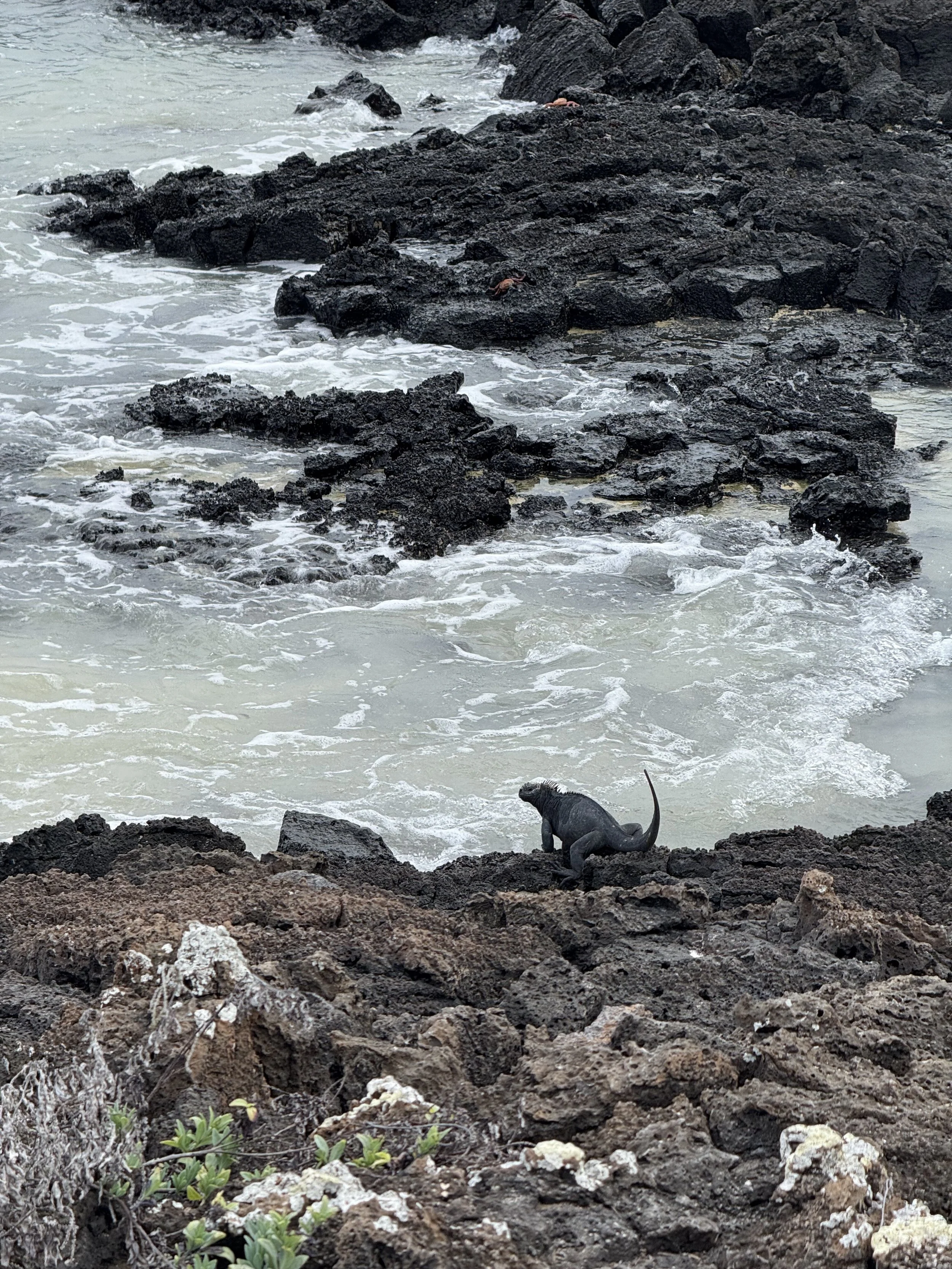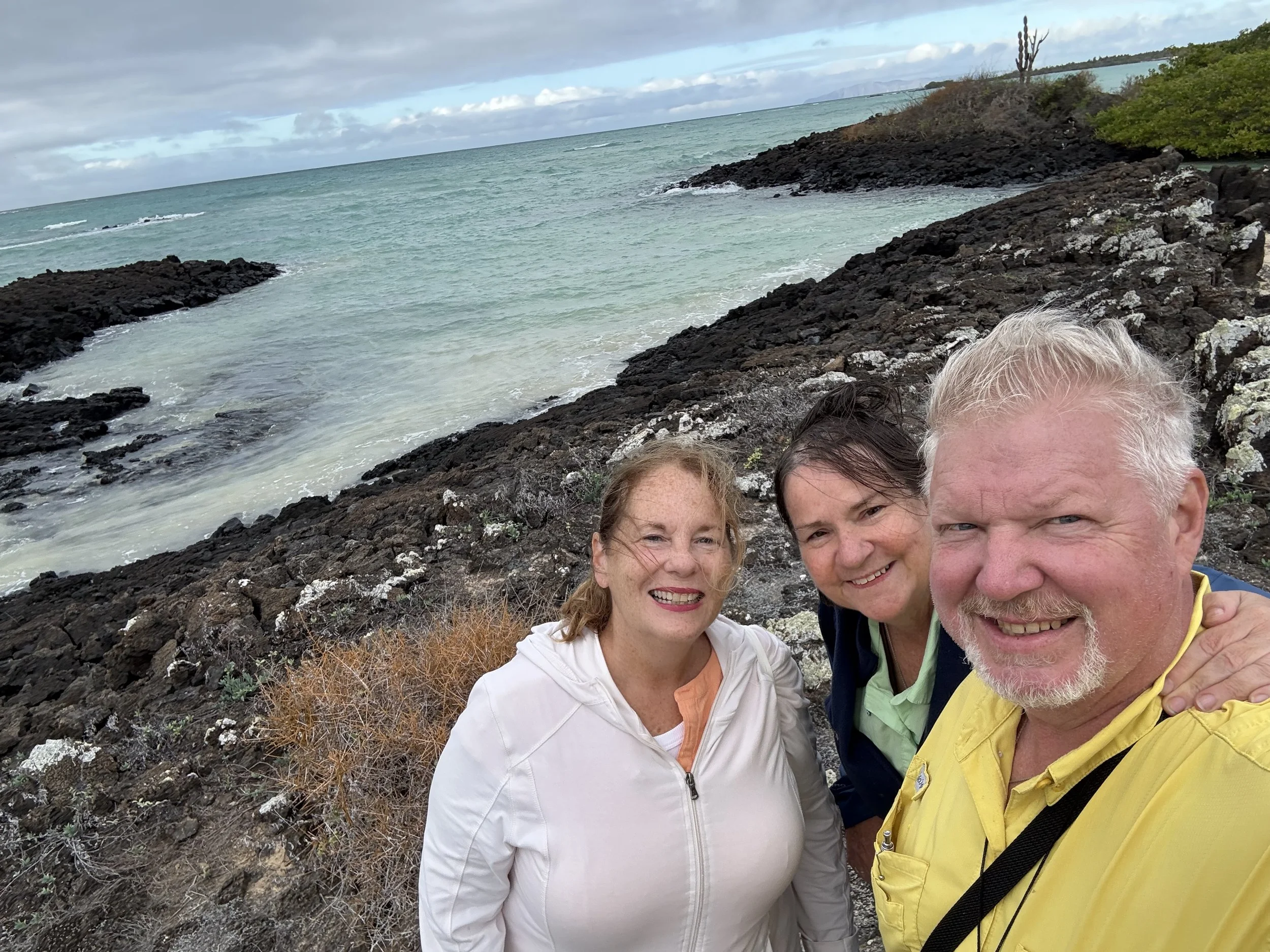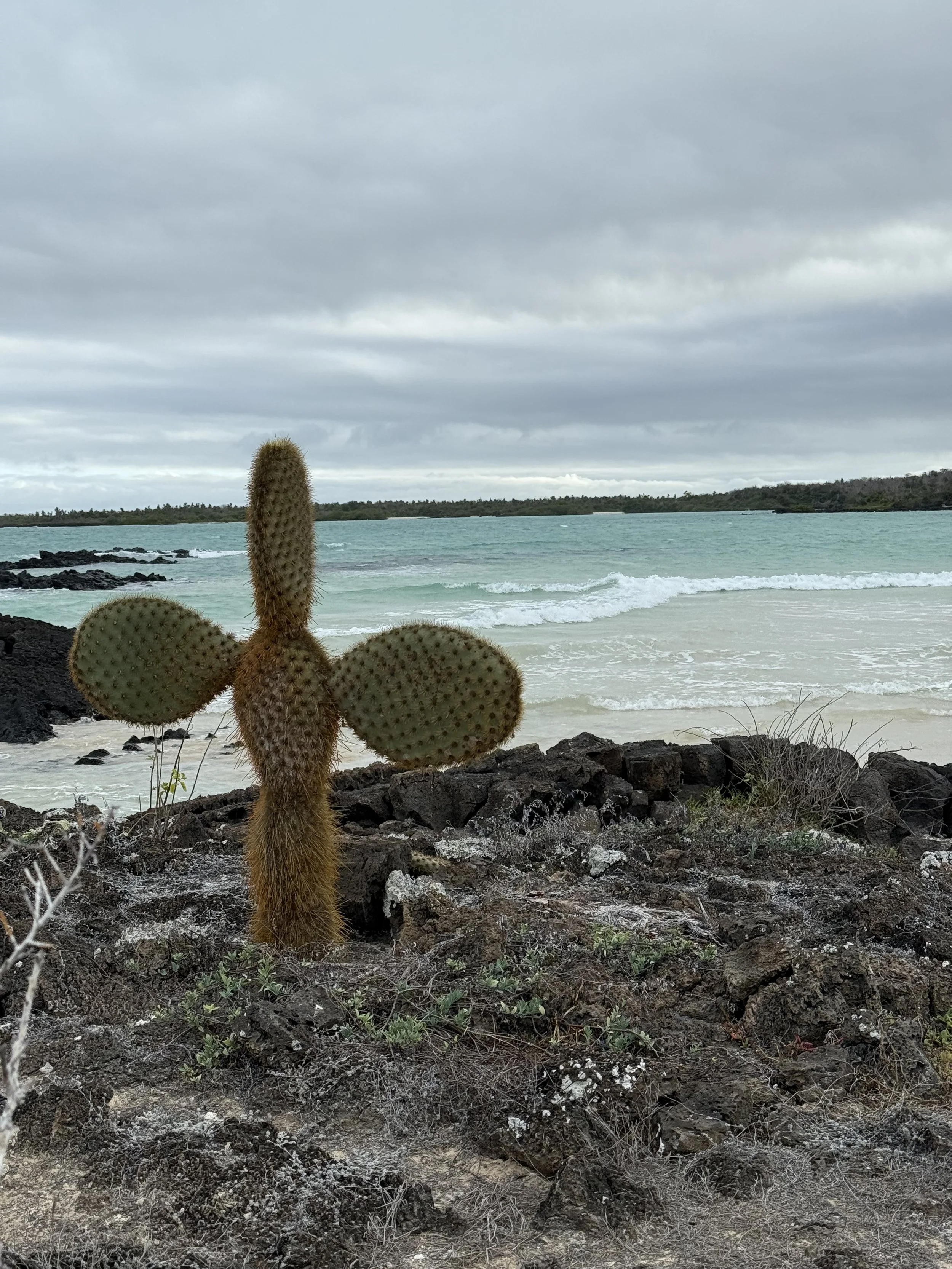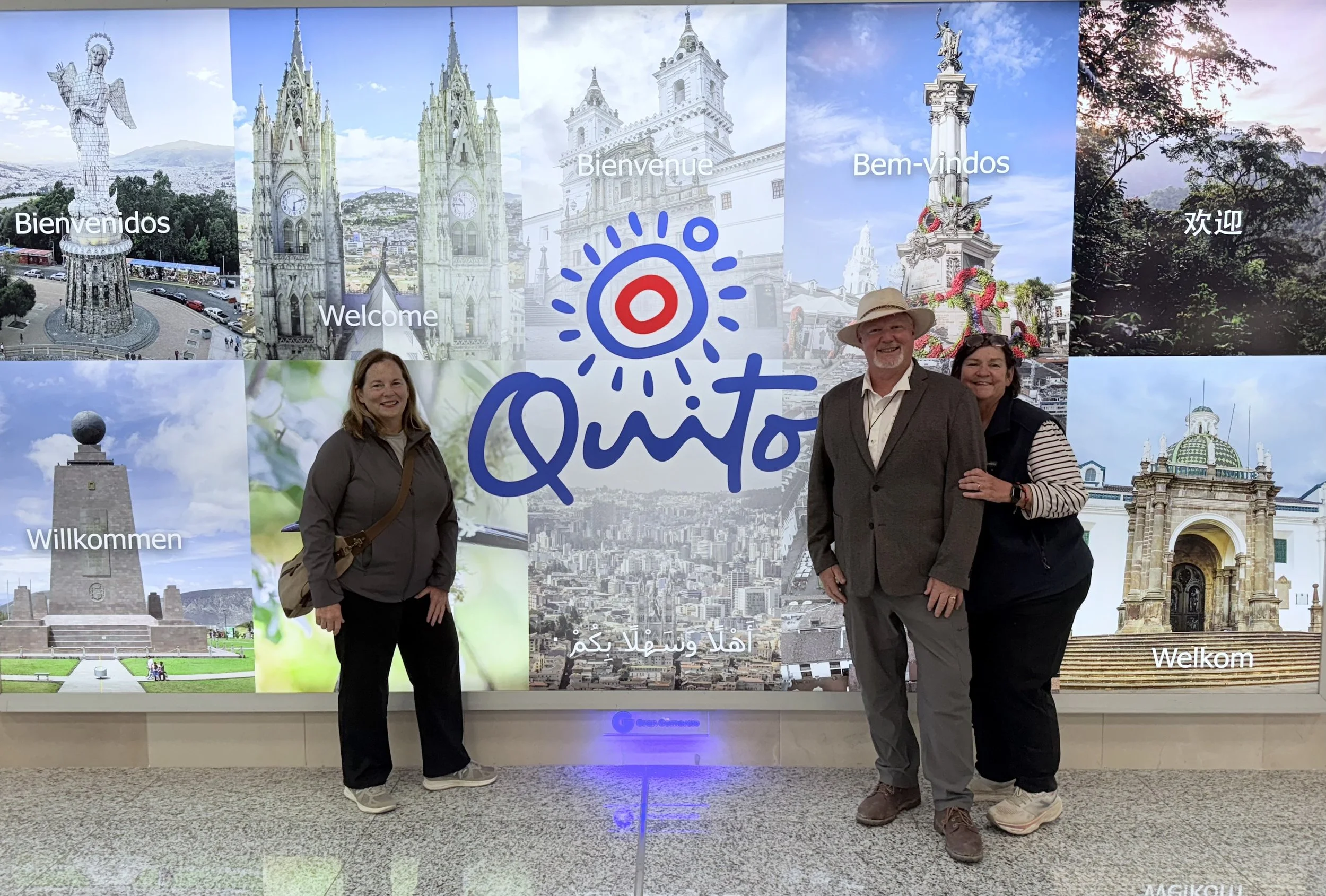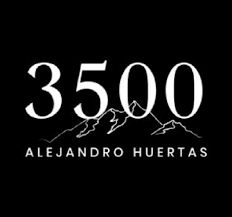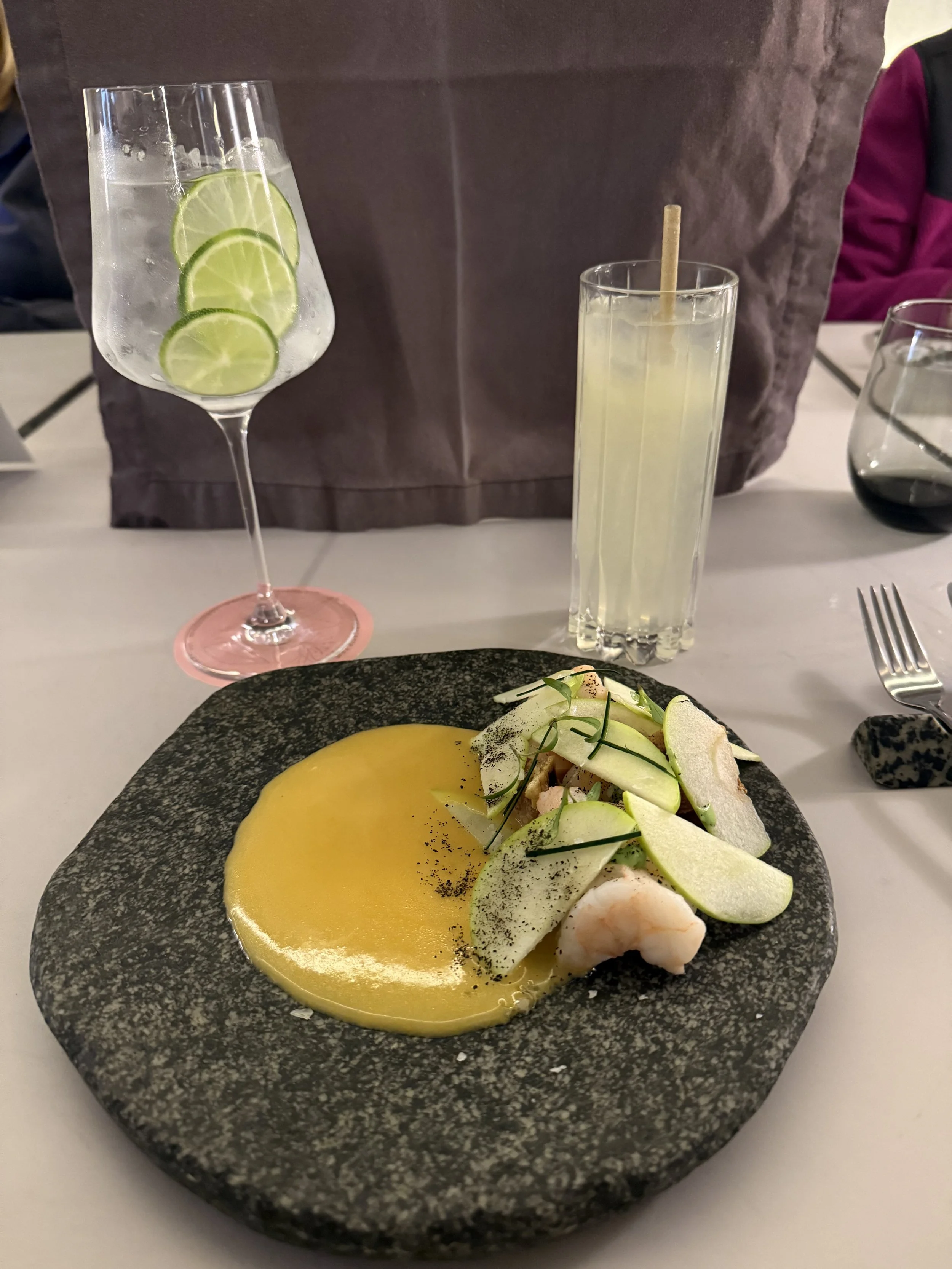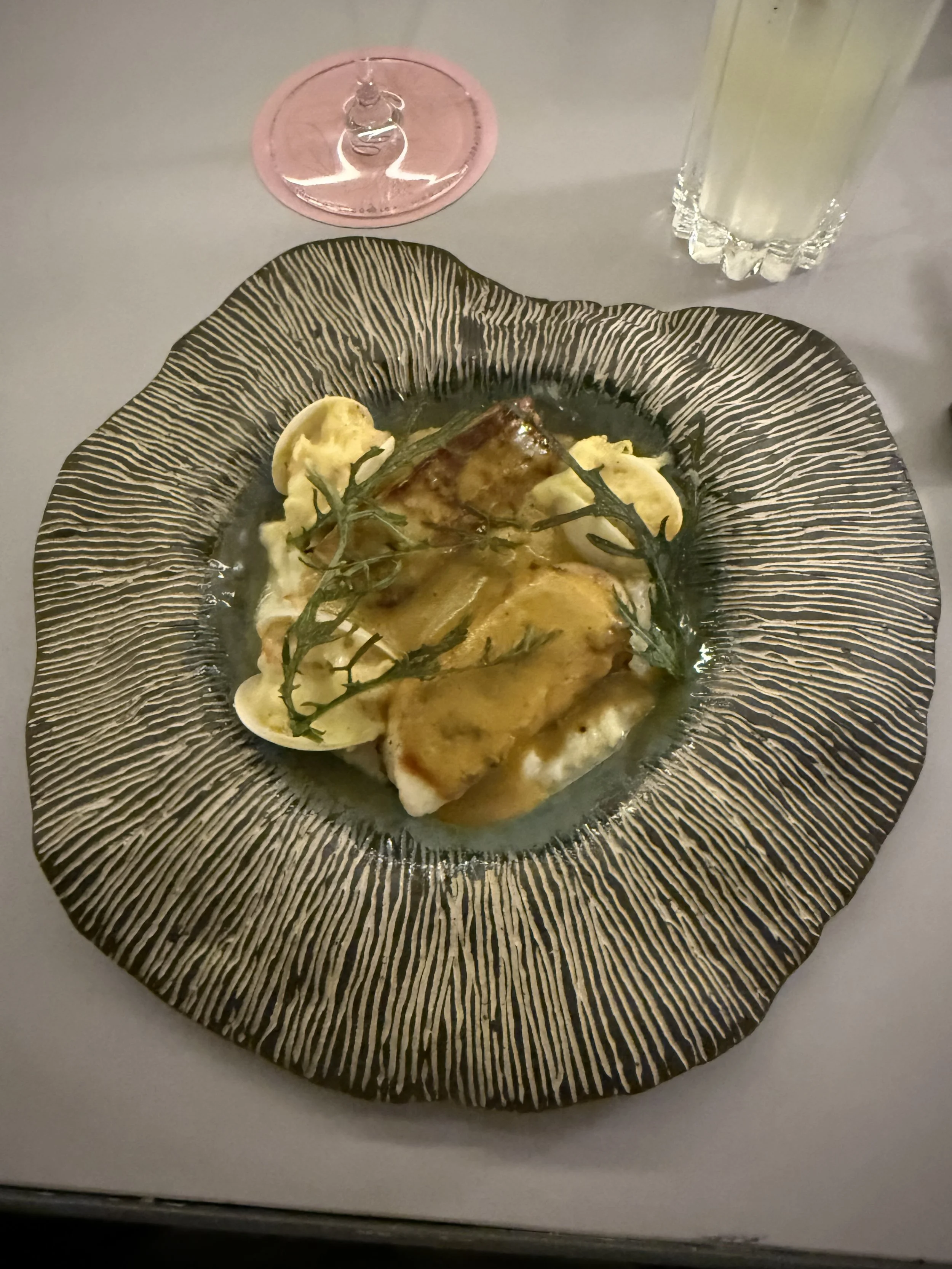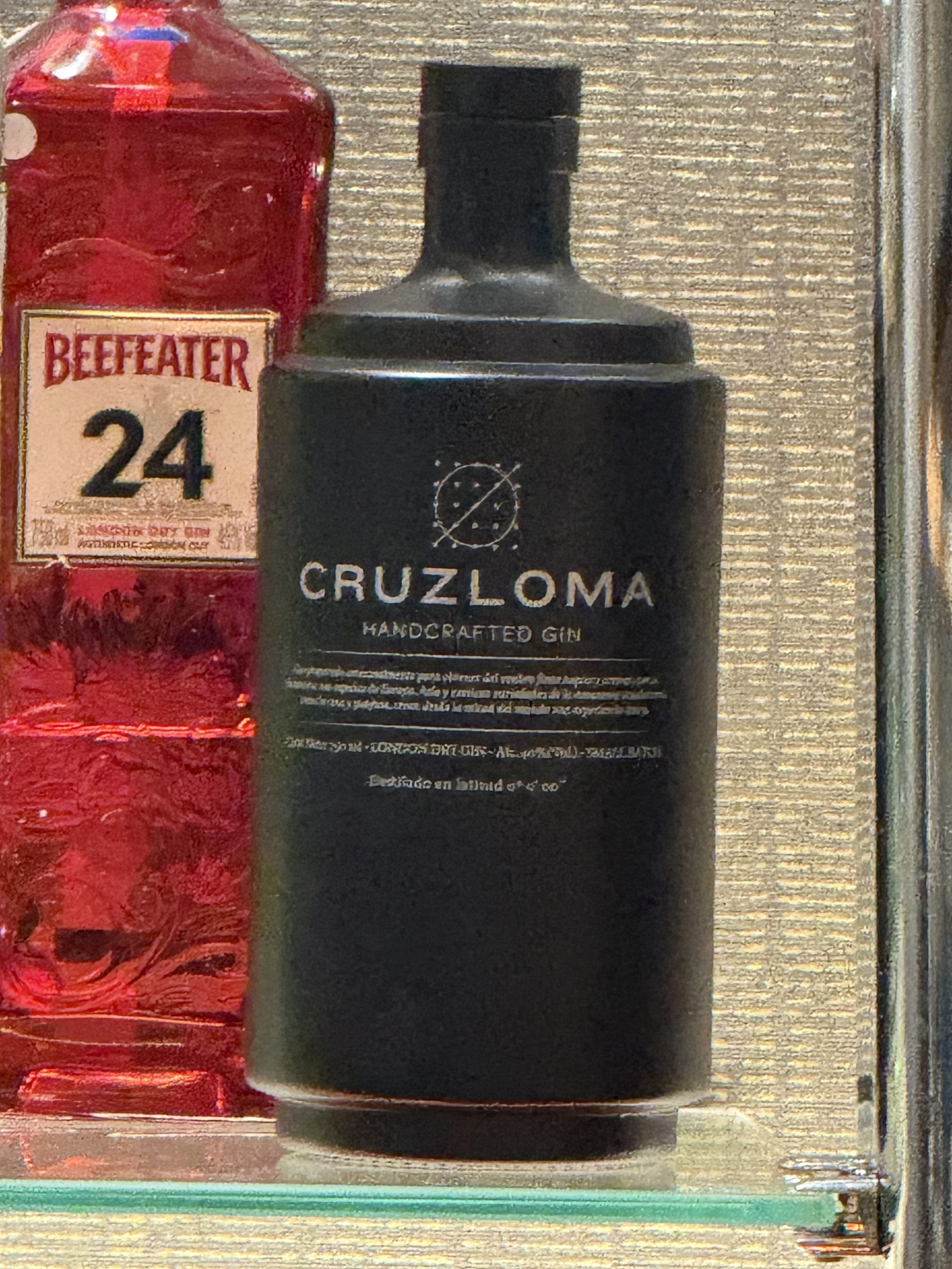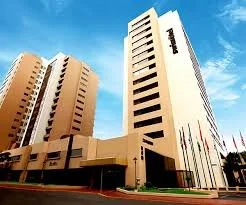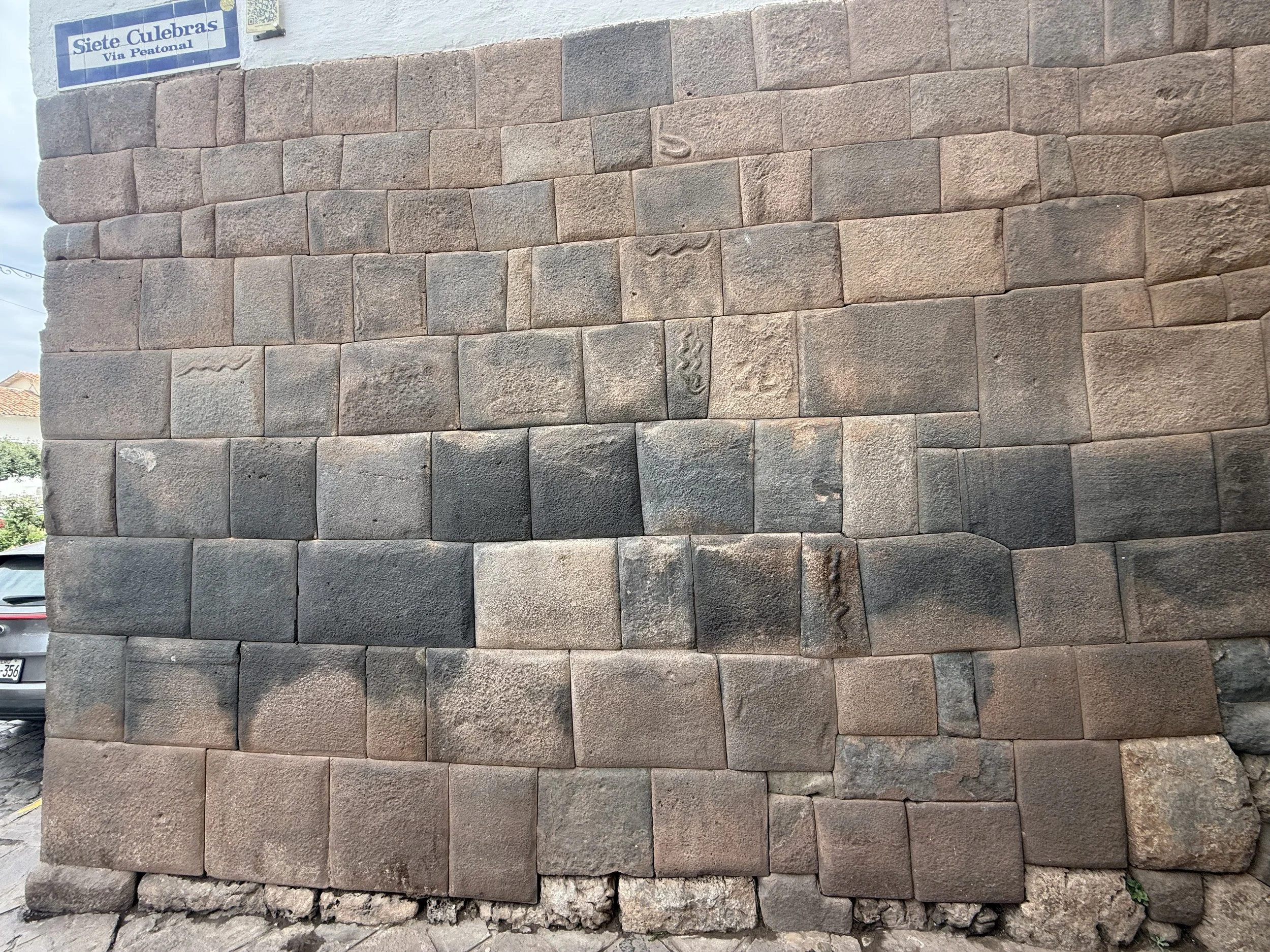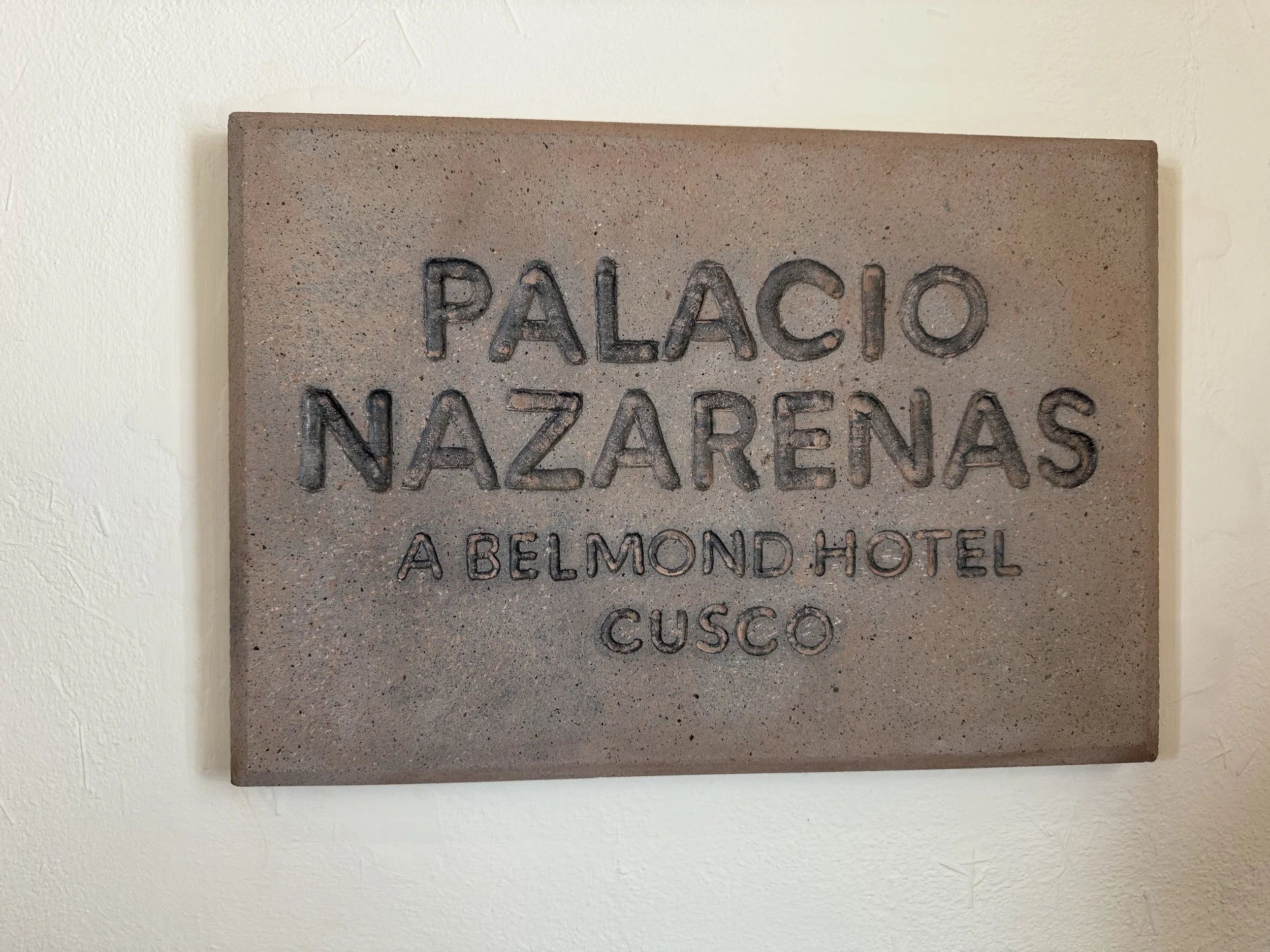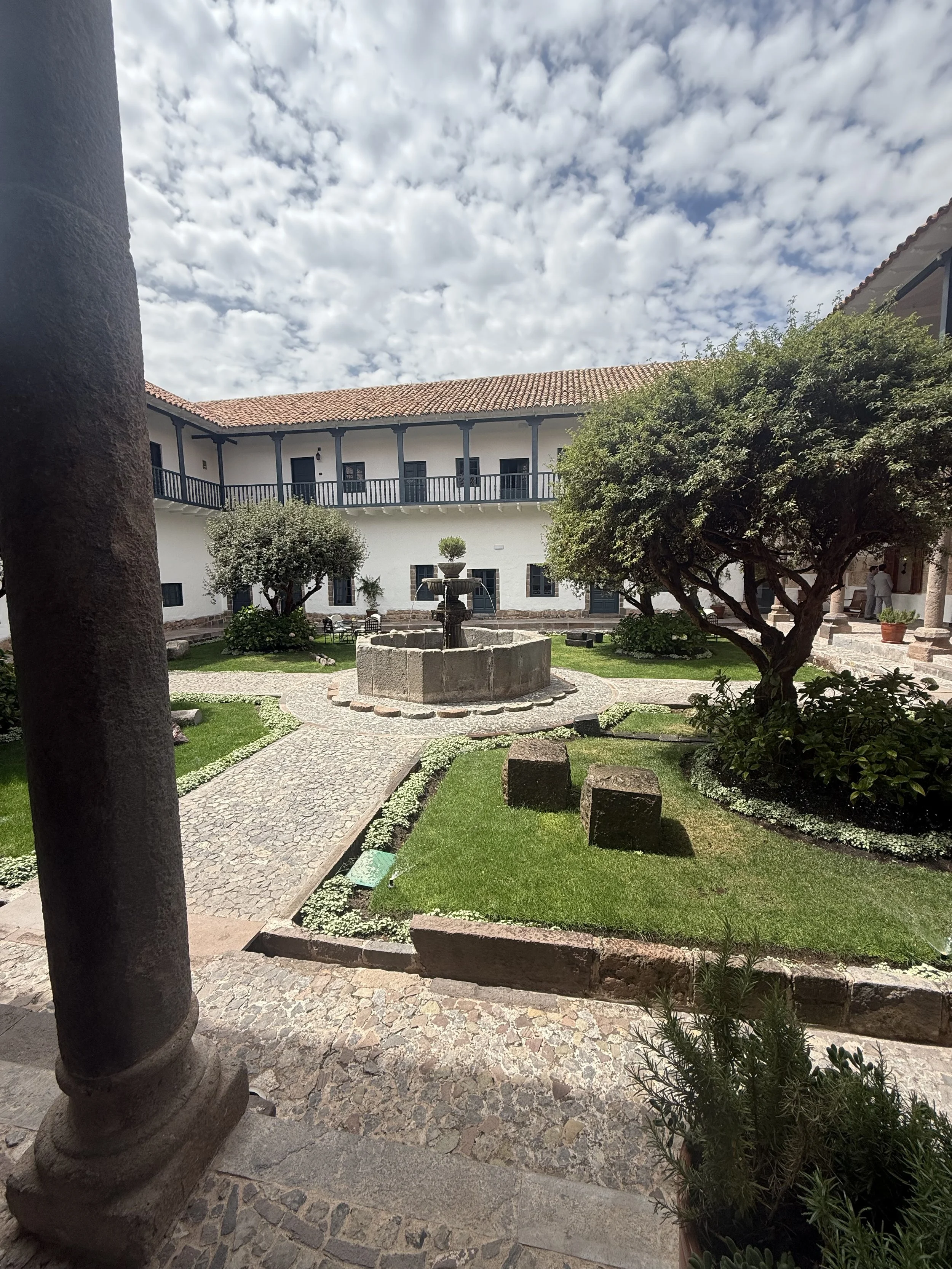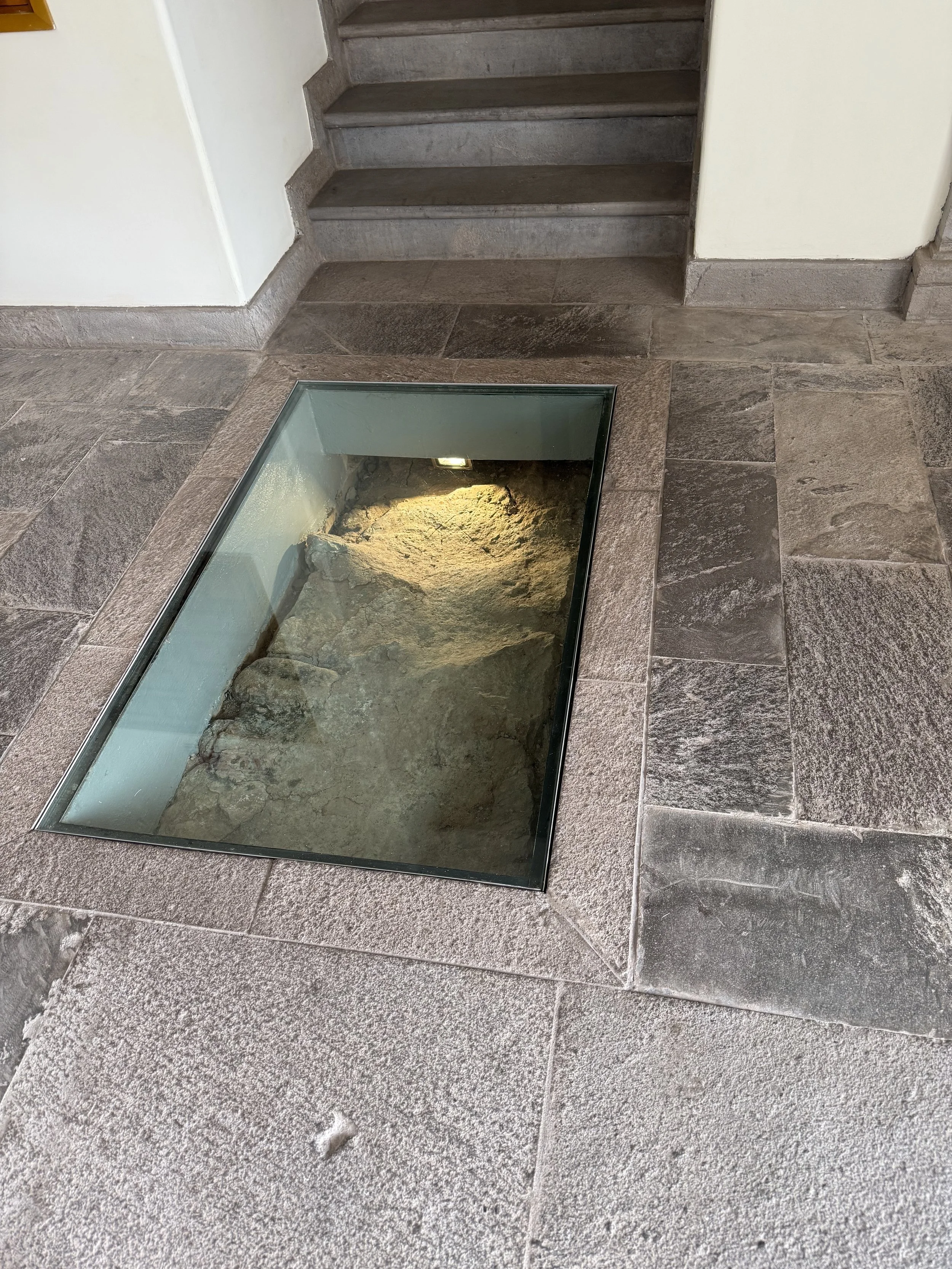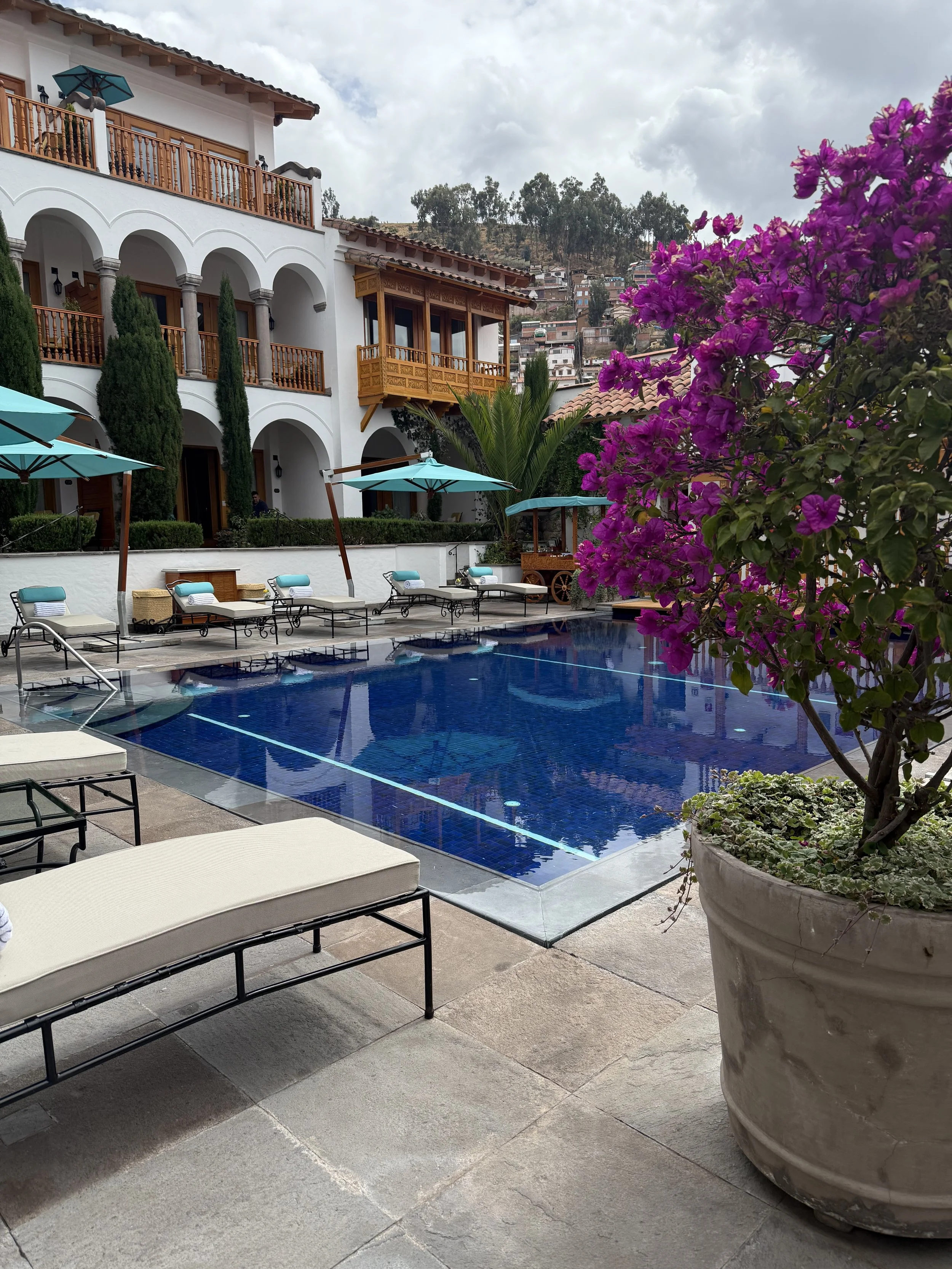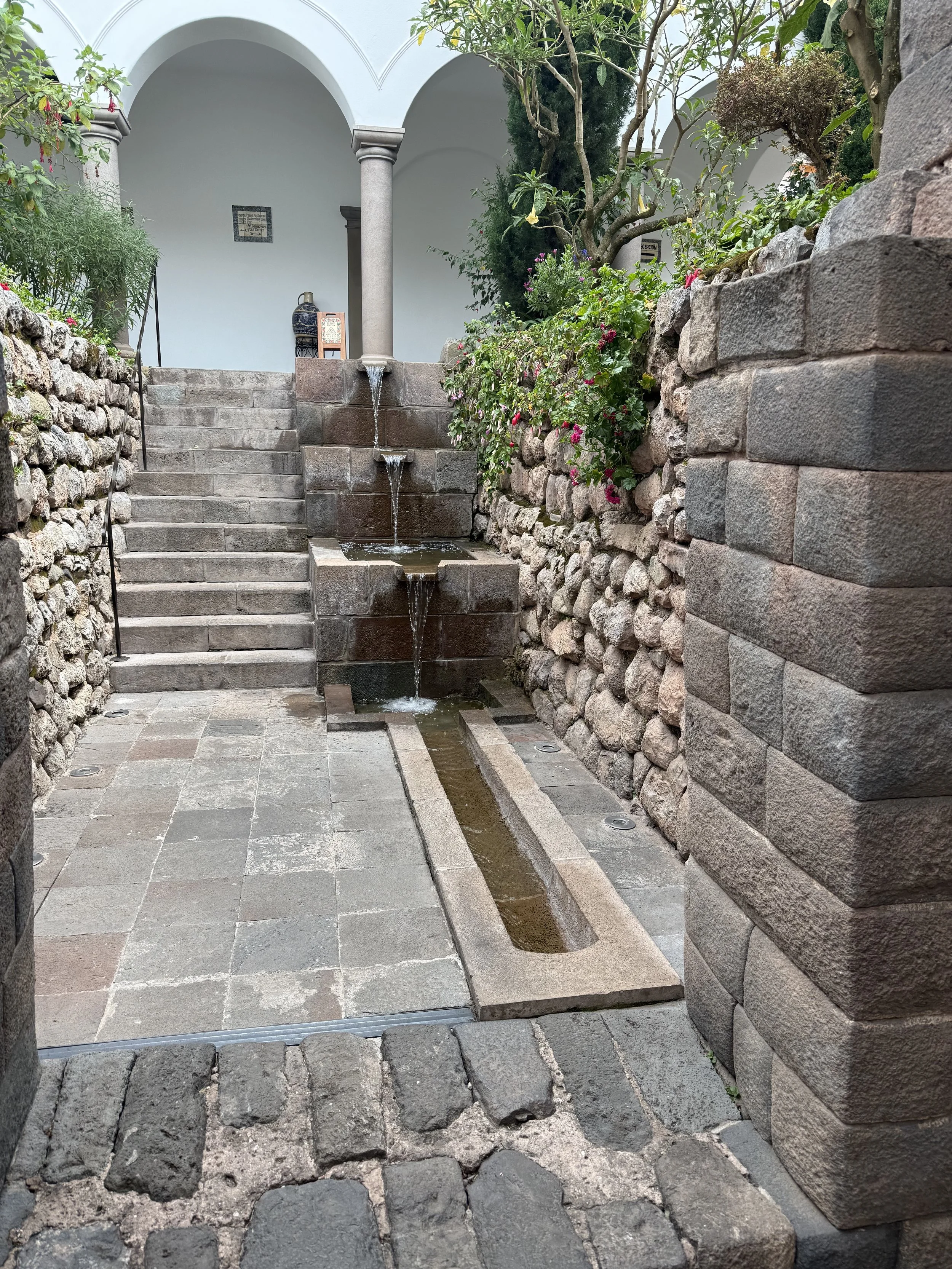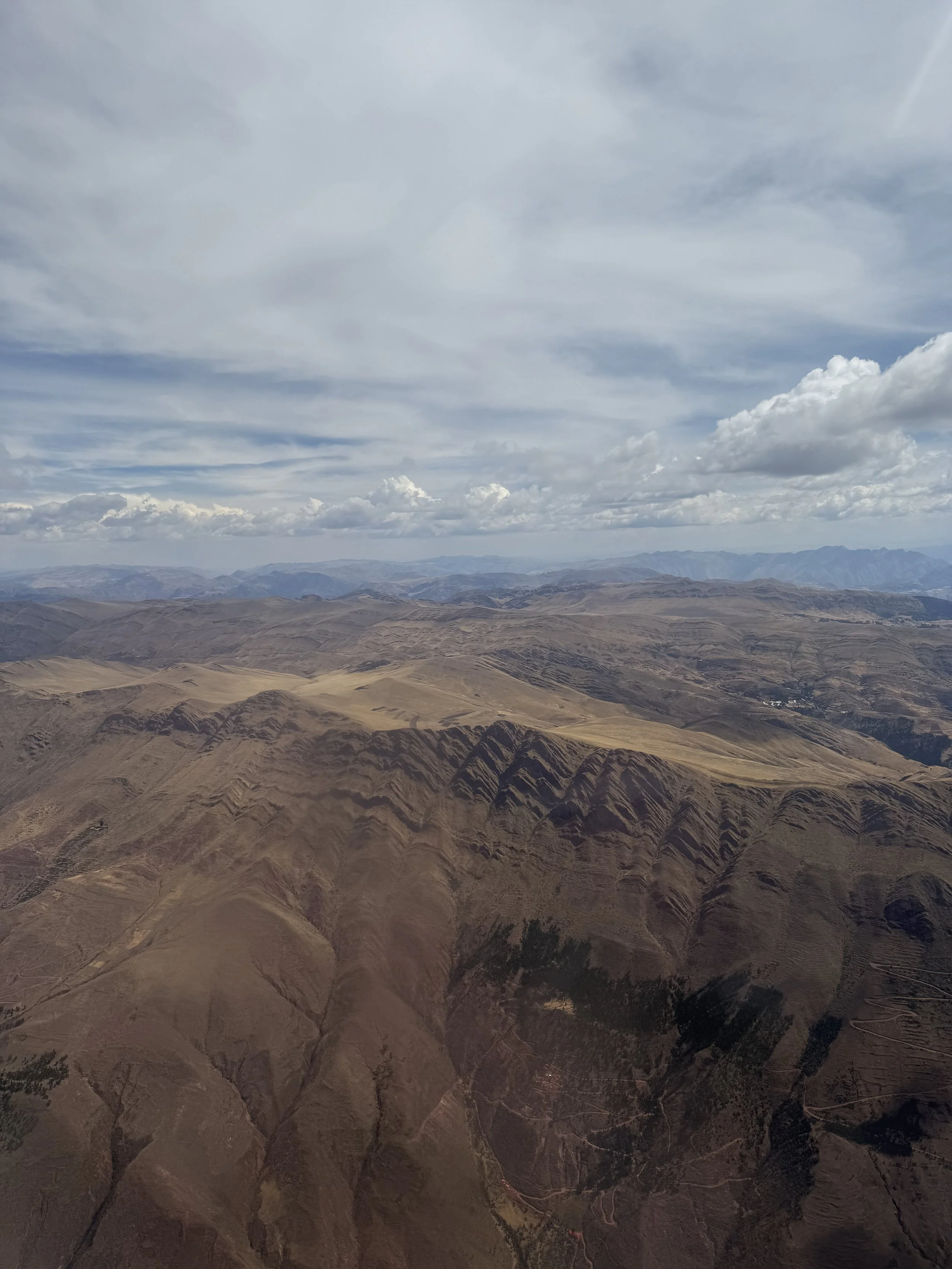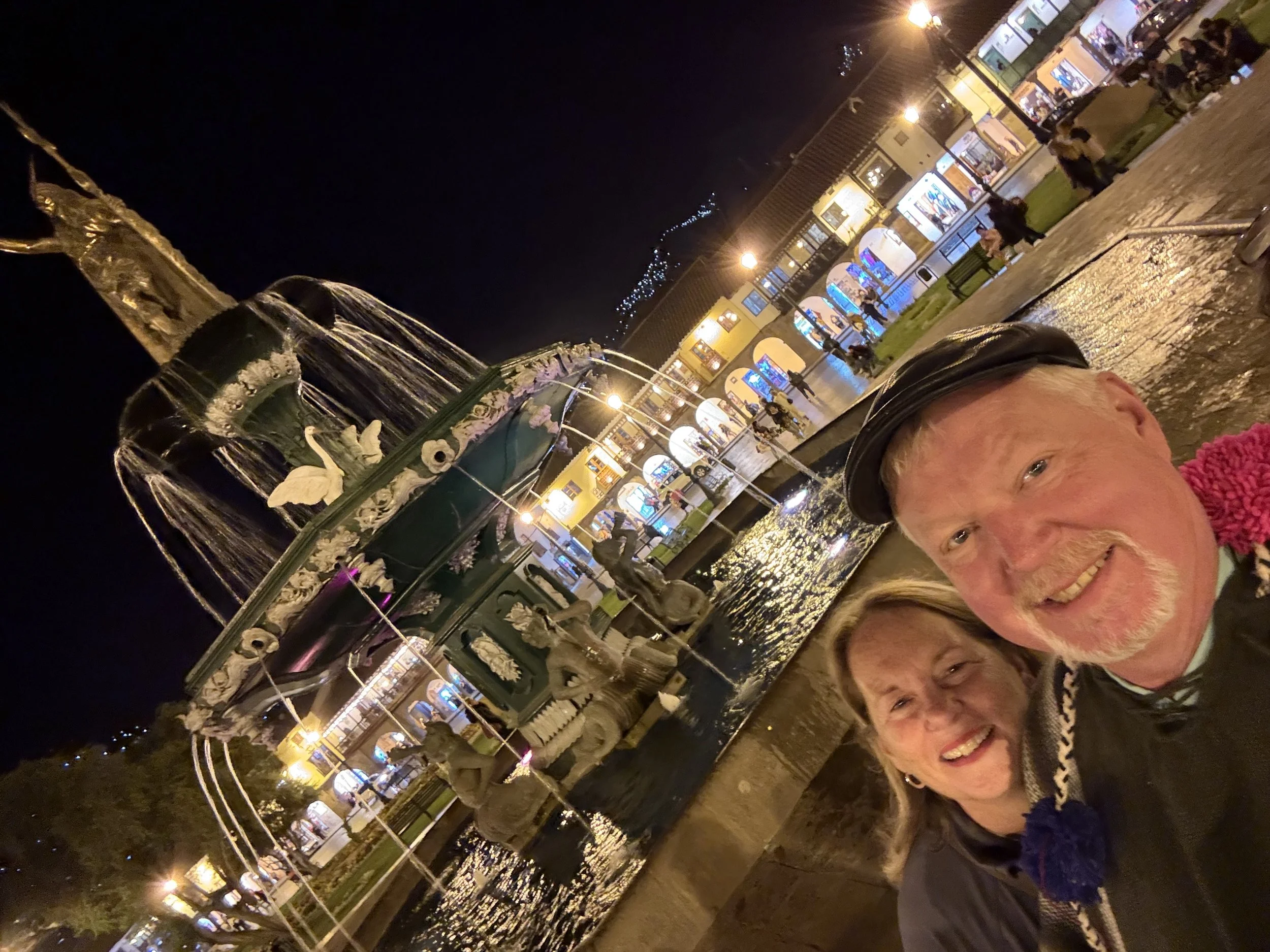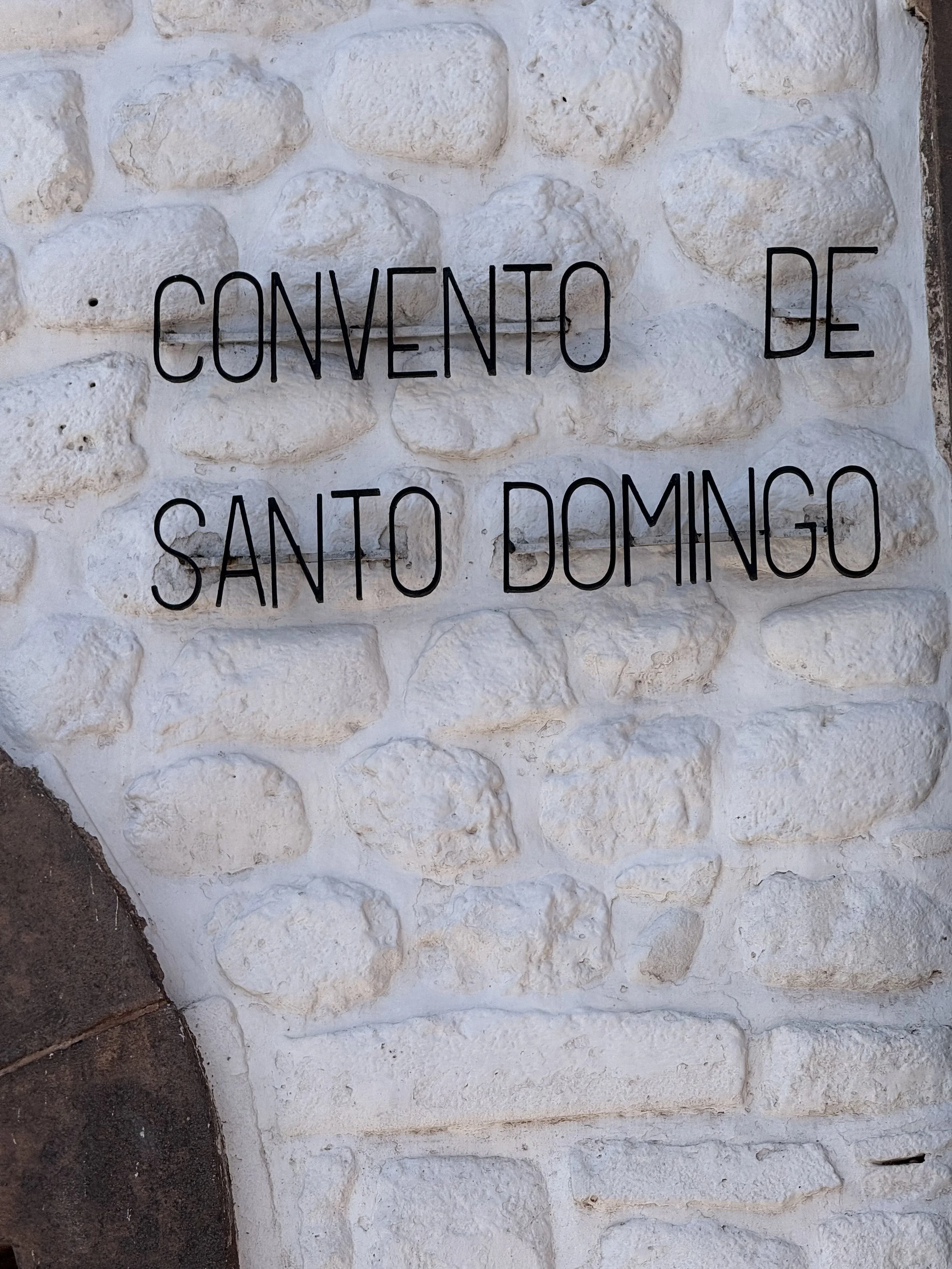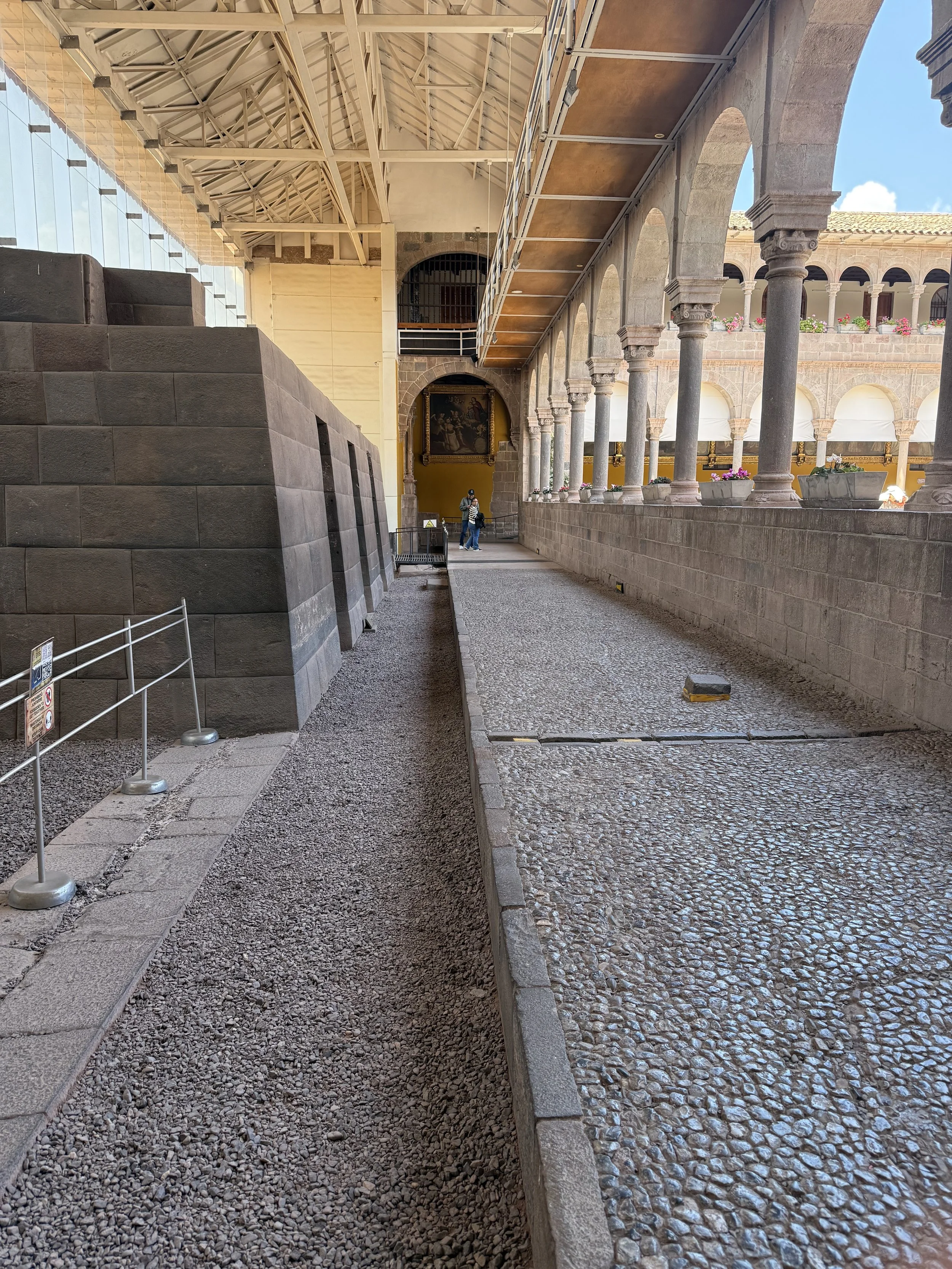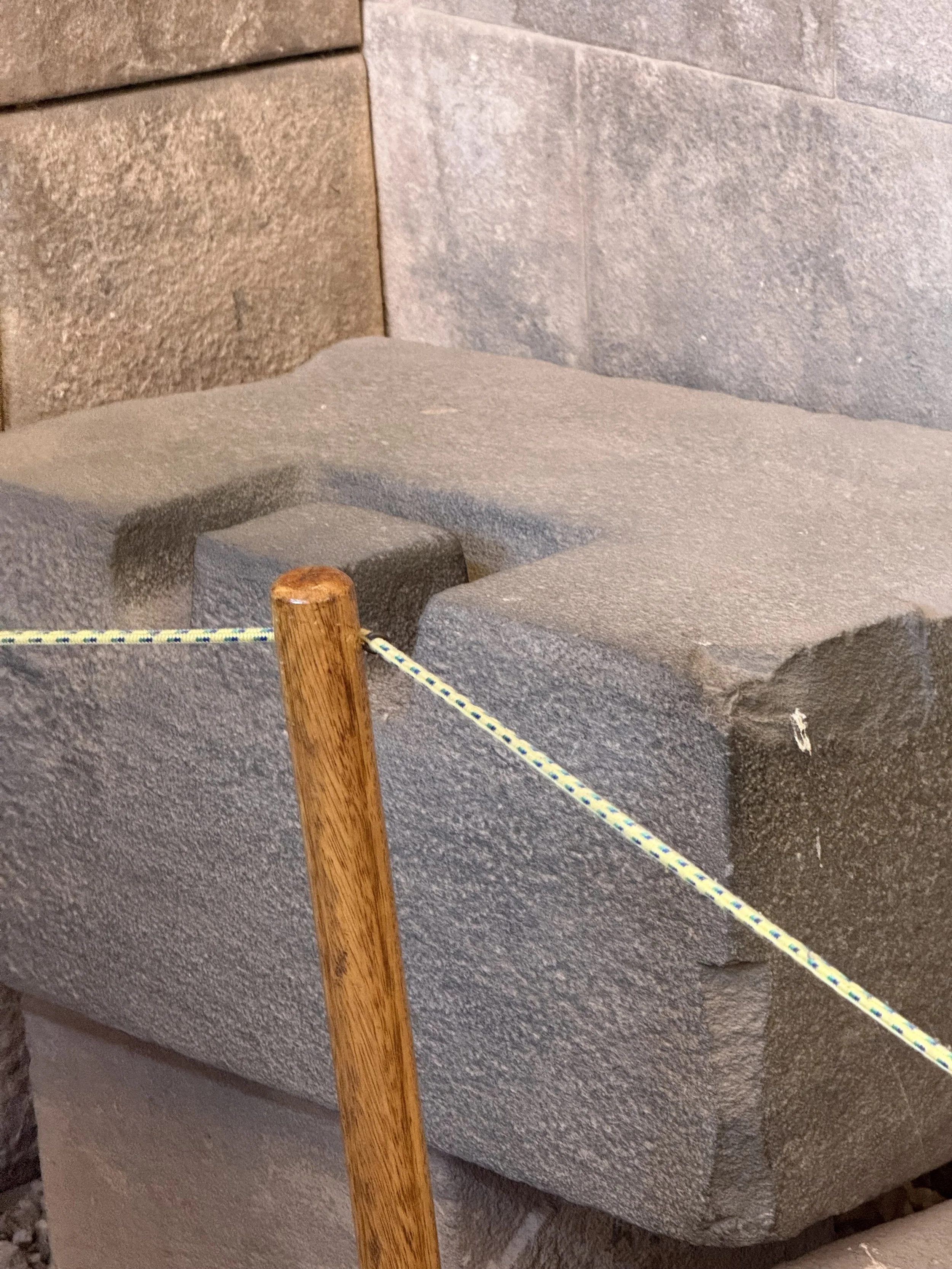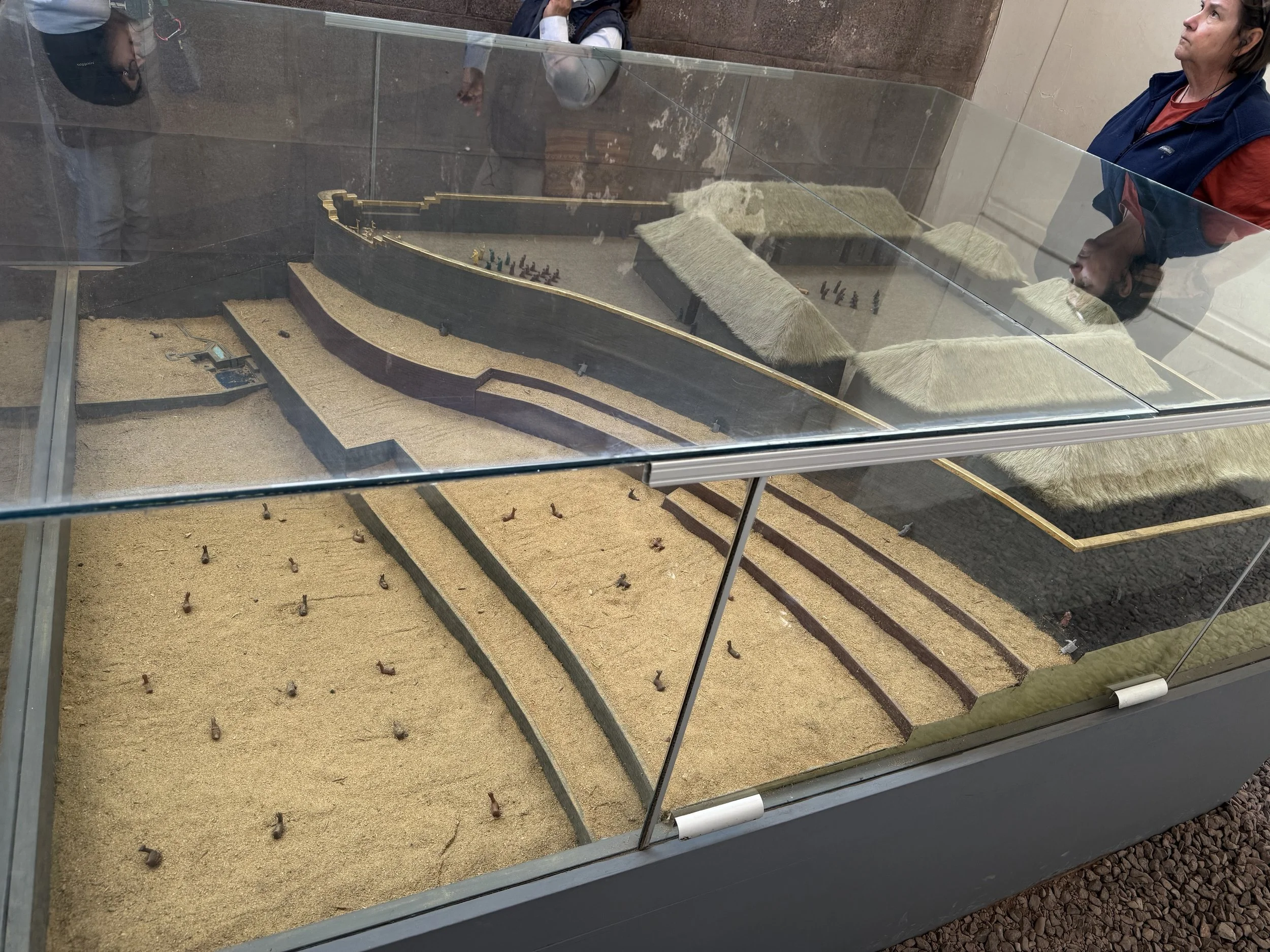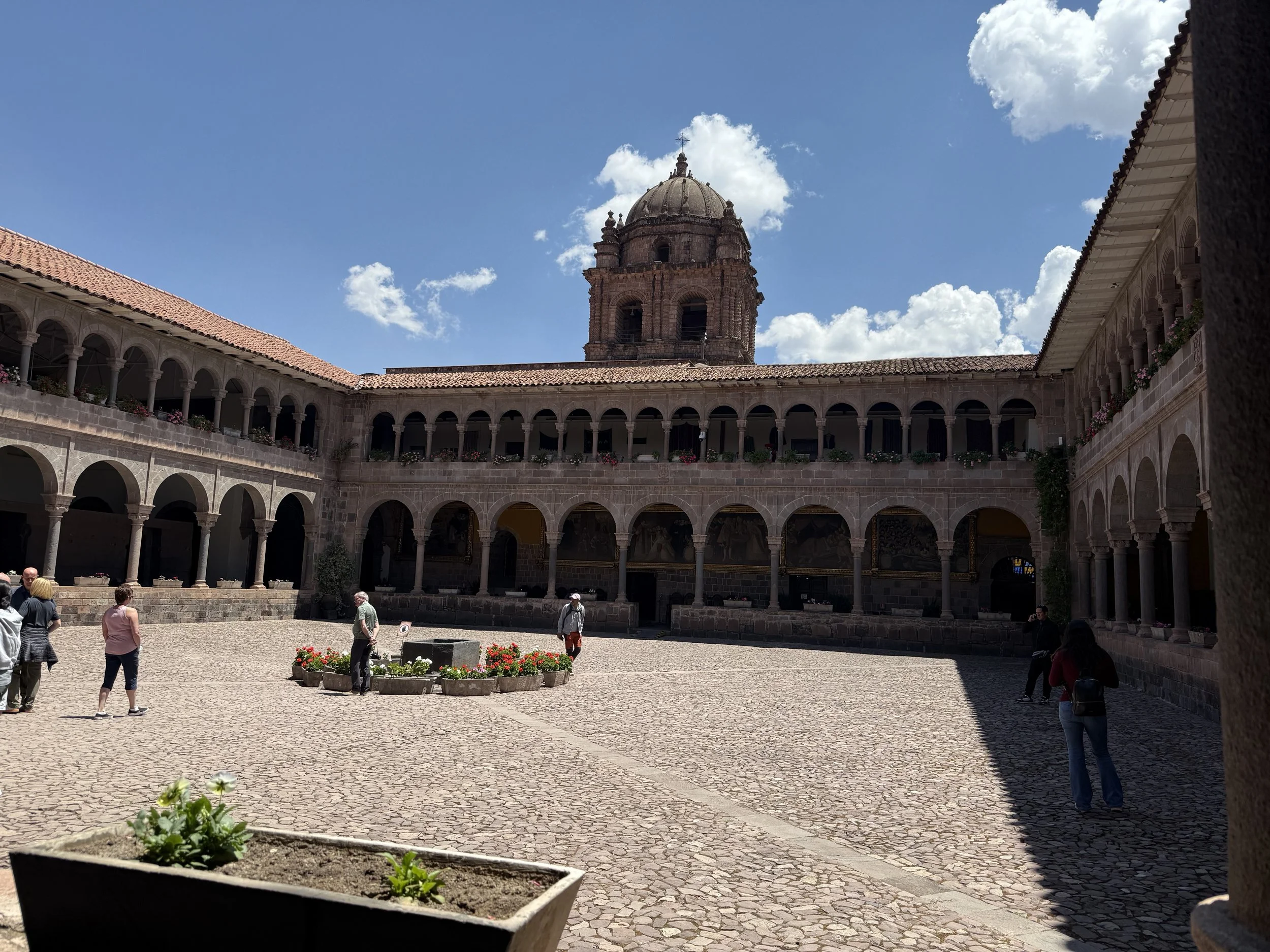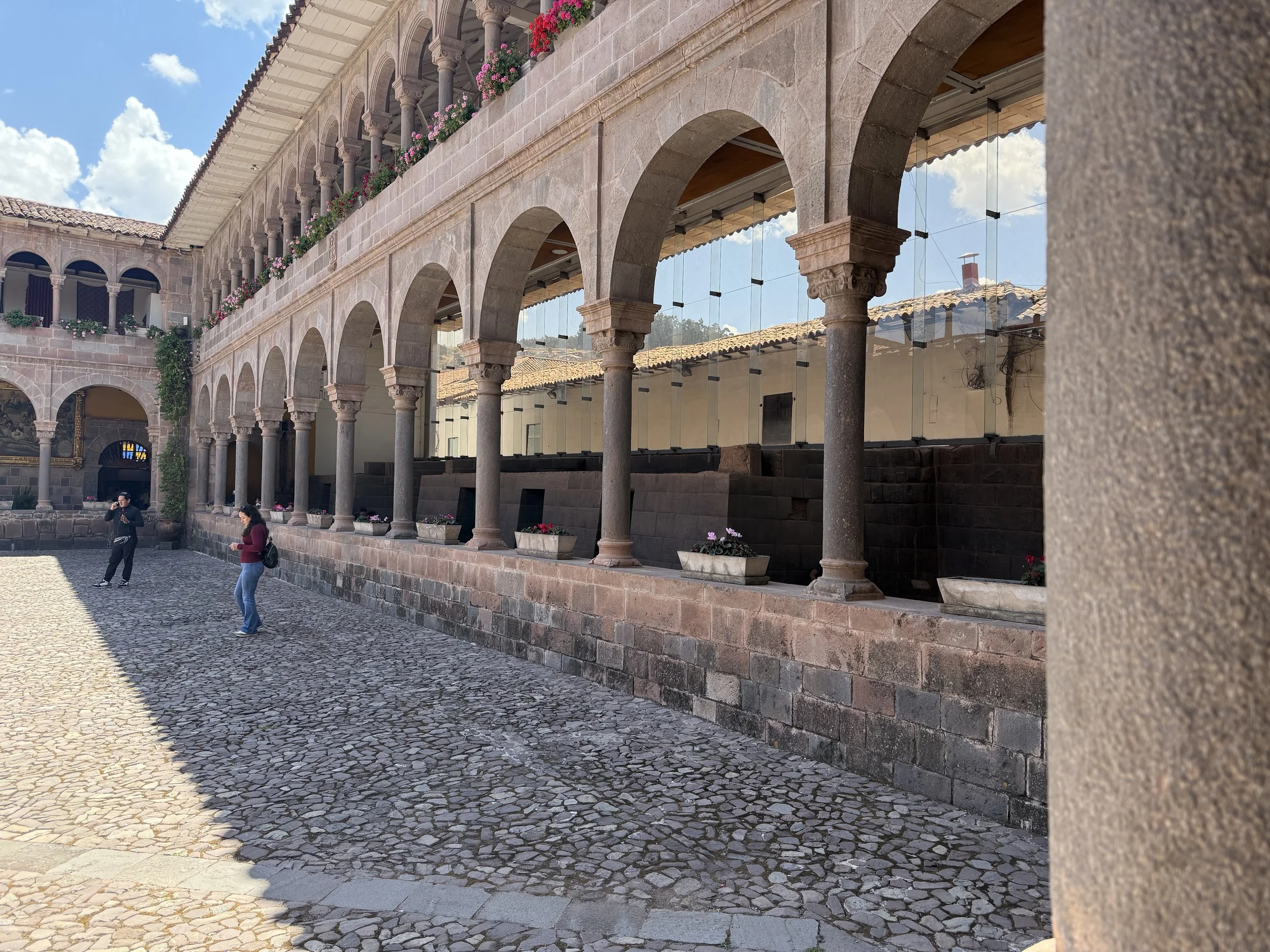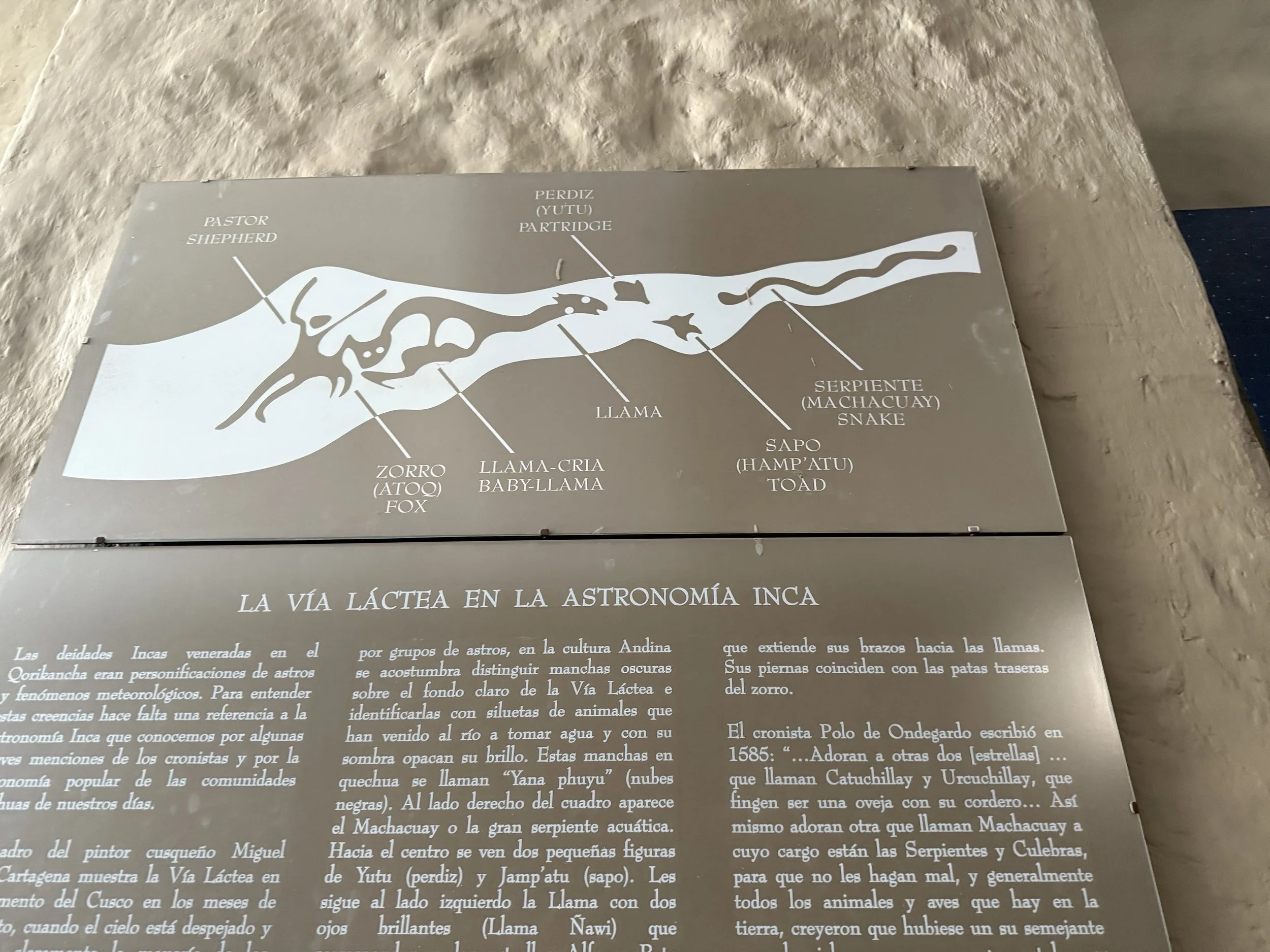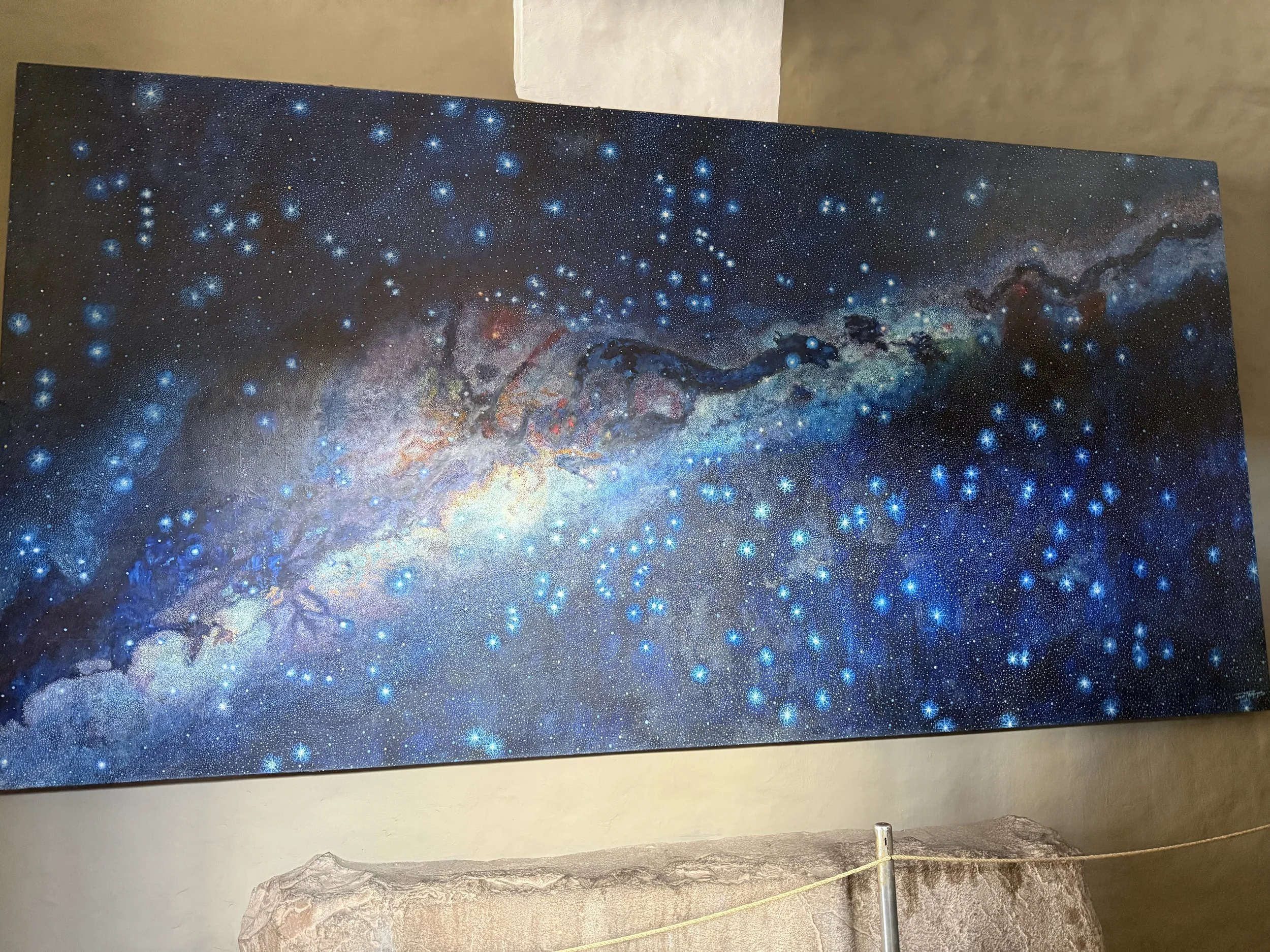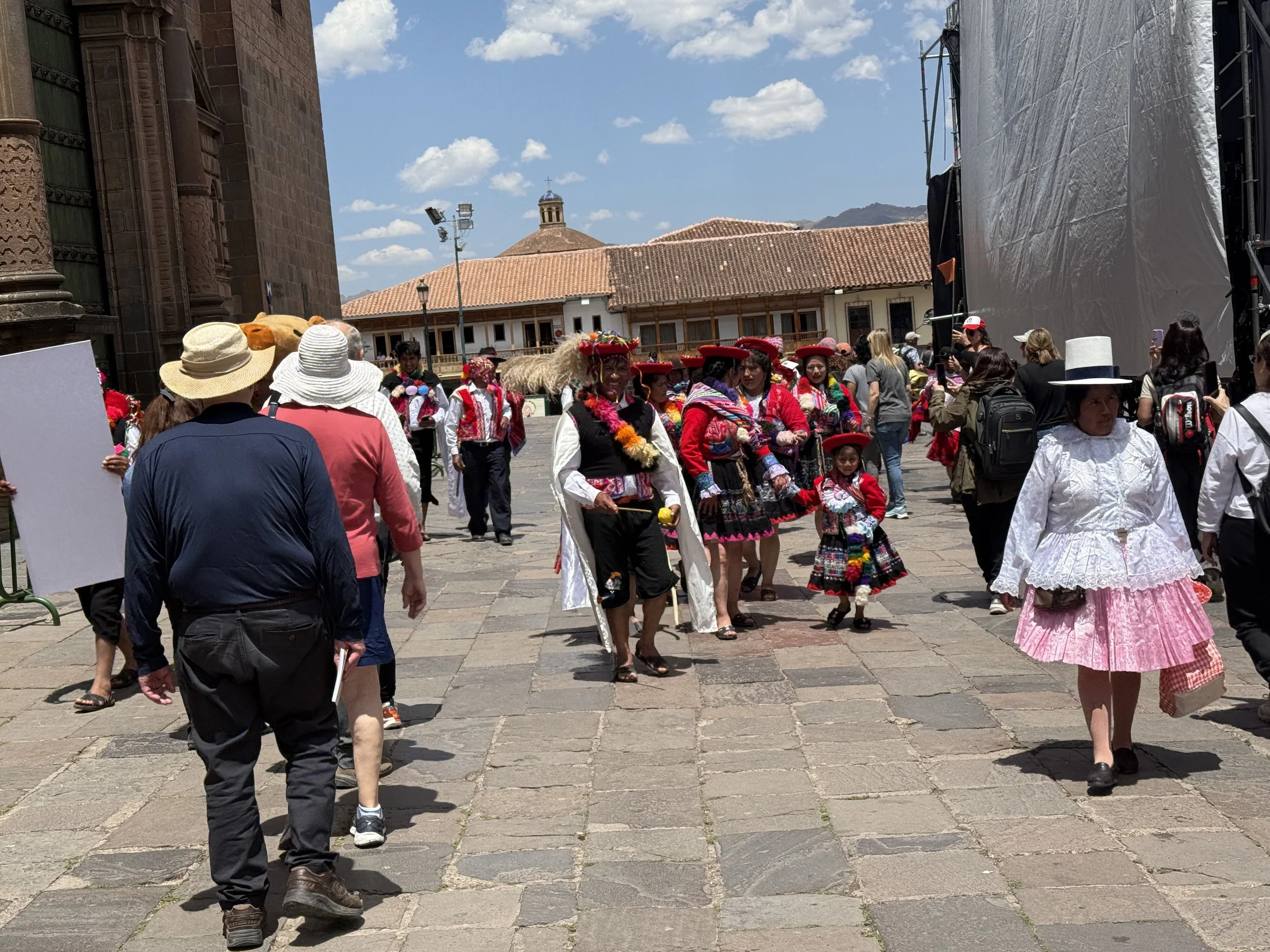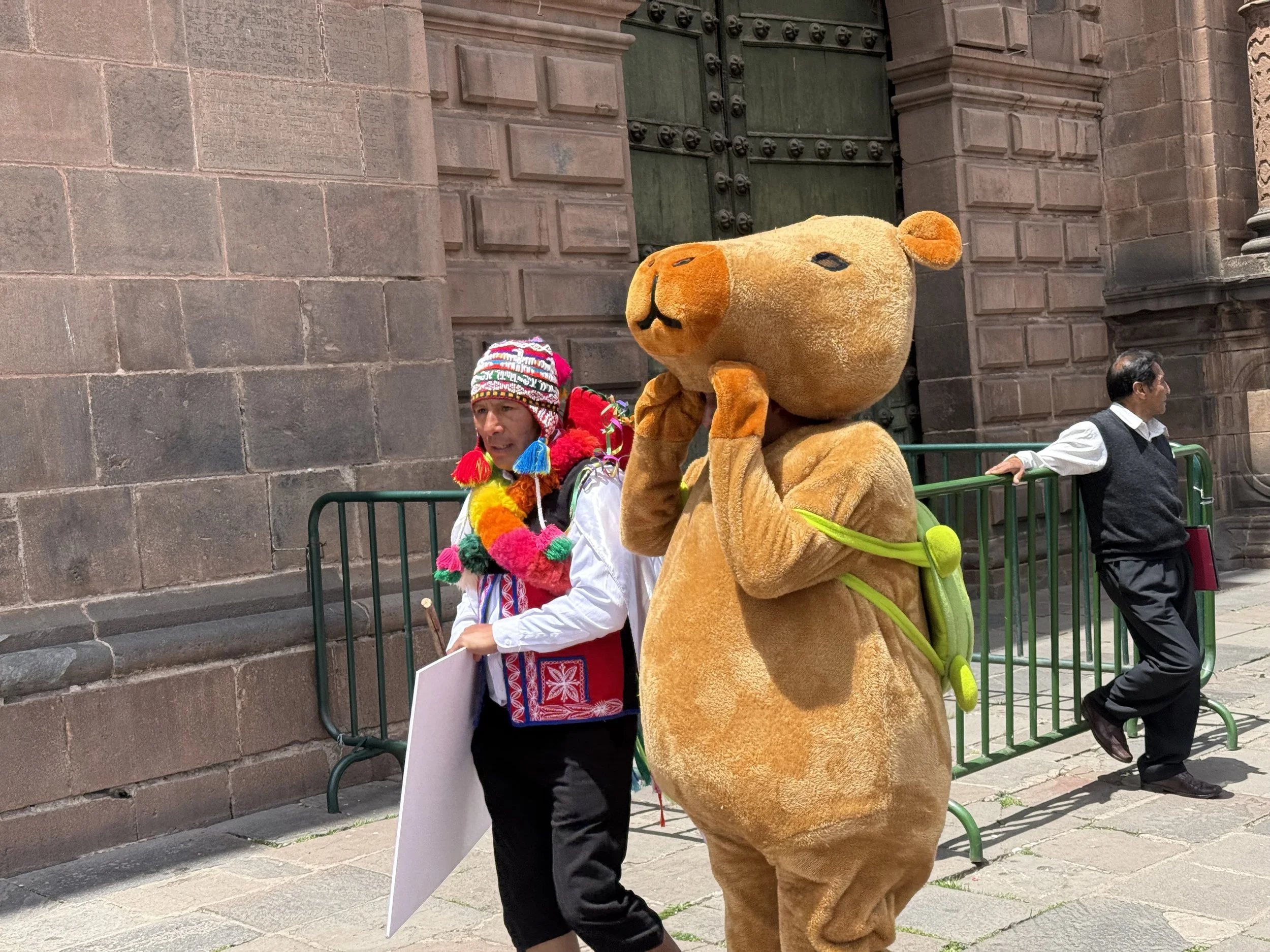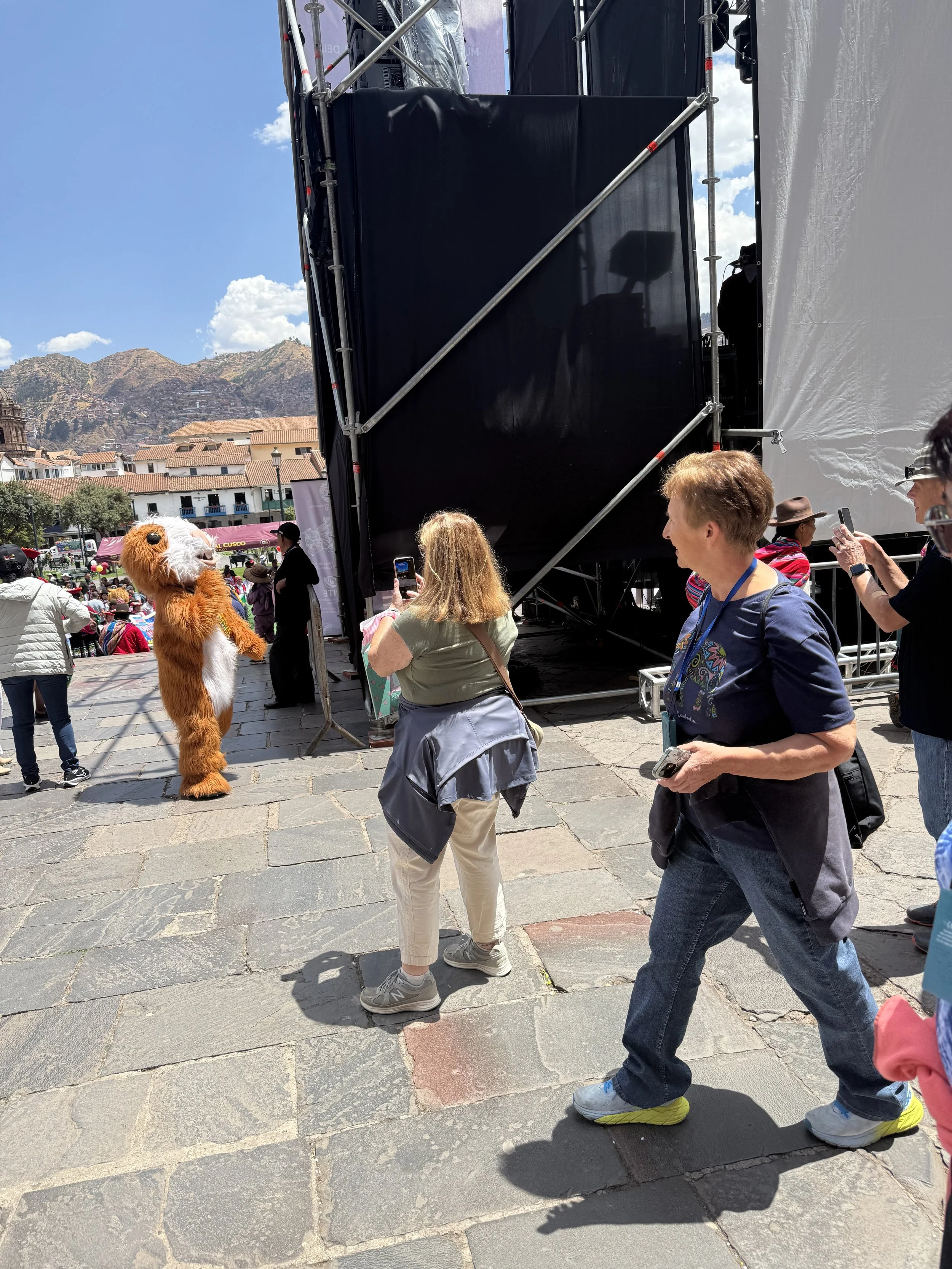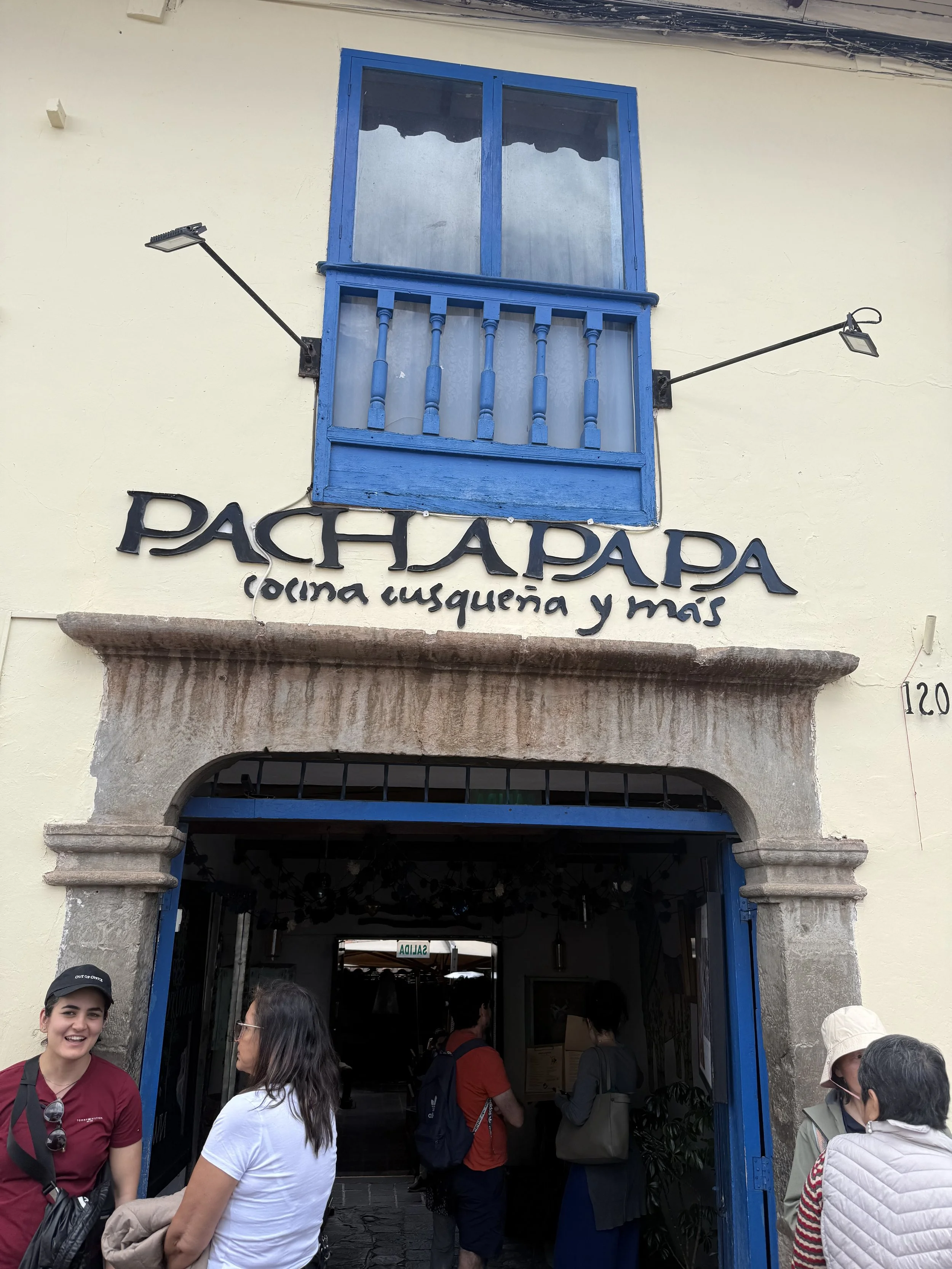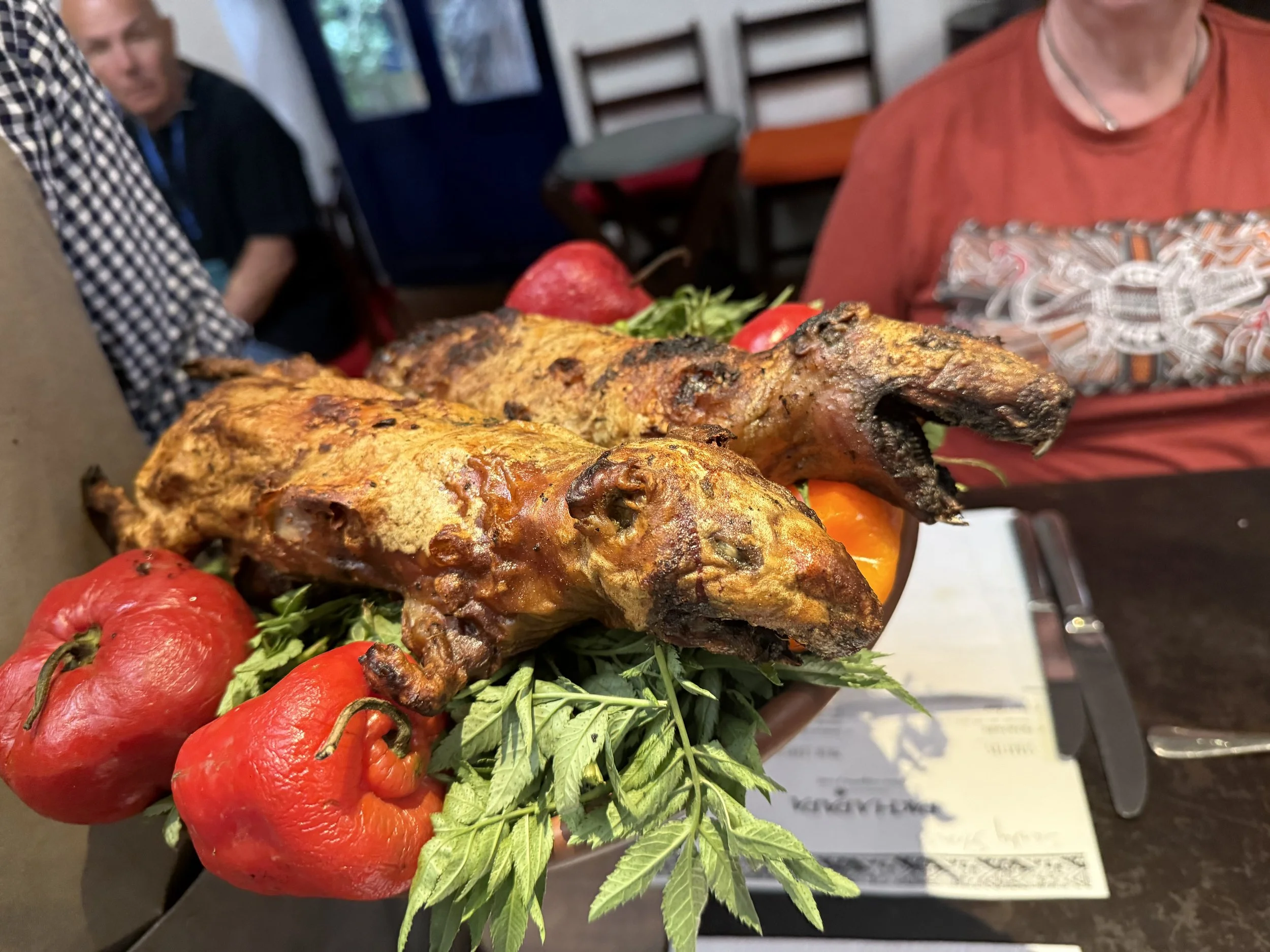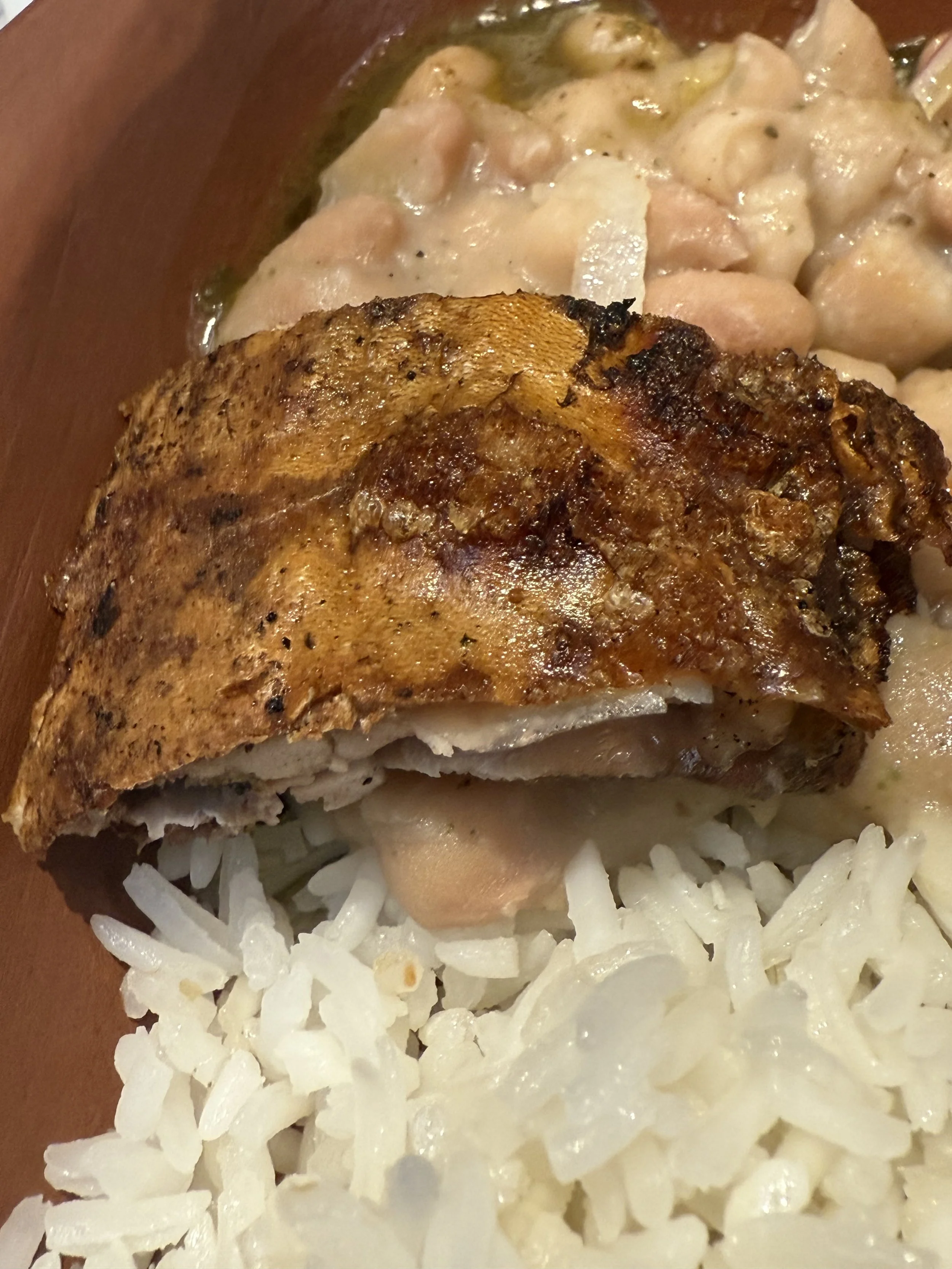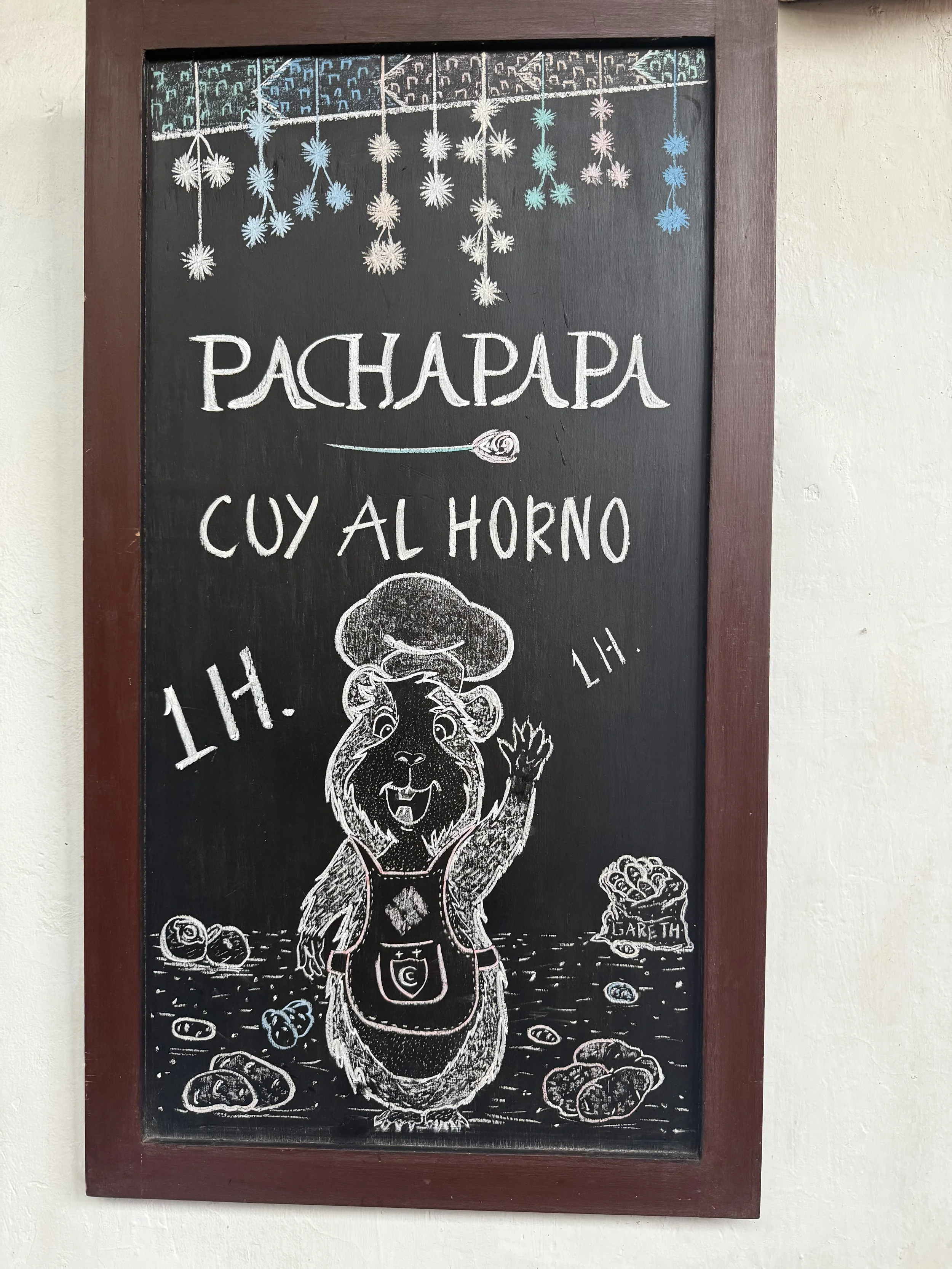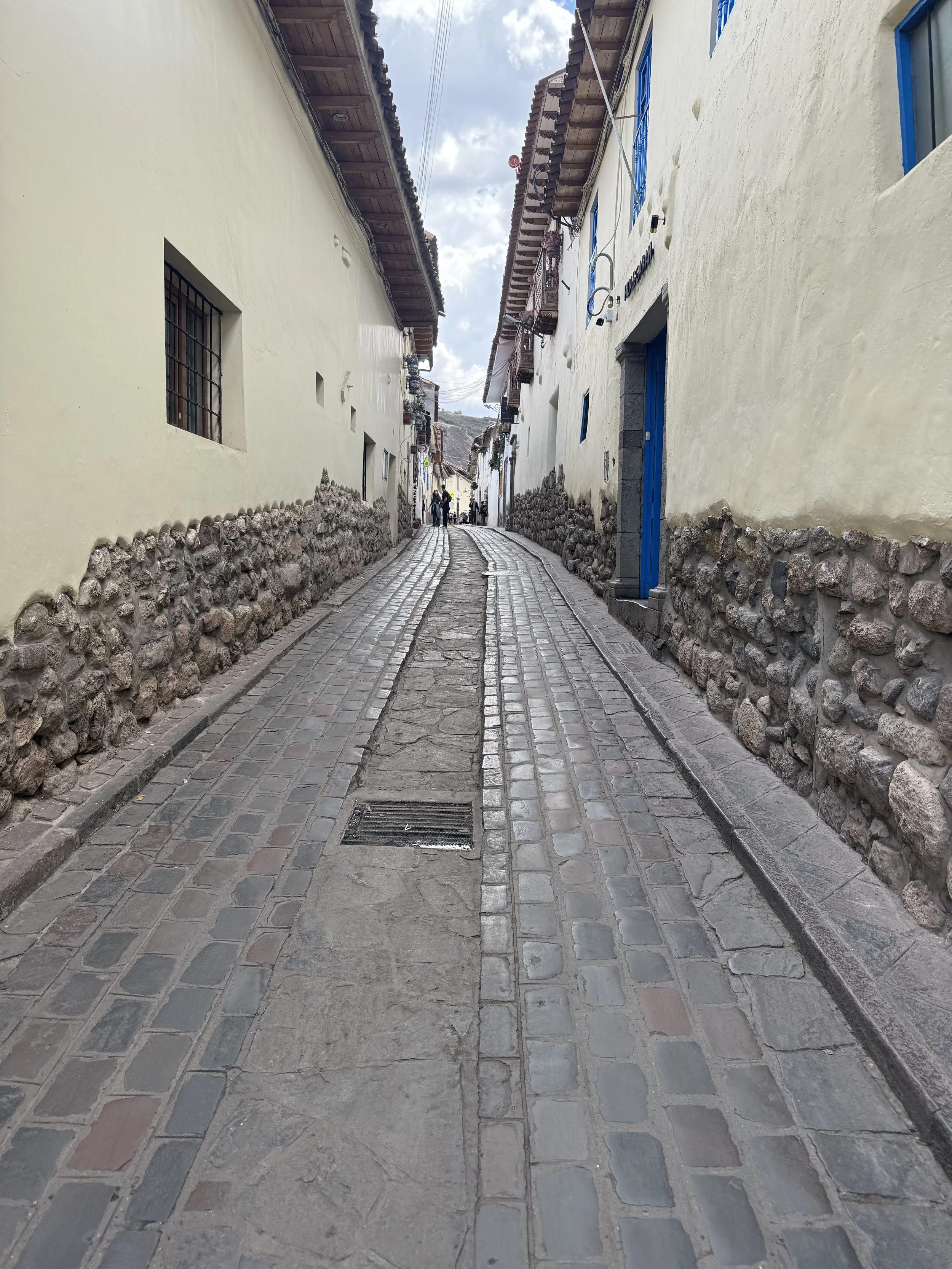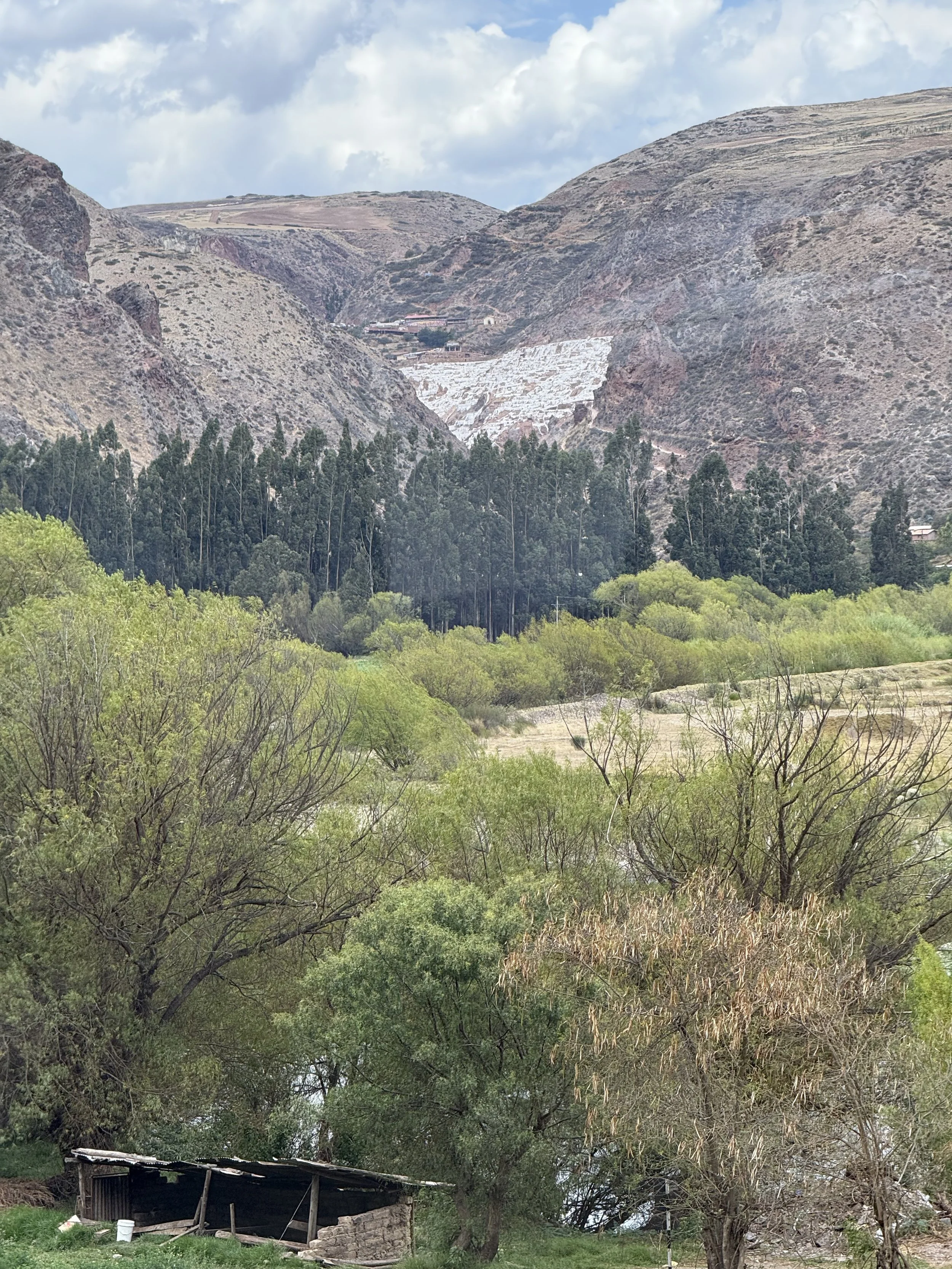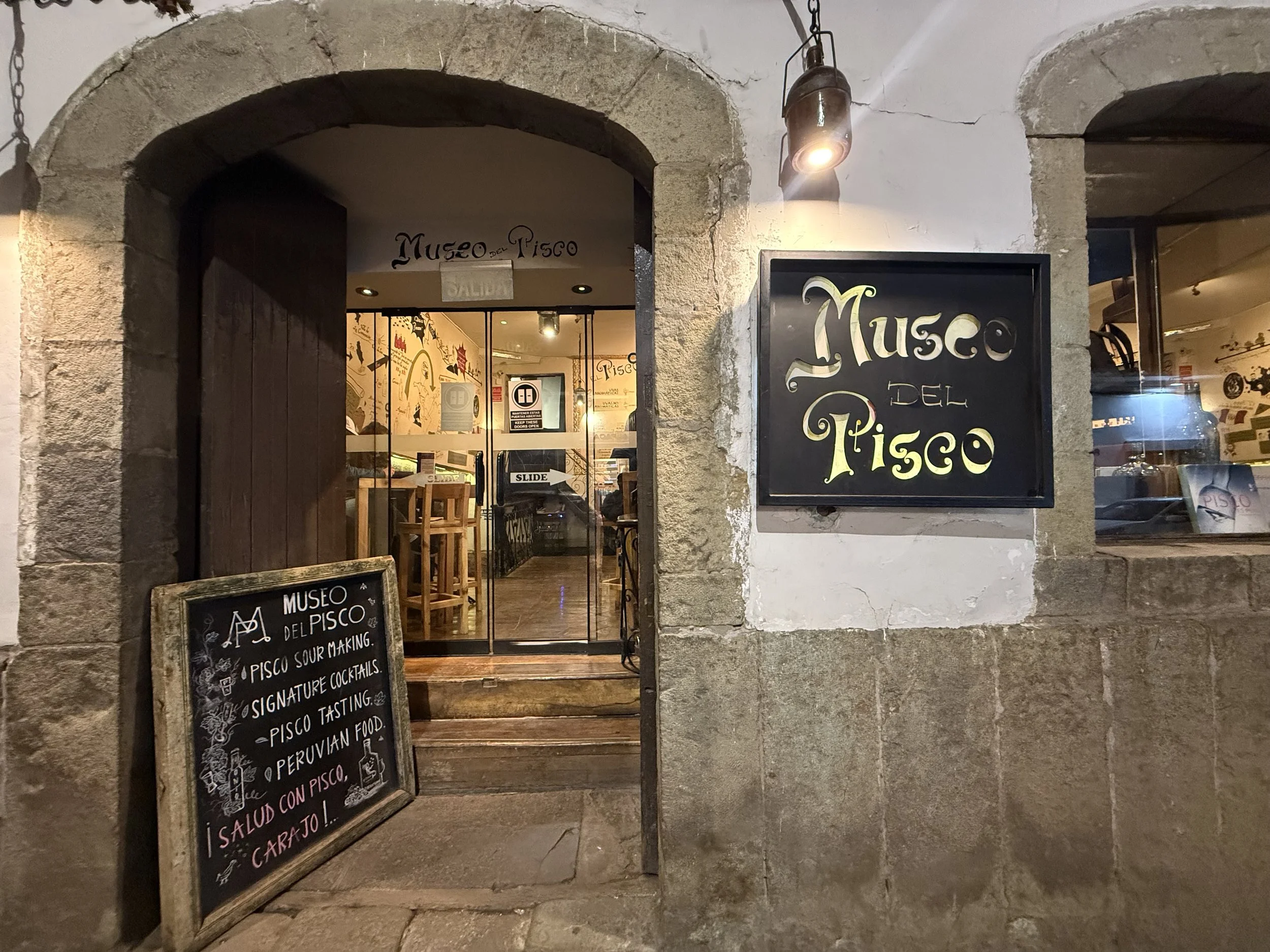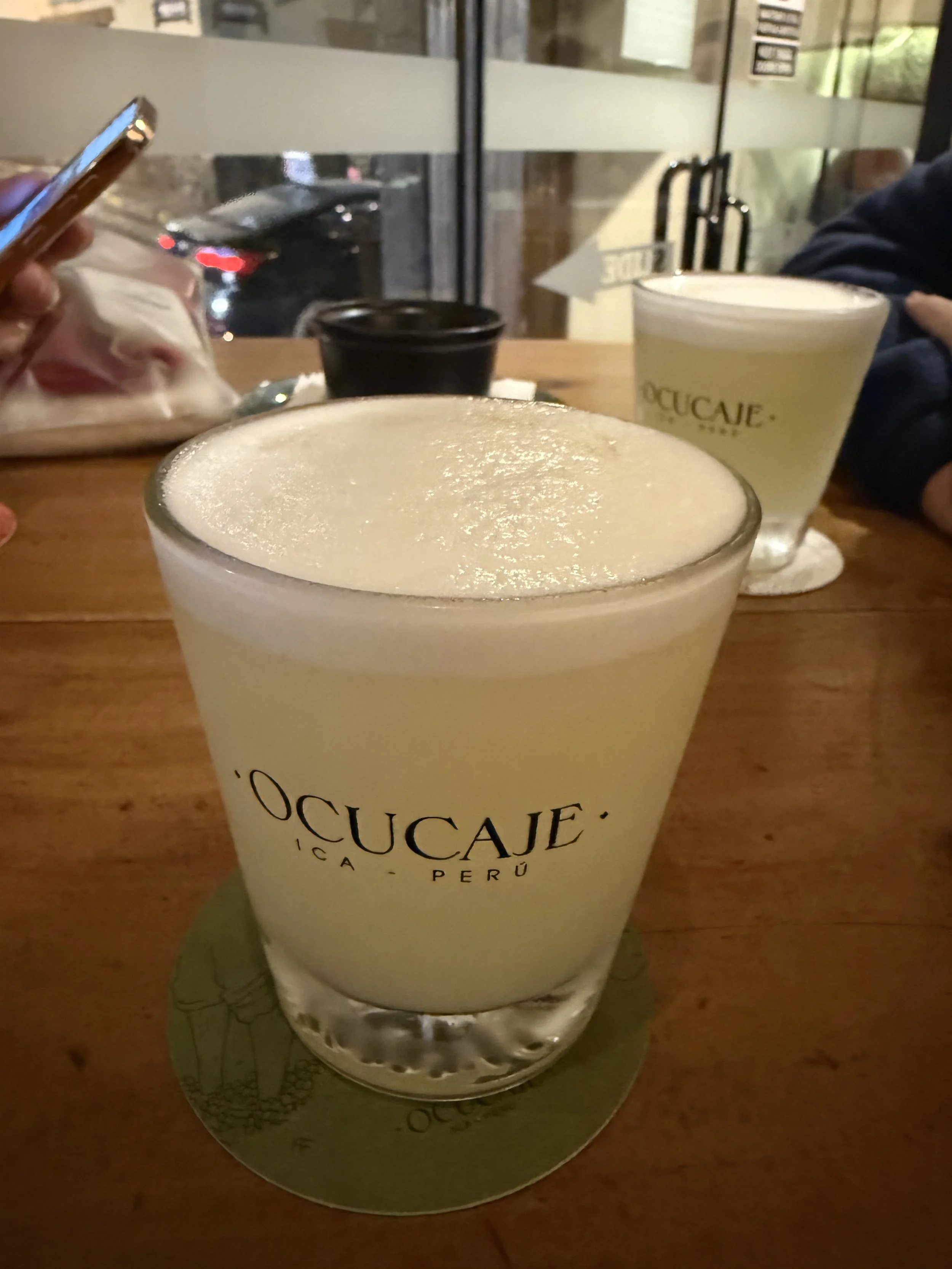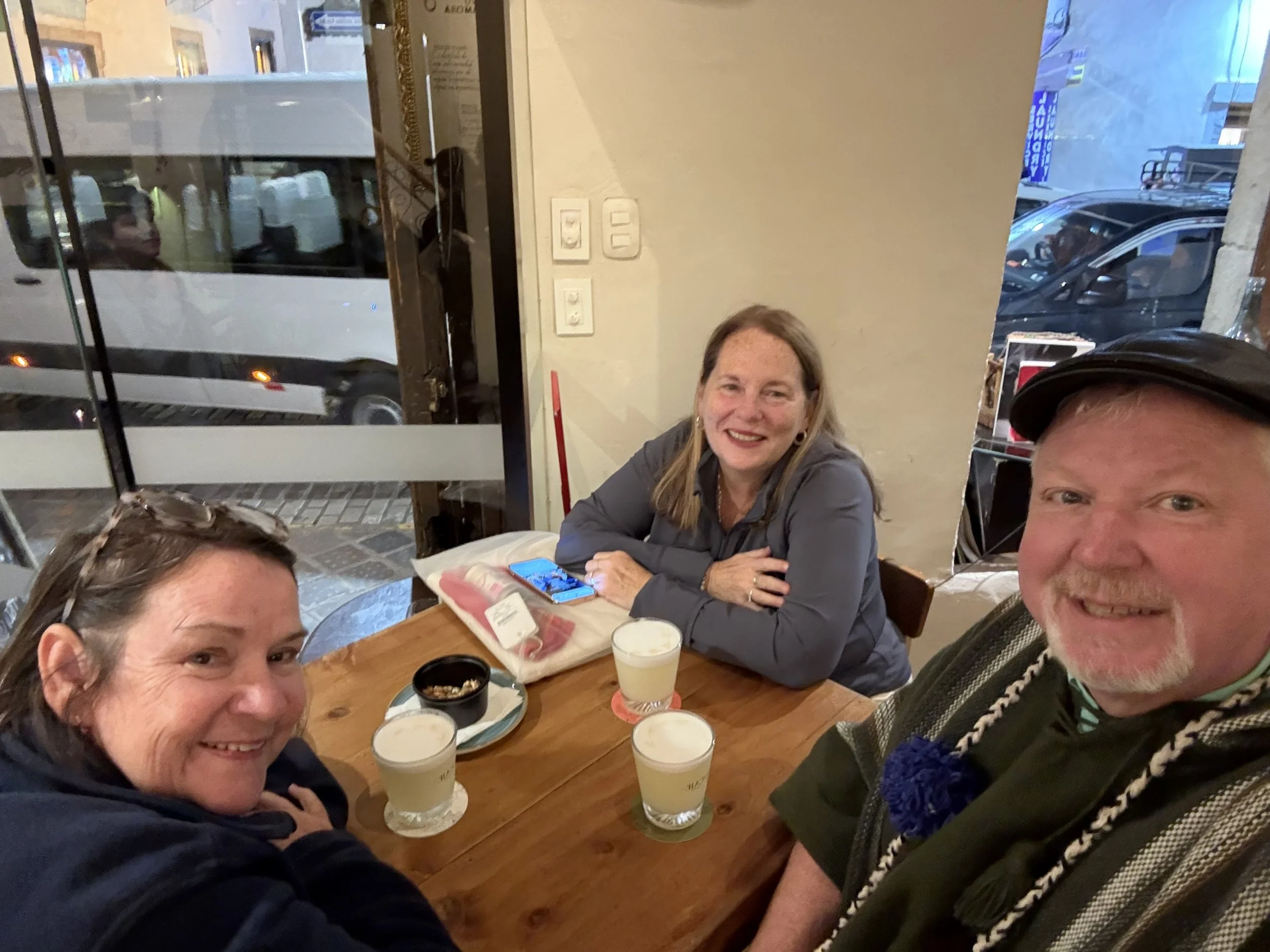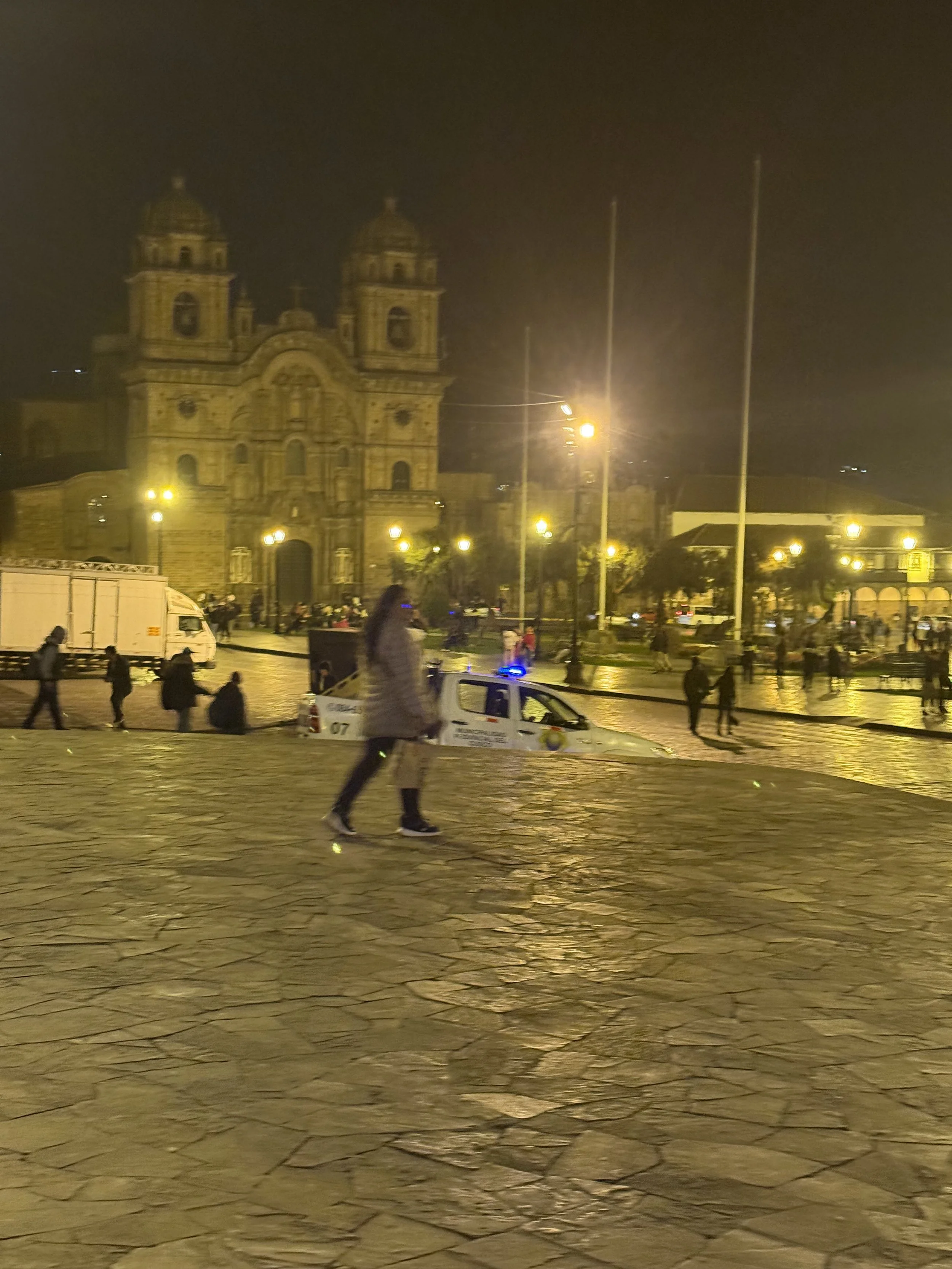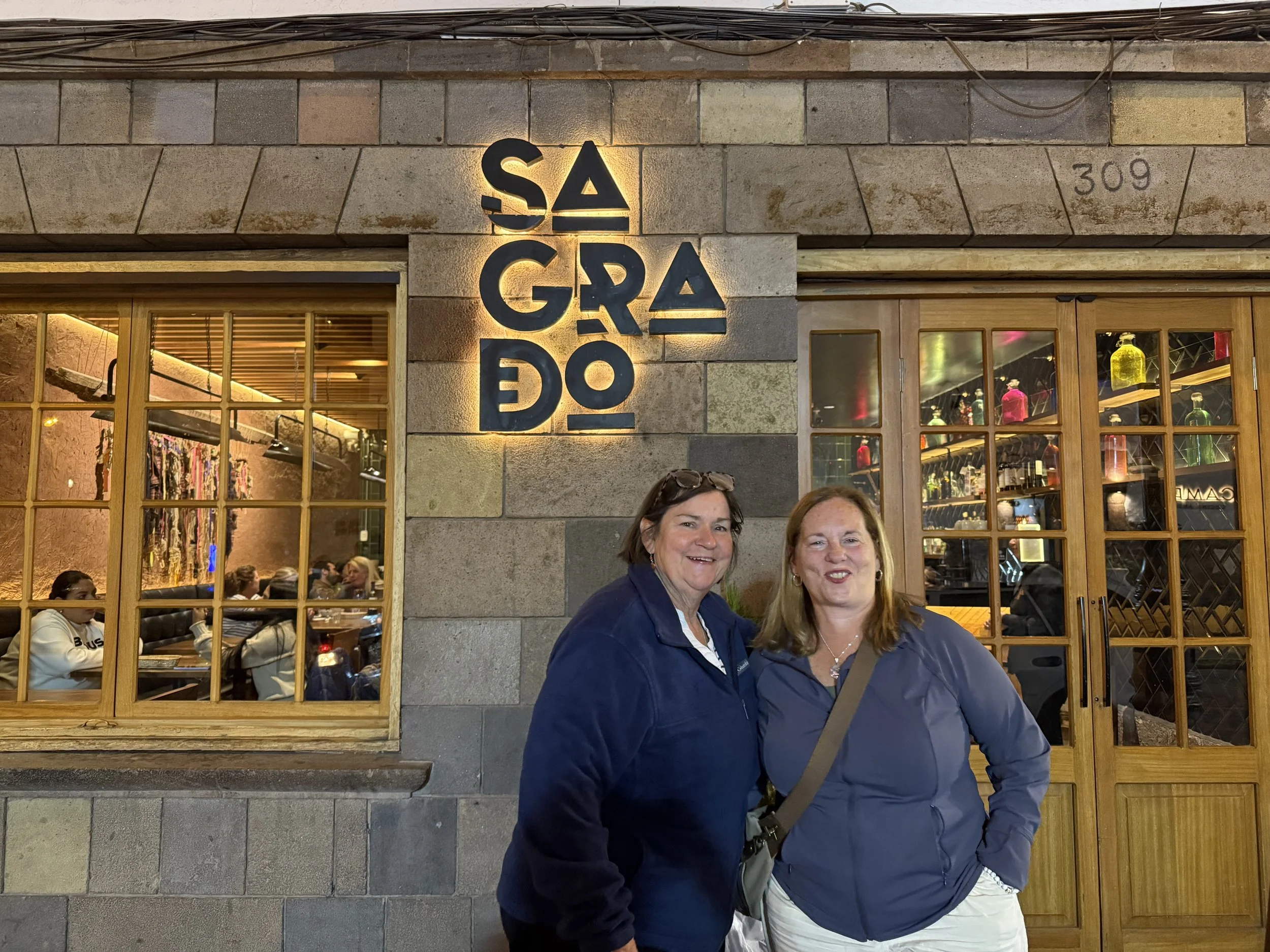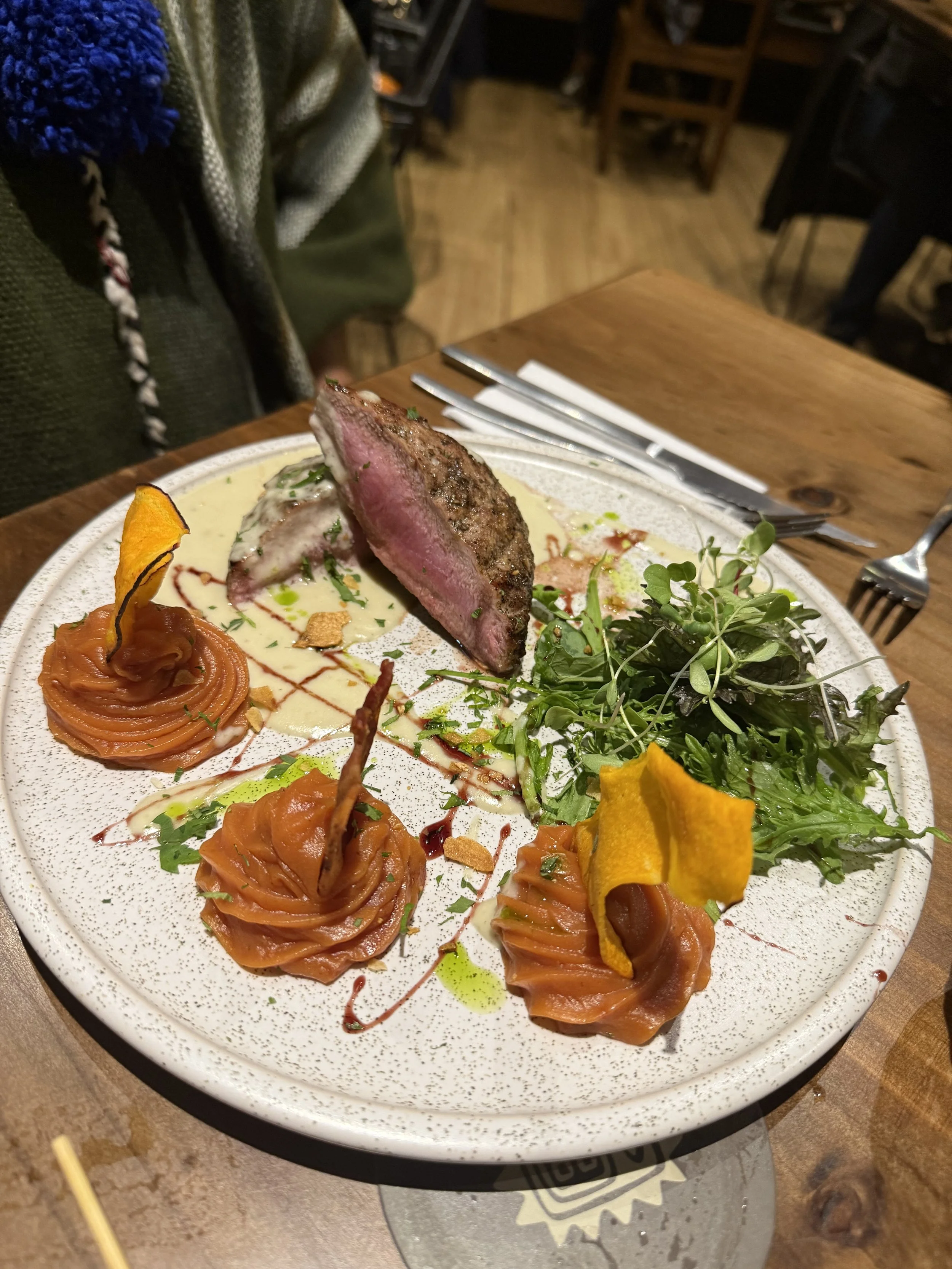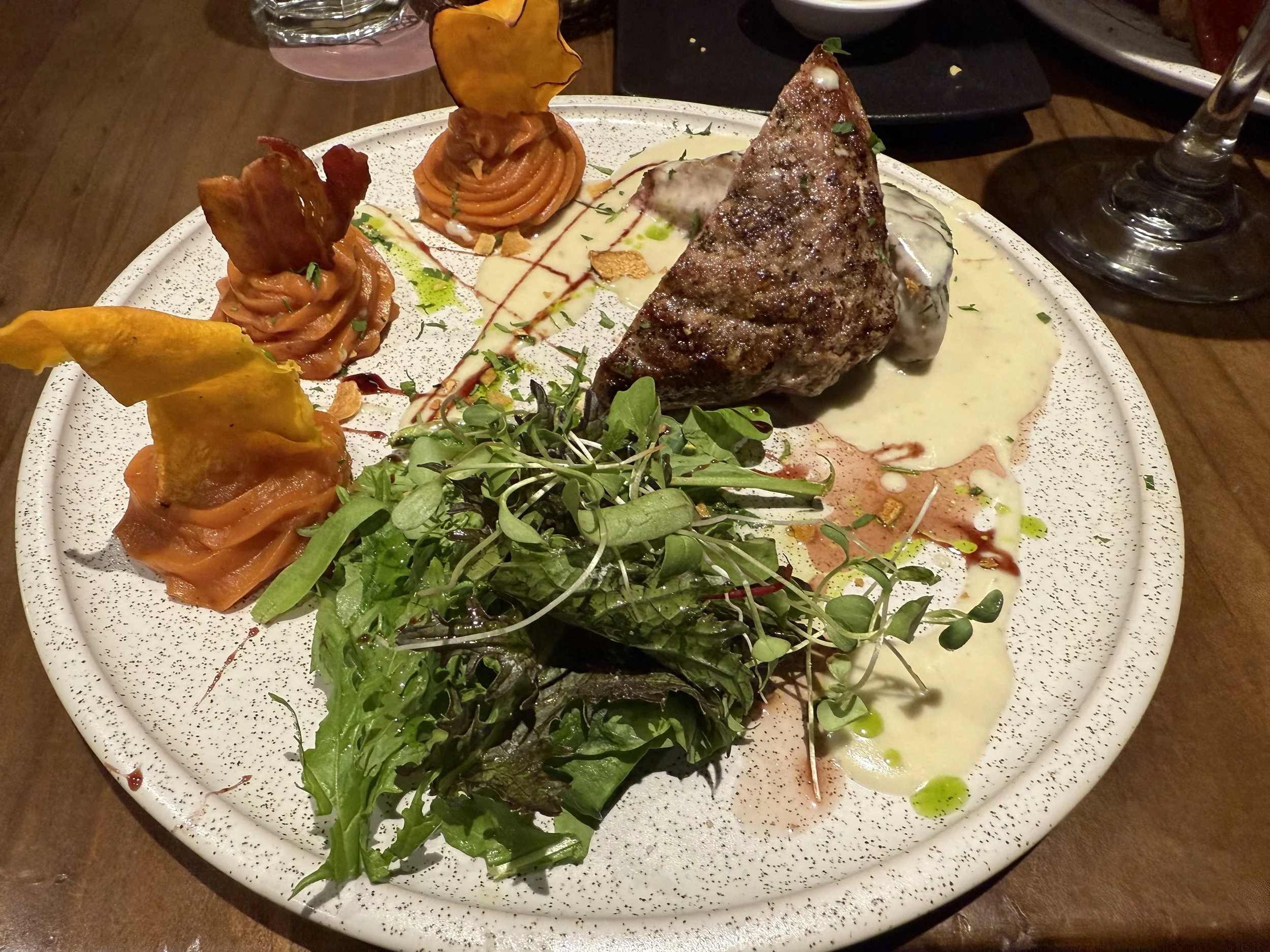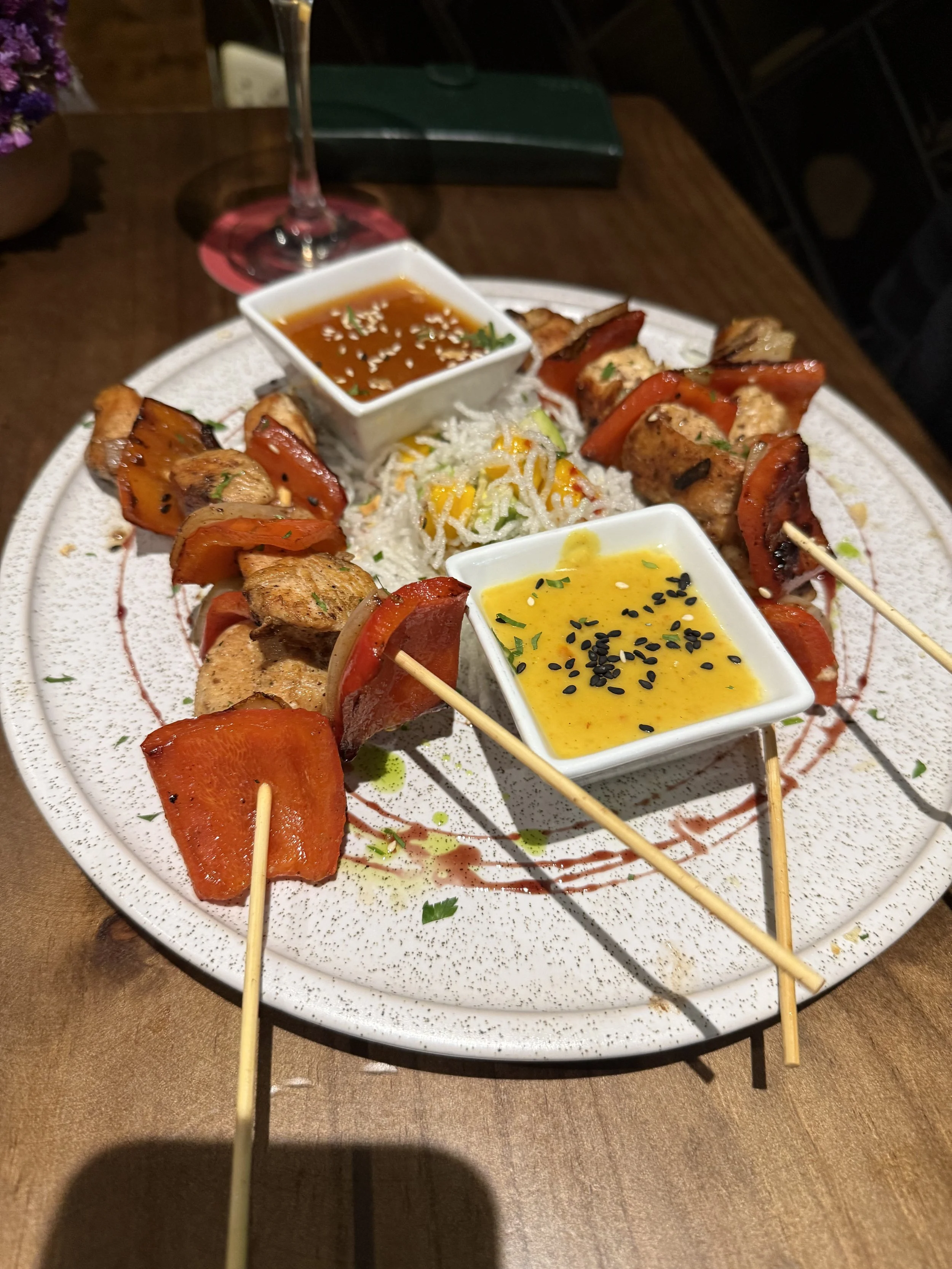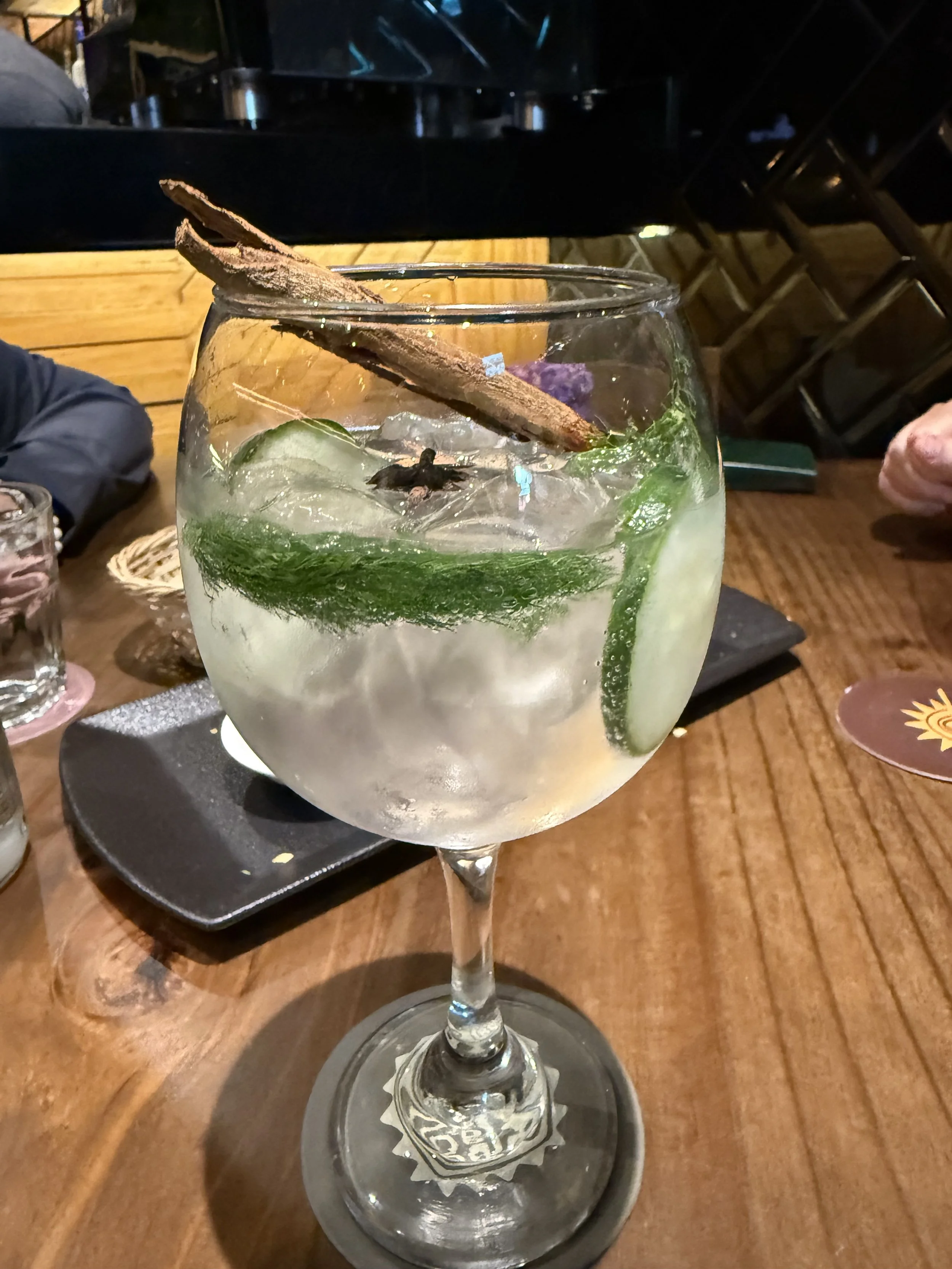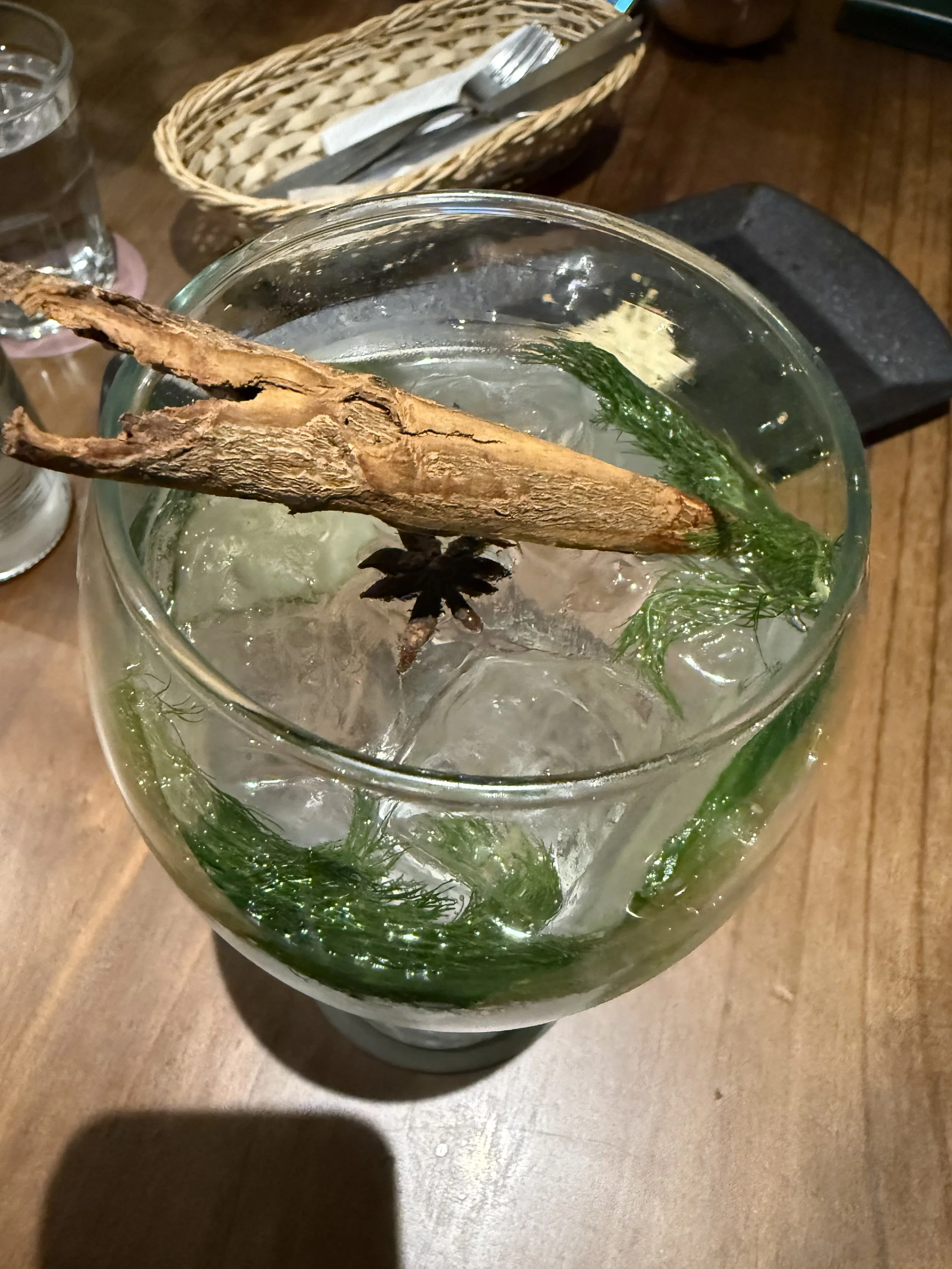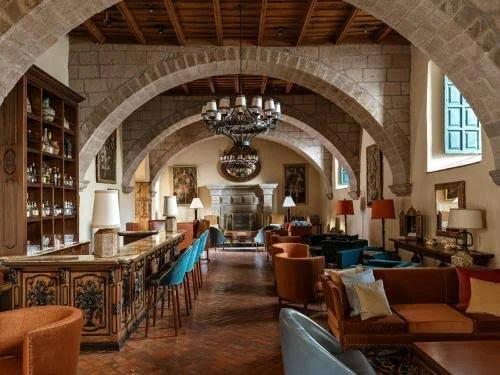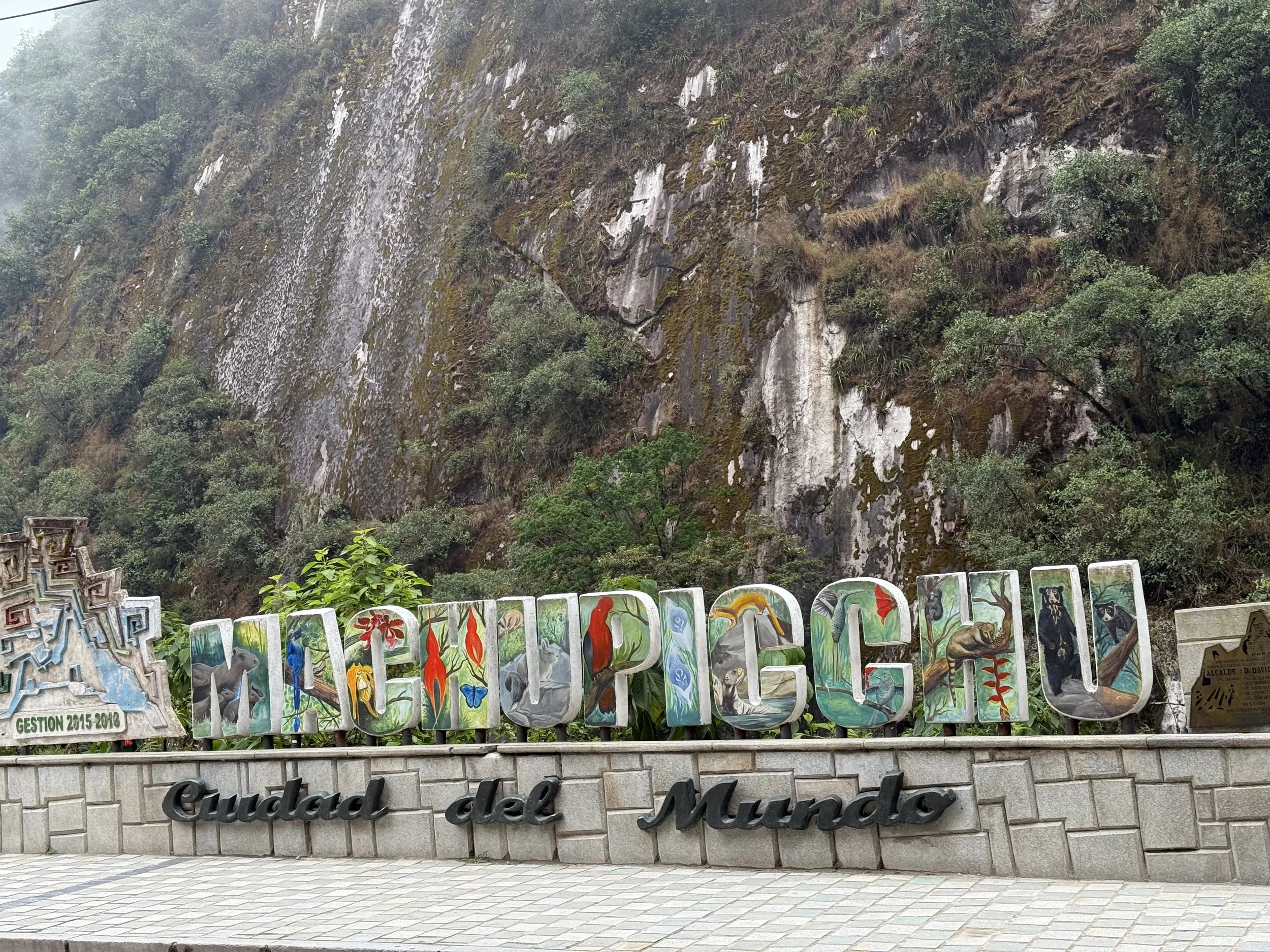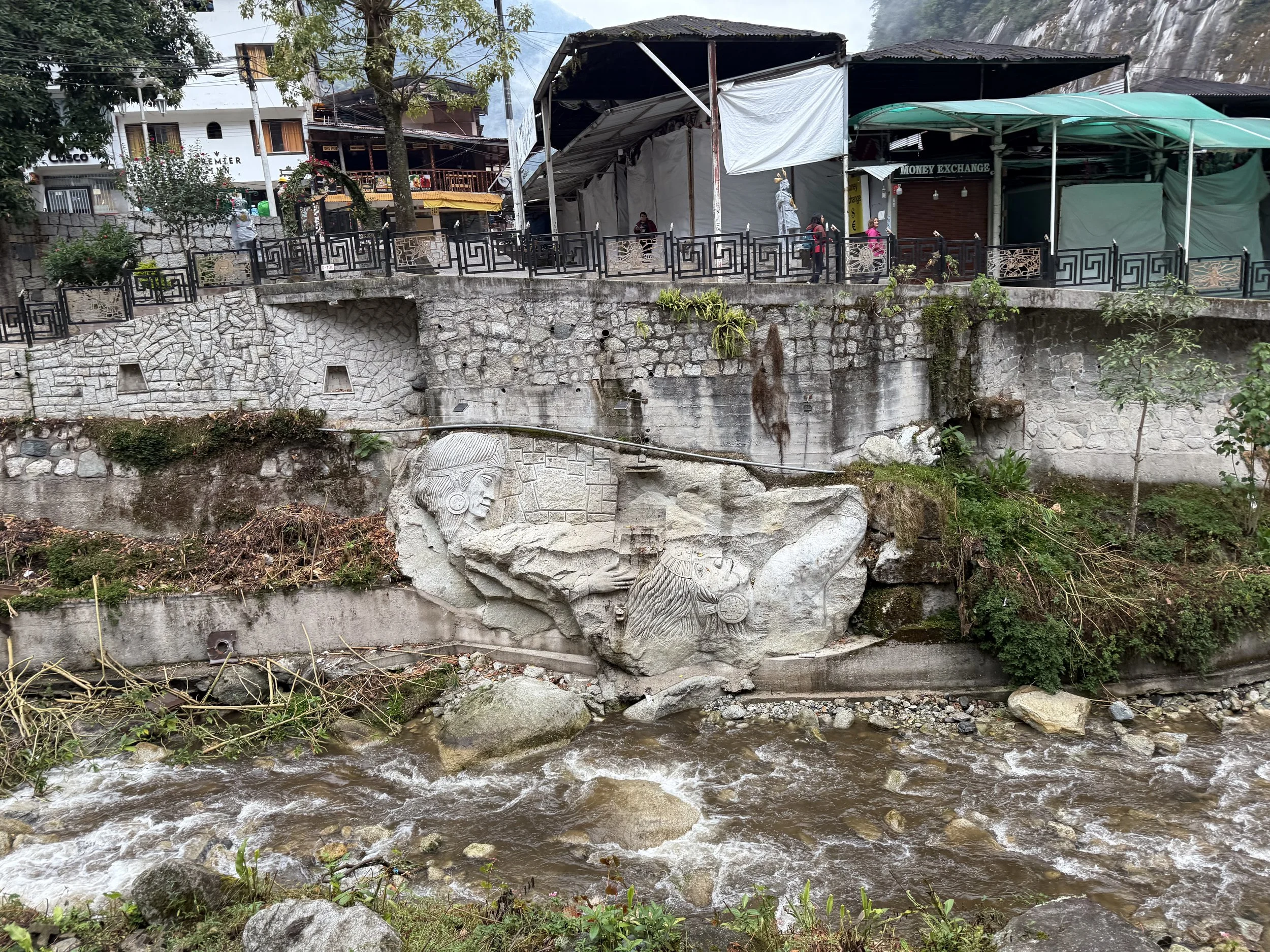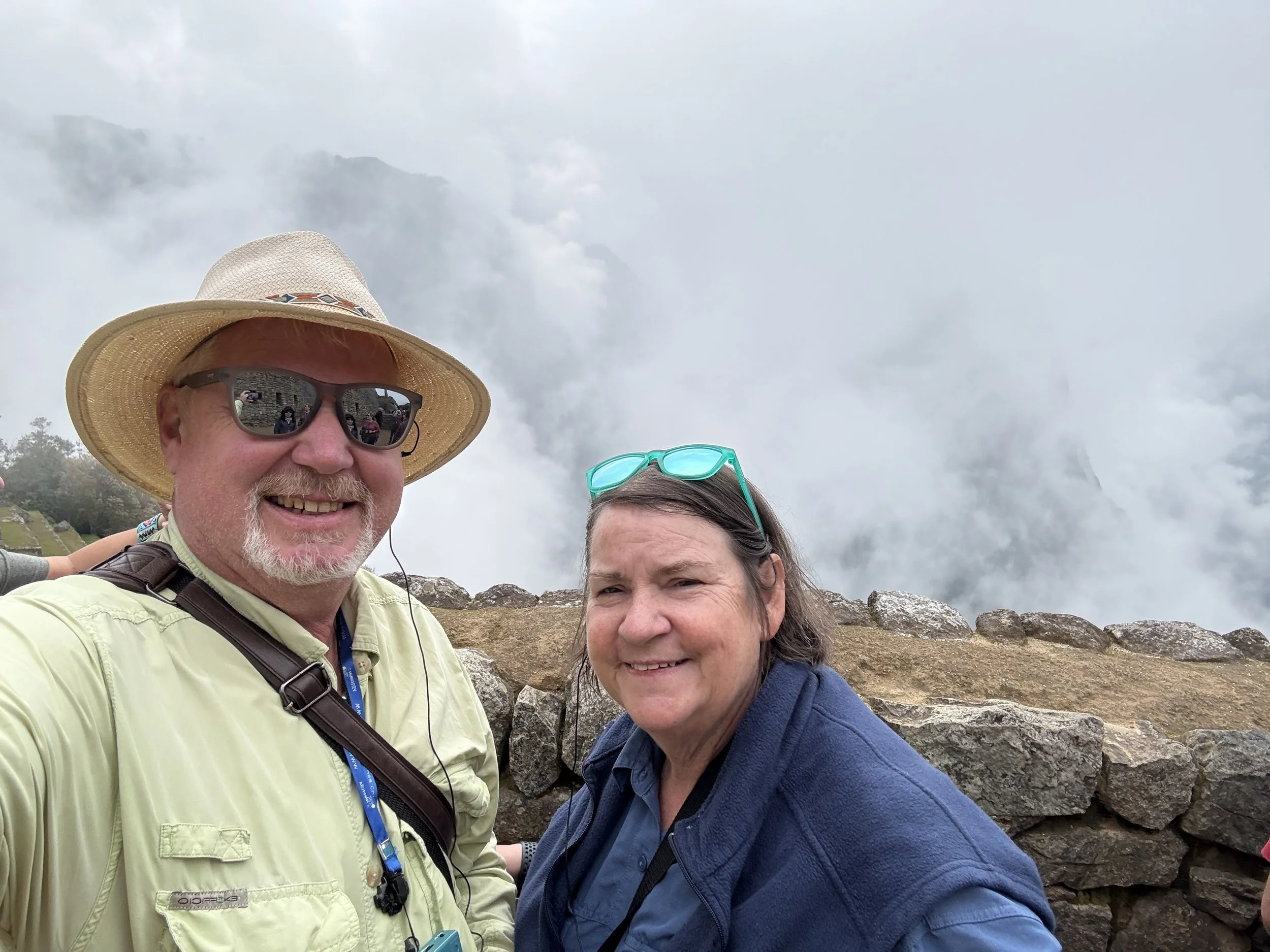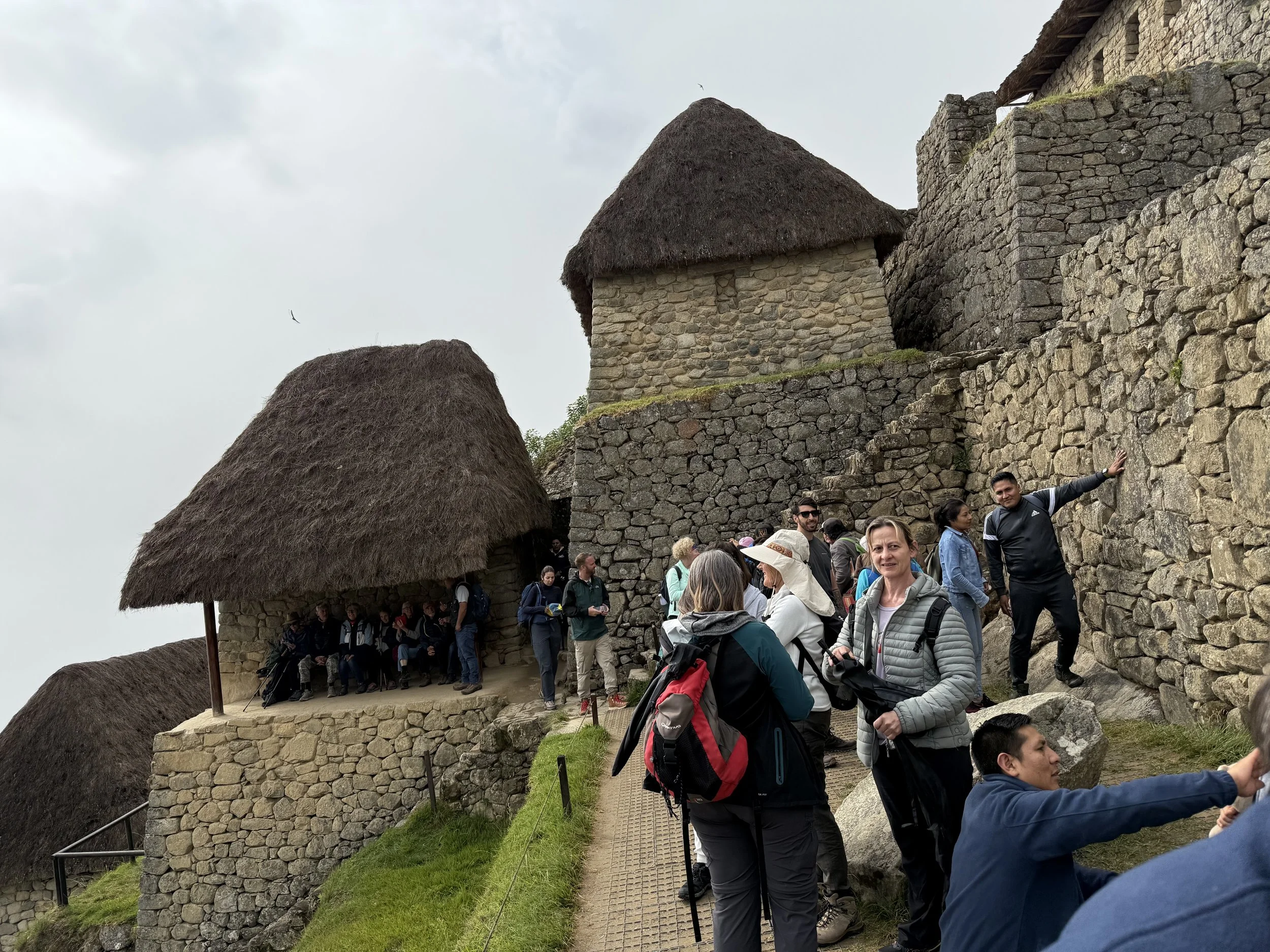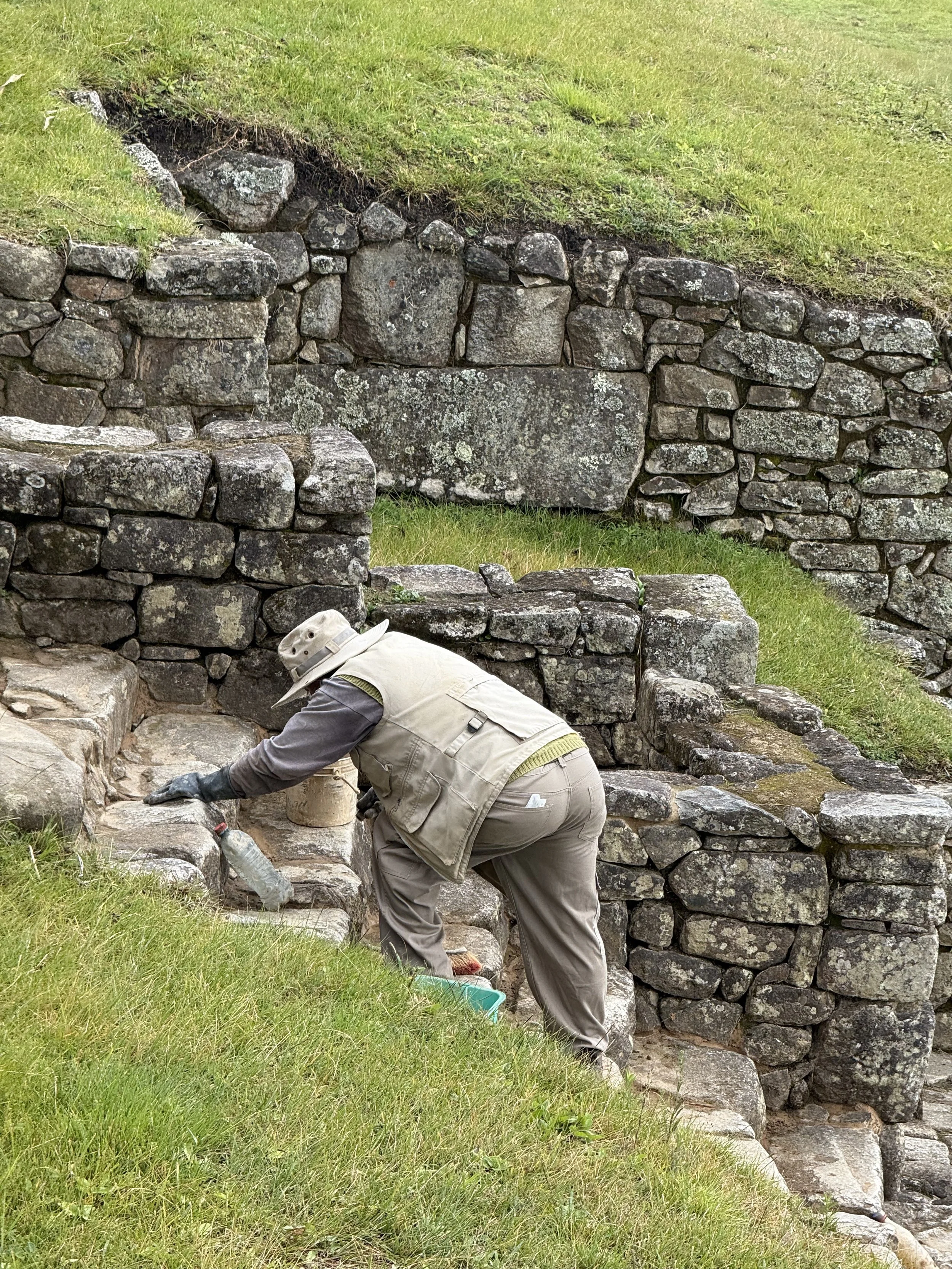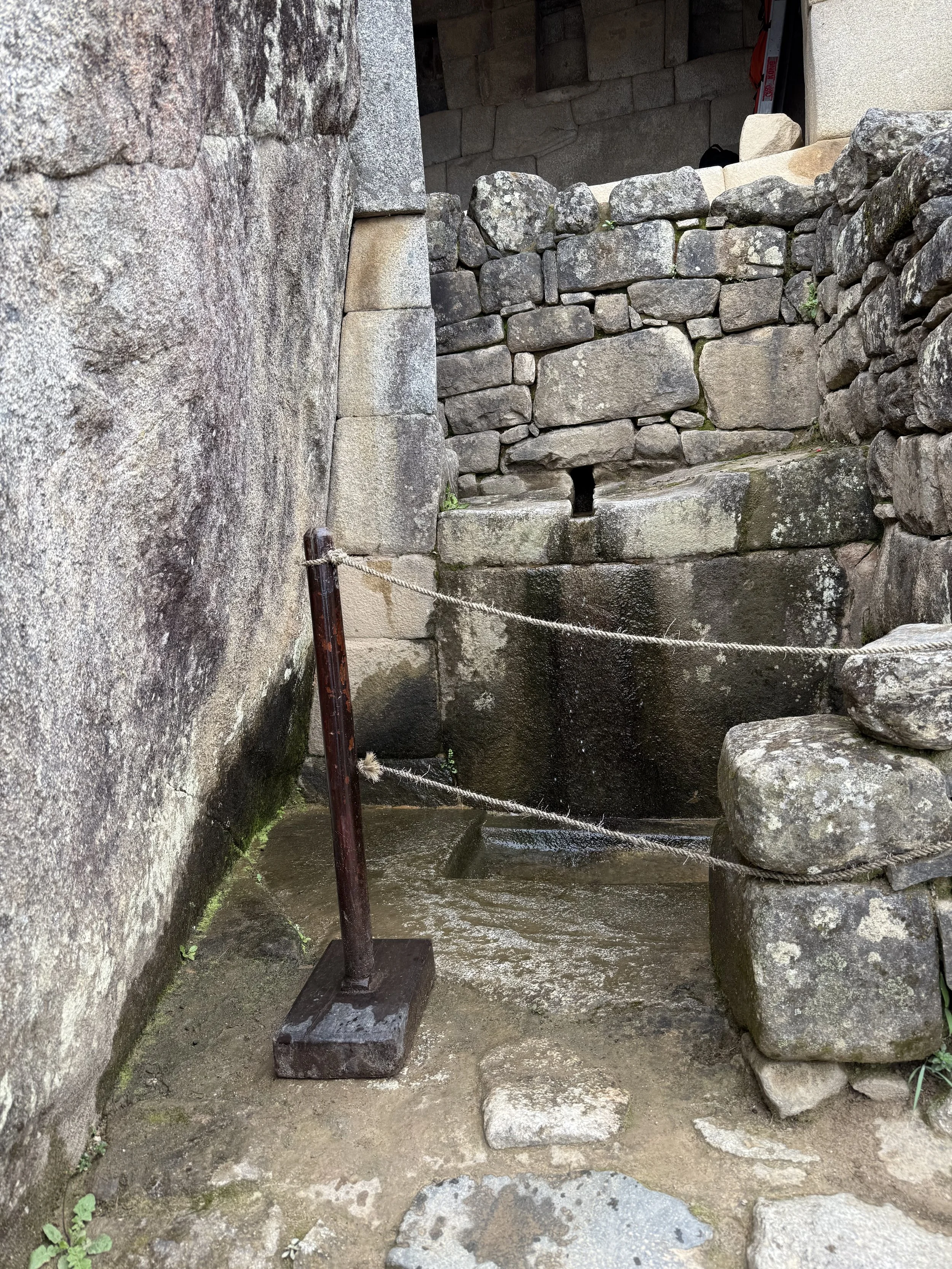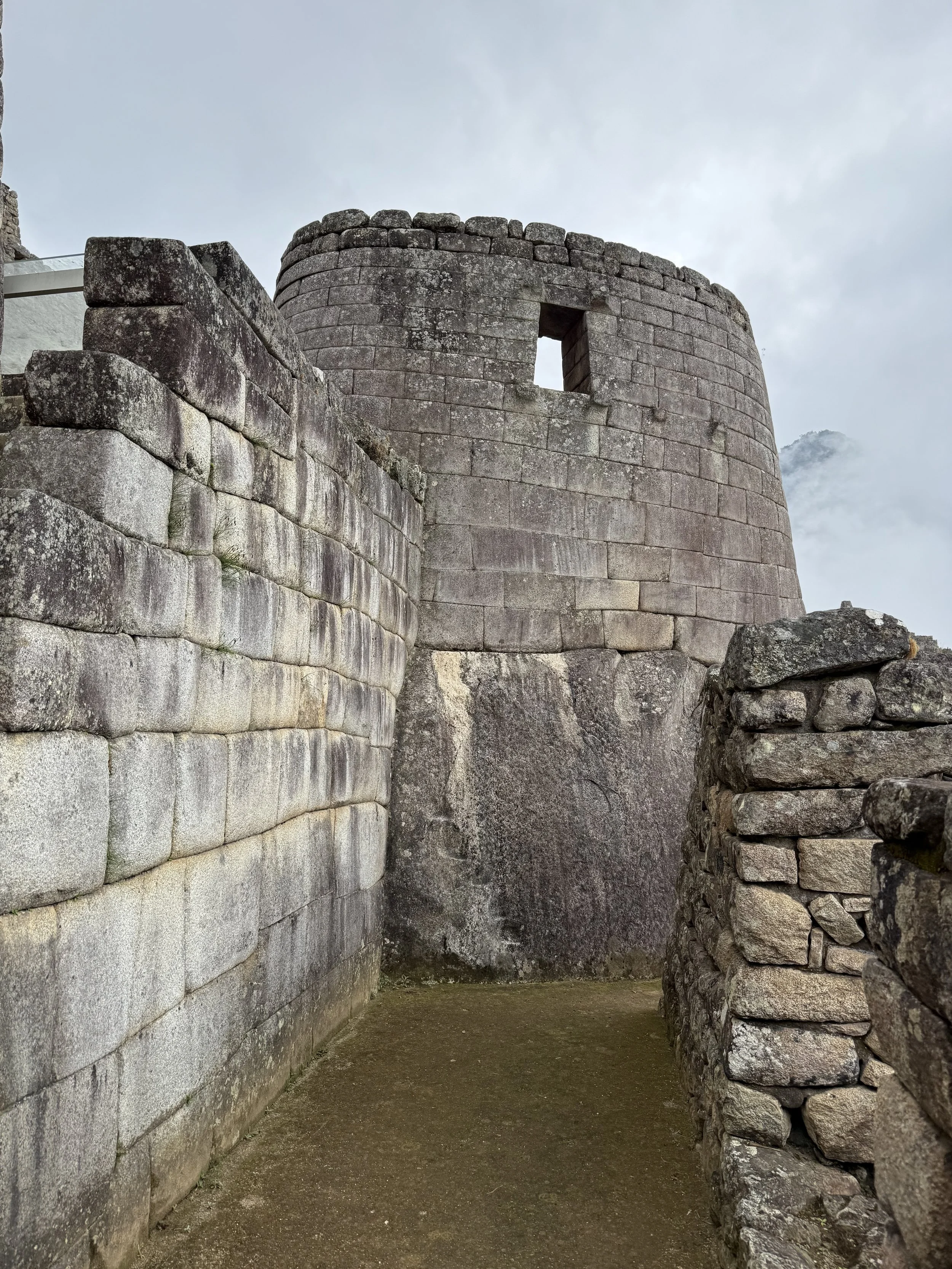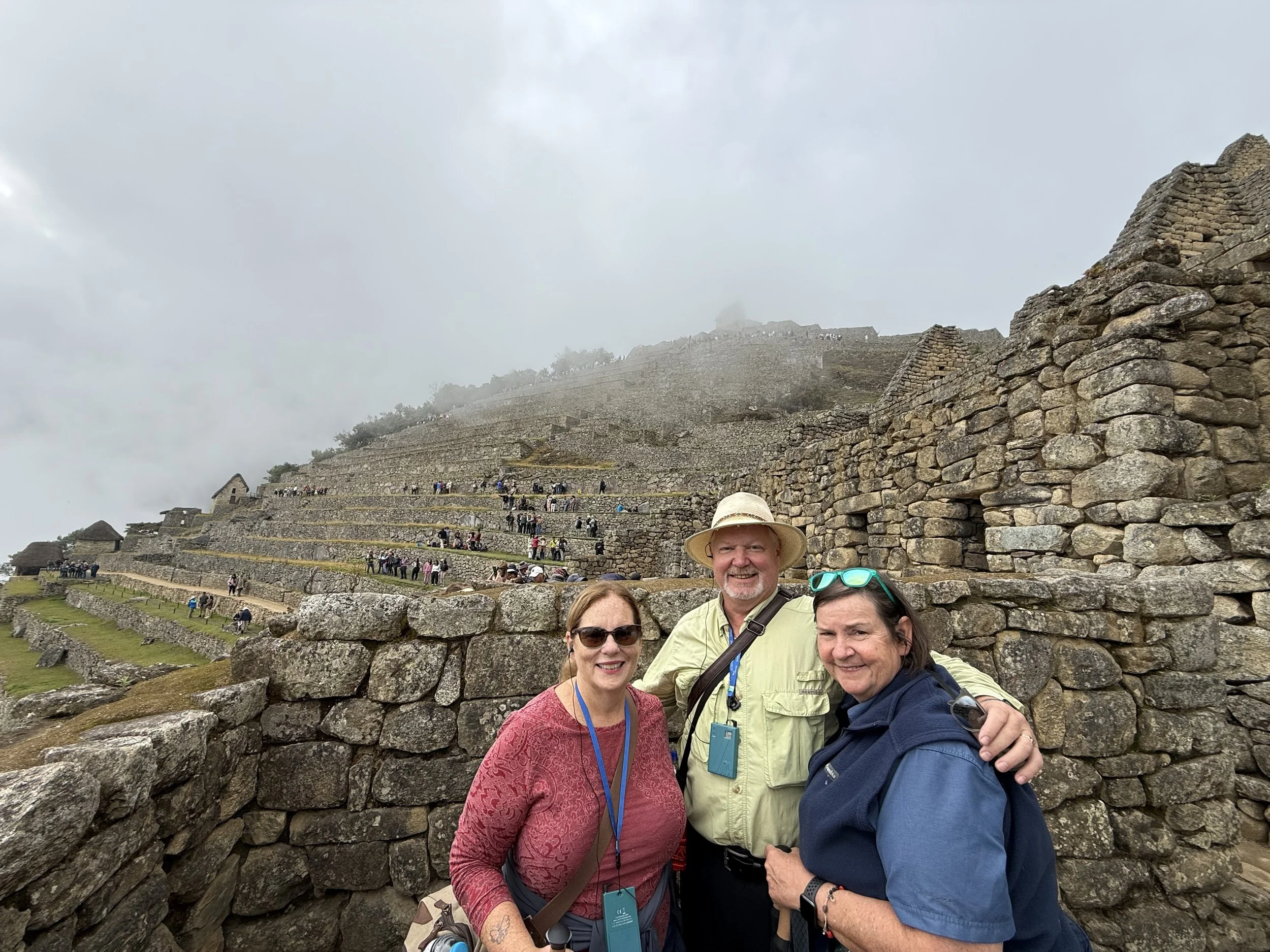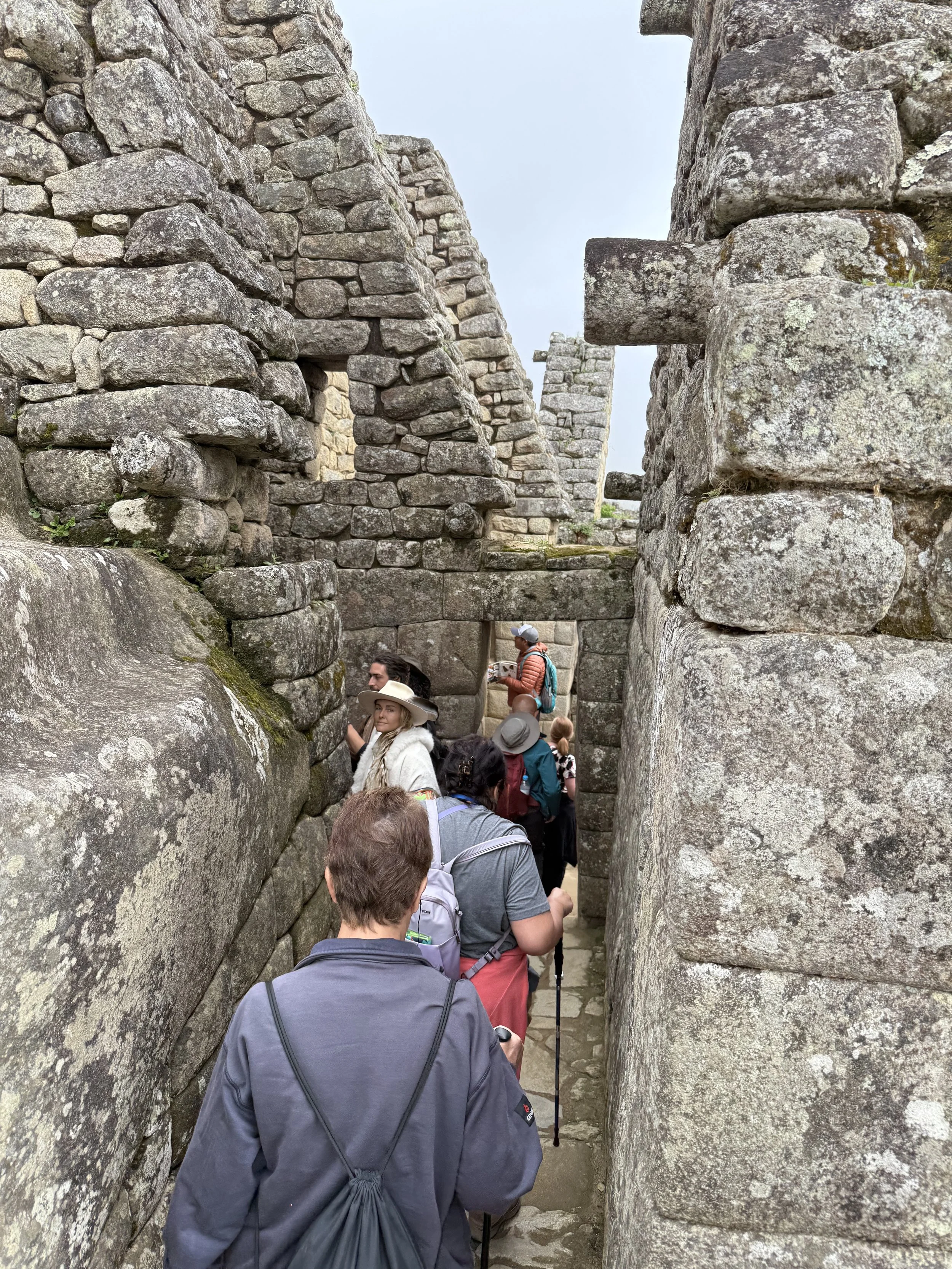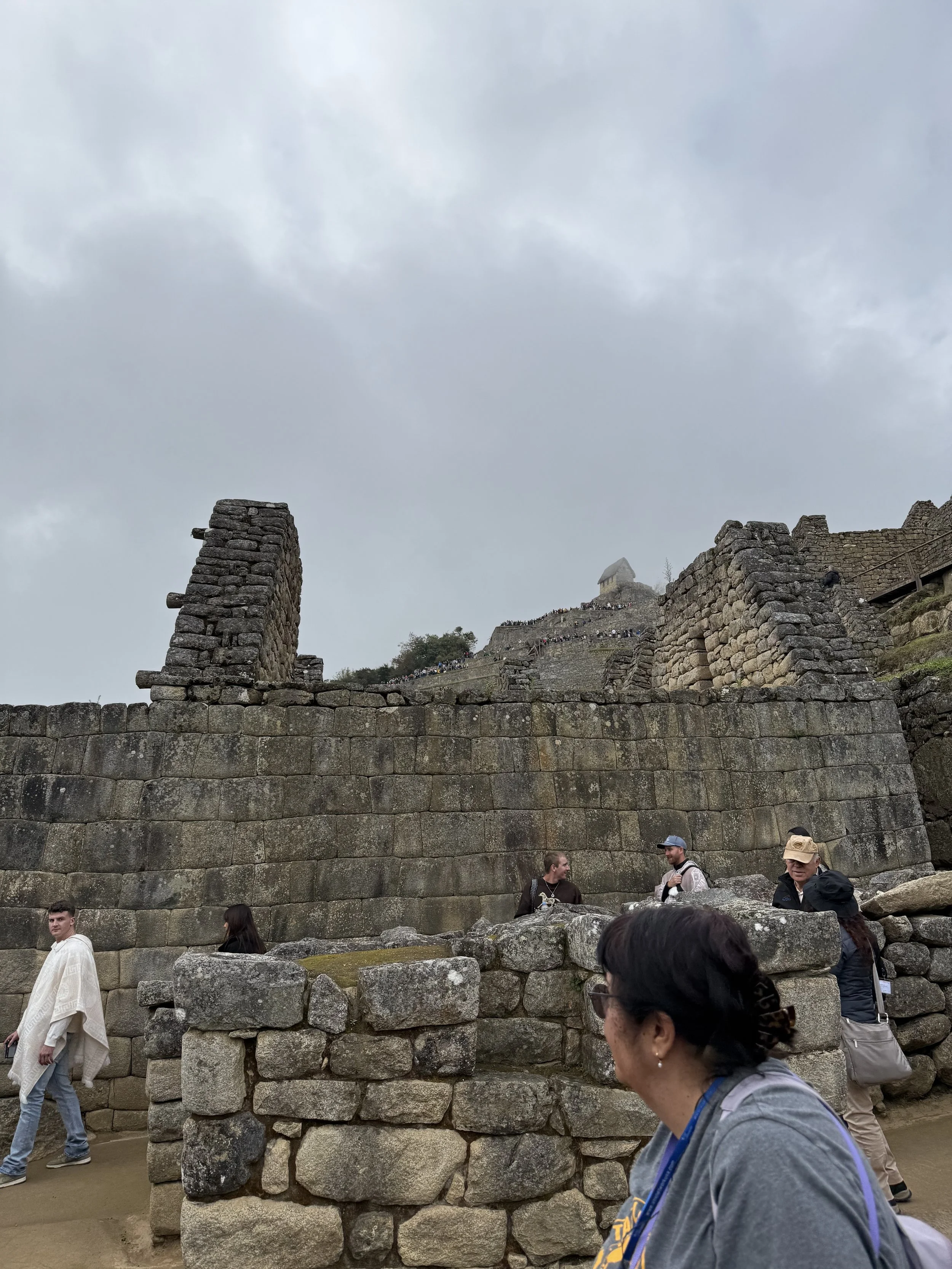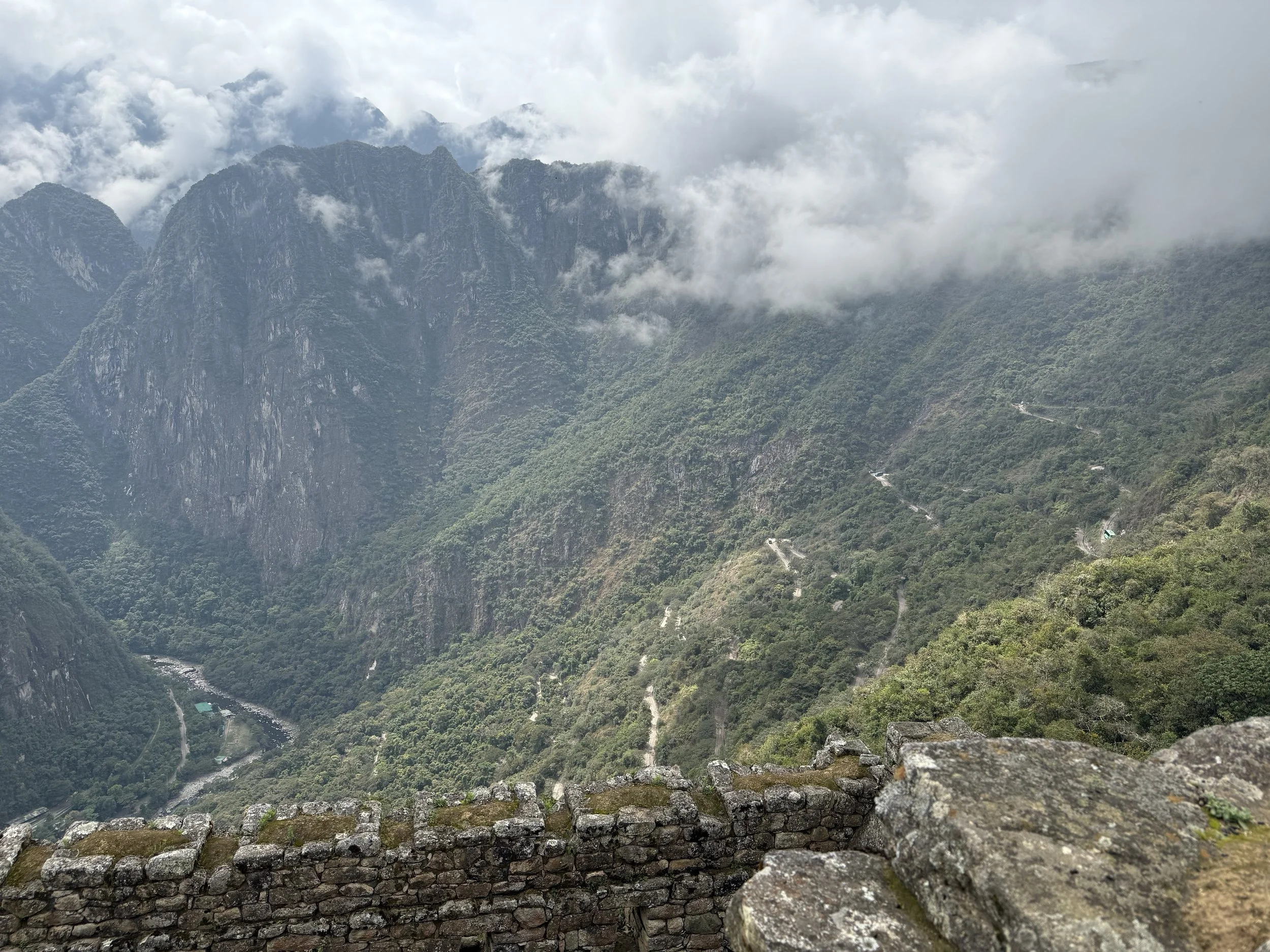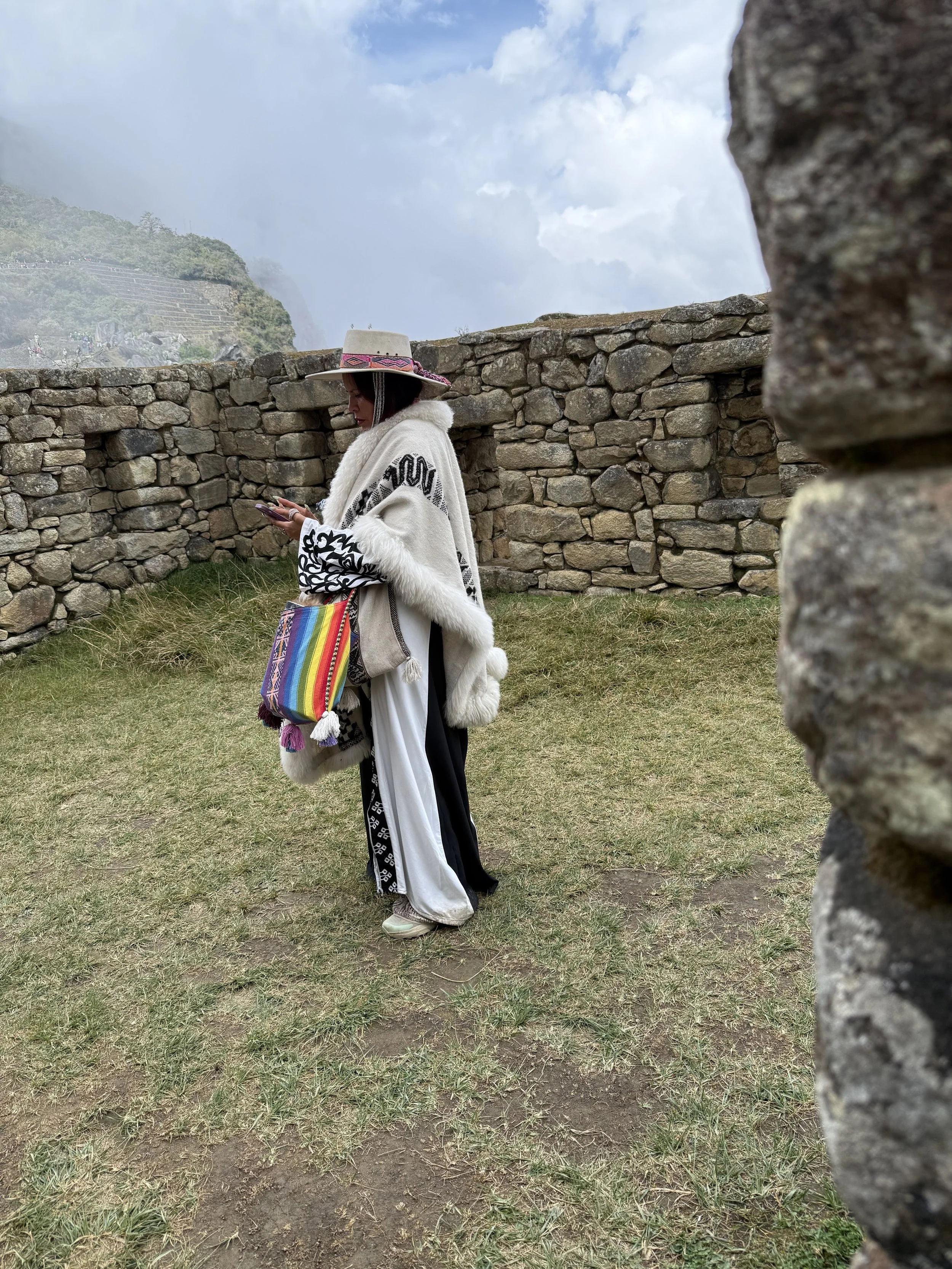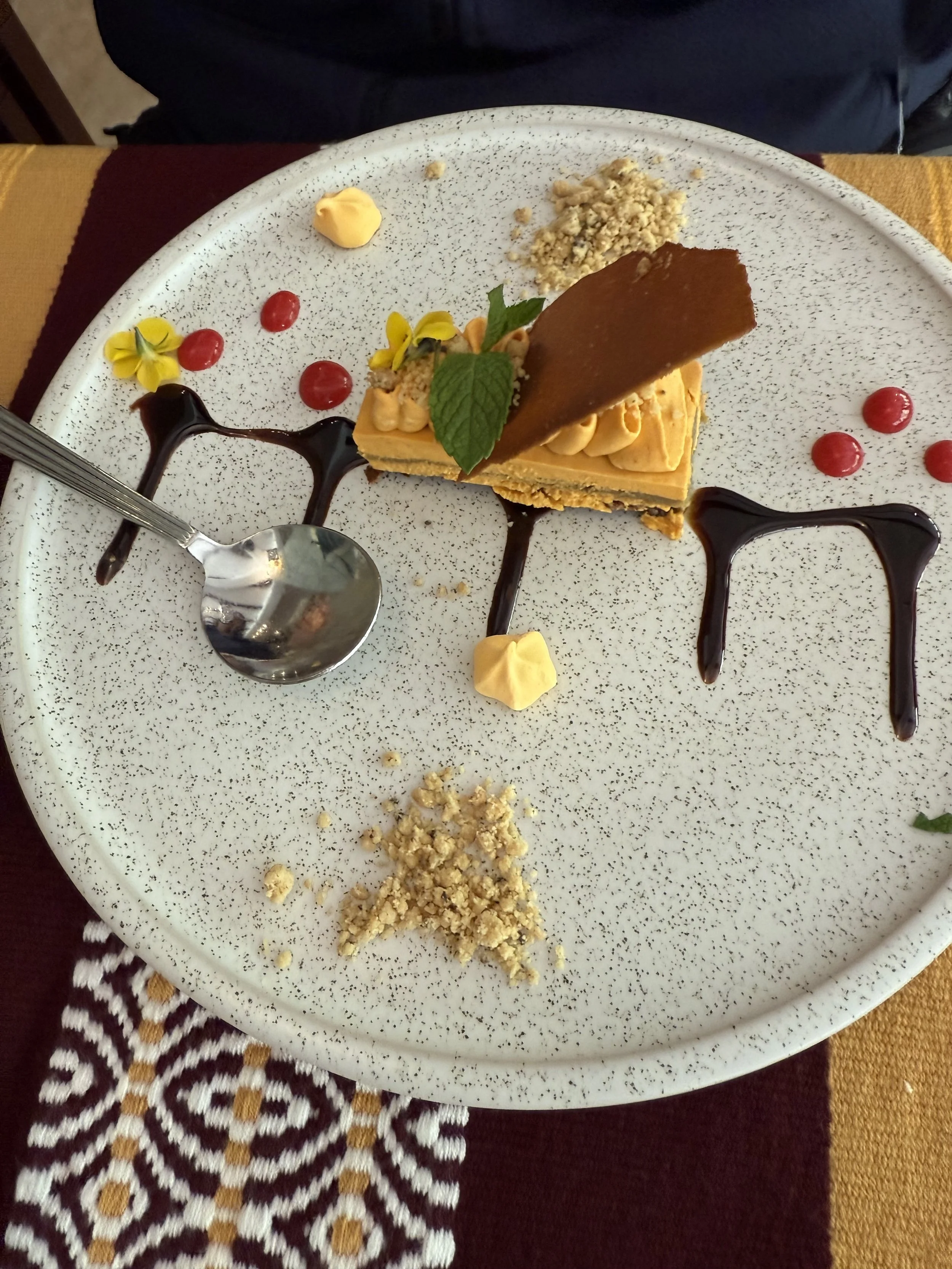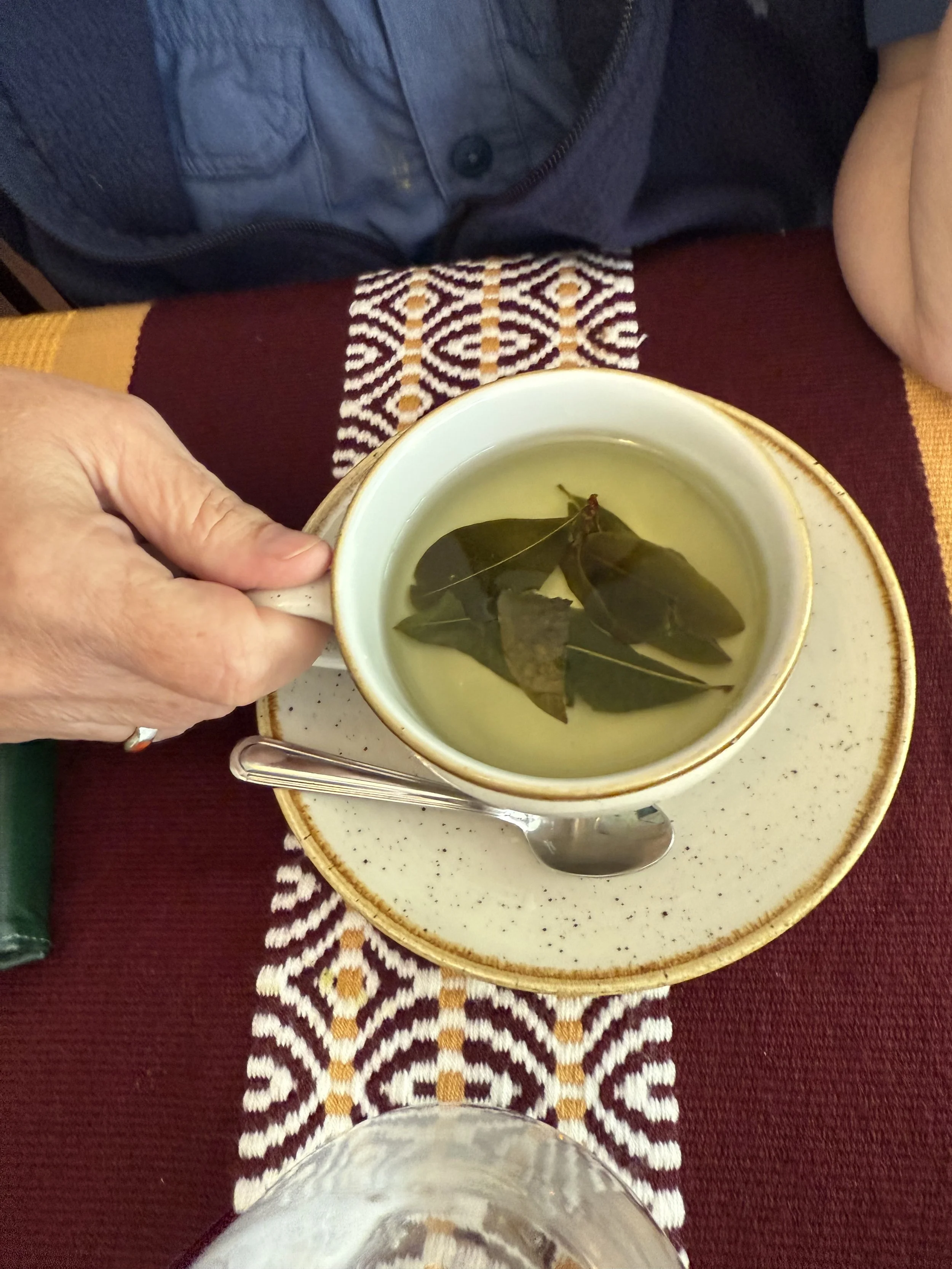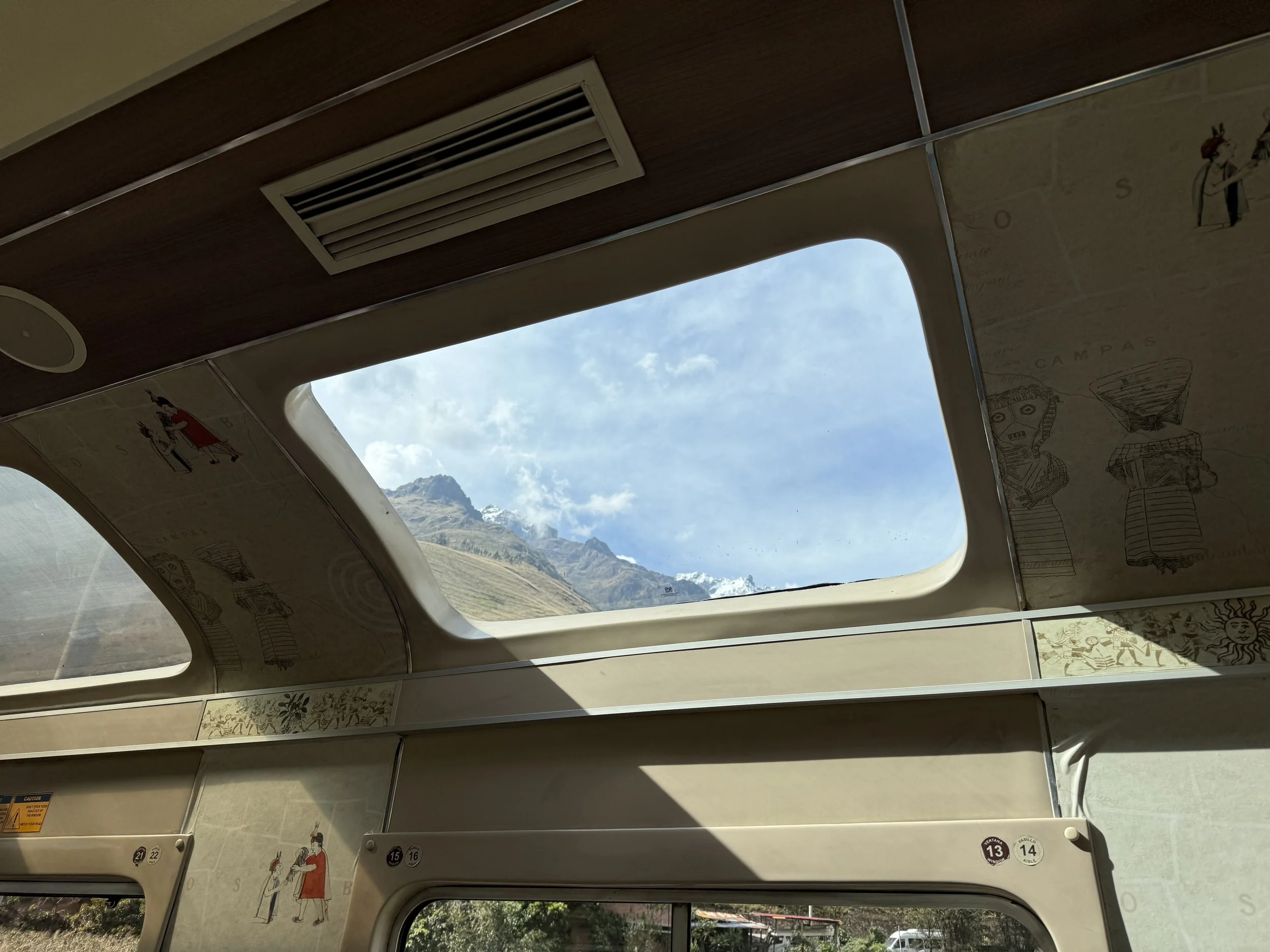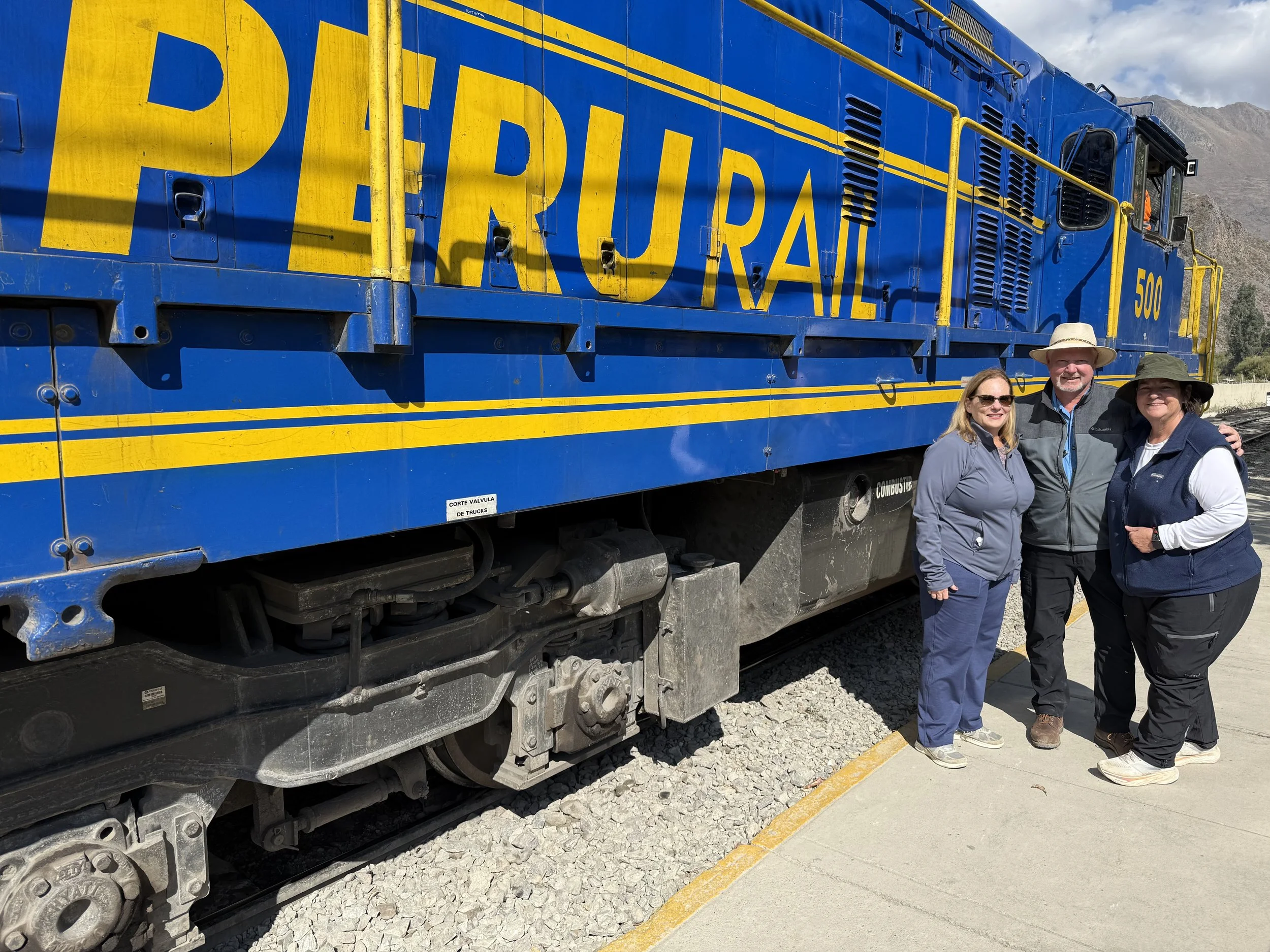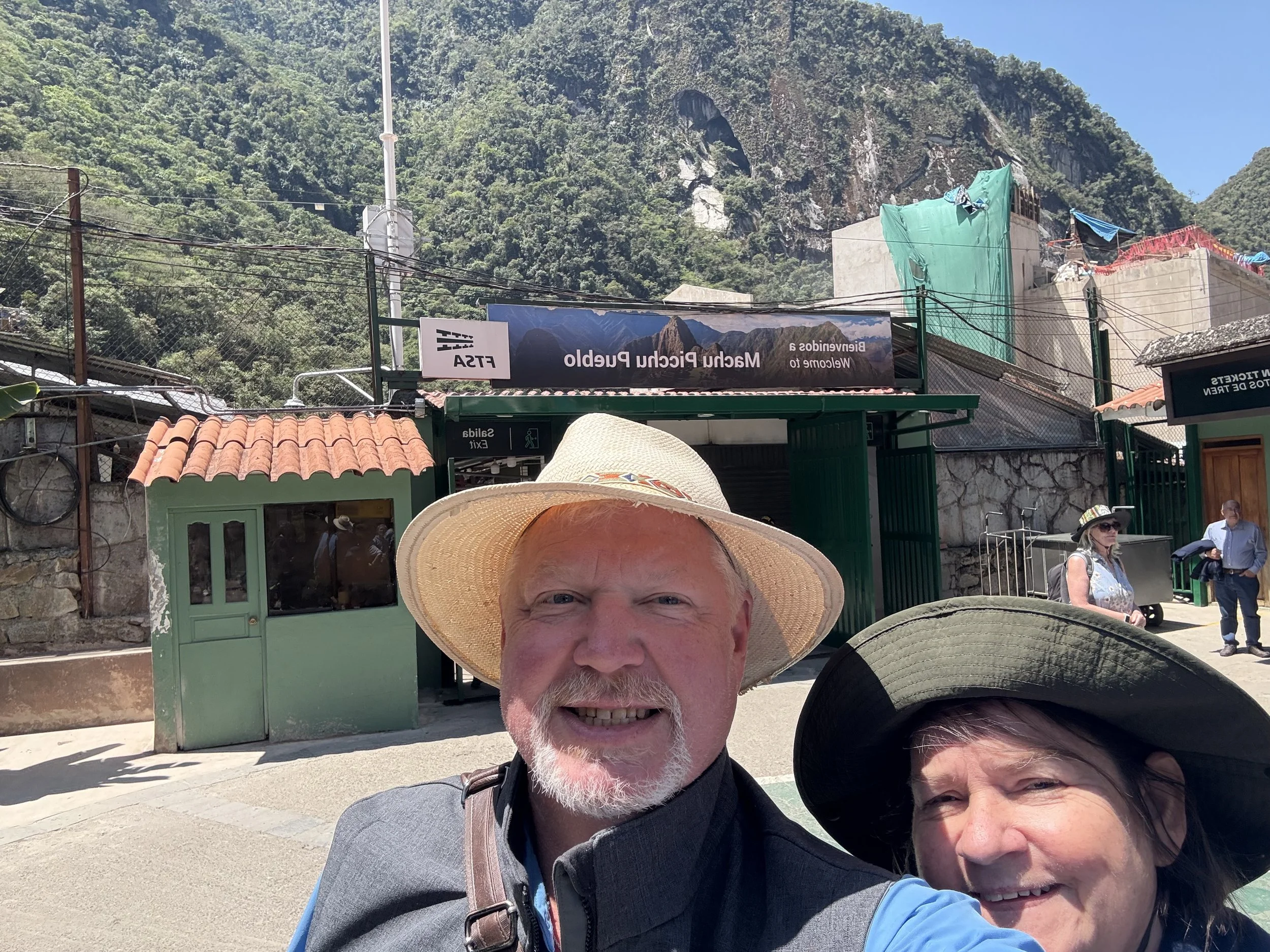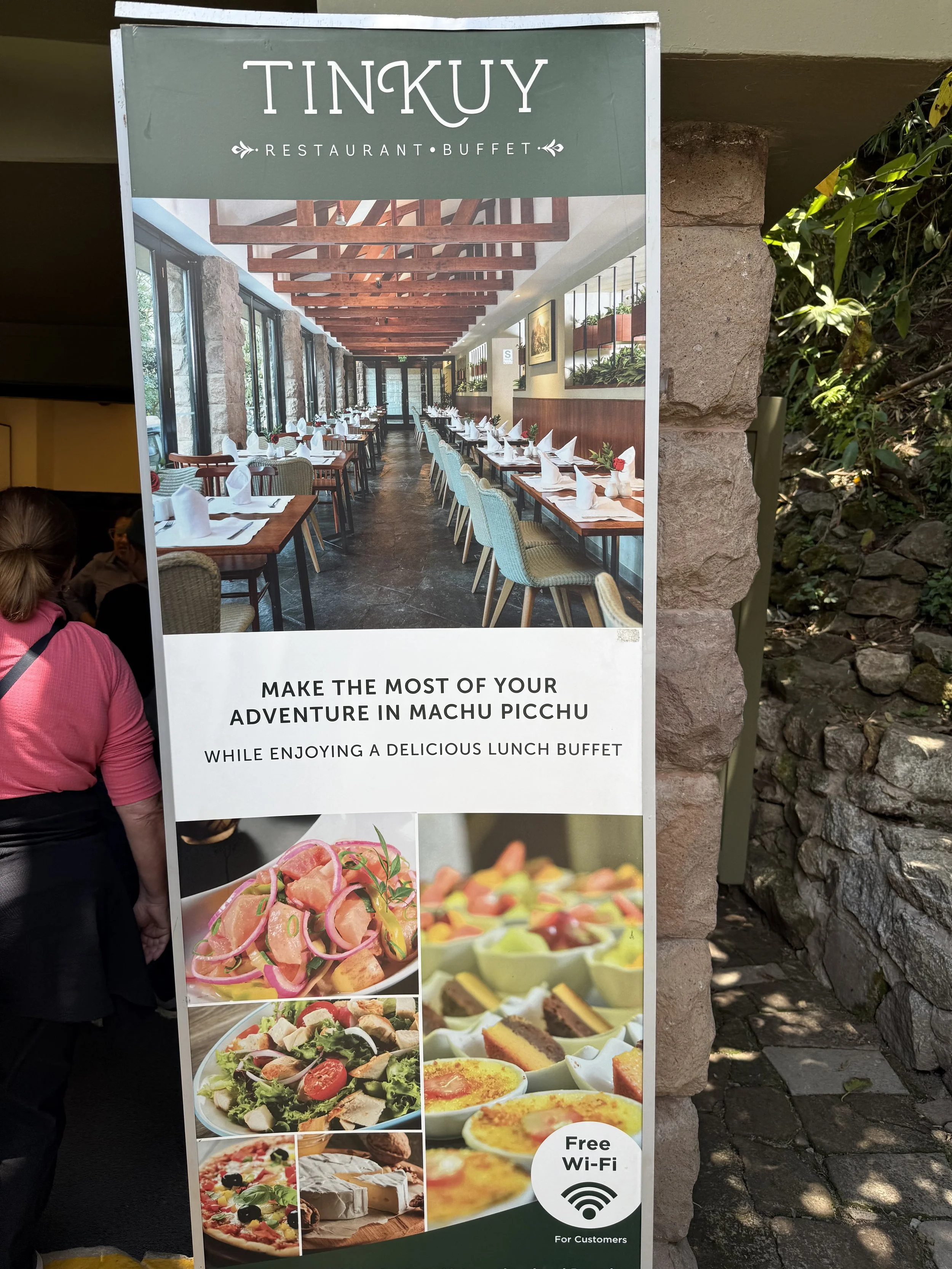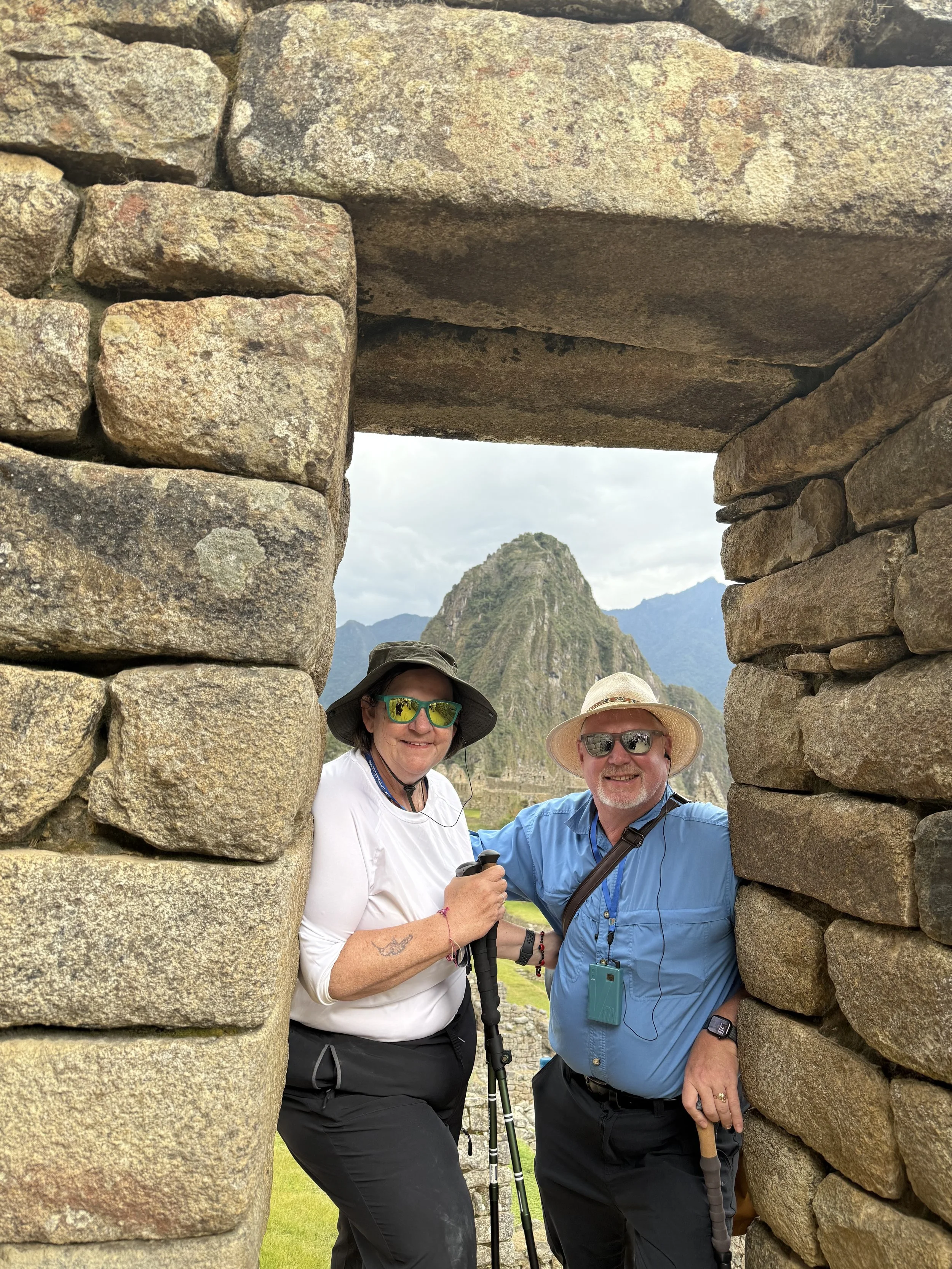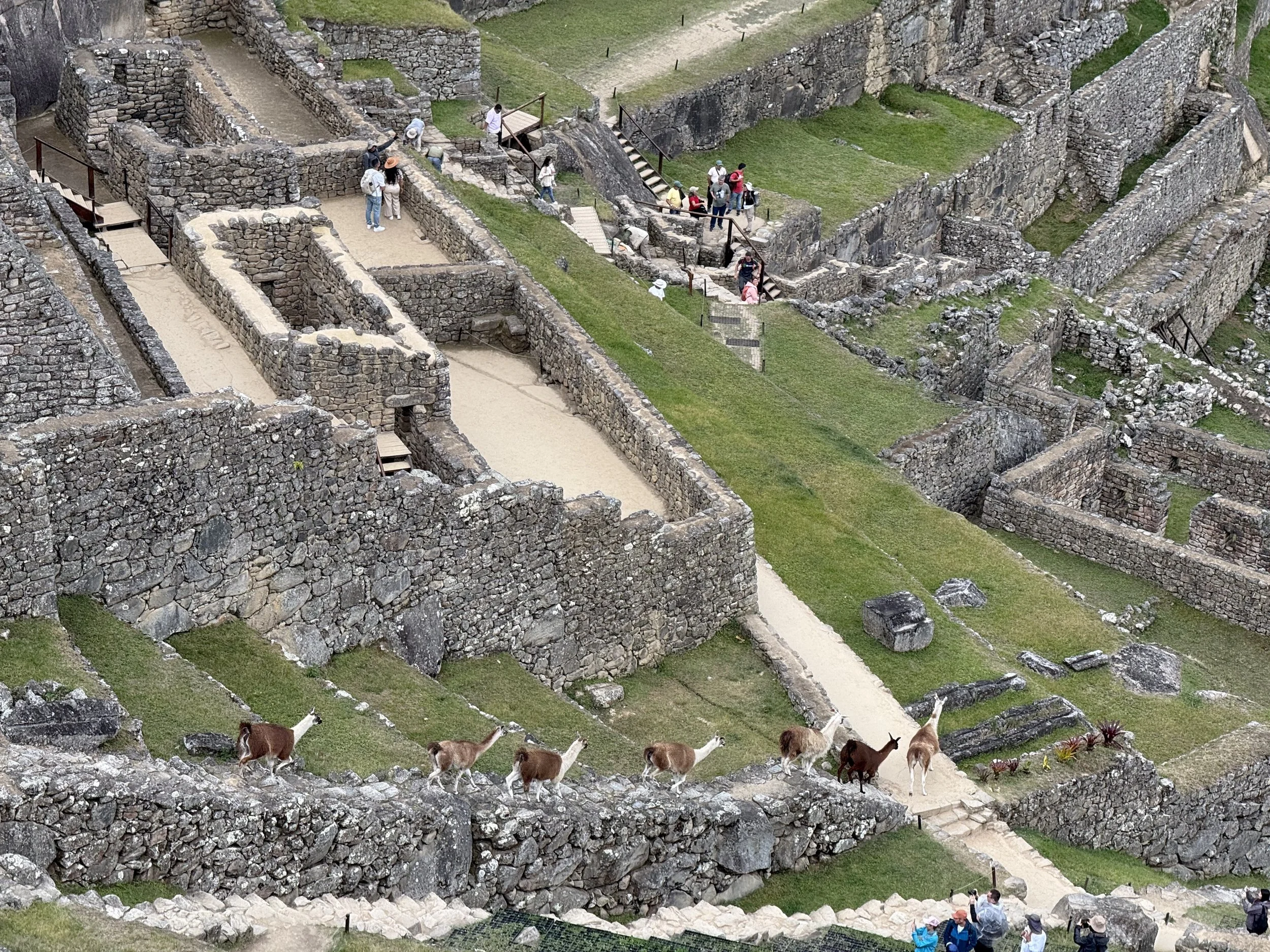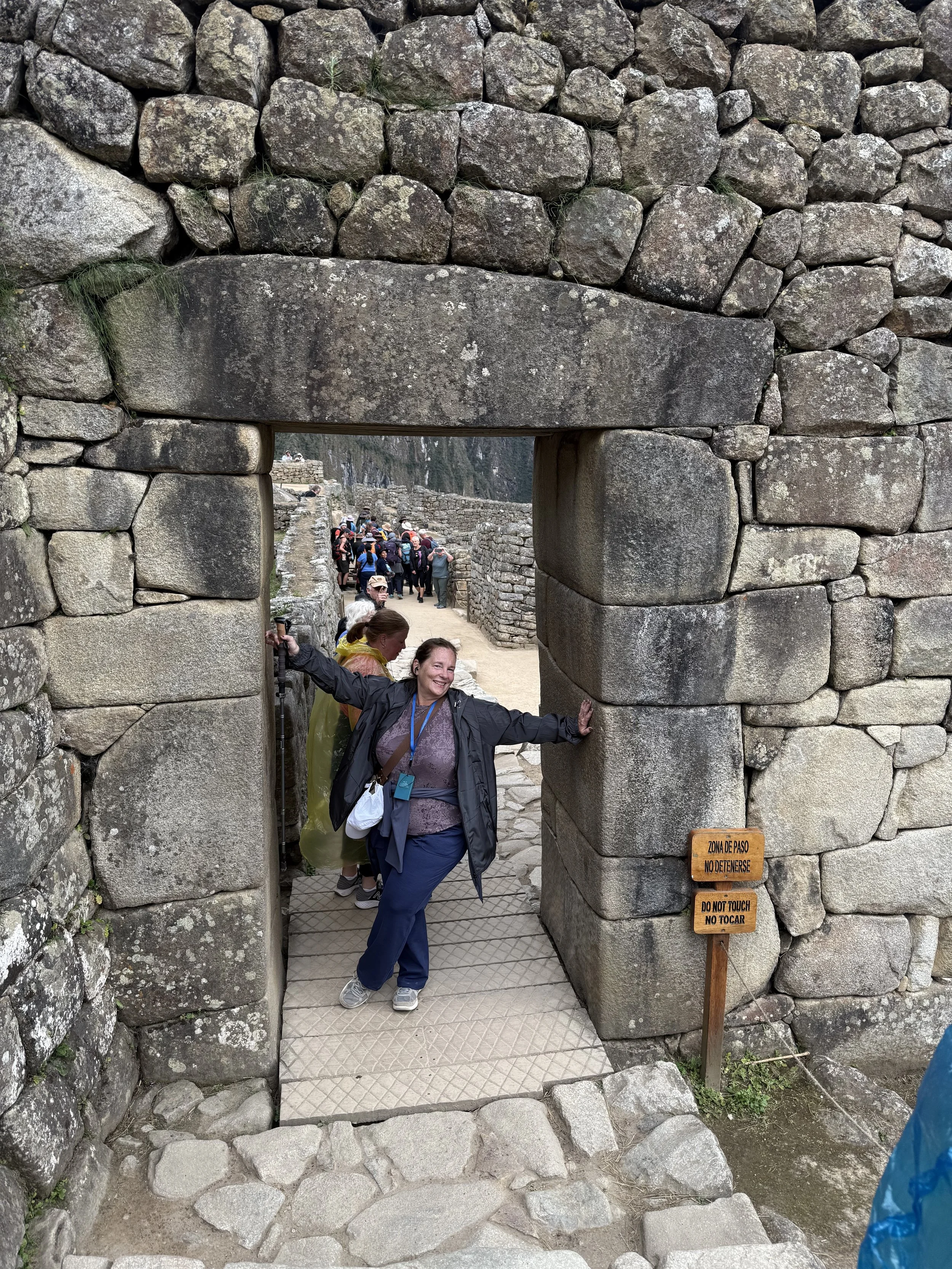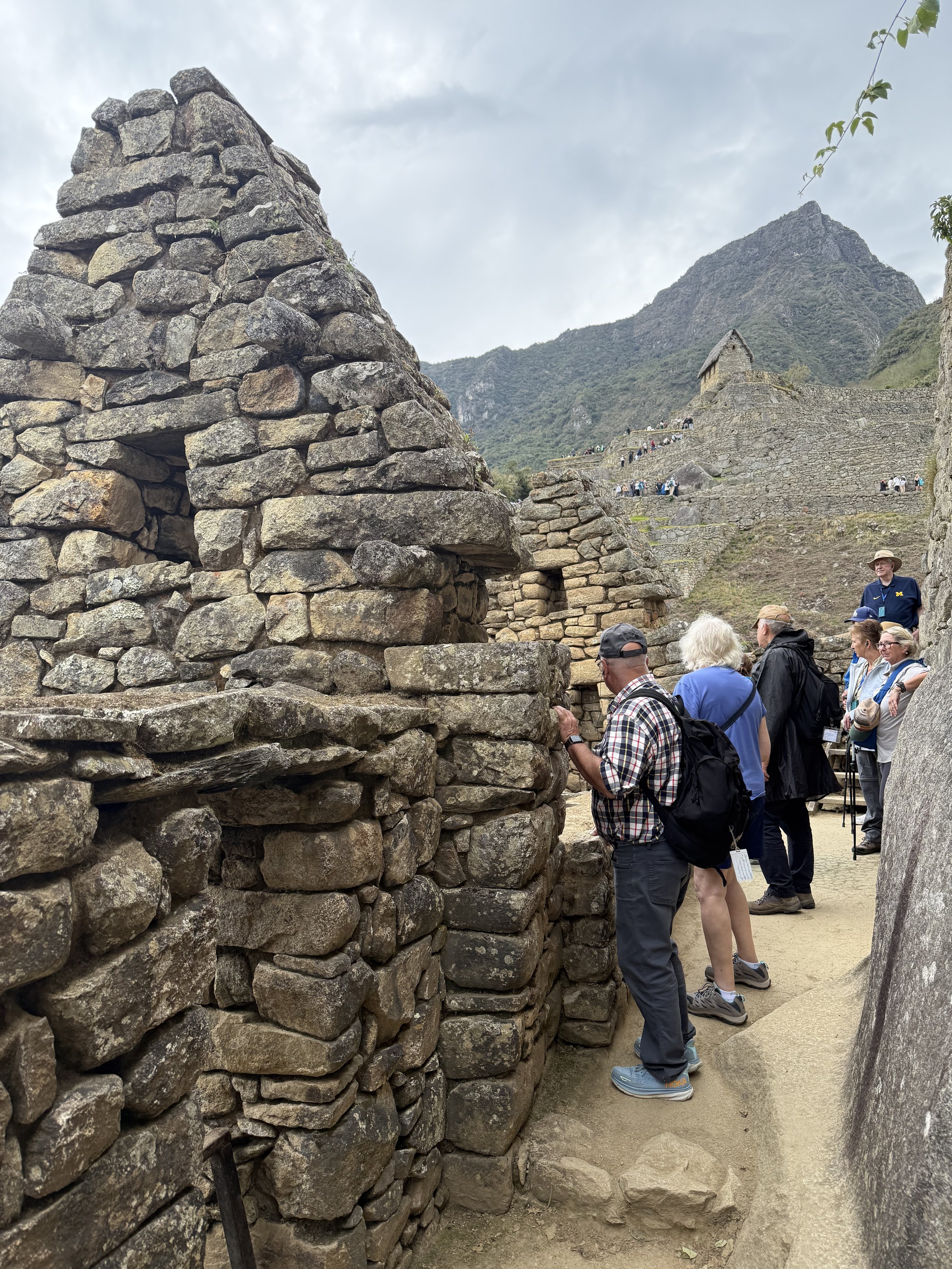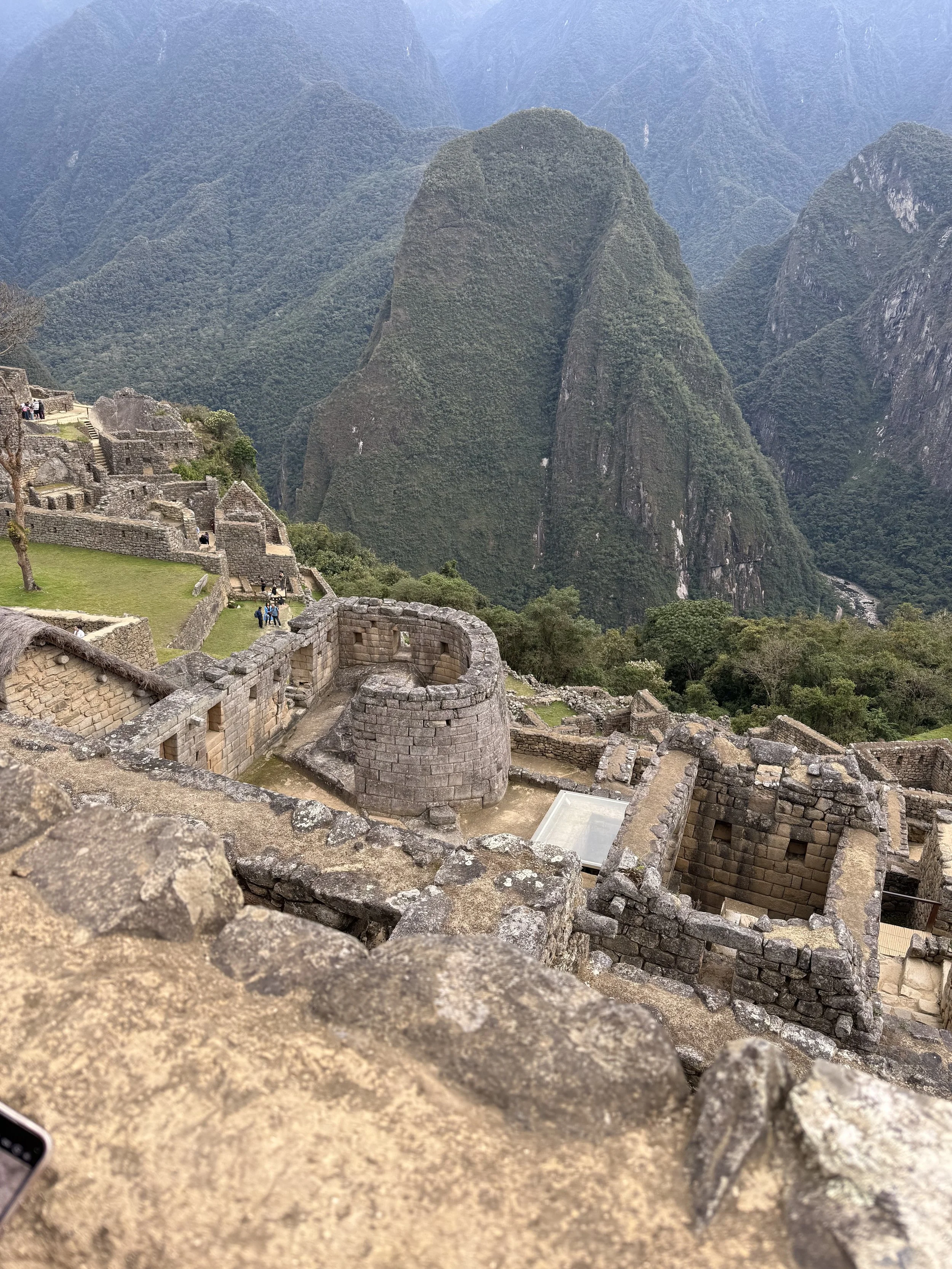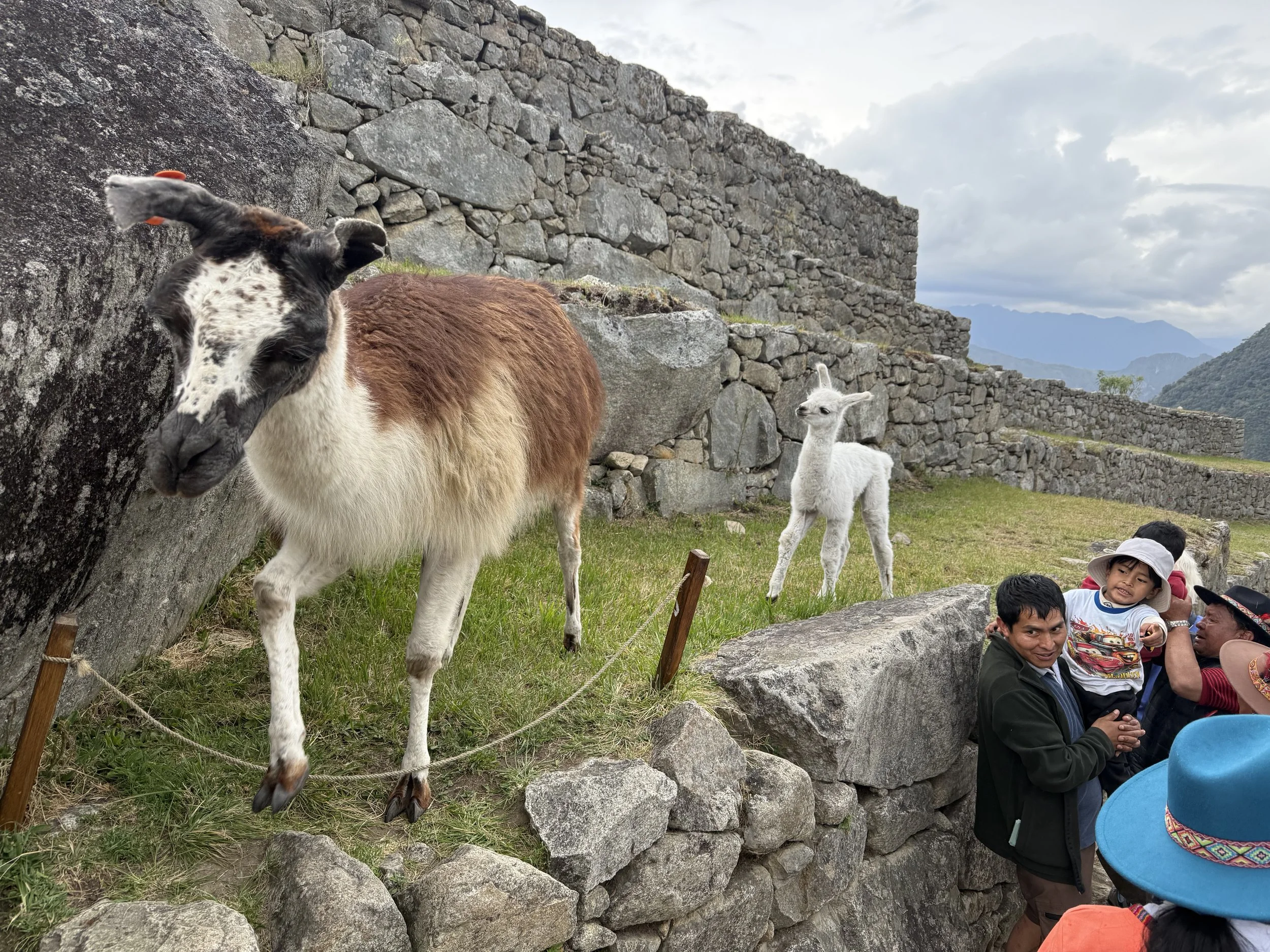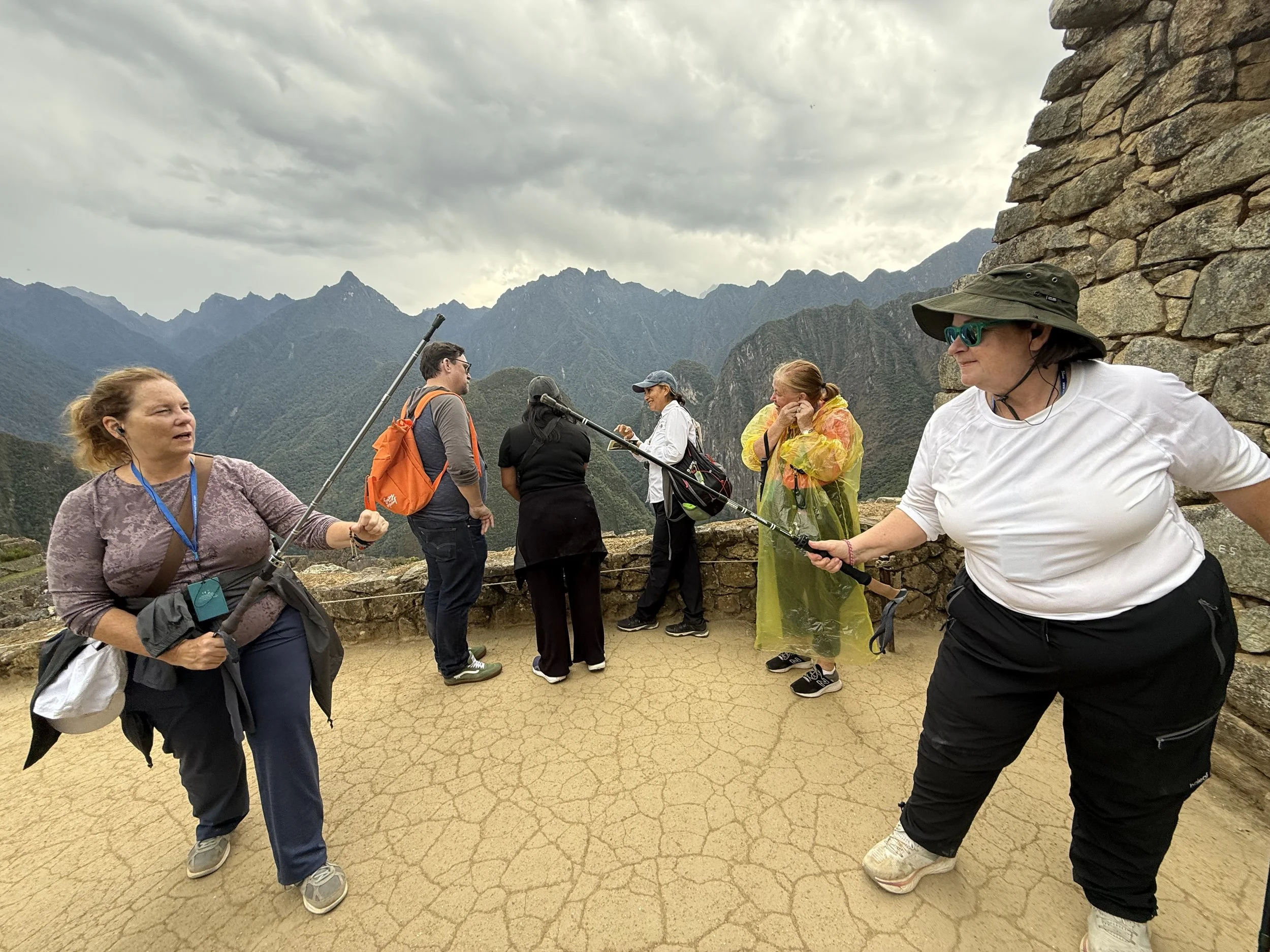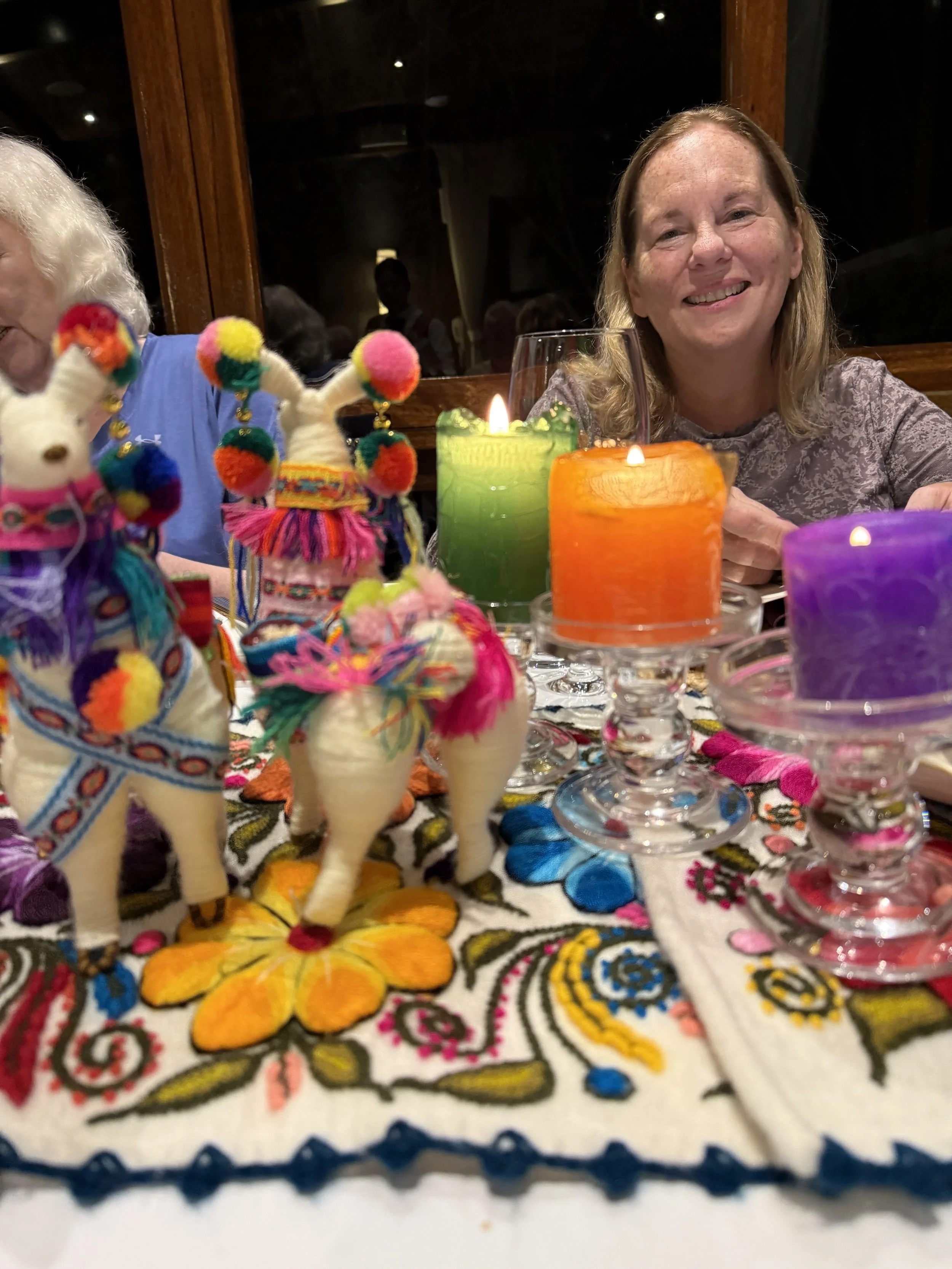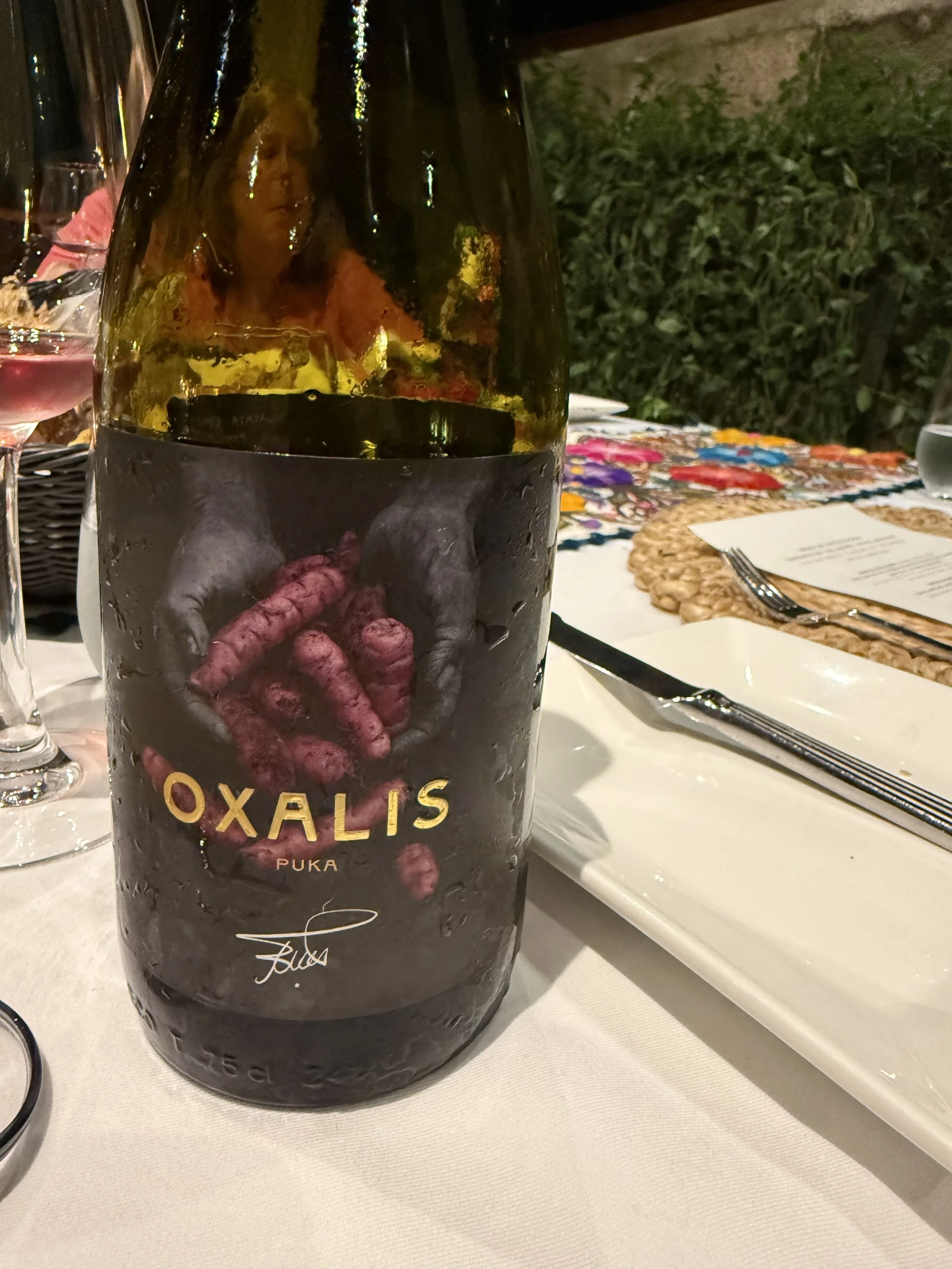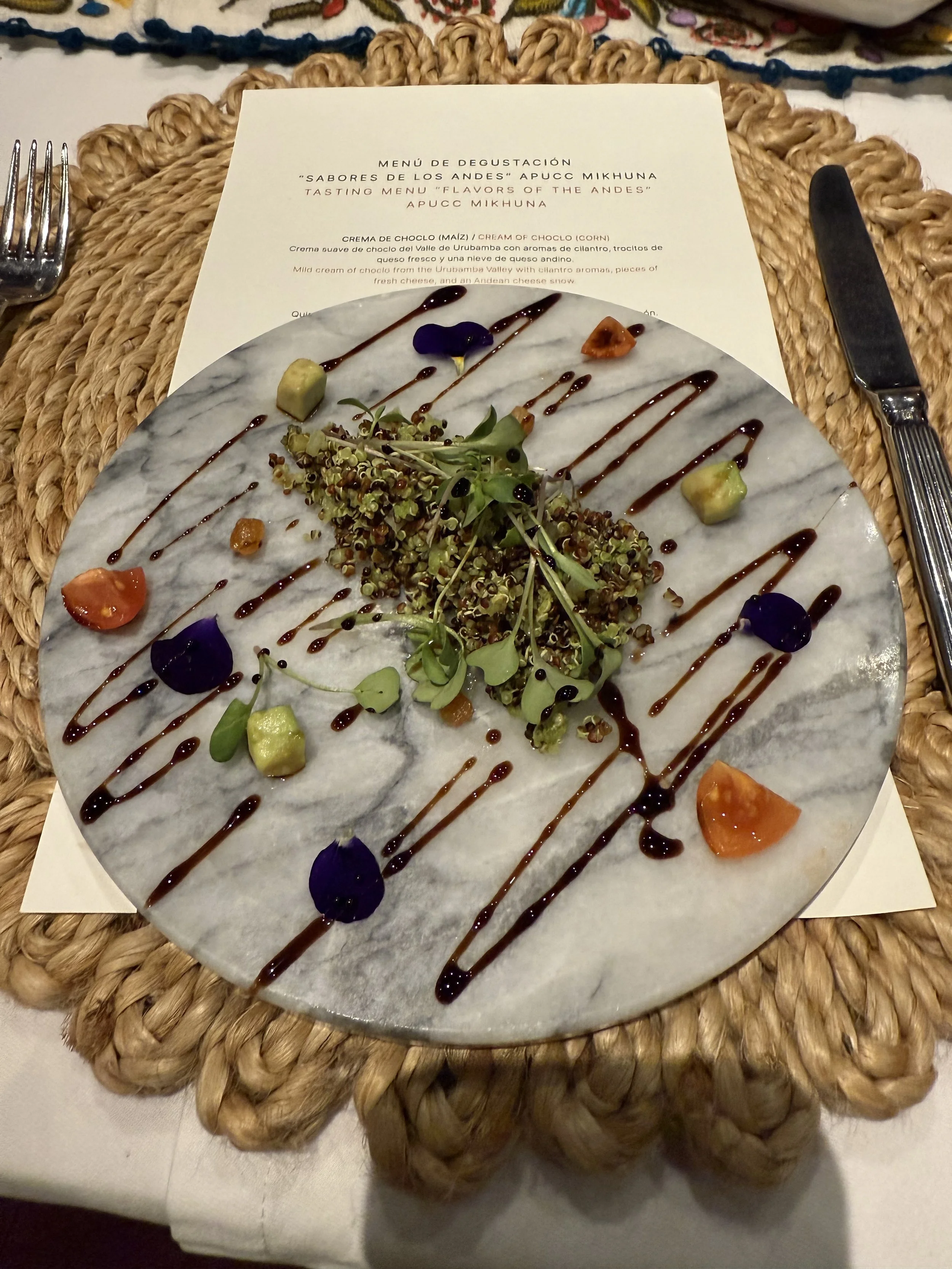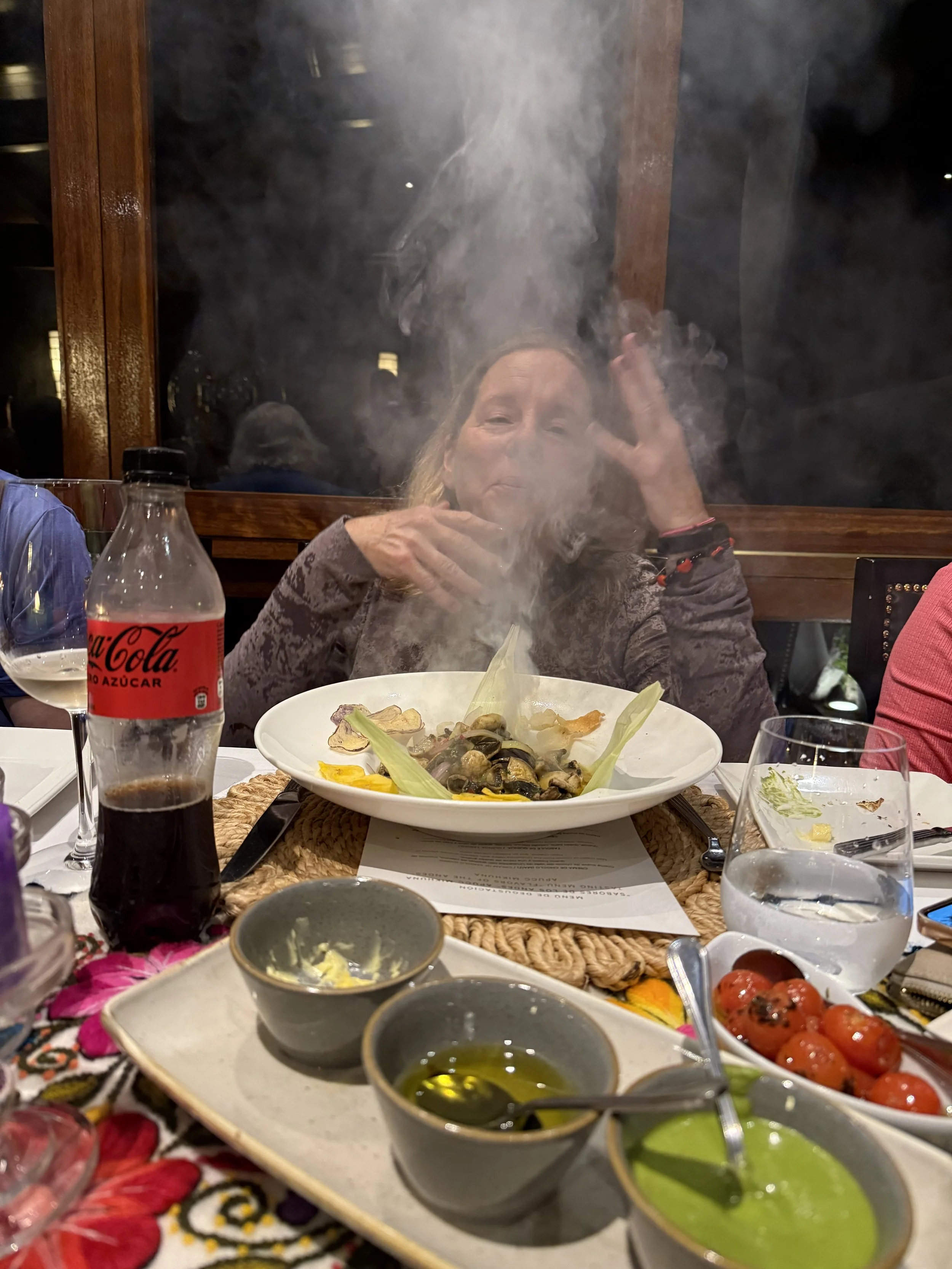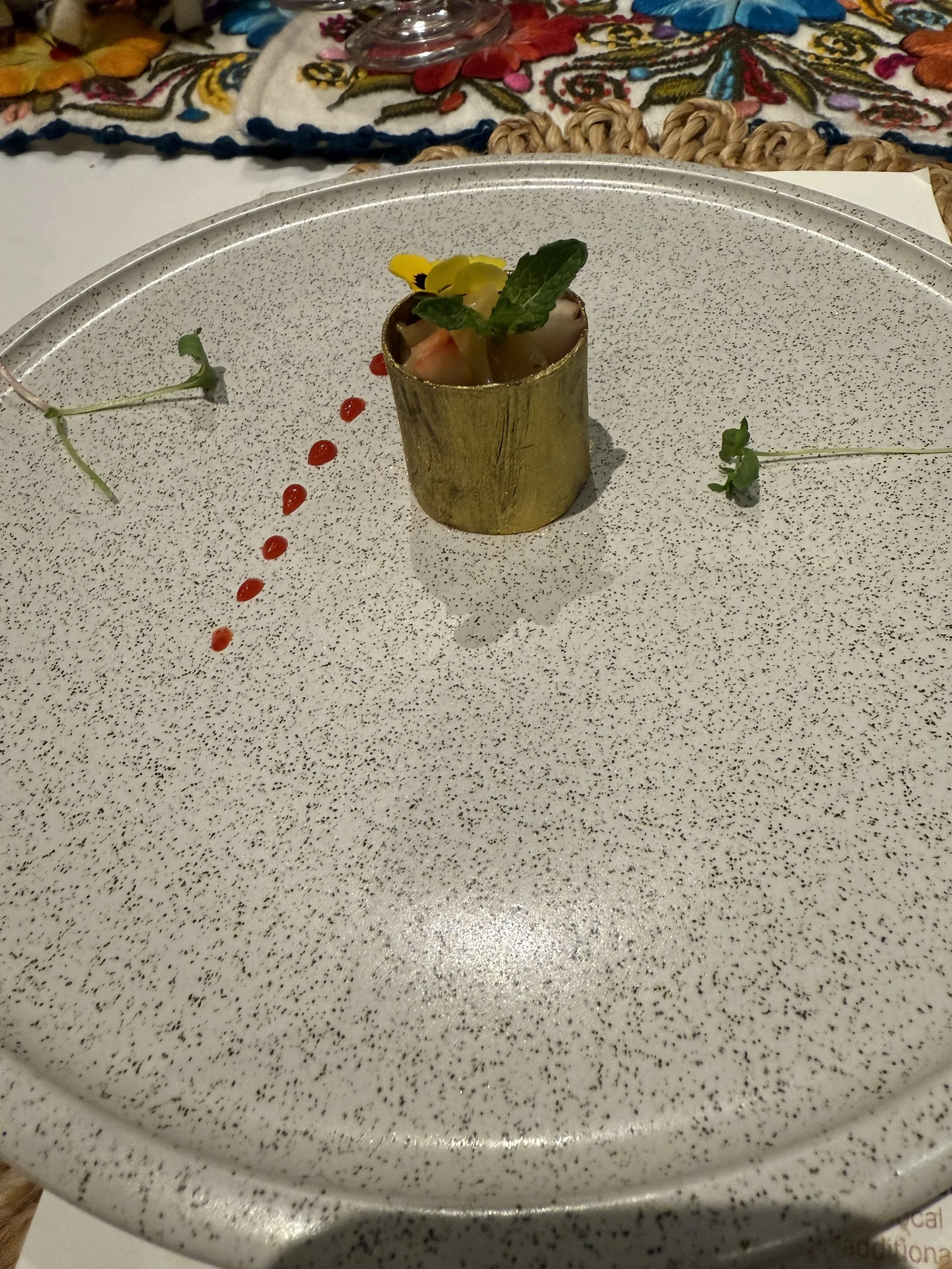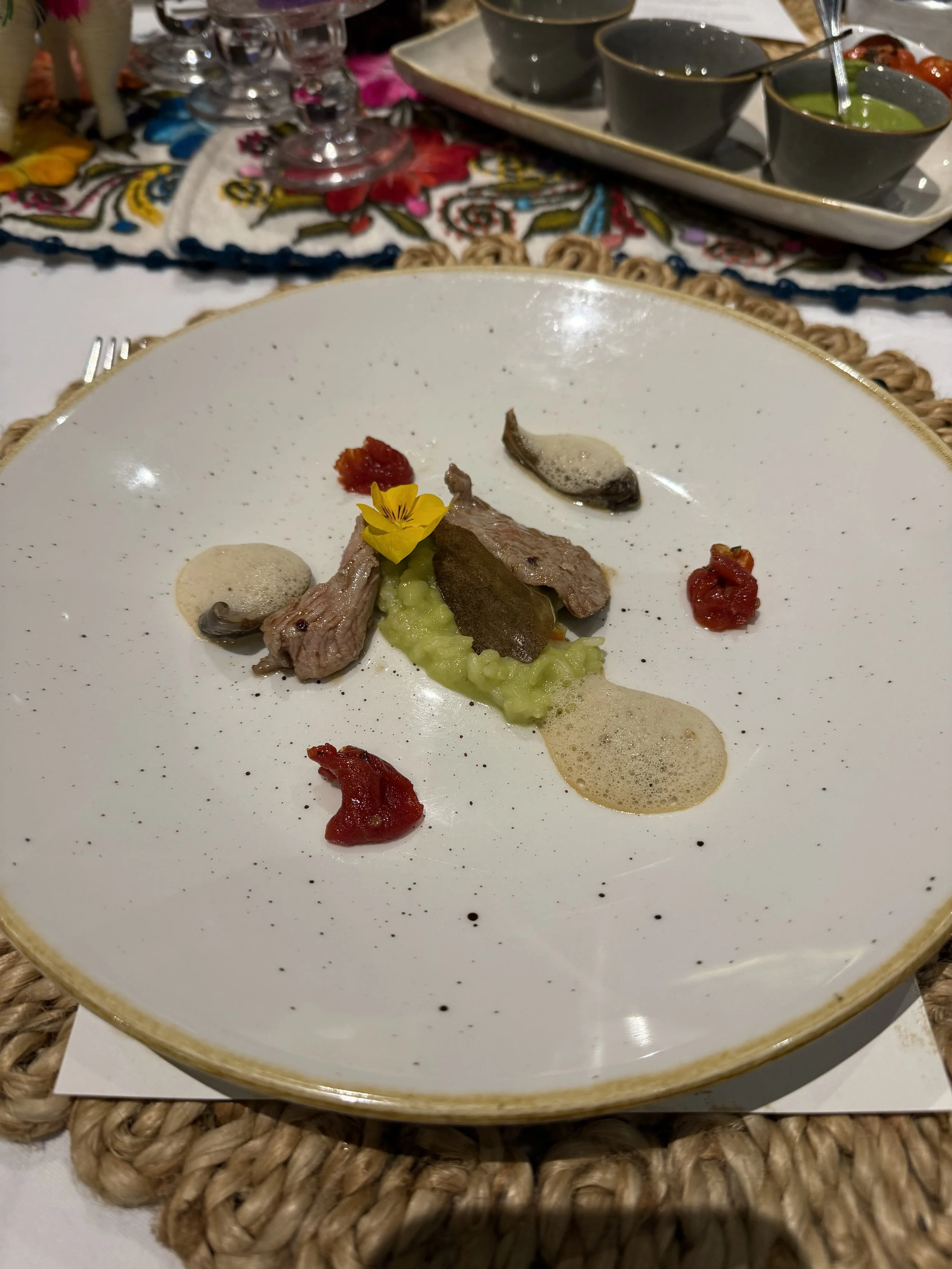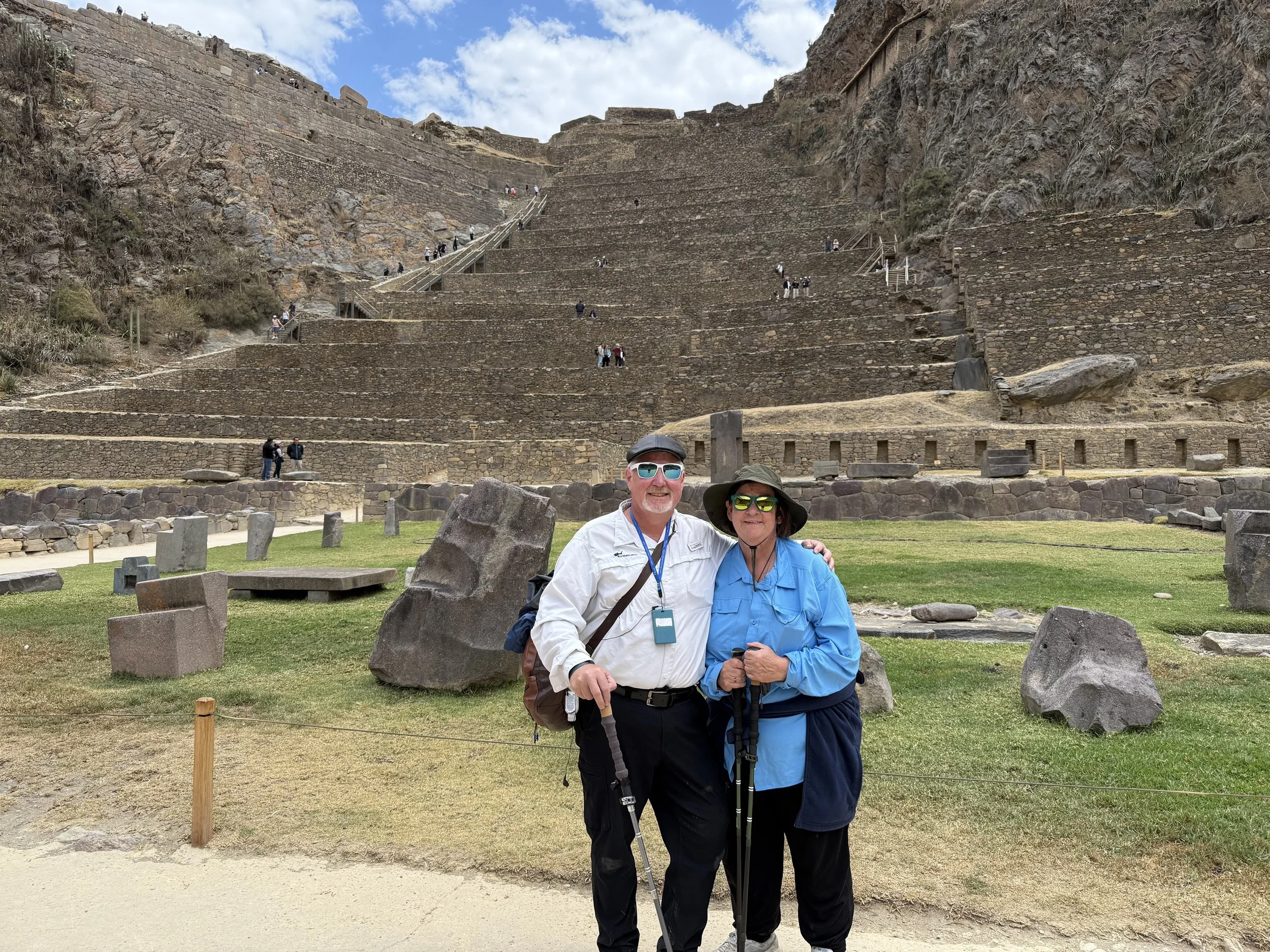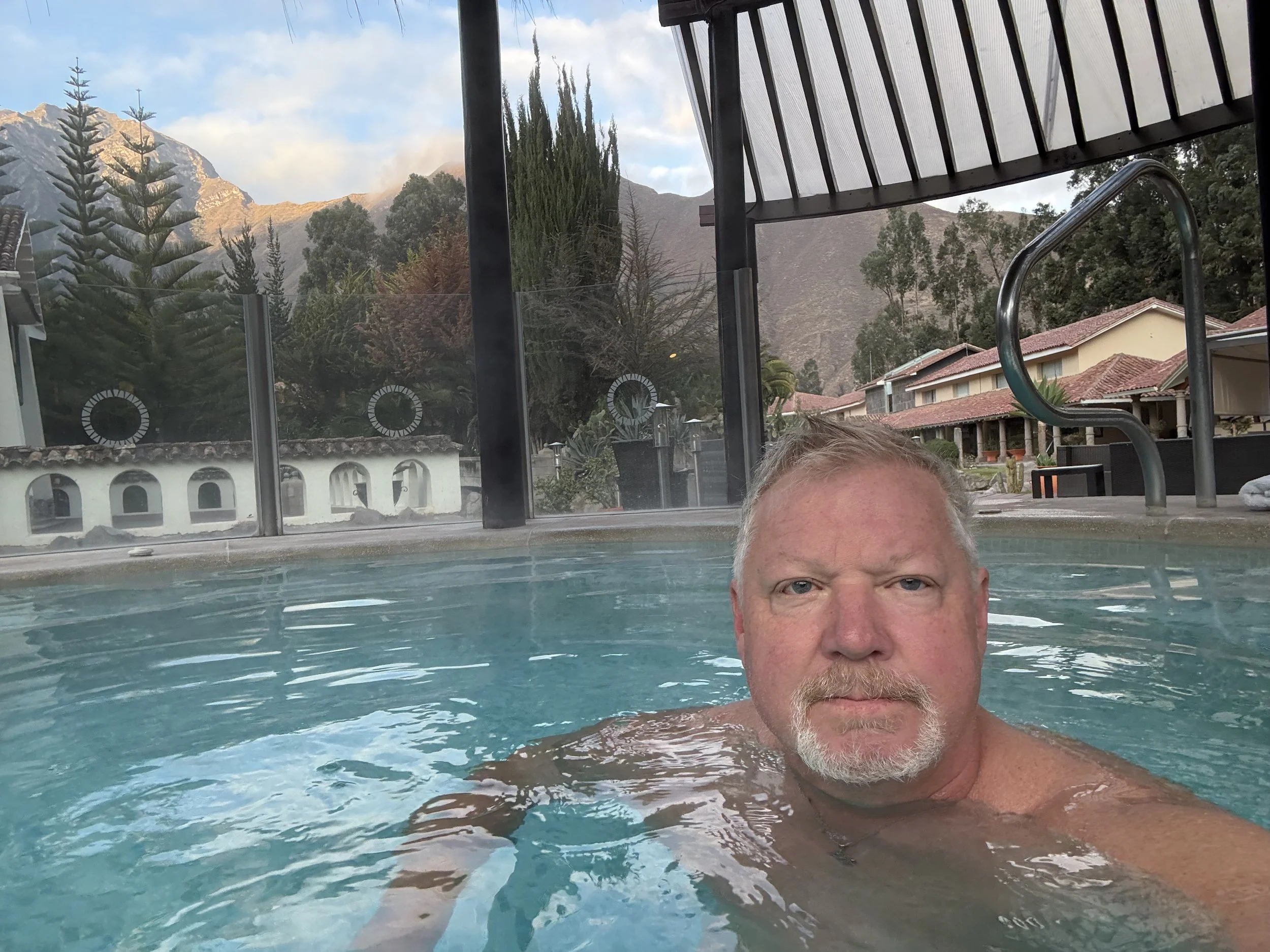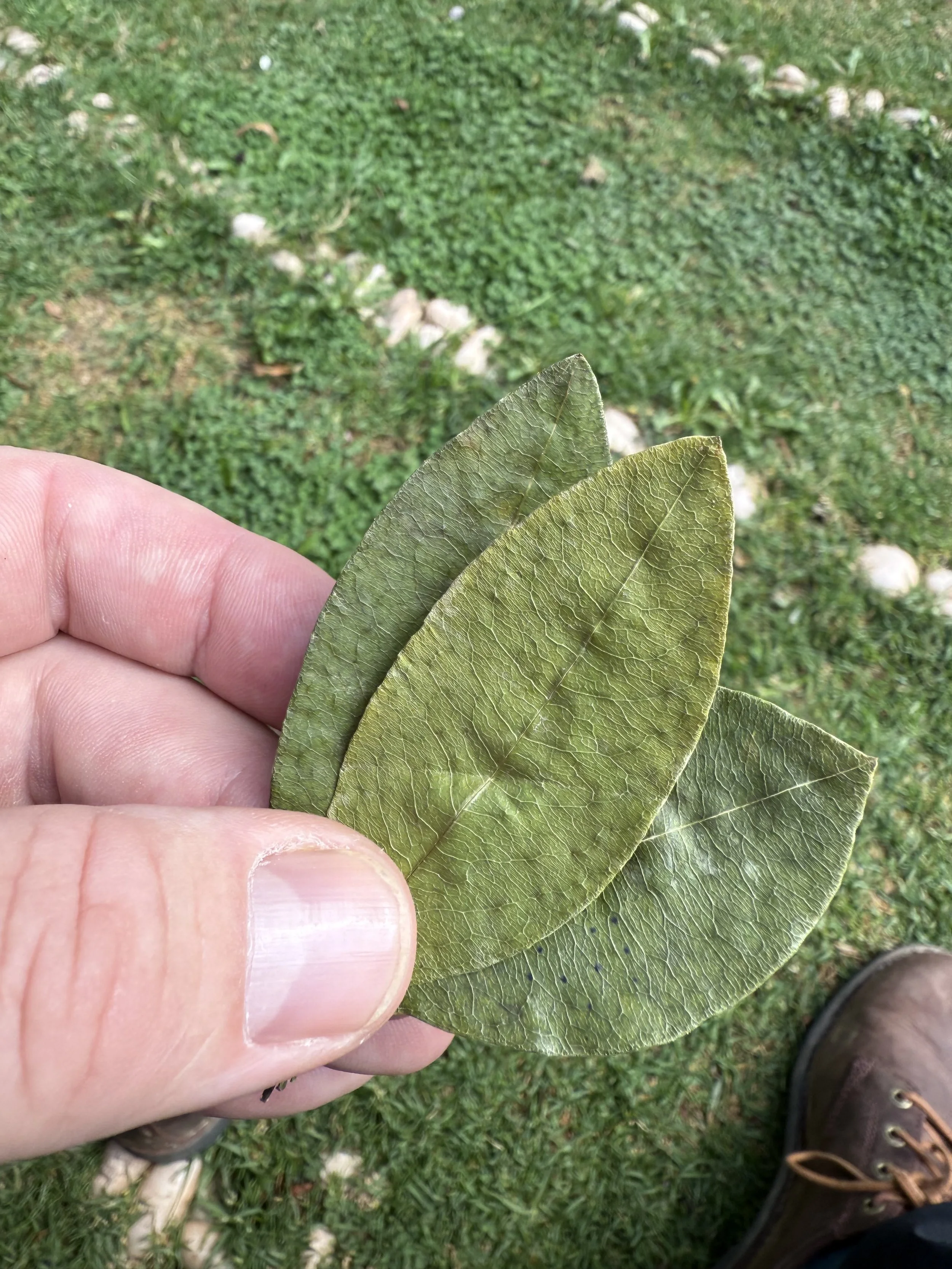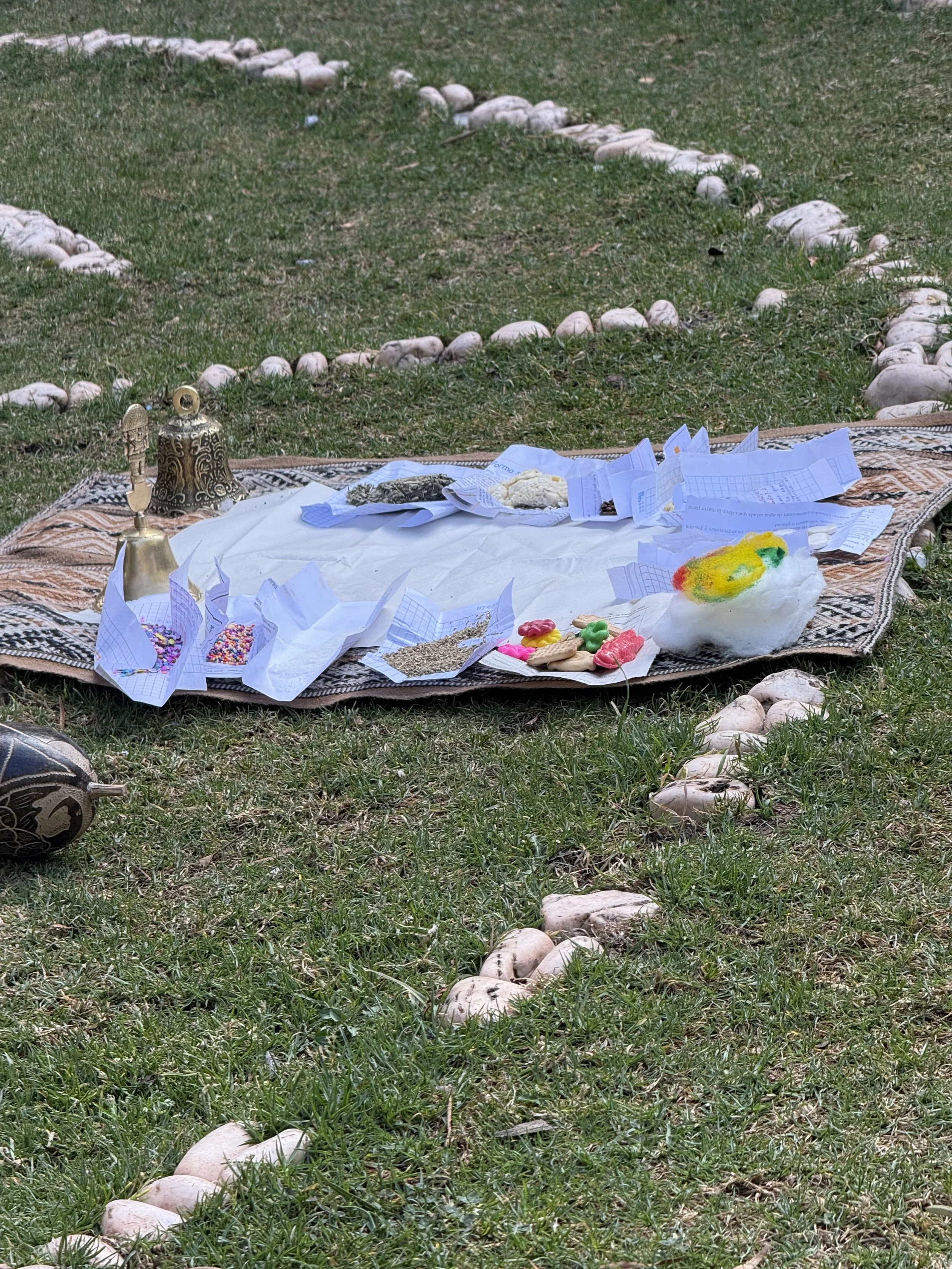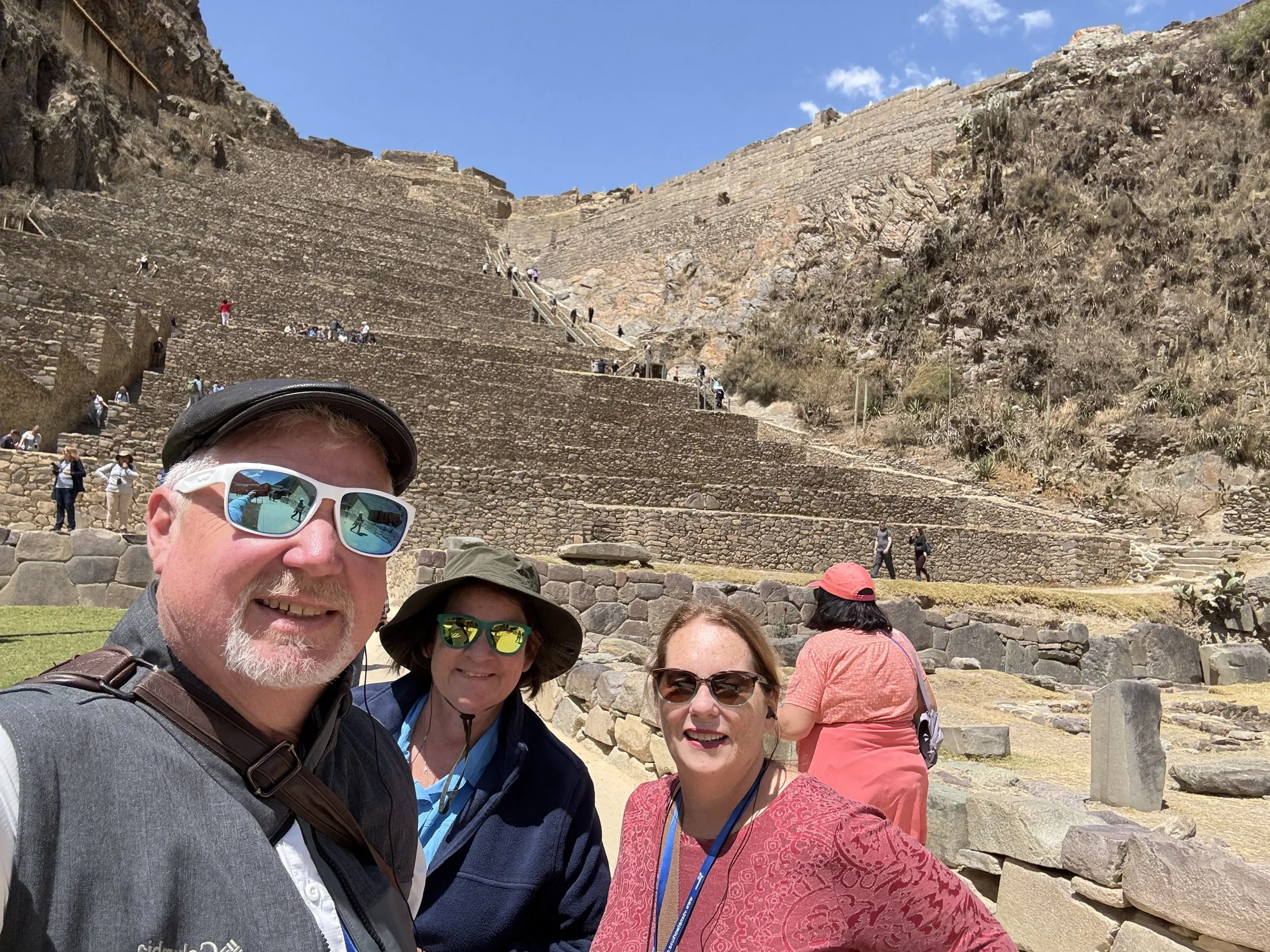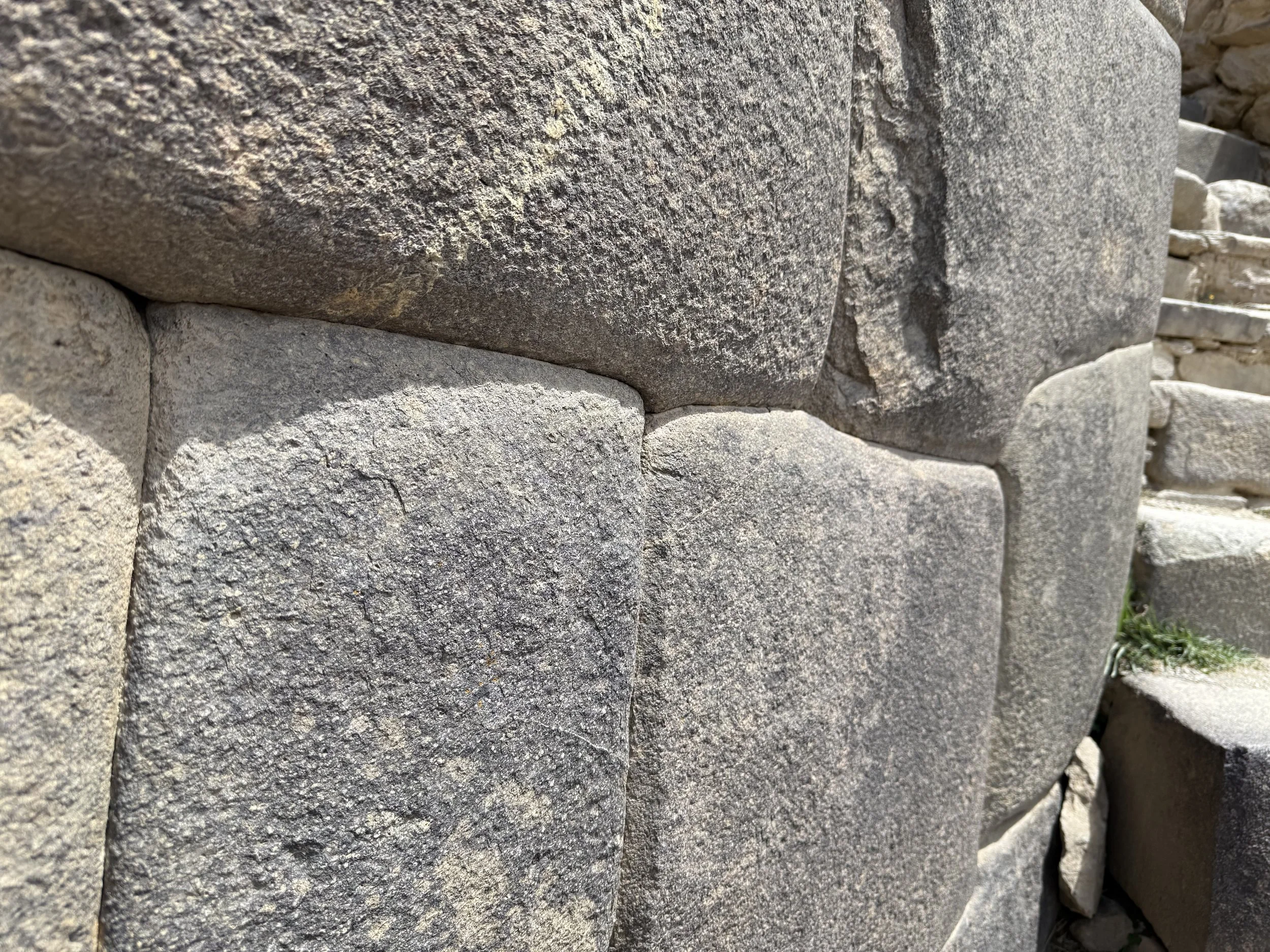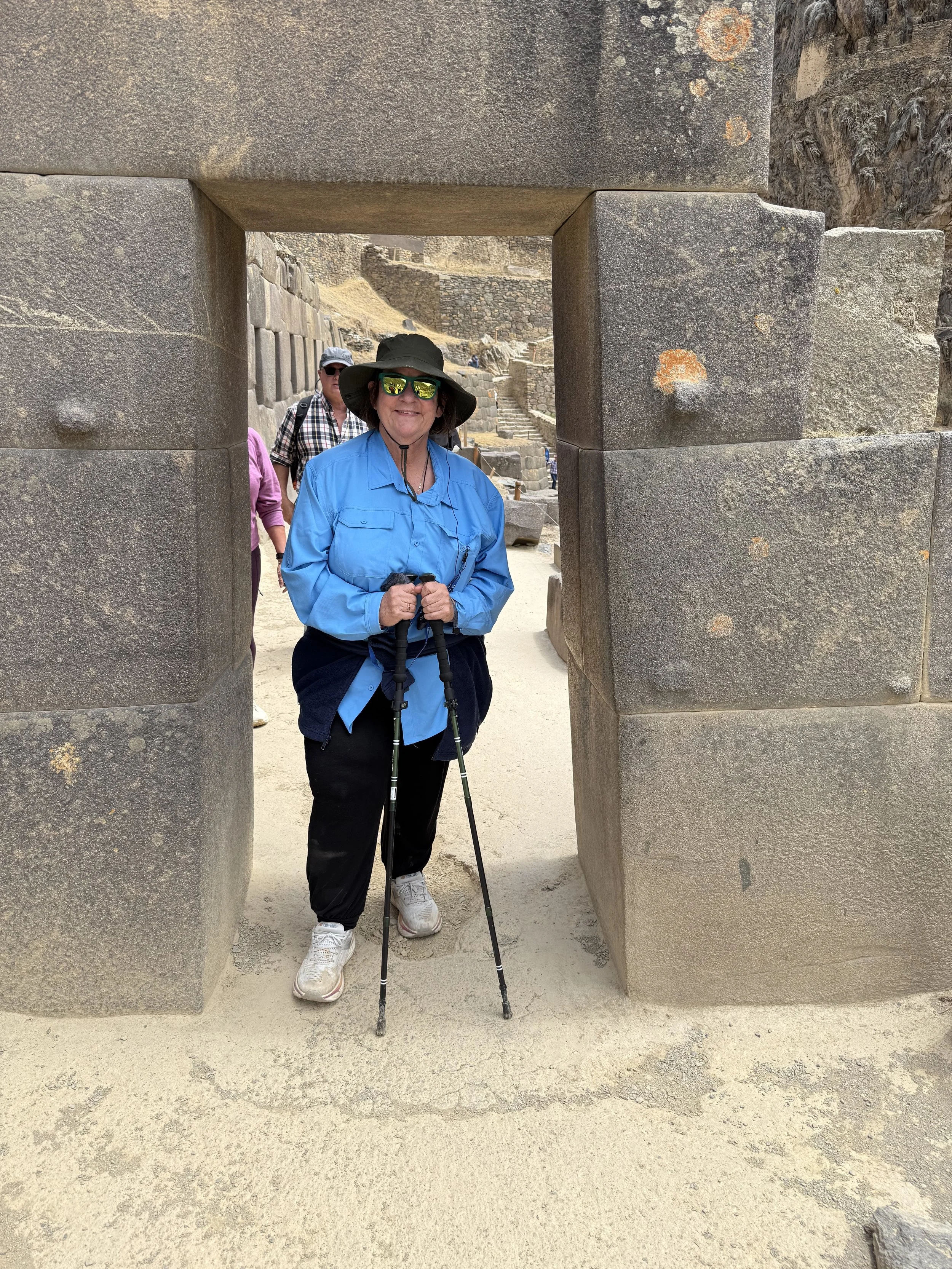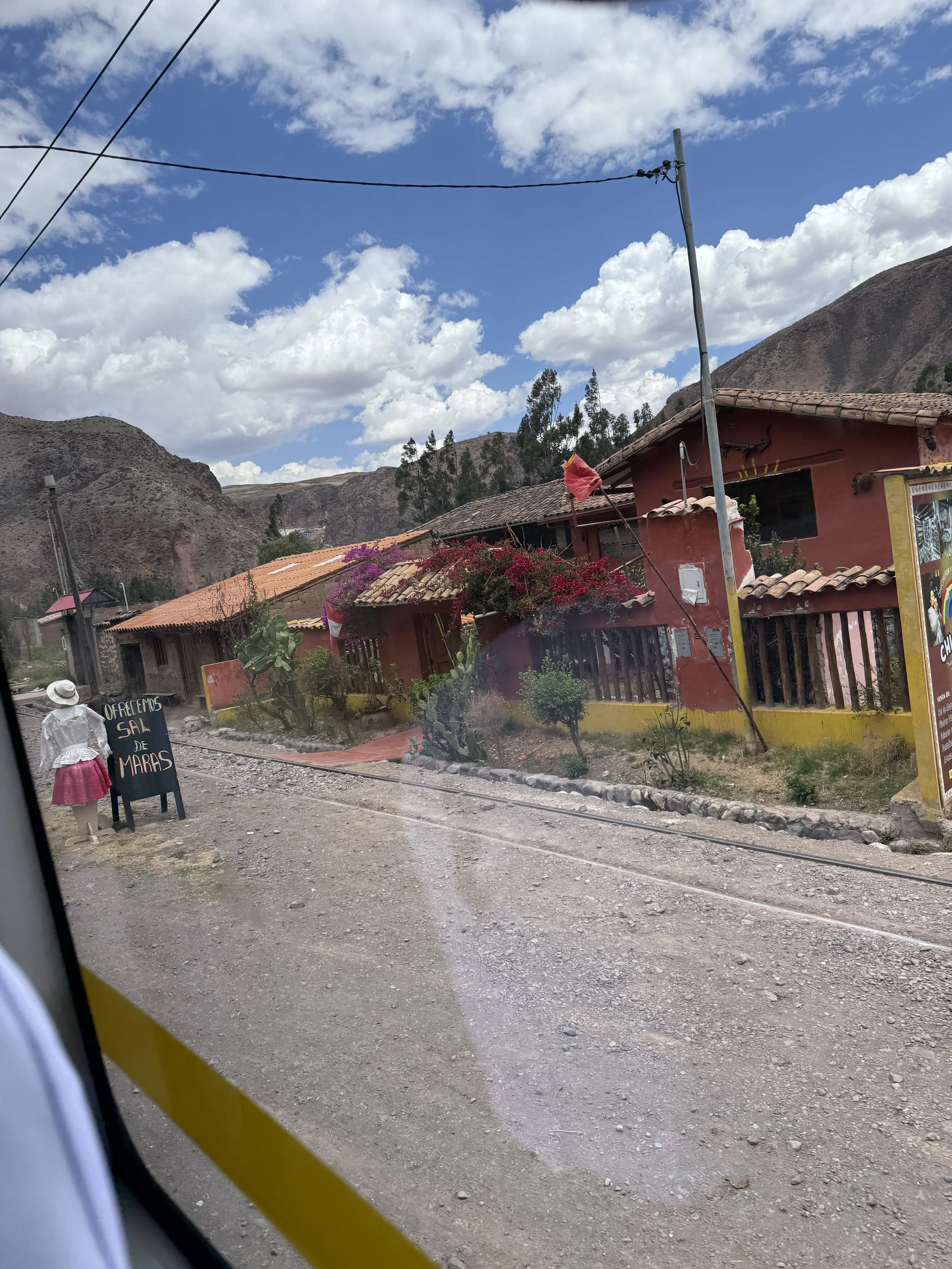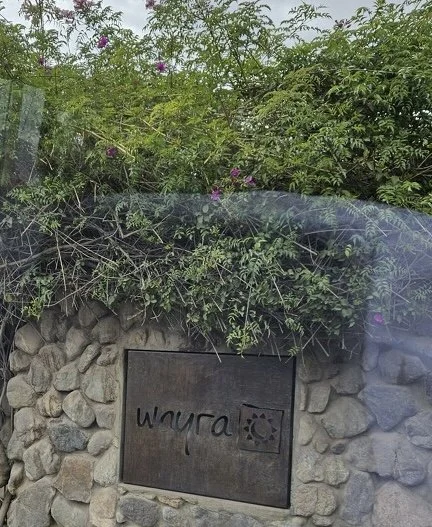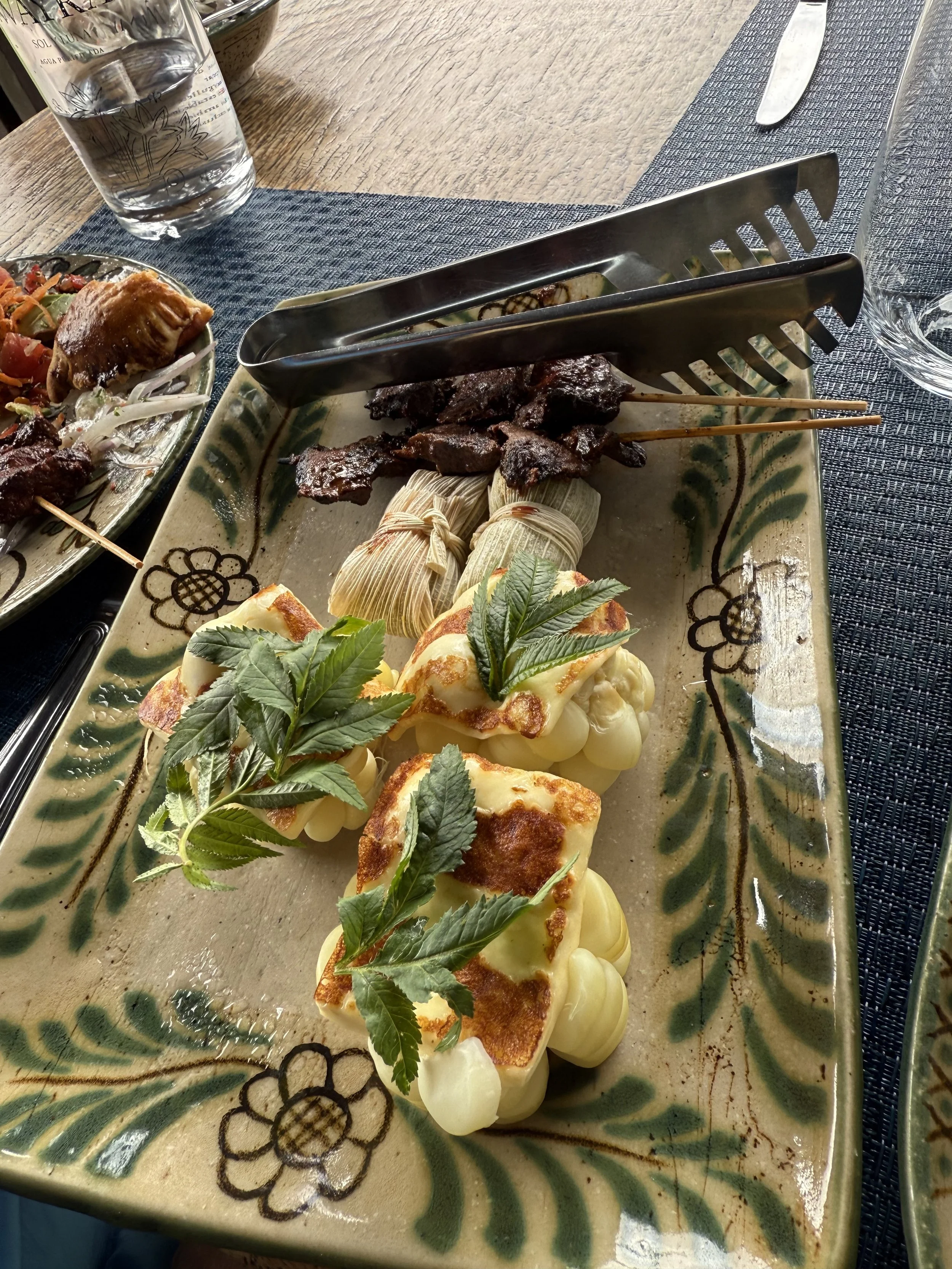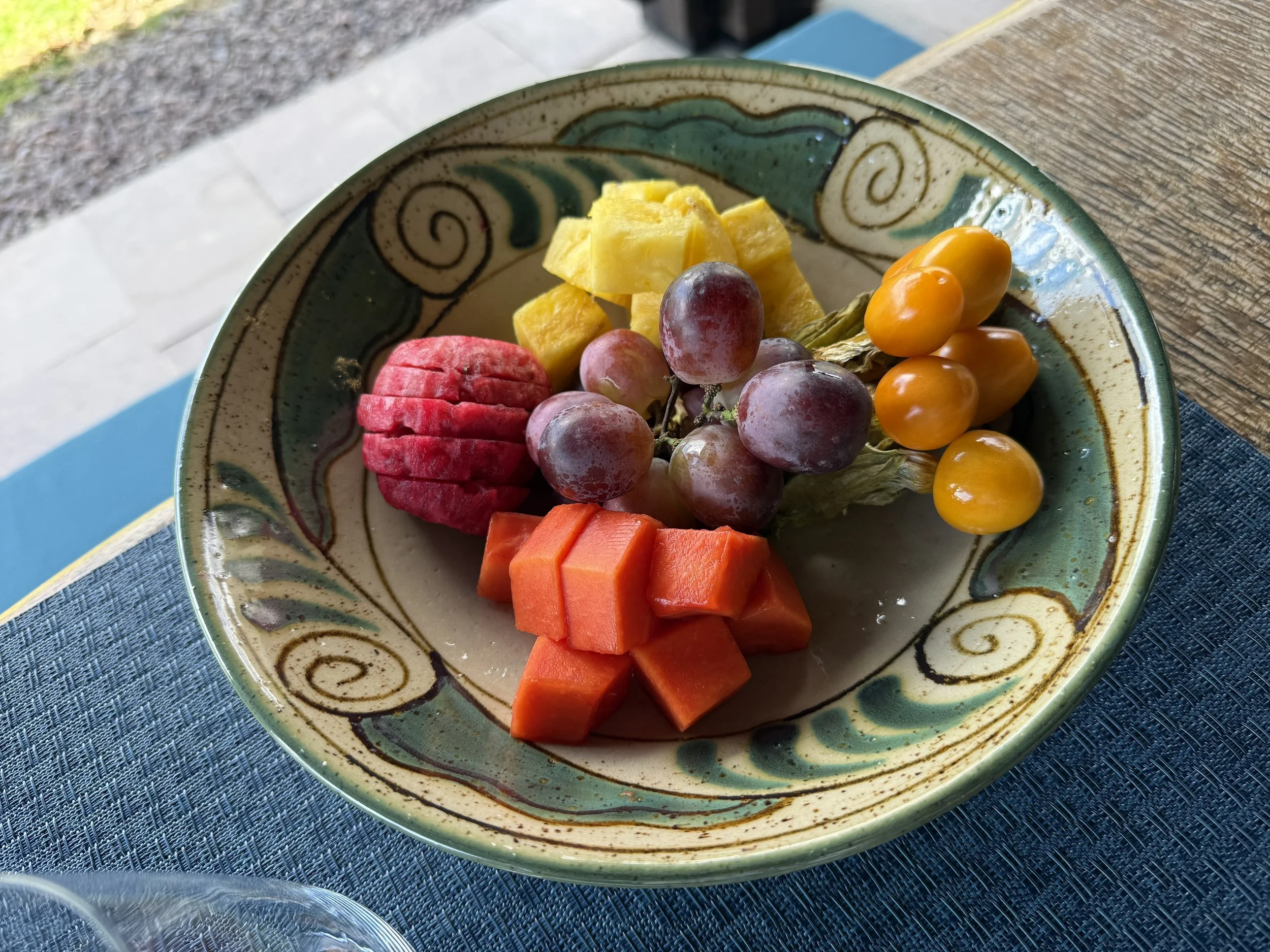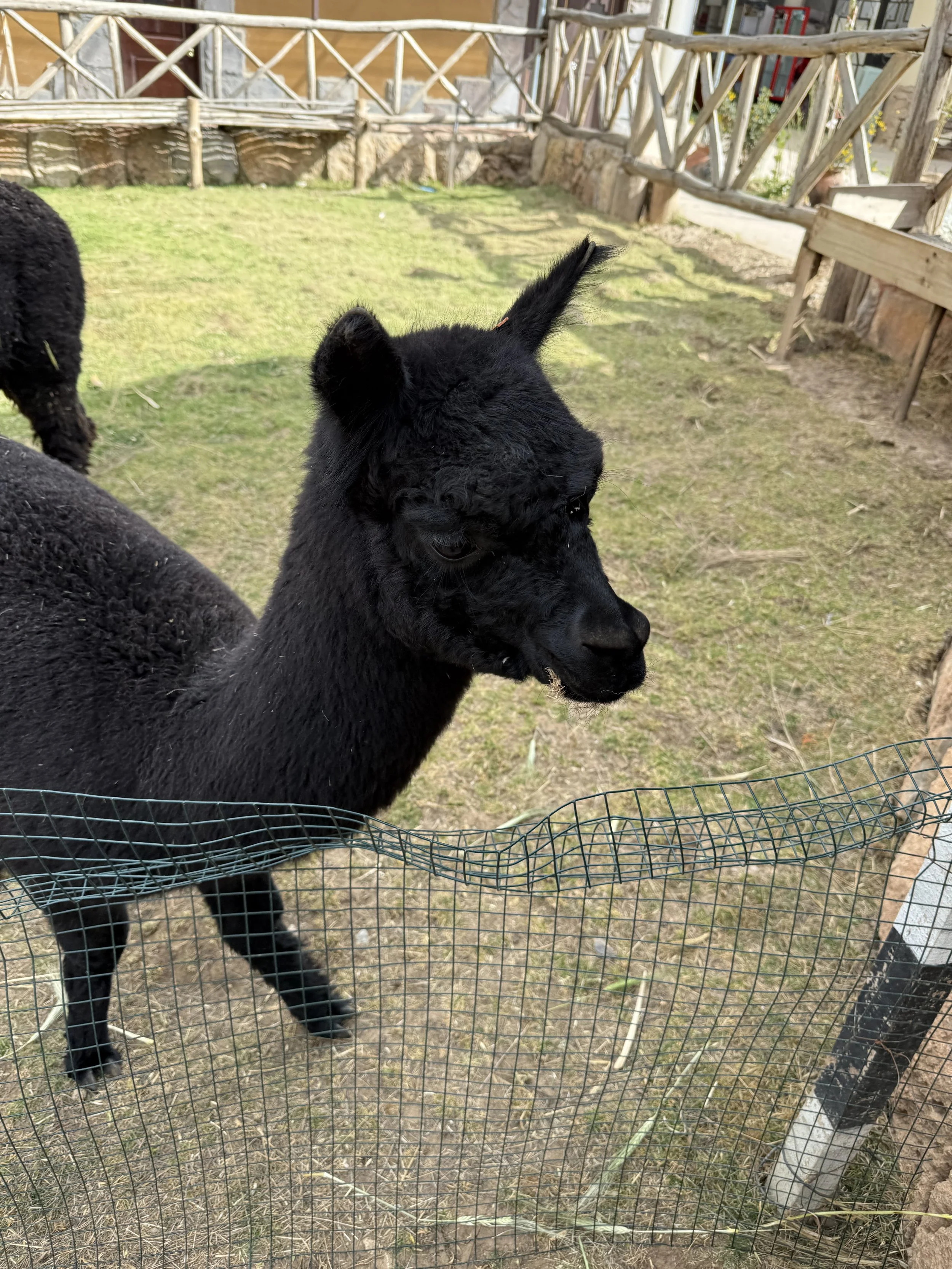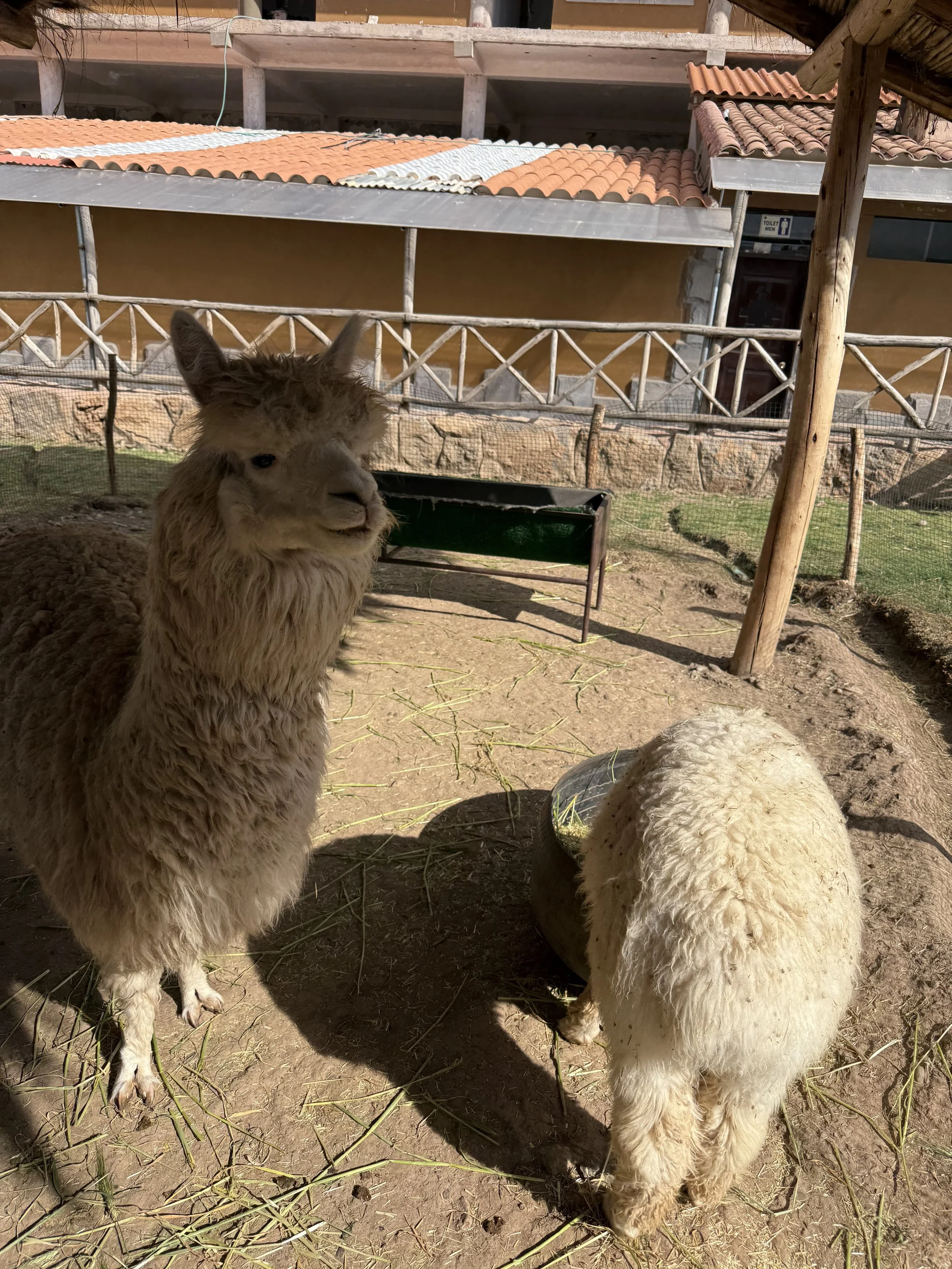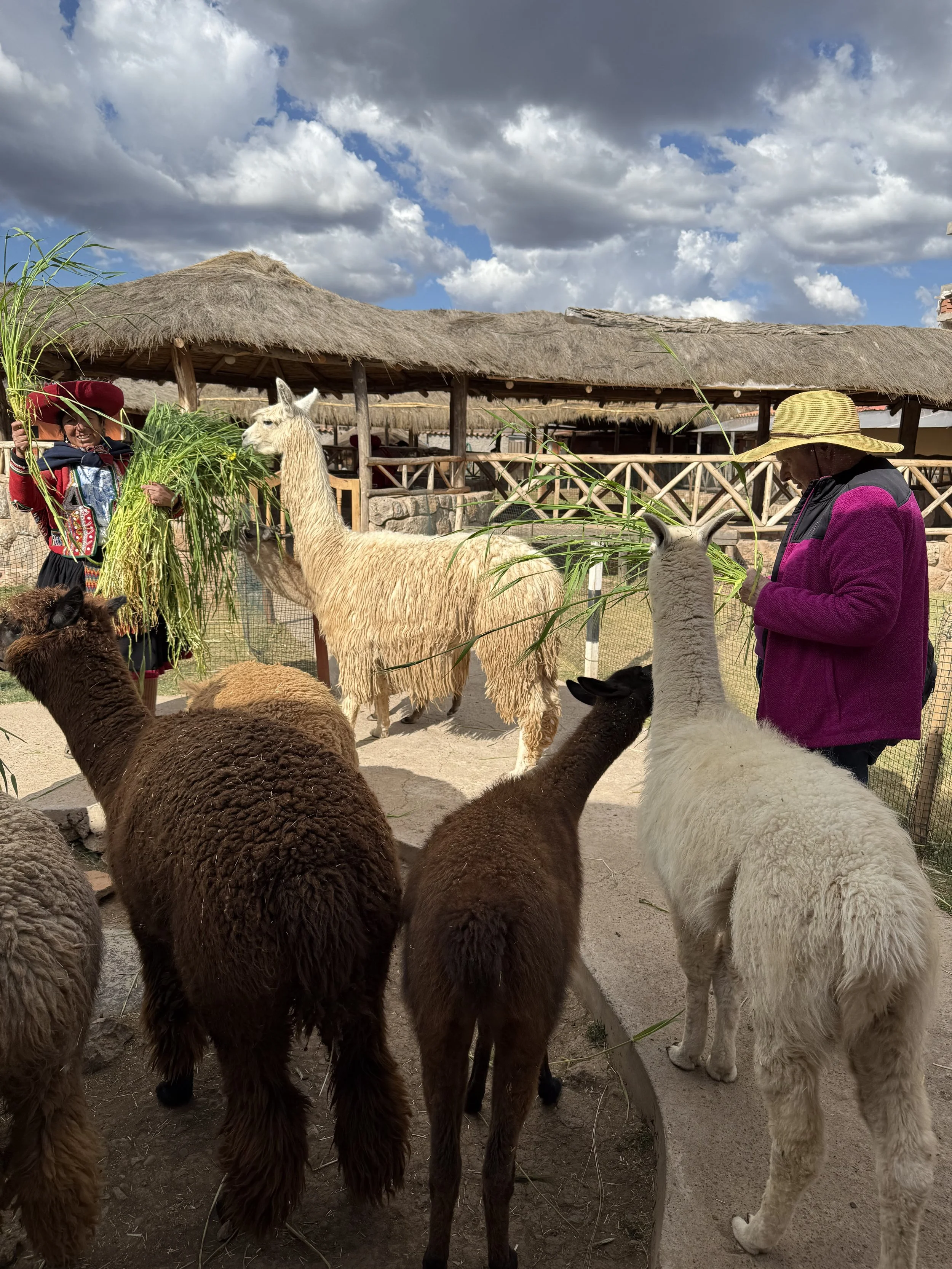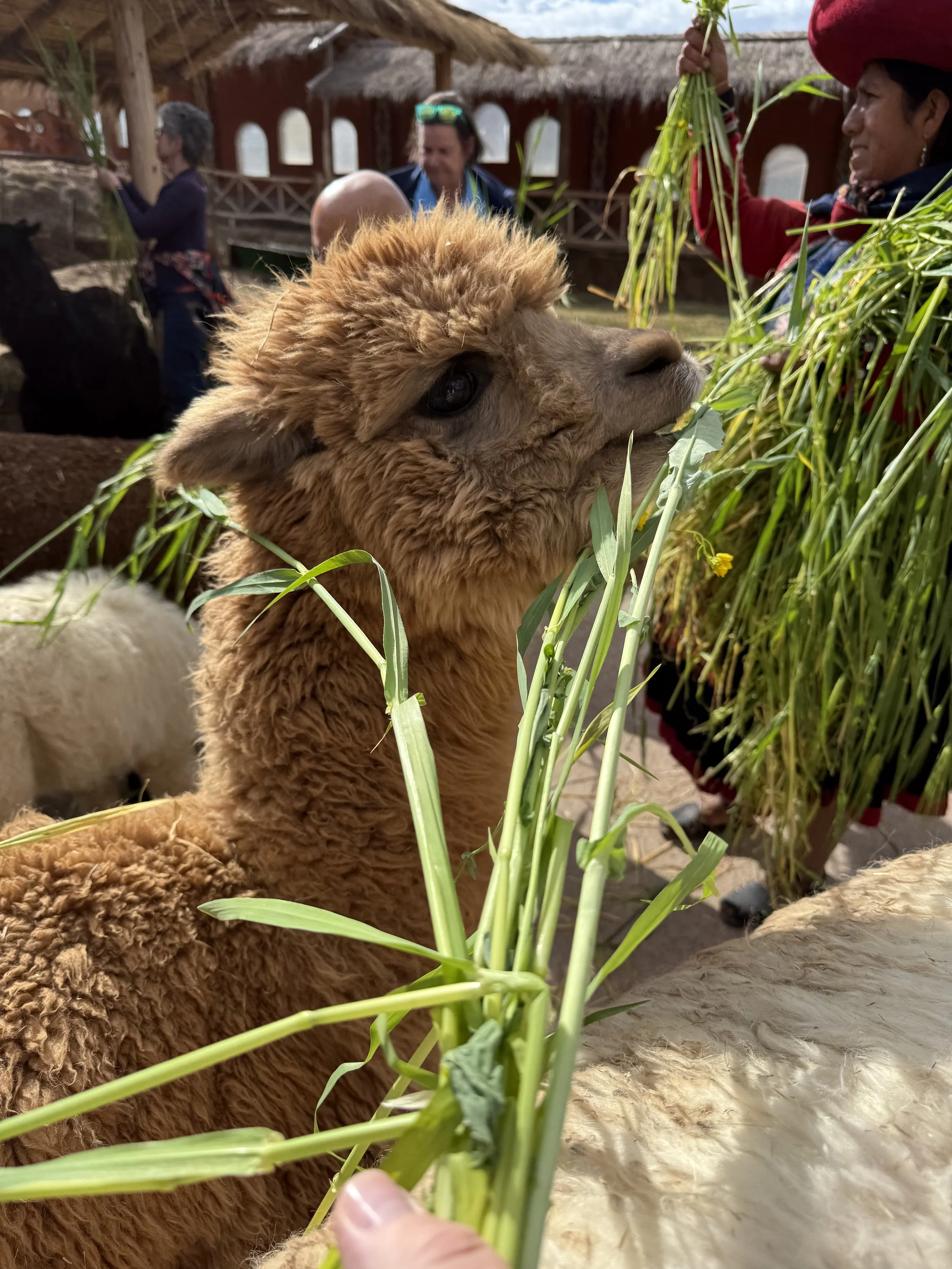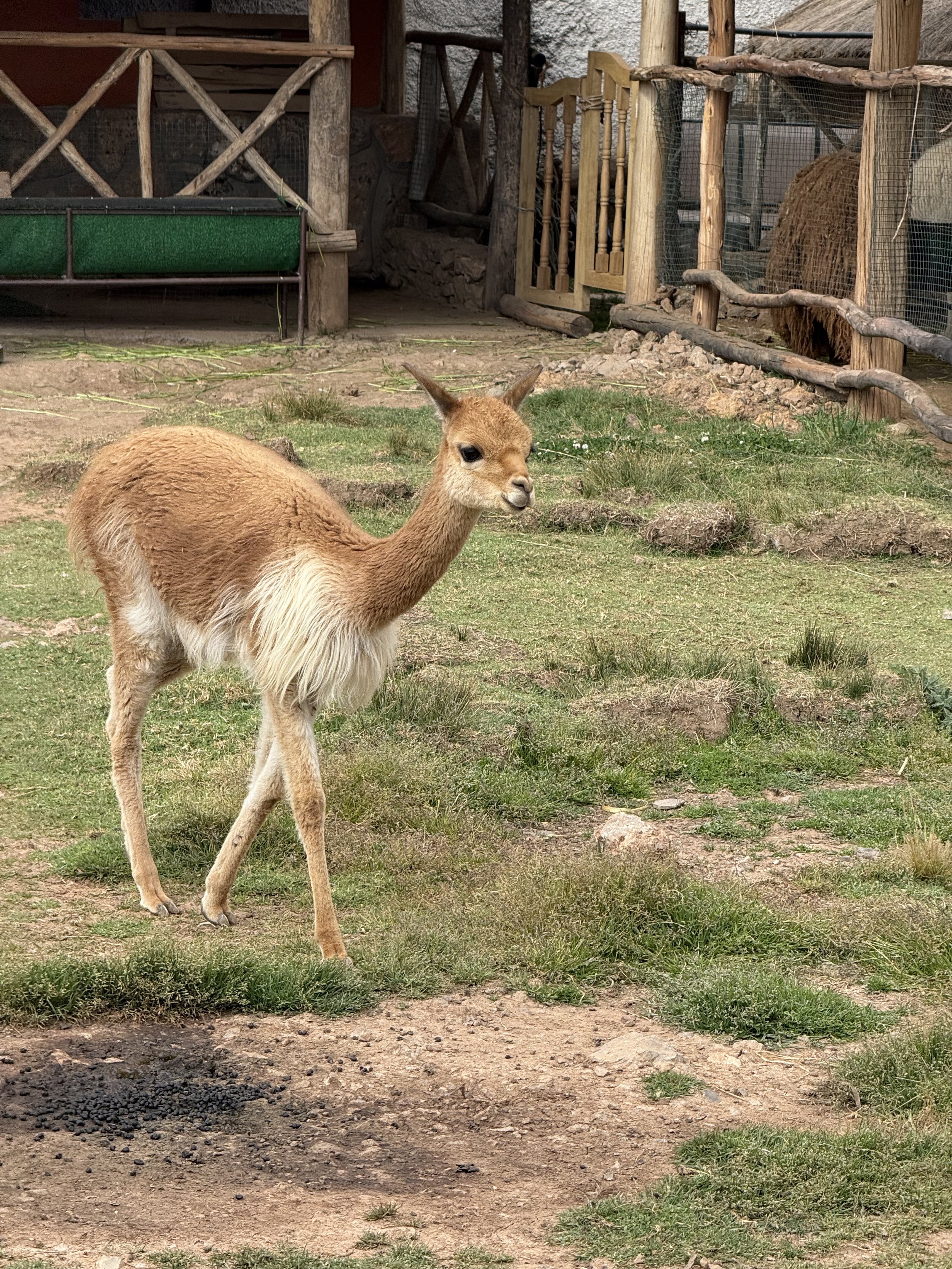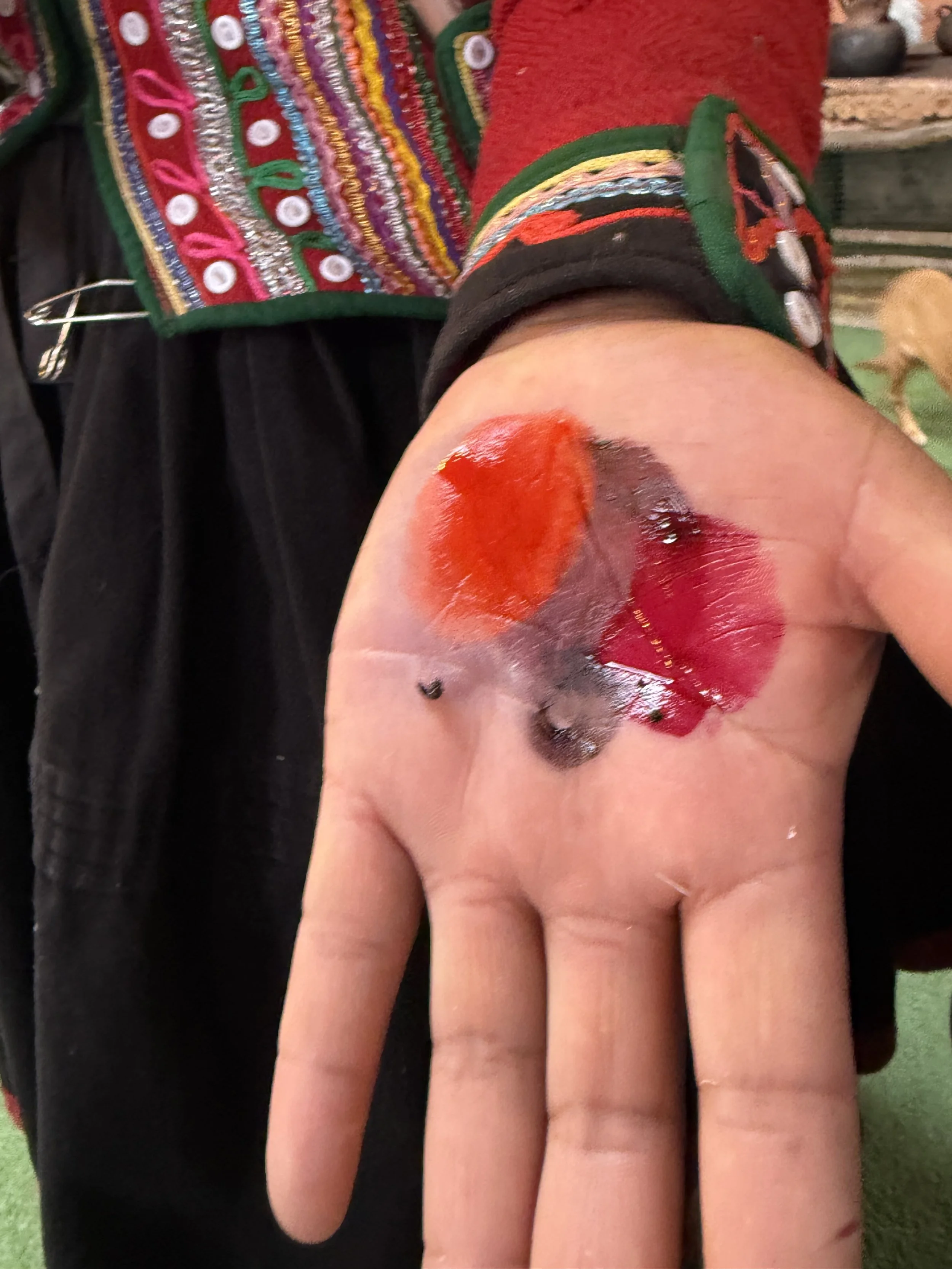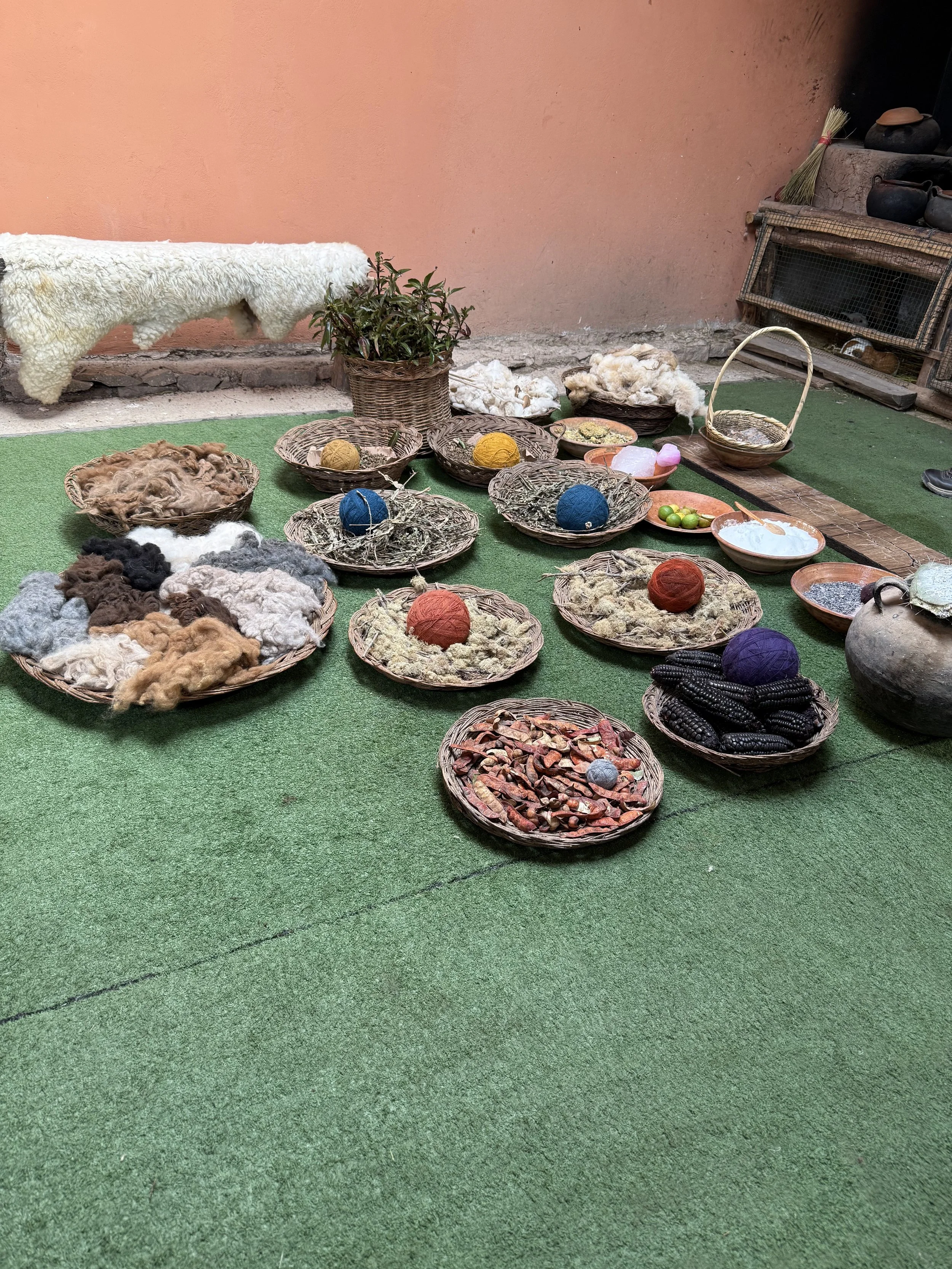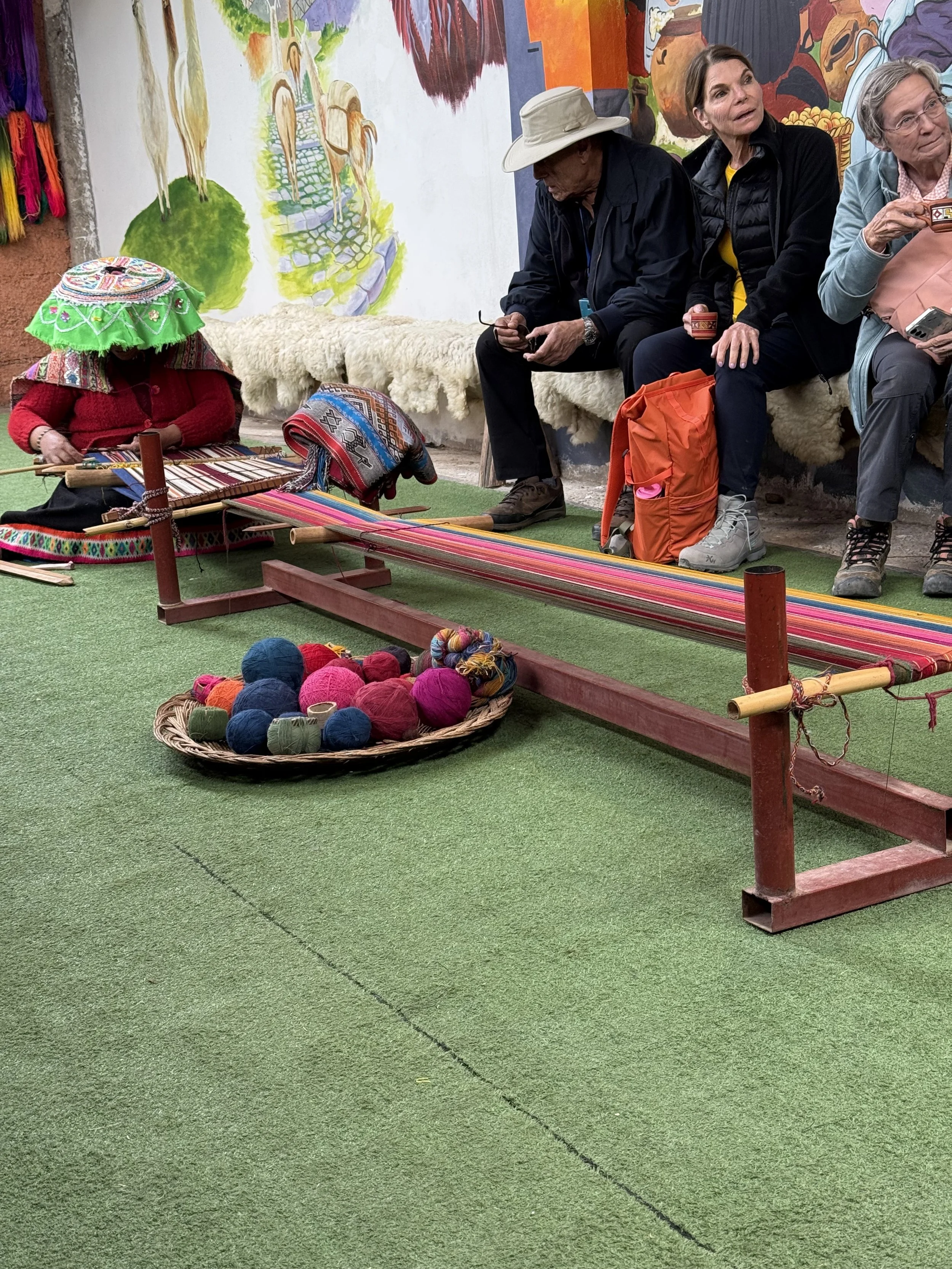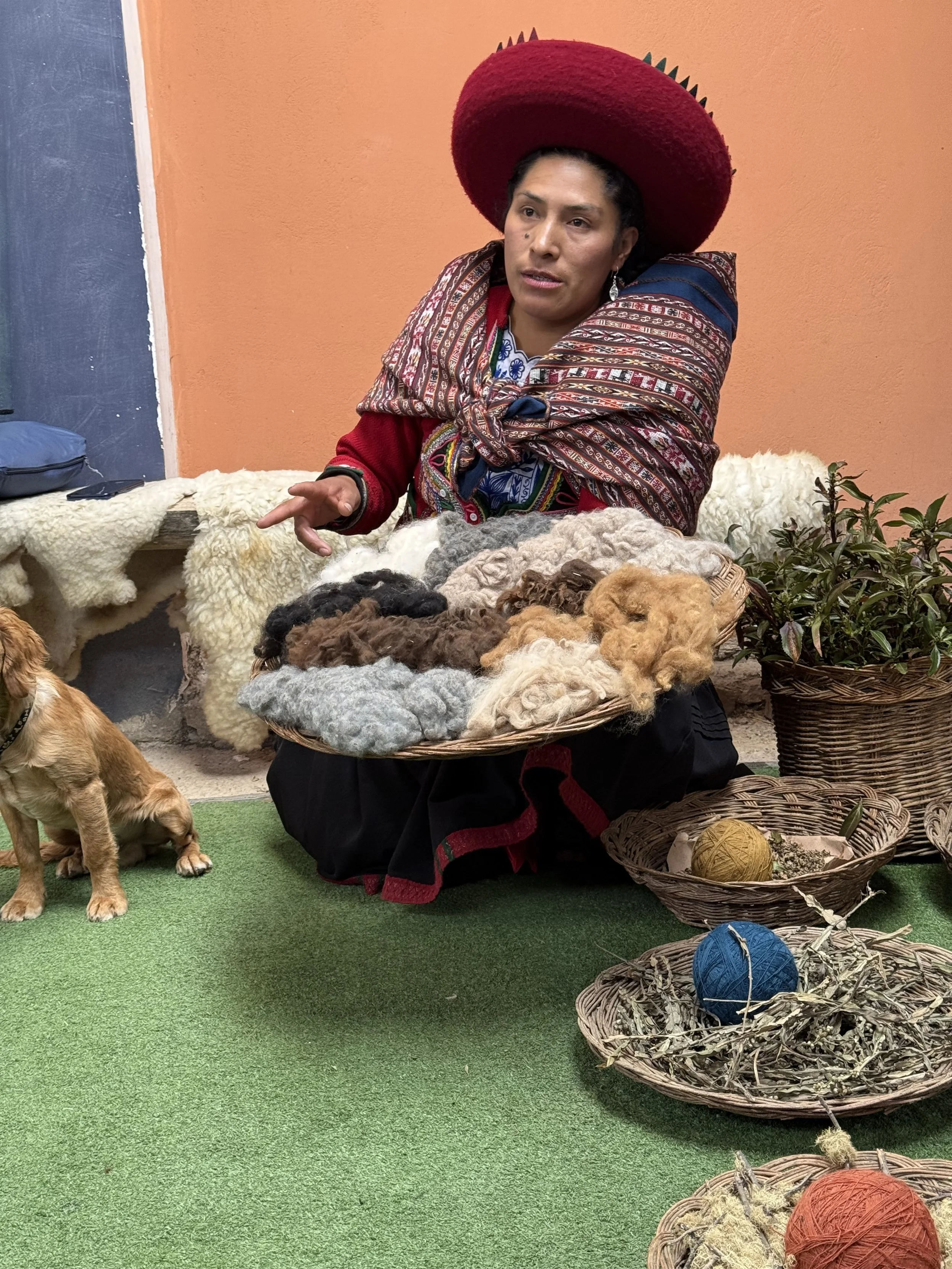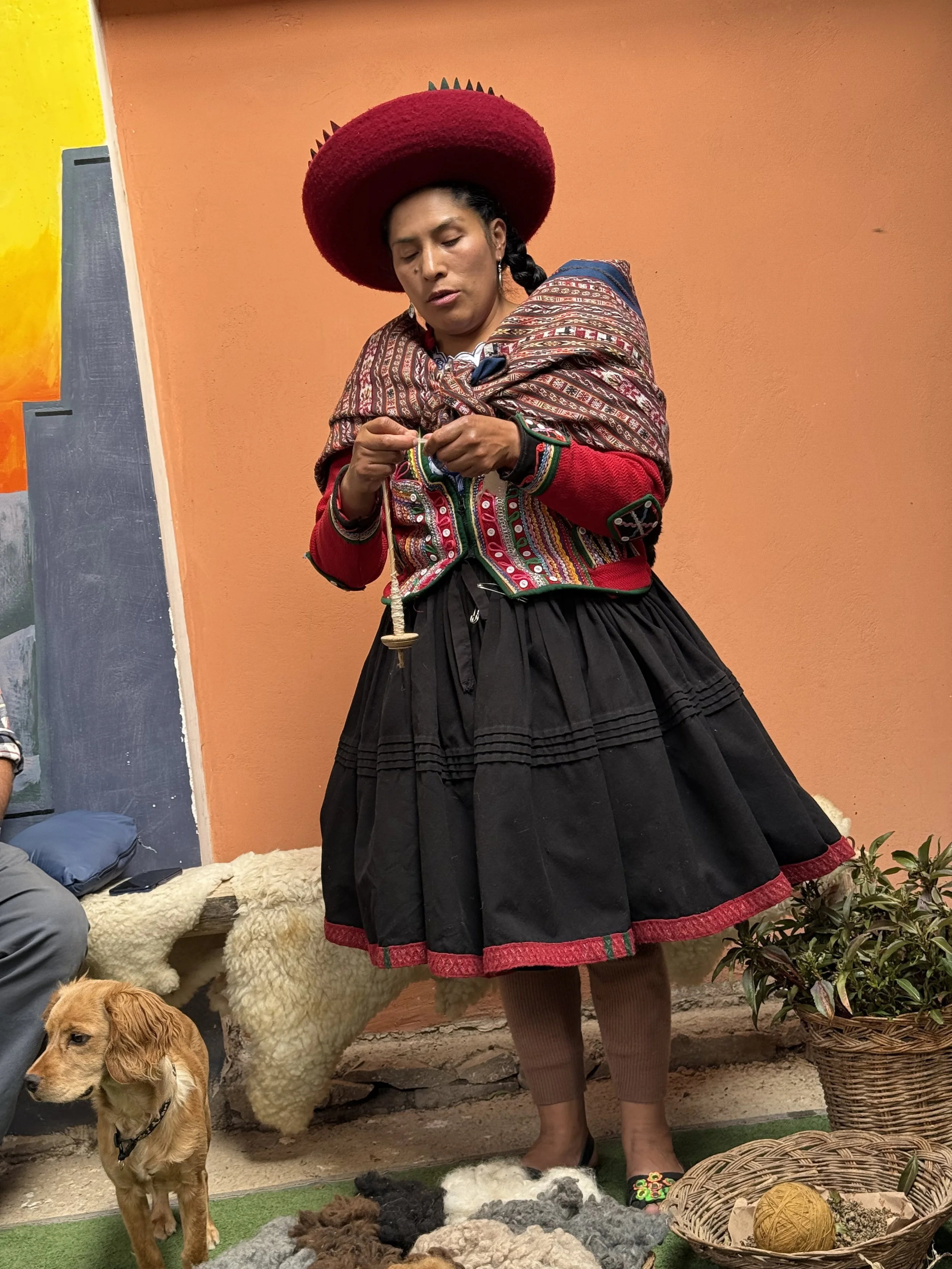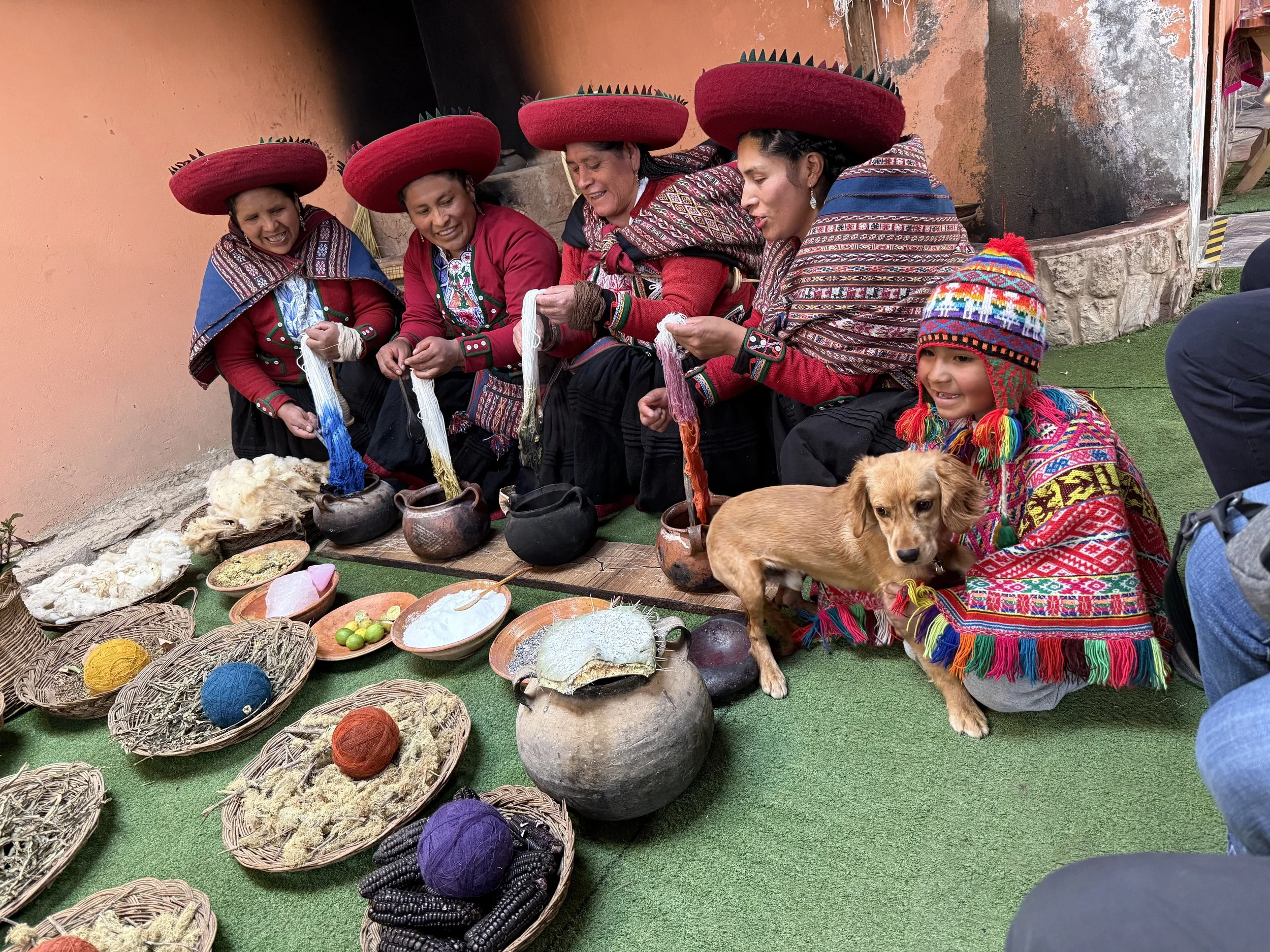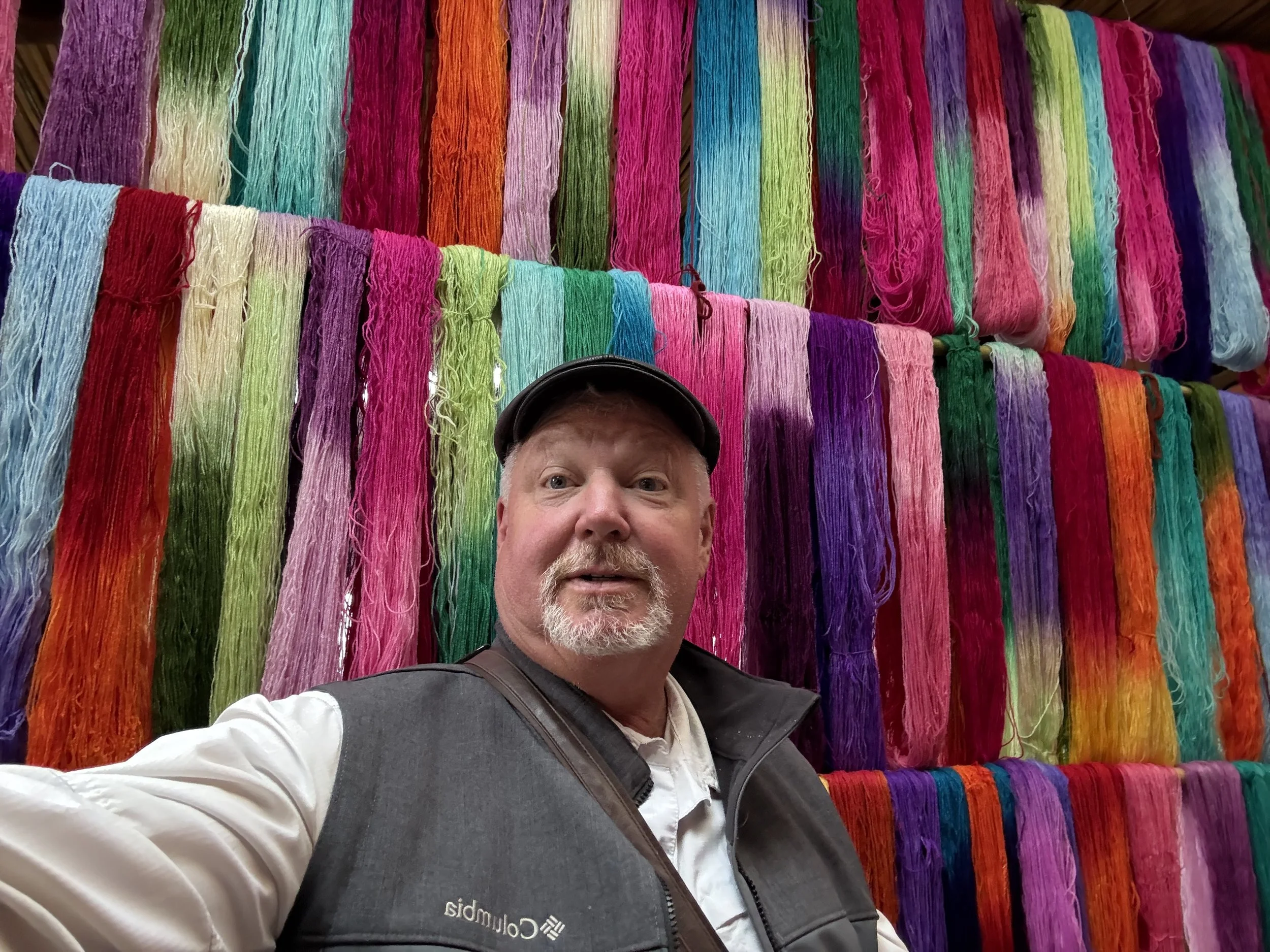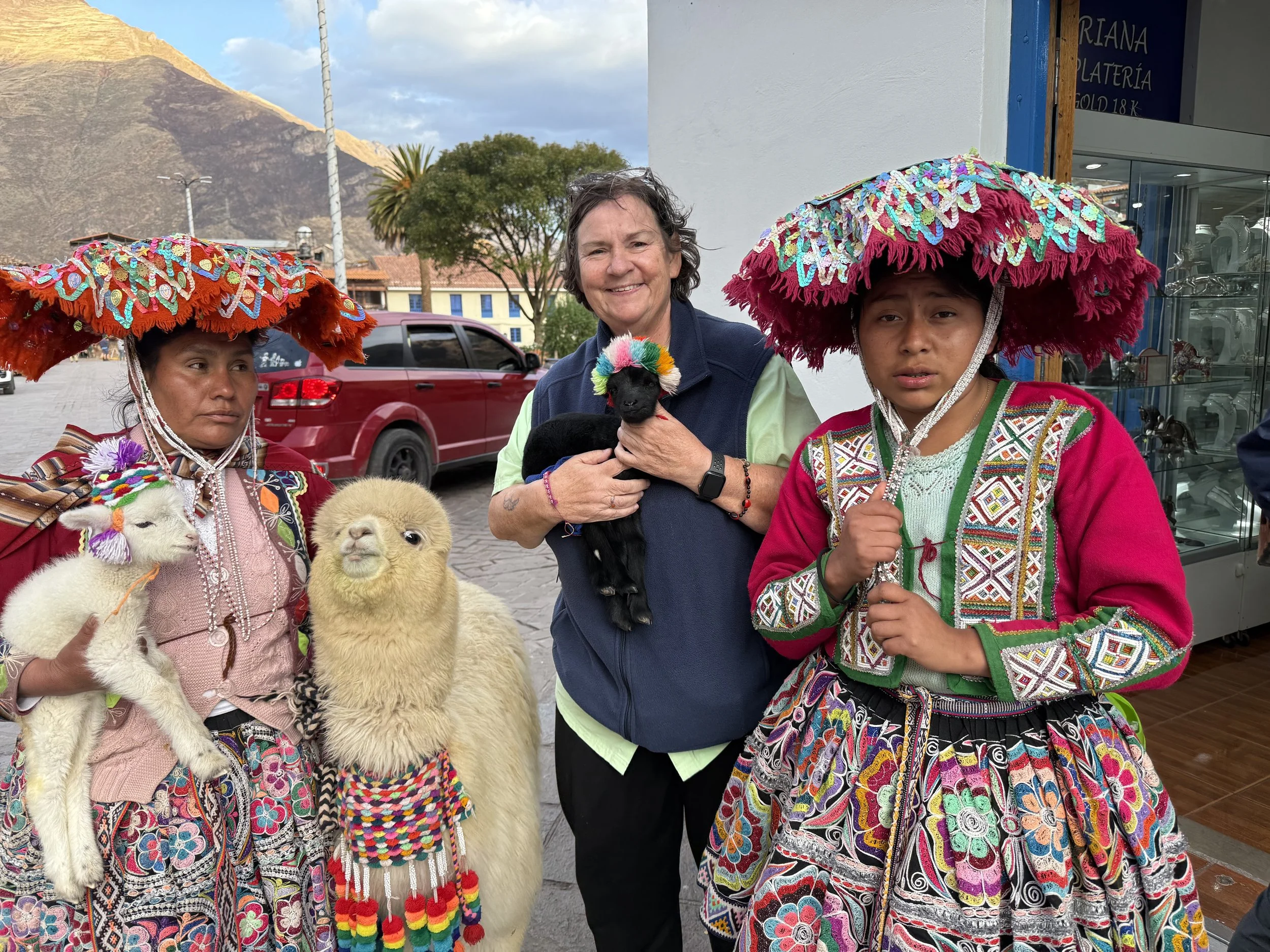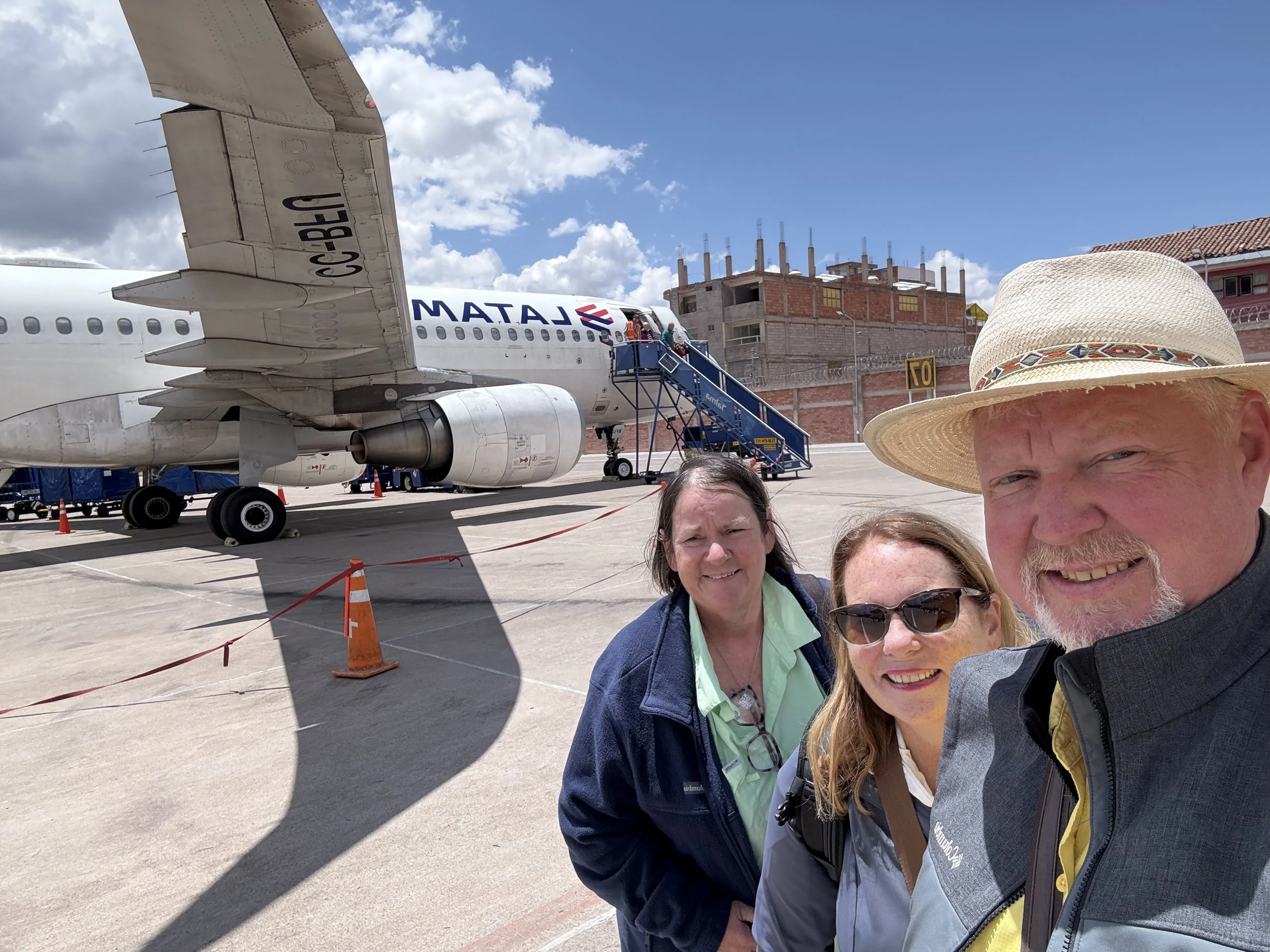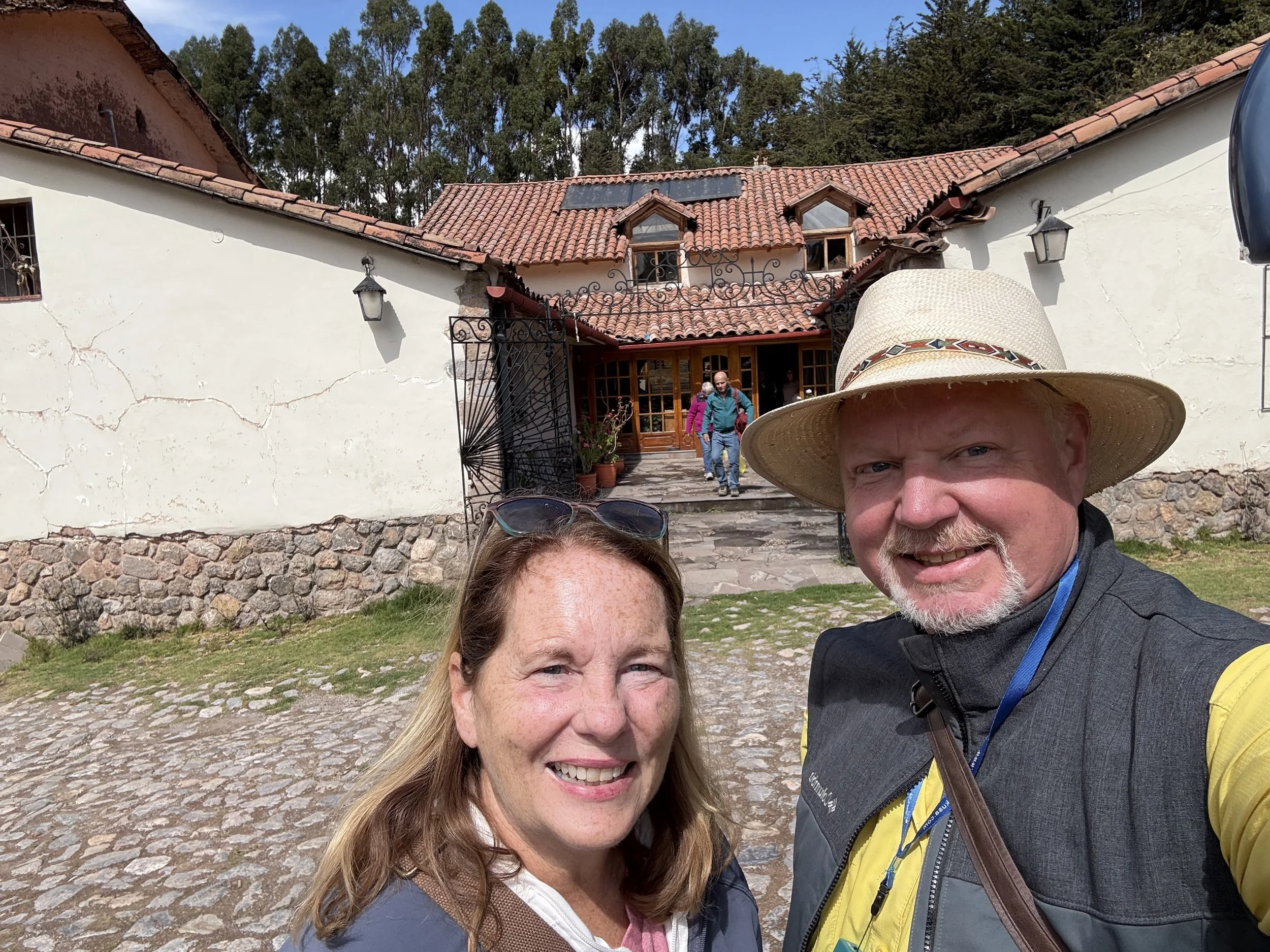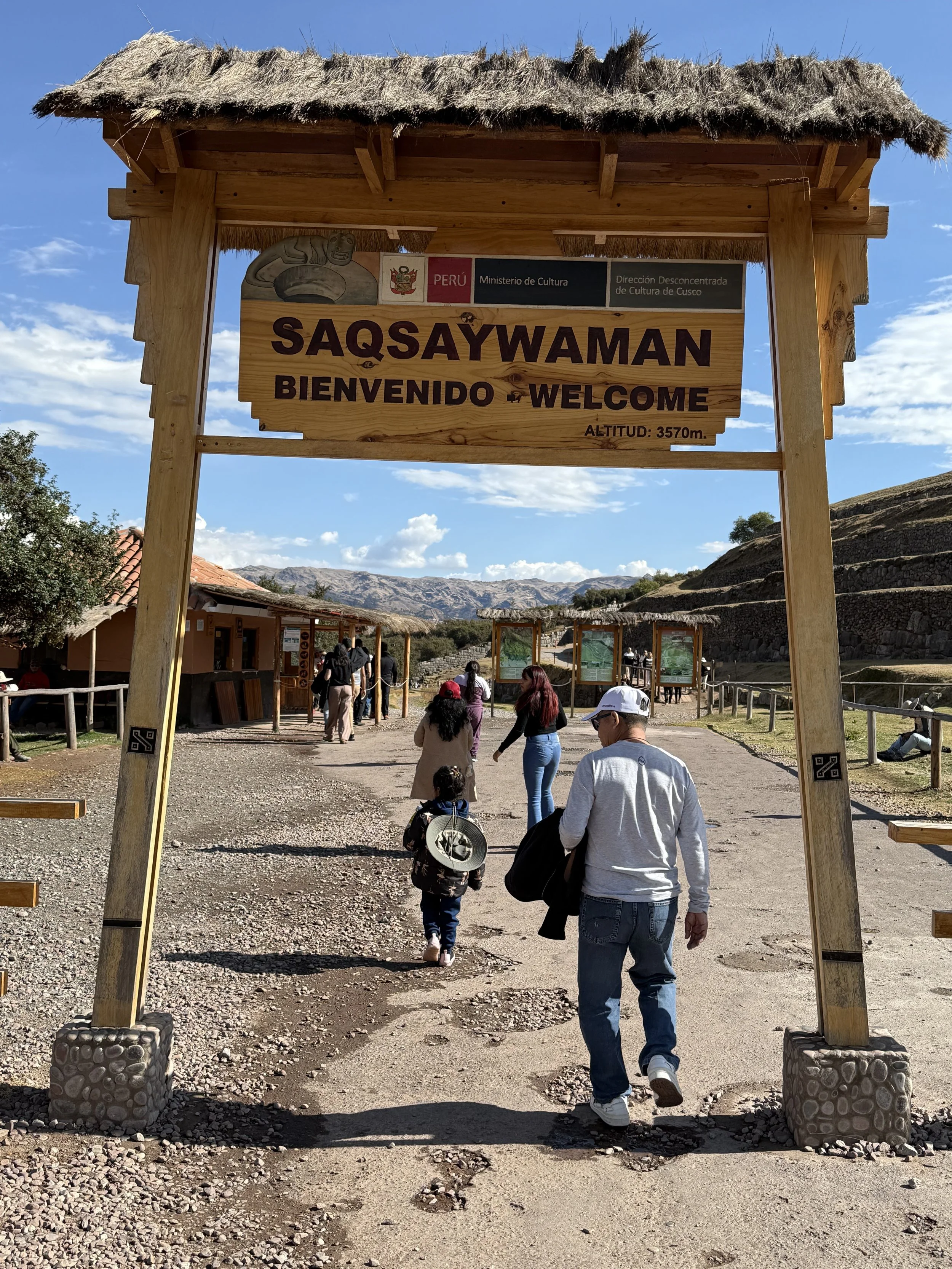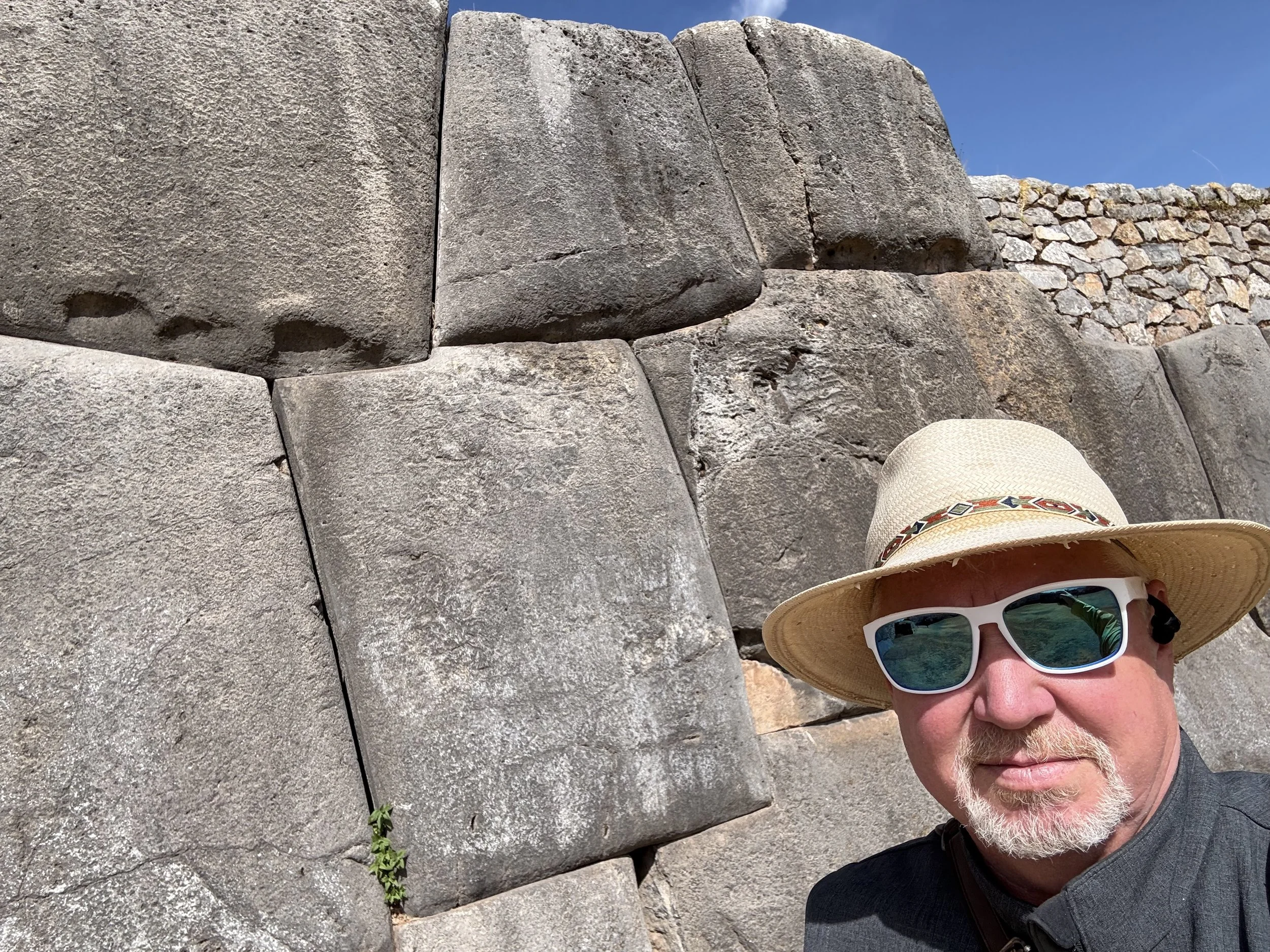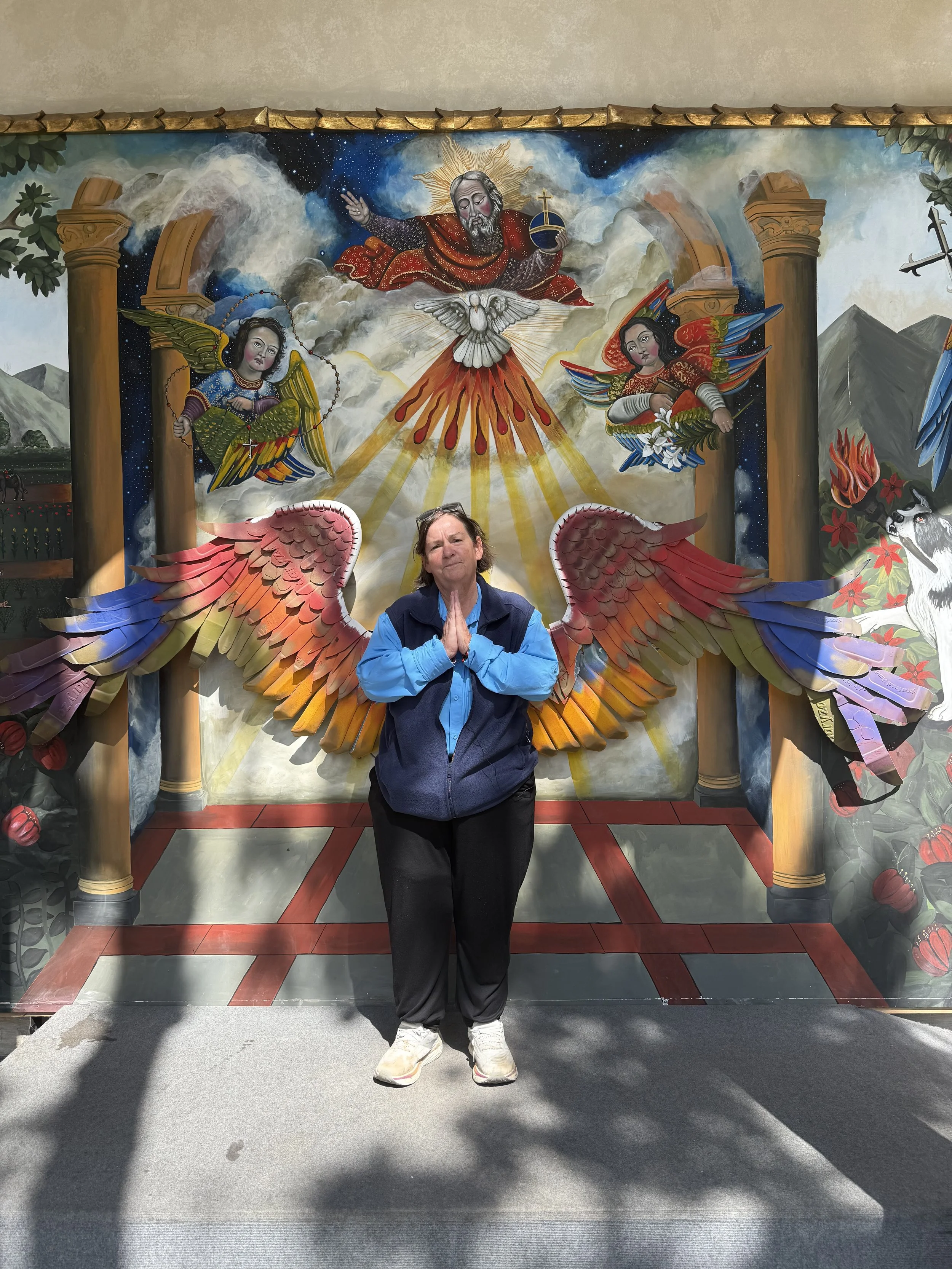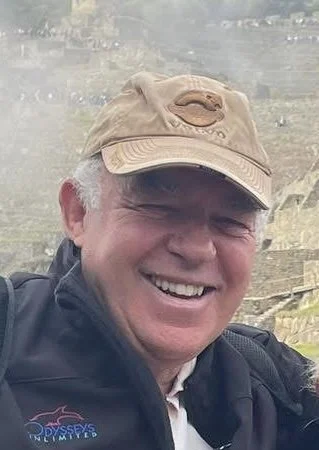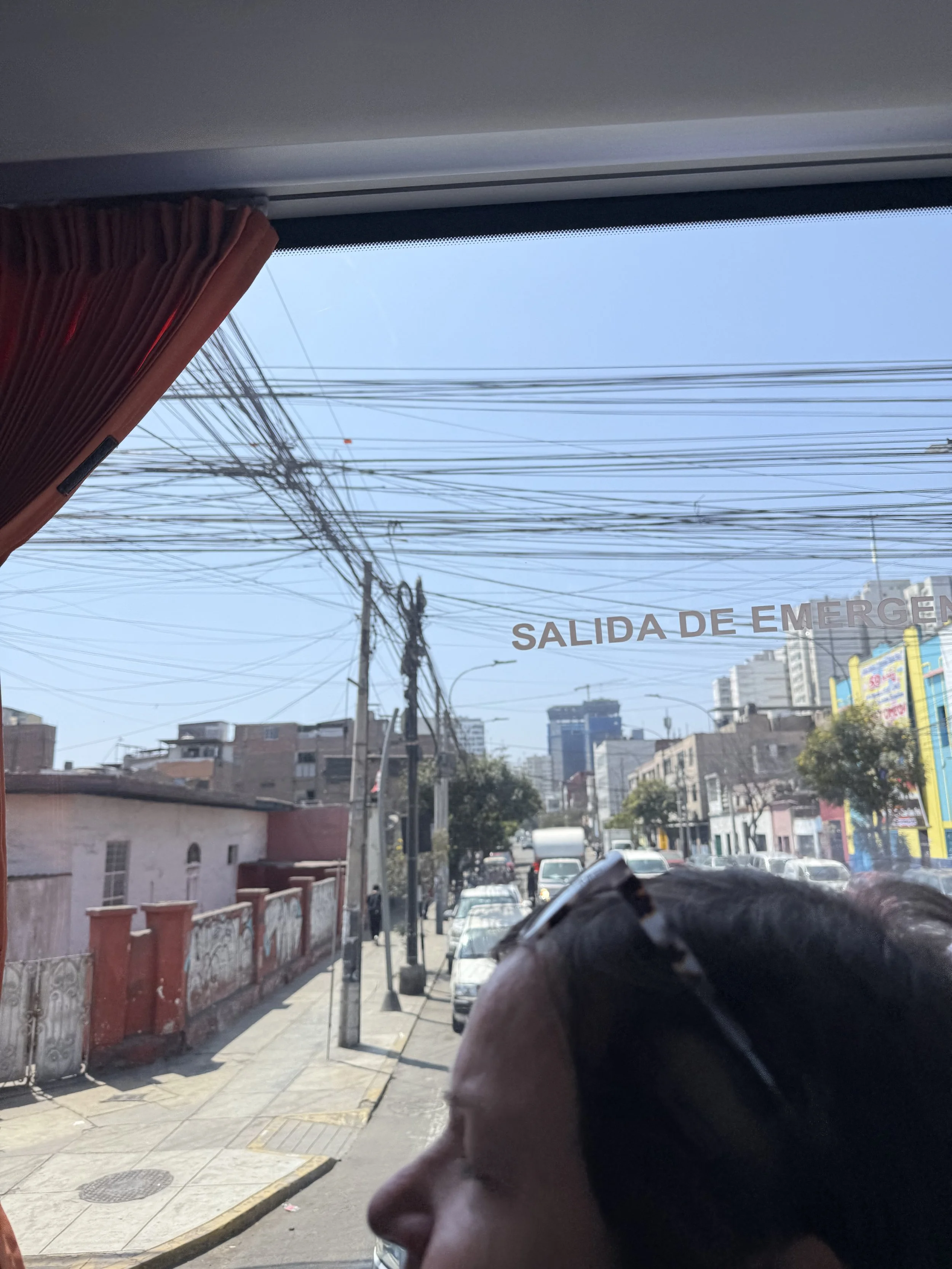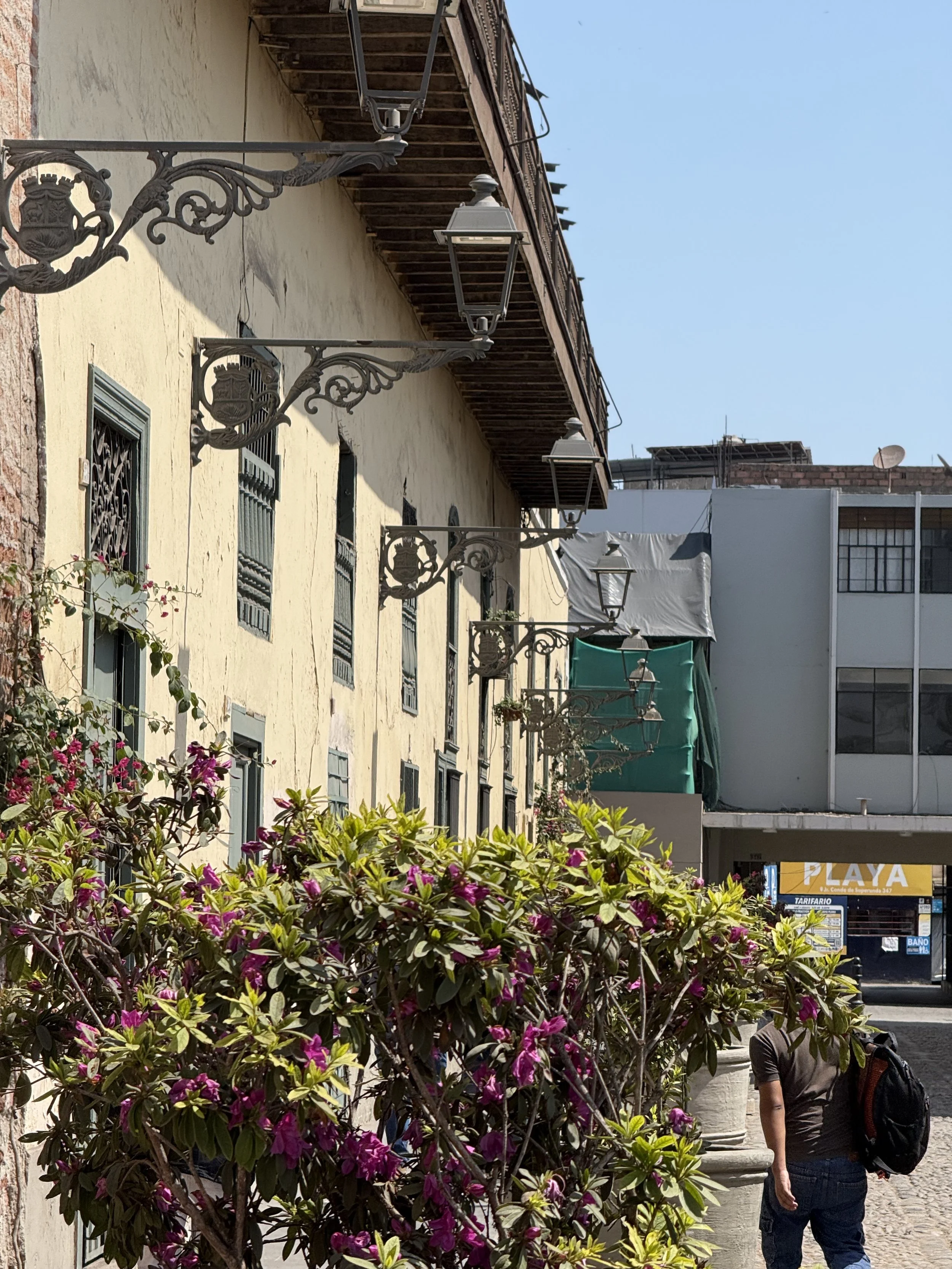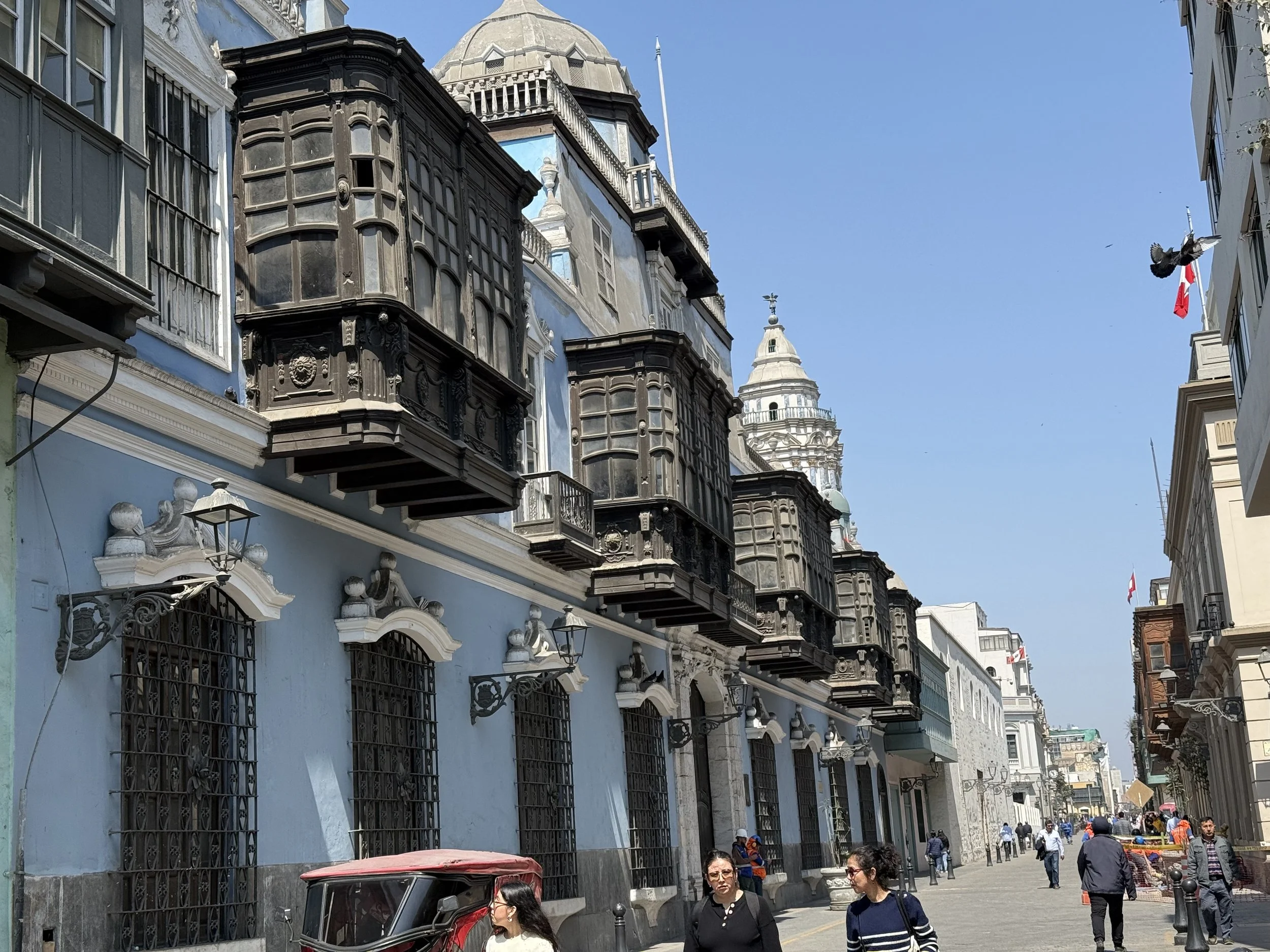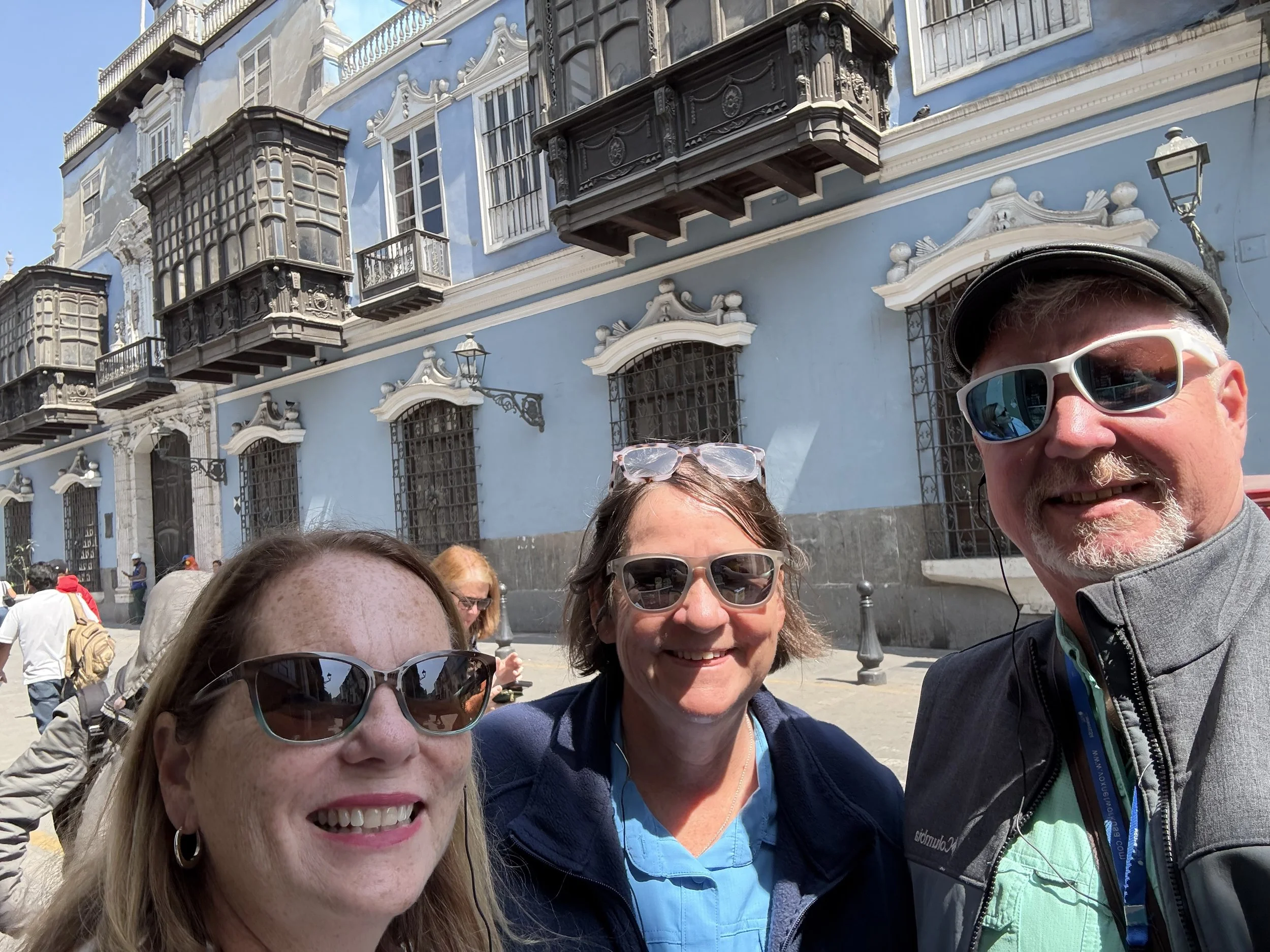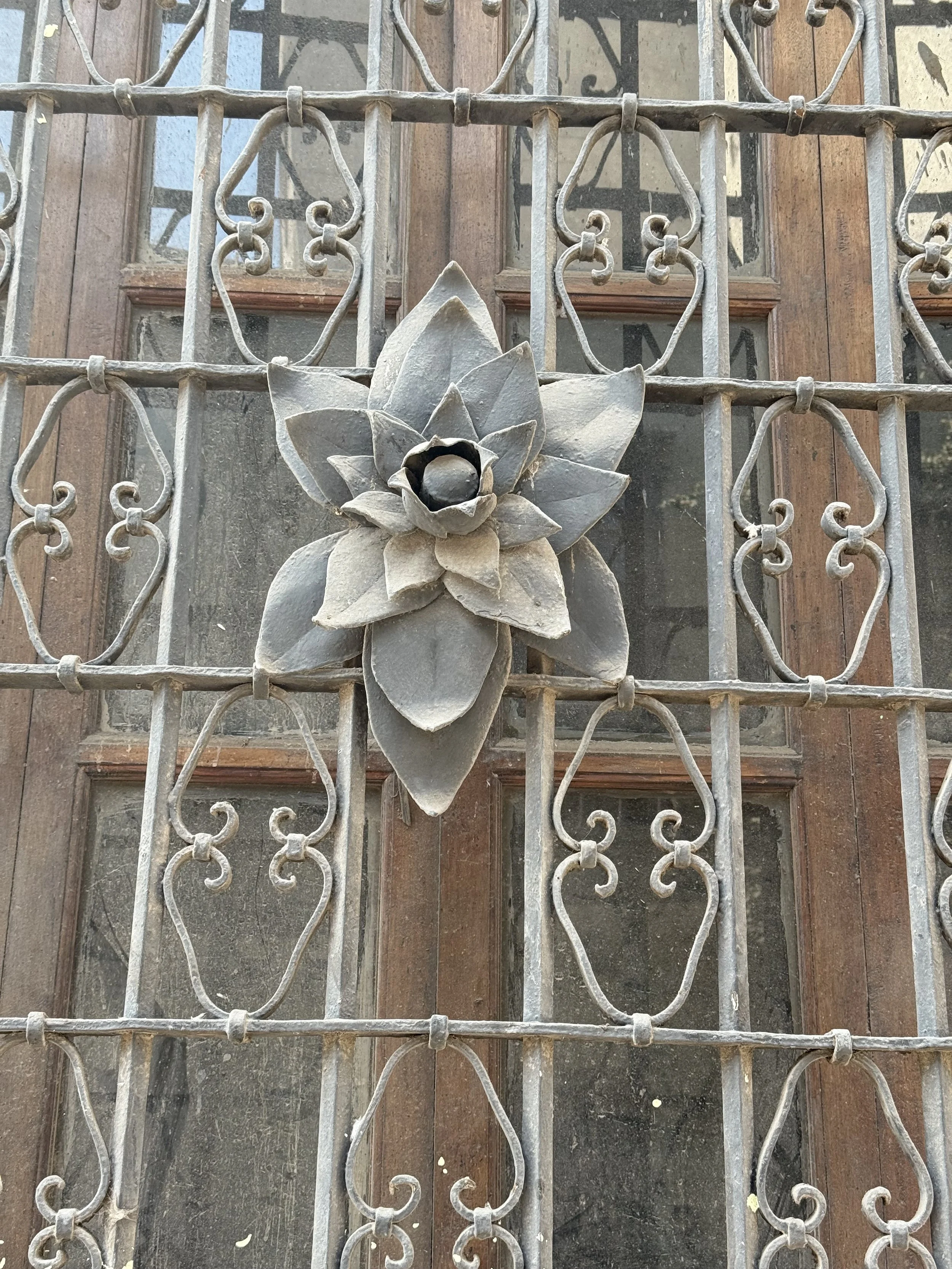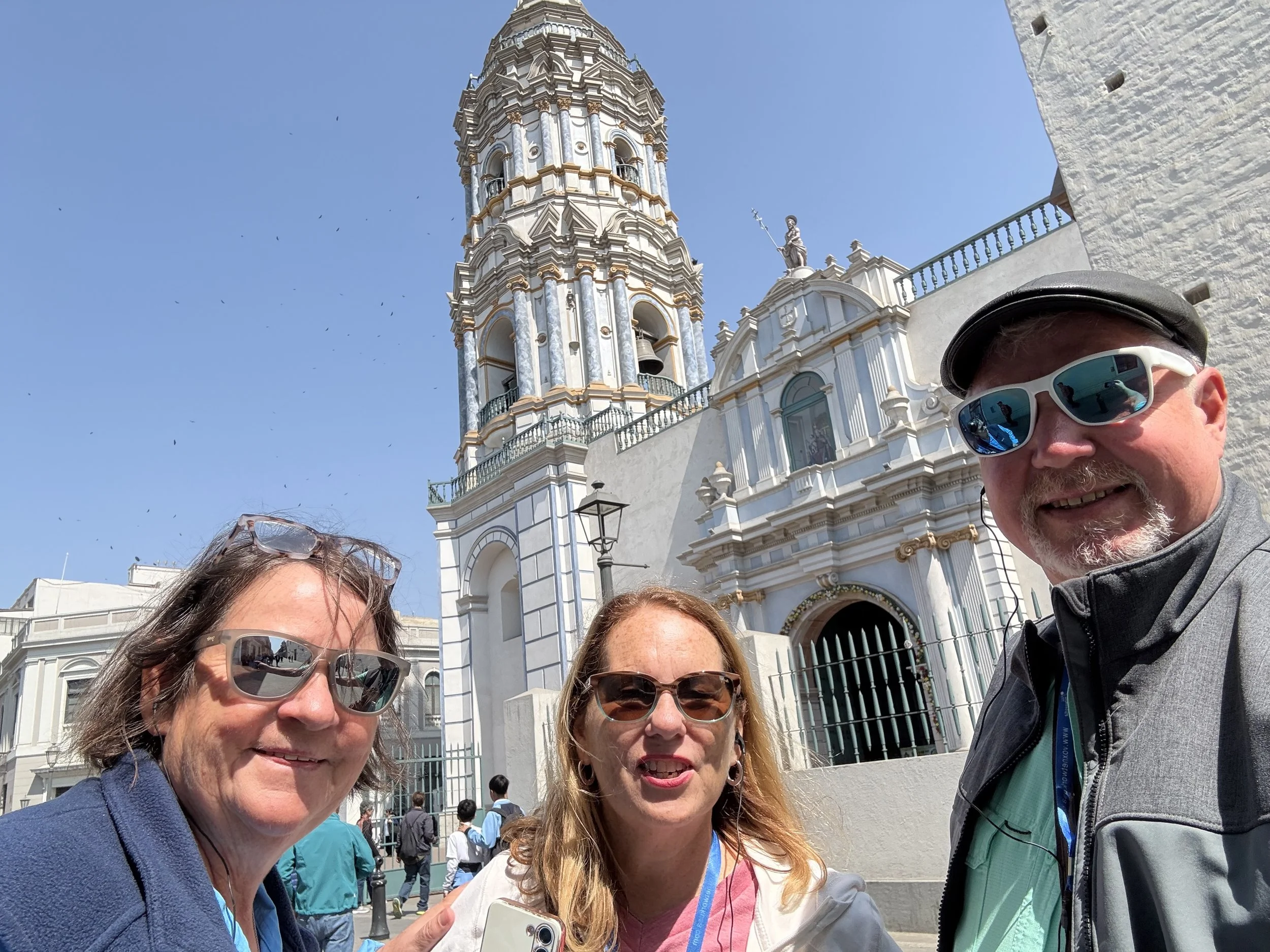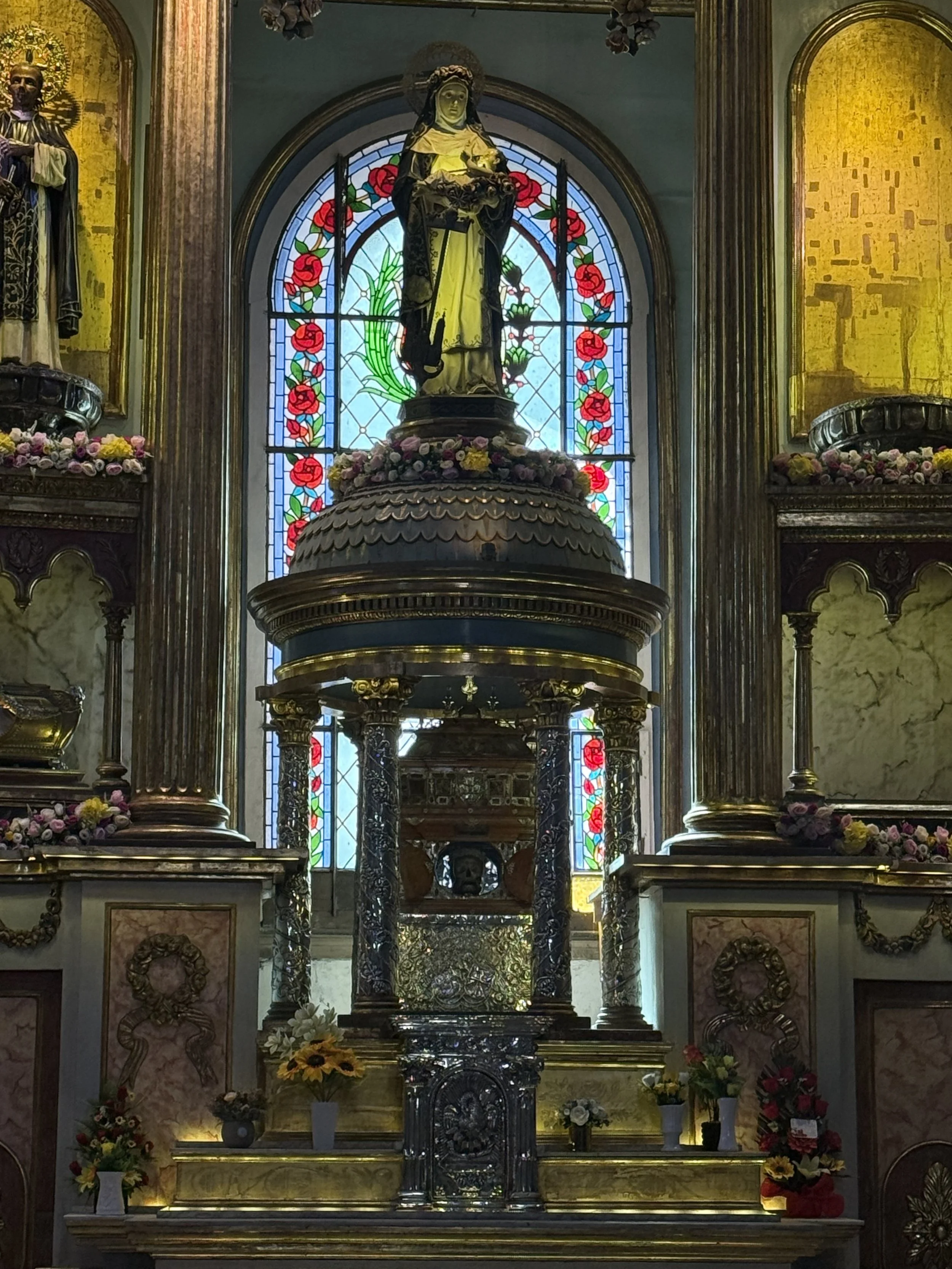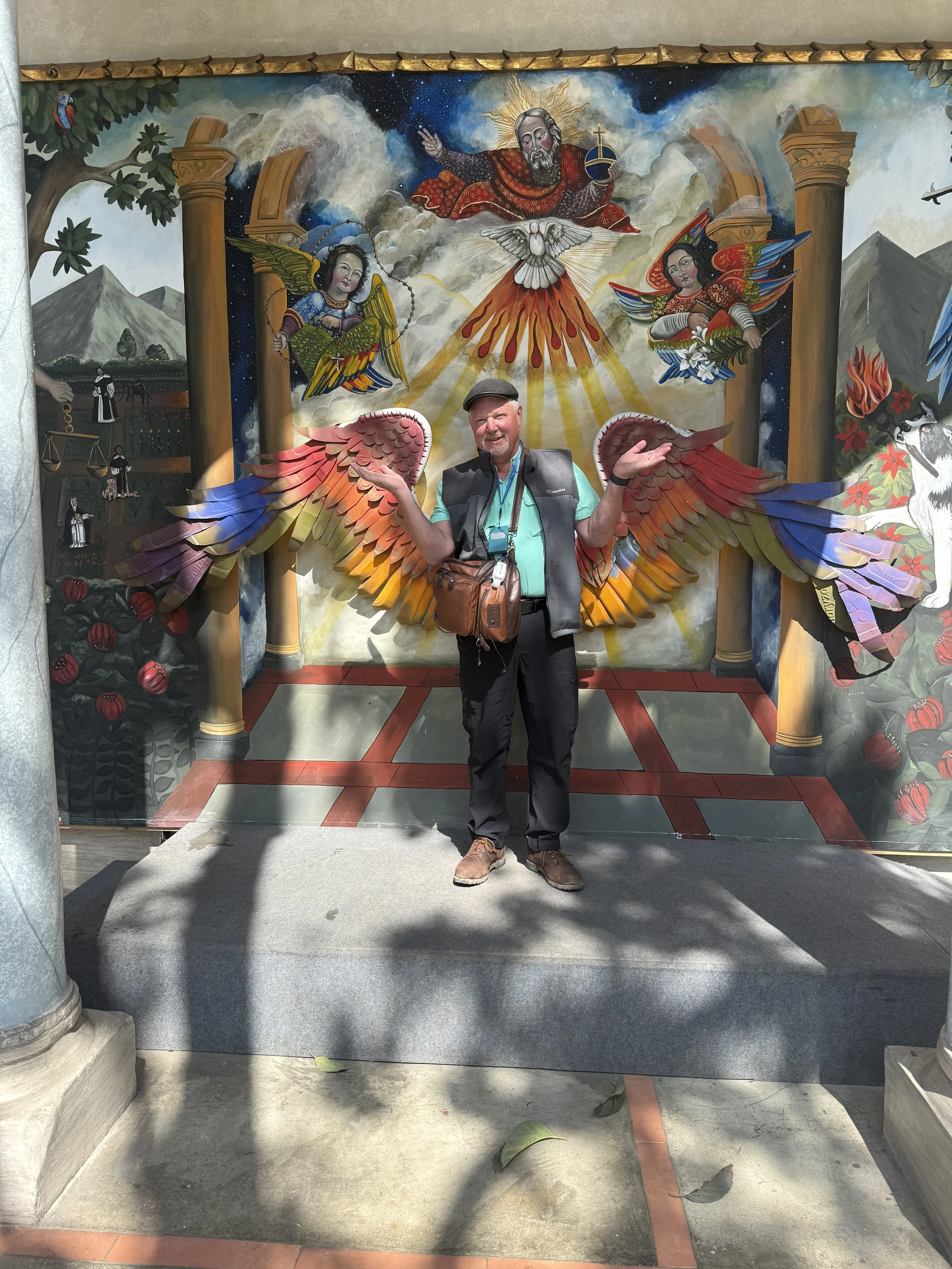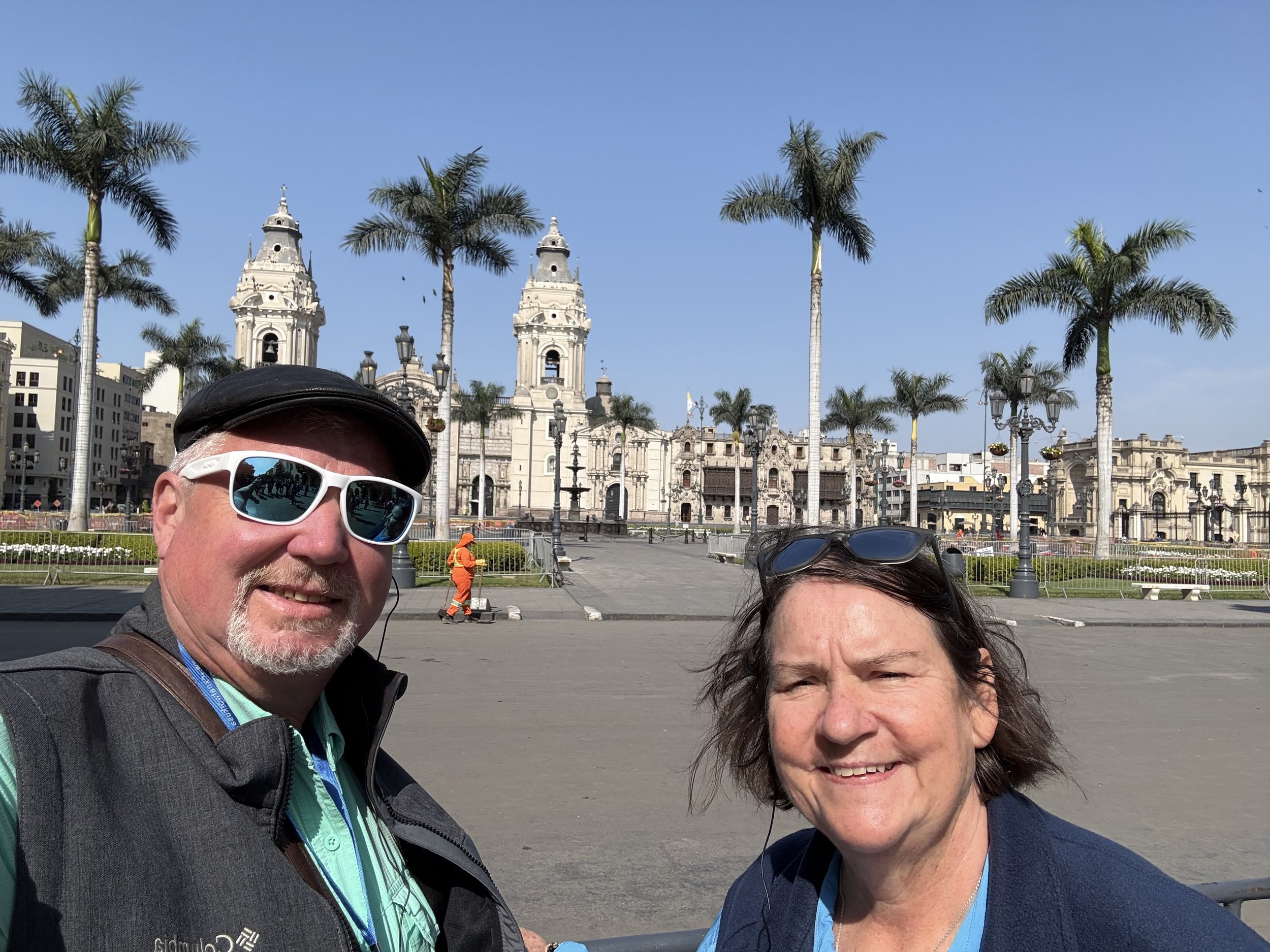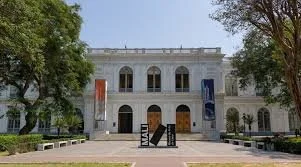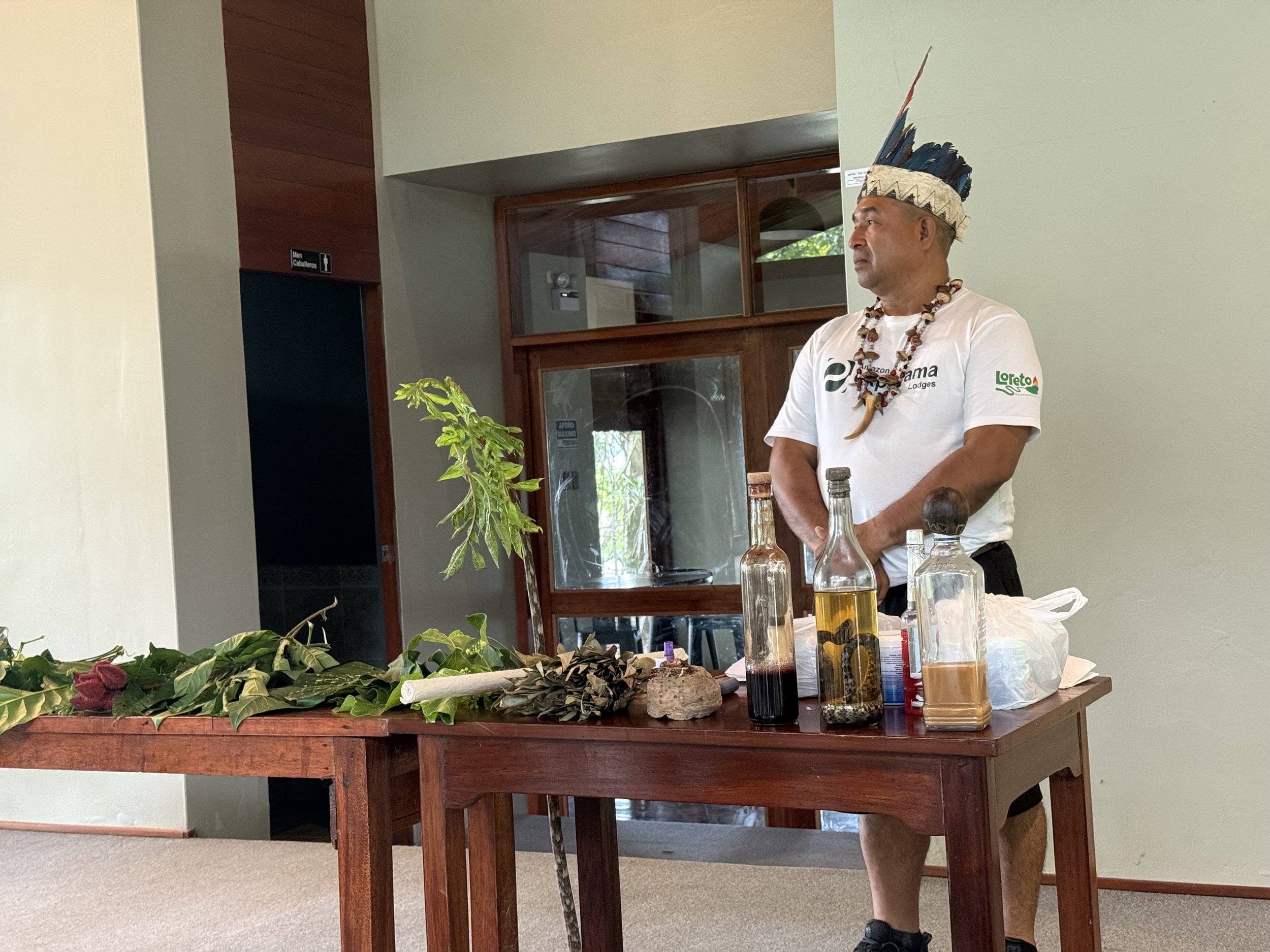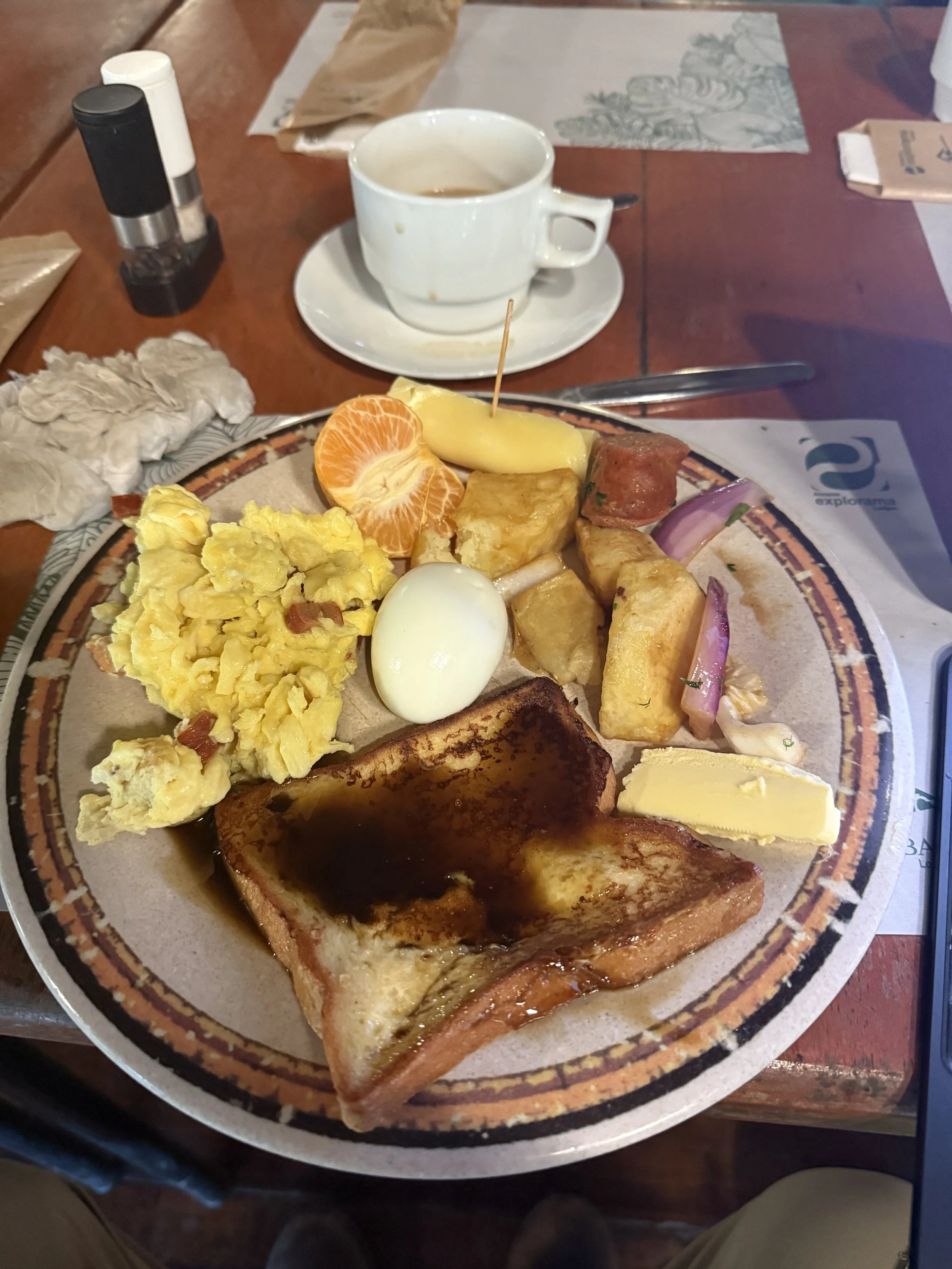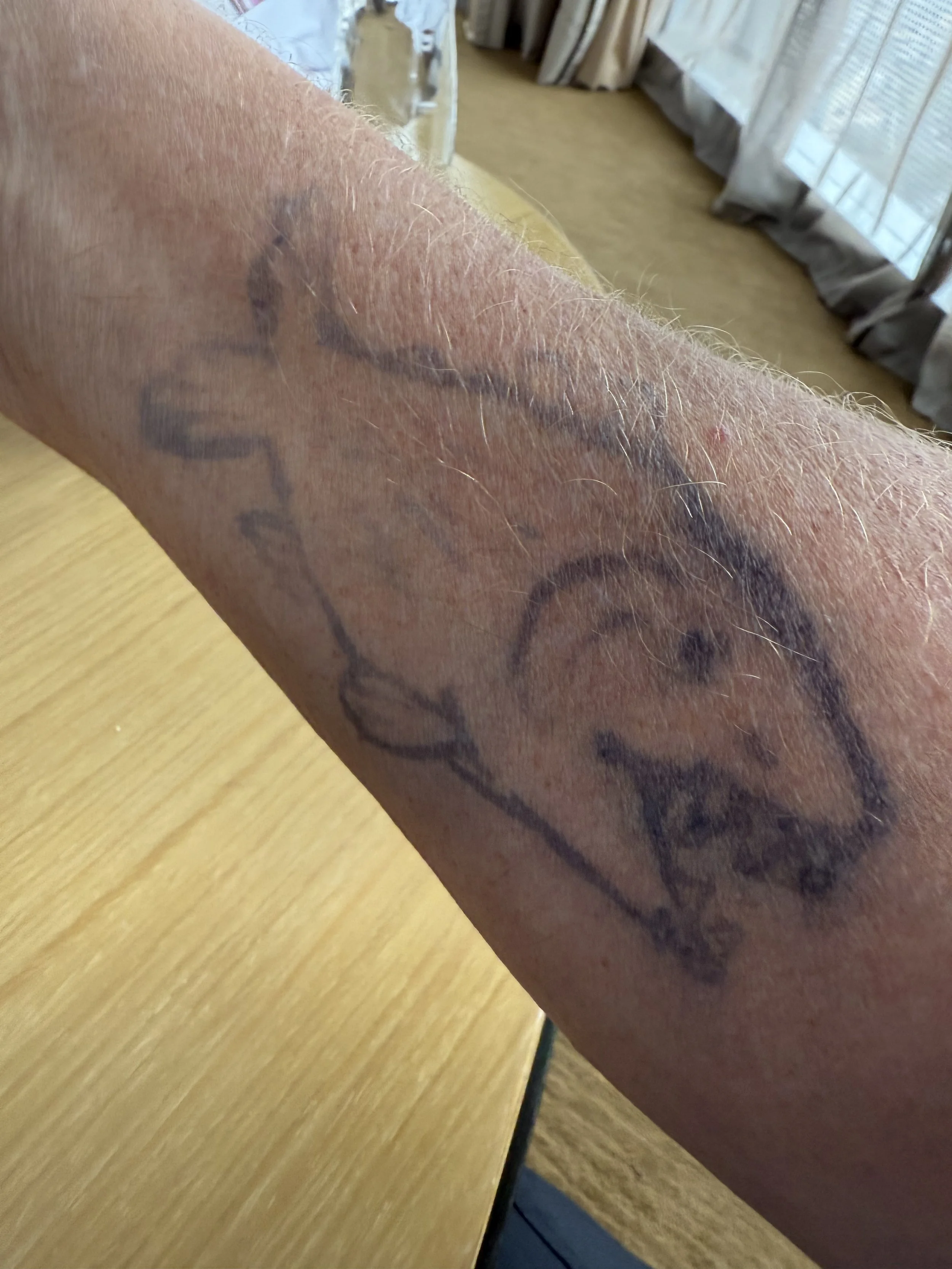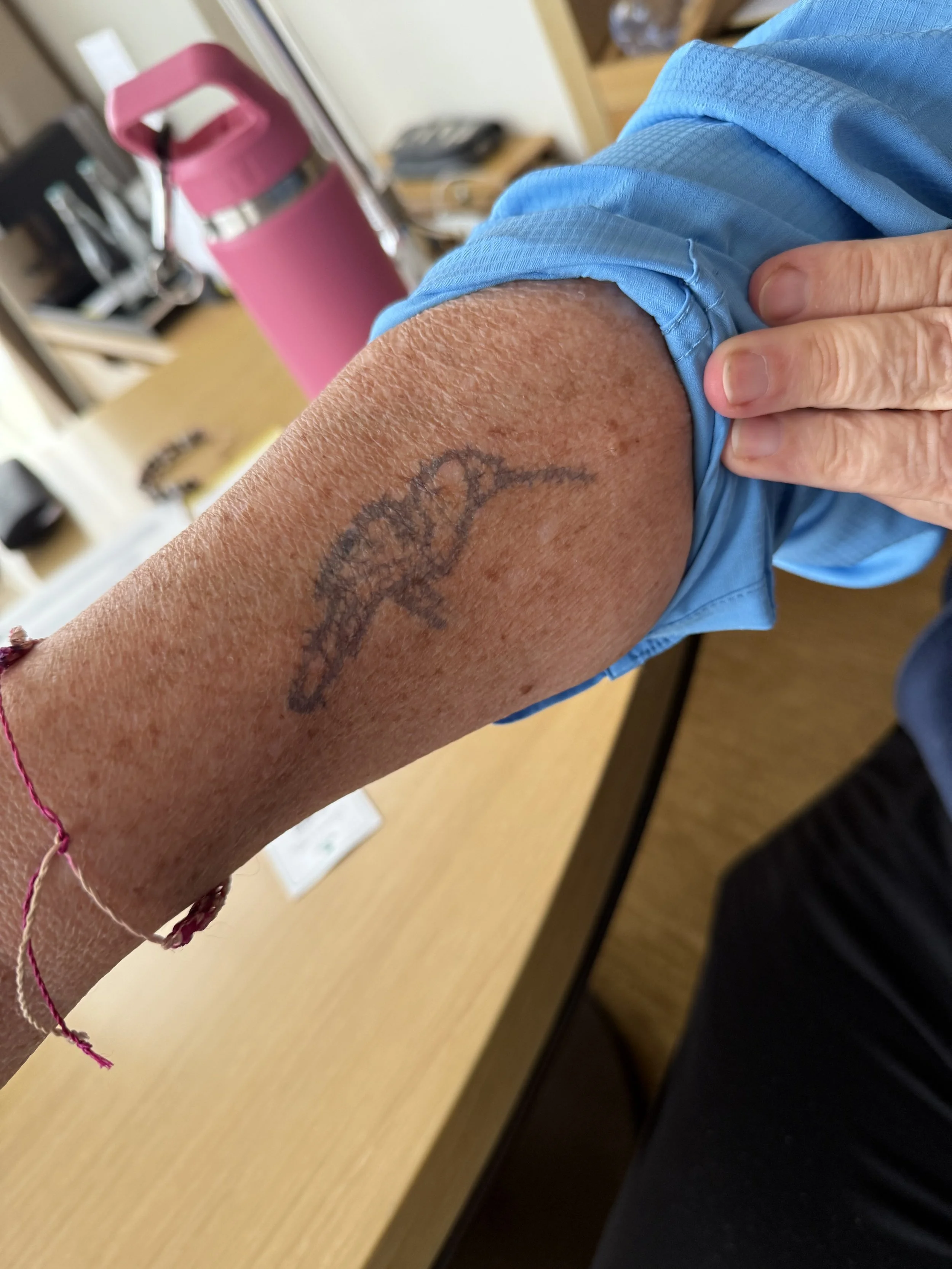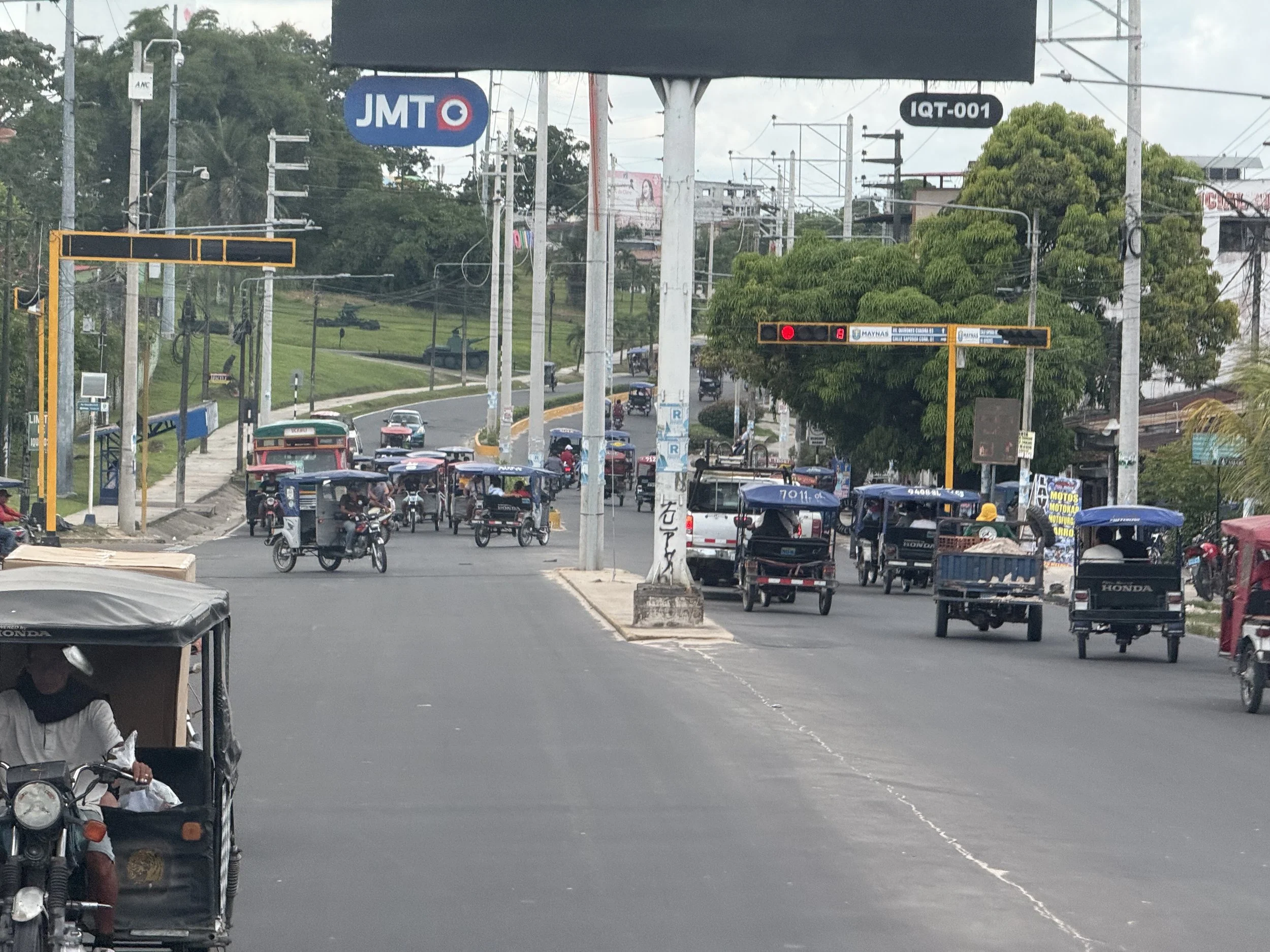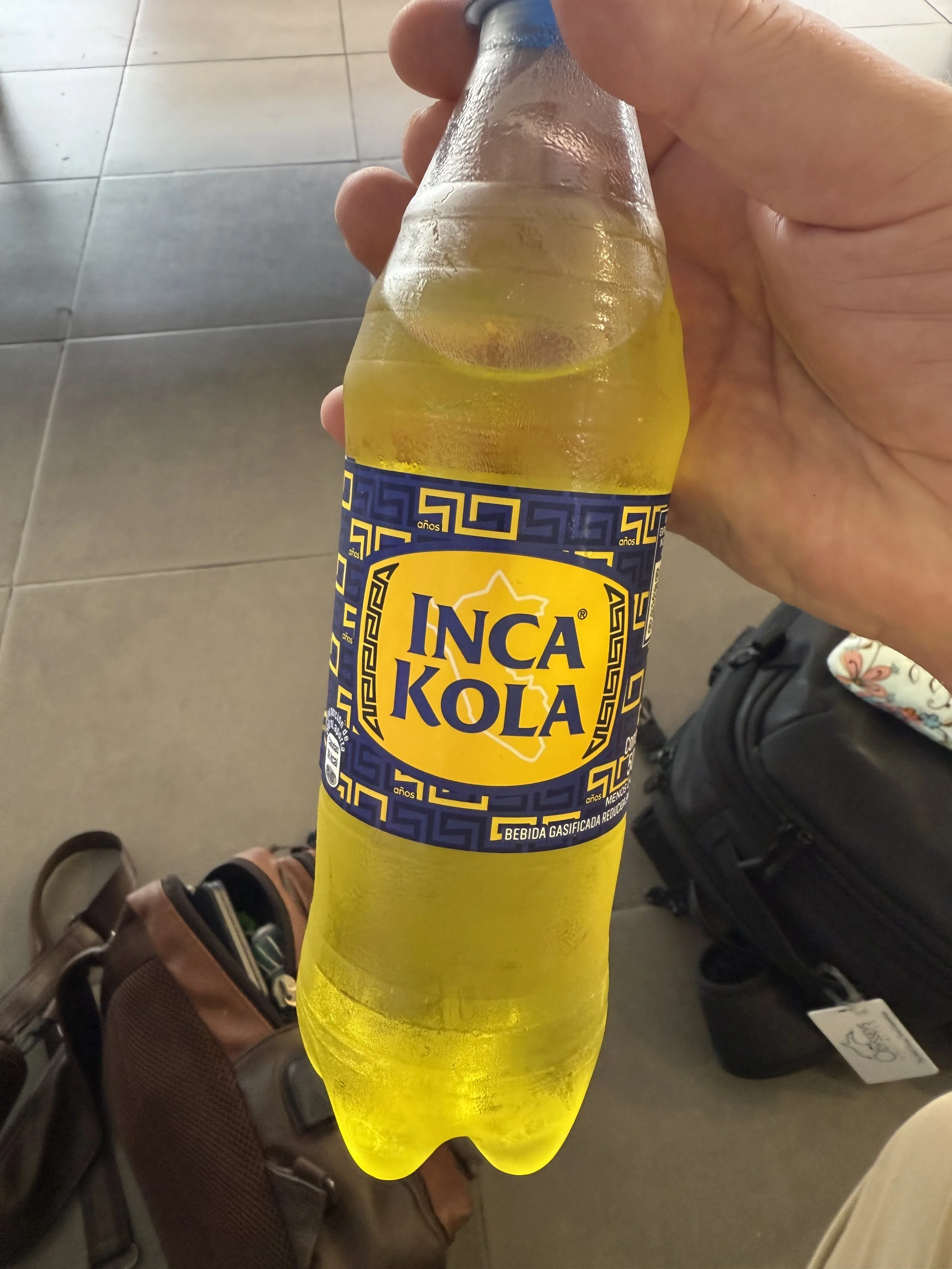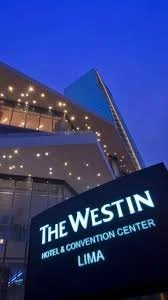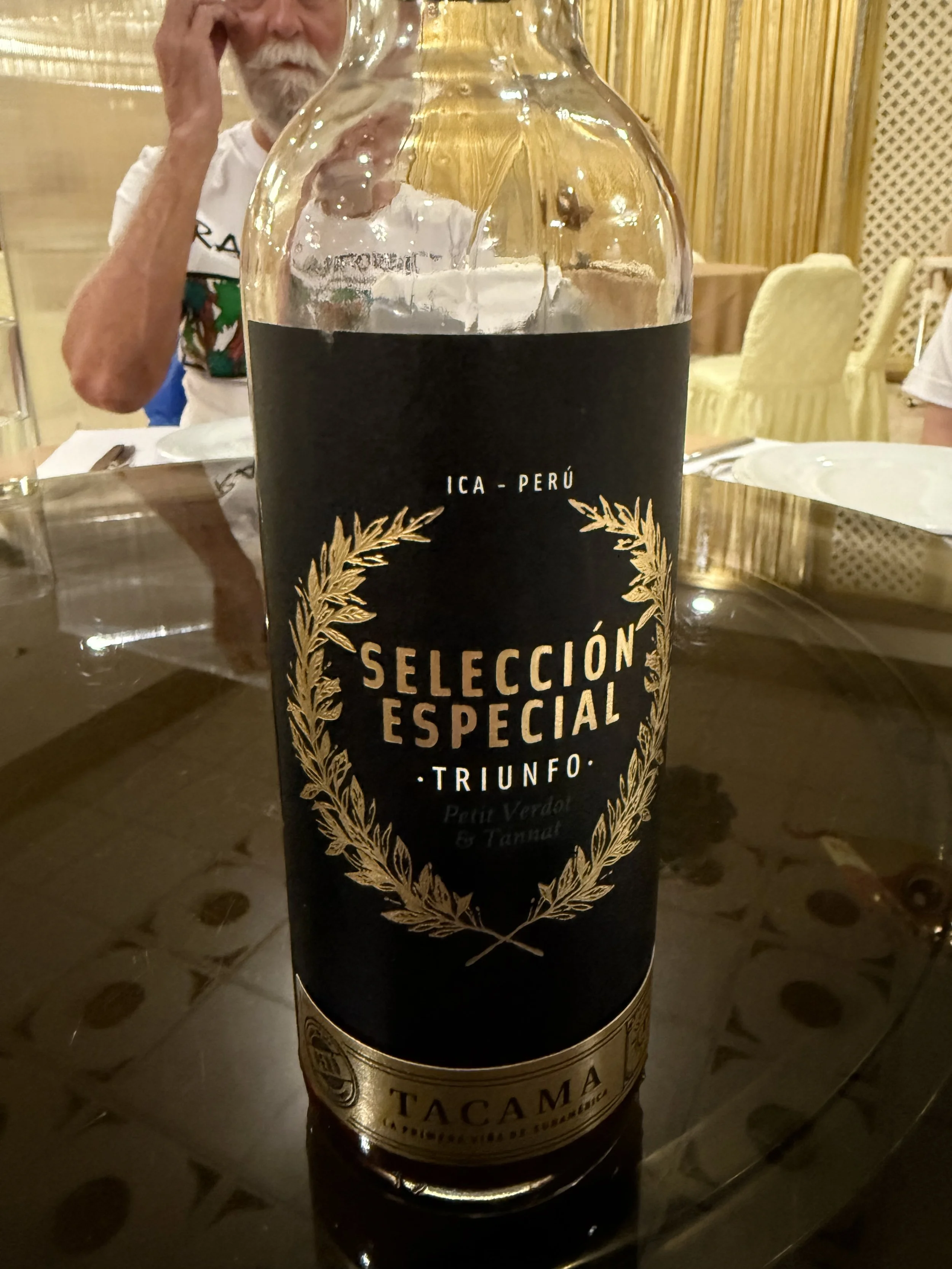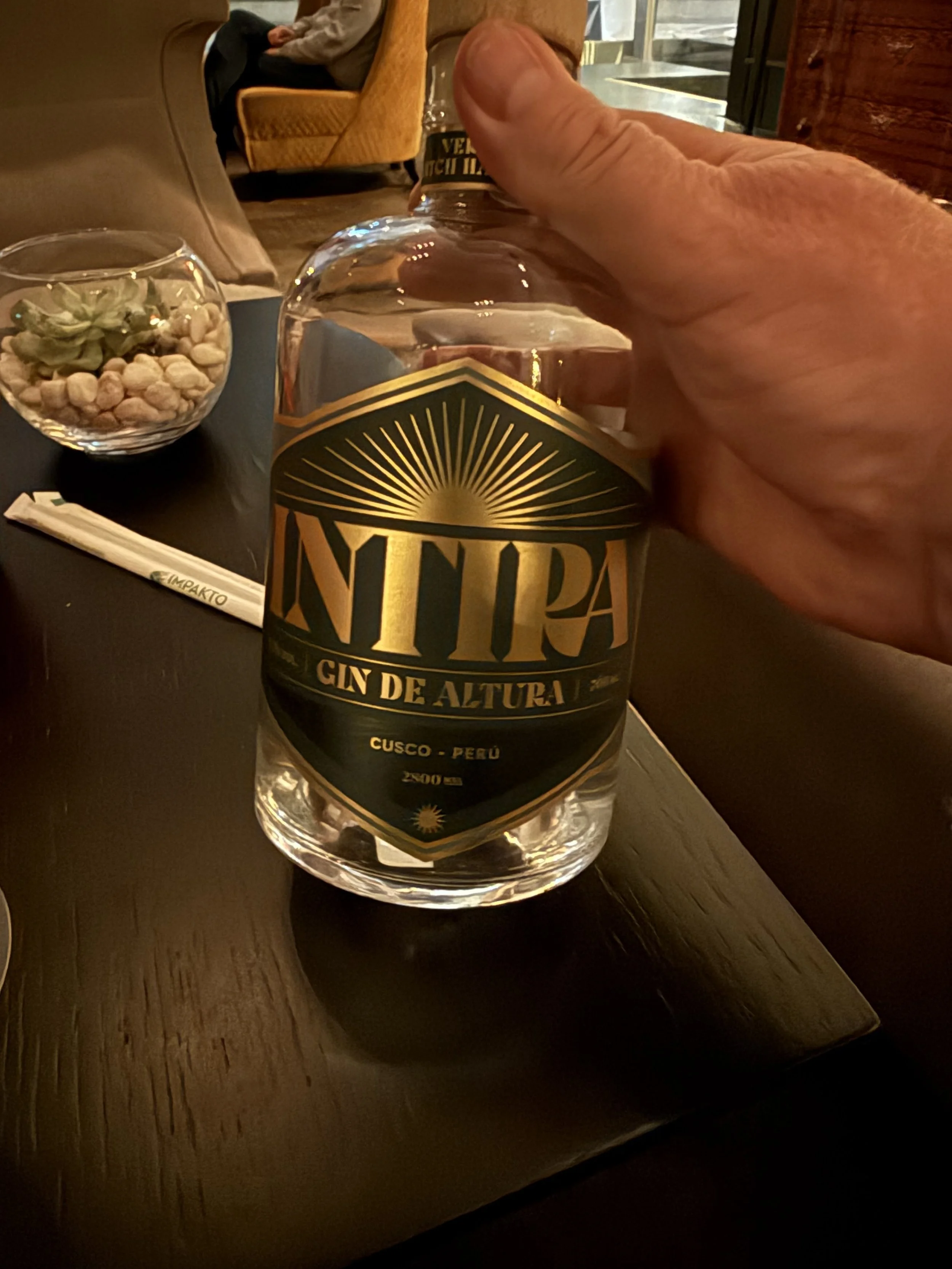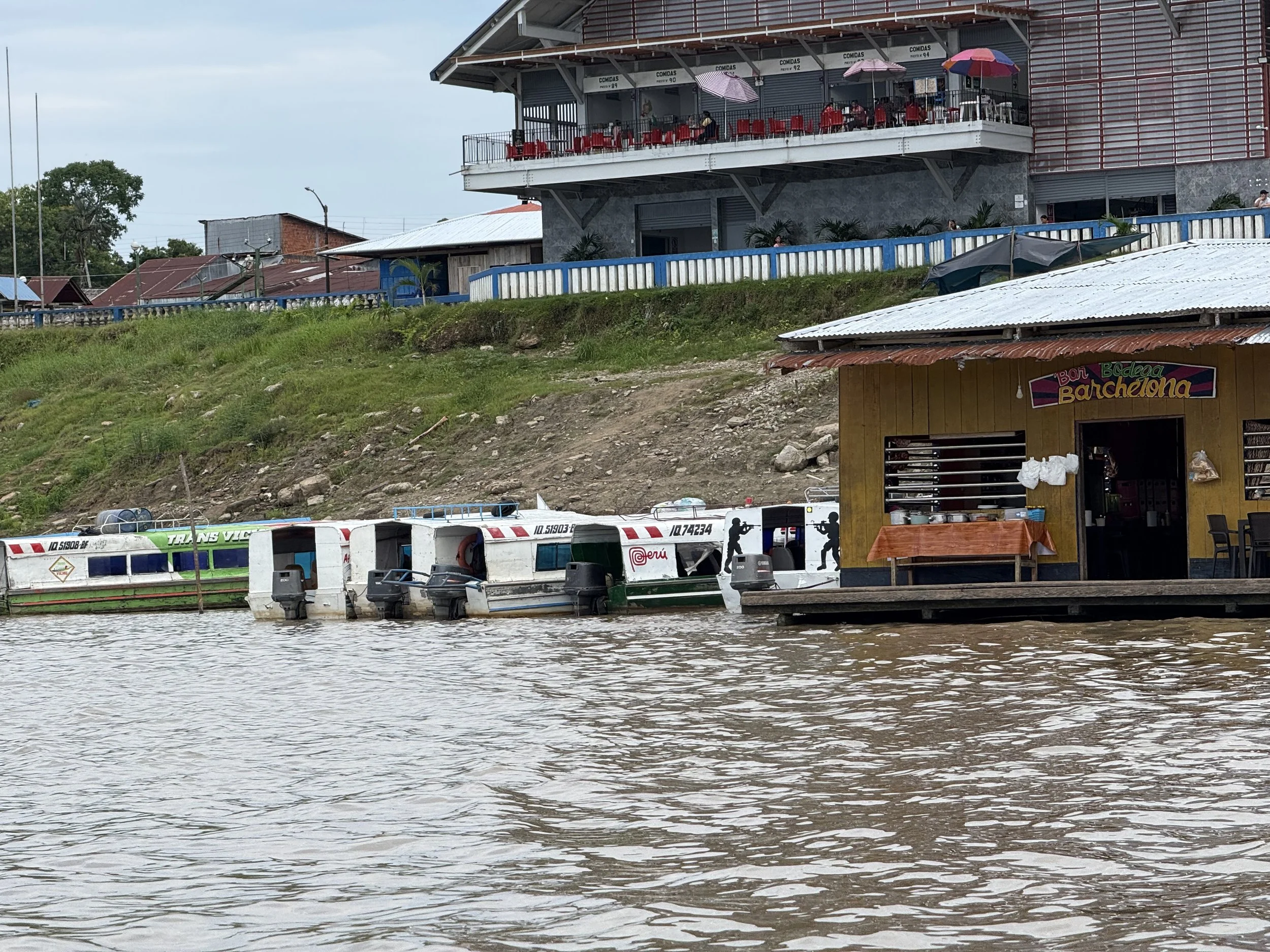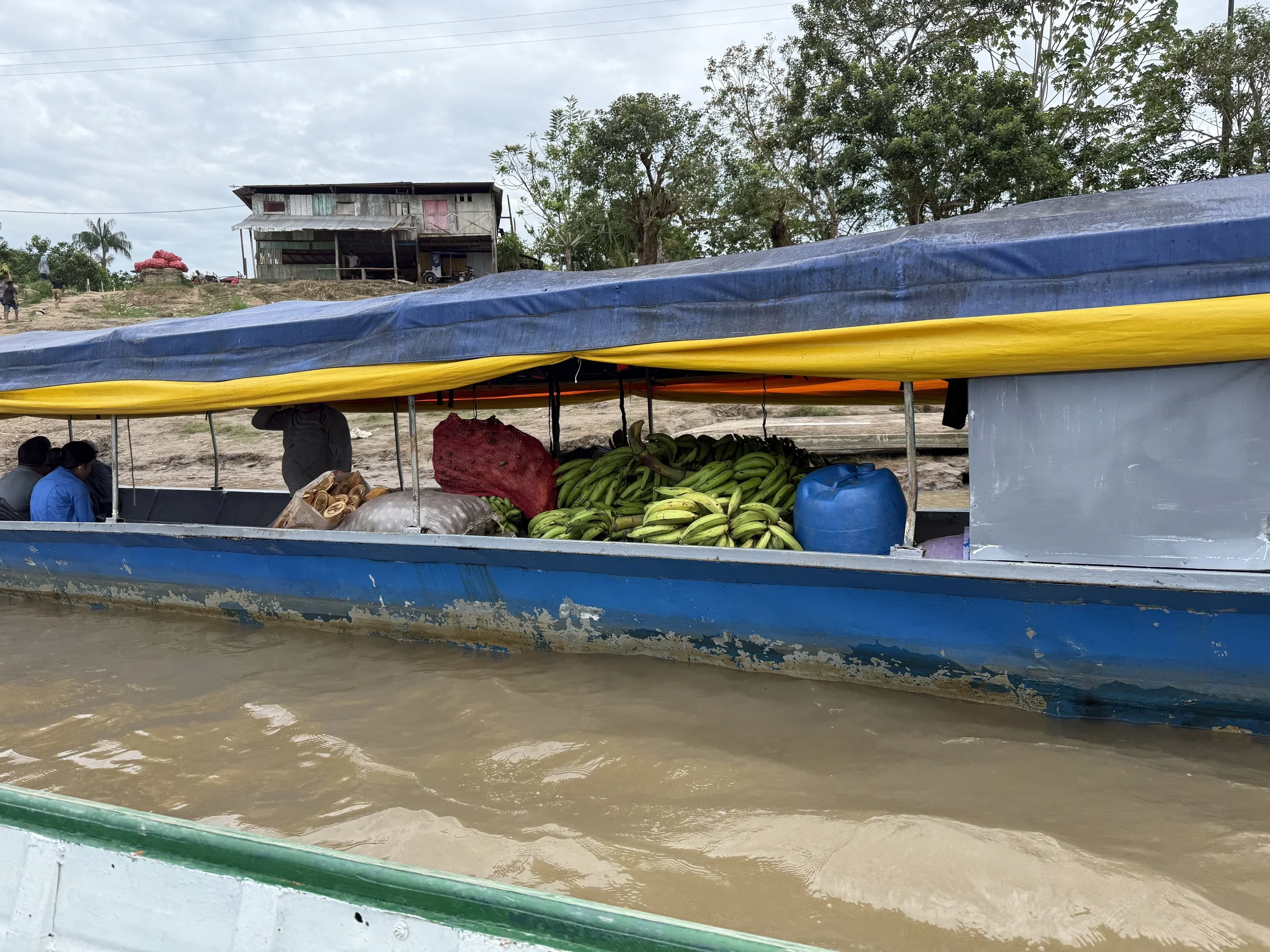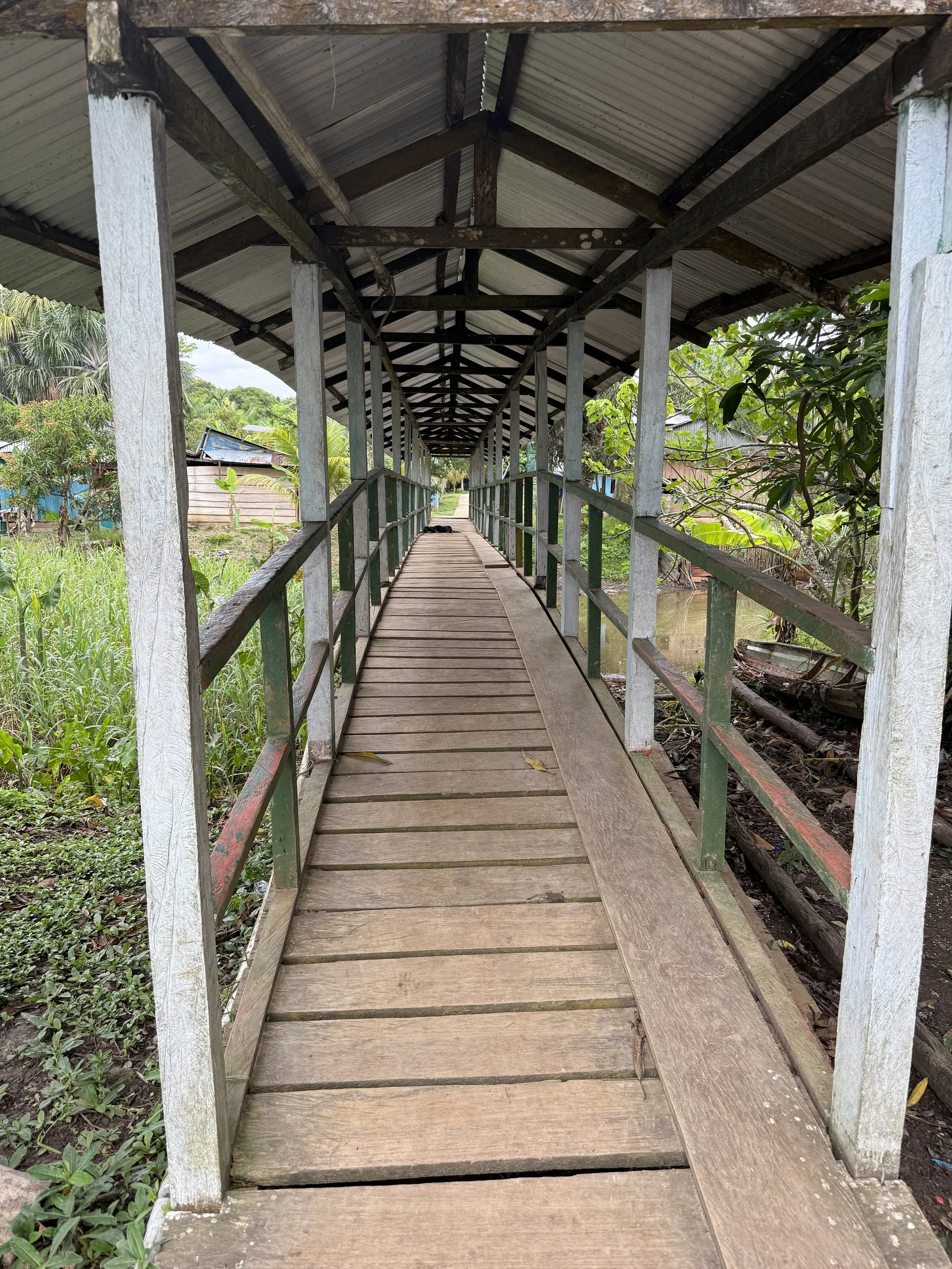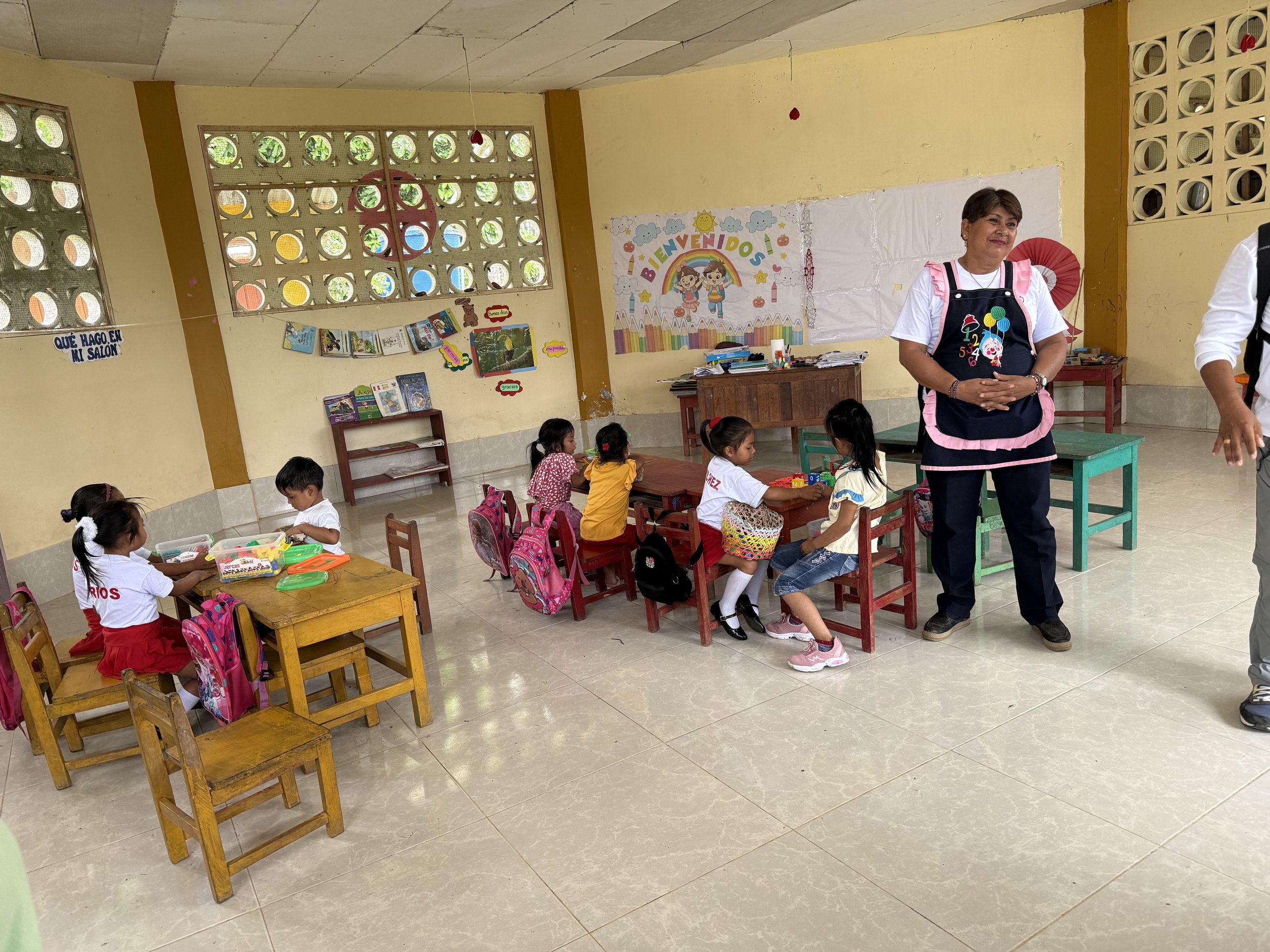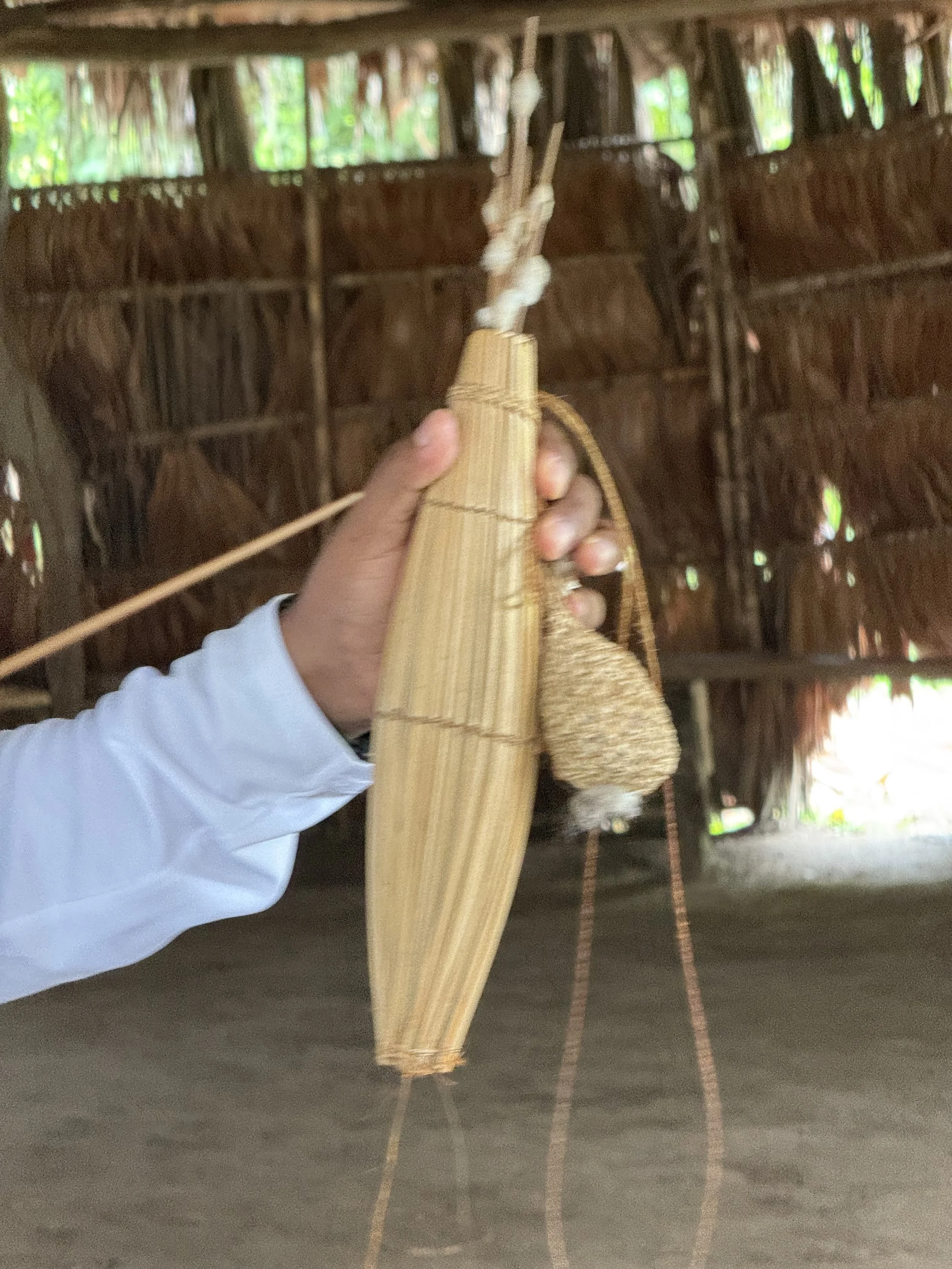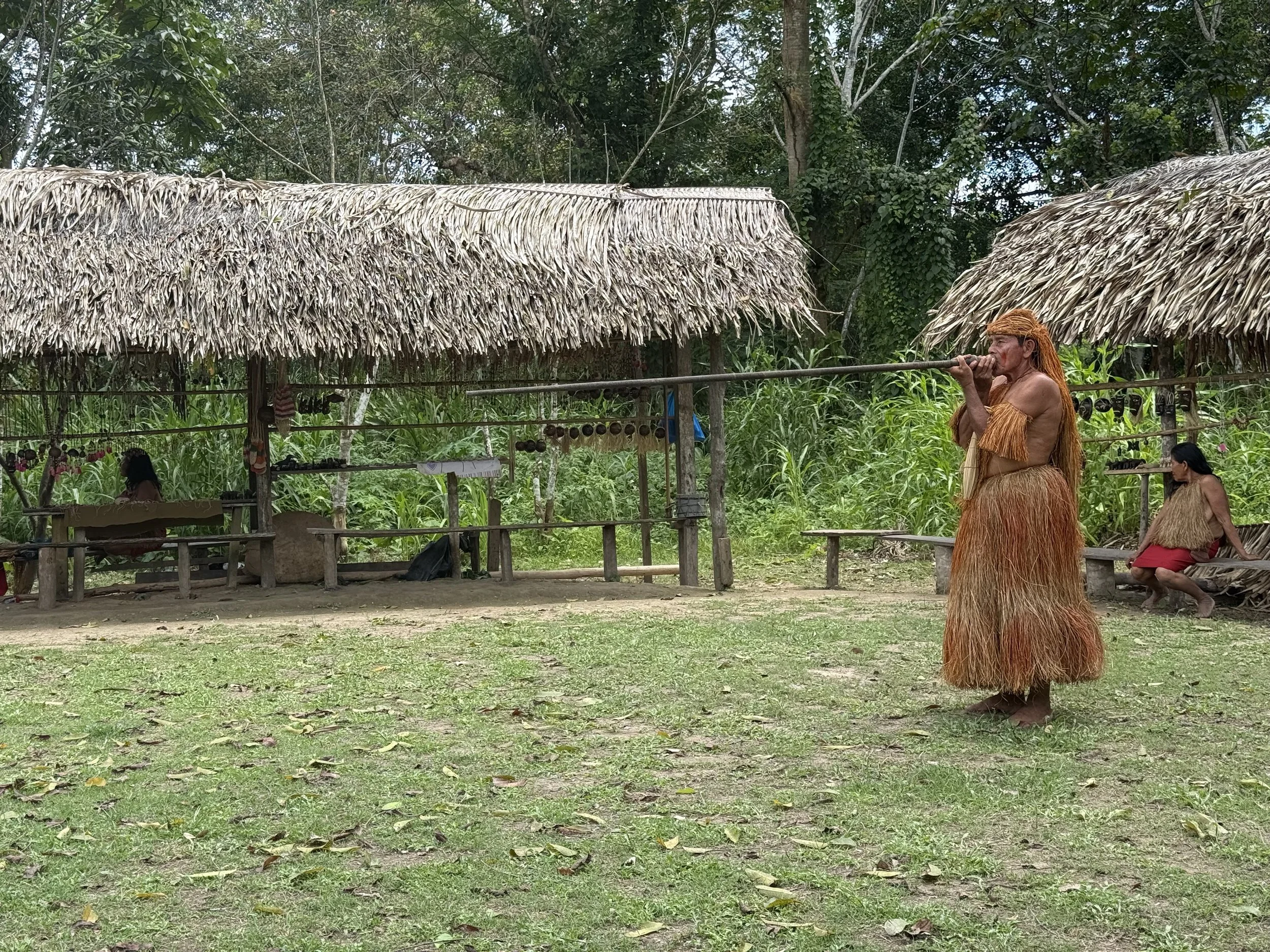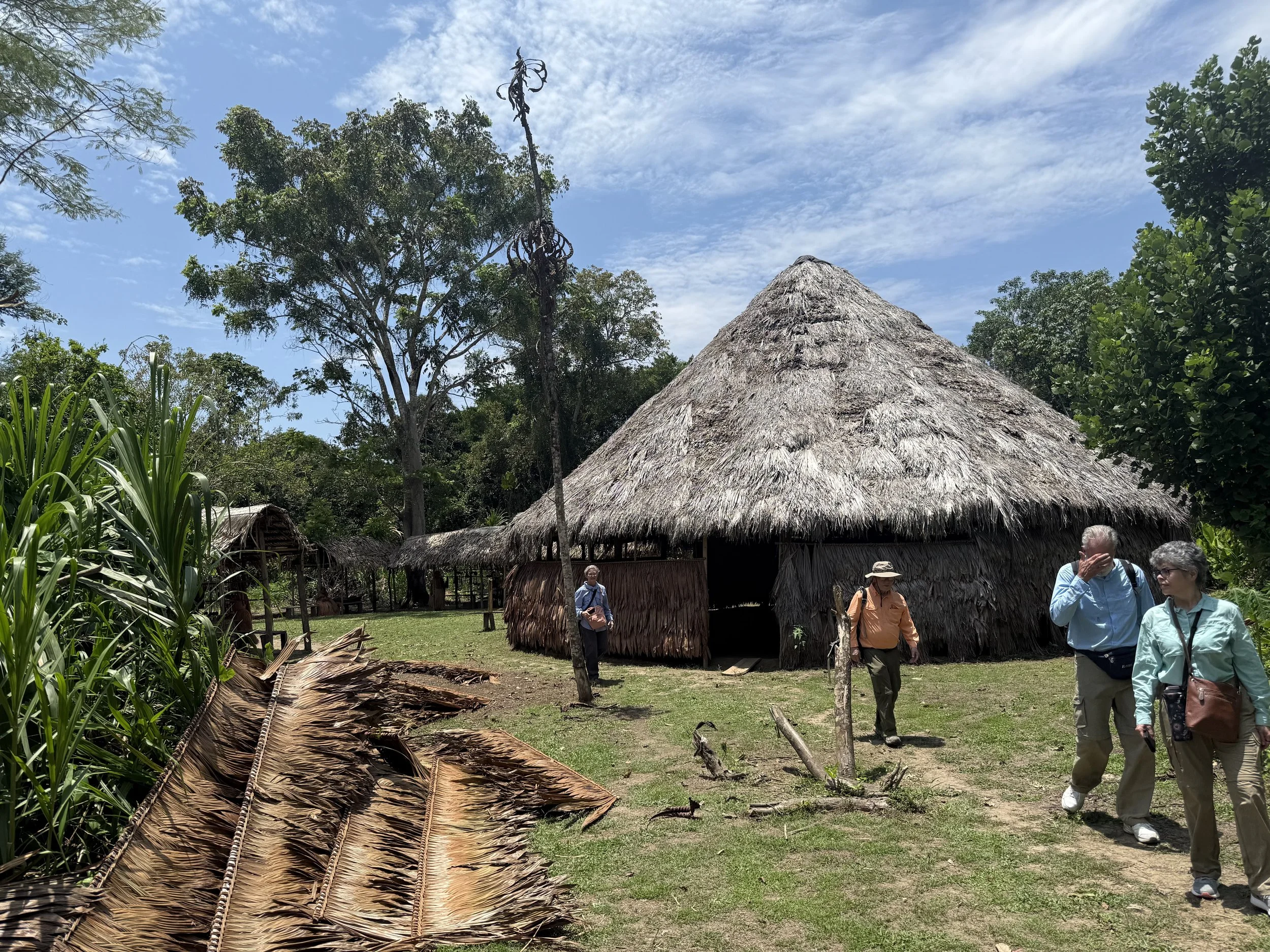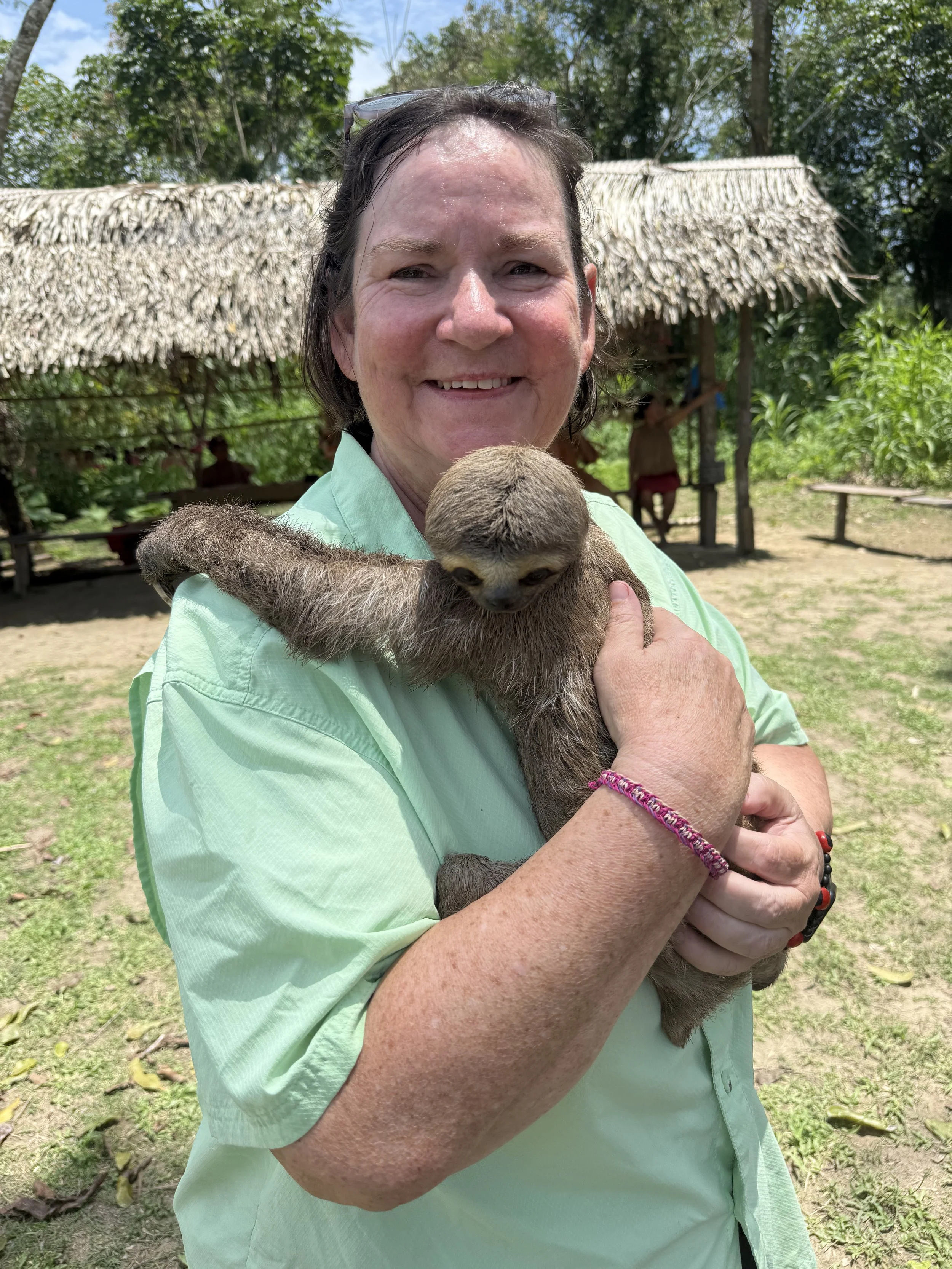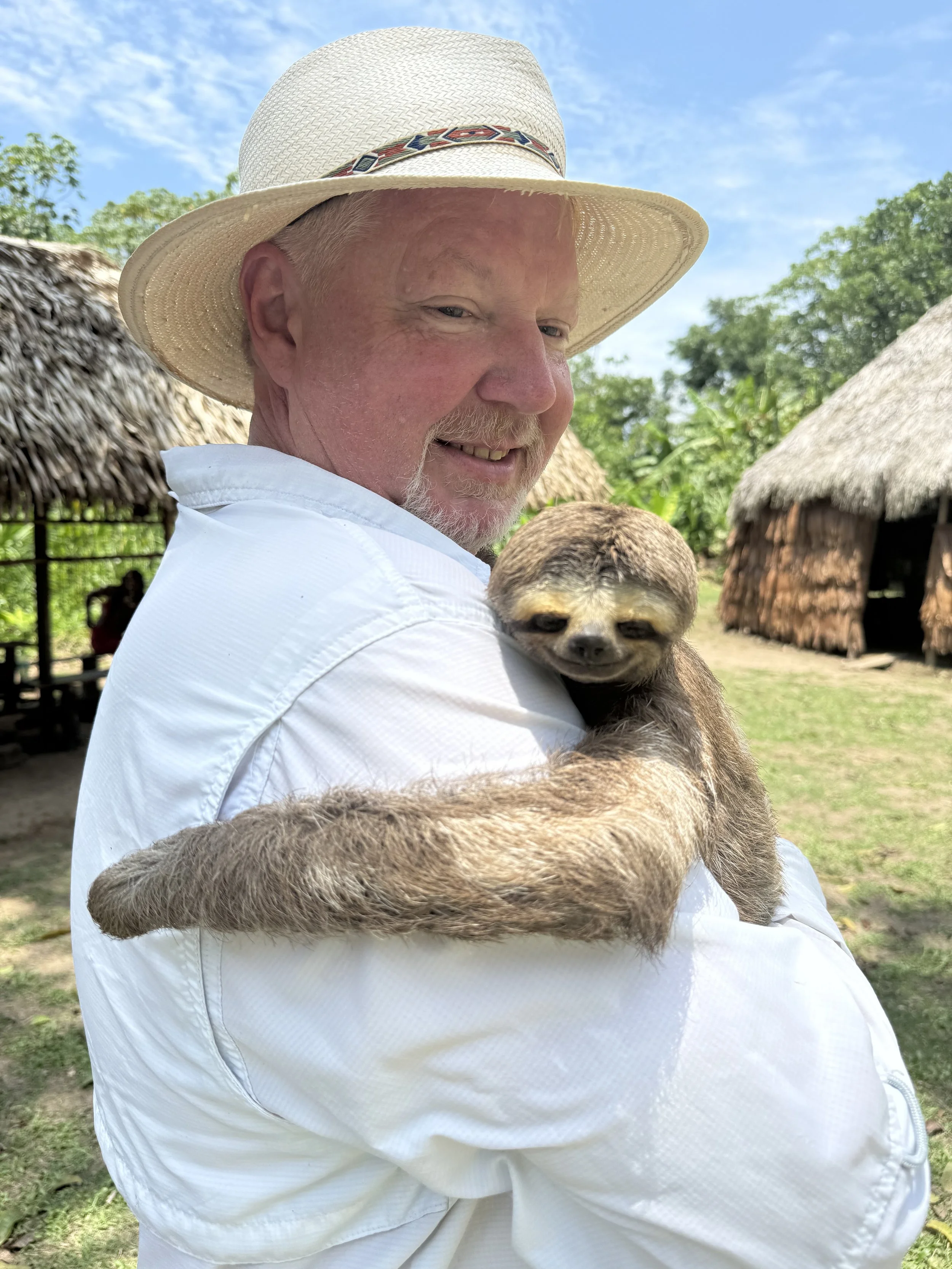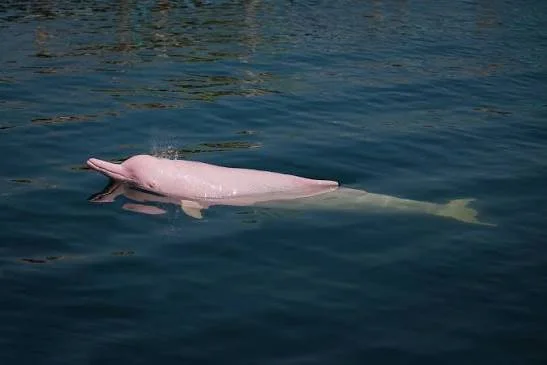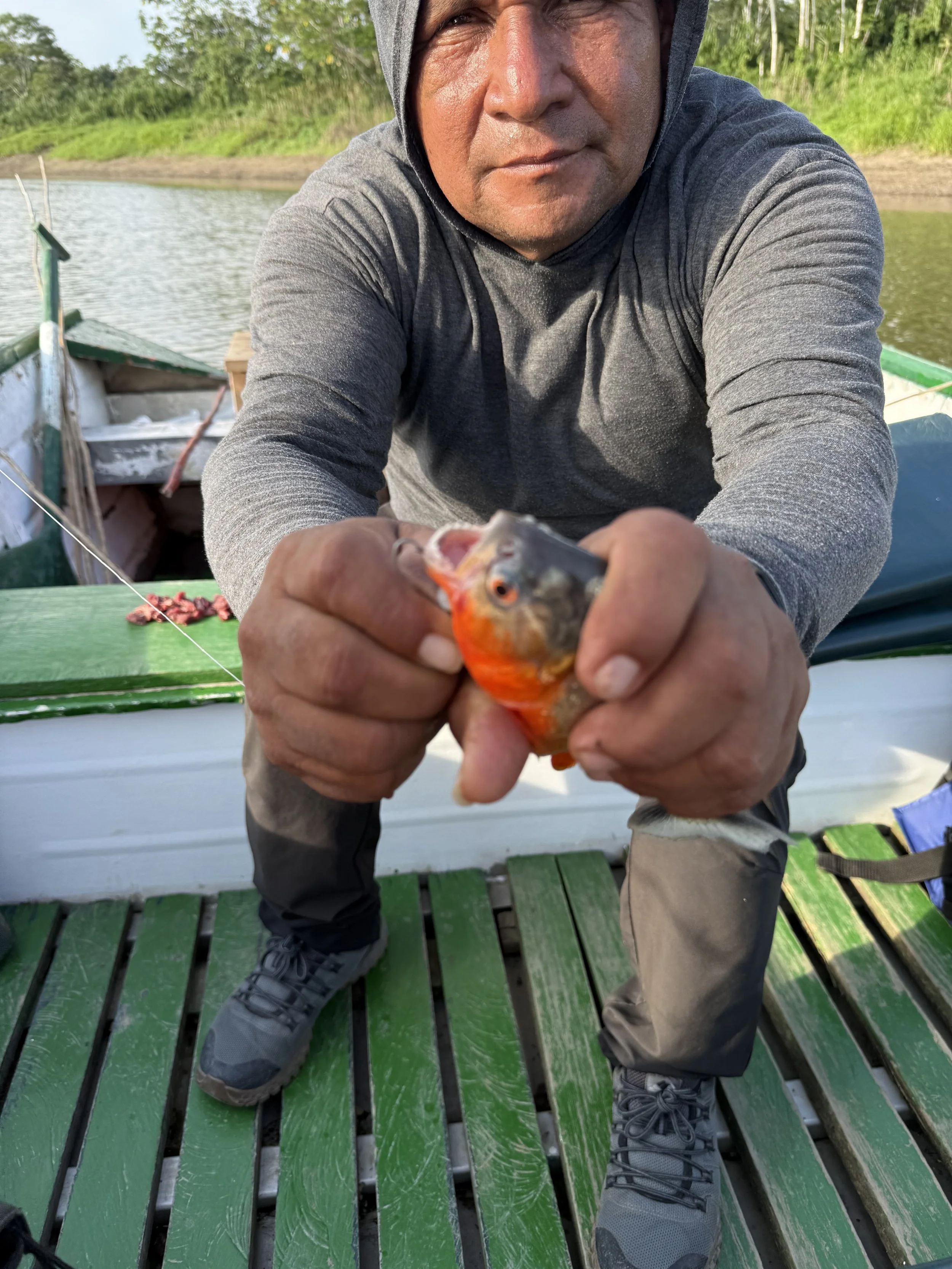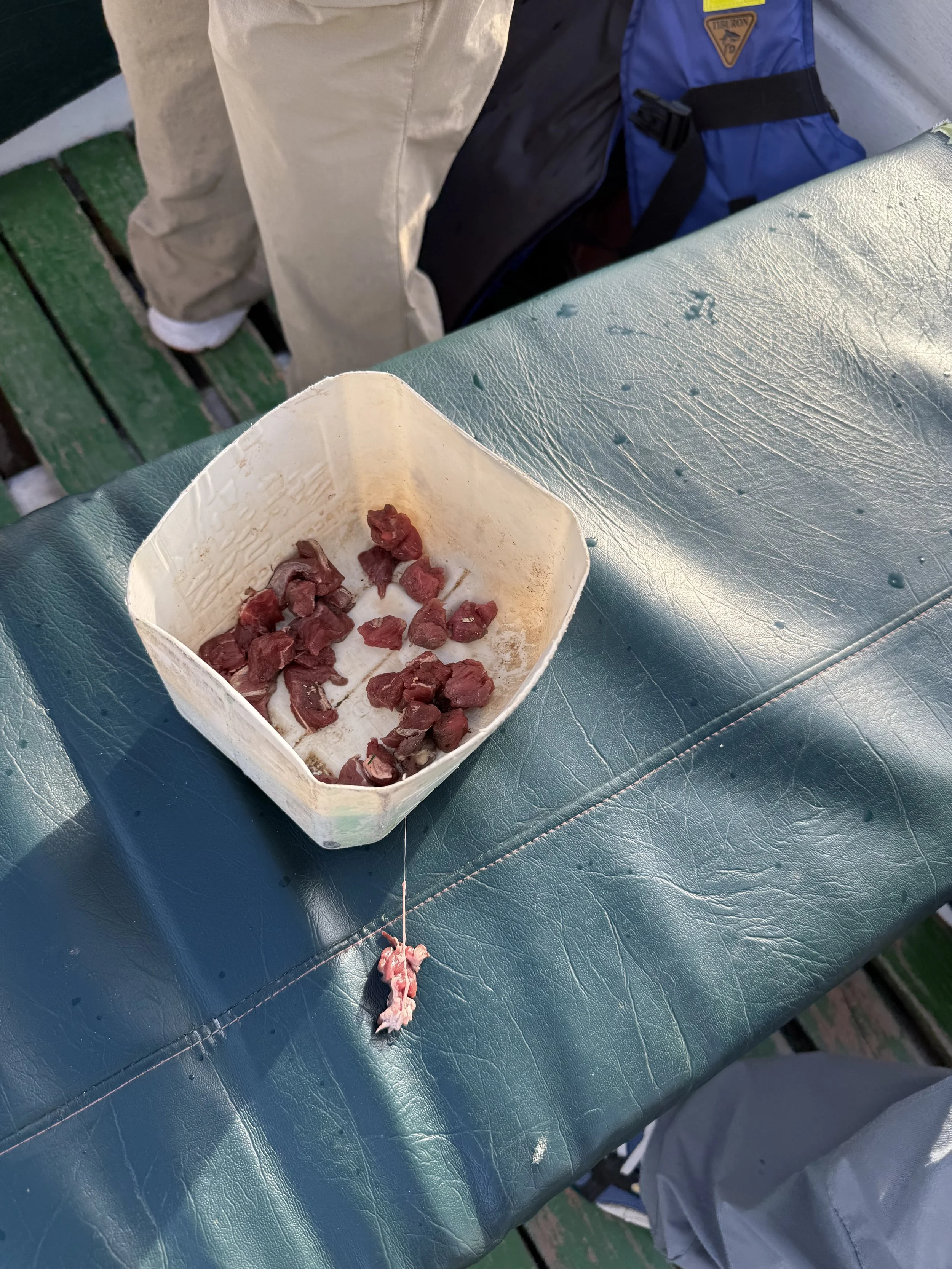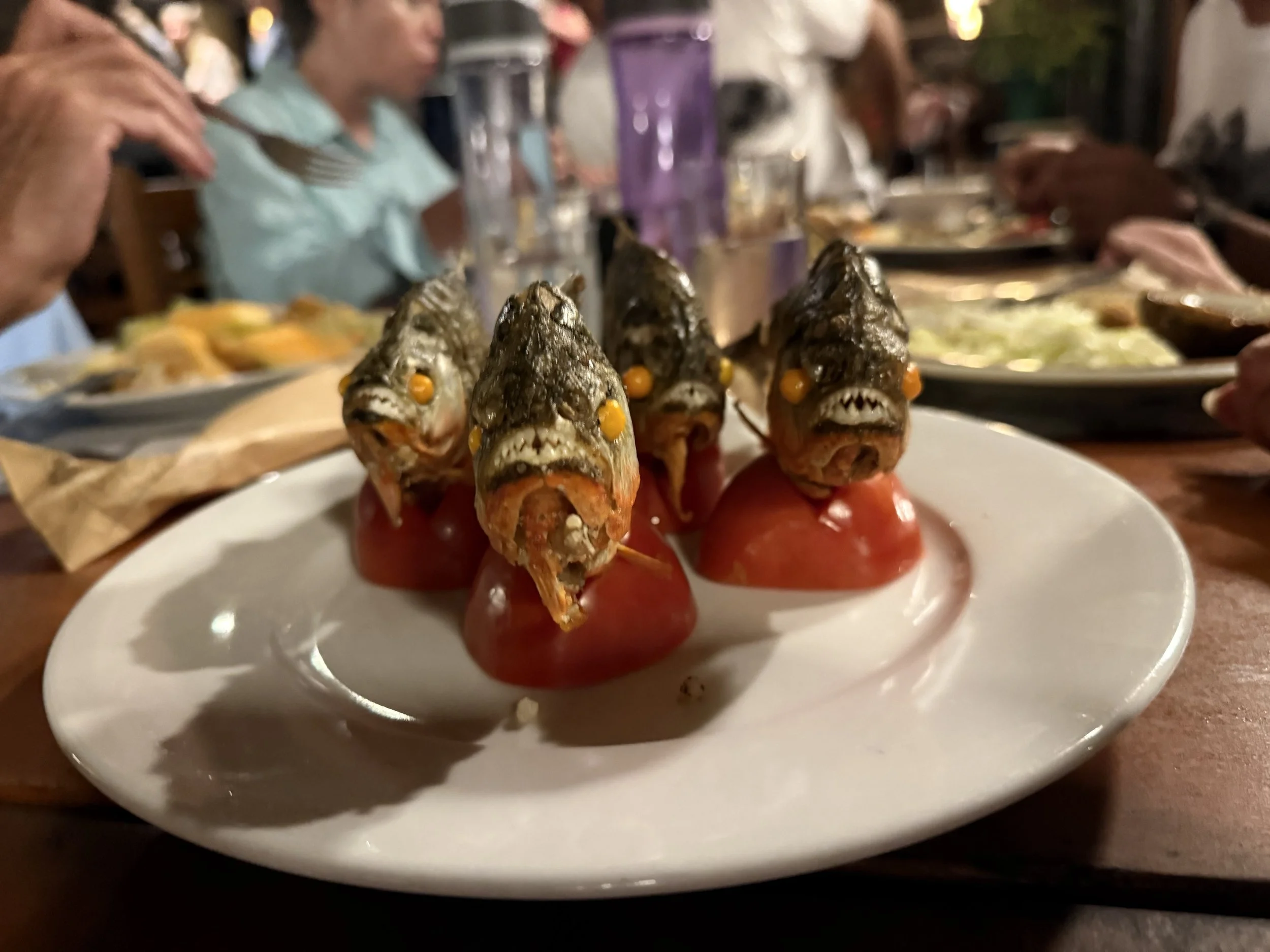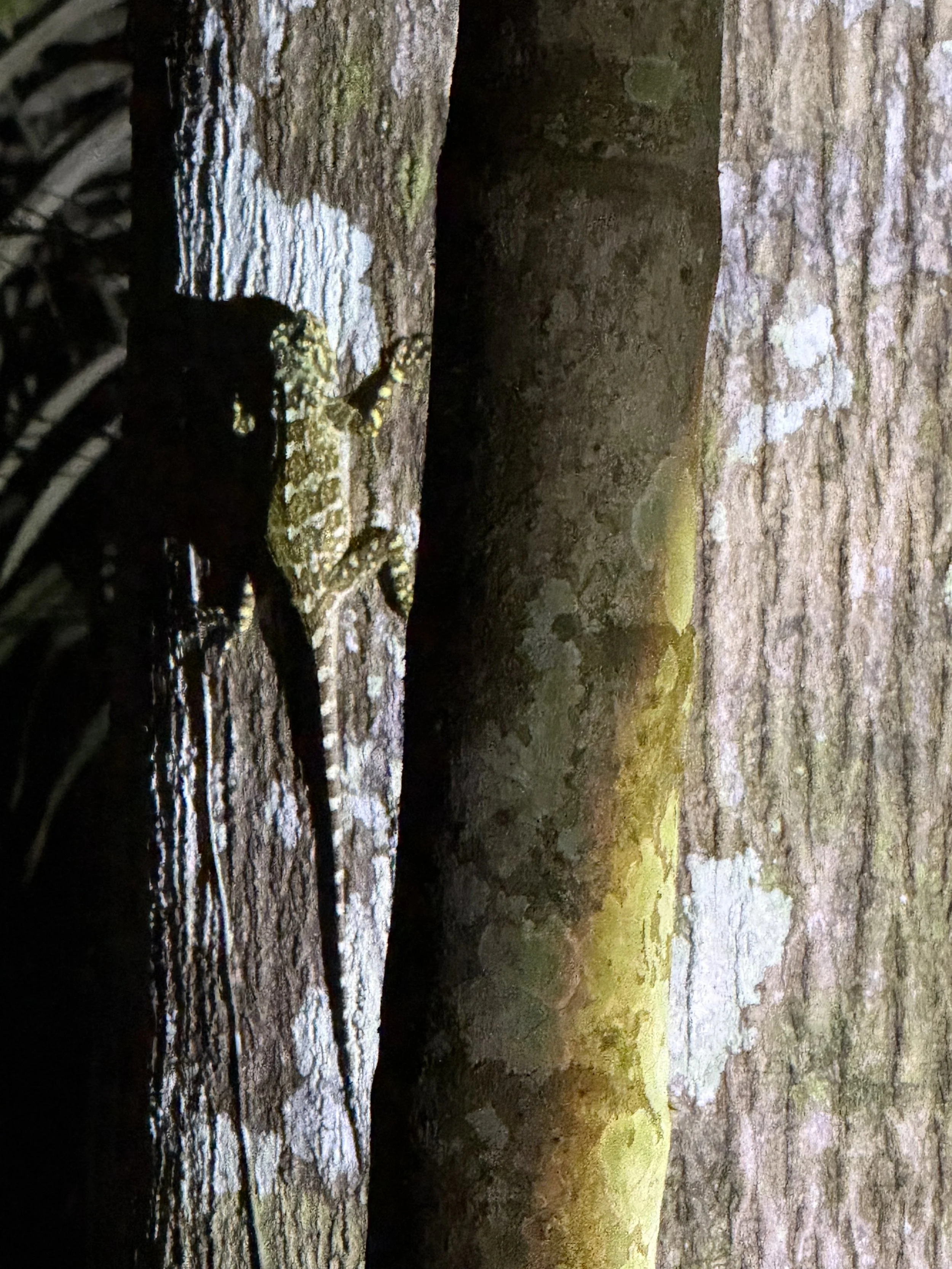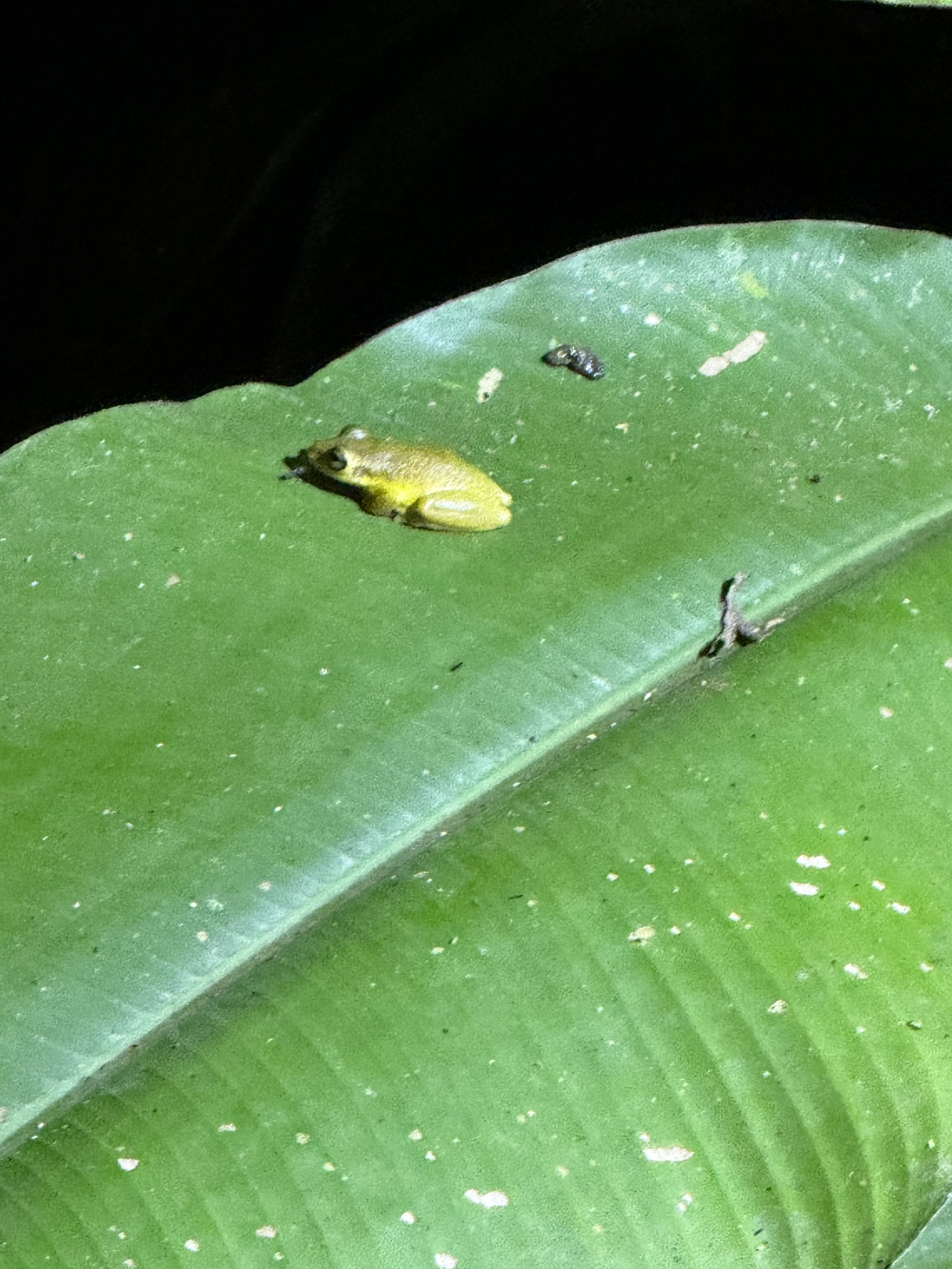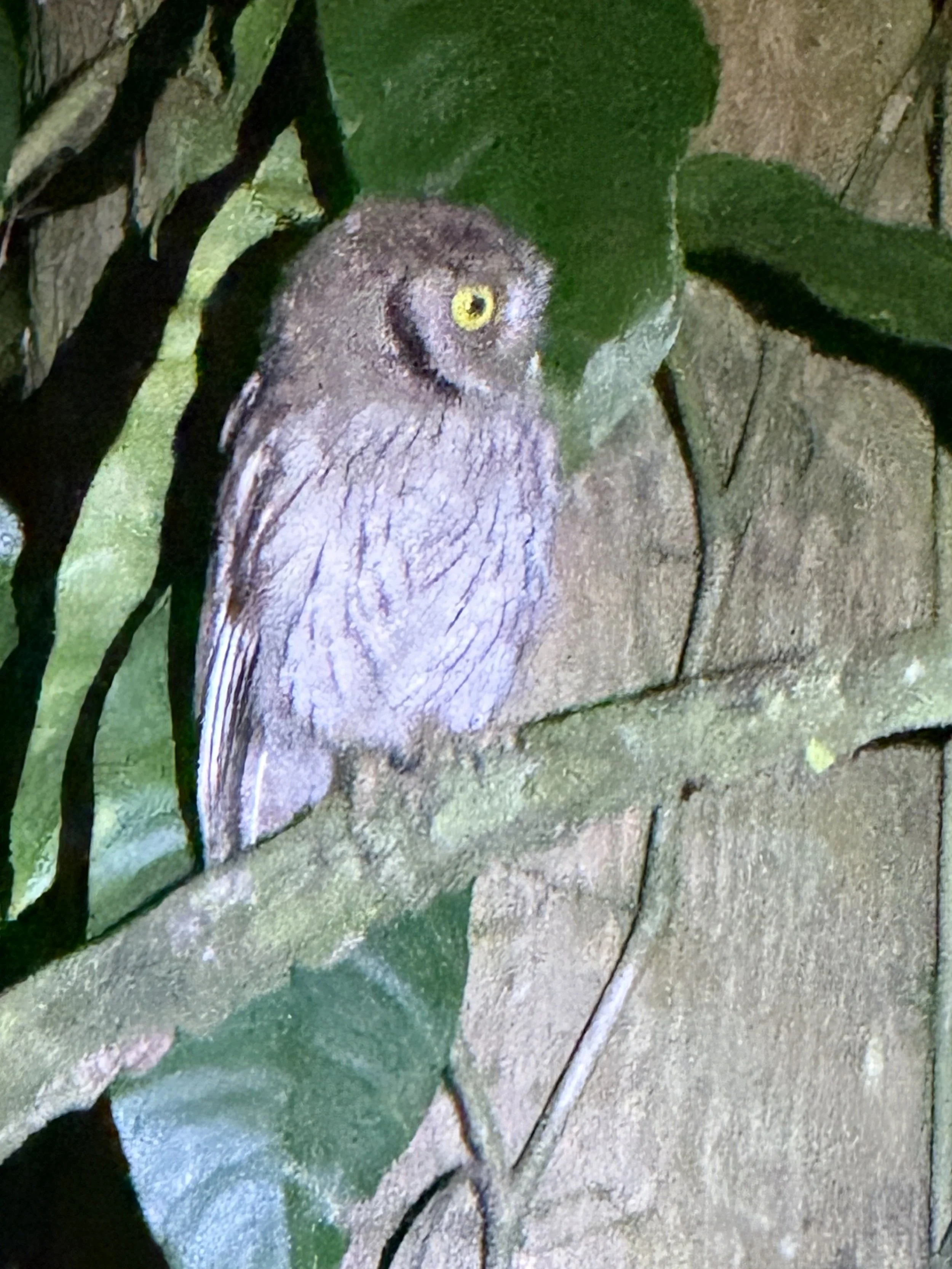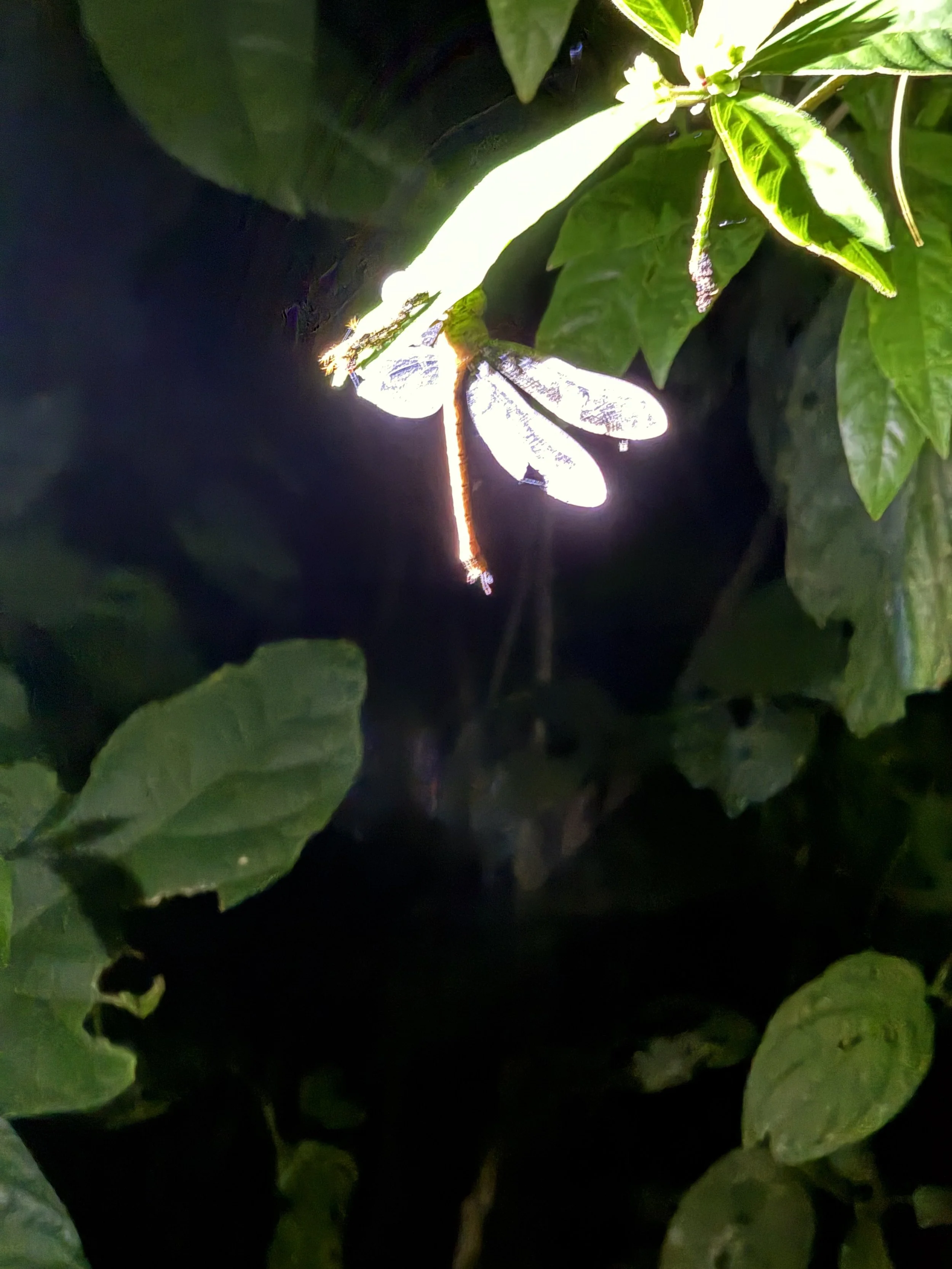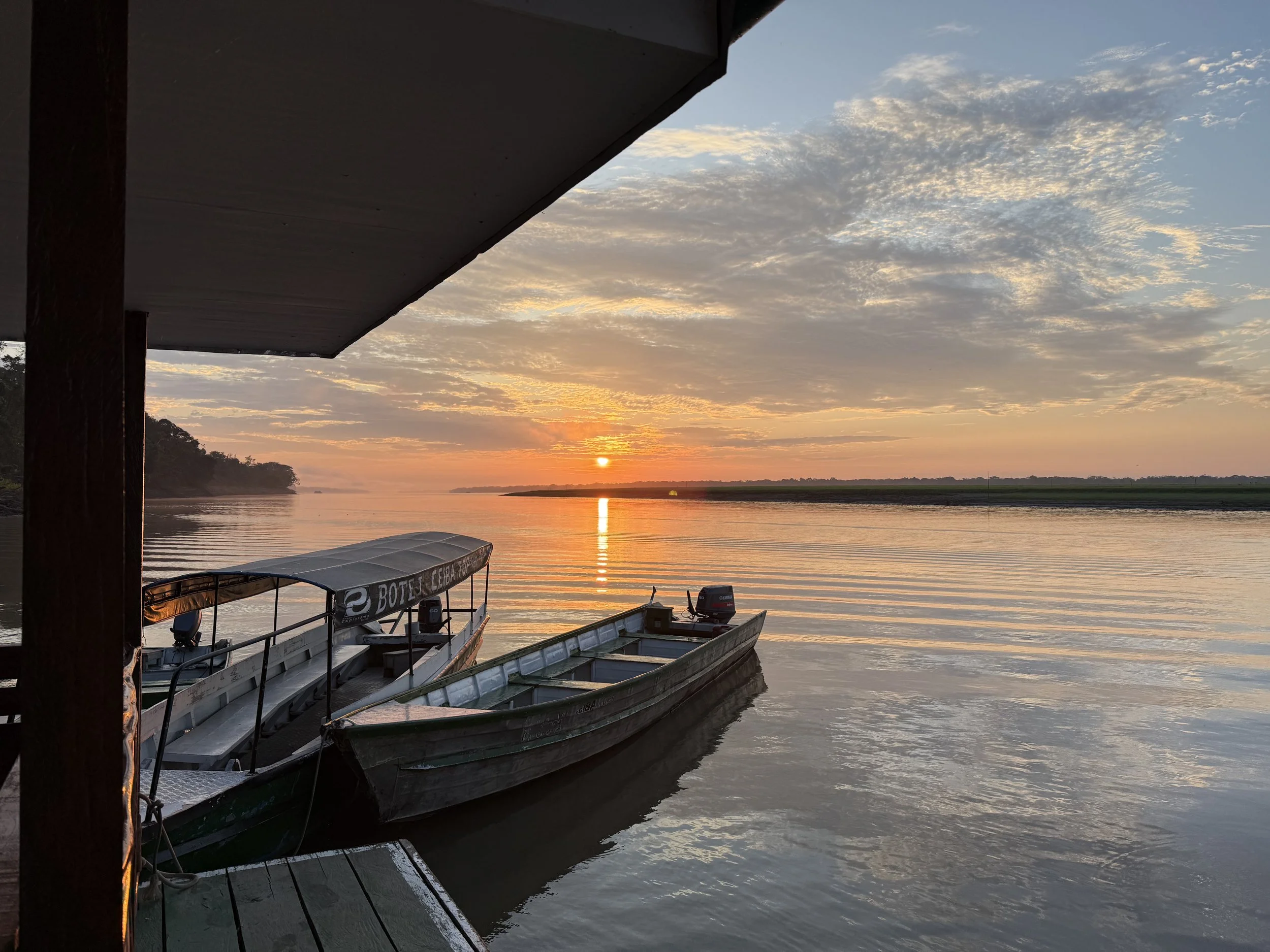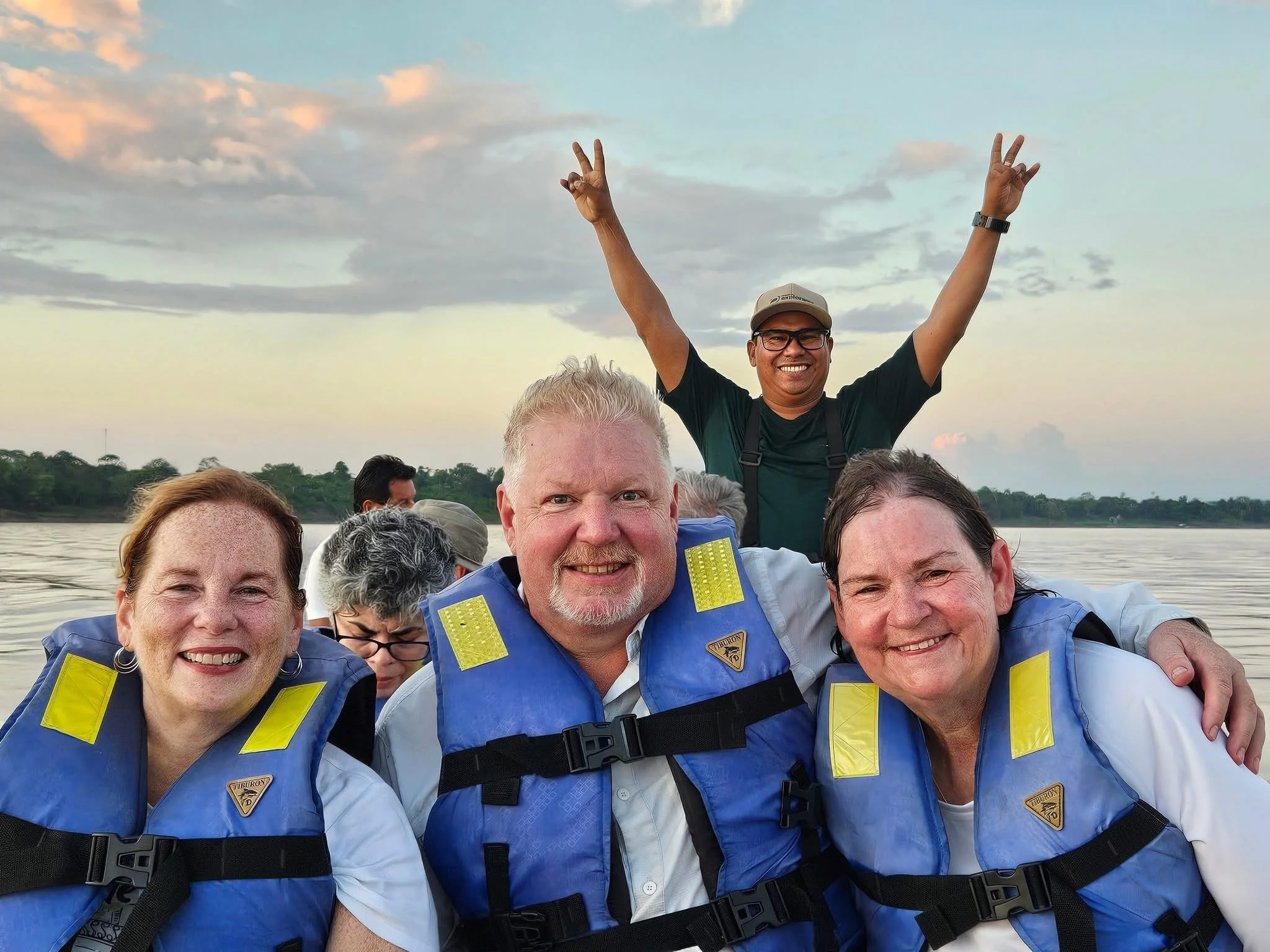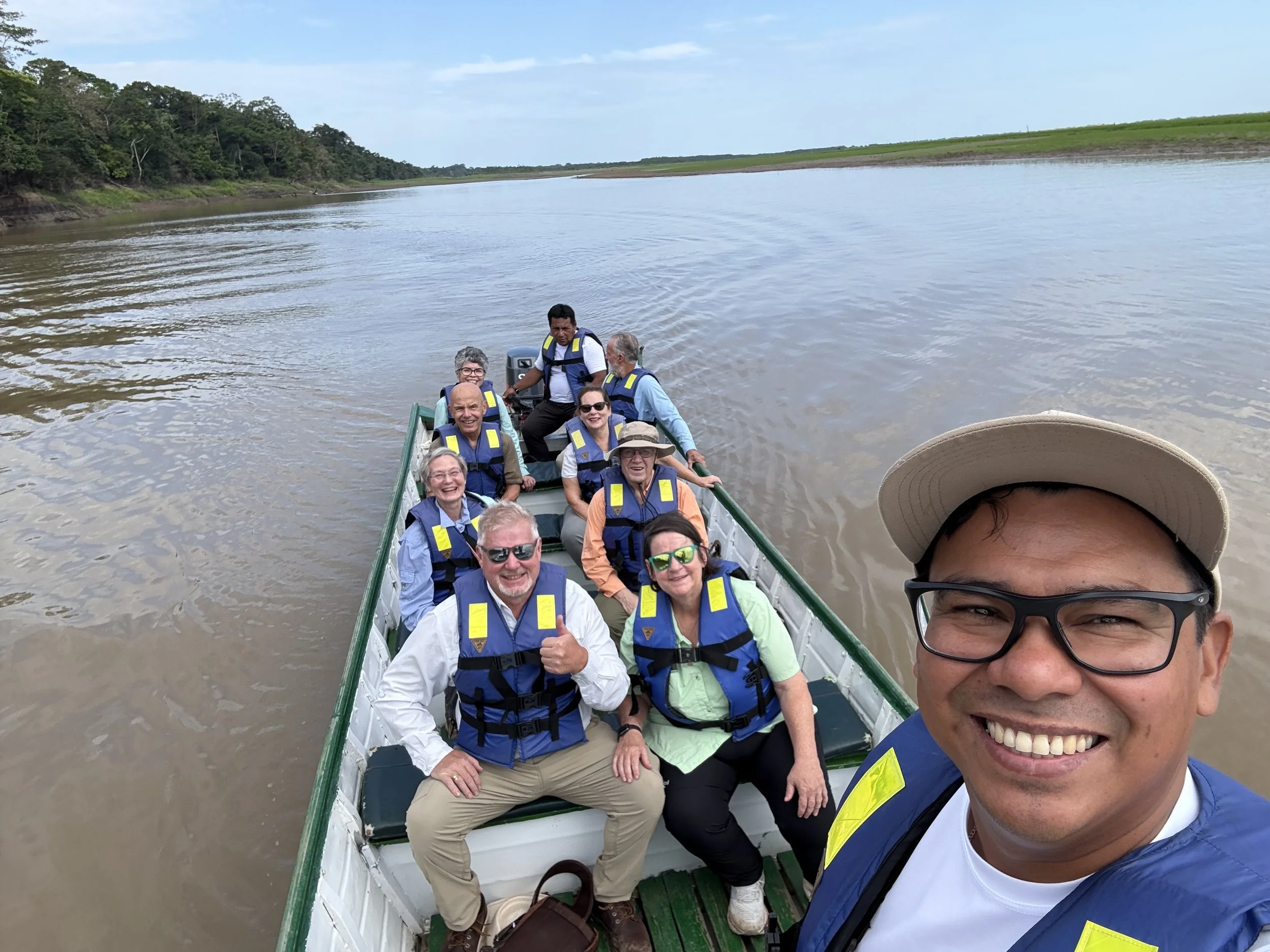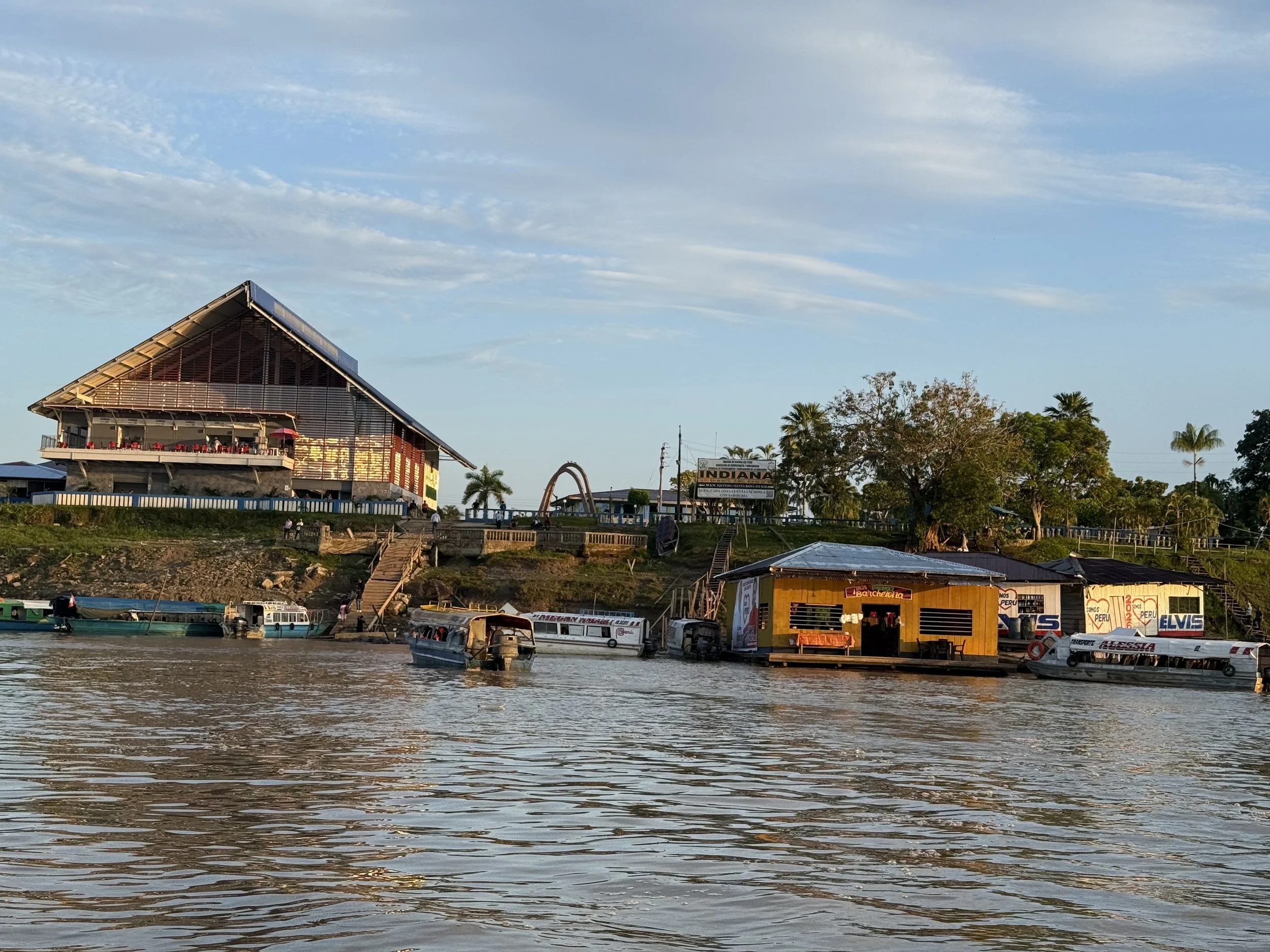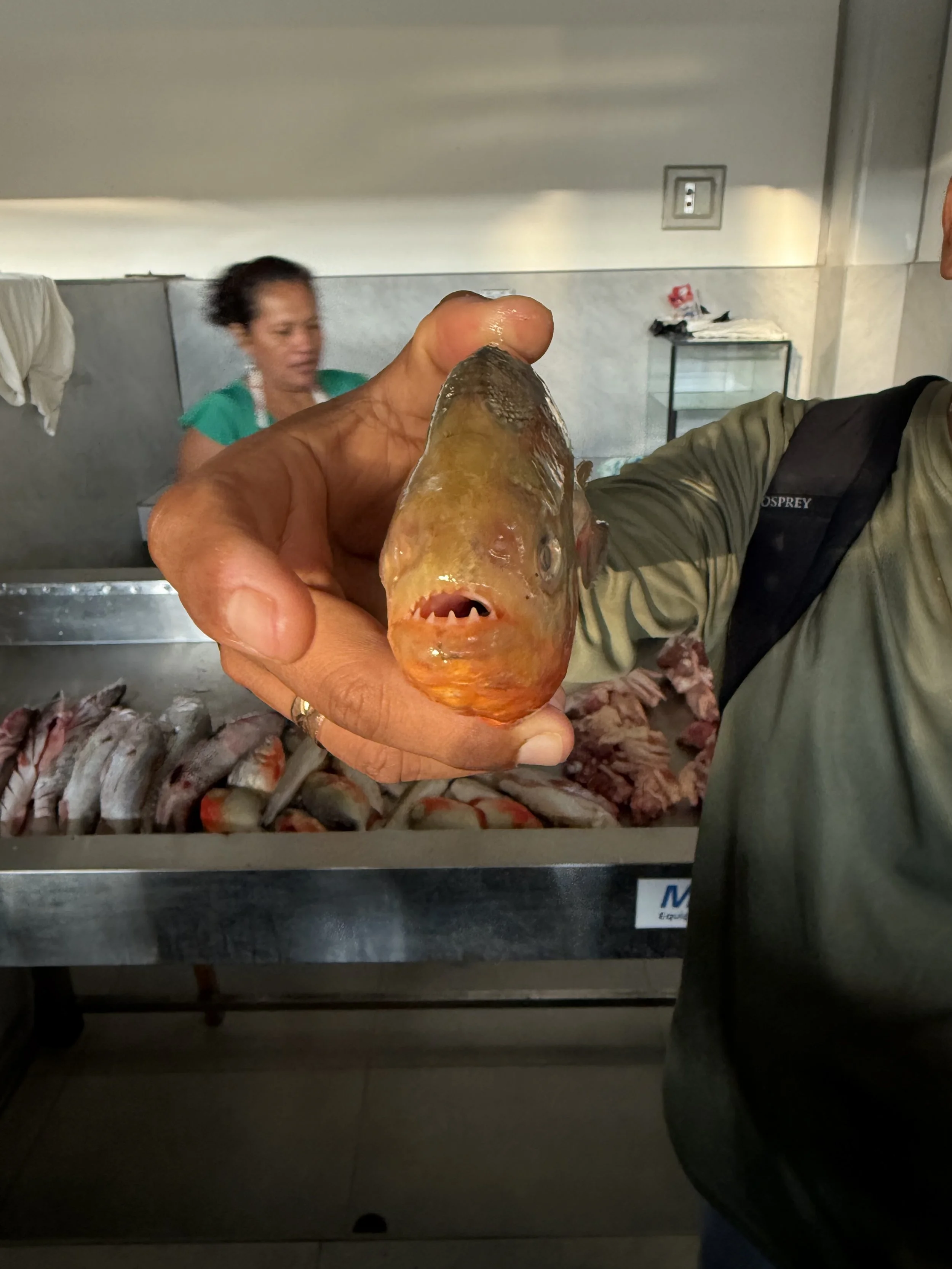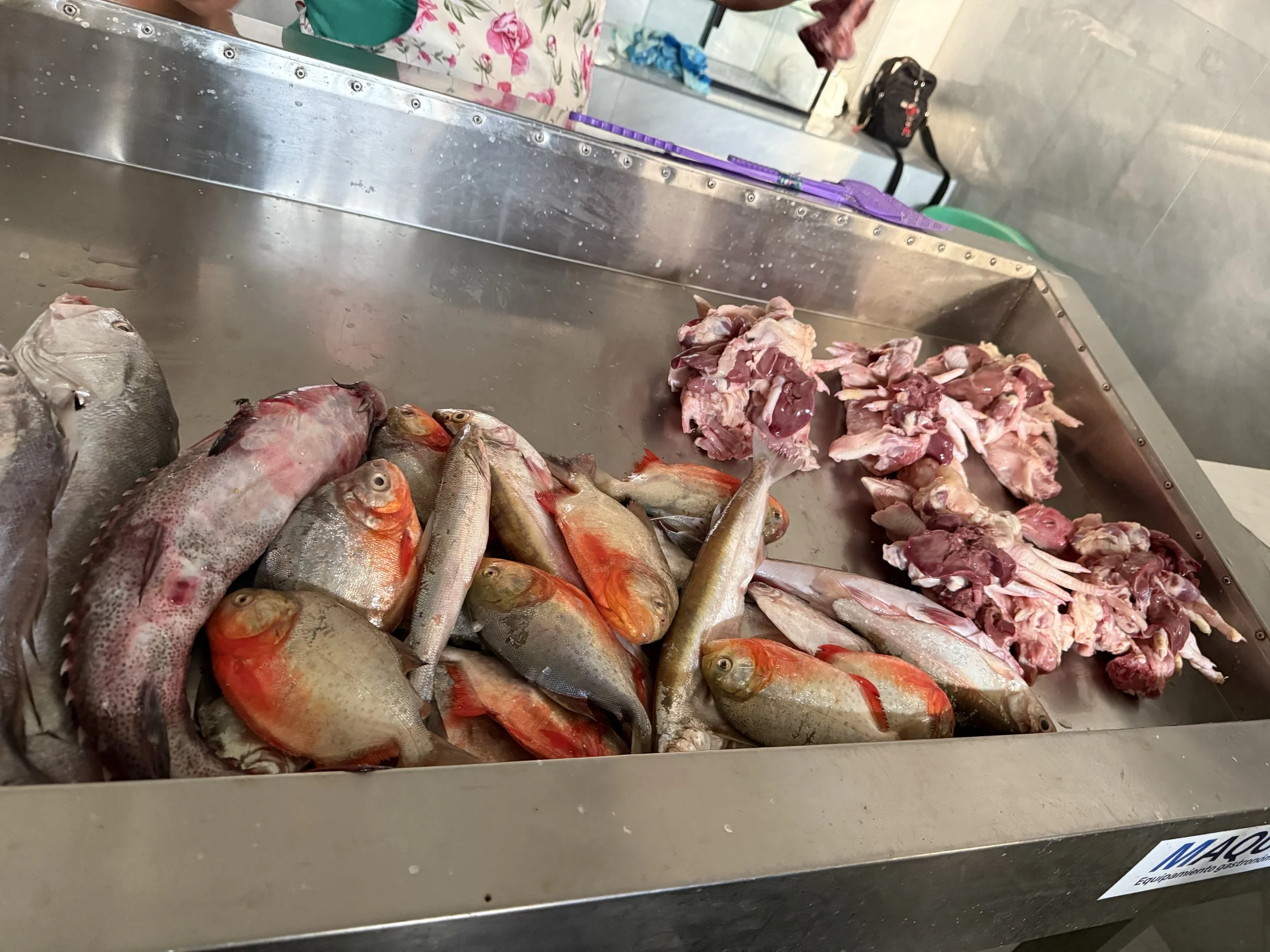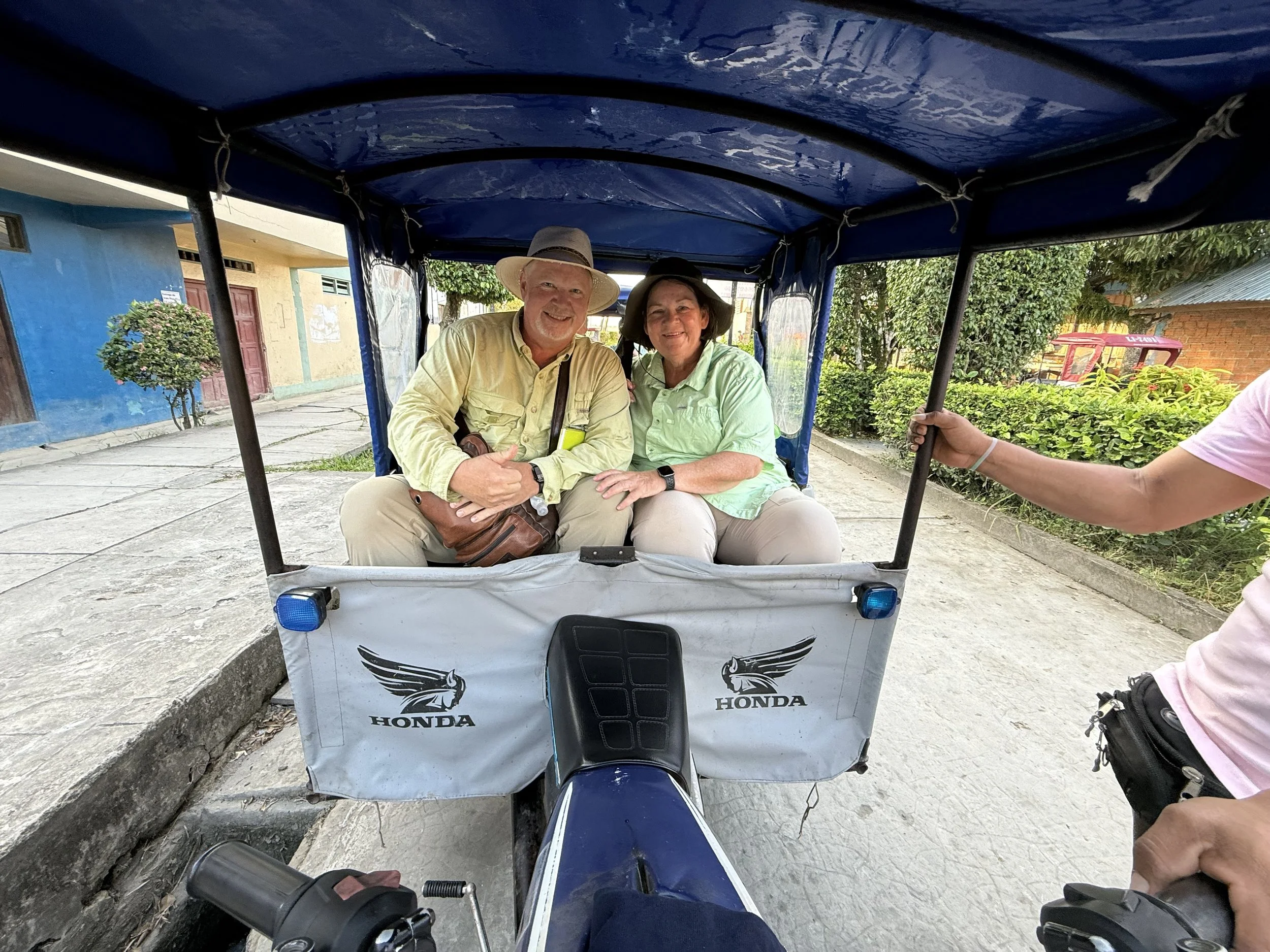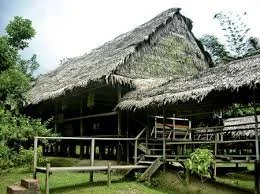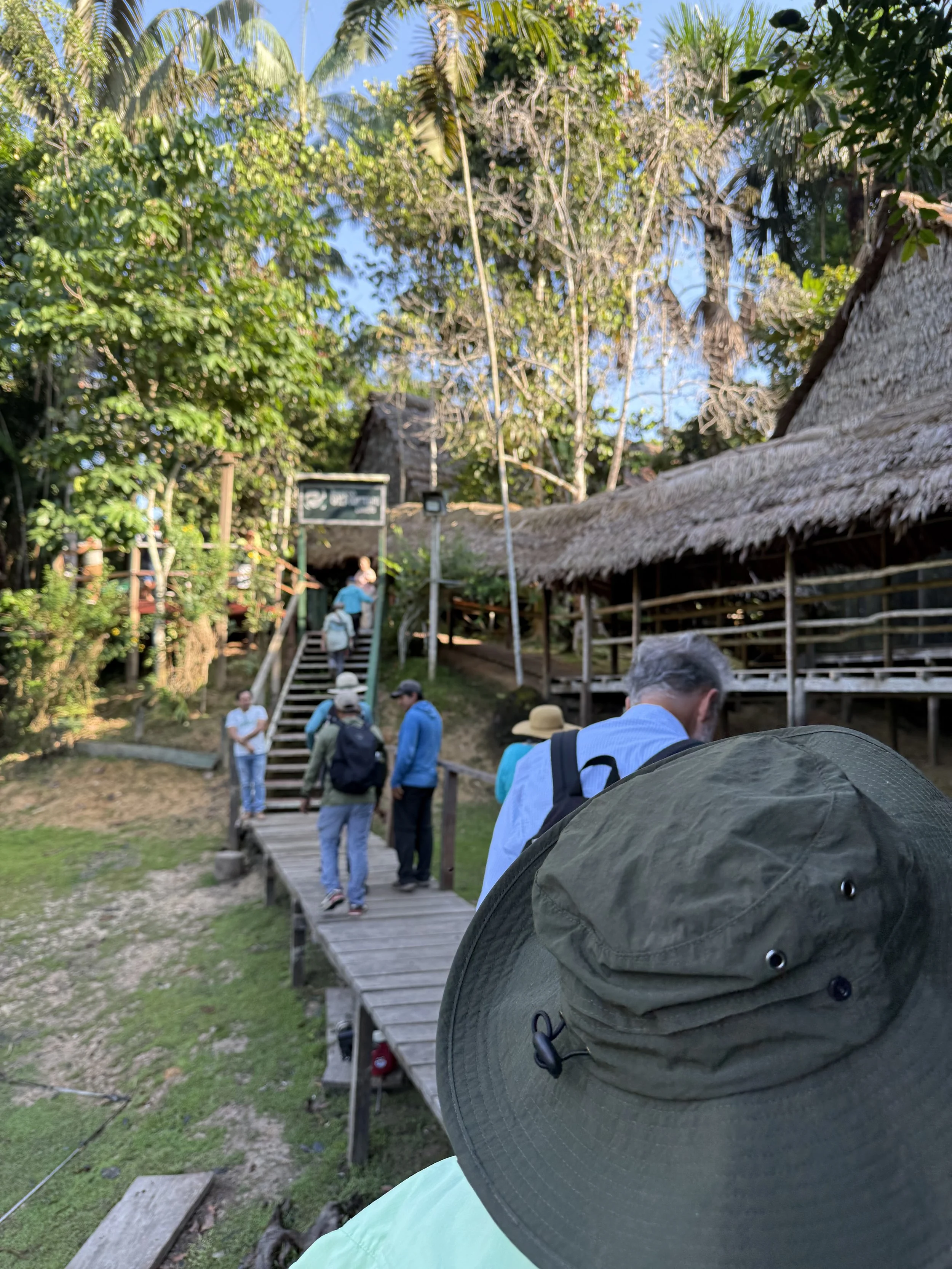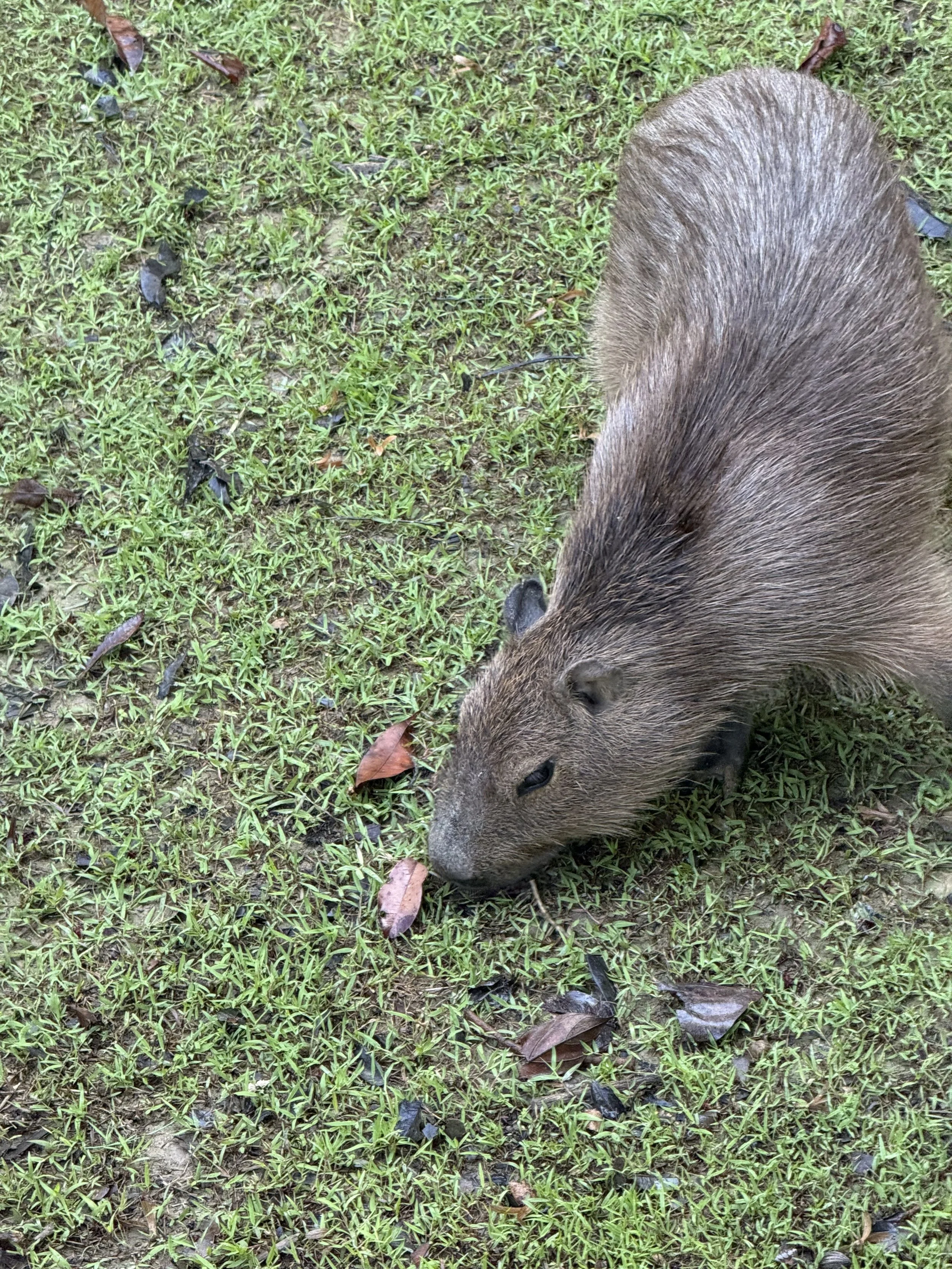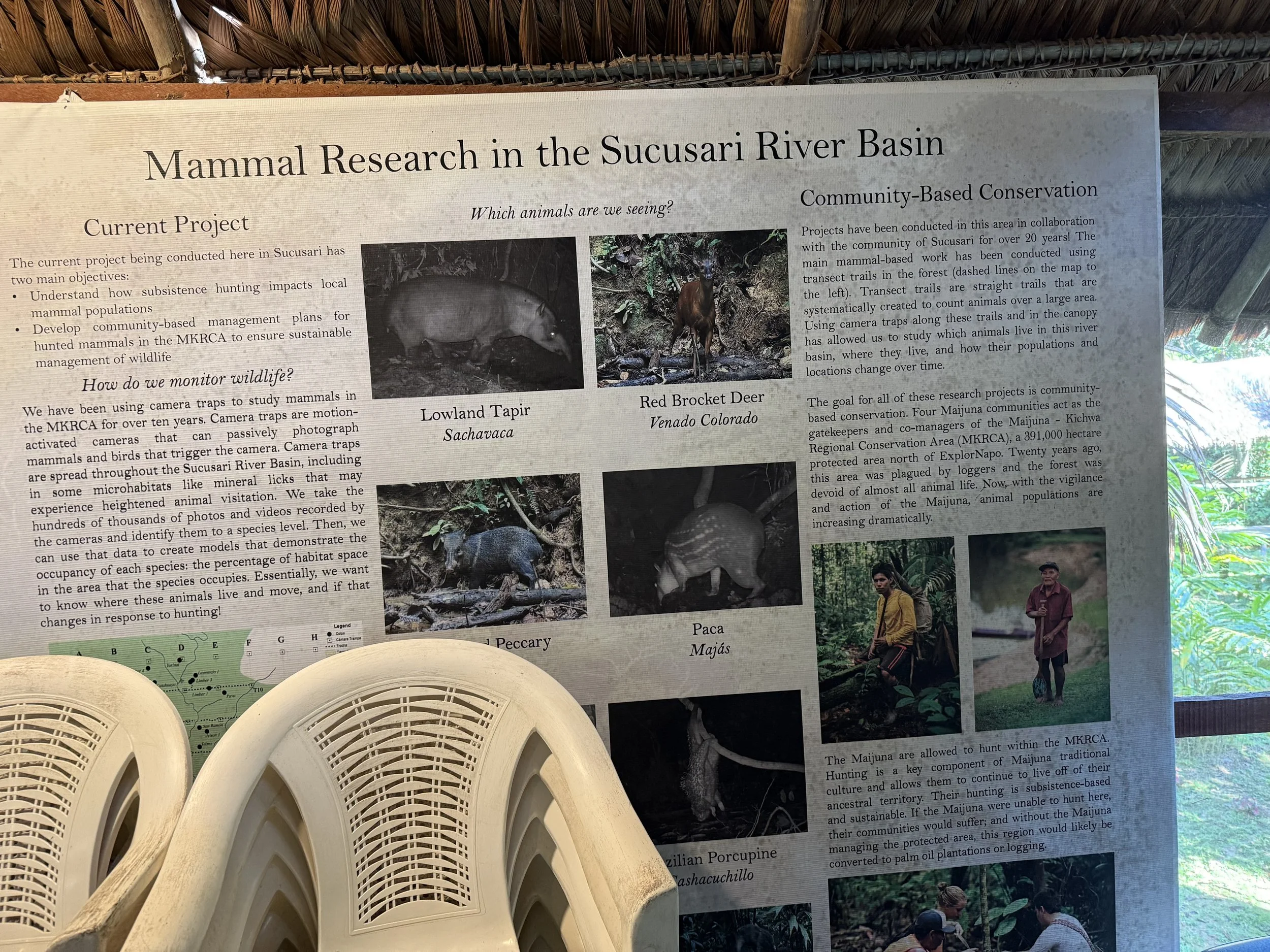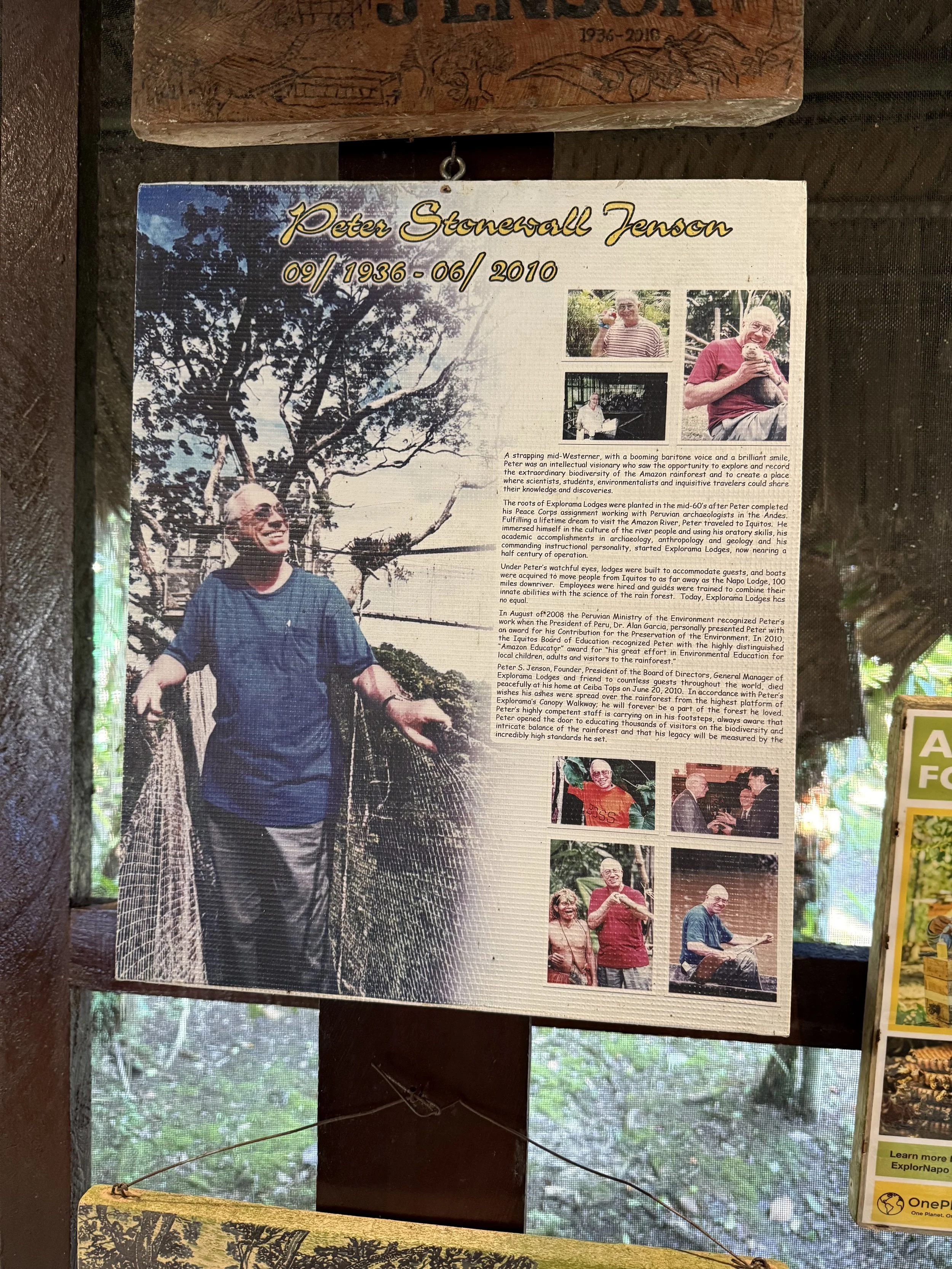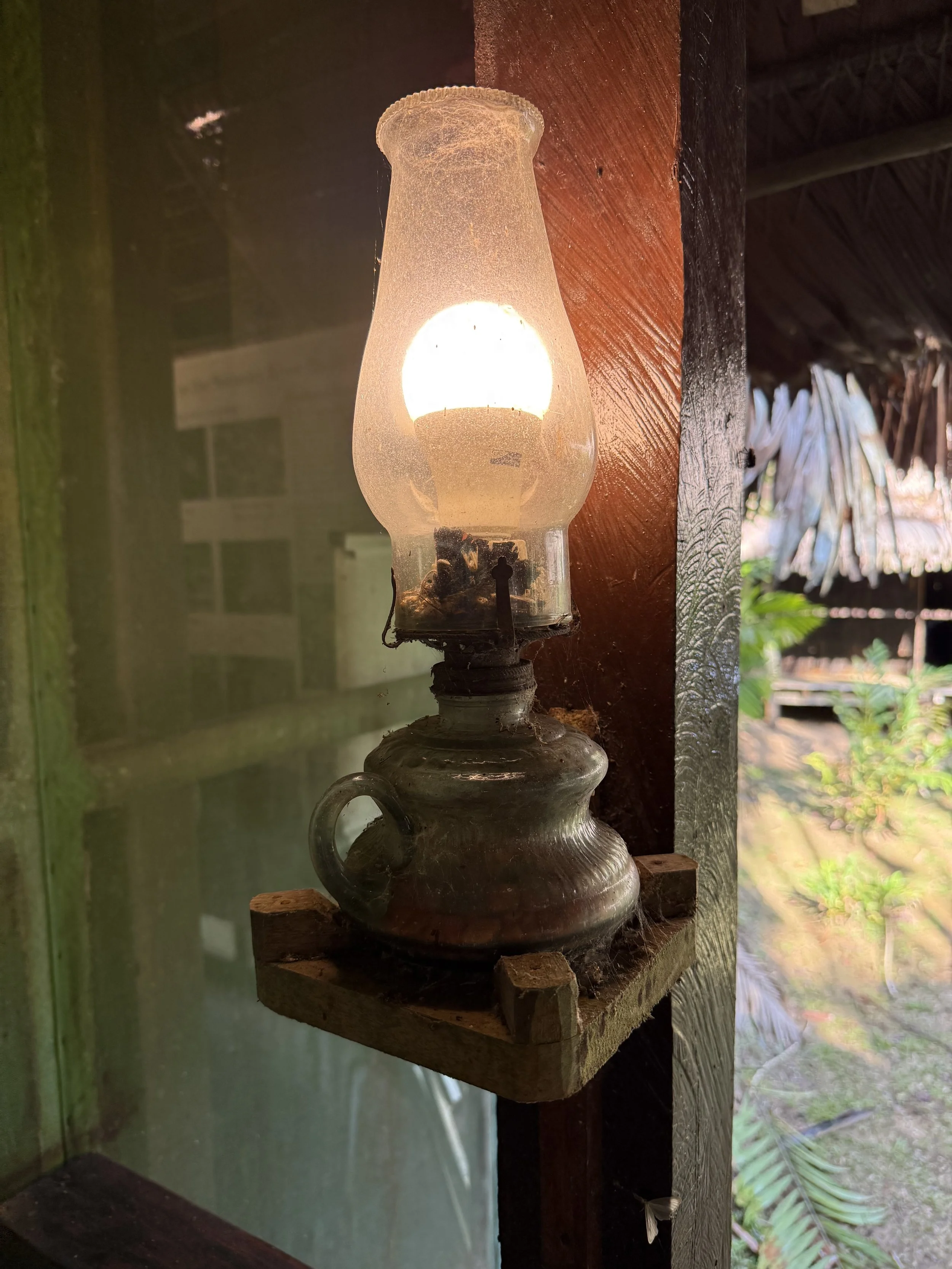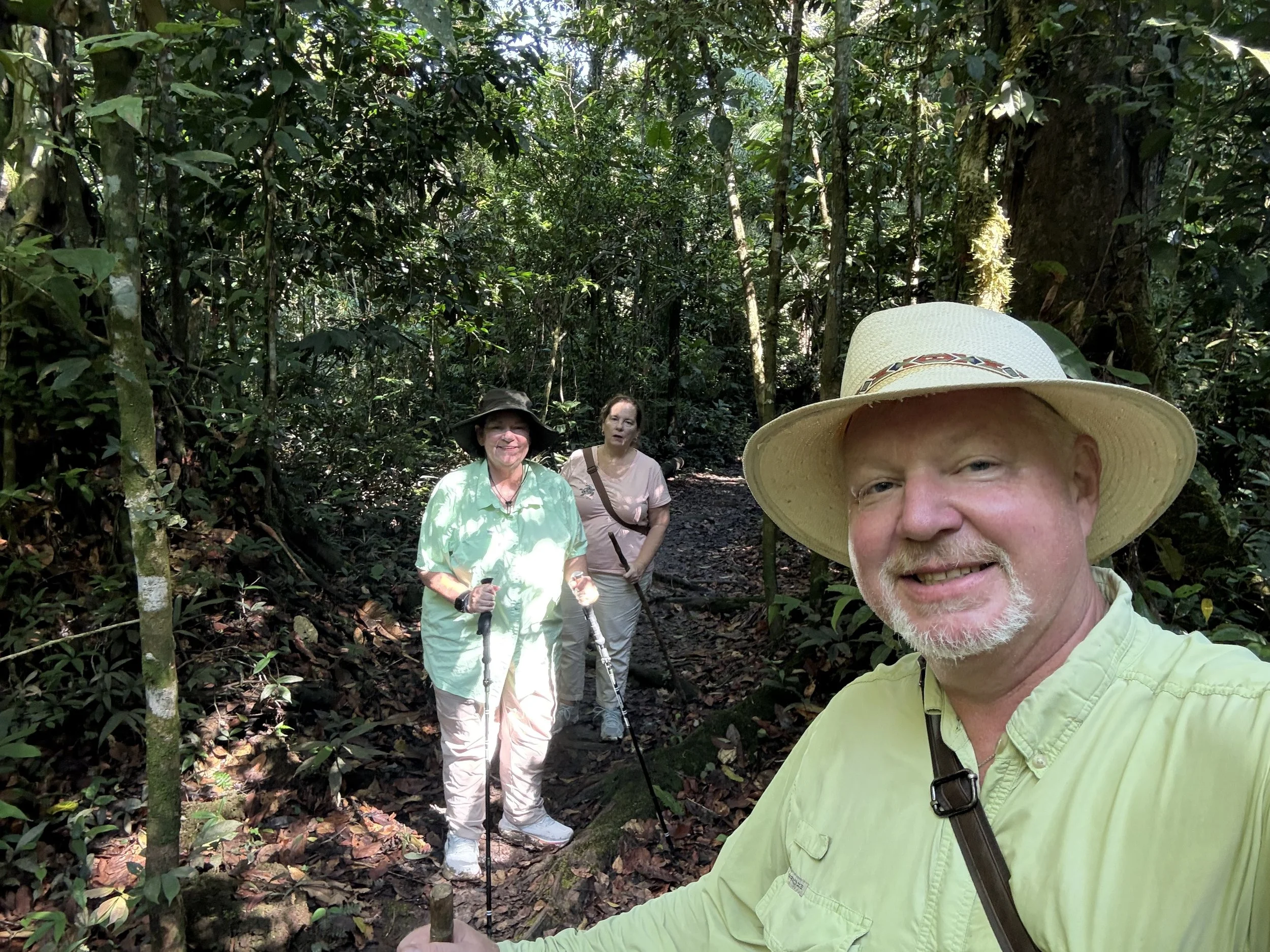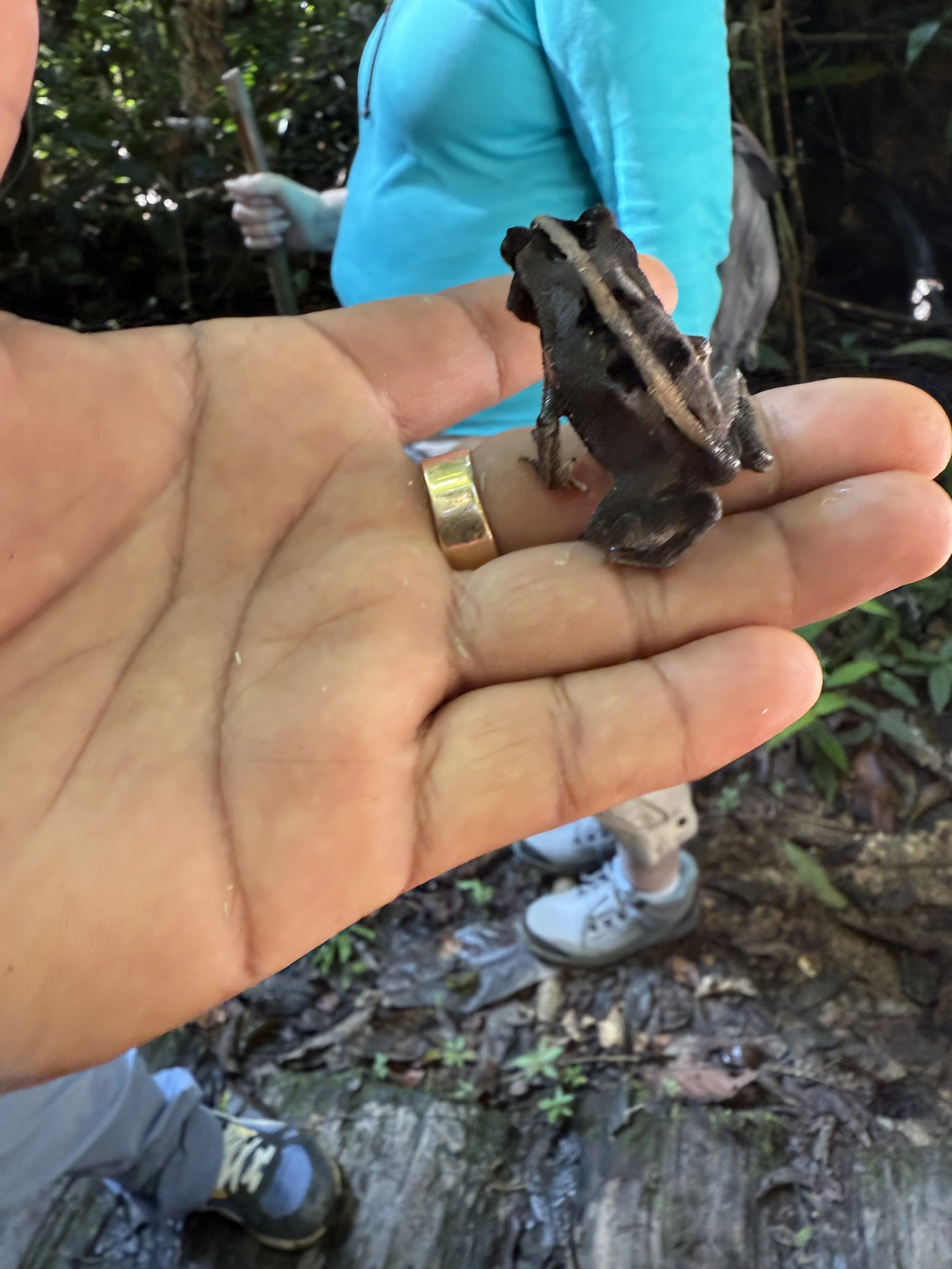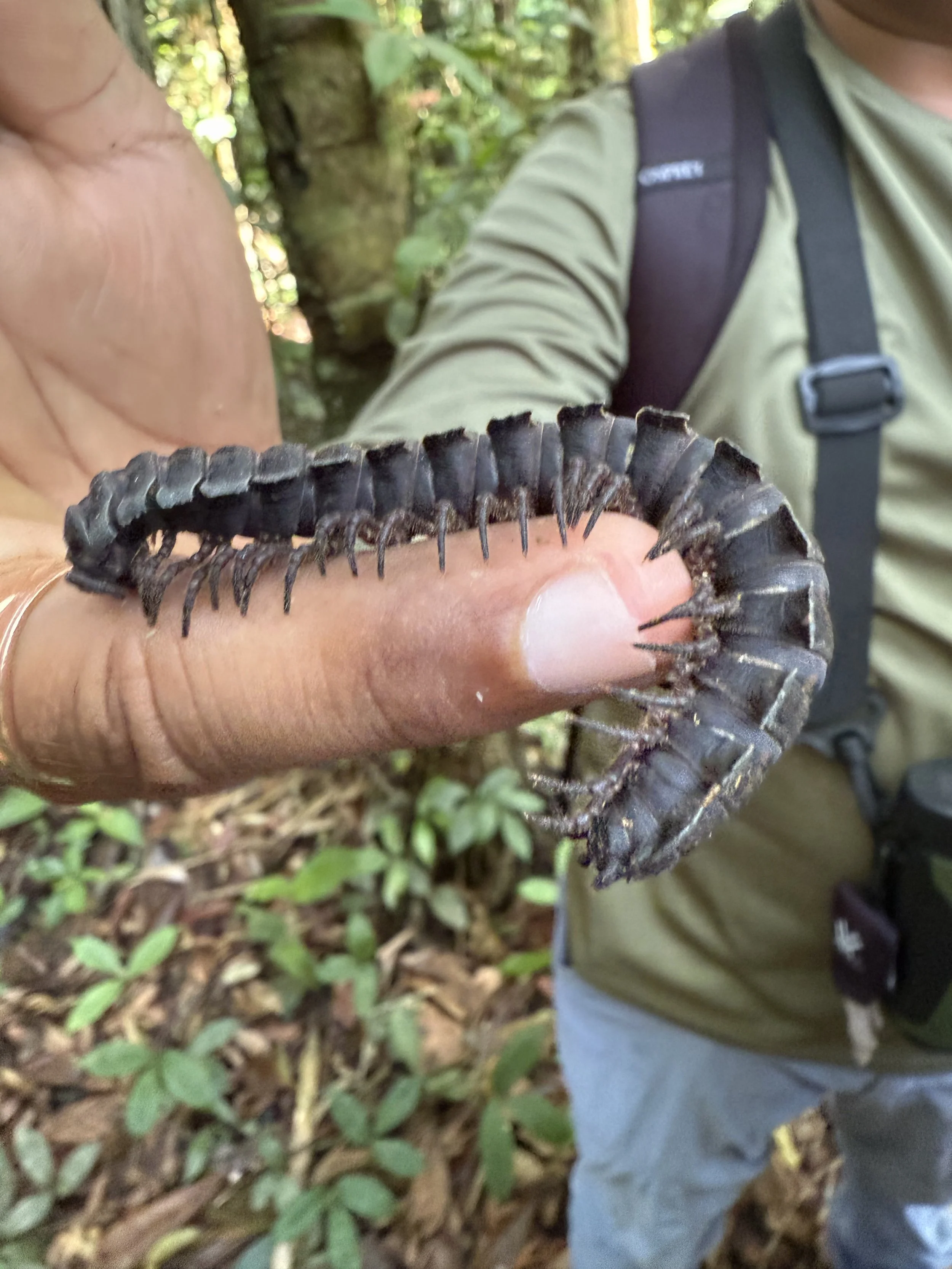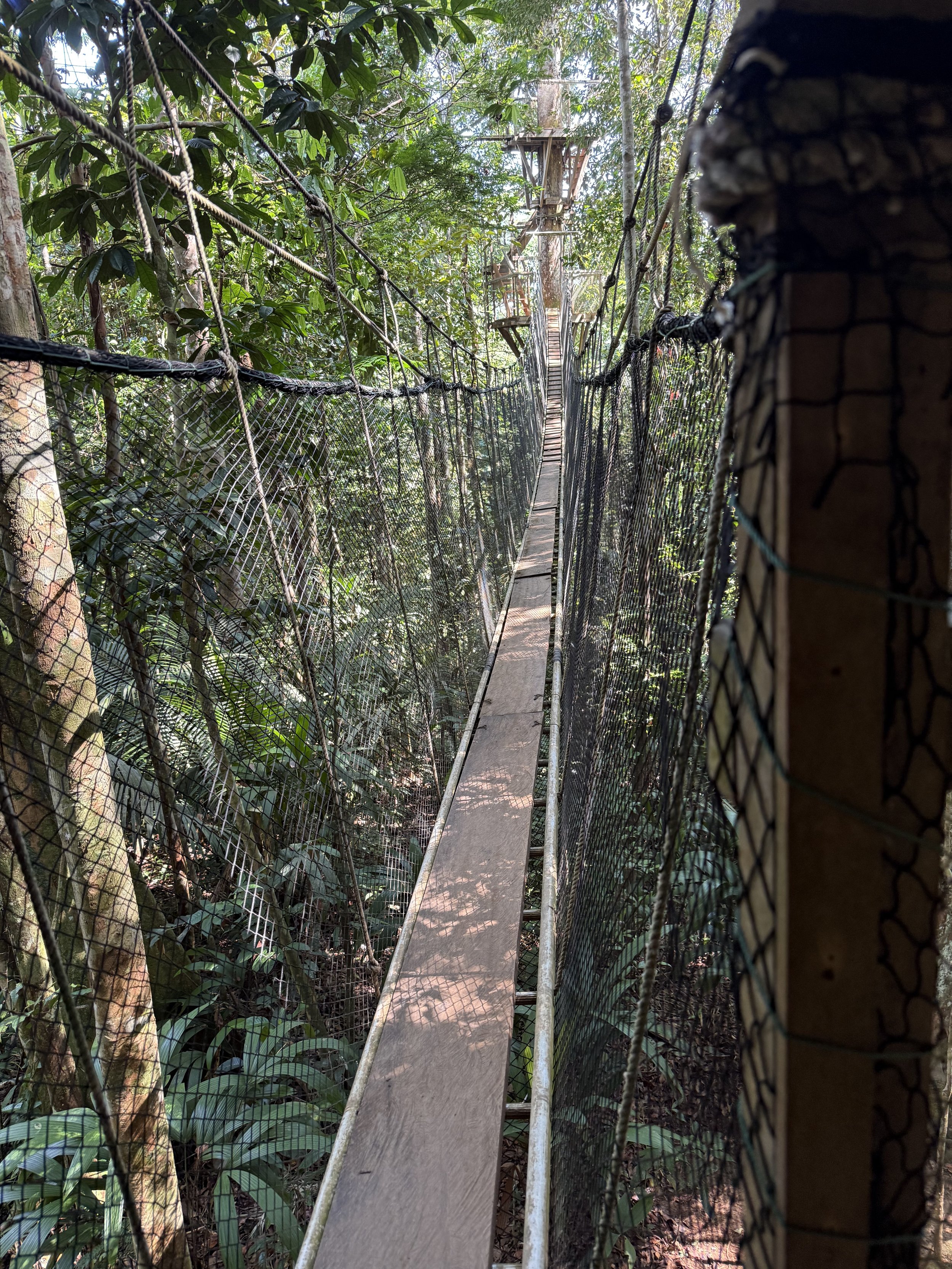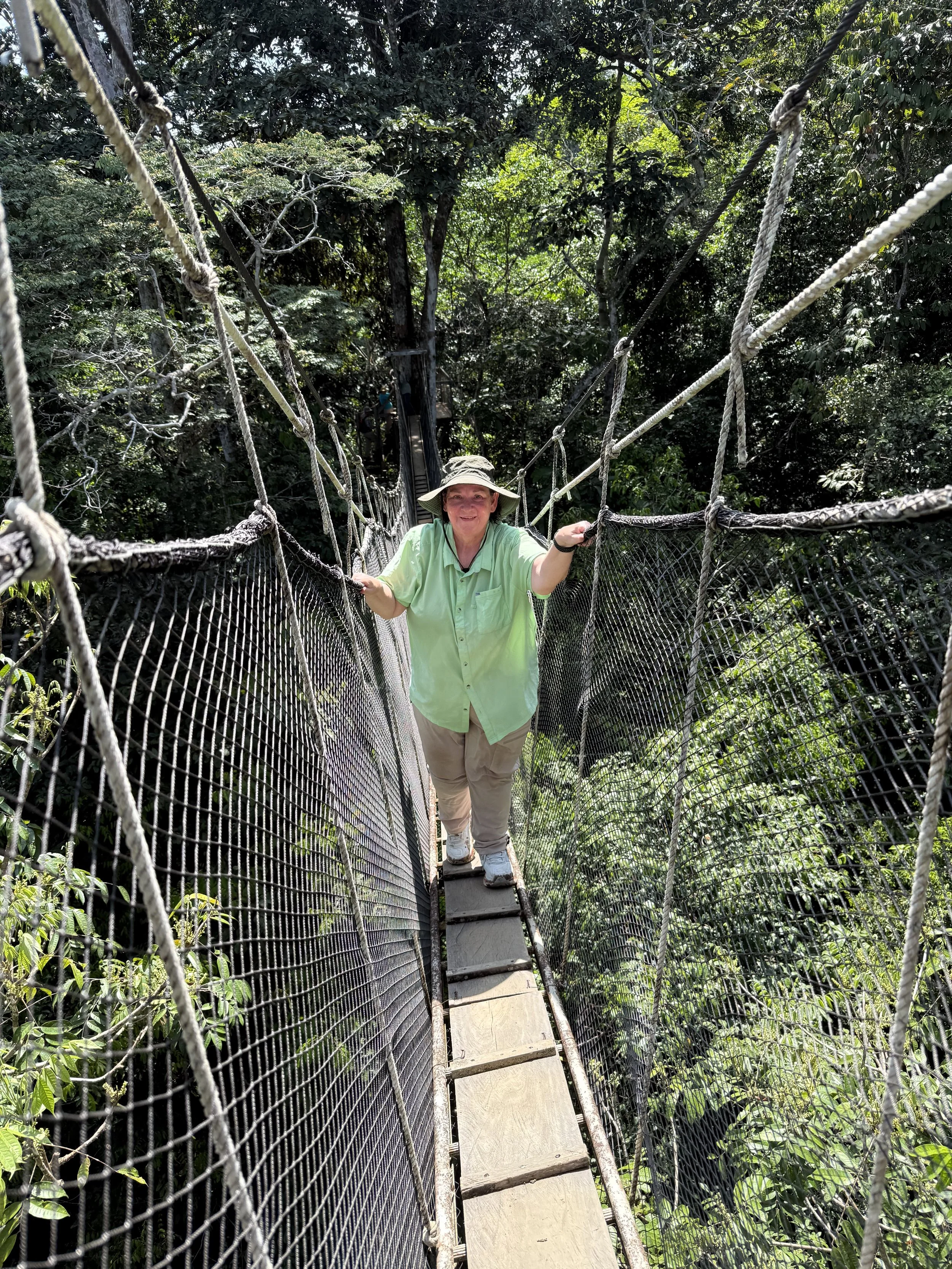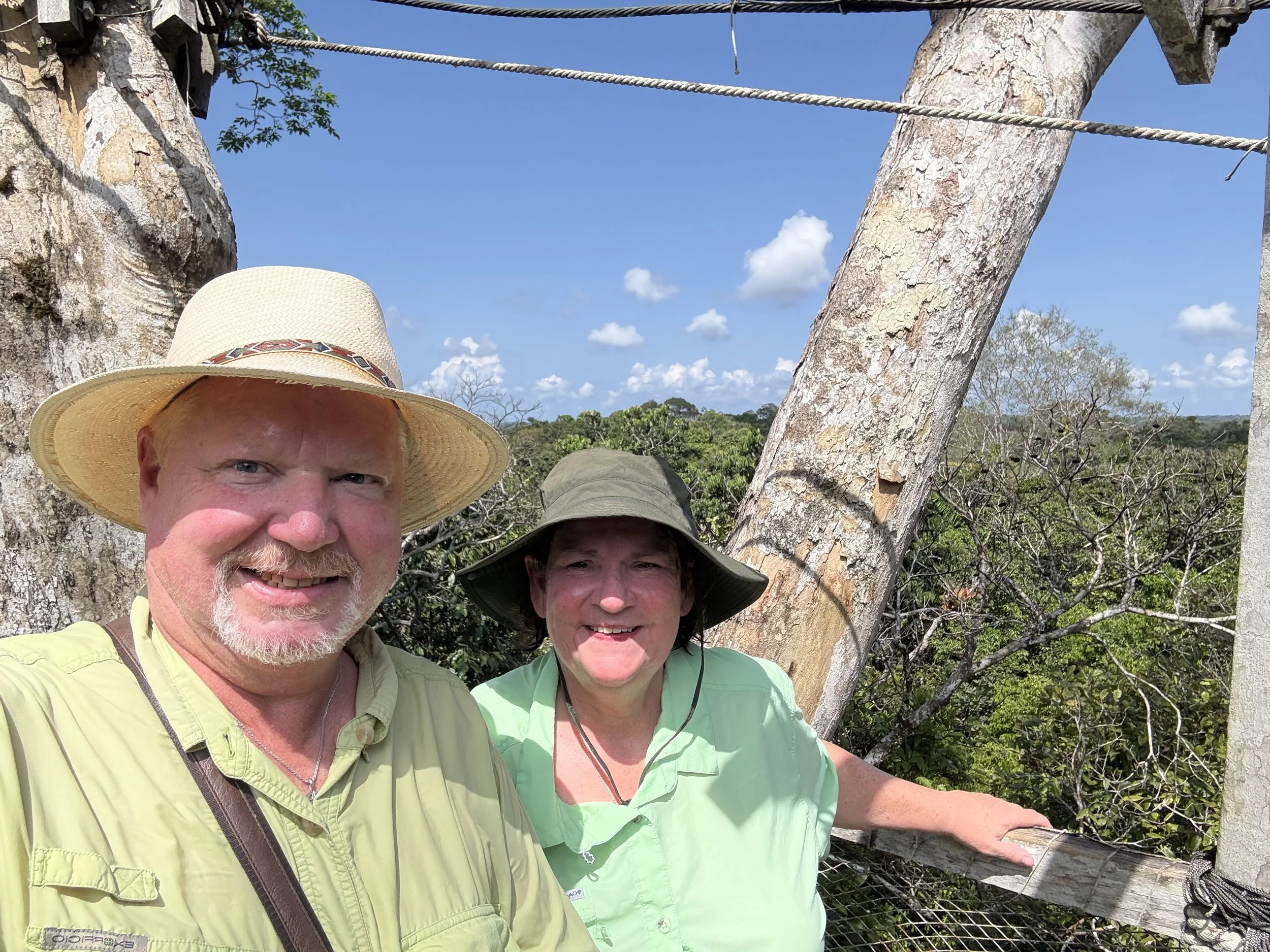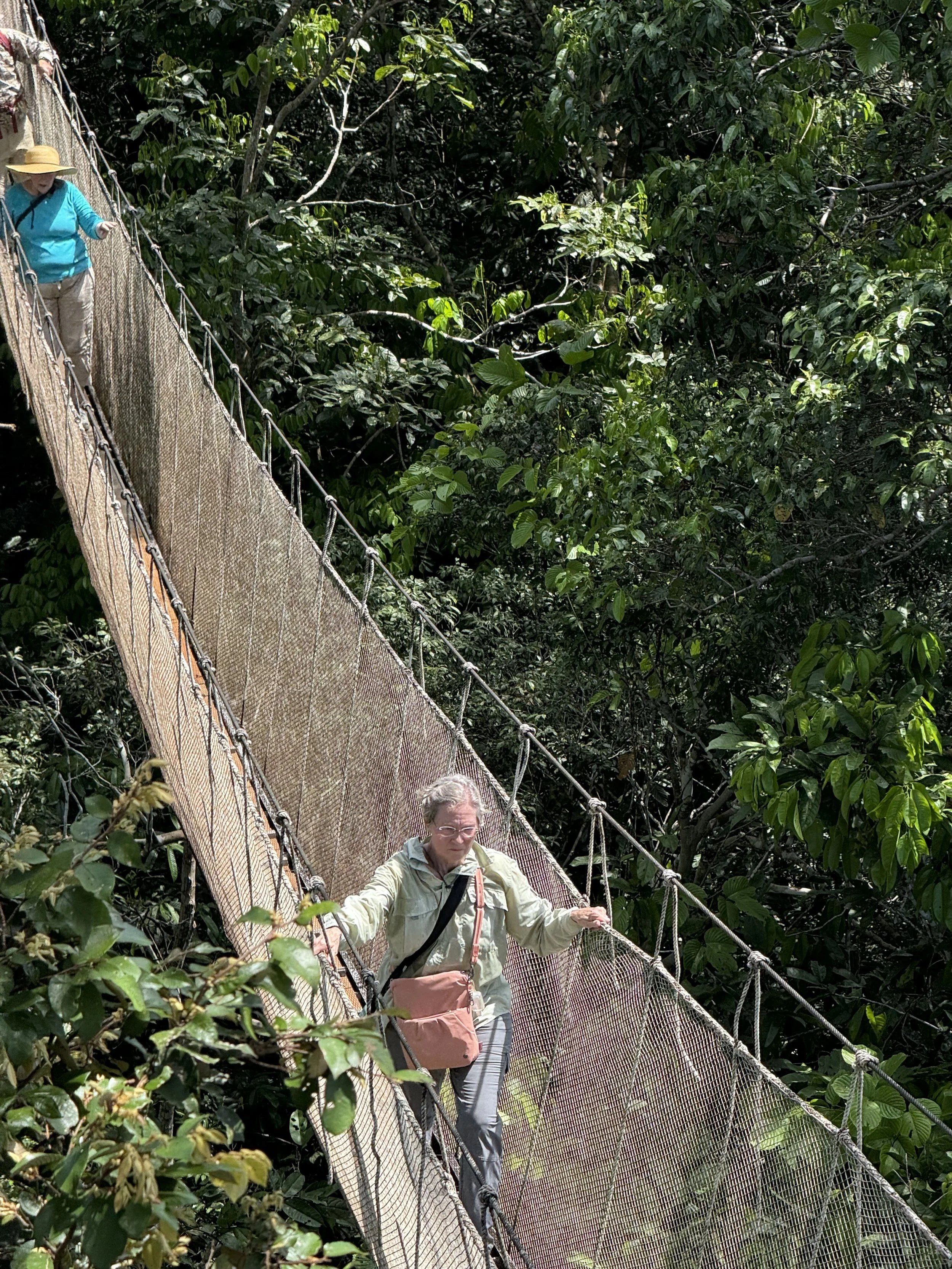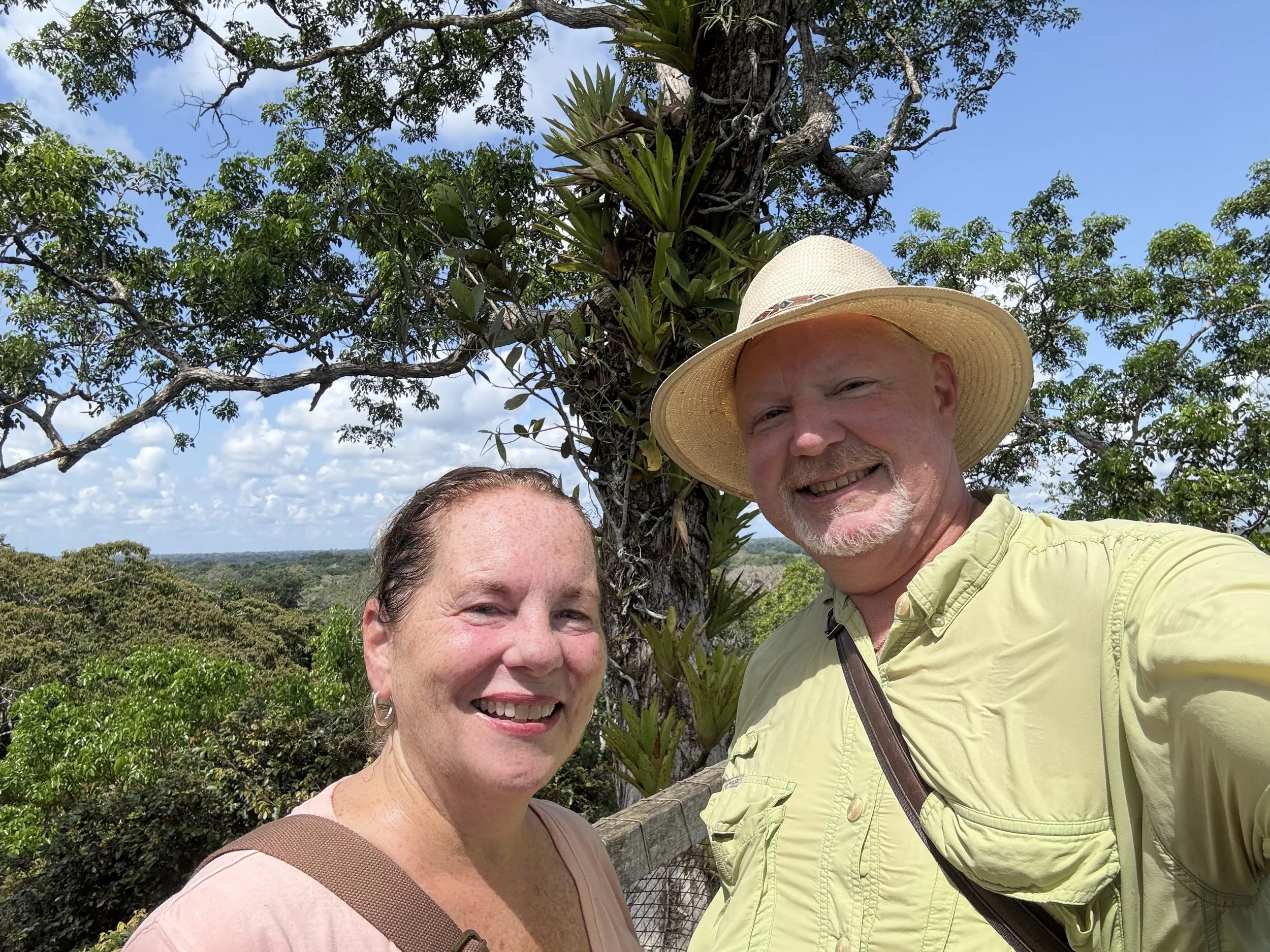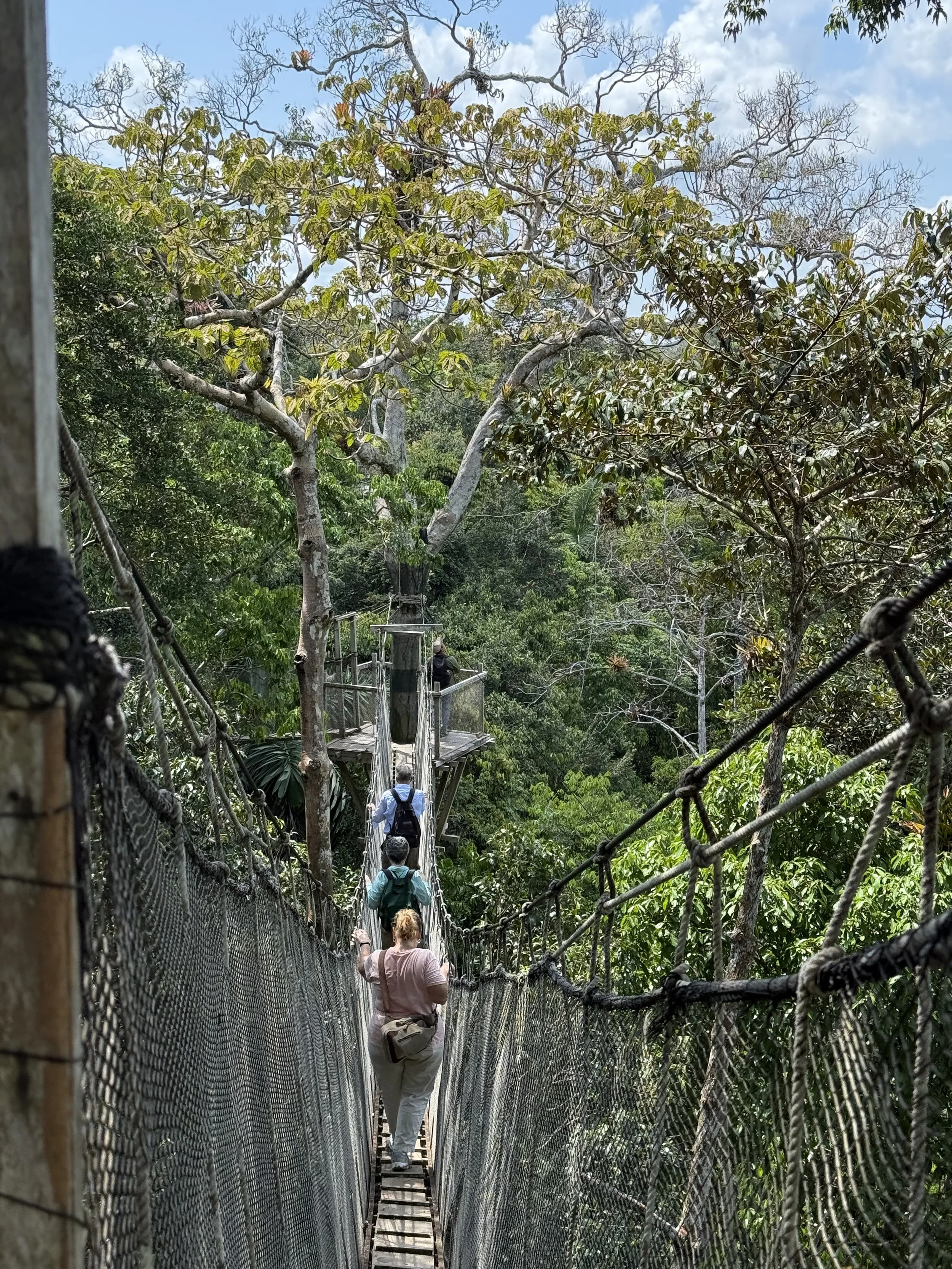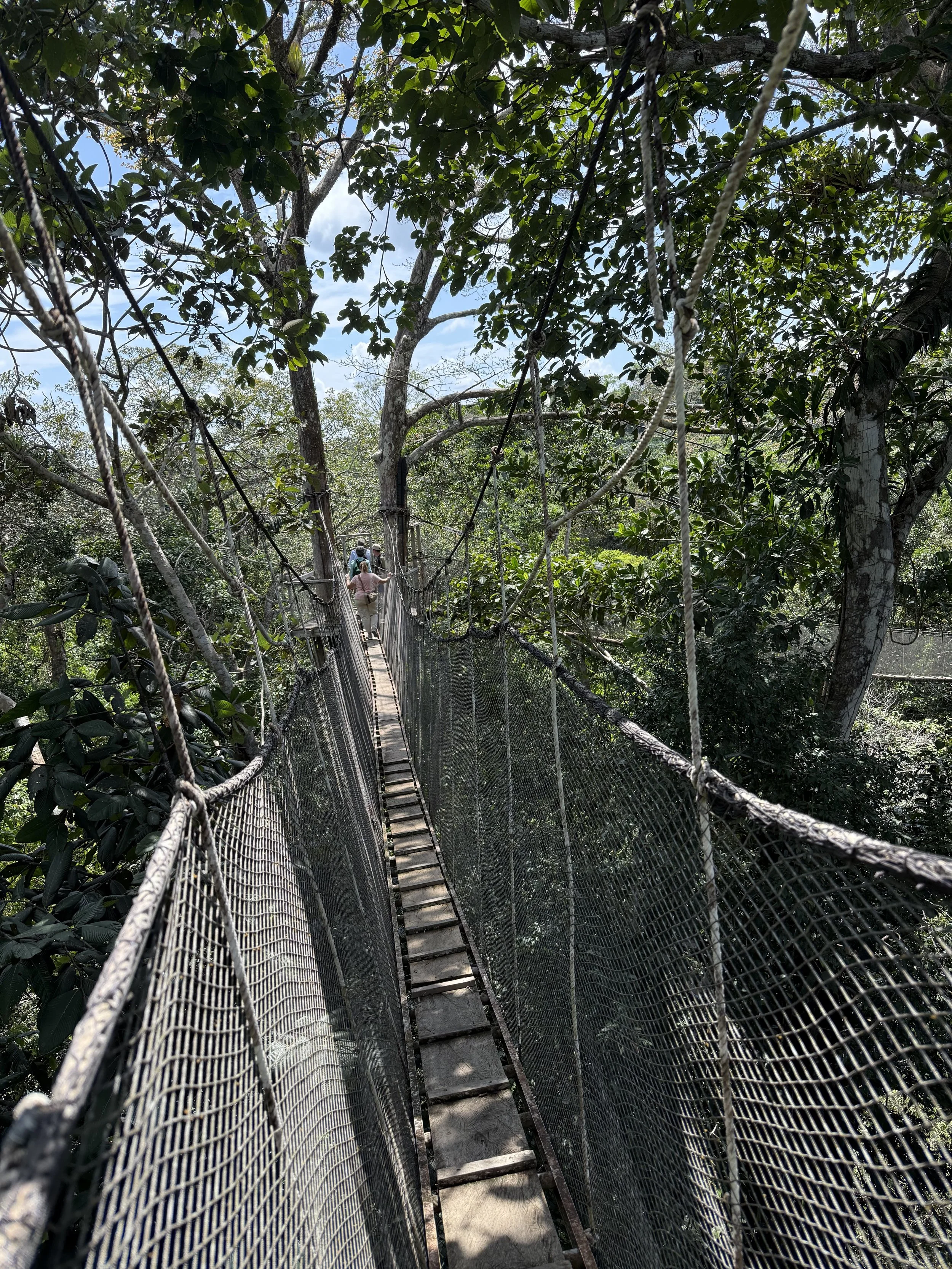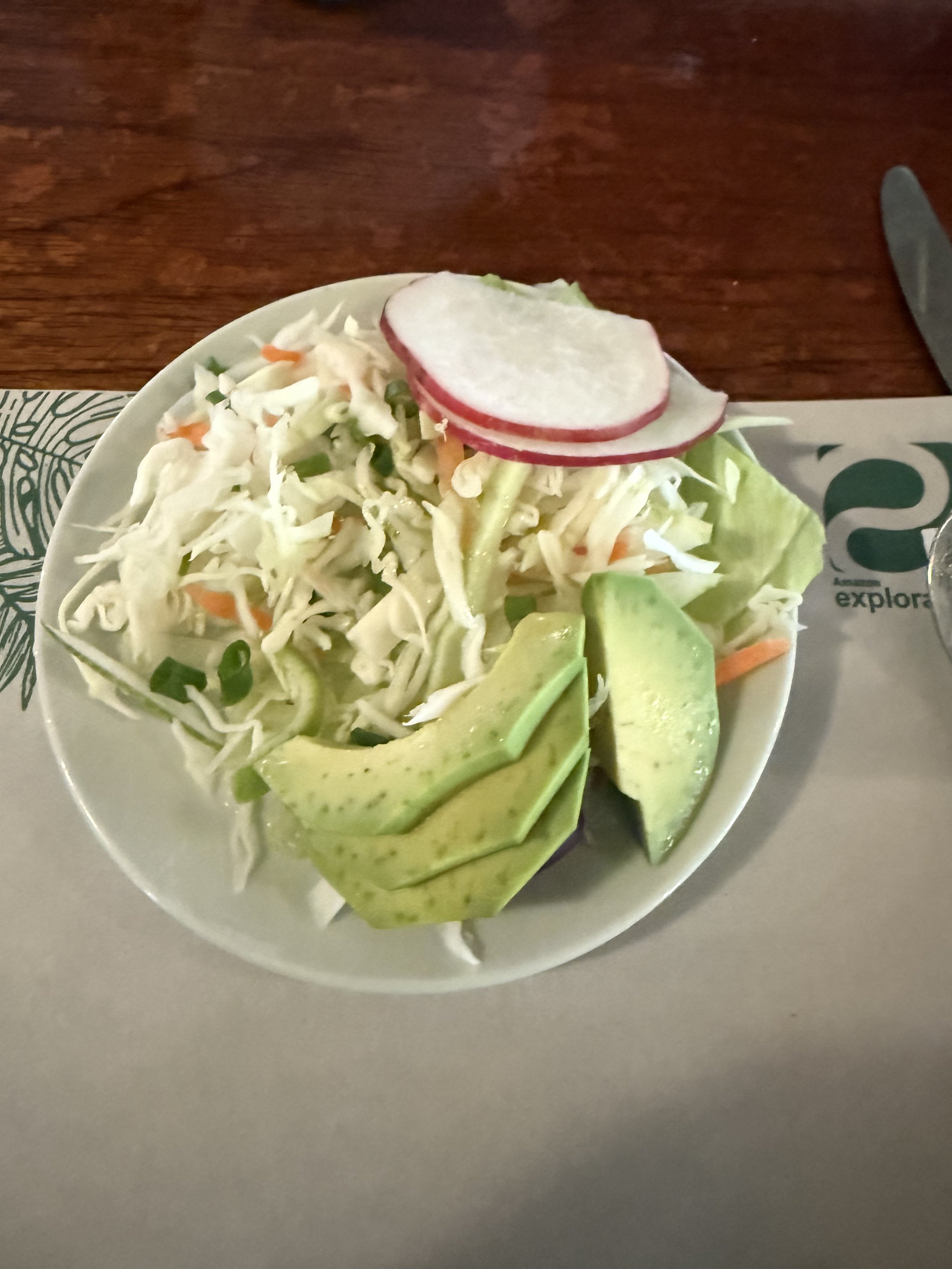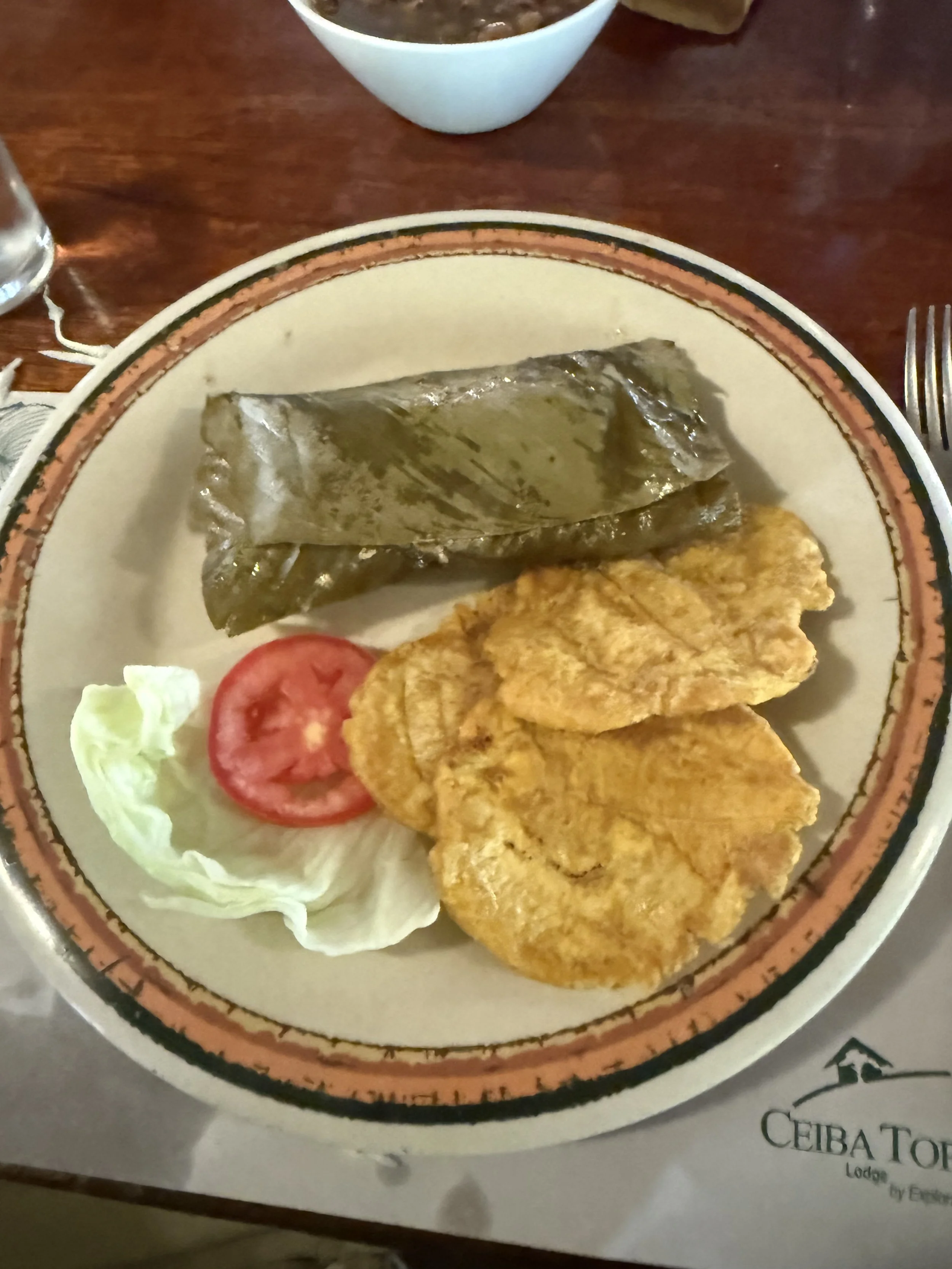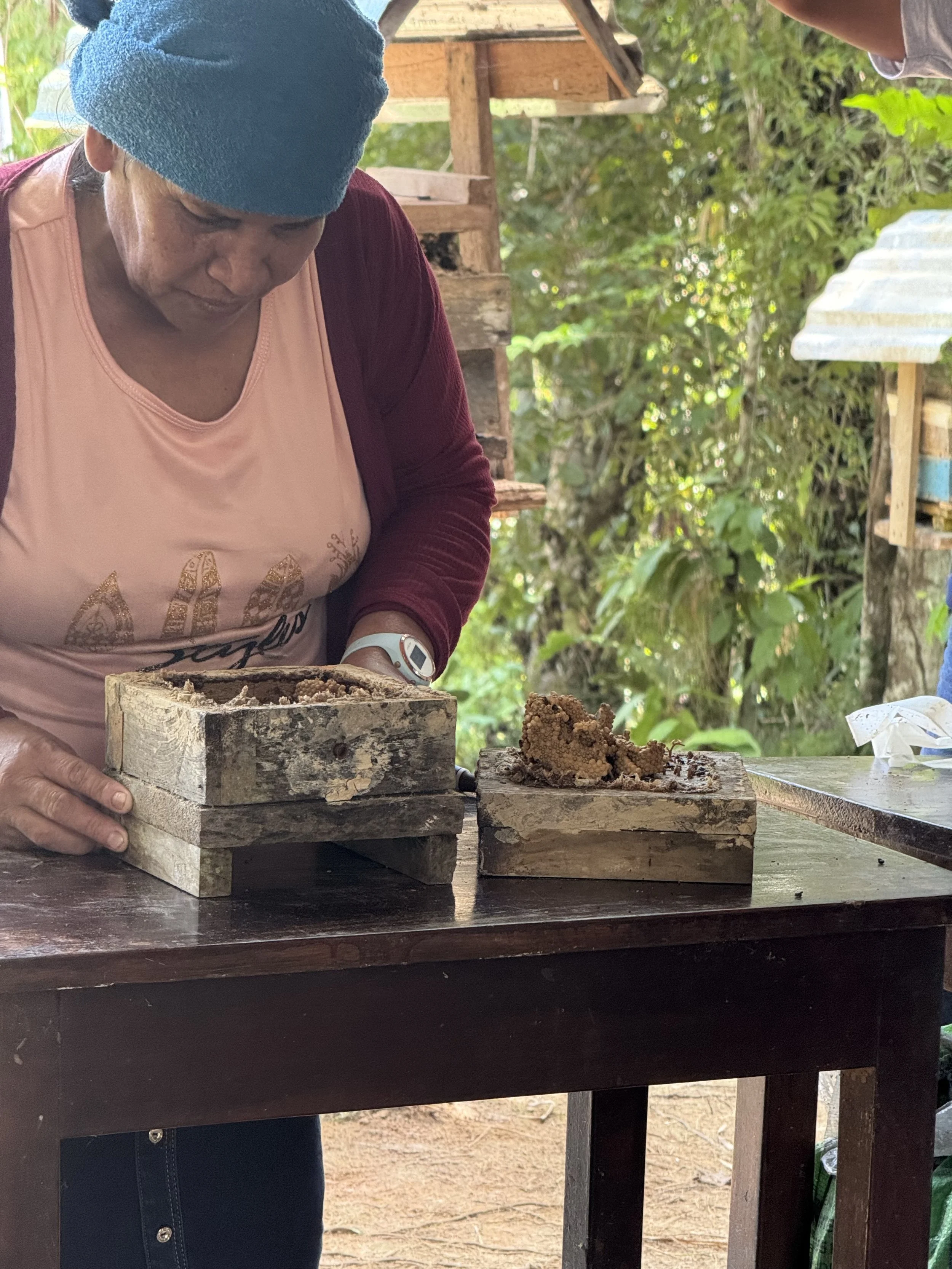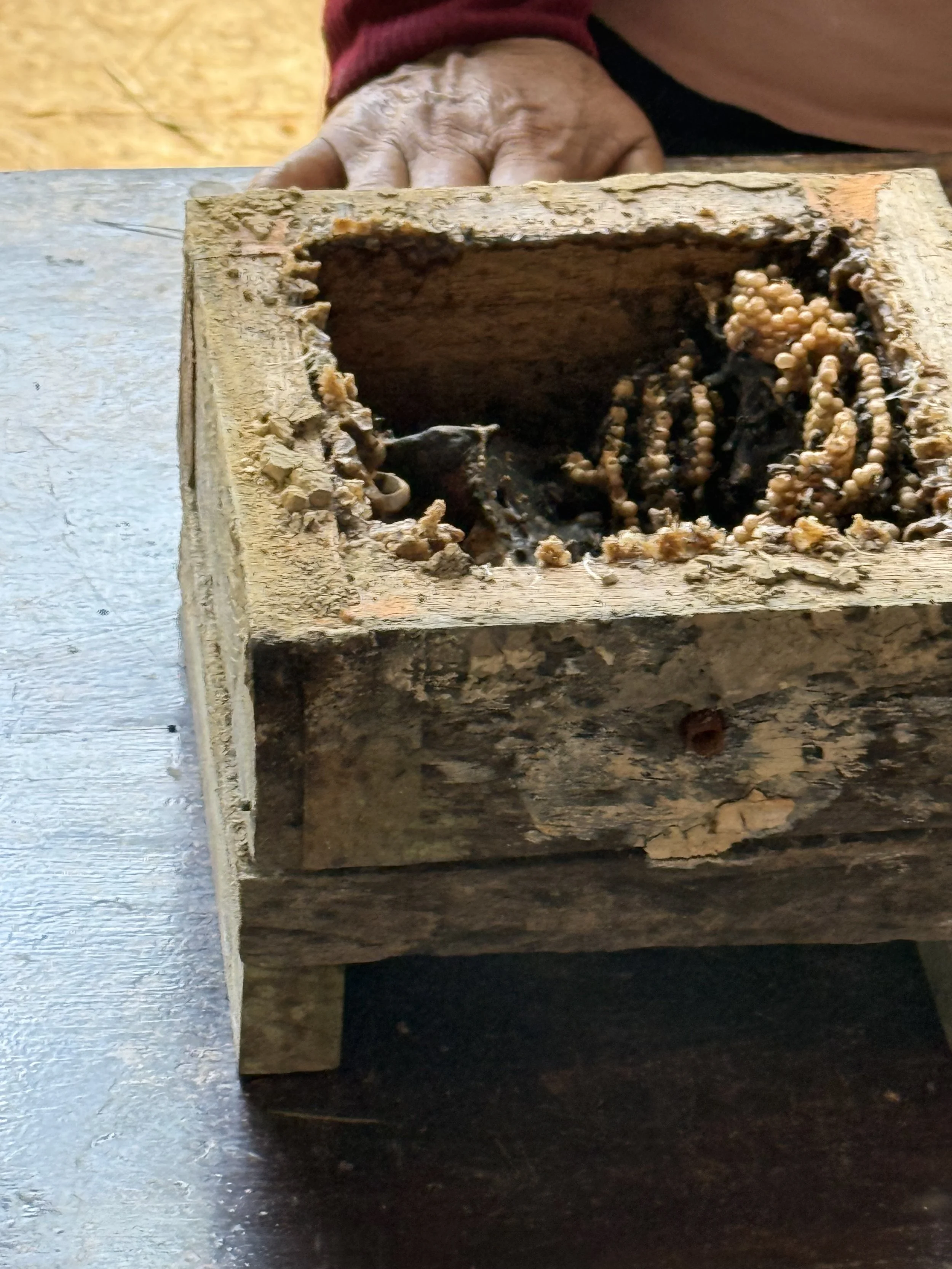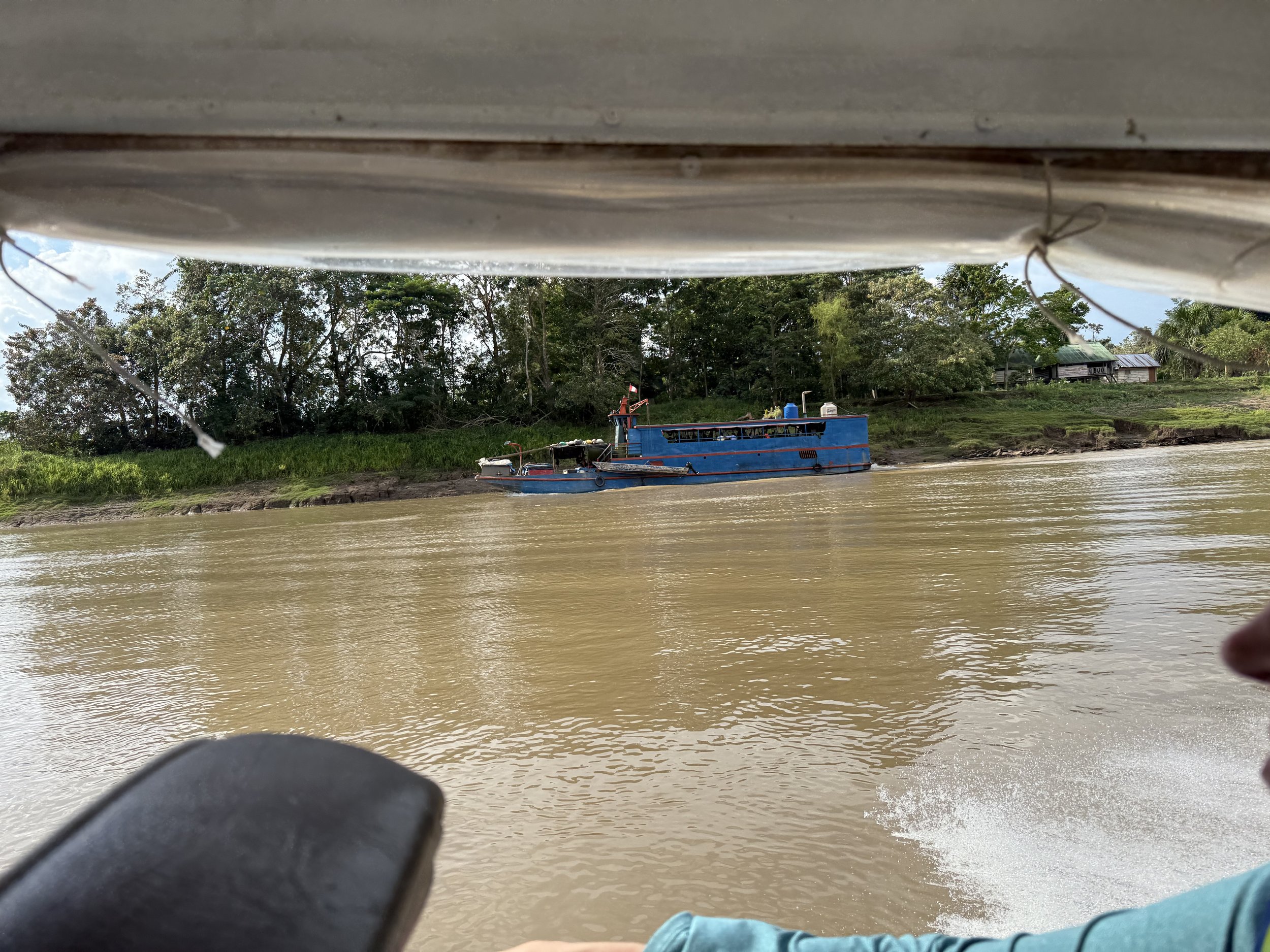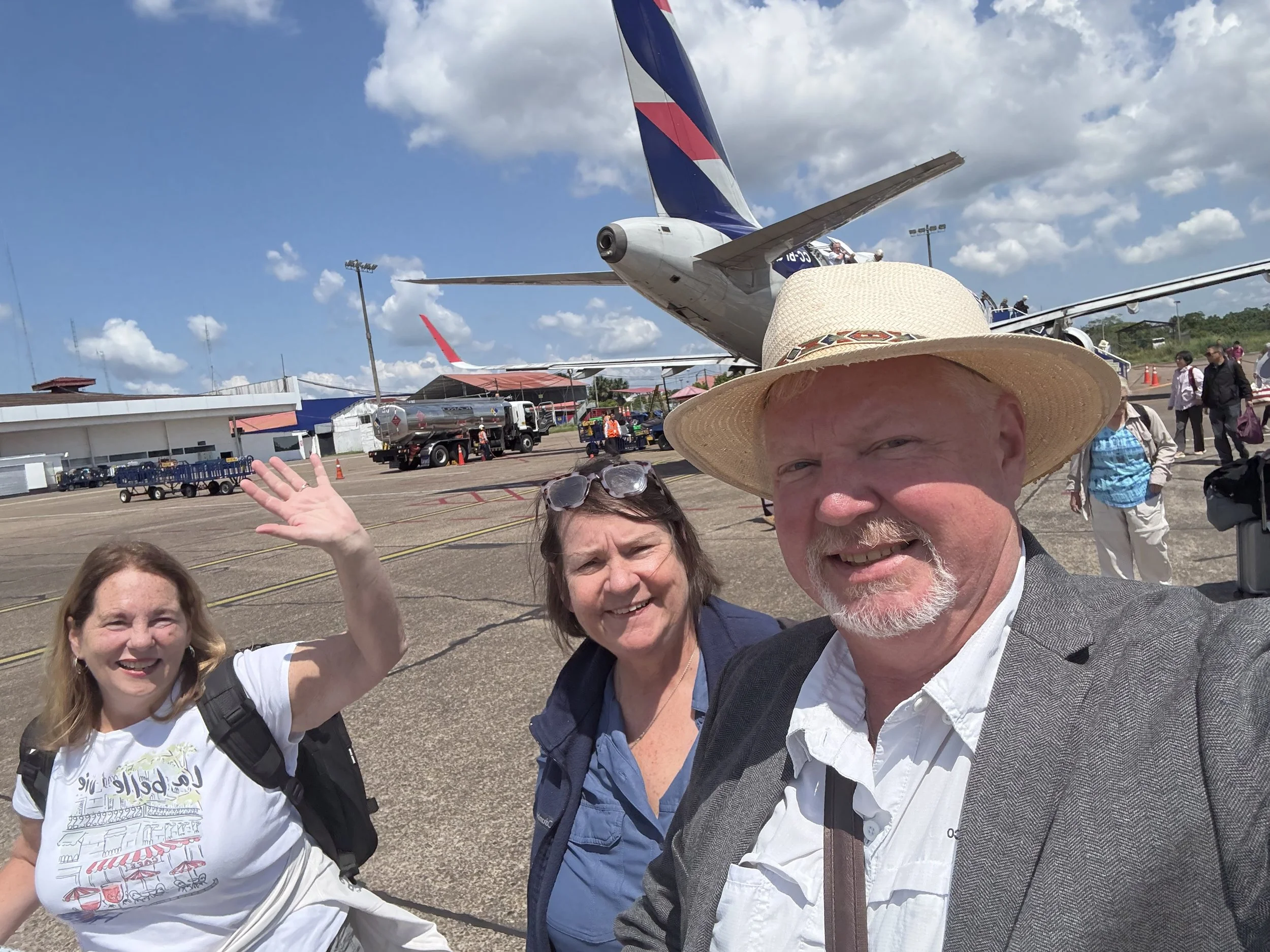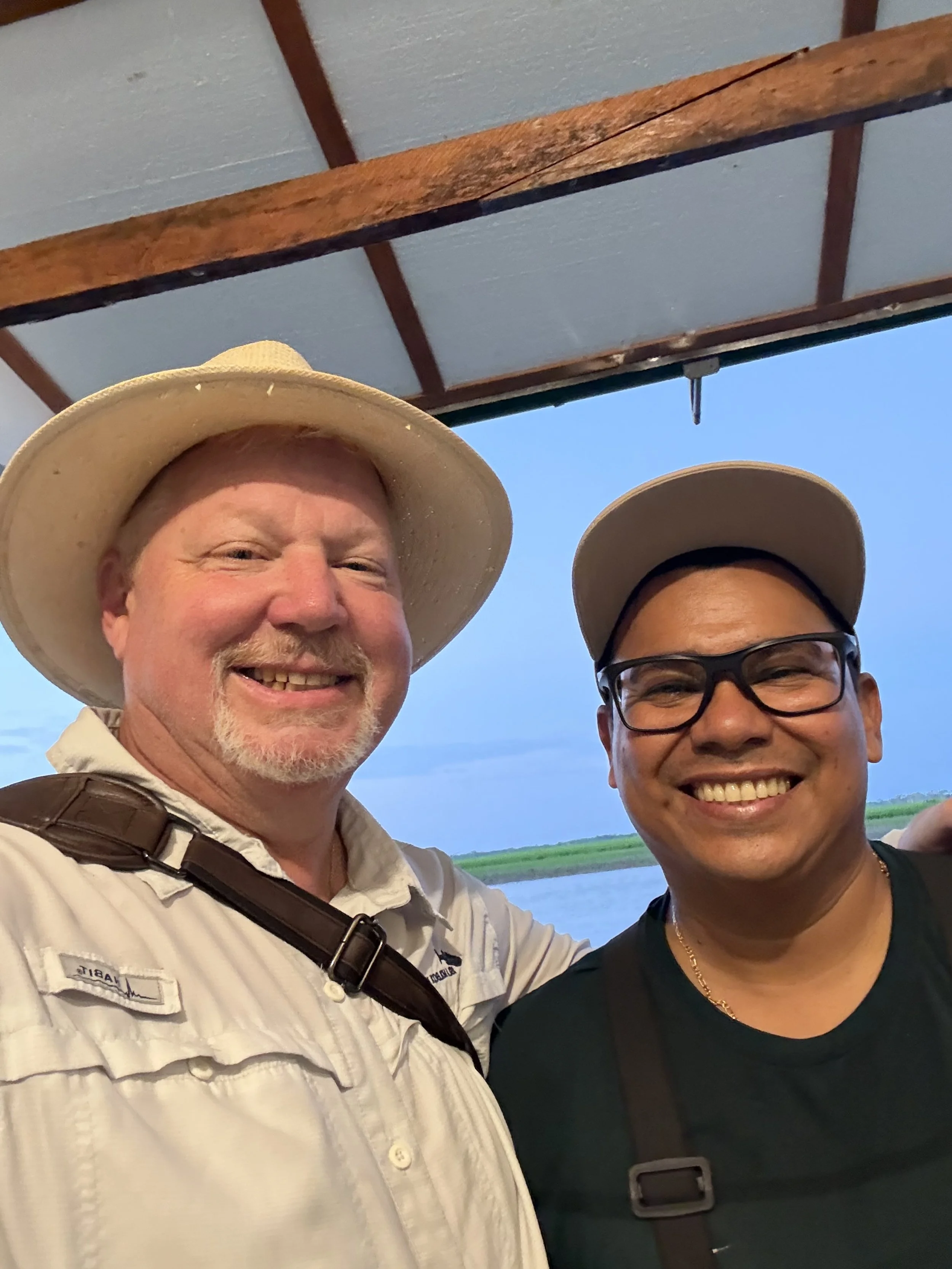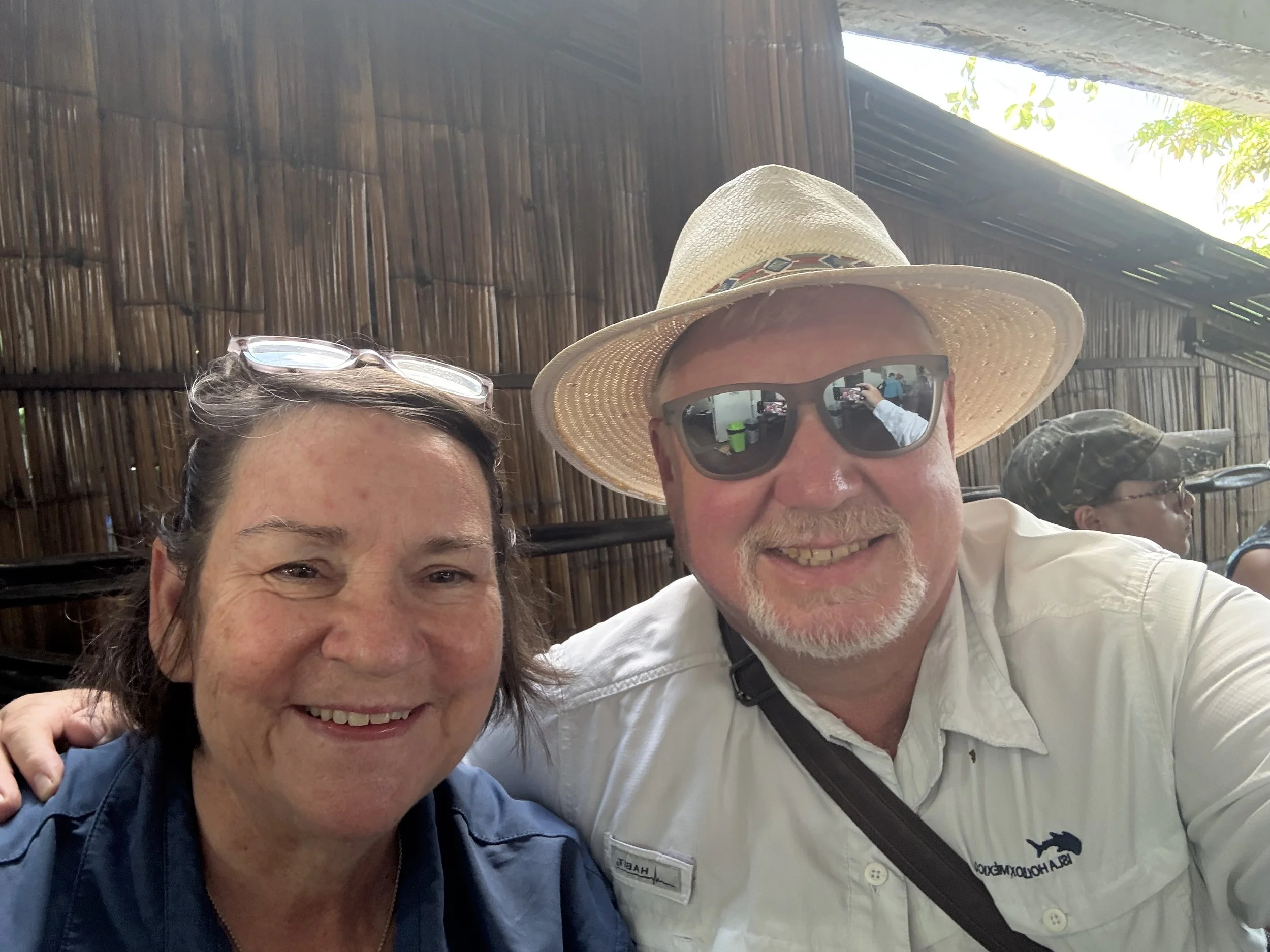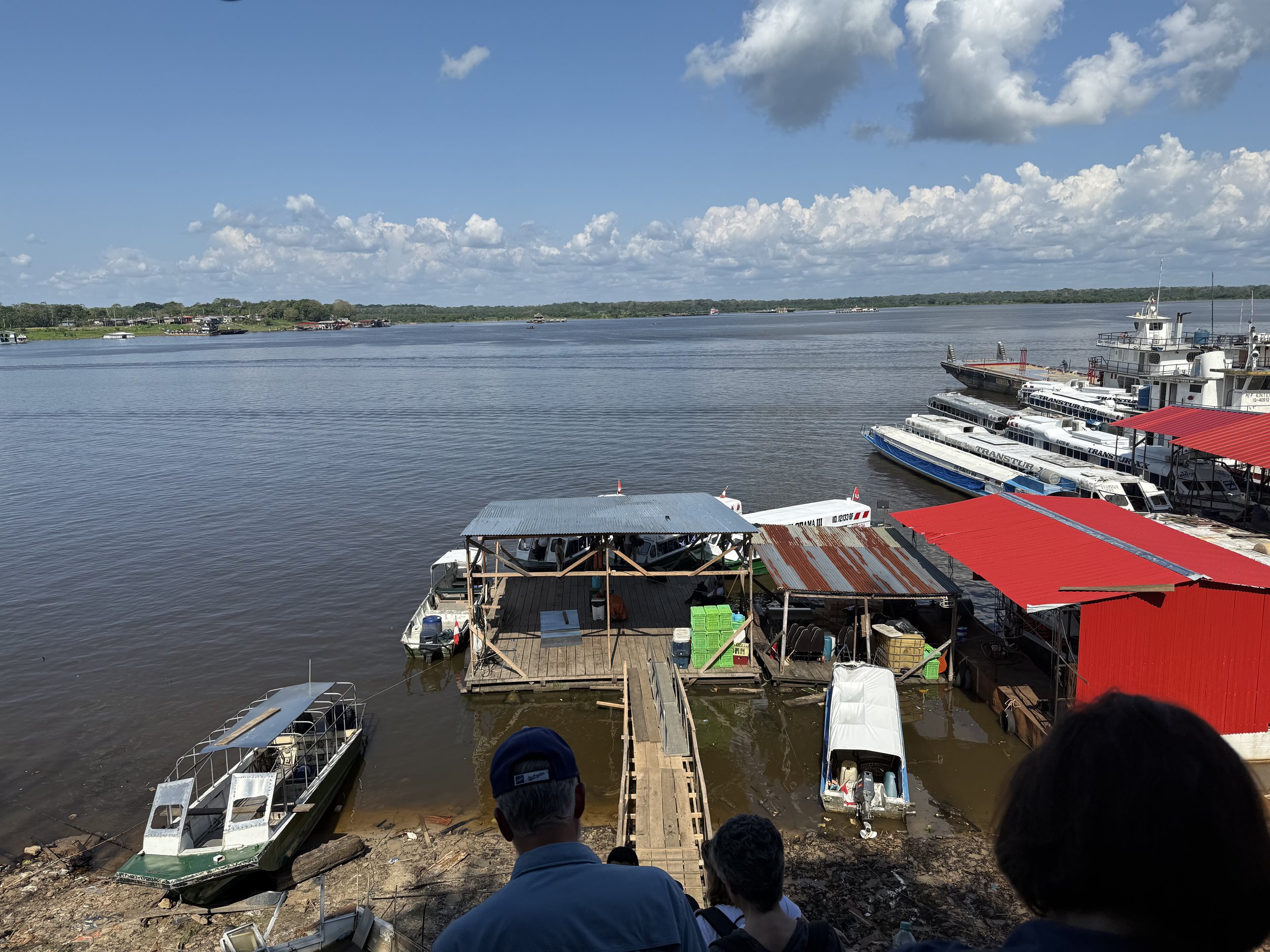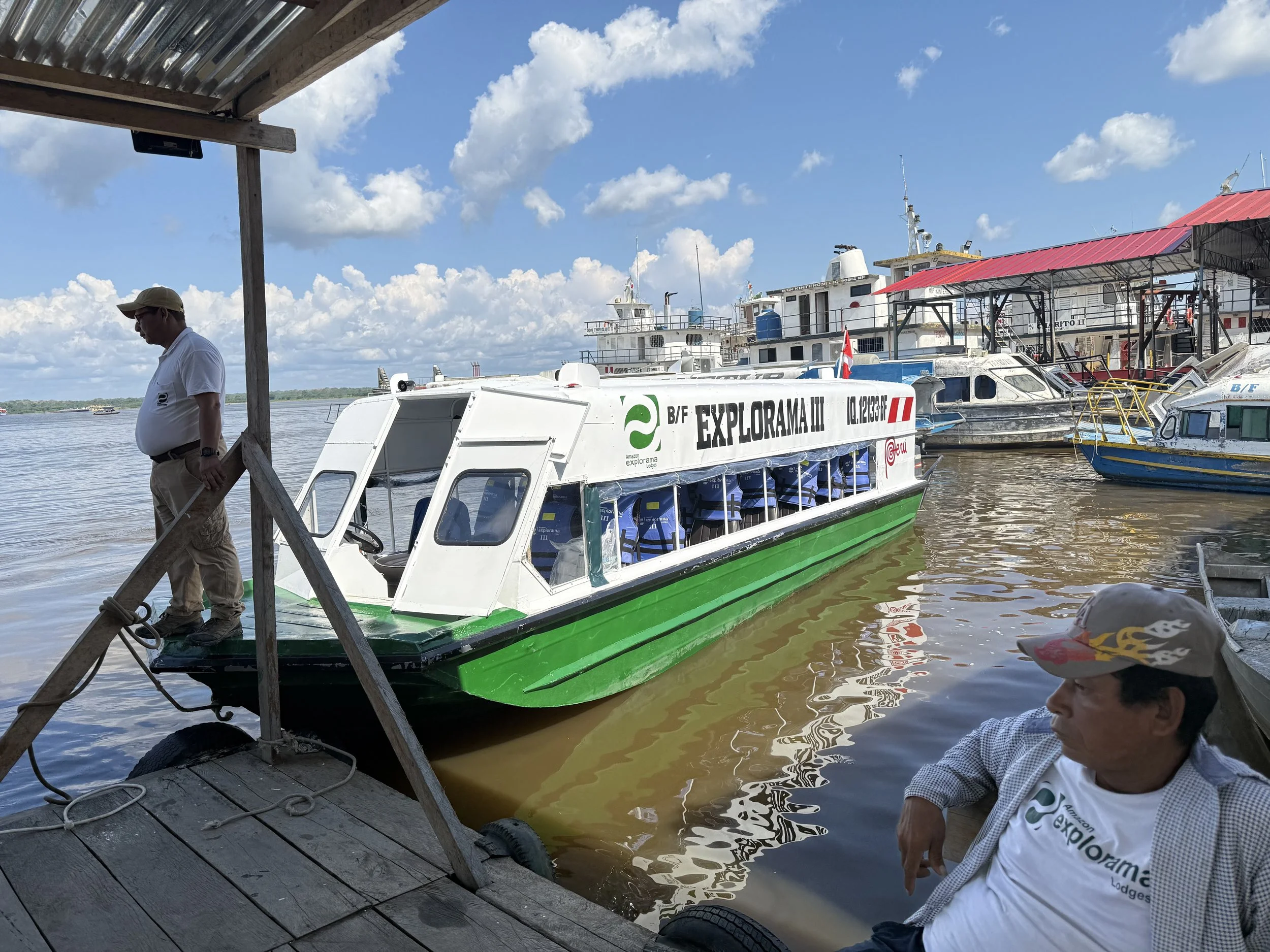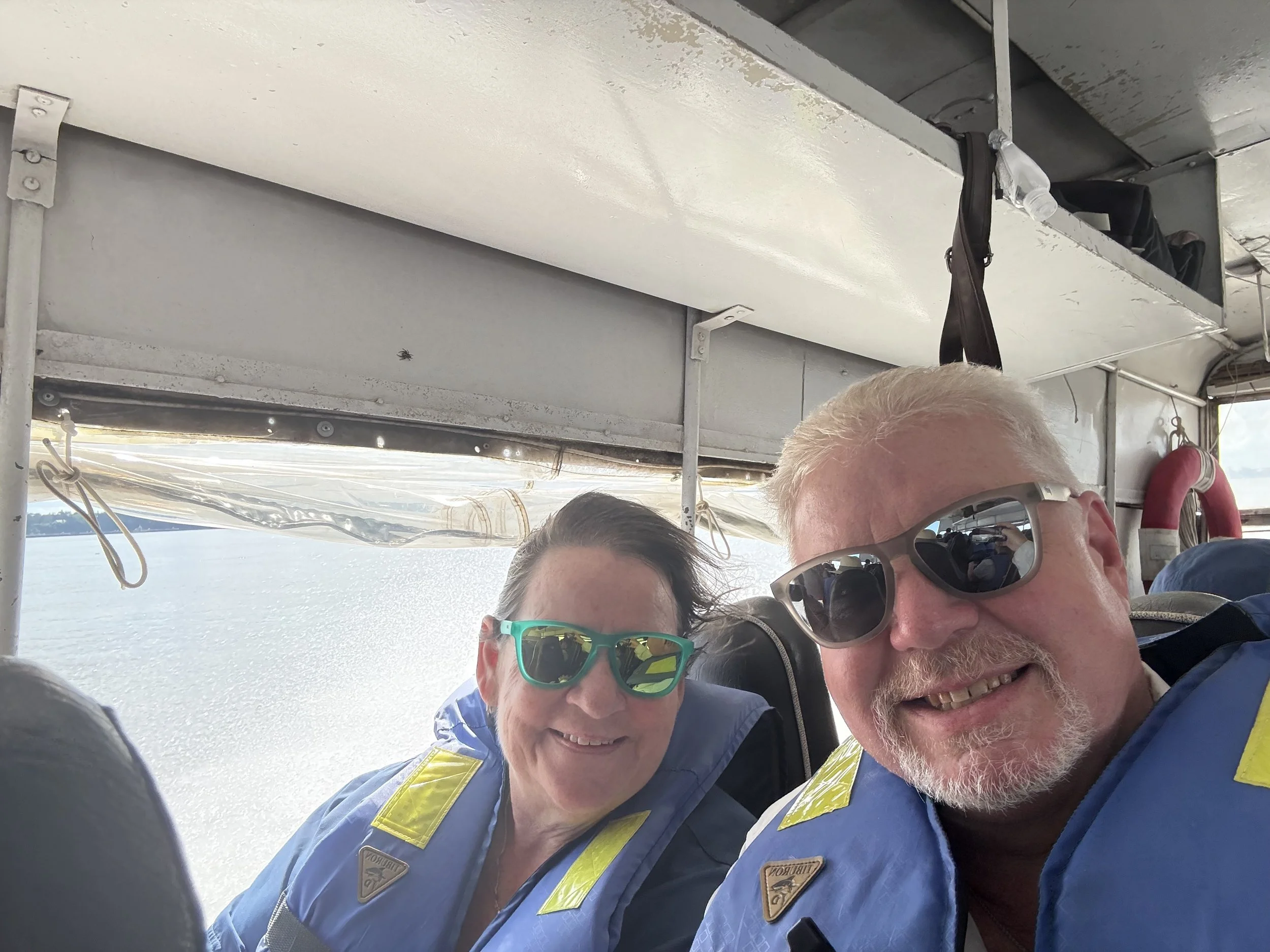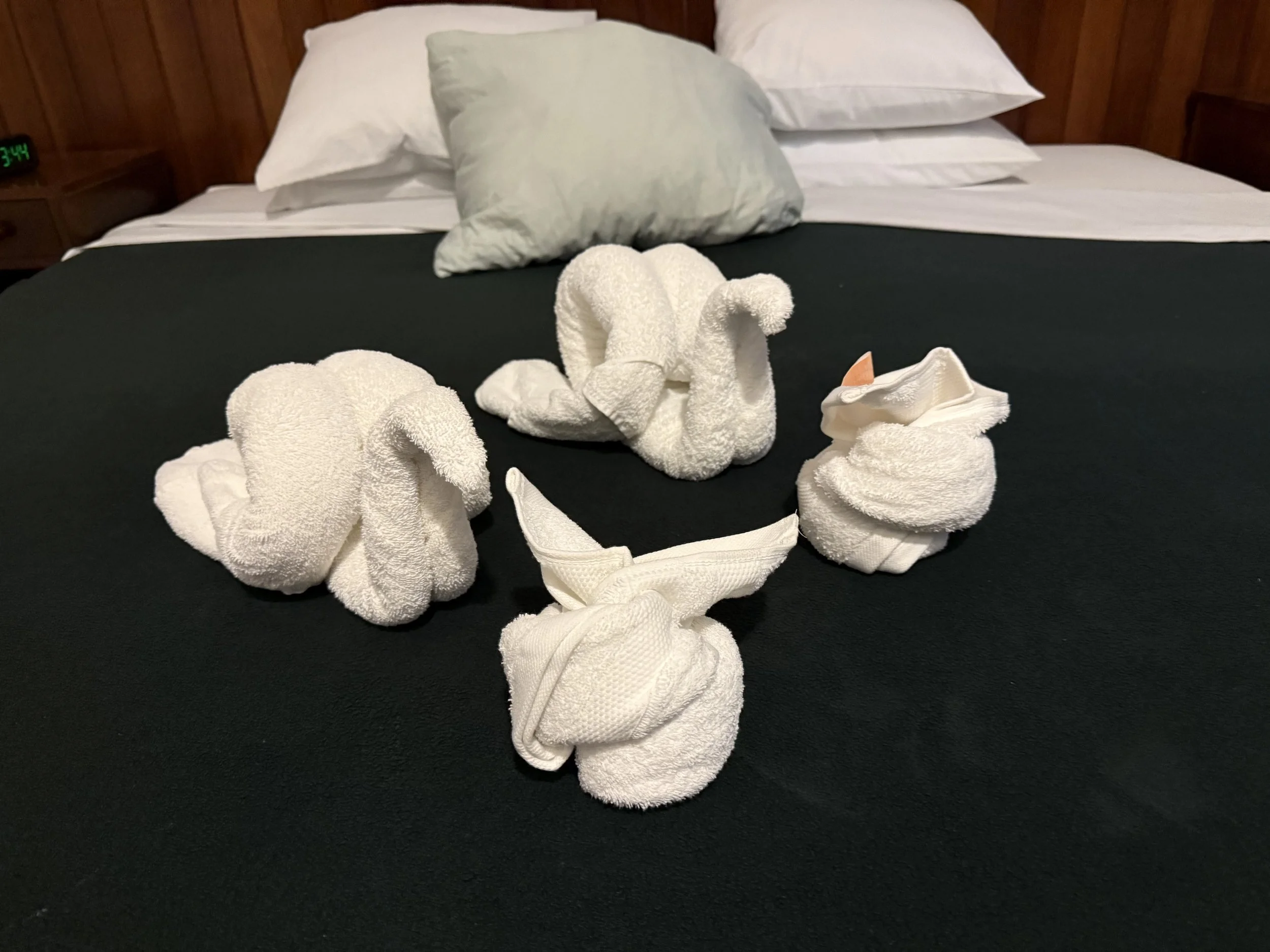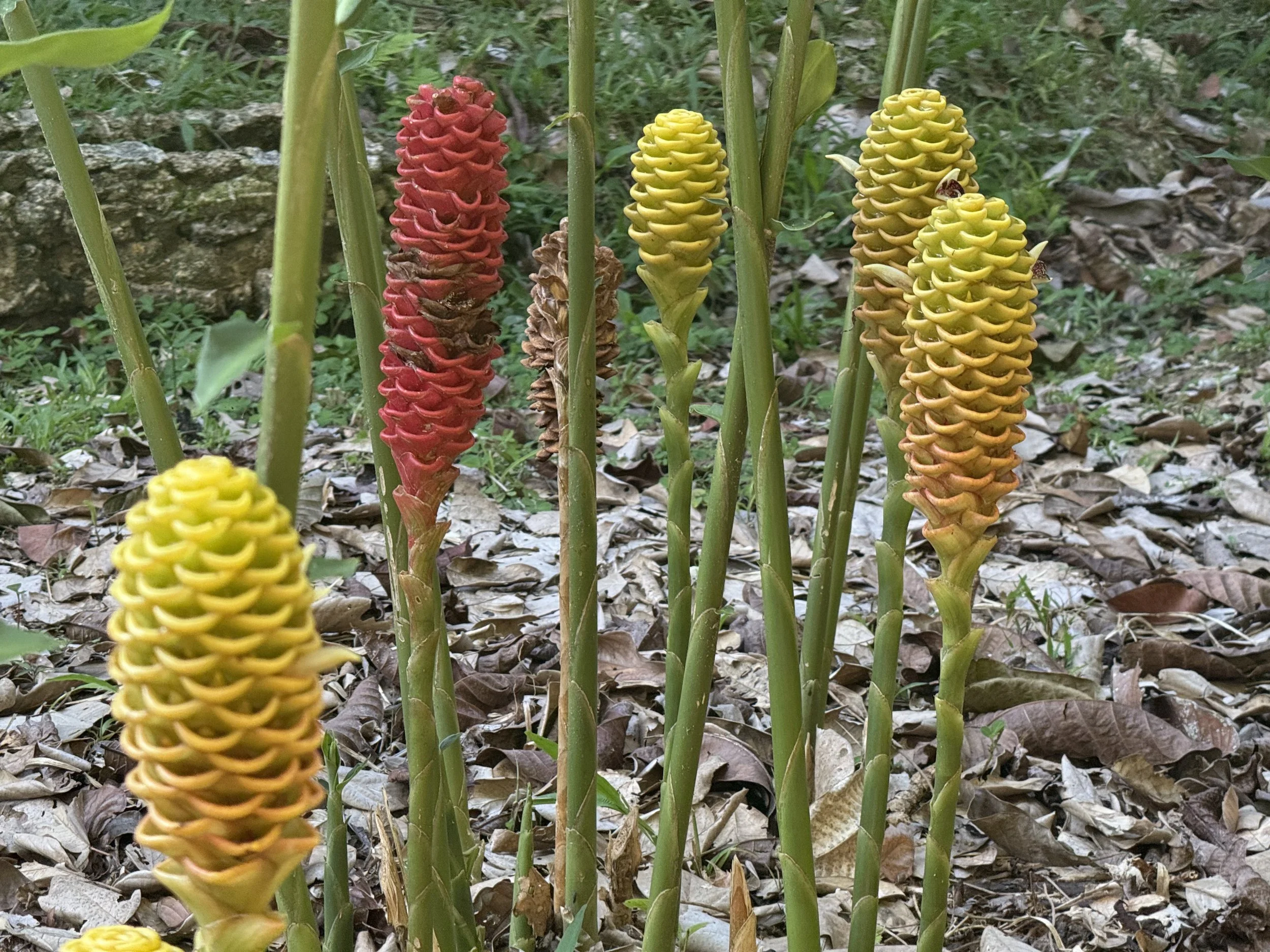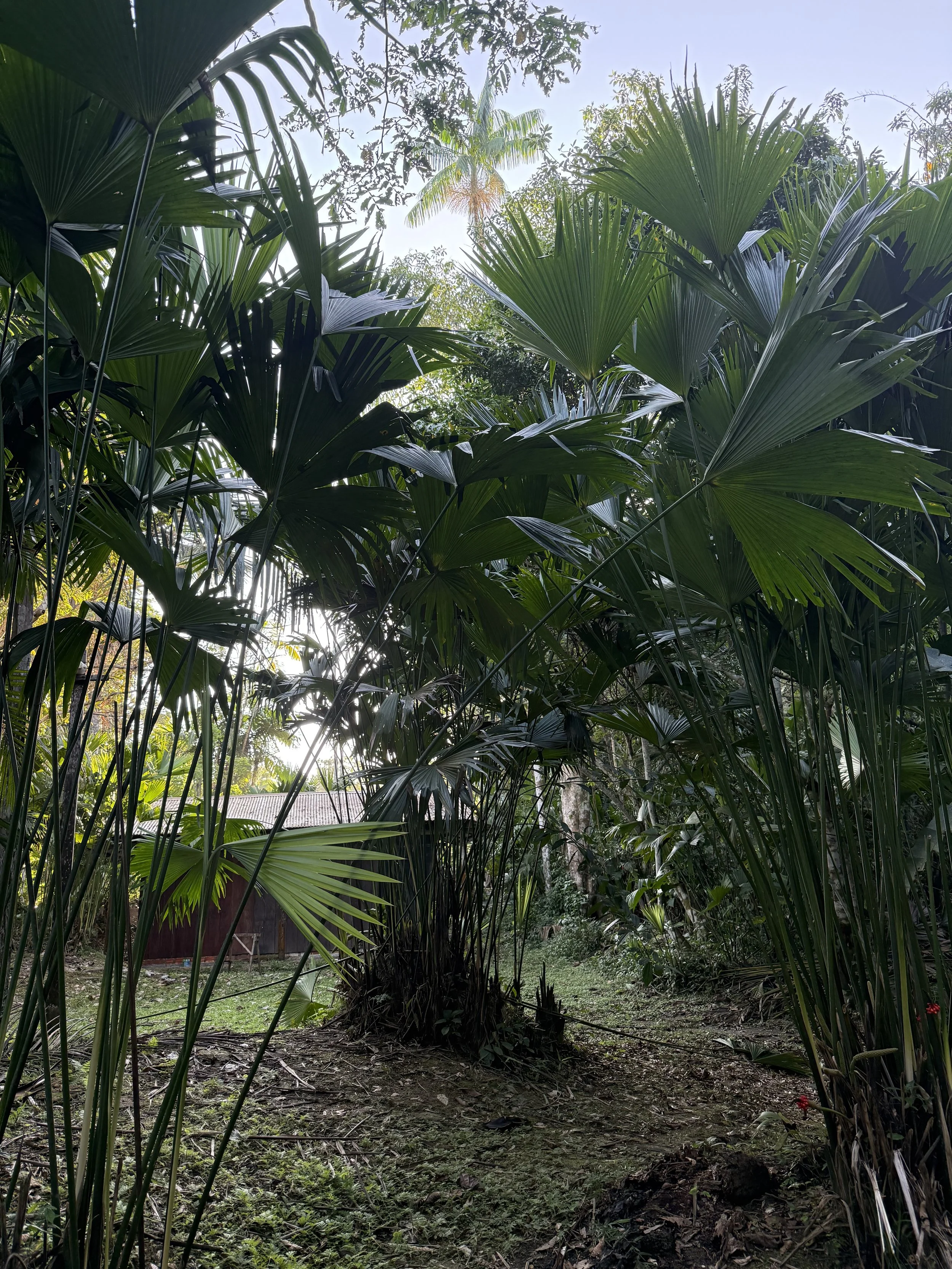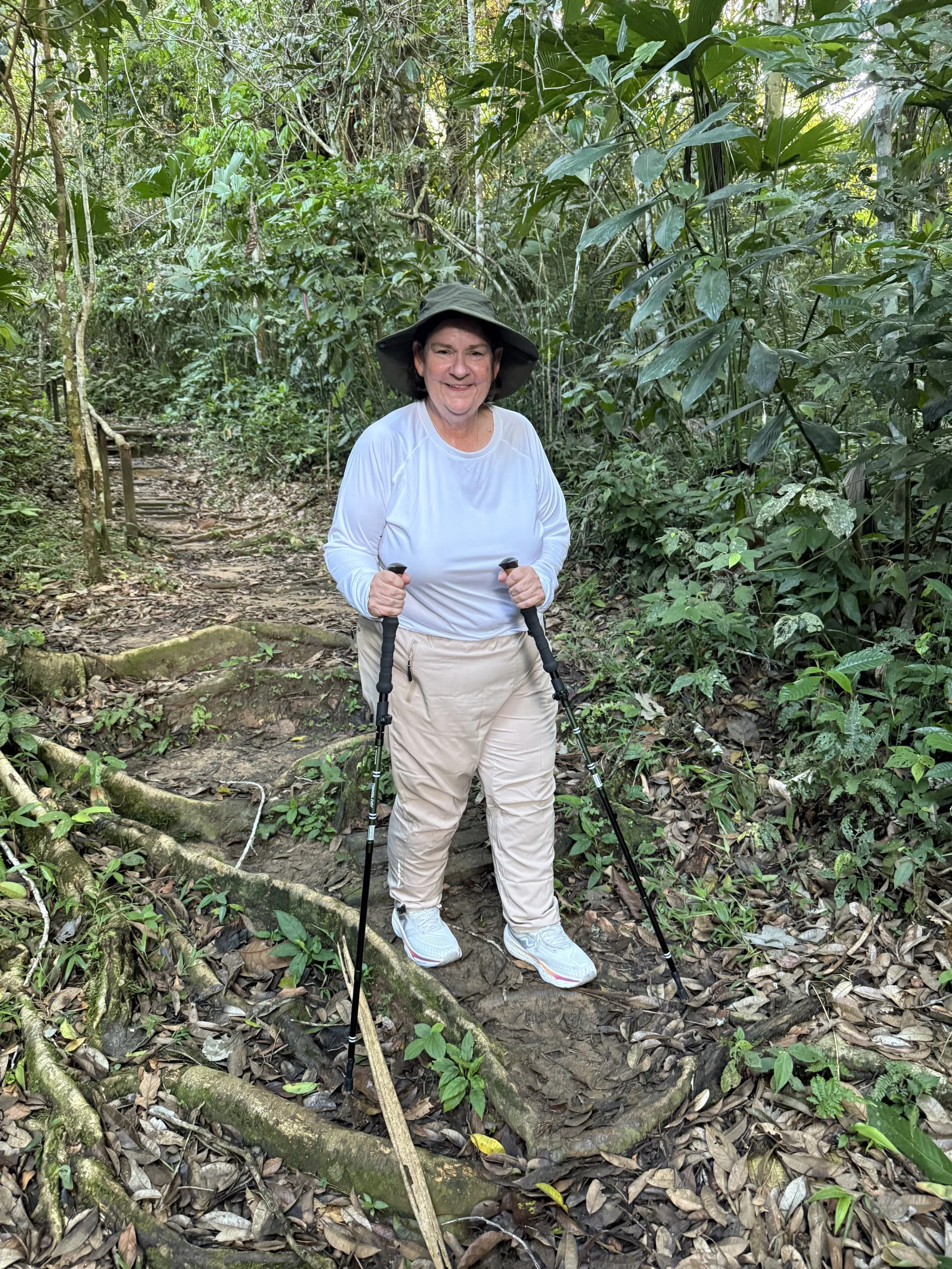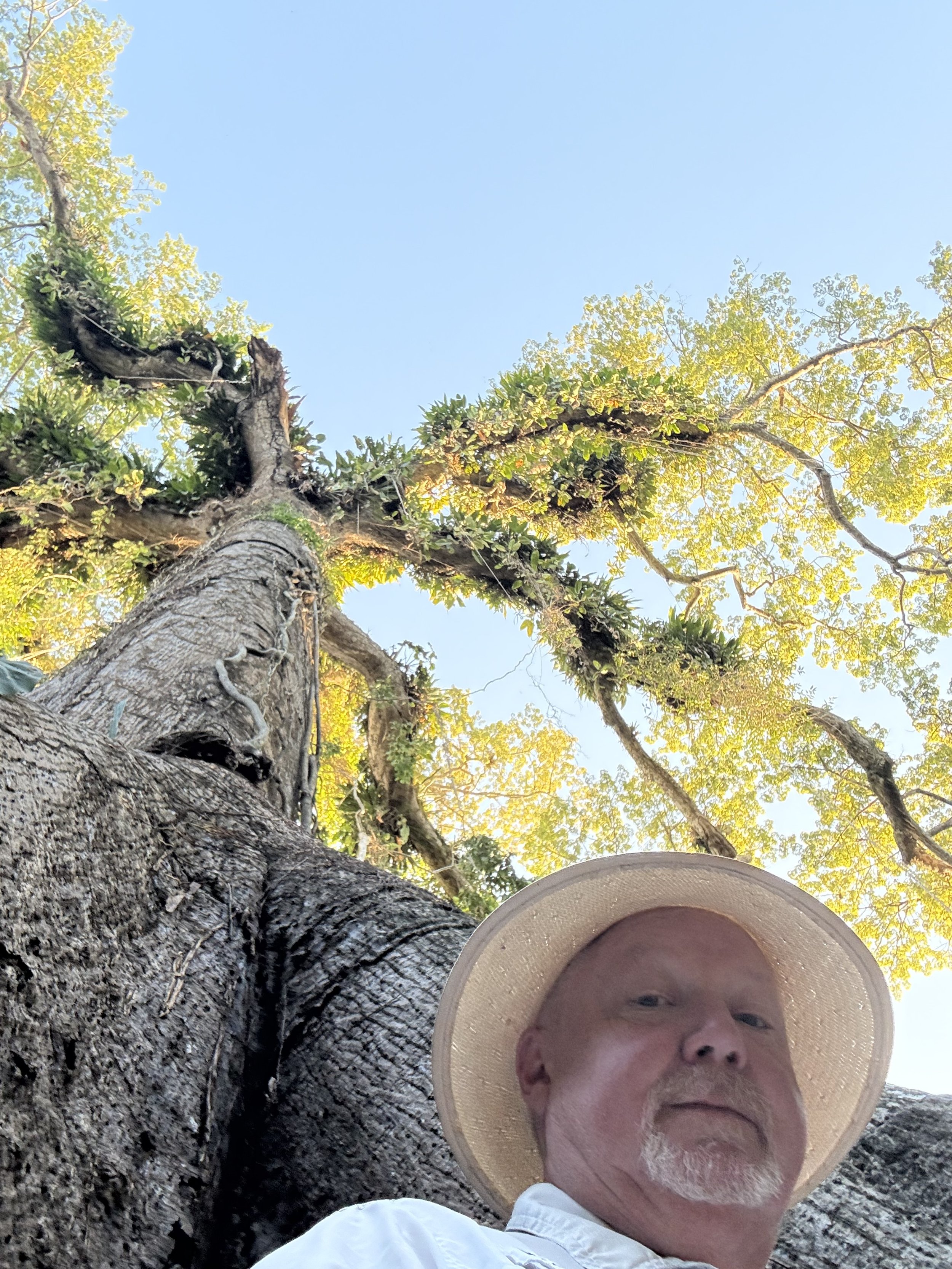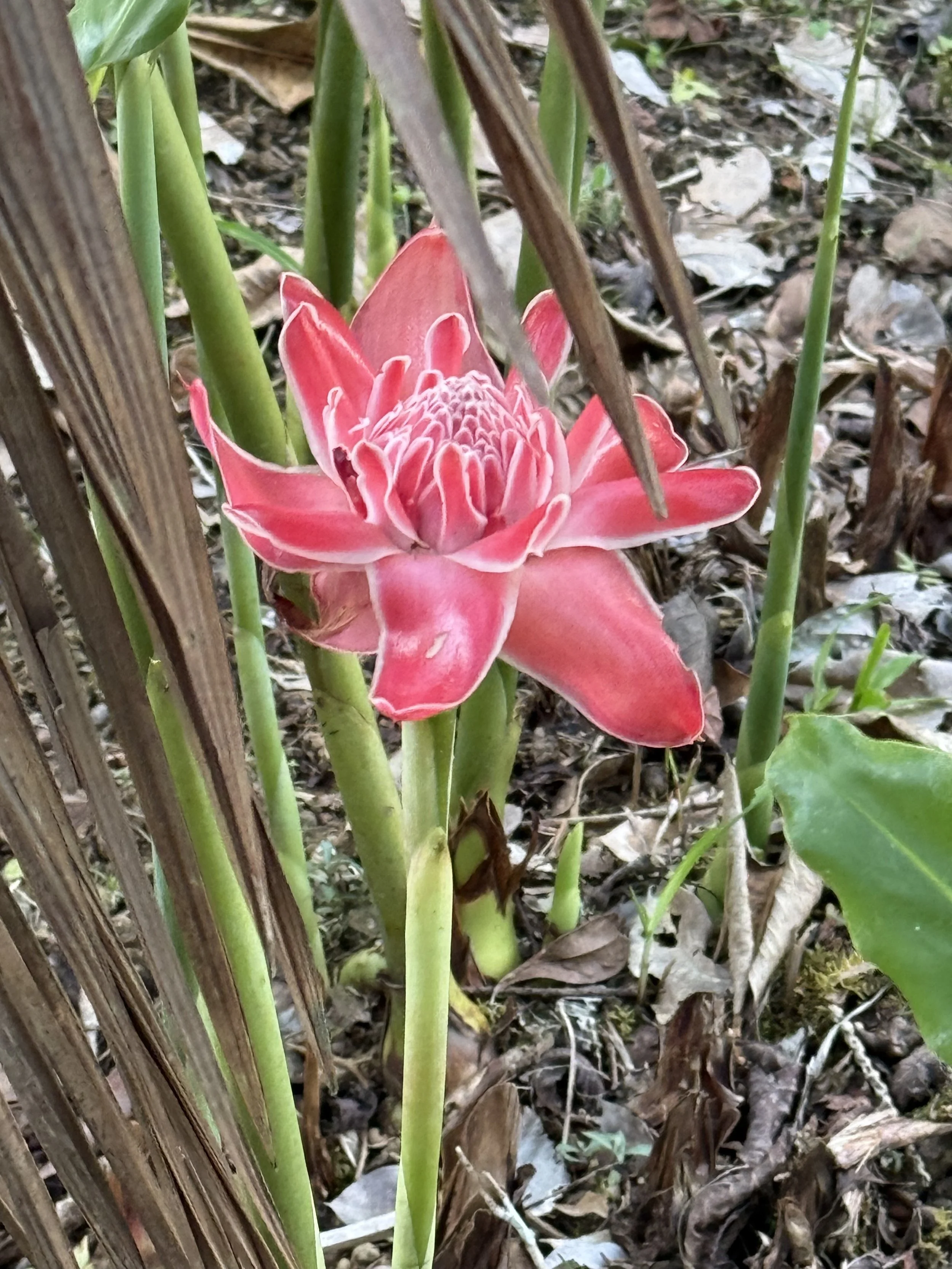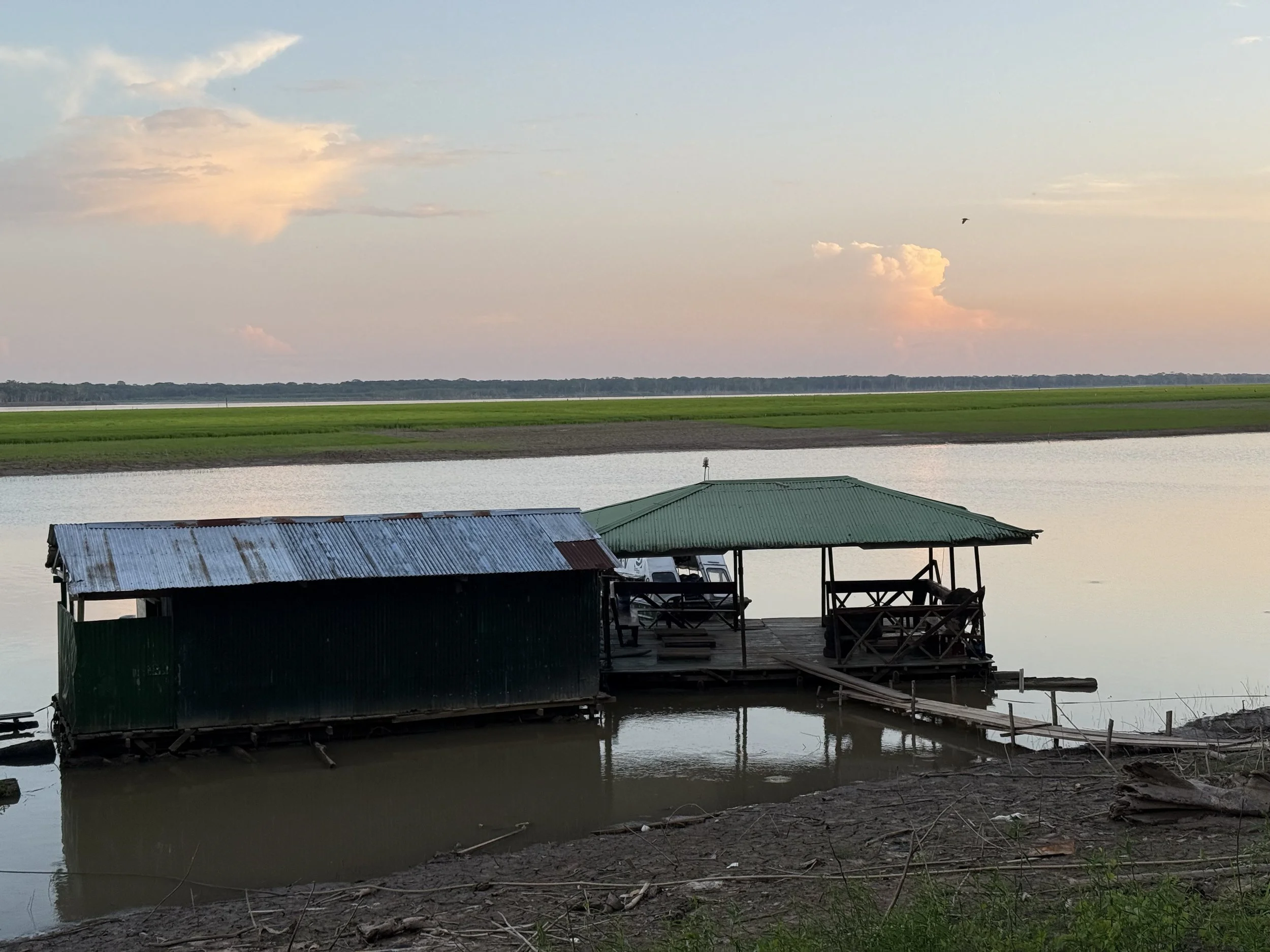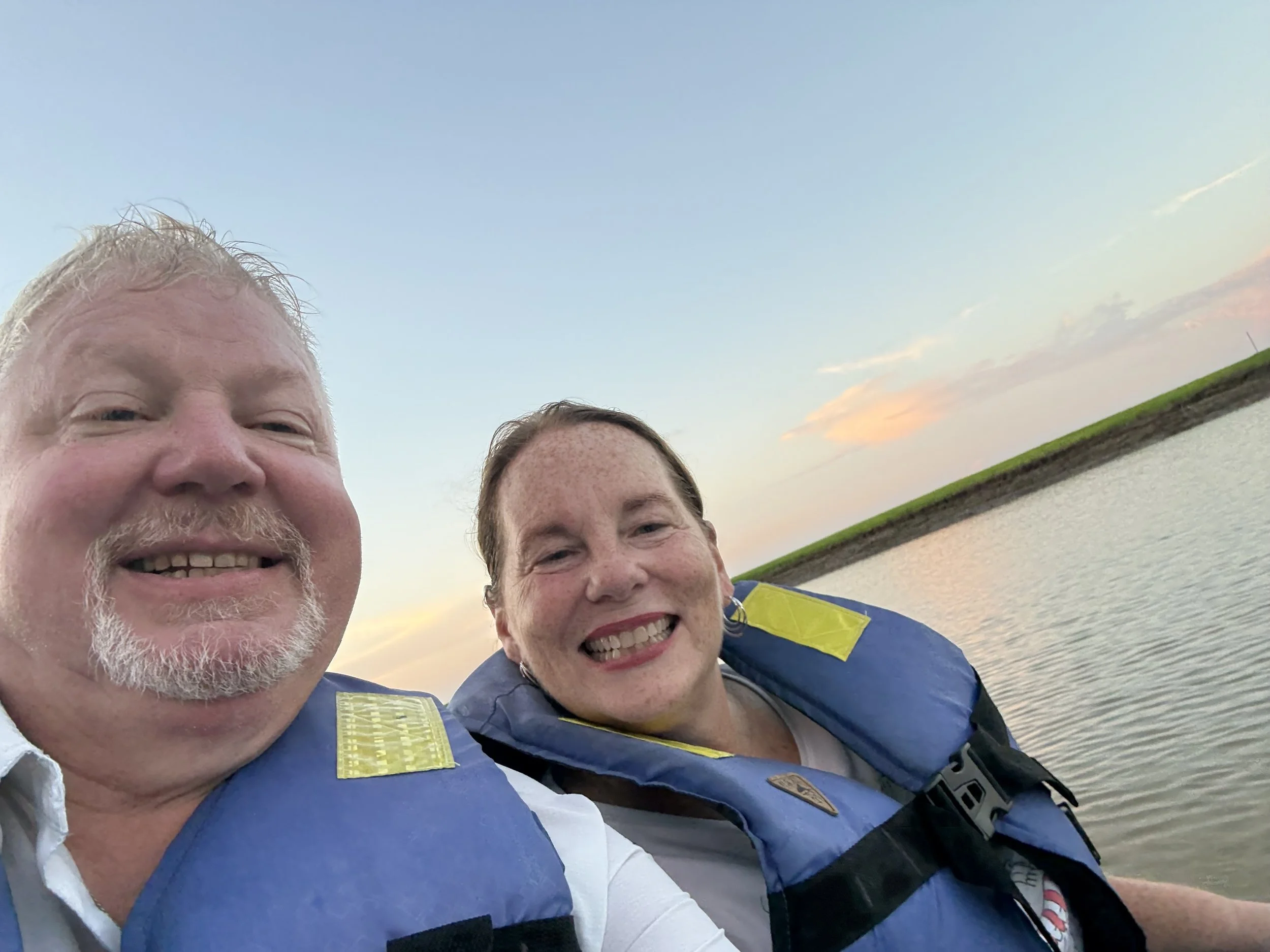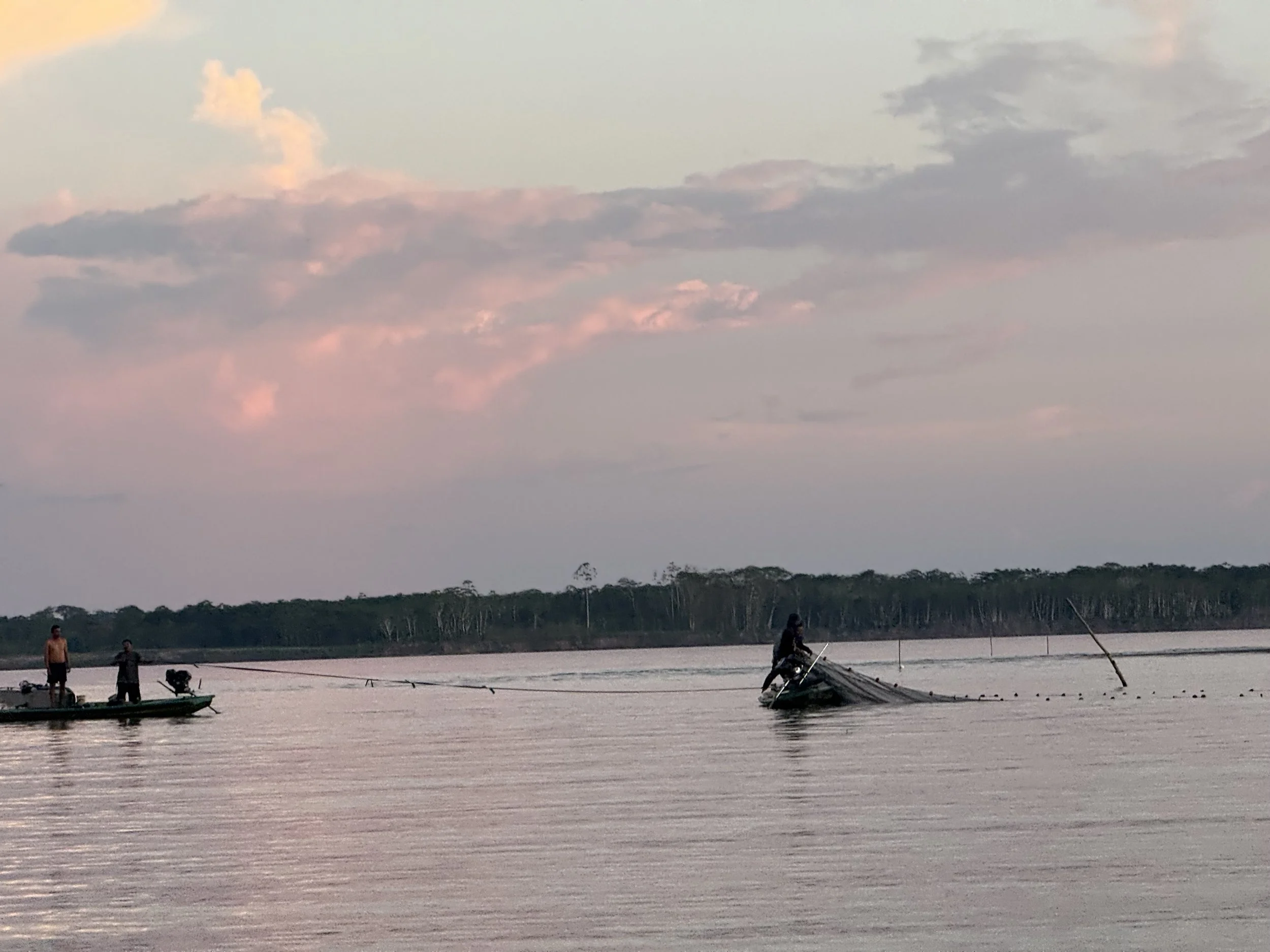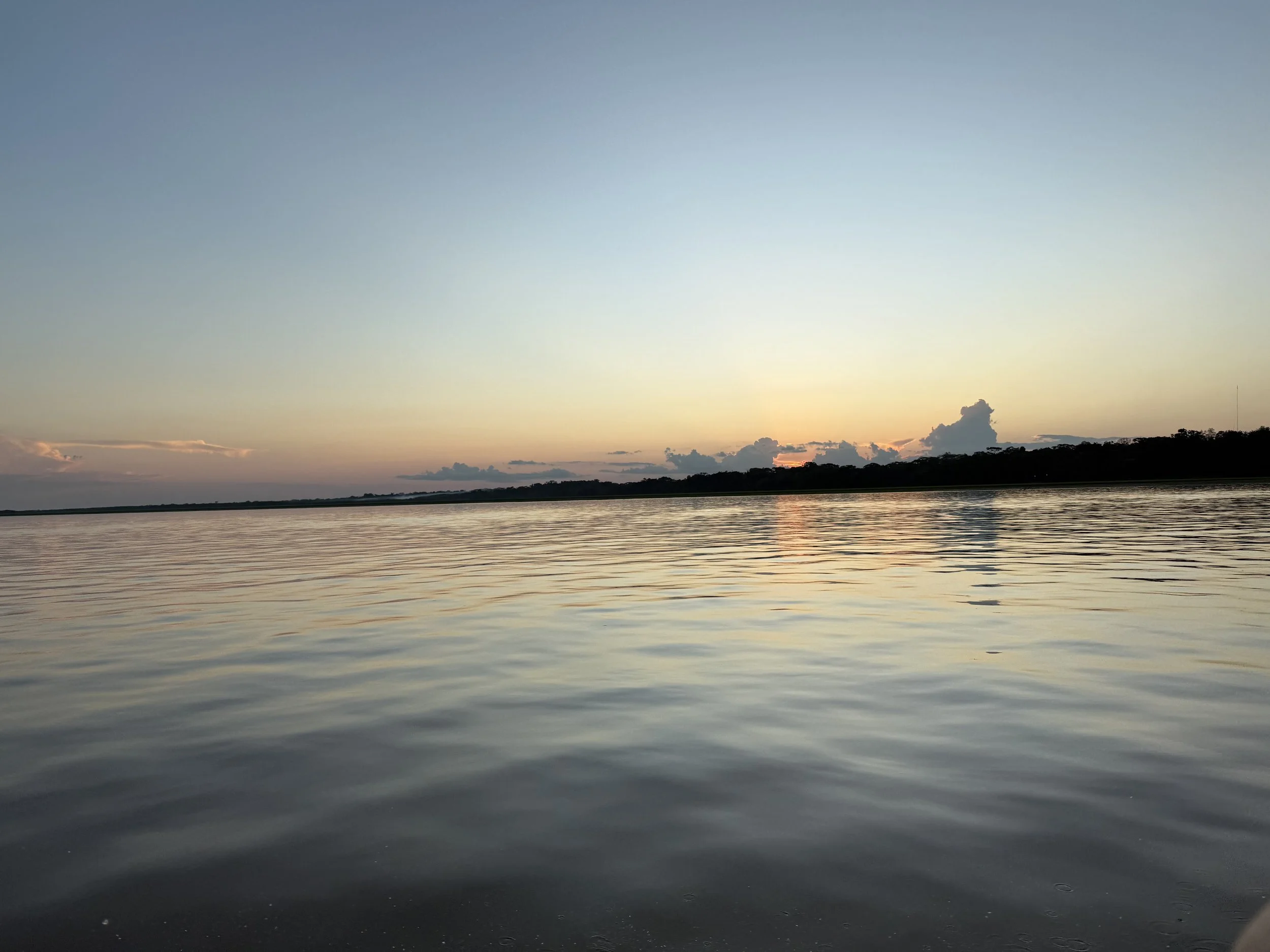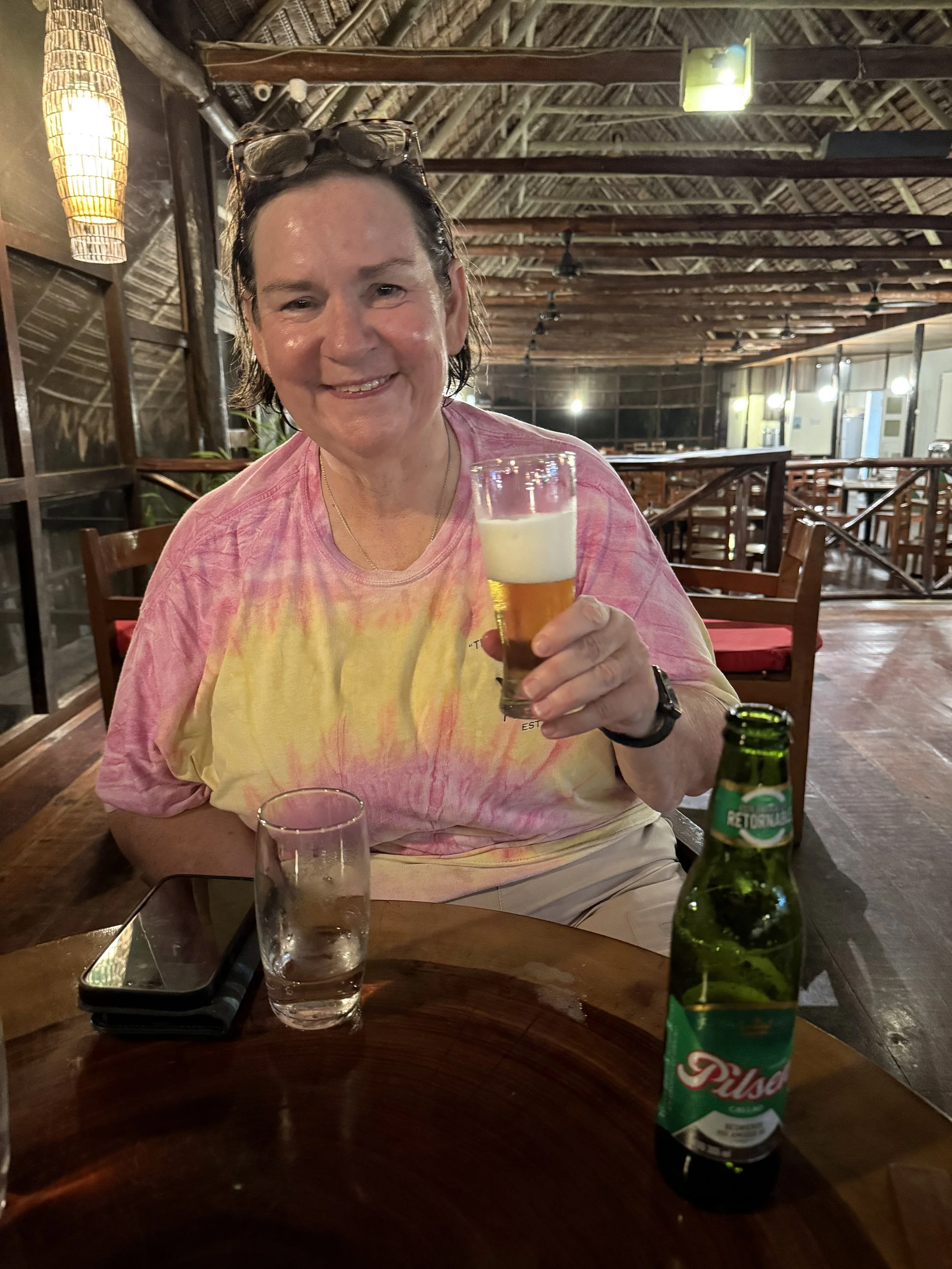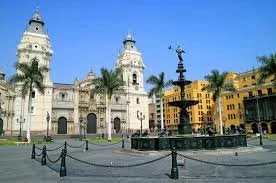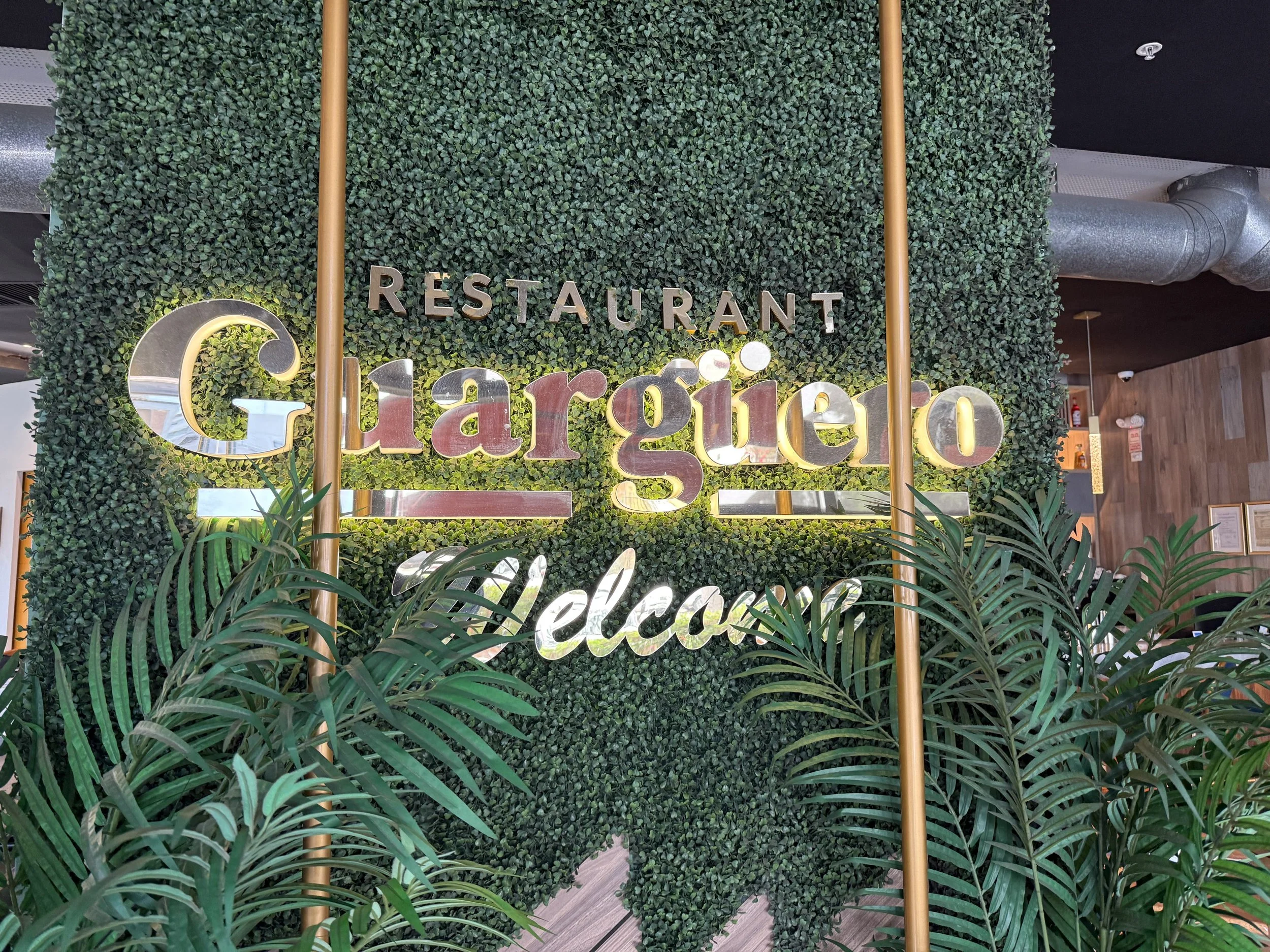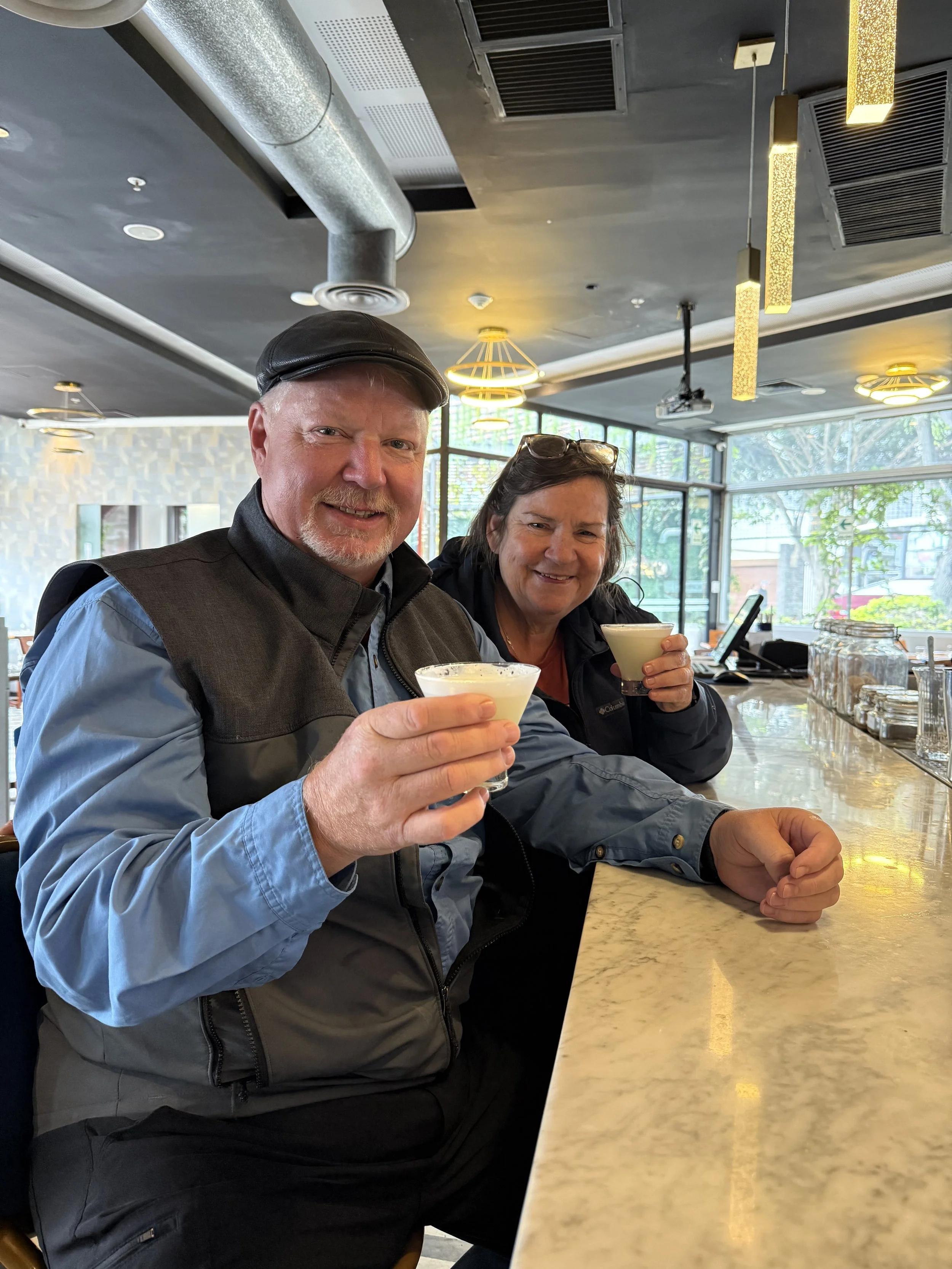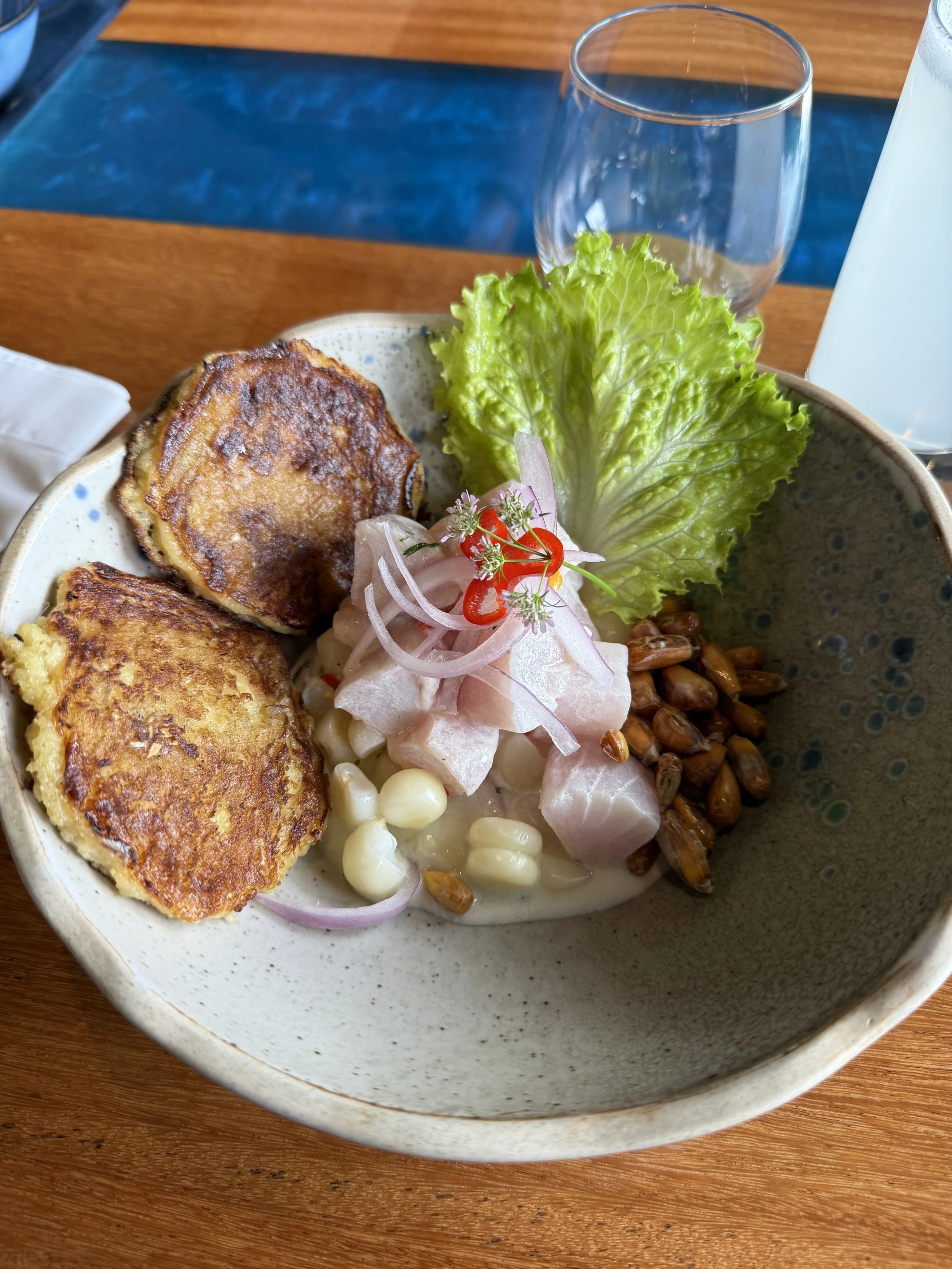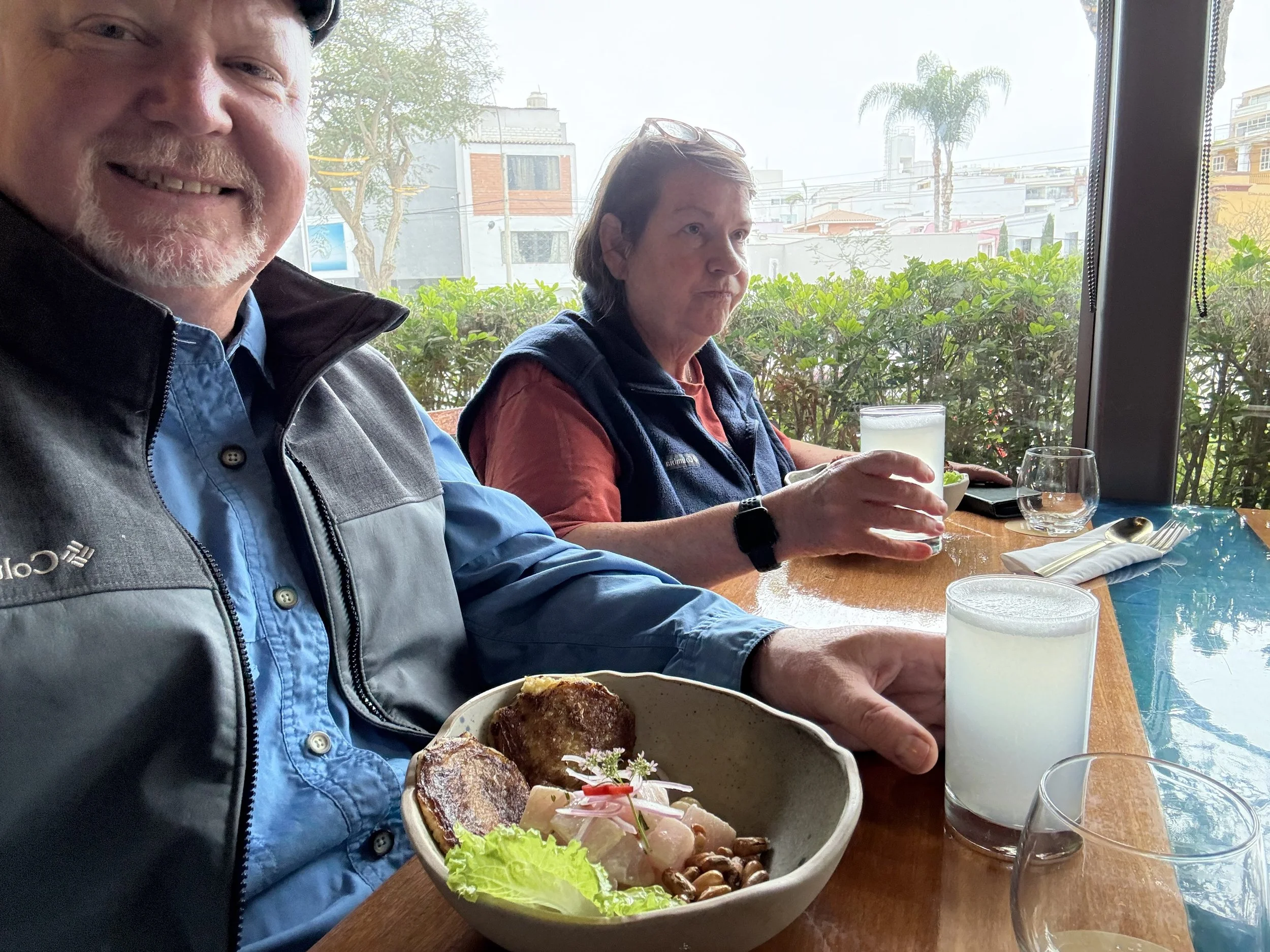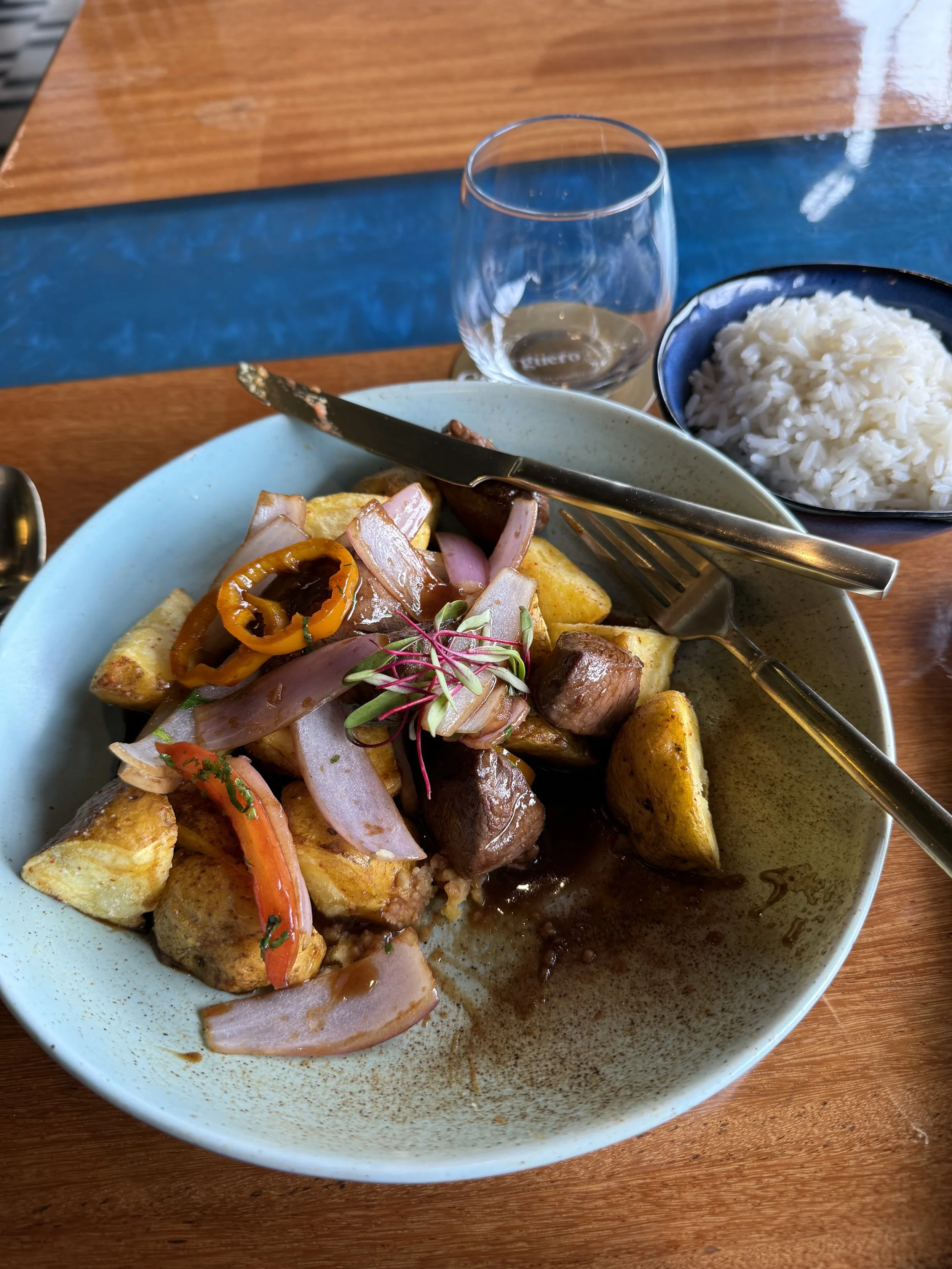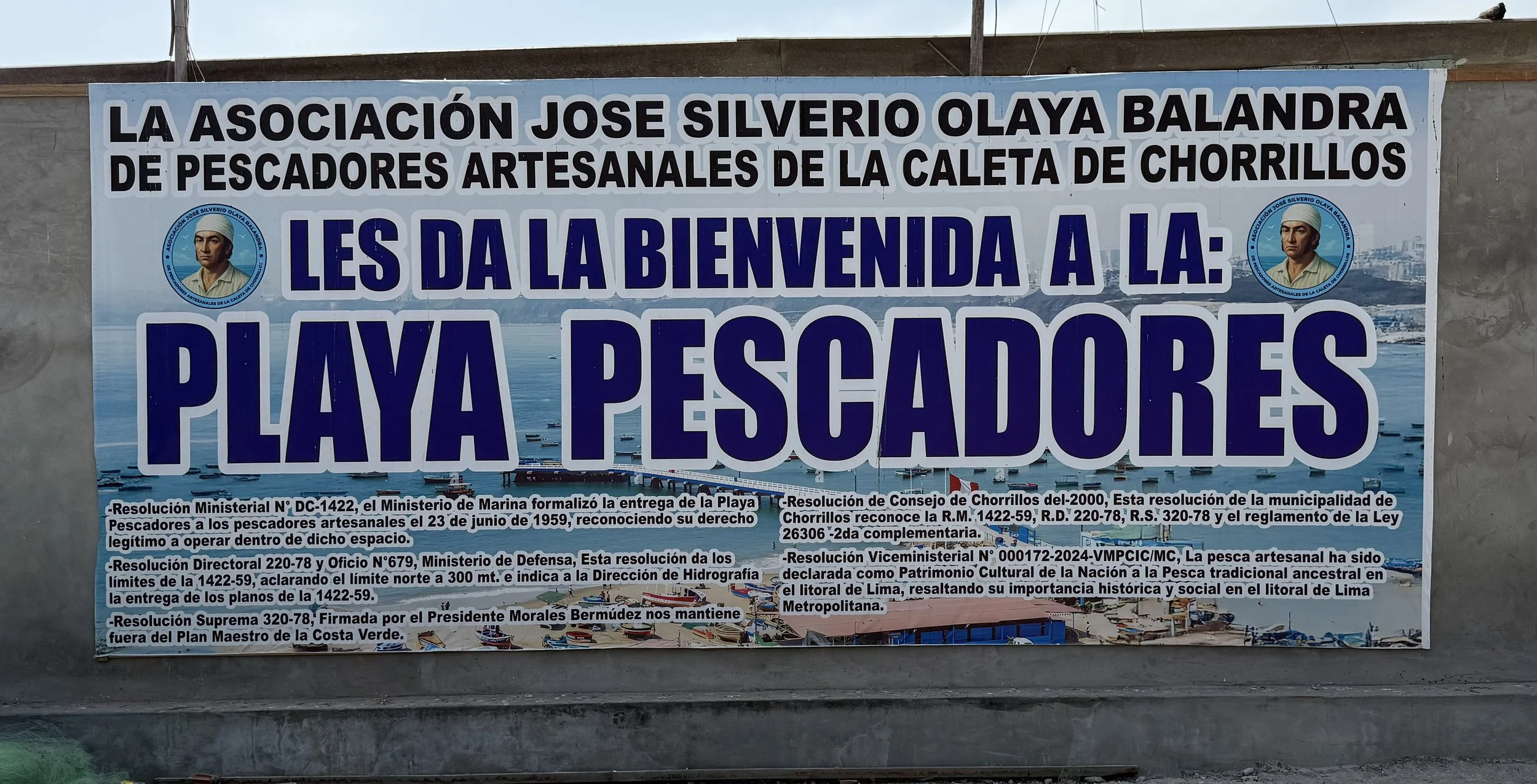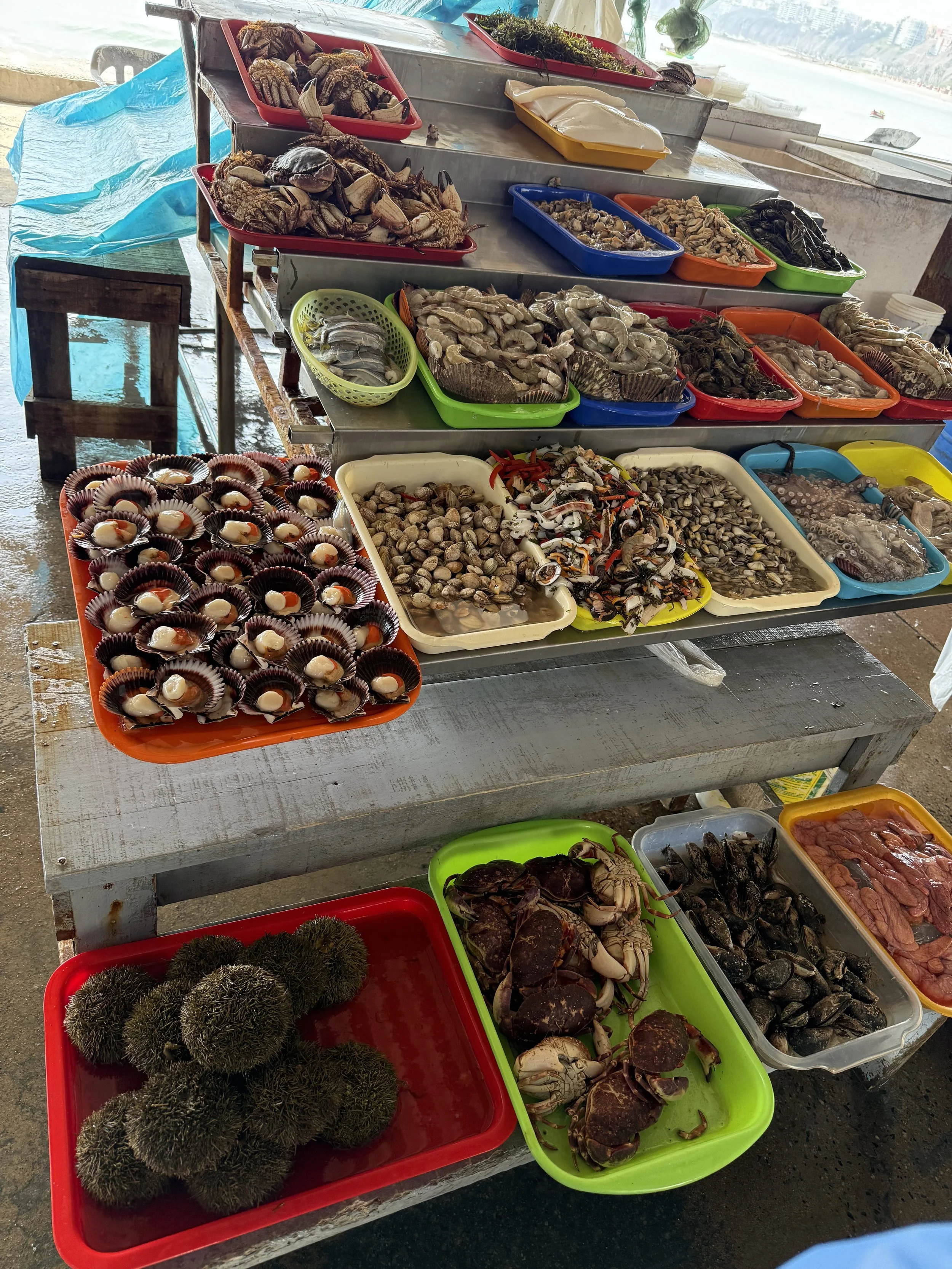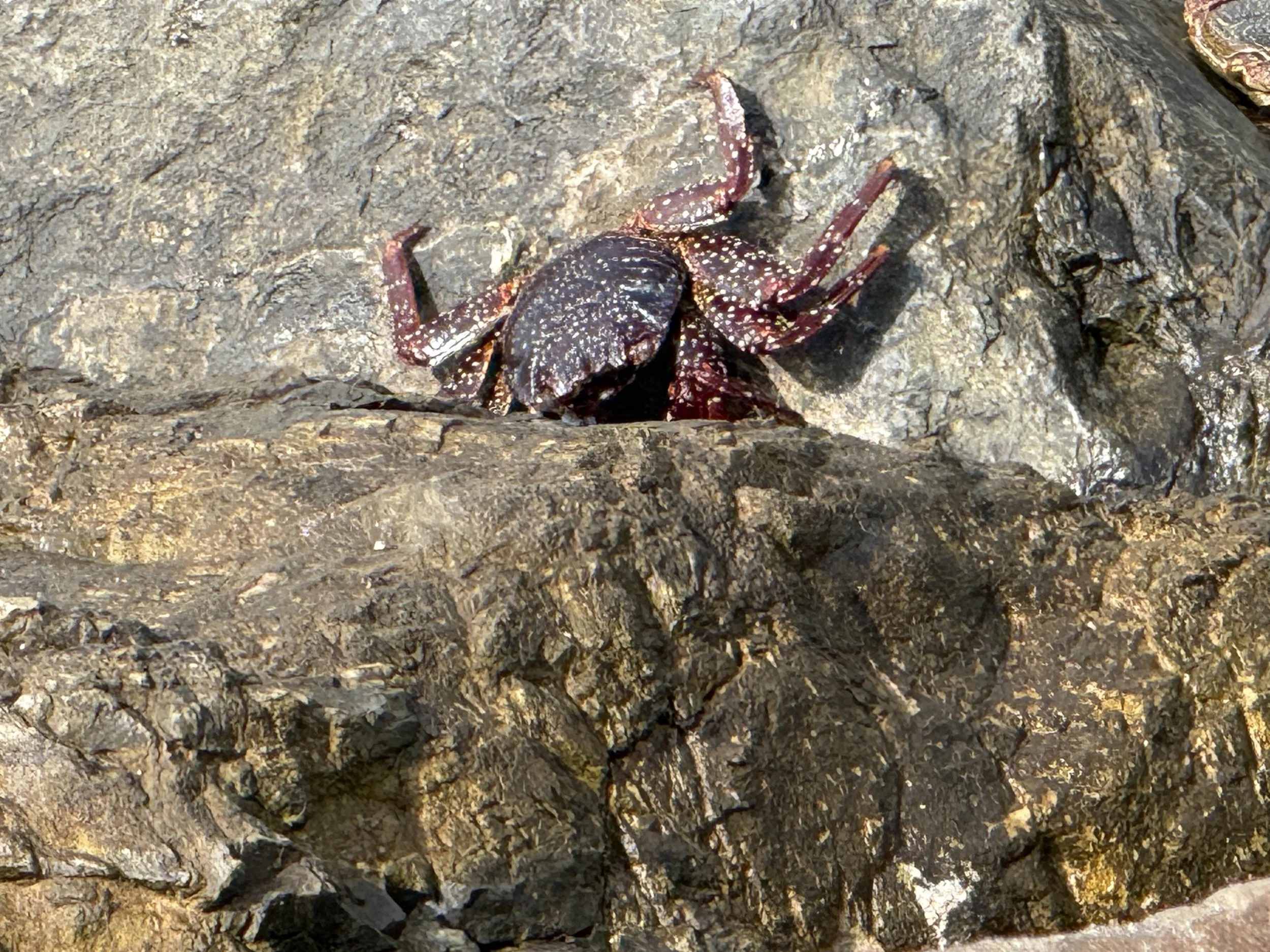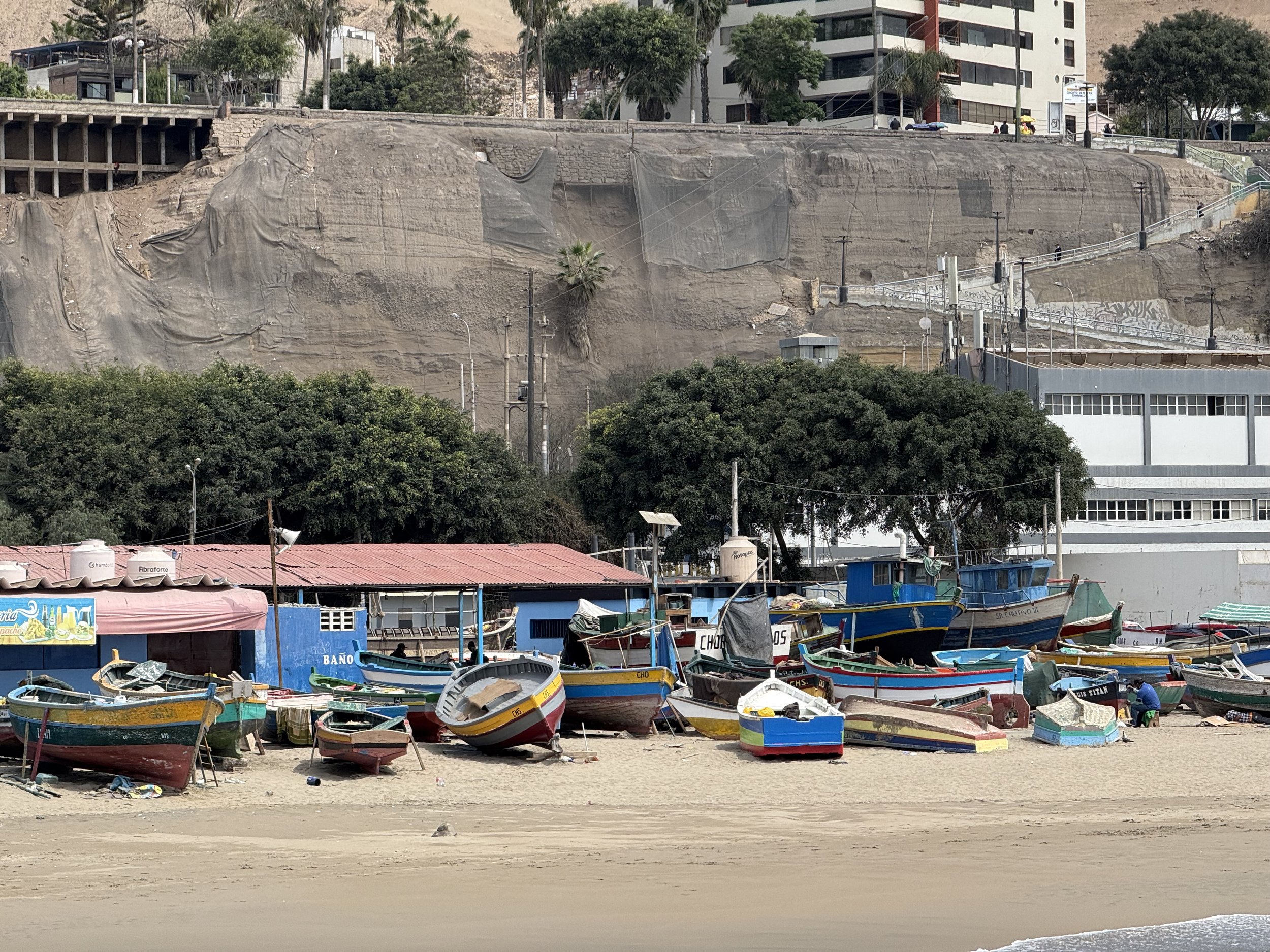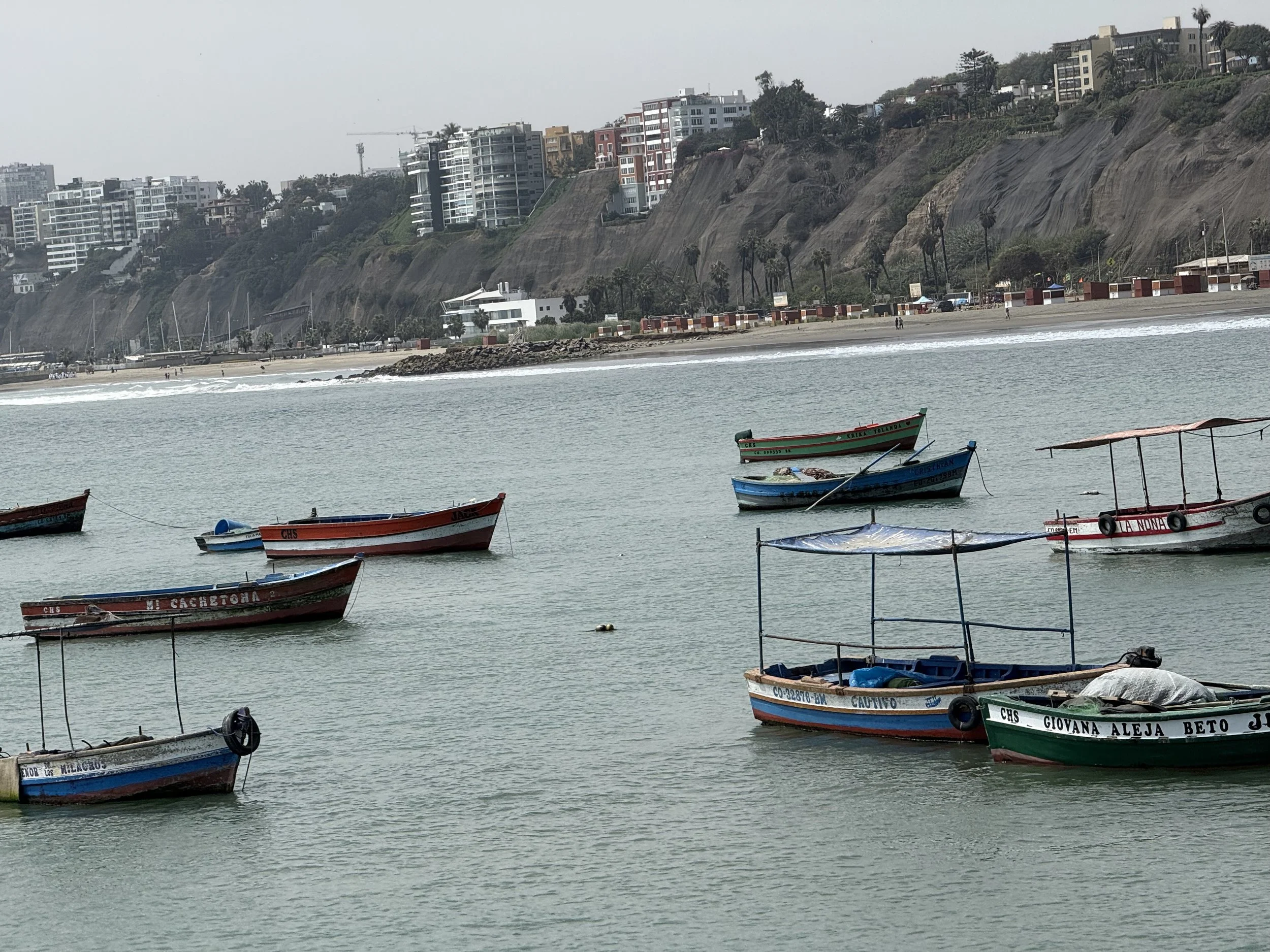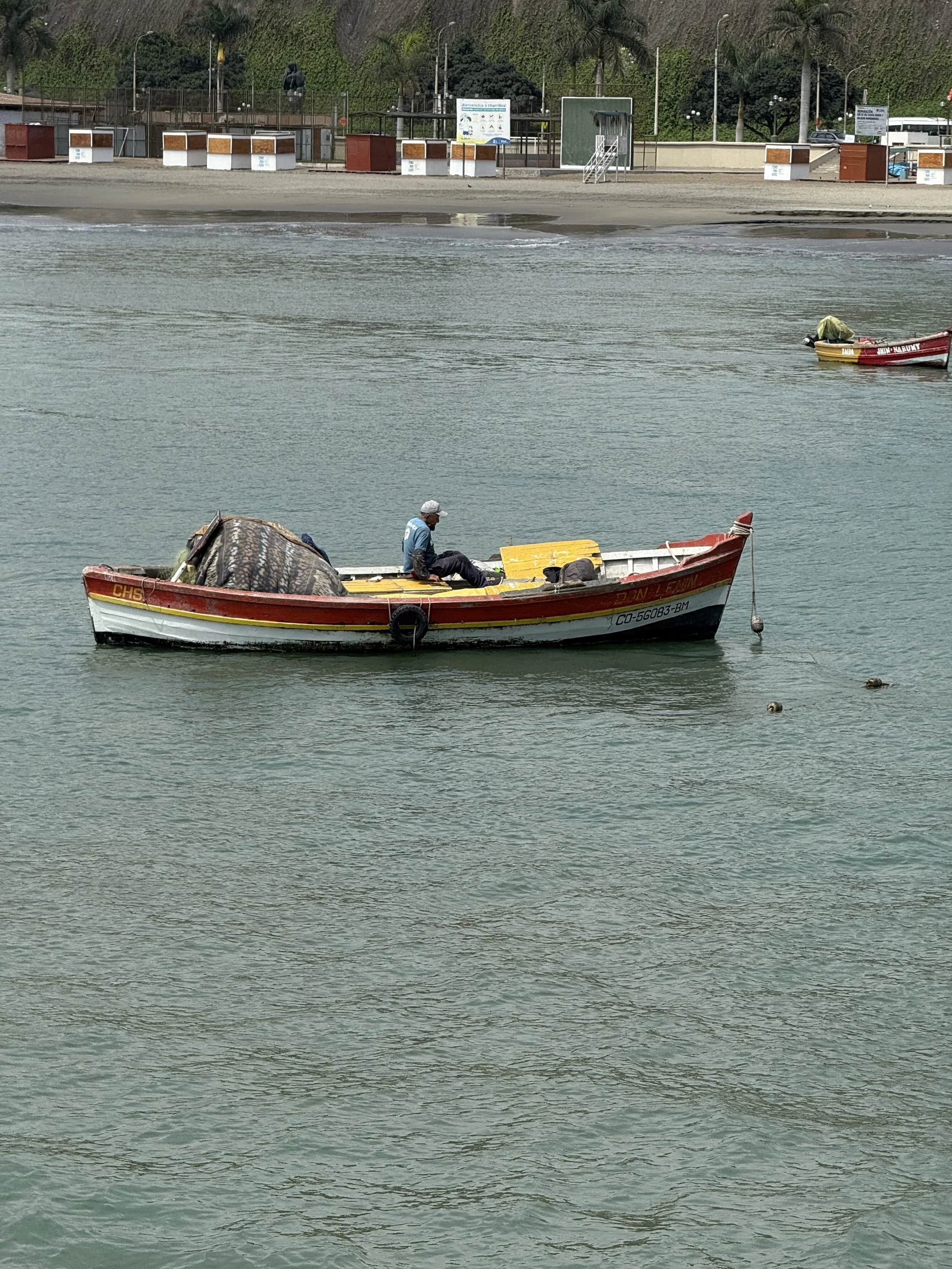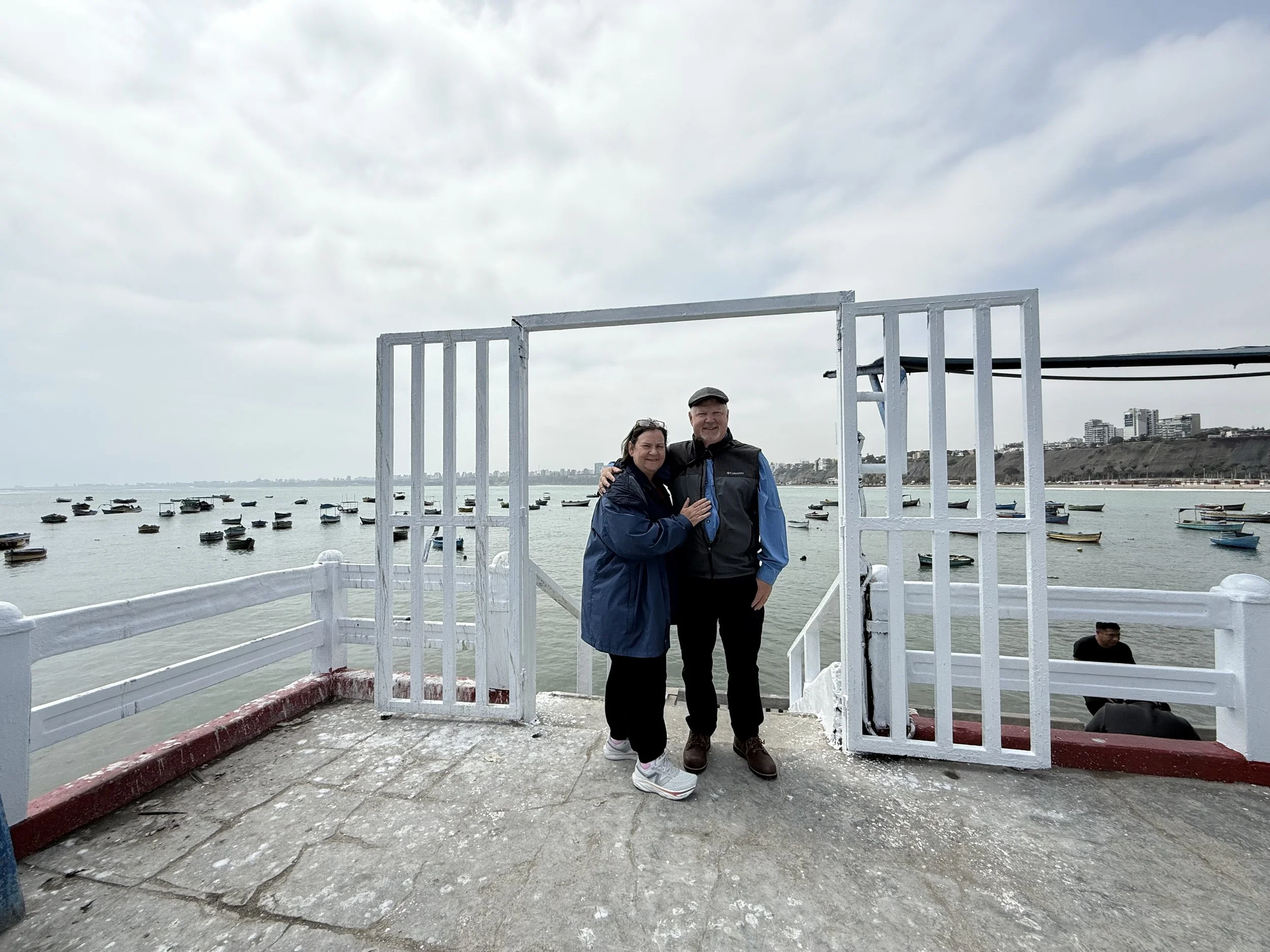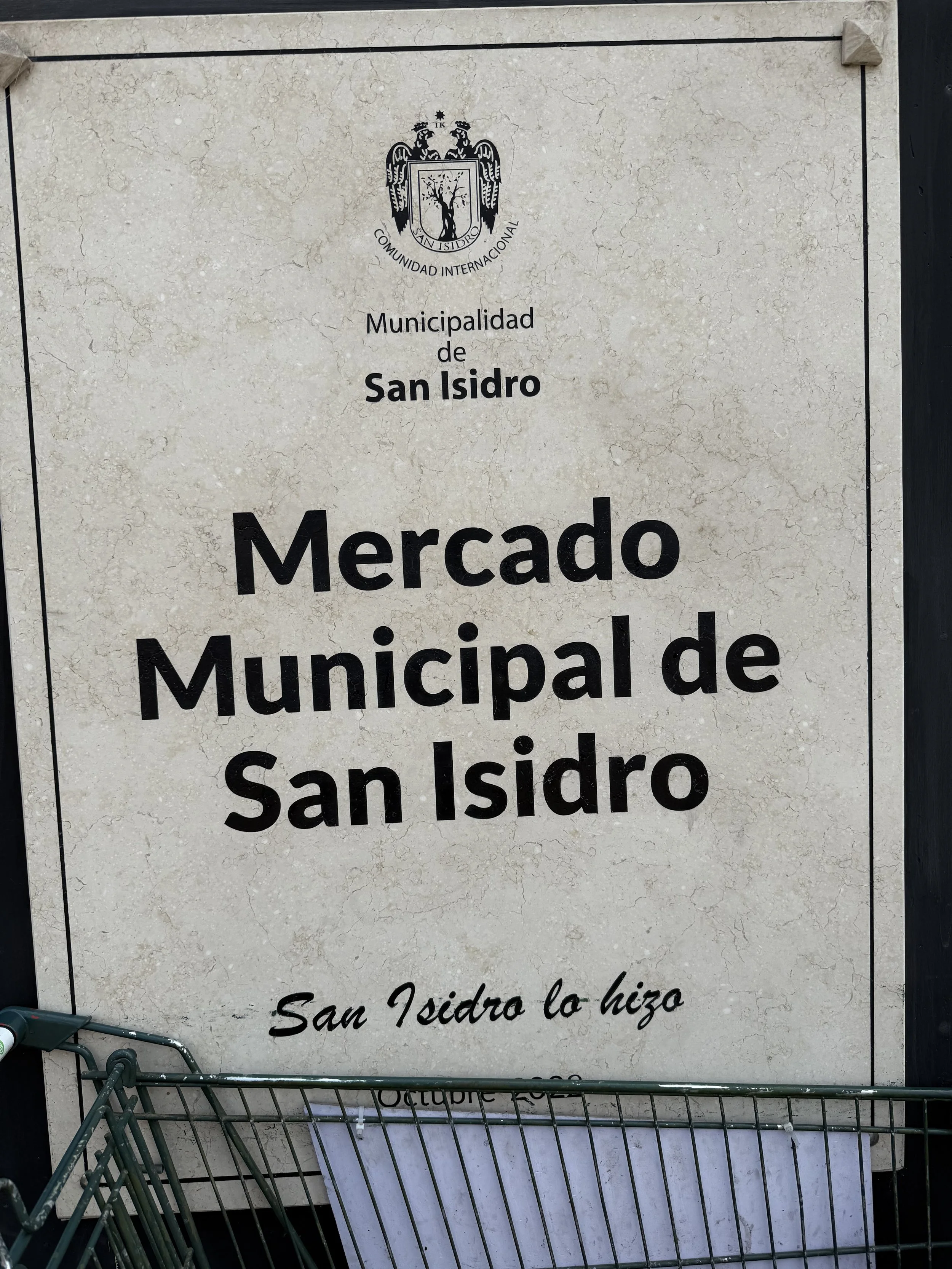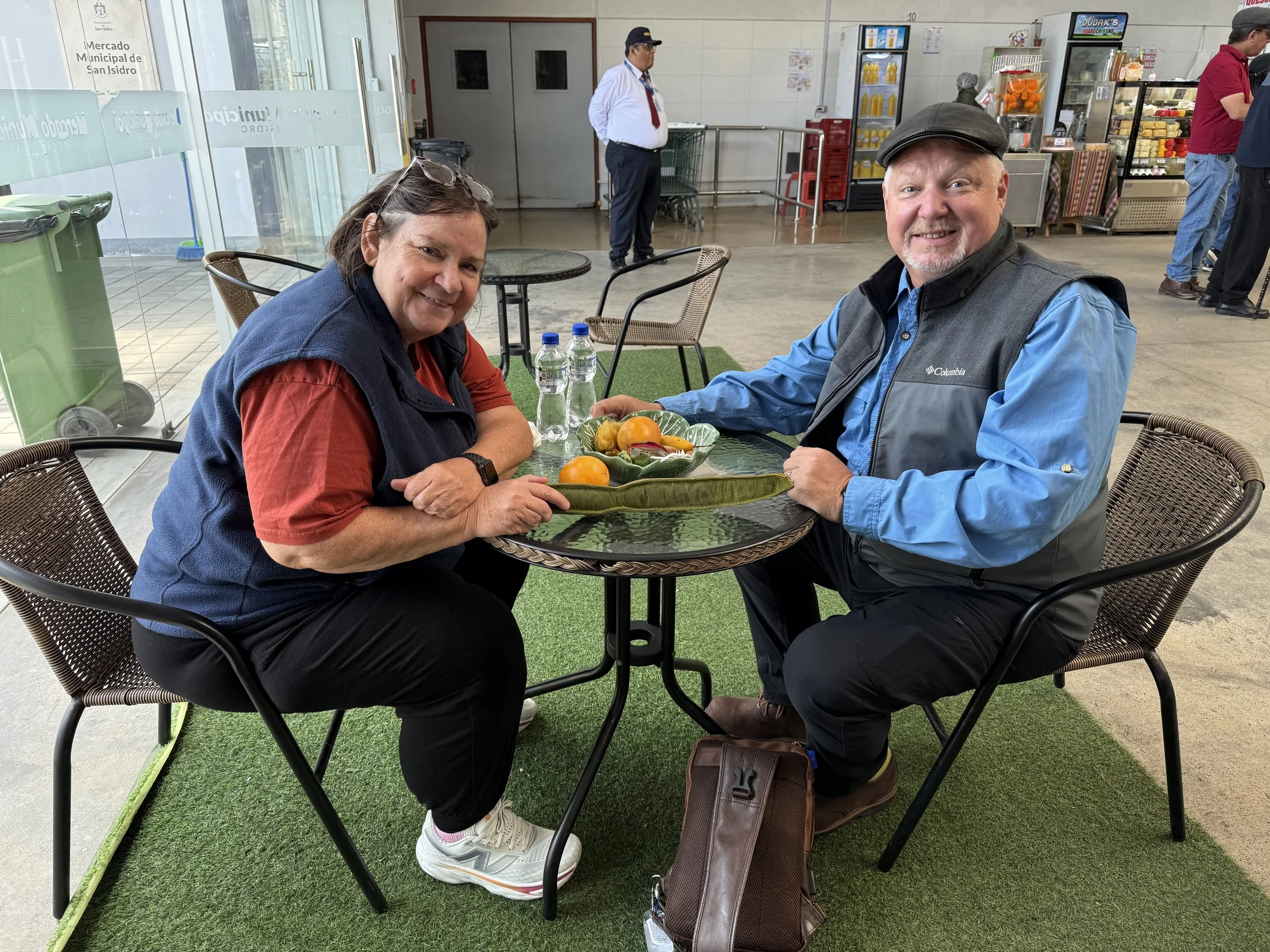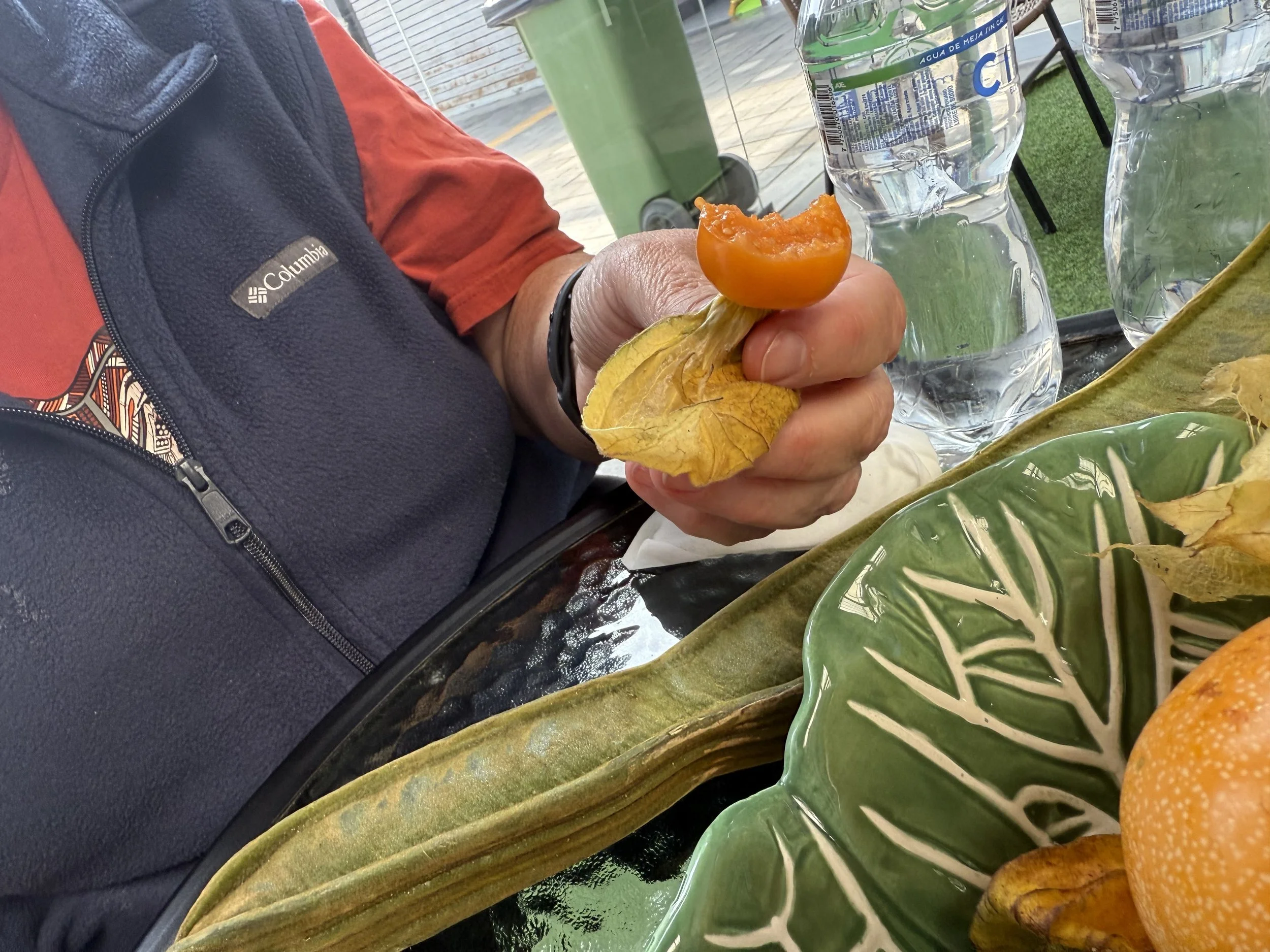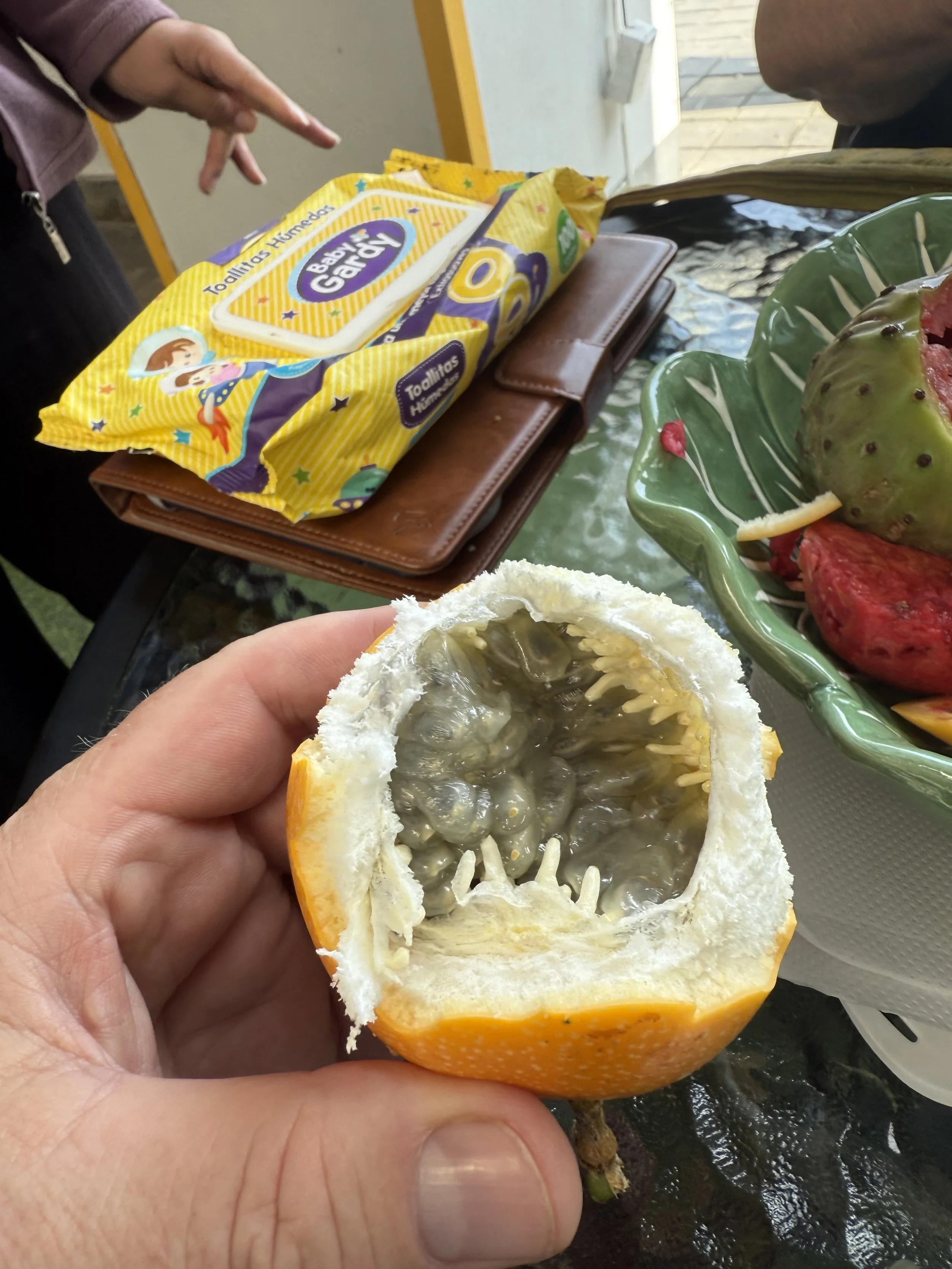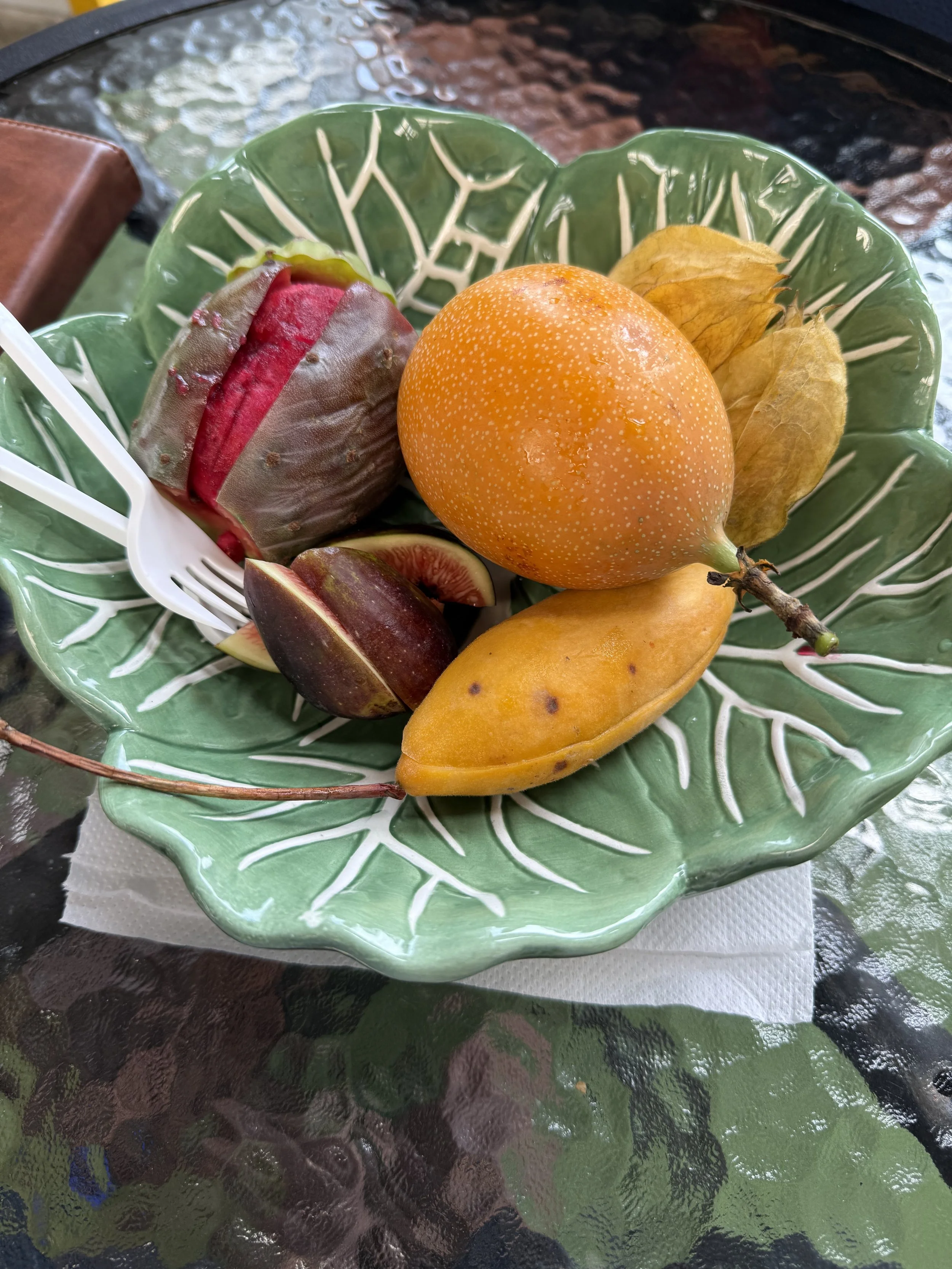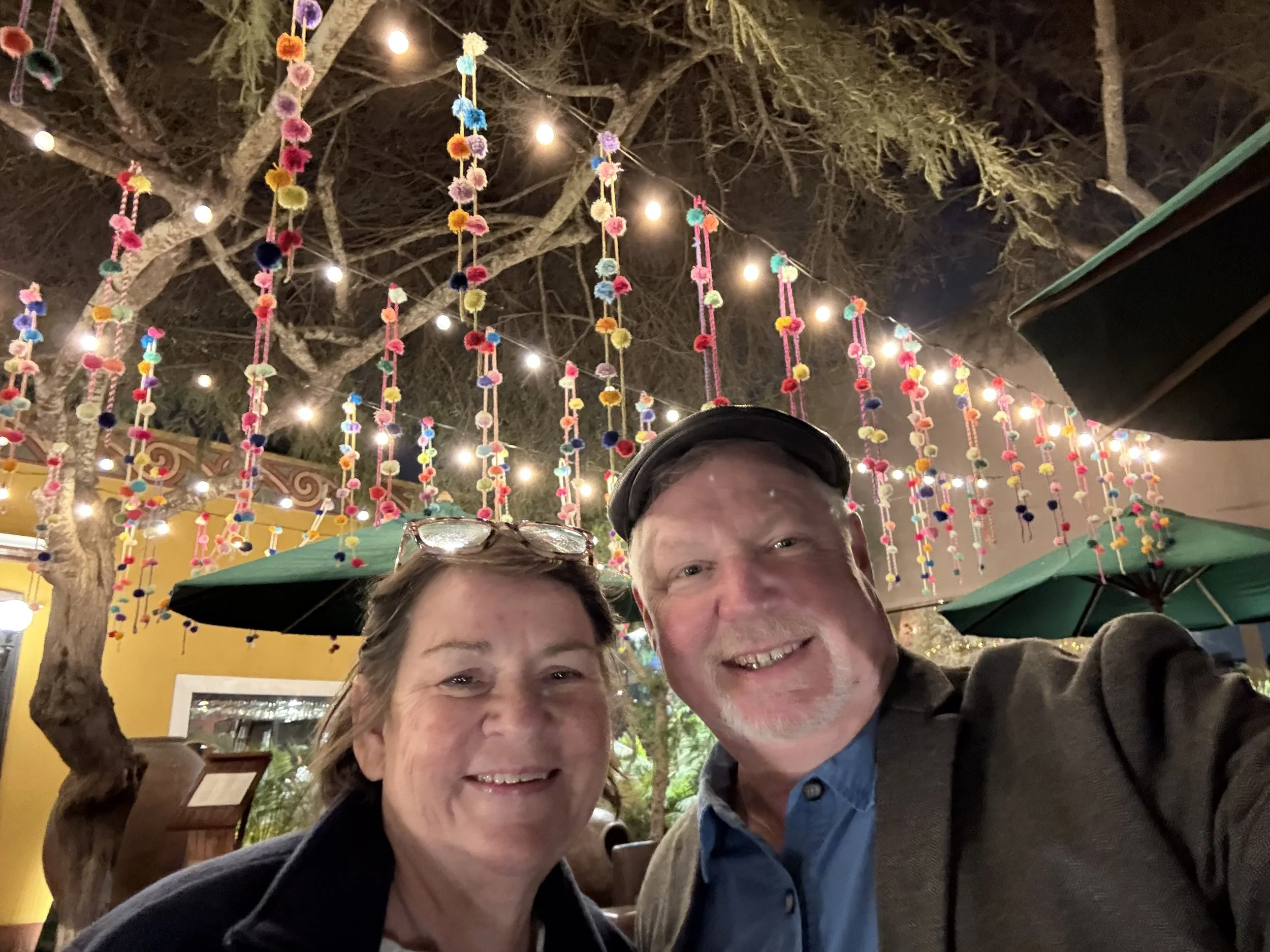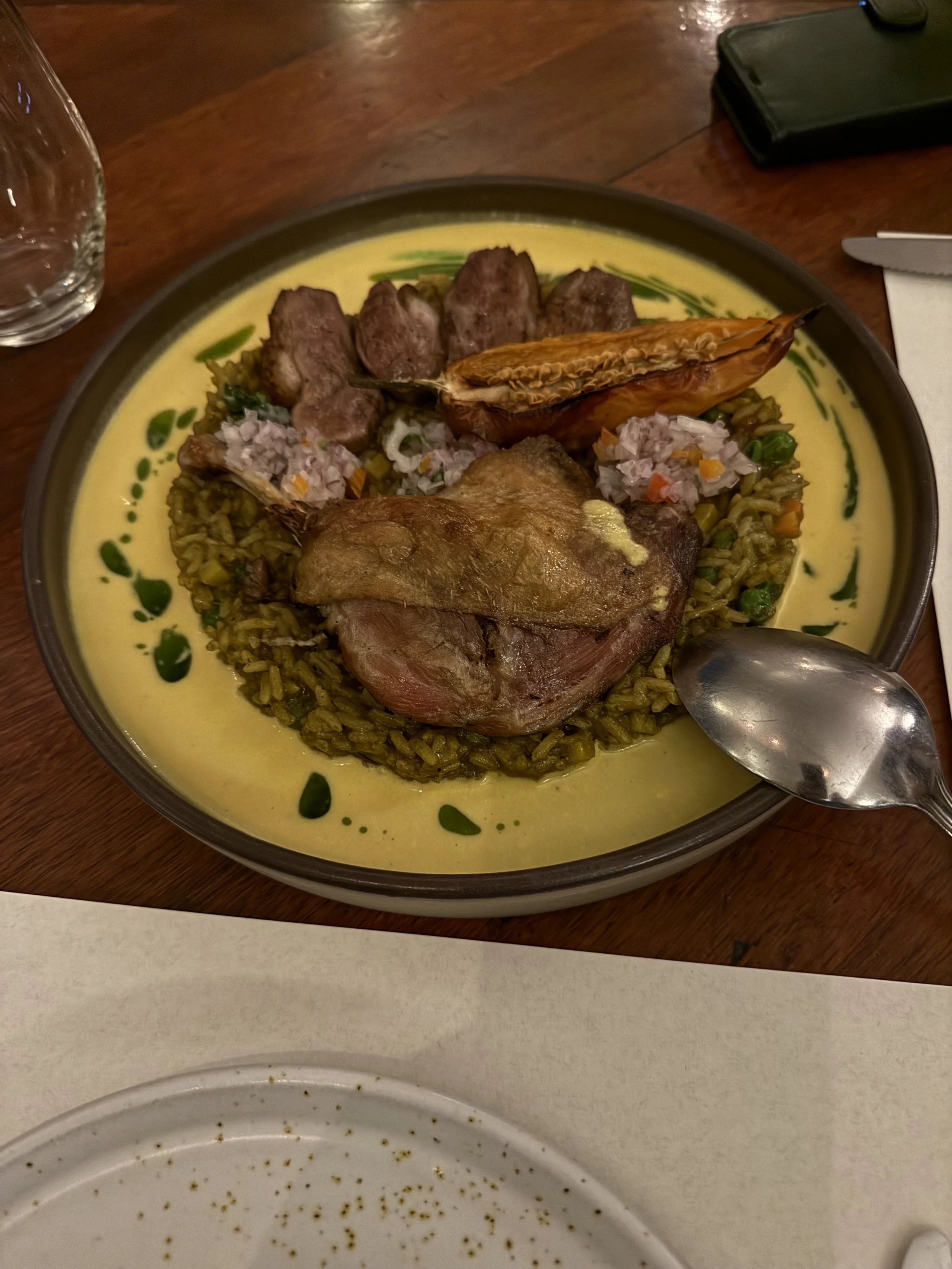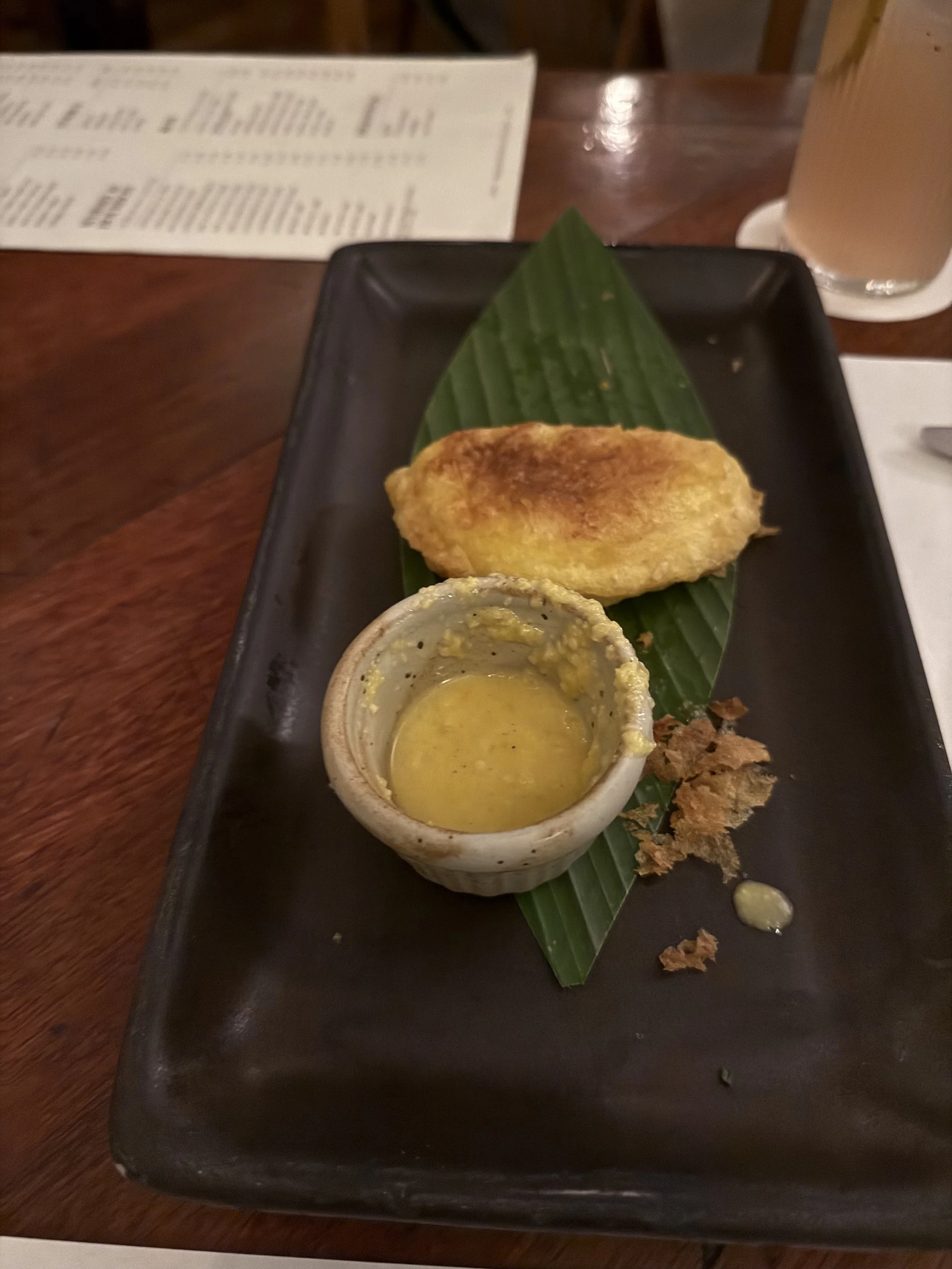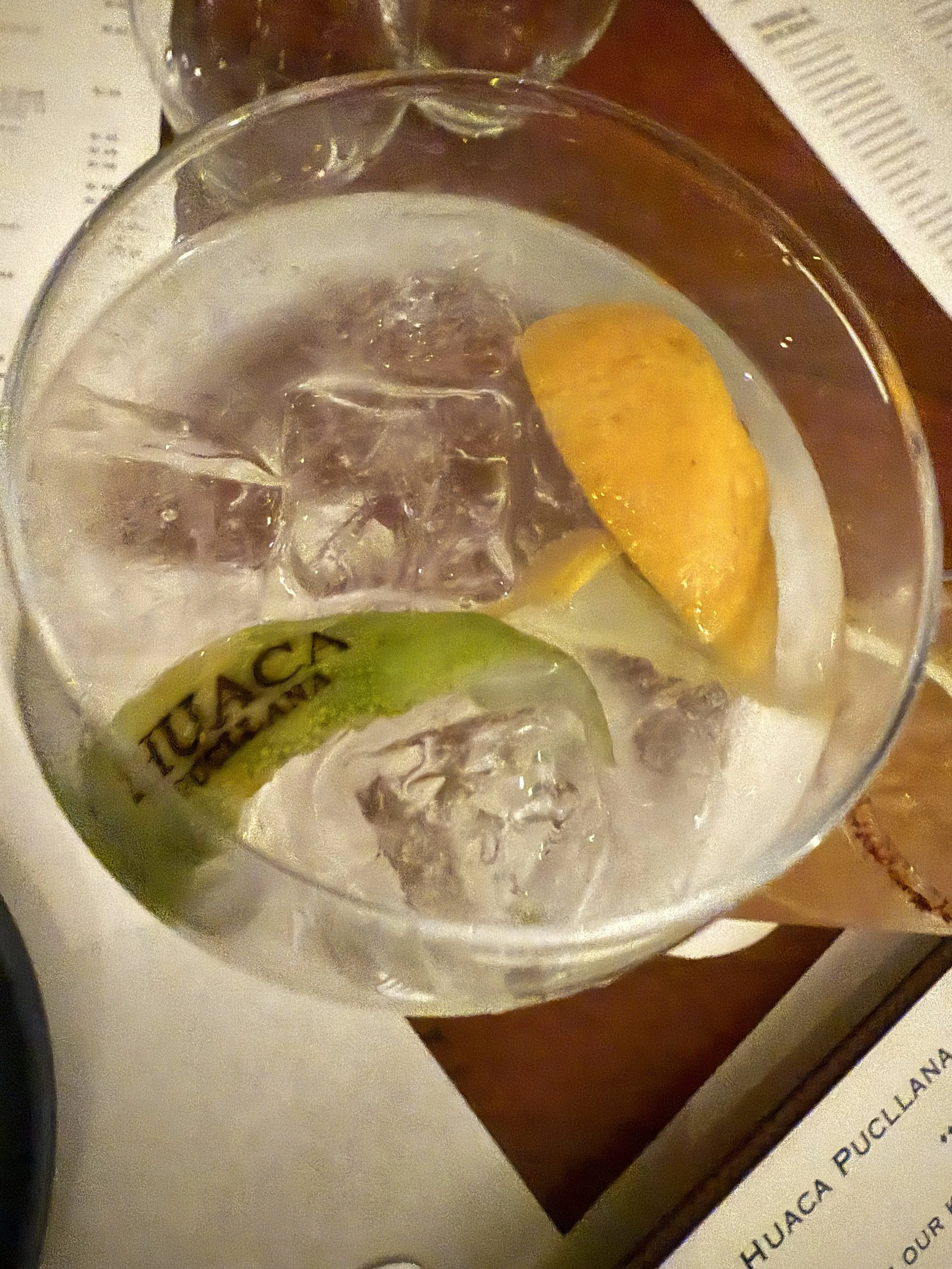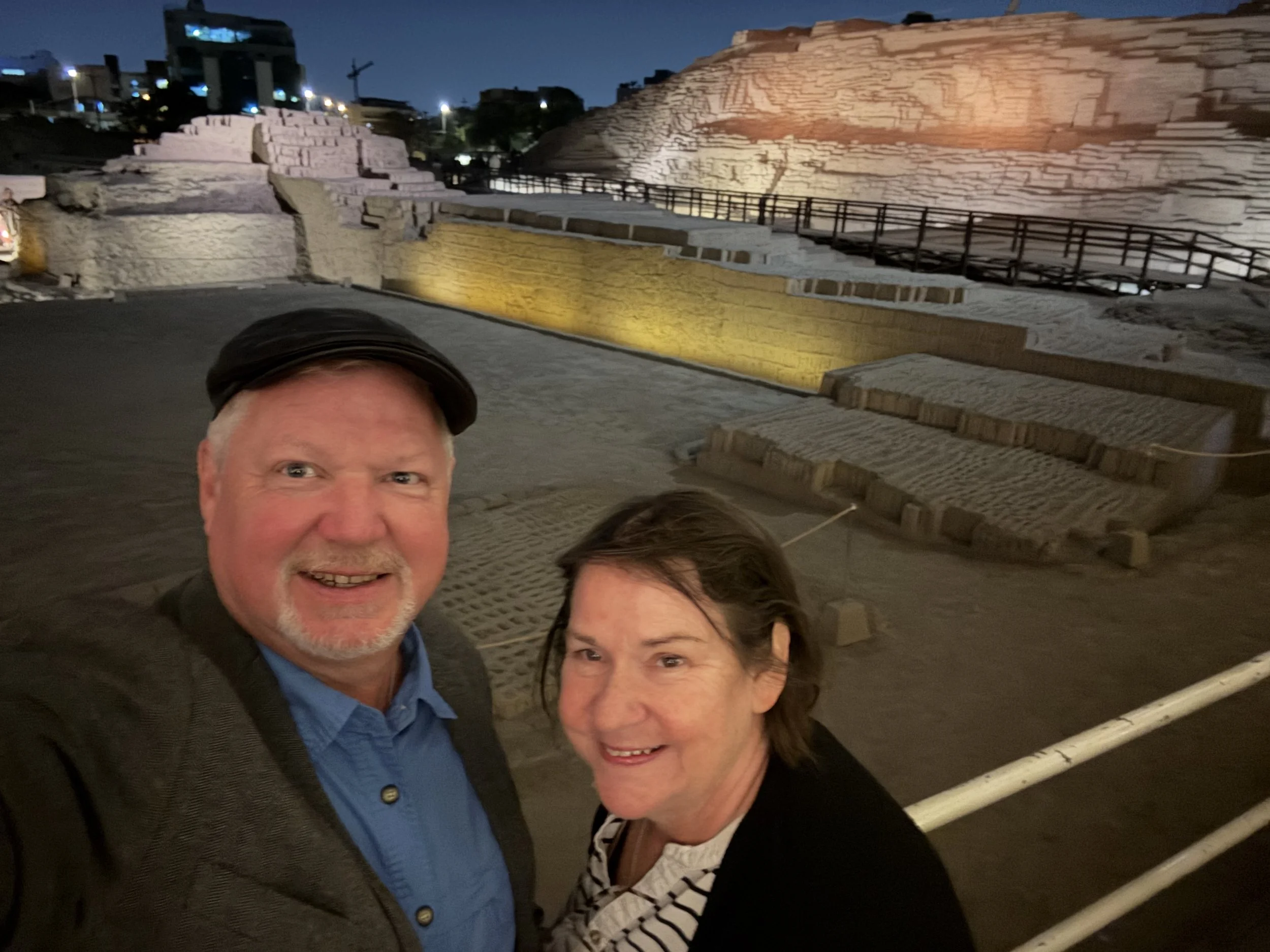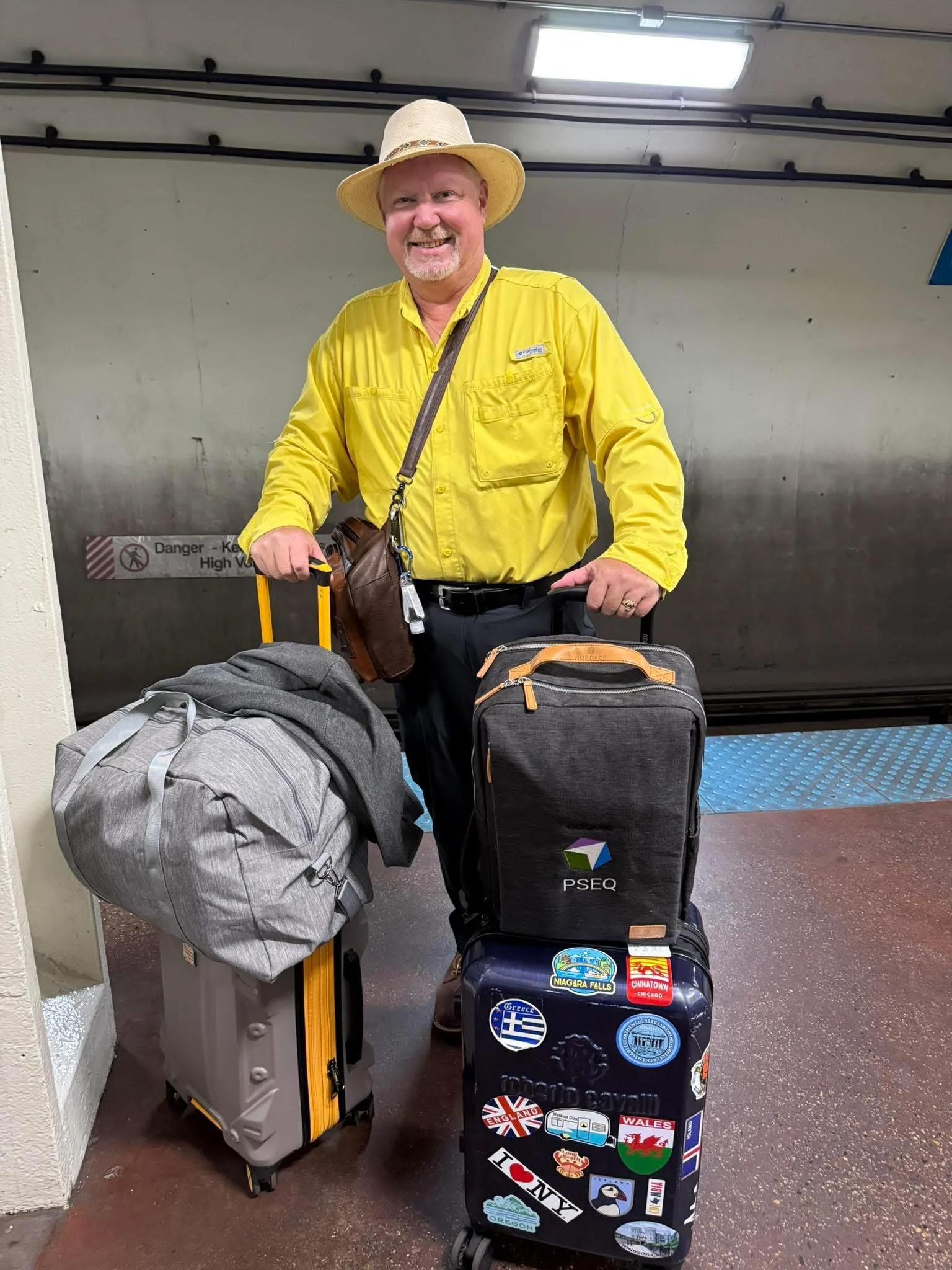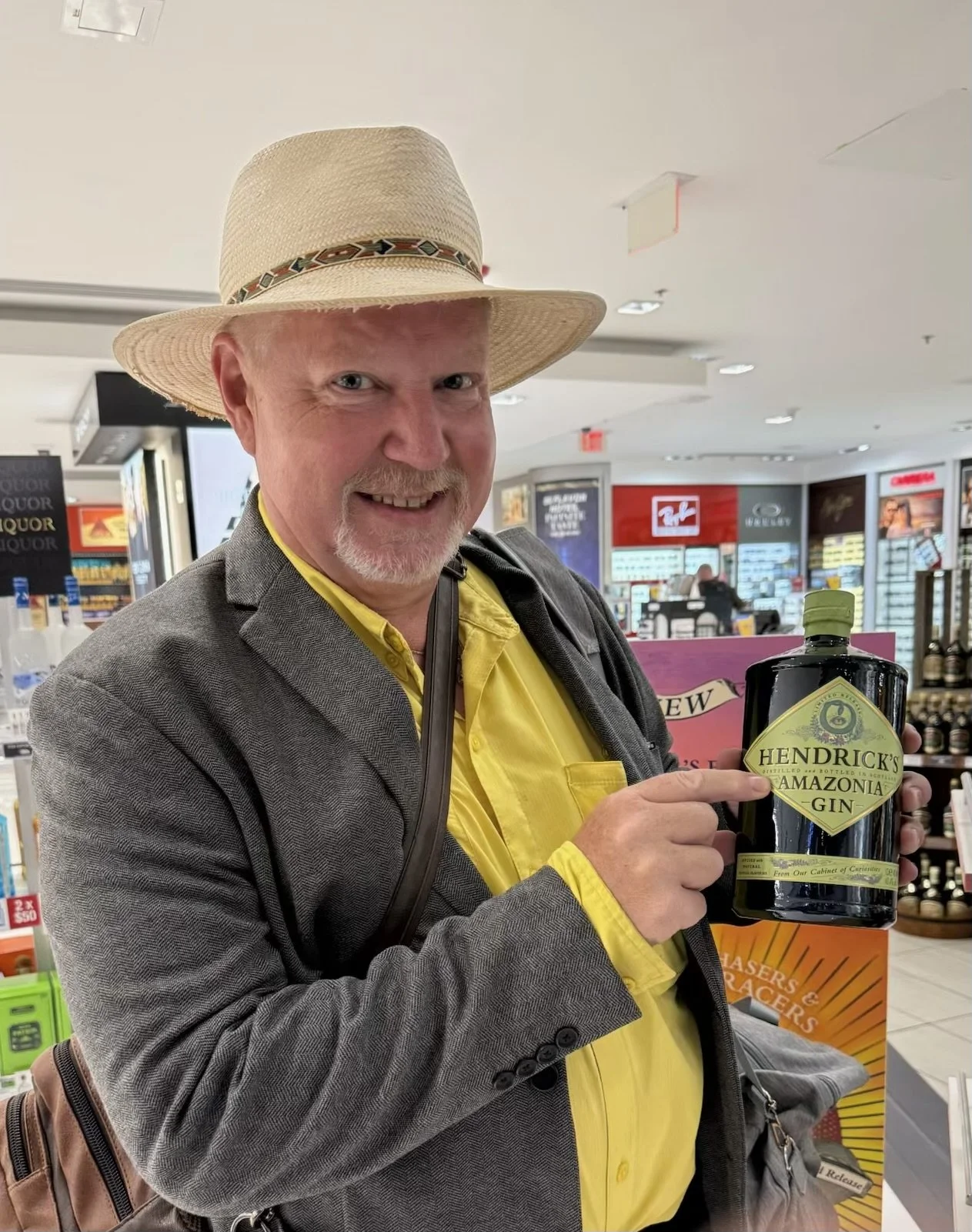T-Rex Machu Picchu & Galapagos Journey
This blog follows our journey to Peru and Ecuador with Odyssey Unlimited. We added on the Amazon River option at the beginning of the trip.
Day 18 - Quito Ecuador
This morning, we started our tour of Quito. We had a police escort with our bus as it was helpful because they would block intersections to help our bus move freely around town.
Our escort through Quito
First we stopped by a chocolate store called Paccari that was near our hotel. Ecuador is known for its high quality cocoa. Much of it is exported to other countries like Belgium that also makes chocolate. The store we went to prides itself on making single source chocolate, meaning they only use cocoa from Ecuador.
Chocolate Store!
They had a large selection of chocolate bars, cocoa powder, and a nutella like spread. We did our best to limit our purchase, but it was difficult as the prices were so much cheaper than even Duty Free. We ended up with one full grocery bag!
Our next stop was Itchimbia Park. The park includes a glass house, known as the Palace of Cristal, was apparently designed by Eiffel. It is privately owned and used as a convention center. The park overlooks the Old Town of Quito. You get a spectacular view of the city with the mountain range surrounding it.
The Virgin of Quito
The Virgin of Quito statue is also visable from here. It over looks the town and protects it. The statue is based on a painting of the same name. With a total height of 135 feet including the base, it is the highest statue in Ecuador and one of the highest in South America (taller than the Christ the Redeemer statue in Rio de Janeiro). It is also the tallest aluminum statue in the world.
The park is filled with running and hiking paths and one of the most beautiful playgrounds I have ever seen. It looks like a sculpture of flowers, but is made for children to play on. Amazing!
Monument to Heros
We drove down into the old Town of Quito, where the bus dropped us off to walk the city. Our tour guide took us to the Plaza Grande. Here there are monuments to celebrate the heros that gave Quito independence from the Spanish in 1809.
Street of seven churches
Next we walked down the street of seven churches. Yes, you guessed it, there are seven churches on this two block street.
We stopped in one of them, La Compañía, Ecuador’s most ornate church (some say the gilding here required seven tons of gold). I have never seen so much gold in my life. You could not look any direction without seeing surfaces covered in gold. The architects were big on symmetry. (but also cheap). In the back of the church there is a spiral stair case on the left. They did not want to spend the money on two staircases, so they painted another one on the wall to give the appearance of another staircase.
Craftsmans revenge!
In fact they were so cheap that they did not pay the craftsman that completed the building well enough. The craftsmen were hired to work on the building across the street. In protest to the church stiffing them, the put cherubs with large erections pointing at the church.
Next we strolled to the church and Convent of San Augustin. Here we got to walk through the church and convent and see the art that inspired the Virgin of Quito statue that over looks the city. We also got to tour the Brewery made by the monks to provide them with safe drinking beverages.
Monks making beer.
Drone video of our group on the steps of St Augustine Church.
There are volcanos everywhere here. For lunch our guide took us out of Old Town and drove us to El Crater, a restaurant located on the edge of a volcano crater. There were clouds blowing up from the crater, so the views were limited, but now and agin it cleared so you could see the bottom the the crater. The food was delicious and the location was very unique.
The restaurant had an unusual way of identifying the men’s and women’s bathrooms. (see photos).
After lunch we stopped at the “Middle of the World”. This is the location that marks 0 degrees latitude, or the equator (By which Ecuador gets it name). The Monument to the Equator is built here with a line that separates the northern and southern hemispheres. You can stand over the line and have one foot in the northern hemisphere and one foot on the southern hemisphere.
Middle of the World Monument
The 0 degrees designation was determined in 1935 and the monument was made in 1972. As techology improved, it was discovered that the actual equater line is off by 200 feet. Following the true line, they discovered ancient carvings on a nearby mountain that mark the true line as well as a slanted line that matched the earth’s tilt. How did the Incas so that!
We then returned to our hotel where our rooms are reserved for late check out. Later this evening we transfer to the airport for our overnight flight to the U.S.
Day 17 - Travel Day to Quito
Woke up and took my last soak in hot tub at the hotel. Then I had a nice breakfast in the hotel. They have an omelette bar available every morning. It is a great way to start the day!
This morning we leave to return to the city of Quito on the mainland. This will involve a bit of transportation. A bus took us form the hotel to a ferry that takes us to the island of Baltra. Here, another bus took us to the airport for our flight to Quito.
Our two hour flight to Quito was fairly uneventful until we started to land. The landing was aborted due to wind shears and we had to approach from a different angle to a different runway.
Tonight we stayed at the Swiss Hotel. The drive into the city from the airport was a bit of an experience. A large tour bus picked us up. There was heavy traffick, so the driver took back roads to get there. These roads were tight and had many hairpin turns along the hillsides of Quito. It took a little over an hour to get to the hotel. We had time to put our bags in our rooms, then we went out to dinner.
For dinner, we went to La Gloria. A favorite of our guide. This restaurant specializes in Peruvian, Mediterranean food with Ecuadorian influences. They also have an impressive wine collection. We were served in a private room just for our group. The food was amazing and so was the wine.
We have a full day scheduled for tomorrow, so we headed back to the hotel for an early night to bed. Many in our group are leaving tomorrow evening, so this is also time to repack and prepare to travel back home.
Day 16 - Tortoises!
Today we took a short drive from the hotel to the El Manzanillo Ranch, a family run farm and tortoise reserve. When we arrived, we were given rubber boots to change into to walk about the ranch. As a precaution, Robby sprayed our boots with repellant to keep the red fire ants from climbing up our boots. The fire ants are not native to the area, but are here now.
El Manzanillo Ranch
Deigo and Tomarah , our naturalists, took us on a walking tour of the ranch. We saw many tortoises along the road as we approached, but it did not take long for us to walk up close to many tortoises!
These are the famous Galapagos Giant Tortoise, with the Archipelago itself being named after them (Galapágo is an old Spanish word for tortoise). These giant tortoises can live over 100 years and weigh up to 500 pounds.
Our naturalist had is quietly walk behind this tortoise for a photo. If you are too fast or noisy, they will retreat into their shell.
Tomarah explained the differences between male and female tortoise. Males have a longer tail and the lower shell is curved inward for mating. The tortoise at the ranch are considered domed shell tortoise. The highlands , where the ranch is located, is like a rainforest. Lush and green with plenty of food for the tortoise to eat.
The tortoise are protected and have the protections in place. They are allowed to go where ever they want. The ranch has fencing to keep the cows and horses in, but the fence must allow the tortoise to walk underneath to get around. It was quite a site to see cows and tortoise in the same field!
Reception area at the ranch.
The ranch is supported by the Charles Darwin Foundation. They have a gift shop where we were able to pick up a few souvenirs. The proceeds go to help preservation of the tortoises. They also had a lunch area where we had a chance to sample the “Galapagos Moonshine”, made from sugar cane. It was not to my liking.
Turtles and cows.
The turtles are allowed to roam freely all over the island, even in the cow pastures! The fences for the cows need to allow the turtles to move around. Therefore, there is no fencing material on the bottom of the fence.
Cooking class for lunch!
We returned to the Royal Palm Hotel for lunch. Here we got a cooking class on how to make the local ceviche. We each had our own tray set up with all the ingredients. This was a shrimp ceviche, so the shrimp was precooked. we added the lime juice and other ingredients and made our own starter for lunch. It was delicious.
We had a couple of hours until we left for our next outing, so we returned to our room to relax. We were surprised to find a bouquet of flowers and chocolate covered strawberries in our room. There was also a card signed by all the staff wishing Sandy a Happy Birthday. What a nice surprise!
.
Make it stand out
Our next outing was to the town of Puerto Ayora, the largest town in the Galapagos Islands. It is also the home of the Charles Darwin Research Station. The research station is a biological research facility operated by the Charles Darwin Foundation. Its central mission is to conduct scientific research and conservation efforts to protect the unique ecosystems of the Galápagos Islands.
Our naturalist guides provided a tour of the facility and answered any questions we had.
The station is crucial to the survival of many native and endemic species, including the iconic Galápagos giant tortoise. It operates a successful tortoise breeding and rearing program that has released thousands of young tortoises back into the wild since the 1970s. They have pens for each type of tortoise. Eggs are collected from various areas and are incubated until they hatch. Each tortoise is numbered and color coded by area it came from. They are kept until they reach three years old. At this age they are old enough to not have any natural predators and are returned to the area they came from.
Lonesome George
We also got to see Lonesome George. Lonesome George was the last known Pinta Island giant tortoise, who lived at the Charles Darwin Research Station for four decades and became a global symbol of conservation. After his death in 2012, his preserved body was returned to the station on Santa Cruz Island and is now a central exhibit for visitors. it is, the way you tell your story online can make all the difference.
After our visit to the Research Station, we had some free time to enjoy the town of Puerto Ayora. This gave us plenty of opportunities to purchase more souvenirs. Another bus ride back to the Royal Palm Hotel. We had dinner, then retired for the night to pack our bags to be ready to leave tomorrow.
Amy, Sandy and myself at Darwin Monument Arch.
Day 15 - South Plaza Island/Punta Carrion
Today we took a one hour boat ride to South Plaza Island. This island is small in size, but big on flora and fauna.
Port Baltra where we got onto the Santa Fe for the days adventure.
We were greeted by sea lions sunning themselves on the rocks as we approached.
The most notable thing is the rich ground cover throughout the island. The Sesuvium plant is a ground cover that changes its leves to bright red, orange and yellow colors during the dry season. It is just like being back in Michigan in the fall!
Sevuvium covering the ground in full color!
There were also prickly pear cacti everywhere. In 1981, rats infested the island and ate the roots of the prickly pear cacti and killed most of them. The rats have since been eradicated and new cacti have been planted.
Prickly pear cactus planted.
Iguanas
Iguanas could be found everywhere. They can be very territorial as we had witnessed one chasing another out of his “area”.
Lava Lizard
The most abundant reptile found across Galapagos, lava lizards are a friendly sight at almost all of the tourist sites. They are often seen having press-up contests to find out which lizard is king!
Our naturalist guides took us on a hike to the end of the island. We saw many birds, lava lizards and iguanas. The tail led to rocky cliff where more sea lions were sunning themselves.
Trail to the rocky cliffs.
We had lunch on the boat, then motored onto Punta Carrion. Here we had the option to deep water snorkel (which means we entered the water from the zodiac as opposed to the beach snorkel we did yesterday. There was a small cove where the waters were calm and you could see many fish including white tipped sharks.
An early return to the hotel gave us an opportunity to explore the grounds of the hotel and just relax. The mist and clouds that covered the highlands where the hotel is located finally cleared a bit today. We finally got a glimpse of our view from our villa.
For dinner tonight, we went to a restaurant located in a lava tube called the Lava Cafe. The dining area was set up on a platform that had light shining up from the floor. There was also a ceiling installed to keep water and things from dropping on our table. They even had a fog machine to add to th e atmosphere!
Lava Cafe
We were served a five course meal of Ecuadorian foods (locally sourced) paired with Ecuadorian wine. The wines we had were from a winery called Armenia, which is Spanish for “harmony”. The food was delishous and paired very well with the wines. It was a great experience to dine in a cave and have such good food!
Margie’s birthday!
The restaurant even had a surprise birthday cake for Margie.
Day 14 - North Seymour Island/Bachas Beach
This morning we took a bus to the port where we board the Santa Fe, our privately chartered yacht for exploring the Galapagos.
The Santa Fe.
Then we cruise to North Seymour, a flat, low-lying island covering 1.9 square miles just north of Santa Cruz. A true “deserted island,” North Seymour’s only inhabitants are the marine birds, land iguanas, lava lizards, and other wildlife. On our naturalist-led walk, we see the Galapagos’ largest colony of frigate birds, a nesting colony of blue-footed boobies, and swallow-tailed gulls, among other bird life. The adult boobies will spray a ring of white bird poop around the nest to mark the area the infant birds are allowed to go. If they leave the ring, they are on their own.
Blue Footed Boobies.
Sea Lions
Sea lions can also be seen among the rocky shore line.
After lunch aboard the Santa Fe, we head back to Santa Cruz Island, weighing anchor in the calm waters off Bachas Beach, one of the Galapagos’ primary sea turtle nesting sites.
Here we had a chance to snorkle and see the sea life up close. The water was a bit cloudy, but I was able to see parrot fish, Sargent Majors and other fish. We also found a green sea turtle. It was huge, maybe three feet from front to back. It was also very fast. We tried to follow it, but could not keep up.
Later we walked along the Bachas Beach. Our guide pointed out 3 more turtles off shore. We also found a pink flamingo in area behind the sand dunes. We were not allowed to walk on the sand dunes, because they are the nesting grounds for the turtles.
We got back to the hotel early enough to have a two hour break before dinner. It is a welcome break that allowed us to explore our hotel more, or take a nap.
Before dinner, we met with our tour guide to go over the next days activities. Robby also set up a quick chocolate tasting for us. He had three chocolate bars. One made from cocoa from the interior of Ecuador, one from the coastal area, and one from the amazon jungle. They were all very good. I may need to buy some to take home.
Day 13 - Galapagos Ecuador
We took a two hour plane ride from the mainland of Ecuador to Blatra. The airport on this island is the gateway to the Galápagos Islands. It is the world’s first ecological airport, designed with bioclimatic architecture and a focus on sustainability. The airport is the only structure on the island. There are no other buildings or people living on the island.
Just landed in the Galapagos!
They take outside contaminations very seriously here. The plane and all our luggage tas sprayed with disinfectant. We also had to walk over a disinfection mat to clean our shoes.
First. Ecological airport in the world.
We took a ferry to Santa Cruz Island where a bus was waiting to drive us to our Hotel, The Royal Palm Hotel. The Royal Palm is a Hilton property and has very nice accomdations. It is also located in the highlands of Santa Cruz Island. The sea level climate was warm and dry. The highlands are showed in clouds with a light mist constantly pouring down. So many microclimates in this area!
Los Gemelos Sinkhole
Our guide made a short stop on the way to the hotel for us to see a large sinkhole called Los Gemelos, It had so many ferns growing everywhere.
Video of Sinkhole
Once we got settled into our rooms in the hotel, we had another excursion to tour a Lava Tube. It was about 1/2 mile long and you had to be careful not to hit your head or trip on rocks on boulders on the ground. The tour camp at provided hard hats and flashlights. The entrance was very stunning with the Lava Cafe restaurant located right inside the entrance. It took us about 45 minutes to complete the hike. There was a small ladder that we took to exit the tube.
Playa El Garrapatero
Next we went to Playa El Garrapatero park where we hiked down to the beach. We saw many birds along the way. We also saw 20 foot tall prickly pear cactus and candle opera cactus. These cactus evolved to grow tall so the iguanas and turtles do not eat them and kill them.
Once we reached the beach we found a “mess” of aquatic iguanas. These are only ocean going lizards in the world. They have faces that look like Godzilla!
We returned to the hotel had a nice dinner and retired early since we were up at 5:30am to get here.
Day 12 - Quito, Ecuador
Today is another travel day. We say goodbye to Peru and take a two hour flight to Ecuador. Tonight we stay at the Swissotel in Quito, the capitol of Ecuador . We met our guide, Robby, at the airport. He will be staying with us for the duration of our time in Ecuador. The truckers in Ecuador are striking because the price of diesel went up significantly. There was a chance that this would affect our stay. However, the president of Ecuador left the city and strikers did not block the streets as expected.
Quito airport.
View of Quito from our hotel.
3500 Restaurant
We had dinner at the 3500 Restaurant in the Swissotel. This restaurant was started in the mountains at 3500 meters above sea level. (Hence the name). This restaurant in Quito was new and they’d seemed to have logistic issues. Despite sending our orders in early, It took almost 3 hours to get our starter, main dish and dessert. Our guide had picked it as we were not able to make his usual place due to delays driving in from the airport. The reviews were great for this restaurant. Our food was good, just delayed. The presentation was very fantastic. Food was served on stones and interesting bowl.
I got the Shrimp Ceviche as a starter, Catch of the day for my main dish and Cherimoya cloud for dessert. I also tried a gin and tonic with a local Ecuadorian gin called Cruzloma, distilled at latitude 0.0.0
We have and early flight tomorrow, so there’s was no time to investigate Quito. We will be returning to Quito on our way home. We will have time then.
Day 11 - Lima
This will be a travel day. We will check out of our wonderful hotel and take a bus to the airport. Our guide, Ernesto, had time to take me on a quick tour of the hotel next to ours, the Palacio Nazarenas. . This hotel was a convent/orphanage also built on Inca Ruins. They did their best to preserve much of the ruins and placed clear windows on the walkways to view the ruins below. There are also Incan style aqueducts throughout the gardens. It also has the first in-ground pool in Cusco.
The street the hotel is on is called Siete Culebras, which means seven snakes. If you look closely at the original stone wall there are seven snakes carved into the stone.
Seven Snakes Street in Cusco.
We left Cuzco for a one-hour flight to Lima, where we stay overnight en route to Quito. Upon arrival in Lima, we check in at our hotel, the Wyndham Grand del Sol Lima Airport. The flight was delayed and we did not get into Lima until 5:00pm.
View of the Andes Mountains as we left Cusco.
The tour company did provide a tour of the downtown area, but we opted out. Sandy took advantage of the sauna and stream room and I got a massage. It was nice to have an evening to relax.
Day 10 - Cusco
Today we got to sleep in! As usual, I was awake at 6:00am, so I got up and had a cappuccino in the courtyard of the hotel. It was a bit chilly, so I was glad for the poncho I had purchased as a souvenir . It kept me very warm! The hotel was originally the Seminary of San Antonio Abad. It was built on the foundations of Amaru Qhala’s Inca palace. It is now a five star hotel. It has multiple courtyards where you can hear the sound of singing monks piped in.
After breakfast, we toured the old part of Cusco. We started with the Convent of Santo Domingo. As with most of the buildings here, it was built on the foundations of the “Inti concha”, the Inca Temple of the Sun. This was one of the most sacred and respected building of the Inca Empire. The Catholic temple had been built over it to demonstrate the destruction and annulment of the ancient culture.
Inca and colonial architecture fused together.
However, the temple was not totally destroyed, many parts were left intact and the church was built around it (with the exception of the Sun Temple). It is very interesting to see these two architectures fused together. Many local earthquakes destroyed the colonial buildings and churches, but the Inca foundations remained intact. A testimony to the craftsmanship if the Incas.
Example of Inca engineering. Another block would be carved to fit into this block. This is how these Inca buildings survive earthquakes with no damage.
This video shows other engineering techniques used by the Inca to interlock the stones.
The Incas even studied astronomy. They used the stars and dark spaces in the Milky Way to track celestial cycles. This was important to their agriculture planning, religious and social structures. They even had constellations in the shape of animals familiar to them such as lamas, snakes and partridges.
Cusco was the Inca Empire’s former capital and the continent’s oldest continuously inhabited city, Cuzco bears the marks of its mixed Spanish-Inca heritage. In this archaeological hub of the Americas, colonial and modern buildings incorporate Incan walls, arches, and doorways.
Bacillica De La Caterdral
Then we went to the Bacillica De La Caterdral. This is the main Catholic temple in the city of Cusco and is the headquarters of the Archdiocese of Cusco. It was built on the foundations of the palace of the eighth Inca king.
What makes this place interesting is the artwork. The Spanish hired Peruvian painter Marcos Zapata to recreate classic Christian paintings for the church. One of his most famous works is a recreation of the Last Supper. He combined Christian stories with indigenous culture onto his art.
Peruvian “Last Supper” in Bacillica De La Caterdral
In the Last Supper he incorporated Andean foods such as cuy (guinea pig) and Chicha, a fermented corn drink in the place of the wine. He also put the face of Francisco Pizzaro, the Spanish conquistador that defeated the Incas on Judas.
Black Jesus in Bacillica De La Caterdral
There is also a cross with a black Jesus on it. It was not originally black, but brown like the native people. It was covered in Llama skin to give this color and texture. It turned black over time due to the candles burned around it. In 1650 a strong earthquake hit the city. Fearing the worst, this cross was removed from the church to prevent it from being crushed if the building were to collapse. As soon as the Jesus cross was taken to the street, the earth stopped trembling. From this day forward, the figure is known as Lord of the Earthquakes and has developed a cult following. Every week, the clothing on the figure is changed and new human hair is placed on the figure. Locals volunteer to make the clothing, so none of it is used twice. Currently there is a wait of two years to reserve a week to make clothing for it.
After we left the Bacillica, we entered the Plaza De Armas which is the main public space in Cusco. There was a celebration going on with dancers in traditional costumes and Cuy (Guinea Pig) costumed people.
For lunch, our tour guide took us to a local restaurant called Pachapapa. Here they serve native foods eaten by the Incas for over 600 years. One of these dished is cuy, known in America as guinea pig. We were able to sample the cuy. It tasted a bit like duck.
Pachapapa Restaurant
For lunch, our tour guide took us to a local restaurant called Pachapapa. Here they serve native foods eaten by the Incas for over 600 years. One of these dished is cuy, known in America as guinea pig. We were able to sample the cuy. It tasted a bit like duck.
Best cuy (guinea pig) in town!
Typical street in Cusco
The streets of Cusco are narrow. Only room for one car. The “sidewalk” is even smaller. (Note curb in photo). When a car came, you needed to turn flat against the wall. Once, I did not turn flat against the wall and got my elbow smacked by a car mirror!
We had the afternoon to wander the city on our own and check out the local shops. I was able to pick up some Mara’s Salt from the salt mine we had seen on our bus ride.
Mara’s Salt mine.
Muse Del Pisco
We came across a Pisco bar where you could try different piscos as well as have a demonstration on how to make a pisco sour. We simply enjoyed the pisco sours and took in the ambiance.
We ran into our tour guide and he gave us a recommendation for dinner. Dinner was not included with the tour tonight, so we were on our own. We headed back to Plaza De Armas. It was very different at night.
Sagrado Restaurant
We went to a small local restaurant called Sagrado. It was not one if the fancy restaurants, but the food was incredible. I had the blue alpaca. It was an alpaca steak with blue cheese melted on top of it. It was a different experience from the alpaca sample we had with dinner the night before.
I also tried an Andean gin and tonic. The gin is made locally and comes in different flavors. I had the original clear gin. It was served in a proper gin glass (see my blog on the Cotswolds) and was garnished with a cinnamon stick, star anise, cucumber and fennel leaves. It was very good. I am going to try to get some at the airport in Duty Free when we leave Peru. Sandy ordered a Apu Punch. It had an orange peel with the Inca Condor design branded onto the peel.
Andean Gin and Tonic.
+
Hotel Beldmond Monisterio Bar
The hotel had a wonderful and cozy bar off the lobby. The vaulted ceiling, comfy chairs and warm fire made for a great way to end the evening while sipping a glass of wine.
Day 9 - Machu Picchu
We got up early, ate breakfast and headed to the busses before the tourist-filled trains arrive from Cuzco today. The lines were long already and organized by entrance time into the site.
Carving along the river wall as we waited for our bus.
It was about a 45 minute wait, but we finally got up too our bus to drive up to Machu Picchu. I was thankful for the time as our tour guide mistakenly game me someone else’s bus ticket. The tickets have your name on them and you have to show your passport to get on the bus. Luckily they found my ticket in time and I was able to get on. I did have a plan B. One of the members in our group did not go today, but his wife did. It was his ticket that I had. She happen to have his passport with her. He was old with gray hair and blue eyes. I probably could have pulled it off! Ha Ha!
Today we will take circuit 3 and explore the buildings in the lower part of Machu Picchu.
Today the weather was very cloudy and the mountains were shrouded in clouds. This is why it is called the cloud forest. We were lucky to have such a clear day yesterday. However, the wispy clouds made for a very dramatic feeling.
In the Cloud Forest
Once again, Ana Maria did a fantastic job providing explanations of each building we went through. It is still a bit surreal being here. I cannot adequately describe this place in words. I feel lucky just to have been able to be here.
The site was very crowded today. Looking up at the trail for circuit 2, it was packed with tourists and I felt bad because the courses were obscuring the mountains and I am sure their photos were not as good as our from the day before.
Amy, myself and Sandy
We did run into what I would call Peruvian influencers. They were dressed up in fancy traditional clothing and taking photos all over the palace and holding up the lines. They would scoop water from a grinding stone and bless their heads, then stand under an overhanging rock and perform some bizarre hand movements. Our guides said they had no clue what they were doing and none of what they did was remotely significant.
Peruvian Infuencer
This circuit hike was shorter and took us less time. We finished early and took the busses back down to the hotel for lunch.
Hoja De Coca
We checked out and headed to the train station. Everything was relaxing as we headed back to Ollyantambo. Sandy tried a coca soda they sold on the train. It is a carbonated drink advertised as a natural, coca-based option for revitalizing the body. There is no significant amount of cocaine in it, but we were advised not to try to bring it back to the United States. They also gave us sunflowers as a gift on the train. We also got tote bags as a departure gift.
View from the train as we left. It was great having the domed cars.
Here we took a bus to Cusco where we will be staying the next two nights.
Tonight we stay at the Monasterio, A Belmond Hotel.
Monasterio Hotel.
We checked into the hotel where our luggage was waiting in our rooms. I can get used to not having to carry my luggage around! The tour did not include dinner tonight, so we walked about the city. I was on a mission to add to my Guinness Around the World blog and try a Guinness in Peru. There were three Irish pubs close by, but none had Guinness on tap, only in cans. After checking the Guinness website, I learned that Guinness does not make a special recipe for Peru (or Ecuador, our next stop).
We found a wood fired pizza place for dinner and stopped there to eat. It was delicious.
It was a long day of hiking and taking many modes of transportation. We retired early even though we did not have to get up early tomorrow.
Day 8 - Machu Picchu
Another early morning. (6:00am). We had to pack an overnight bag to take on the train to Machu Picchu. We were not allowed to take all our luggage. The luggage not going to Machu Picchu will be sent to our hotel in Cusco where we will be staying the following night.
A short bus ride took us to Ollantaytambo where we toured ruins earlier. It is also the location of the train station where we catch the train that will take us up to Machu Picchu. We saw many hikers taking the Inca Trail along the way.
Ollantaymbo Train Station
The train that took us up to Machu Picchu Pueblo
Our Train Car.
The train had comfortable seats with tables and a dome top to view the scenery along the way. The train ride was about an hour and a half to Aguas Calientes, also know as Machu Picchu Pueblo. This town is the primary gateway to Machu Picchu and is only accessible by train or hiking.
Amy and me in the dome train car.
Porters picked up our overnight bags at the train station and took them to our hotel. We proceeded to the busses that would take us up to Machu Picchu. The busses took some severe switchbacks up the mountain to the entrance to a Machu Picchu.
Train station at Machu Picchu Pueblo
There are three circuit trails within Machu Picchu. Circuit 1 takes you to high up to one of the peaks with high level sceanic views of the entire Machu Picchu site. Circuit 2 takes you through the most comprehensive tour of the site with two options 2A (higher Terrace route)and 2B (Lower Terrace route). Circuit 3 - known as the “Royalty Circuit “ takes you through the buildings like the Kings quarters and the Sun Temple.
There is an entrance time on our tickets, so we stopped for lunch as we waited to enter the site. There was a buffet lunch set up for us at TinKuy Restaurant.
Lunch stop.
We took Circuit 2A today. Another guide, Jackie, joined us so we could split into two groups. A fast group and a slower group. It was thundering and a bit cloudy when we arrived, but is cleared up and we got some fantastic views. It is had to put into words the views that we saw. Our guide, Ana Maria, did a great job of providing the history and known knowledge of the areas we walked through.
There were alpacas wandering the site. Amy was almost knocked over as one jumped off a terrace along the path we were walking.
The alpaca that almost took Amy out!
We were very happy that we brought our hiking poles for this. It was very helpful when going down the uneven stairs. However, my juvenile wife and Amy used them to sword fight.
Sword fight in Machu Picchu.
While not as challenging as Ollantaytambo, it did take a lot out of us hiking up all those stairs! It took us over 3 hours to complete the tour. It usually takes 2-2.5 hours, but we are an older group and our guides took very good care of us.
Alpacas wandering the site.
We returned back to Machu Picchu Pueblo in the busses and were thankfully dropped off at our hotel. We were all exhausted!
We stayed at the Sumaq Machu Picchu Hotel. This is another 5 star hotel. Very nicely appointed. Our overnight bags were waiting in our rooms. I was able to take a shower and short nap before dinner.
We were surprised to find that a special diner was prepared for us. It was called Apucc Mikhuna which referees to a 6 course tasting menu of the “Flavors of the Andes”. The menu featured native ingredients from the Andes, with "Apucc mikhuna" translating to "the foods that the mountains provide to us" in the Quechua language. Peruvian wines were paired with each of the courses. The menu was as follows:
Cream of Choclo (corn) - Mild cream of choice from the Urubamba Valley with cilantro aromas, pieces of fresh cheese and Andean cheese snow.
Quinoa Tabouli - Quinoa, Andean paria cheese, white onion, tomato, olive oil and lime juice.
Hot Stone Ceviche - Cubes of fresh trout served on a hot stone from the Vilcanota River, and tigers milk made with yellow pepper.
Avocado Risotto - Avocado risotto with tomato confit, grilled alpaca, grilled oyster mushrooms and mushroom foam.
Picarones - Traditional Peruvian dessert: crispy doughnut rings made with butternut squash sweetened with fig syrup and whole cane sugar served with butternut squash ice cream.
Inca Bracelet - Replica of an Inca bracelet filled with api and yogurt cream with lemon grass.
The food was amazing! One of the wines was a Peruvian wine called Oxalis, made from the Olluco potato. It had an interesting taste with a rose pedal finish. I was not a fan until I tried it again with the Quinoa Tabouli dish it was parried with. Then it tasted great. This was also the first time I had alpaca. It tasted a bit like pork and was actually tender. I was expecting it to be a bit chewy, but I guess it the the llama meat that is tough and gamey.
Beautiful table setting for our special dinner.
Potato wine.
Avocado Risotto with tomato confit, grilled alpaca, mushrooms and foam.
Sandy and I ended the night with a Pisco Sour in the bar lobby, then retired to our room for an early night. We were exhausted. We also needed to be up early tomorrow so we could have breakfast and be ready to leave for the busses back to Machu Picchu by 6:40am.
Day 7 - Sacred Valley
I got up early today and took advantage of the Hot Tub. It was a stunningly beautiful morning.
This morning we had an Andean Priest perform a Pachamama Ceremony for us. Pachamama is a deity the represents Mother Earth and the ceremony gives you a chance to give back to Mother Earth and ask for blessings for your family.
Andean Priest performing the Pachamama Ceremony.
Hew gave us all 3 coca leaves to hold. We had to fan them out and exhale upon them as we stretched to the sky.
Coca leaves.
Then he placed the leaves and additional offerings unto a piece of paper, then bundled it up and burned it. The blessings we asked for were then taken to Mother Earth.
Offerings to Mother Earth.
After the Pachamama ceremony, we caught a bus to Ollantaytambo located further down the Sacred Valley. Our Hotel is already in the valley. It is a big valley!
Sacred Valley is 8,860 feet above sea level. This change in elevation will help us acclimate to the higher elevation before we get to Machu Picchu.
Ollantaytambo was both a temple and a fortress, where the Incan emperor Pachacuti built his personal estate after conquering it in the mid-1400s. A century later, the site came under attack from Spanish conquistadors, and despite repelling the advance, Incan leader Manco Inca abandoned the site in 1536.
Here we are at Ollantaytambo.
The masonry nary skills were incredible, look at he’s joints!
The doorway that was left after the Spanish destroyed the temple.
After touring Ollantaytambo, we headed to a local restaurant for lunch. Along the way our guide pointed out various sites. There was an area that looked like an ice field, but was a salt field called Mara. It is a natural salt field with iodized salt.
Salt field in the mountains
We also saw stange poles with a red plastic bag on the end. These bags indicates that the establishment sold Chicha, a fermented corn drink. I did. Not get a chance to try it yet.
Red bag on a pole indicating the establishment sells Chicha.
We stopped at a restaurant called Wayra for Lunch. They served us massive amounts and food and included a horse show with dancers. It was unexpected but very fun!
Peruvian Paso Horses performance.
Dancing with the horsemen.
We continued on to the Quechua village of Chinchero on the road between Cuzco and Machu Picchu. Here residents live much as their ancestors did, weaving colorful textiles and keeping ancient Incan traditions alive.
We were able to pet and feed the alpacas and lamas.
Sandy feeding the animals
We watch a weaving demonstration that gives us an opportunity to see villagers plying their traditional craft. It was really cool seeing how they obtained the colors. Most were from local plants, but one was from a beetle found on the prickly pear cactus. They would smash the beetles to get a purple color. If lime juice was added it turned orange, if it was rubbed with a quarts rock pink.
All the supplies needed to color the alpaca hair.
Smashed beetles mixed with lime juice and quarts stone.
We returned to the hotel and I was able to schedule a massage. Yeah! Tomorrow we leave for Machu Picchu.
Day 6 - Cusco
Woke up at 4:45 to have our luggage picked up, get breakfast and leave for the airport by 6:00am. A morning flight brings us into Cuzco. This city is at an elevation of 11,000 feet above sea level in the Andes mountains.
Landed in Cusco!
Our bus took us further up the mountain to Saqsaywaman (pronounced “sexy woman”). Just as we entered the historic site, it started to rain and the wind picked up. Our guides decided to change plans and take us to our lunch spot, just 5 min down the road. It was 1:30 and most of us were hungry since we had breakfast at 5:30. Lunch was pretty good. We had a buffet style lunch with chicken, soup, veggies and fruit for dessert.
Lunch restaurant
After lunch, we returned to Saqsaywaman. This is a large area built by the Incas that really highlights their architectural skills with massive, precisely fitted stones weighing up to 125 tons. Once a vital ceremonial and militant site for the Incas, it also provided a great stronghold against the Spanish invasion.
Saqsaywaman
Check out the intricate cutting done to fit these massive stones together.
Our bus then took us to the Sacred Valley of the Incas and a the town of Pisac, once the largest fortress complex of the Incas. It was designed with terraced fields in the shape of a partridge (or pisaca, hence the name sake).
We stopped at the Mercado Artesanal market where we were able to shop for Peruvian crafts and souvenirs. Sandy was able to fulfill her dream of holding a baby alpaca. I got a nice Silver bracelet and Sandy got a silver ring with orange and purple shells inlaid into it.
The Market place.
Sandy and a baby alpaca.
The town also features statues of Guinea pigs everywhere. Here they raise them for food not pets!
Guinea Pig statue in Pisa
Aranwa Sacred Valley Hotel & Wellness
After shopping, we caught our bus to our hotel, the Aranwa Sacred Valley Hotel & Wellness.
It was a long day and most of us just crashed after eating dinner at the hotel. Time to rest for the next day.
Day 5 - Lima
We met the rest of our group today. Eleven more people joined our group. MK and Margie from Virginia, Barb and Kathy from Texas, Eric and Kim from South Carolina, Susan and Marshall from Michigan, Robert and Lois from Pennsylvania and Lynn (Lois’s sister) from Pennsylvania as well.
A tour of the city has been arranged for our group. Ernesto, tour director, will provide an overview of what we will be seeing before we leave for the day.
Ernesto, our Odyssey tour guide for Peru.
A bus picked us up and took us to the old part of downtown Lima. Marco, our guide for the day, gave us a bus tour as we drove to the old part of Lima.
Once we got there, we walked through the old town and saw much of the old architecture and cobble stone roads. He took us to the Metropolitan Catherdral of Lima, the oldest and largest church in Peru. We also toured the Basilica and Convent of Our Lady of the Rosary (the Convent of Santo Domingo). Sandy gave her best pose near some angle wings in the convent.
We also walked past the Plaza de Armas. It was closed off, but we could see it from a distance.
Plaza de Armas
Next we took the bus to the Museo de Art de Lima. Here we saw art artifacts from previous civilizations before the Spanish came and concurred the area.
Museo de Arte de Lima
First we will see the Museo de Arte de Lima. (MALI). This museum covers 3000 years of Peruvian history and art.
Back to the hotel for a welcome dinner with our tour group. The food was good and it was nice getting to know more of our traveling companions.
Day 4 - Travel to Lima
Today we say goodbye to Ceiba Tops and the Amazon River. Our adventure continues as we pack up and get ready for the next part of our adventure.
Breakfast
We have a nice breakfast at the Lodge. They served French toast today with syrup made from pure sugar cane. It was thick and black, but very tasty.
Shawman.
A local Shawman gave us a presentation on local plants used for medicinal purposes. It was very interesting. The jungle provides so many cures for everything from kidney stones to eczema. He showed us how each plant is used to cure or alleviate medial issues. One plant has a stem that looks just like a very venomous snake. Ironically the root of this plant is the anti-venom needed to save the life of the person that was bit.
There was also a mixture he called Dragons Blood. It is red like blood, but when rubbed on your skin it turned white. It is used for bug bites, antiseptic and many other uses. I ended up buying a bottle. Sandy also purchased a bottle of lemongrass oil used to aid in sleep.
One bottle had a mixture of plants used as a hallucinogenic. It is called Ayahusca. He only uses is with other Shawman.
After the presentation, he did a ceremonial blessing on us to rid us of negative energy, then gave us henna like tattoos using the juice of a plant that would stain our skin for up to 10 days. Sandy got a humming bird, I got a piranha.
German took Amy, Sandy and myself for a quick hike to the pond we had visited last night. No sign of the turtles or electric eels, but we did see a large orange and black scaled fish, called an Arapaima Gigas. German said it is one of the largest fresh water fish in the Amazon.
Boat ride back to Iquitos.
Tuk-Tuks!
We took out last boat ride on the Amazon and returned to Iquitos. German had a bus waiting to take us to the airport. I am still amazed an the number of Tuk-tuks on the roads. I saw maybe three cars, a few busses and hundreds of Tuk-tuks.
German stayed with us and made sure we all made it to the gate. He was a great guide for this trip. I would highly recommend him!
Inca Kola
We had a two hour wait for our flight so I tried a local soda called Inca Kola.It was a little too sweet for me and tasted like bubble gum.
We had in interesting flight. Just as we were taking off, the pilot slammed on the breaks before we left the ground. I have never had anything like this happen on a flight. They turned the plane around and we returned to the terminal. We were not sure what happened or if something was on the runway. We did find out that a cargo door was not latched properly and a warning light came on. They were able to fix it and we took off again.
We arrived in Lima and were met by people from Odyssey at baggage claim. They loaded us into a bus and took us to our hotel for the night.
Tonight we will be staying at The Westin Lima Hotel and Convention Center.
After checking in, we went to find a place for dinner. There was a Chinese restaurant called Ming Yin near the hotel That was recommended. . Greg and Alba were also heading out, so we joined them at the restaurant. The food was ok, typical Chinese food. I also tried a Peruvian wine. Selection Especial Triunfo. It was not good. I may try another Peruvian wine later.
Intra Gin.
Ended the evening with cocktails in the lobby bar of the hotel.. They had a Peruvian Gin called Intira made in Cusco. I had to try as I do love my gin and tonics!. I really enjoyed the flavors. They even served it in a proper gin and tonic glass garnished with an orange peel.
Day 3 - Amazon River Communities.
Today we got to sleep in (6:30am). We woke up to music playing at the main lodge. I was awake anyway, but it was like being at summer camp.
After breakfast, we took a boat down river to San Luis, a small village of about 250 people.
There was a man putting the finishing touches on his boat. He had started making it 6 months ago, and now he was applying the tar to seal the wood.
The village gets it water from the river. Just recently, they have had a filtration system installed so they can get clean water for drinking and cooking. All other water they use straight from the river. Everyone has a job in the town, most of the people here are fishermen.
We toured the local school. As we approached the school, you could hear the kids shouting “Gringo Gringo” We got to meet the small ones 3-5 year olds. It is mandatory in Peru for children to start school at age 3. This is their kindergarten class. There are 12 students in this class, but only 7 were in today. Here they prepare for elementary school by learning their colors, numbers and writing their names,
Next we met the 10-11 year olds. The students sang a welcome song for us as well and a song about all the countries in the Americas. The teacher had each student stand and tell us their name, age and what they want to be when they grow up. Then the students wanted us to do the same. Say our name, age, where we are from and what we do for a living. We initially said no to the age question, but the students insisted!
We also visited a local community of Yagua Indians. The Amazon is actually named after this tribe. When the Spanish saw the men from shore, they mistook the men as women and they thought they were the Amazonian from Greek legend.
This village does a re-creation of traditional dress and traditions. They performed a traditional tribal dance and had us join in as well.
These people are known for their skill in the art of blowdart hunting. We got a demonstration, then I was able to try it myself. I did pretty good, I nicked the target twice and completely missed the last try. The hunters still use blow guns to this day to hunt as guns scare off the prey if they miss.
My attempt at the blowdart.
The darts are made by sharpening the quivers with the piranha jaw bone with teeth as there are no stones in the amazon. They make poison from frogs, bark and caterpillars. They will then shoot a Toucan to see if the poison is effective.
Sharpening darts with piranha teeth.
The local tribes people keep sloths as pets. We were able to hold a baby sloth!
They also had hand made crafts available to buy. Sandy got some earrings and I got a bracelet. I should have gotten a blow dart, but I was too in decisive!
A short boat excursion took us on a trip to see if we could find the local pink dolphins. We found them in a cove where they were feeding. There was a pod of about 5, moms and babies. They grow to about 7 feet for females and 9 feet for males. They are unsure why they are pink as they do not eat anything pink. The dolphins were jumping and playing. It was fun to watch.
Piranha Fishing!
We then drove the boat down an Amazon tributary to fish for Piranaha! We used a stick with line and hook. We put pieces of beef on the hook. Then you thrash the water with your pole and throw the bait in. In a few seconds, a HIT!!! You have to yank quickly to get the piranha. We caught Red Belly, White Belly, Red Cheek and someone caught a silver sardine. It was great fun. Tonight we will feast!
Sandy with her piranha catch.
German explaining the nature of piranhas.
The chef at the lodge cooked our piranhas and did a great job on the presentation!
After dinner we went on a night hike through the jungle. We saw frogs, spiders, sloths, owls and at a nearby pond there were hundreds of turtles, and electric eel and Hugh catfish.
Day 2 - Canopy Walkway Excursion
Canopy Walkway at ExplorNapo.
We meet at the boat at 6:00am. We had a beautiful sunrise. Still so excited to actually be on the Amazon River.
The boat ride was short, only 5 minutes down the river. We got off at a town called Indiana. Apparently is was named after the state of Indiana because the son of the land owner went to med school in Indiana. He had such a good experience, that they renamed the town.
We toured a fish market and saw many fish from the river, including piranha!
The tour arranged for us to travel to the Napo River via Tuk-tuk. German referred to them as the Amazon Ubers. Tuk-tuks are modified motorcycles with a bench for people to sit on. (Think Rickshaw) The ride was an experience. The roads were glorified sidewalks, just wide enough for two Tuk-Tuks. Most of the concrete was in need of repair, so the ride was not smooth. Luckily it was not a long ride only 20 minutes. We saw, local life, dogs and what everyday life is like in this town.
Tuk-Tuk!
Our drive through the “streets” on the Tuk-tuk
The Tuk-tuks dropped us off at the Napo River where we caught another boat that took us up river to ExlorNapa Lodge. The boat ride was almost 2 hours long.
ExplorNapo Lodge
Gateway to the Canopy Walk and lunch spot.
Since we got up so early, they provided breakfast at the ExplorNapo Lodge. This lodge is an educational center used to help educate students and teachers on the biodiversity of the area. The facility is pretty big, with lodging, and meeting rooms. Student plaques are displayed all over the ceiling. Many from the states. There was a Capybara on the property as well. Not sure if it was wild or domesticated. It did not seem to mind us being around.
Our hike to the Canopy Walkway started here. Usually there is a boat that will take visitors up a creek to get close to the walkway, but the rivers are low, so we had to hike 50 minutes to get there. The trail was your typical Amazon Jungle Rainforest trail with lots of roots and mud! Thank goodness they provided hiking sticks for all of us. (Bamboo branches.)
Hiking the Amazon Rinforest.
German provided information on flora and fauna examples, and found some frogs and centipedes to view up close.
He also had a local native join us, and she showed us how to turn the palm fronds into thatching for roofs.. This thatching will last 3-5 years if done properly.
The canopy walkway was built in 1991 for scientists to study the Amazon rainforest. They recently opened it up for limited tourism to help cover the expenses of maintaining it.
The walkways were narrow. Only three people were allowed on the walkway at a time. Running and jumping were not allowed. We were even asked to wash our hands if we used insect repellant with deet as it is not good for the ropes of the walkway.
Canopy Walkway
The views from the top of the canopy were amazing. We were able to stop at various platforms to take in the views. The walkway loop was not long, but it took about an hour to walk the circuit. We ended up close to where we started and had another hour hike back to the lodge.
When we got back to the Lodge, lunch was waiting for us. We had a radish salad that was amazing, fresh catfish cooked in a banana leaf with beans and rice, plantain chips and fresh pineapple for dessert. The pineapple tasted so sweet and was delicious.
After lunch, there was a presentation on the educational part of the Lodge. The preserve is about 1,00,000 acres. They have over 100 cameras located in a grid pattern throughout the preserve. Every 4 months, they change the batteries and SIM cards for all the cameras. They are able to record the amount and type of wildlife in the area. This has been a concern as local hunters have noticed a drop in wildlife. Happy to report that since the preserve was created, there has been in increase in wildlife.
Map of the conservation area with camera locations.
We also had a demonstration on the development of stingless honey bees. They occur naturally in the area, but they were not able to create hives for them. They can now keep them in hives (not cutting down trees to get to them) and harvest the honey. The honey is used for medicinal purposes only. The honey was not as thick as the honey we are used to, and tasted quite a bit different.
We had a two hour boat ride back to Ceiba Tops Lodge. This time we took the boat from the Napo river to the Amazon River (No Tuk-tuks) back to the Lodge.
We were able use the pool to cool down and relax before a typical Amazon rain storm sent us to the bar to enjoy location beverages.
Day 1 - Iquitos Peru
The gateway to the Peruvian Amazon
Today we met up with our tour group. There are nine of us for this portion of the trip. Sandy’s best friend from college, Amy, is joining us, Janet and Pat from Houston, Alba and Greg from Simi Vally, CA, and Doug and Judith from Farmington Hills MI.. We are the youngest in our group.
The Odysseys representitive met us in the lobby and walked us to the airport and helped us check all our luggage. We have limited weigh issues for this portion of the trip (33 lbs), so we had to leave some luggage behind. They will deliver the luggage we left behind to our next hotel when we return from the Amazon.
We caught an early domestic flight from Lima to Iquitos. Iquitos is the largest city in the world you can only reach by air or water. There are no roads that lead here. 1 Million people do live here.
Amy, Sandy and myself at the airport in Iquitos.
We have a new guide for our whole time in the Amazon. German (pronounced Herman) met us at the airport and got us going on this next part of our adventure.
Our guide, German.
Streets of Iquito.
We took a shuttle bus to the Odyssey office that was located The Amazon River. We checked our bags and got onto a boat that will take us to our hotel on the Amazon River. A box lunch was provided for us during the boat ride. It consisted of plantain chips, banana, orange, juice box and Tentacion Cookie Biscuits, a brand of Peruvian cookies known for their crunchy texture..
Ceiba Tops Lodge
The boat ride was 45 minutes (23 miles) and we arrived at the Ceiba Tops Lodge where we will be staying for the next three nights.
The Lodge was nicely set up with a pool, large dining hall, and relaxing areas. We got villa number 205 that was located near the pool and the main meeting buildings.
Once we got settled, German took us on a hike on the hotel lodge grounds. It was a short 30 minutes hike to a large tree. We saw many interesting flora along the way. This tree survived logging because a business man offered $60 to buy and save the tree. Eventually a deal was made to purchase all the land around it as well. The tree was amazing. It looked like the Tree of Life at Disney.
Our Group next to the tree. Janet (Pat missing), Sandy, Amy, Doug, Judith, Alba and Greg.
Since the weather was good, German offered to take us out on a boat ride to watch the sun set. It was a fantastic sight to see. We also got to see a lot of the local activity on the river as well. There were large wooden boats that served as busses on the river. The river is the only source of transportation in the area.
Back at the Lodge, we headed to the bar for a few cocktails to unwind. We were still pretty sweaty from the hike, but a cold beer just seemed to hit the spot. We even had some live entertainment!
Cold Beer to help us cool down!
Live music at the hotel bar.
Dinner was served in the main hall. It was a buffet with fish, chicken, rice, noodles and many other interesting dishes that I could not identify.
German informers us of an itinerary change. We will need to meet at 6:00am at the dock for tomorrow’s adventure. Travel days can be exhausting, so we decided to call it an early night and go to bed by 9:00pm.
Pre Tour Day - Lima Peru
The capitol of Peru.
Day 1 - Today we arrive in Lima at 4:00am. We will need to get to our hotel on our own. We opted to make our own flight plans as I allowed us to fly business class, this was not an option with the travel company.
Wyndham Grand Costa del Sol Lima
We will be staying at the Wyndham Grand Costa del Sol Lima Airport hotel in Lima Peru.
After a quick nap, we headed down to breakfast before they closed at 10:00am. The hotel had a great spread. I had an omelet form the egg bar and a cappuccino. We have the whole day to ourselves. The tour does not start until tomorrow. Today is the day for all the people on our tour group to arrive.
Miguel, our concierge, helped us plan our day. He set up a private Gastronomic Tour for us and made dinner reservations at a Peruvian restaurant.
Restaurant Guarguero
Our driver, Franco , picked us up at the hotel and drove us into the city where he picked up our tour guide Alexandra. She is from Chiclayo , a northern city in Peru. Such a coincidence, is sounds like Chicago when she says it.
Our tour started at 1the Guarguero Restaurant. Here we stared with the bartender making us the local drink, a Pisco Sour. We got the whole demonstration and instruction. Very fun
Pisco Sour demonstration
Next the chef demonstrated hot to make traditional Peruvian Ceviche at our table side. It had “Tigers Milk” (fish bones cooked with veggies), cilantro, red onions, seasoning and chili peppers. Presentation was just as important to the chef. She was careful to make sure it was “pretty” and had plenty of color. Then we were presented with Lomo Saltado. This is a Peruvian dish that is a fusion of Chinese and Peruvian culinary traditions. It has steak, potatoes, peppers and onions.
Alexandra also told us of other traditional Peruvian dishes, such as guinea pig and alpaca. She used her iPad to show us pictures of a cute guinea pig, then scrolled to a cooked guinea pig! She also told us her childhood where her grandmother used a guinea pig to heal her when she was ill. There were no hospitals or clinics in her town, so they used old traditional medicines. Her grandmother would wave the guinea pig over her body to absorb the illness.. Then they would kill it and open up its guts to release the illness. I prefer modern medicine.
We also visited a Fishing Terminal where the fishermen would bring in fresh fish everyday. We were able to walk out on the pier to see all the old wooden boats. The fishermen here use nets to catch most of their fish. We saw many crabs walking about the rocks along the pier.
Next stop took us to a traditional farmers market. We were able to sample many varieties of fruits that I had never seen before.
Video of market place
We returned to our hotel and took a second nap. Still adjusting to the redeye flight! After our nap, we got our free hotel drink in the lobby. You guessed it, it was a pisco sour!
Outside patio at the Huaca Pucllana Restaurant
Next we headed out to dinner to Huaca Pucllana Restaurant for dinner. Our concierge highly recommended this place and got a reservation for us. It is a unique traditional Peruvian restaurant that overlooks some Inca ruins. The food was good and the atmosphere was amazing. I tried a gin and tonic with Espia del Inca Gin and Sandy had a Paloma. For dinner, we had the Yucca and Cheese Empanadas with corona and aja sause and the Fried Cebichi.
Inca ruins at the restaraunt.
Departure Day
Waiting for the train on the Blue Line
Today we leave for our trip to South America. We have been planning this trip for over a year and it is finally here. Our flight leaves O’Hare at 4:40pm, so we have most of the morning to check over our packing.
Living downtown Chicago heads given us the option of taking the train to O’Hare. We were able to catch the bus right outside our apartment and transfer to Blue Line that takes us to O’Hare. Such an easy process. It took us just under an hour, door to door. Not bad considering an Uber or Taxi would have been about the same if not longer and much more expensive.
At the train station, ready to travel!
O’Hare was fairly easy, except one hiccup. There is no Clear station in Terminal 3, so I was not able to use my Clear Pass to quickly get through security. On top of that, for some reason, my known traveler number was not on my reservation, so I was not able to use TSA Precheck. The lines were short and moved fast, so it not not a big issue, just annoying.
We had a 3 hour layover in Miami, so we decided to checkout the Centurion Club. I get a free access with my American Express. However, they were closing at 10:00 and we had just arrived at 9:30. We opted to go to the Admrals’s Club since we were flying business class, we get free access as well. Both clubs were near gate 14 and we arrived at gate 46. There is a tram that took us there and is was nice not to have to walk all that way. However, when we left the Admrals club at 11:30, the tram was closed, so we had to walk all the way back to our departure gate 42. Yuck! We had plenary of time to catch our flight, but saw many people running to catch their flights. We also stopped at Duty Free to get some booze for the trip. They had a new Hendricks Gin that I had not see before, Hendricks Amazonian. Seemed like a good sign, so I pickup up a bottle. Can’t wait to try it!
Our five hour flight to Lima from Miami was fairly uneventful with the exception that the business class seats did not lay flat. Sleep was difficult, but I managed to get a few hours of sleep.
We arrived at 4:30 am into Lima. Got our luggage and were able to take the short walk to our Hotel. The Wyndham Airport. We checked in and took a nice nap.

